HISTORY OF CINEMA COSTUME
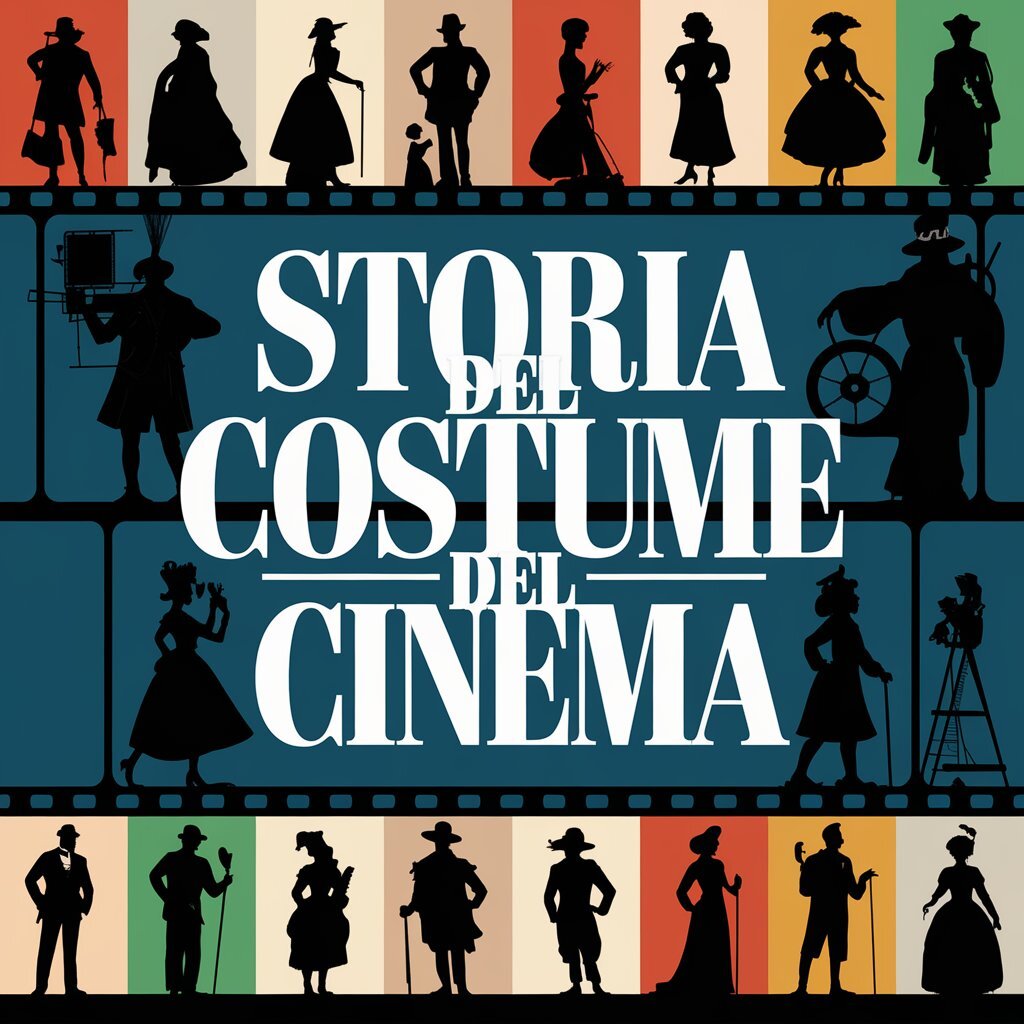
Chronology
Silent cinema
Evolution of costume in the transition from silent to sound
Il Sonoro: The Cinema Revolution
Cigarette cards, small collectible cards distributed together with cigarette packs, were very popular in the late nineteenth century and the first half of the twentieth century. These cards depicted a wide range of subjects, including film actors and actresses, and have become valuable historical artifacts that offer us a unique glimpse into the past. Through my collection of cigarette cards, we will analyze how film costumes have evolved over the years, influencing and reflecting the fashion trends of the time.
From the first silent films to the glitzy musicals of the 1930s and 1940s, costumes have always played a central role in defining the visual identity of films. We'll explore how the costume designers worked to create outfits that were not only aesthetically pleasing, but also helped tell the story and outline the characters. In addition, we will see how the institution of the Oscar for Best Costume Design in 1948 recognized the importance of this art in the world of cinema.
In the eloquent silence of the cinemas of the early twentieth century, a new artistic medium came to life. Silent films, with their black and white sequences, offered viewers stories told without words, where every gesture, every expression and every costume had the power to convey emotions and narrative. In this visual universe, costumes were not mere garments, but narrative tools that delineated the character and social status of the characters. Actors often brought their own clothes from home, adding a touch of authenticity and personality to their roles.
These clothes, although they were in everyday use, were transformed by the magic of cinema into iconic representations of the time. A hat could indicate social status, while a worn dress could tell a story of hardship and struggle. The lack of color did not diminish the visual impact of the costumes, on the contrary, it accentuated the textures and shapes, allowing viewers to perceive and interpret the fashion and costumes of the time through shades of gray.
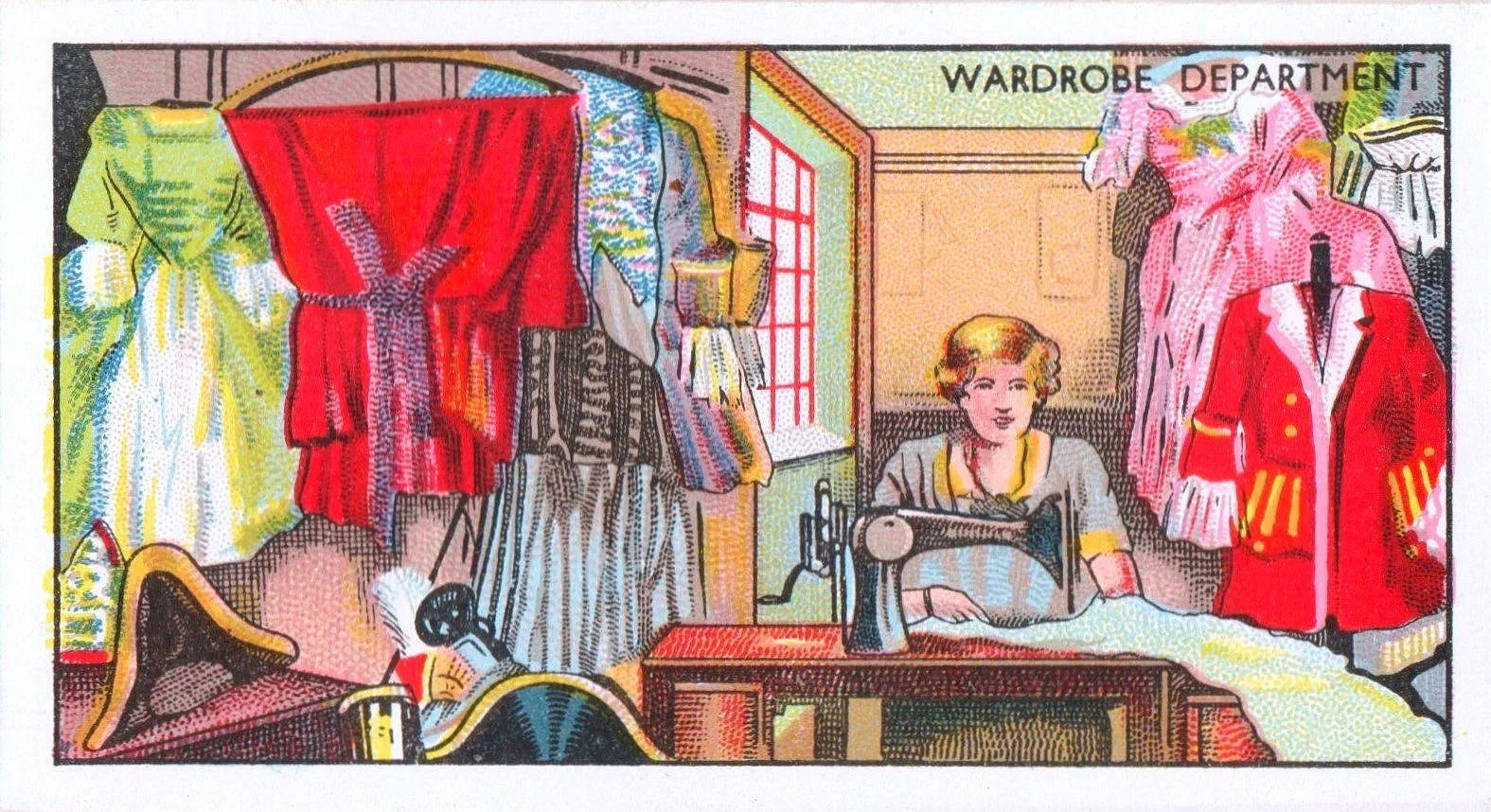
Card n.13 della serie HOW FILMS ARE MADE
B. MORRIS & SONS LTD (1934)
(Personal collection)
As time went on, costume designers began to experiment with materials, designs, and accessories, trying to capture the essence of the characters and stories they wanted to tell. This creative process led to the birth of costumes that, while faithful to the historical period represented, were enriched with a touch of theatricality and fantasy, elements that would become distinctive of subsequent cinema.
The collection of cigarette cards, with its images of actors and actresses dressed for their roles, thus becomes a visual archive of this evolution. Each card is a window into the past, a fragment of history that allows us to explore how the costumes of silent films have influenced the perception and representation of fashion and society.
Through these small but significant testimonies, we can travel back in time and observe how the costumes of silent films reflected and at the same time shaped fashion trends. From the austere and formal silhouettes of the Victorian era to the bolder and more liberated lines of the new century, film costumes marked the transition from a rigid society to a more expressive and dynamic one.
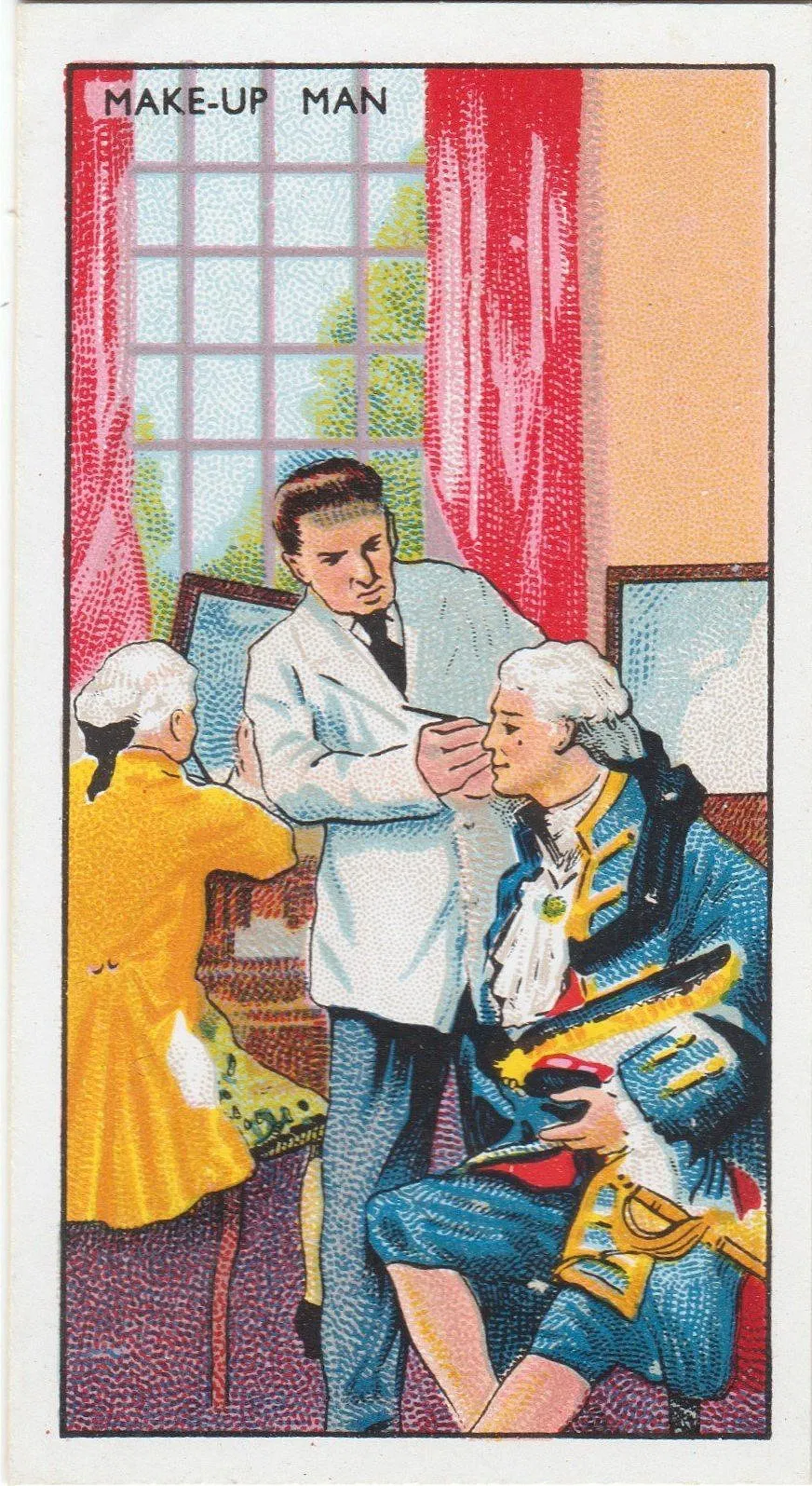
Card n.21 della serie HOW FILMS ARE MADE
B. MORRIS & SONS LTD (1934)
(Personal collection)
The first chapter of this story, therefore, opens with an image: that of an actor or actress who, in front of the dressing room mirror, wears his or her clothes, ready to transform themselves into a timeless icon in the spotlight. It is a moment of transformation, not only for those who wear the costume, but for the entire art of cinema, which from that point on will never stop evolving and enchanting.
SILENT CINEMA
Silent cinema marks a fundamental era in the history of cinema, a period in which the absence of sound dialogues gave rise to a rich and expressive visual language. Between 1915 and 1927, cinema saw the birth of masterpieces that exploited costume as a primary narrative tool. In this period, the costume was not just a dress worn by the actors, but a key element that contributed to the narrative, replacing and amplifying the unspoken word.
The birth of the first films was characterized by technical and stylistic experiments, where the costume had the task of immediately defining the character, his social status, his emotions and his intentions. Films such as D.W. Griffith's "Birth of a Nation" have used costume to create an immediate distinction between characters, using colors and styles to reflect ideologies and feelings. Similarly, Robert Wiene's "The Cabinet of Dr. Caligari" made use of stylized costumes and sets to create a dreamlike and disturbing atmosphere, which helped define the genre of German expressionist cinema.
These films not only showed how costume could replace speech, but also demonstrated how it could influence the atmosphere and psychological perception of the audience. Costume in silent cinema was a language in its own right, capable of conveying complex messages and enriching the plot without the use of the voice. This allowed the directors and costume designers to explore new forms of expression, making the costume an artistic and narrative element of primary importance.
In the early years of cinema, it was often the set designers who also took care of the costumes, as in the case of "Cabiria". There were still no figures specialized exclusively in the creation of costumes.
Over time, however, the costume designer's profession became more defined and specialized.
INTOLERANCE
Among the very first films in which costume had significant importance, we can mention silent film works such as "Intolerance" (1916) by D.W. Griffith, who with his elaborate costumes helped to create an unprecedented historical immersion. Griffith's "The Birth of a Nation" (1915), despite its controversy, is also known for its use of costumes in the American Civil War era.
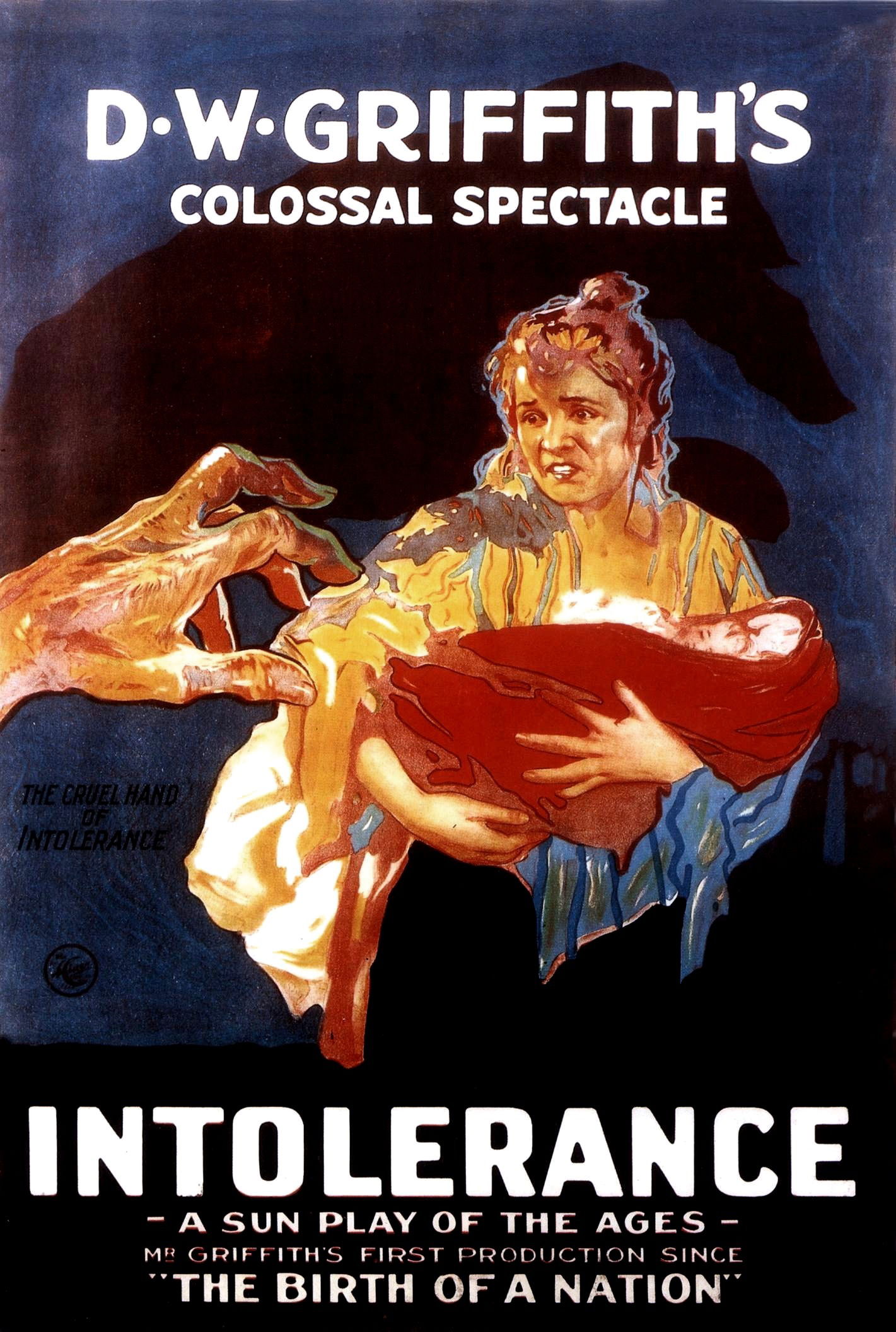
Movie Poster
The film "Intolerance" (1916), directed by David Wark Griffith, is a monumental work that spans about 2500 years of history, representing four parallel episodes: the fall of Babylon, Palestine at the time of Jesus, the massacre of the Huguenots on St. Bartholomew's night and a modern episode set in the United States. One of the key elements that contributes to making this film a visual masterpiece is the use of costumes.

CLARE WEST
Clare West was one of Hollywood's first costume designers and worked on many important films from the silent film era. West's career is often associated with 1916's "Intolerance," perhaps due to the controversy surrounding the previous film, but his first film was the monumental and controversial "The Birth of a Nation," which he worked on for two years and was released in 1915. Although technically groundbreaking, the film is known for its racist narrative, which justified unimaginable violence and praised the creation of the Ku Klux Klan. West is credited with creating the famous white hood, a distinctive symbol of the movement.
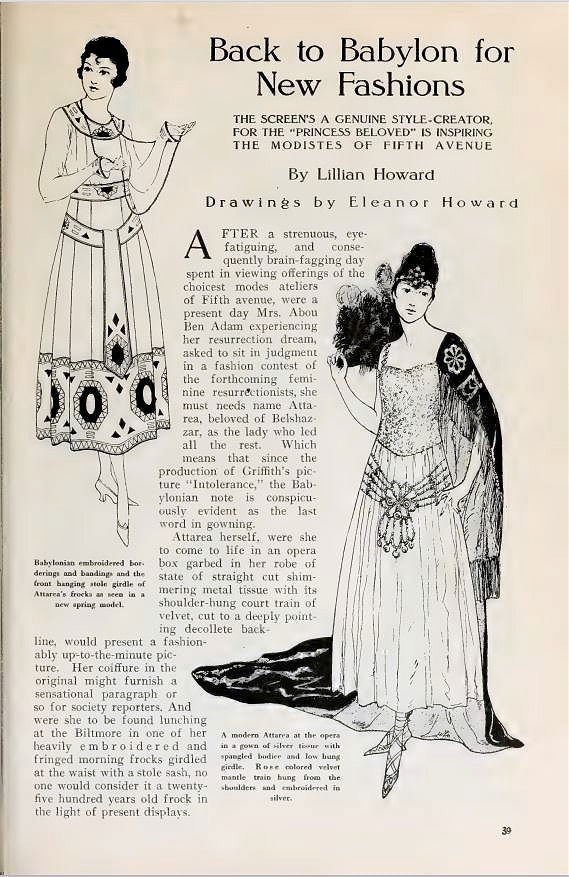
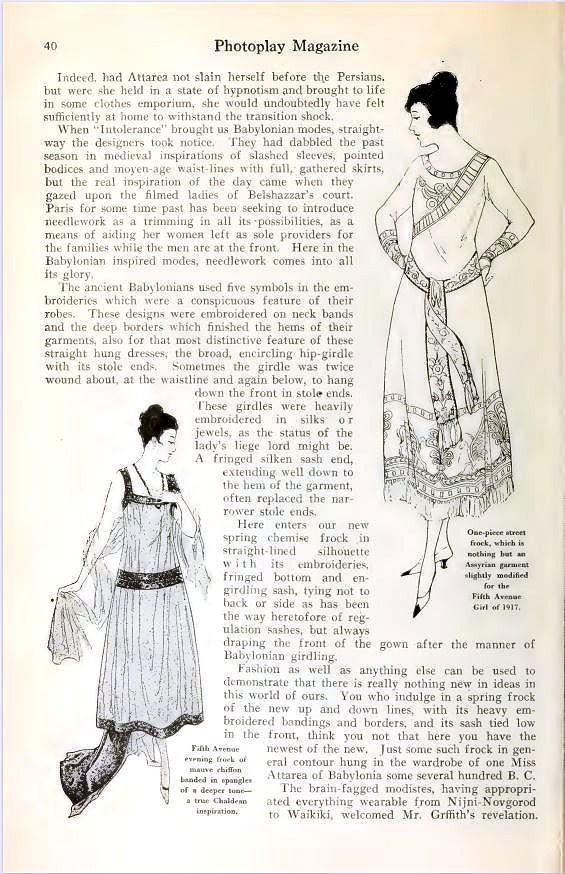
"Courtesy of the Media History Digital Library"
pages no. 39 and 40 of the magazine PHOTOPLAY - (April 1917)
"Back to Babylon for new fashions THE SCREEN IS A REAL STYLE CREATOR, BECAUSE THE "BELOVED PRINCESS" IS INSPIRING THE MILLINERS OF FIFTH AVENUE By Lillian Howard Drawings by Eleanor Howard"
His second work on "Intolerance" is particularly noteworthy for its historical accuracy and the grandeur of the costumes, which helped make the film a visual masterpiece. The Babylonian costumes in this film were so influential that they inspired trends in fashion at the time, as evidenced by a 1917 Photoplay article titled "Back to Babylon for New Fashions." West was recognized as a "Studio Designer" at the Triangle Film Corporation, and "Intolerance" is believed to have been the first Hollywood film to feature costumes designed for every cast member, including extras.
Clare West has been a key figure in the evolution of cinematic costume, using her talent to tell visual stories and to explore new forms of artistic expression. His work laid the foundation for future generations of costume designers, and his costumes remain a symbol of silent film innovation and creativity.
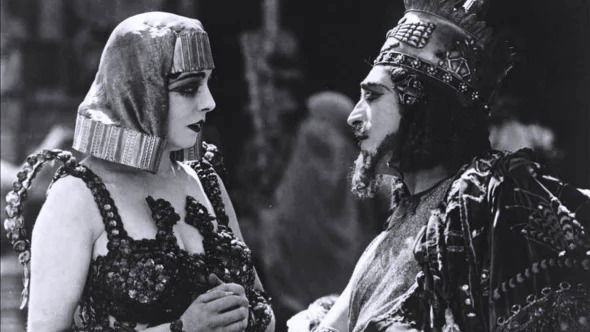
Scene from the film
The costumes in "Intolerance" are crucial to create a sense of authenticity and to transport the viewer through the different historical eras depicted in the film. Each episode requires an accurate historical reconstruction, and costumes play a crucial role in this process. For example, Babylonian costumes are inspired by archaeological finds and artistic representations of the time, helping to create a vivid and realistic image of Babylonian civilization.
Costumes help define characters and communicate important information about them without the need for dialogue. In a silent film like "Intolerance", this aspect is particularly important. For example, the costumes of characters of high social status are richly decorated and made of fine materials, while those of lower-class characters are simpler and more functional. This visual contrast helps the viewer immediately understand the role and social status of the characters. Griffith uses costumes to emphasize the film's themes, such as intolerance and the struggle for survival. For example, those of the oppressed characters are often dark colors and raw fabrics, while those of the oppressors are bright and opulent. This use of color and texture helps to emphasize the power dynamics and social tensions present in the film.
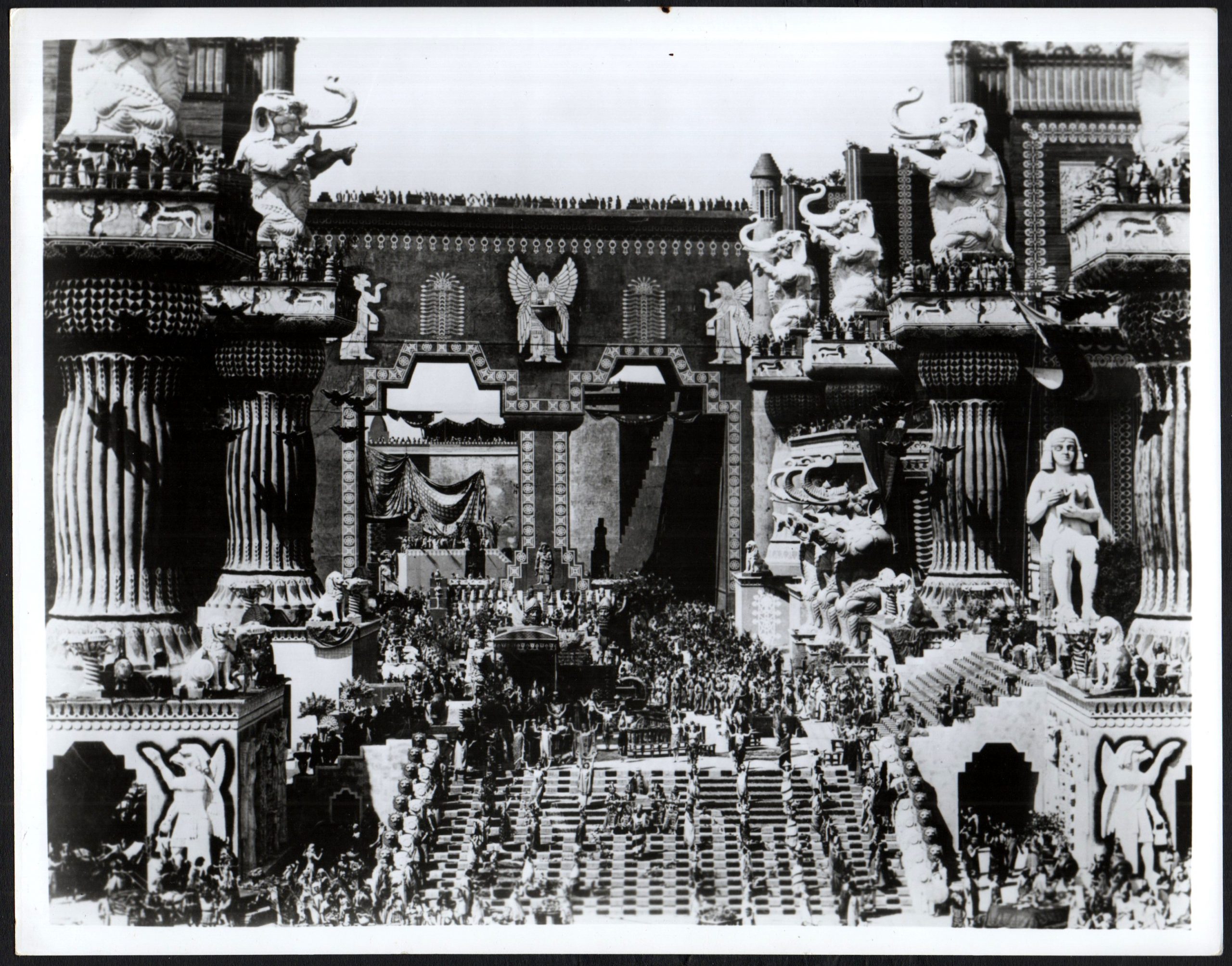
Scene from the film
"Intolerance" is known for its grandiose sets and elaborate costumes. With over 5,000 costumes and 7,000 extras, the film represents a triumph of cinematic craftsmanship. The costumes help to create a stunning visual impact, making each scene a work of art in its own right. The attention to detail in the costumes helps to create an immersive experience for the viewer, transporting them to distant worlds and past times.
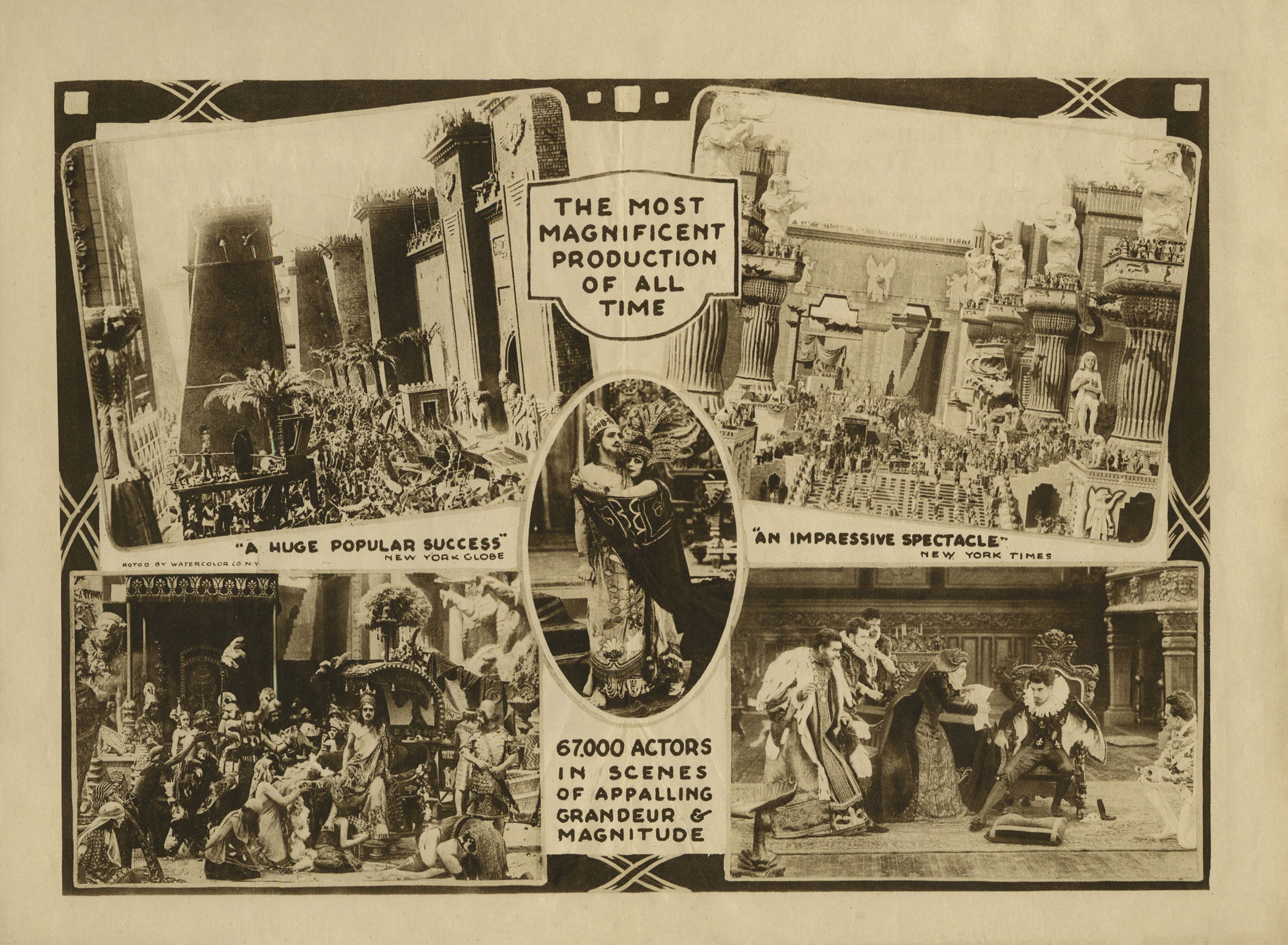
Movie Poster
The costumes in "Intolerance" are a fundamental element that contributes to the greatness of the film. They not only help to create a sense of historical authenticity, but also to characterize characters, emphasize themes, and create lasting visual impact. The legacy of "Intolerance" lives on, influencing contemporary film and television.
CLEOPATRA
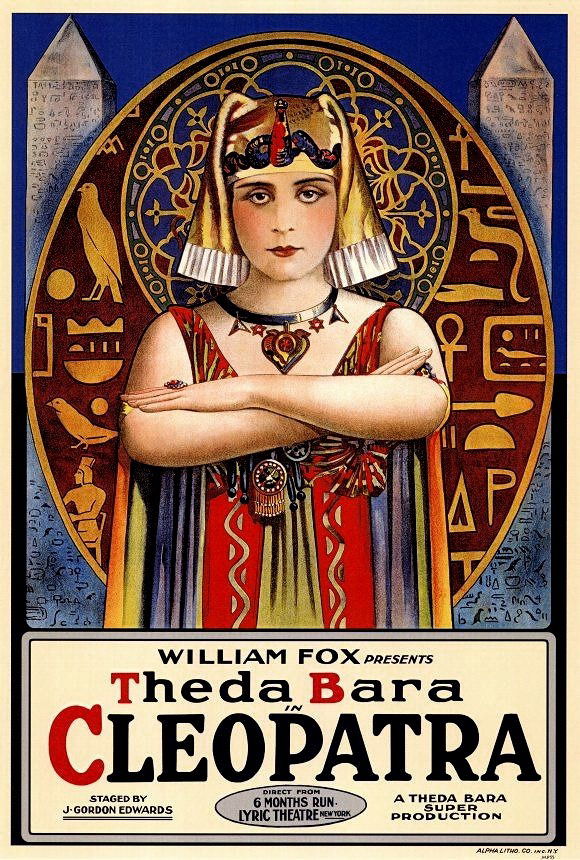
MOVIE POSTER
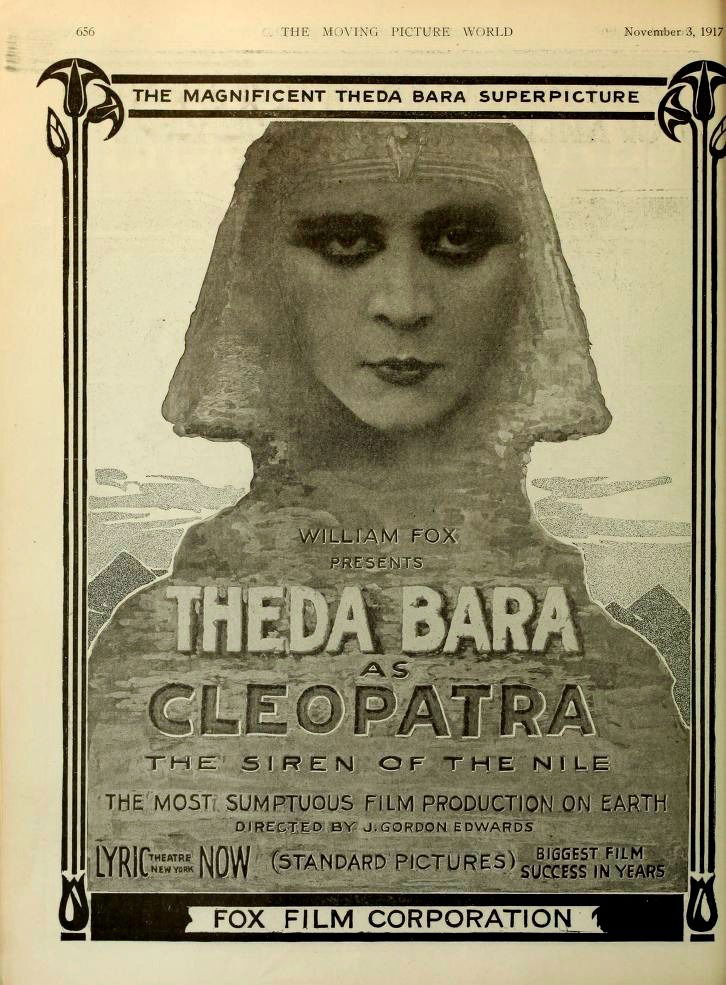
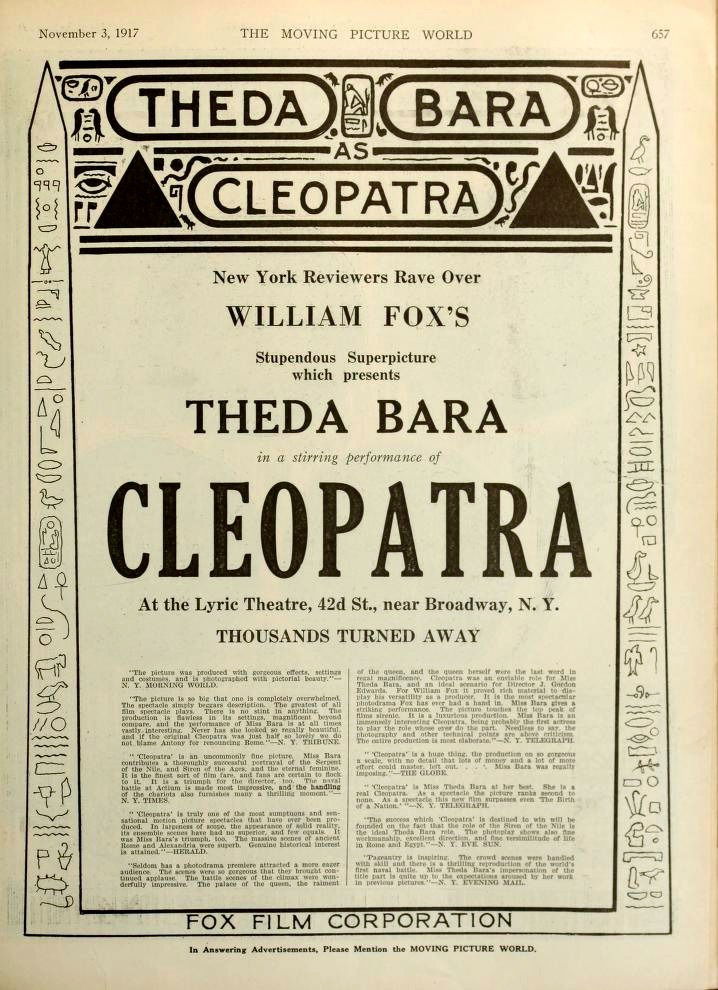
"Courtesy of the Media History Digital Library"
Pages 656-657 of THE MOVING PICTURE WORLD MAGAZINE (November 3, 1917)
THEDA BARA AS CLEOPATRA
New York reviewers praise WILLIAM FOX's gorgeous super film featuring THEDA BARA in a thrilling performance of CLEOPATRA at the Lyric Theatre, 42nd Street, near Broadway, N.Y. TOSANDS TURNED AWAY.
"The film was produced with stunning effects, sets and costumes, and is a triumph of pictorial beauty." -MORNING WORLD.
"The film is great; one is completely overwhelmed. The film is a triumph of the artistry of the producer." -EVENING JOURNAL.
"Cleopatra" is immense in its scope and magnificence. It's a wonderful production." -EVENING SUN.
"Cleopatra" is an immense production. Miss Theda Bara is a Cleopatra of the most charming kind." -MORNING TELEGRAPH.
"Cleopatra" is truly one of the most extraordinary and beautiful productions ever seen on the screen." -EVENING MAIL.
FOX FILM CORPORATION
Another very important film is "Cleopatra" from 1917, a monumental undertaking that required an extraordinary commitment in the creation of the costumes, a key element for the atmosphere and authenticity of the film. The costumes, designed with a wealth of detail and impressive historical fidelity, helped to immerse viewers in ancient Egypt, a world of luxury and magnificence.
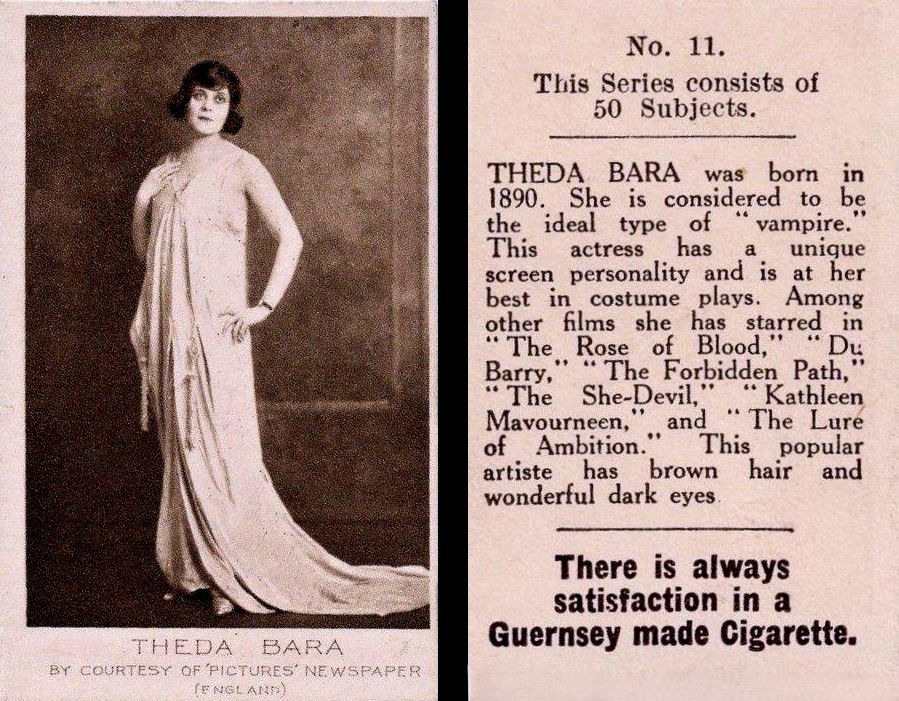
Cards n.11 of the Cinema Stars series
Bucktrout & Co. Ltd. (1923)
(Personal collection)
Theda Bara, as Queen Cleopatra, wore clothes that not only reflected the style and fashion of the time but were also loaded with symbolism and meaning. Each costume was a work of art, made of precious fabrics and elaborate decorations, reflecting the character's royal status and seductive power.
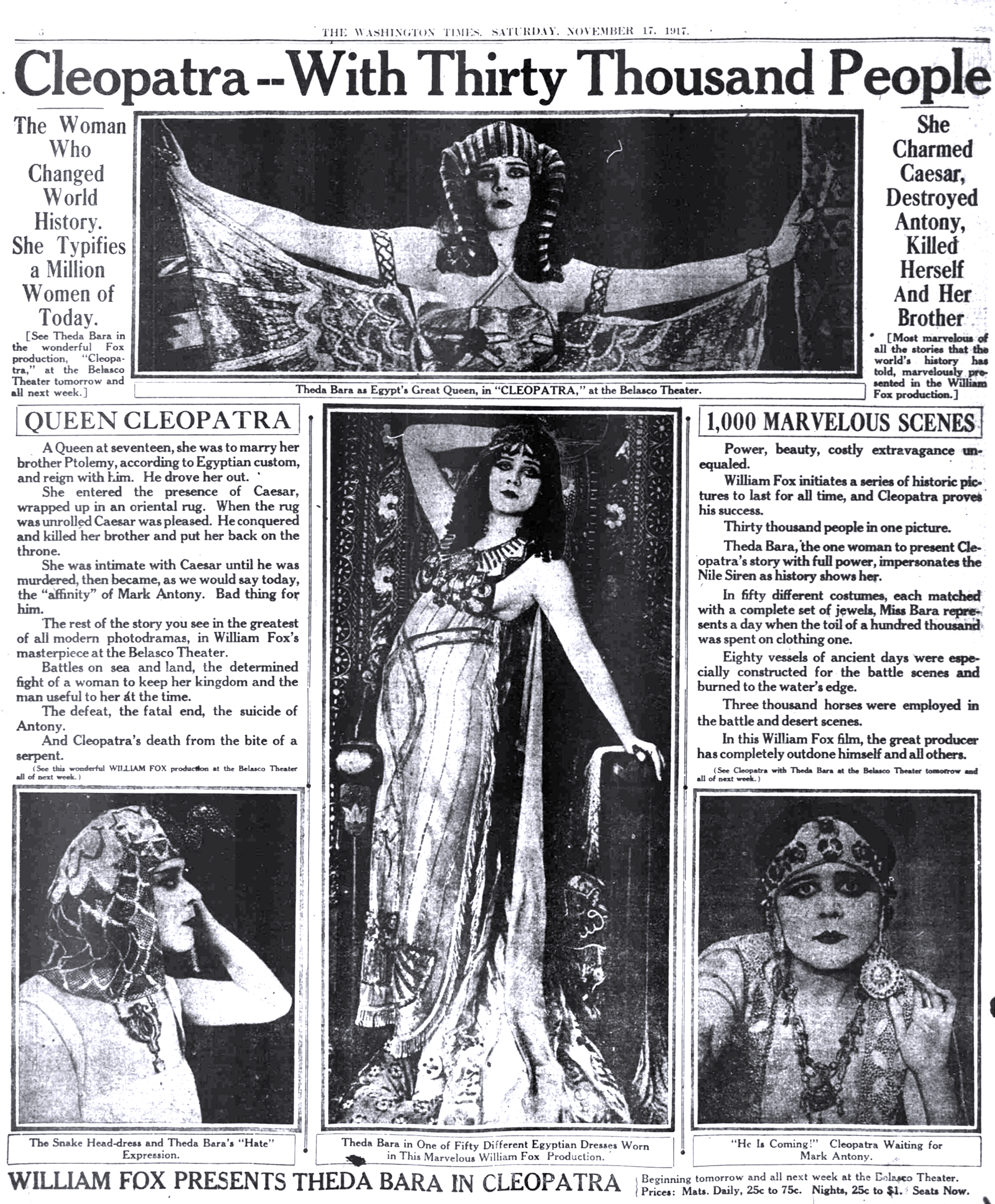
"Wikipedia"
Article taken from - The Washington Times (November 1917)
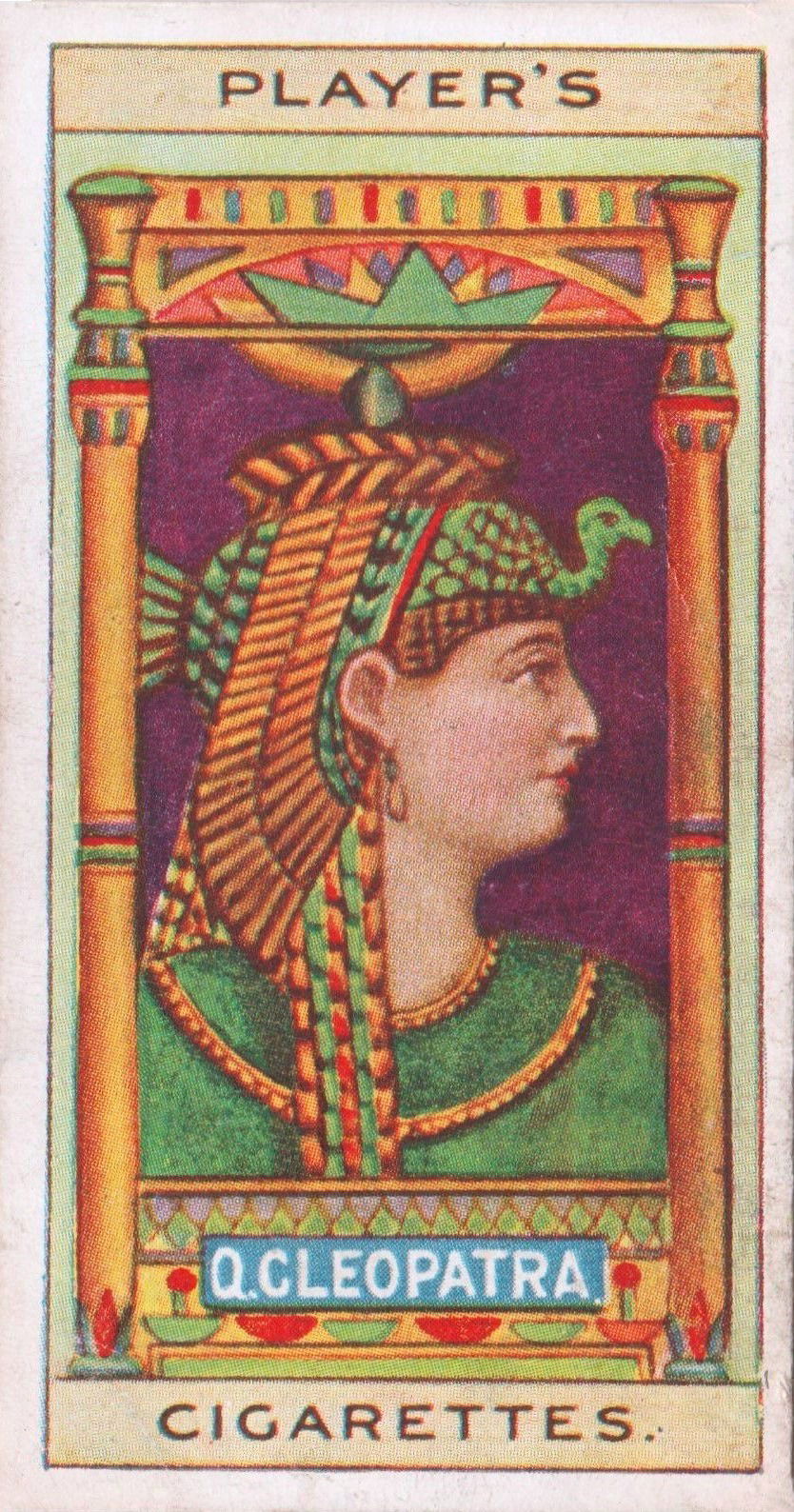
Card n.9 - EGYPTIAN KINGS & QUEENS AND CLASSICAL DEITIES
JHON PLAYER & SONS (1912)
(Personal collection)
The challenge of visually depicting Cleopatra's story was met with meticulous attention to detail. Theda Bara's stage outfits were designed to capture the essence of a queen who used her image and style to exert influence and power. The costume designers worked tirelessly to create a variety of looks that conveyed the complexity of the character: from divine queen to mortal seductress, every aspect of Cleopatra was explored through clothing.
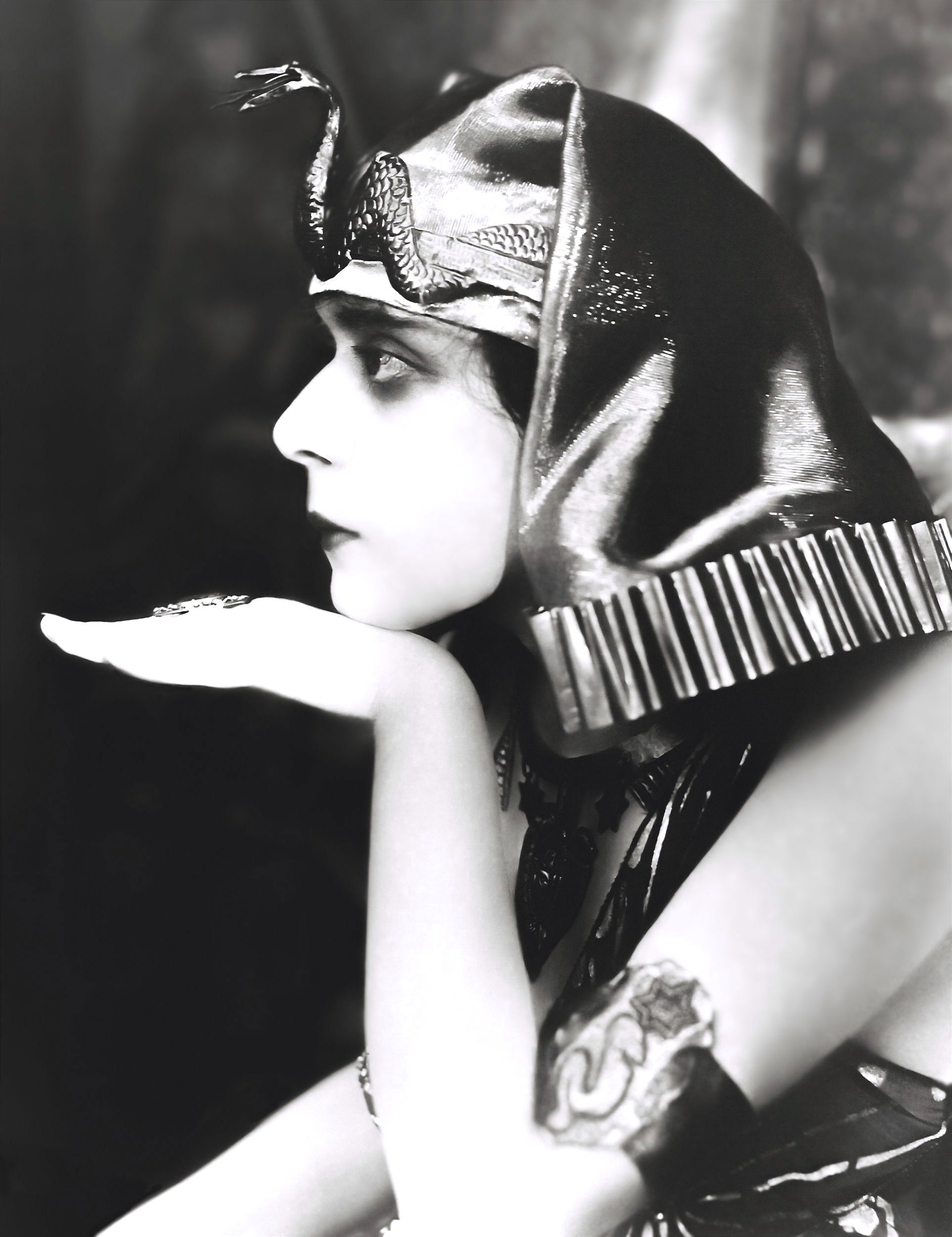
THEDA BARA
The process of creating the costumes was not only an exercise in style, but also an accurate historical research. The clothes had to be faithful to the era represented, while maintaining a touch of modernity that made them appealing to the public of the time. This required a deep understanding of the history and culture of ancient Egypt, as well as the fashion trends of 1917. The result was a perfect balance between historical authenticity and contemporary appeal, which has left an indelible mark on the history of cinematic costume.
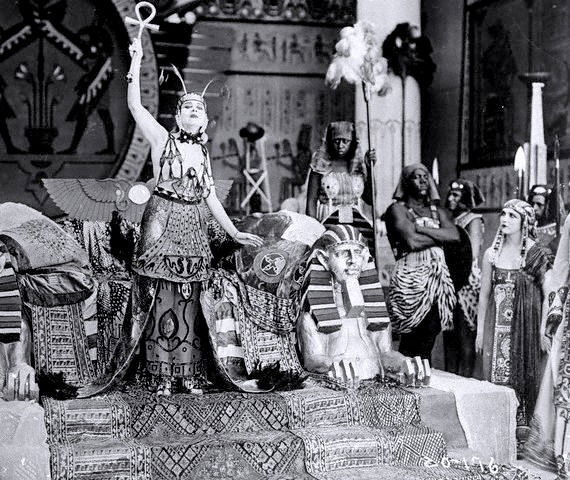
Scene from the film
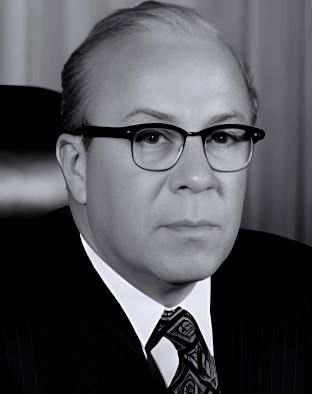
George James Hopkins
George James Hopkins, born in Pasadena on March 23, 1896 and died in Los Angeles on February 11, 1985, was an icon of set design and costume design in the world of American cinema. His career, which began in 1917 and ended in 1975, was marked by exceptional talent and dedication that left an indelible mark on the film industry.
After studying design, Hopkins ventured into theater as a production designer, and then made the big leap into film with the Fox Film Corporation. Collaborating with director J. Gordon Edwards, Hopkins showcased his talents in "Cleopatra" (1917), taking care of both the sets and the costumes, demonstrating a versatility and artistic vision that would distinguish him throughout his life.
His skill did not go unnoticed, as evidenced by the 13 Oscar nominations and four wins for best production design. Among the films that earned him the coveted statuette are masterpieces such as "A Streetcar Named Desire" (1951), "My Fair Lady" (1964), "Who's Afraid of Virginia Woolf?" (1966) and "Hello, Dolly!" (1969), works that defined the aesthetics of an era and continue to influence today's designers.
In addition to these, Hopkins worked on other major films such as "East of Eden" (1955) and "Dial M for Murder" (1954), demonstrating a unique ability to capture the visual essence necessary to bring memorable stories to the screen. His personal life was no less interesting, with his name emerging during the investigation into the murder of director William Desmond Taylor, one of Hollywood's most egregious scandals in the 1920s.
George James Hopkins was a true innovator who was able to interpret and transform the vision of filmmakers into unforgettable images, leaving a legacy that continues to inspire and be celebrated in the world of cinema. His story is that of a man who, with scissors, fabrics and sketches, wrote important pages in the history of cinema, demonstrating that behind every great film there is always a great set designer and in this case also a great costume designer.
MALE and FEMALE
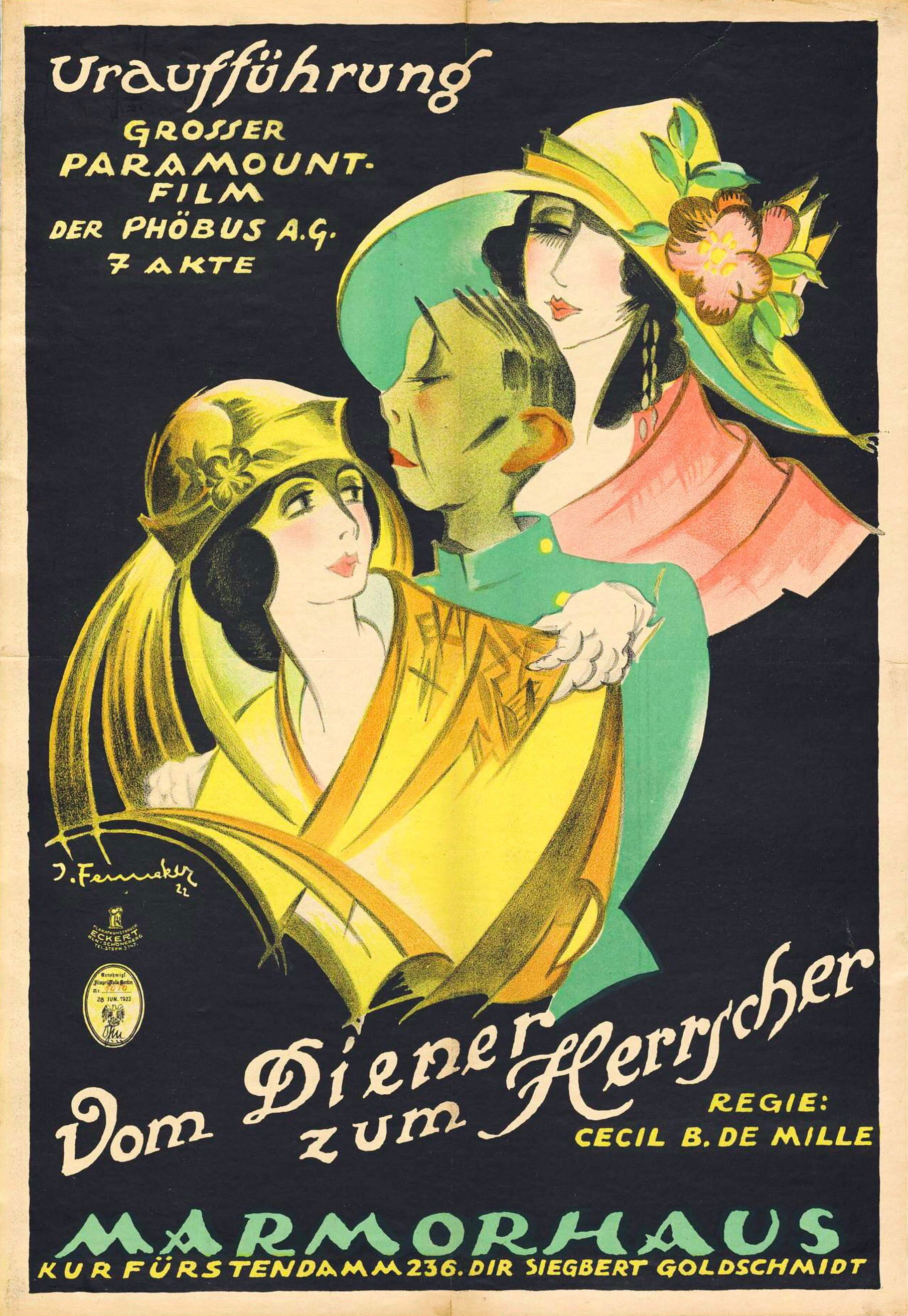
German Movie Poster
Returning to Clare West, her collaboration with Cecil B. DeMille represented a turning point in the art of cinematic costume. West, with his innovative talent and artistic vision, was able to interpret and transform DeMille's ideas into costumes that dragged the viewer directly into the golden age of Hollywood. Their synergy made it possible to create a visual aesthetic that not only defined the characters but also the atmosphere and tone of the scenes, contributing significantly to the narrative and emotional impact of the film. West's costumes, in fact, were not simple clothes, but woven narratives that spoke of status, power and psychology of the characters, enriching the complexity of the story told by DeMille. This partnership has set new standards for costume design, influencing generations of costume designers and proving that costumes are as integral to storytelling as the script itself. The importance of costumes in cinema is a crucial aspect that goes beyond mere aesthetics, becoming a fundamental narrative element.
In the 1919 film "Male and Female", costume takes on a prominent role, serving as a visual catalyst for storytelling and for exploring gender and class dynamics. The costumes, designed with a mastery that reflects the opulence and complexity of the era, not only adorn the characters but also speak of their identities and the social context in which they move. The film, which is based on the comedy "The Admirable Crichton" by J.M. Barrie, presents a story of survival and reversal of social roles, where costumes become a key element to understand the change of the characters and their psychological evolution.
The choice of fabrics, sartorial details and accessories used in the costumes of "Male and Female" are a faithful reflection of the fashion trends of 1919, a period characterized by refined elegance and a sense of freedom and practicality that emerged after the First World War. The women, represented in the film by Gloria Swanson in the role of Lady Mary Loam, wear clothes that express a new femininity, with softer lines and silhouettes that move away from the rigid styles of the previous decade. Tea dresses, silk and velvet dresses, and costumes inspired by ancient Babylon are examples of how the costume in the film is used to transport the viewer to another time and place, creating an immersive experience.
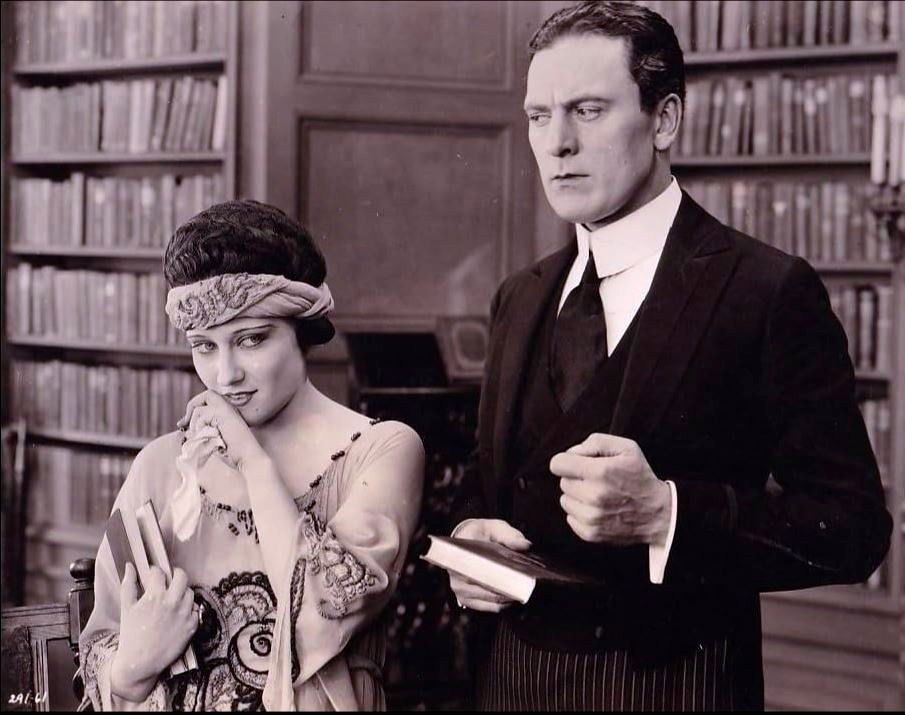
Gloria Swanson and Thomas Meighan in una scena tratta dal film
Thomas Meighan, in the role of the butler Crichton, through his costume, embodies the transition from servant to leader, symbolizing the reversal of social roles that takes place on the desert island. His clothing, initially formal and respectful of conventions, transforms into something more practical and suitable for life on the island, reflecting his adaptation and his rise to a position of leadership.
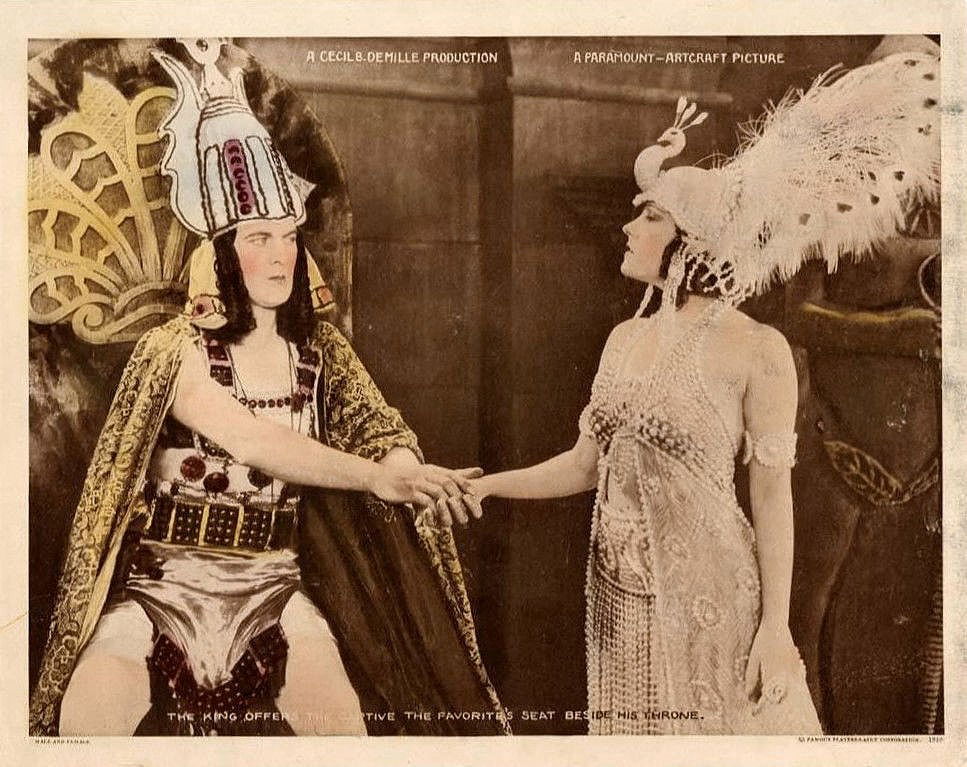
Thomas Meighan and Gloria Swanson in Male and Female (1919)
Lobby Card (1919)
The scenes set in ancient Babylon are particularly notable for their costume designs, which incorporate elements of luxury and exotic details, helping to create a sense of grandeur and drama. These costumes, along with Gloria Swanson's famous bathroom scene, not only demonstrate DeMille's ability to use the costume to enrich the narrative, but also his ability to leverage the costume as a tool to explore deeper themes such as power, seduction, and vulnerability.
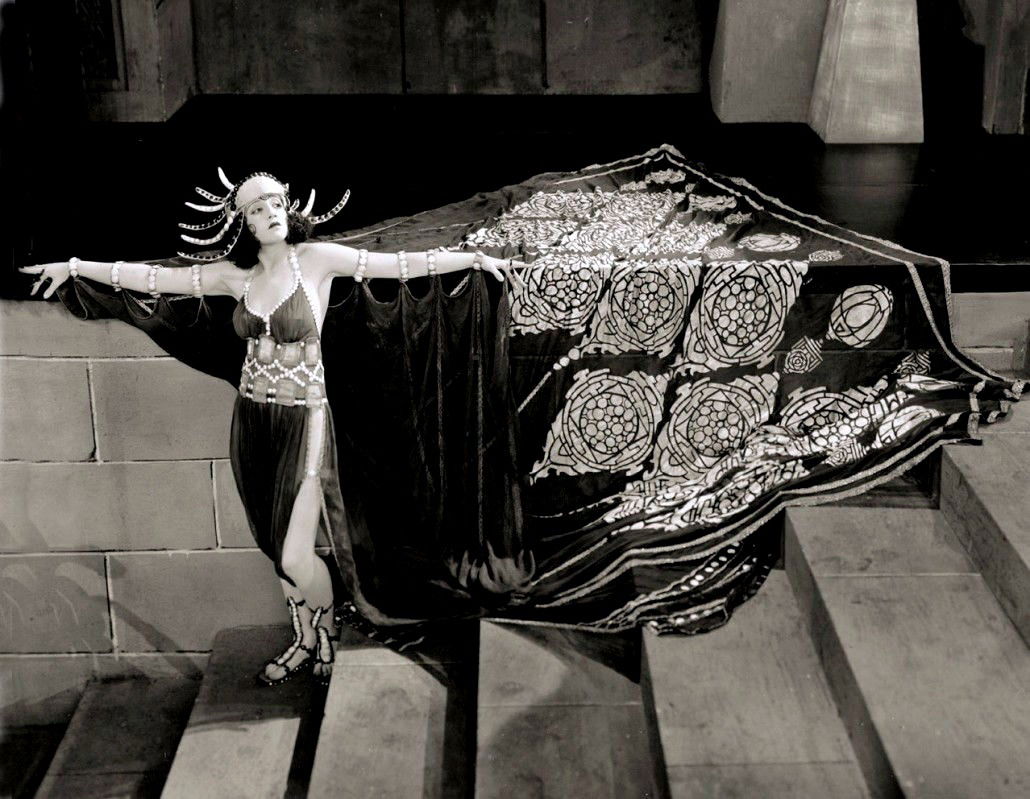
Bebe Daniels wearing the costume created by Mitchell Leisen
In the 1919 film "Male and Female", in addition to Clare West, two other costume designers contributed to the creation of the costumes: Paul Iribe and Mitchell Leisen. These artists worked together to realize Cecil B. DeMille's visions, creating outfits that not only captured the essence of the characters but also helped define the visual tone of the film.
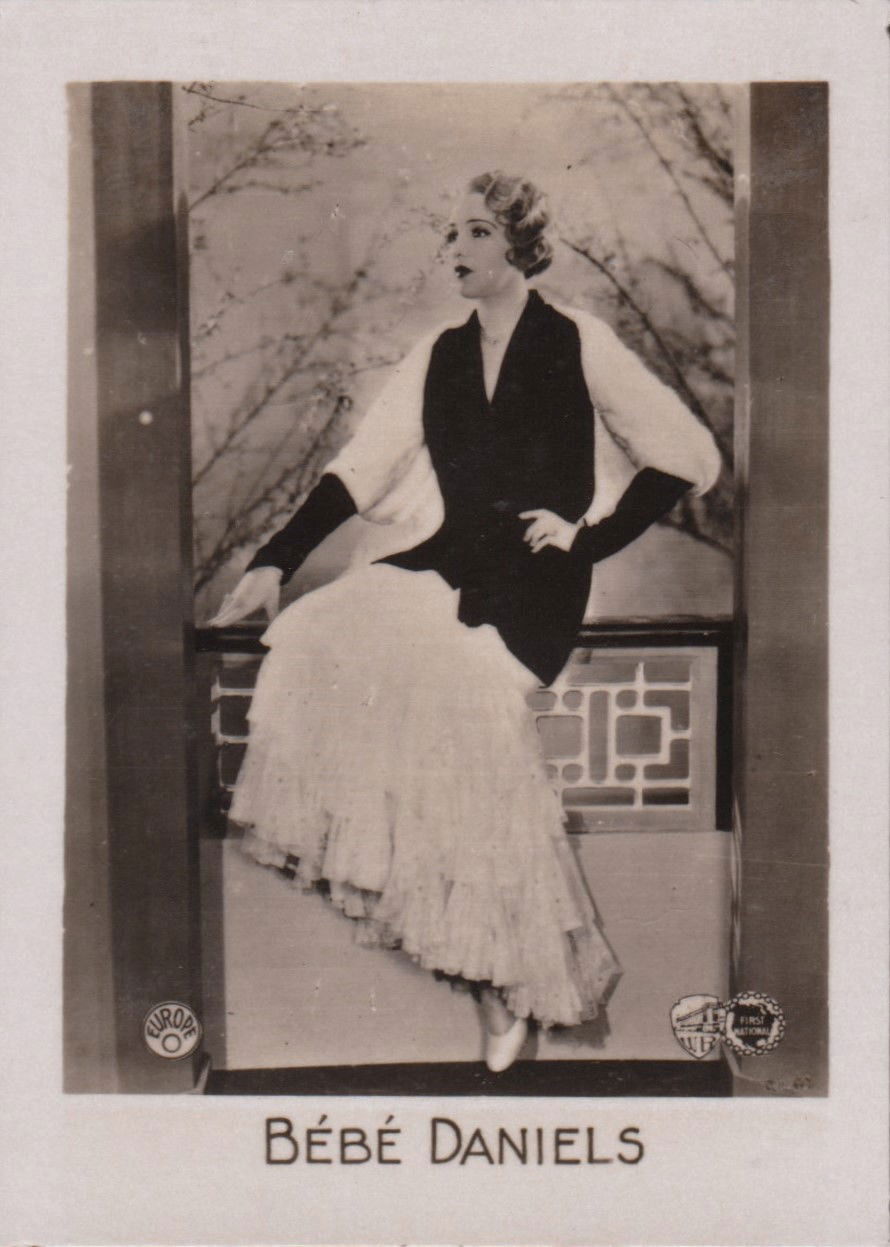
Card n. 248 ORAMI SECOND SERIES
(Personal collection)
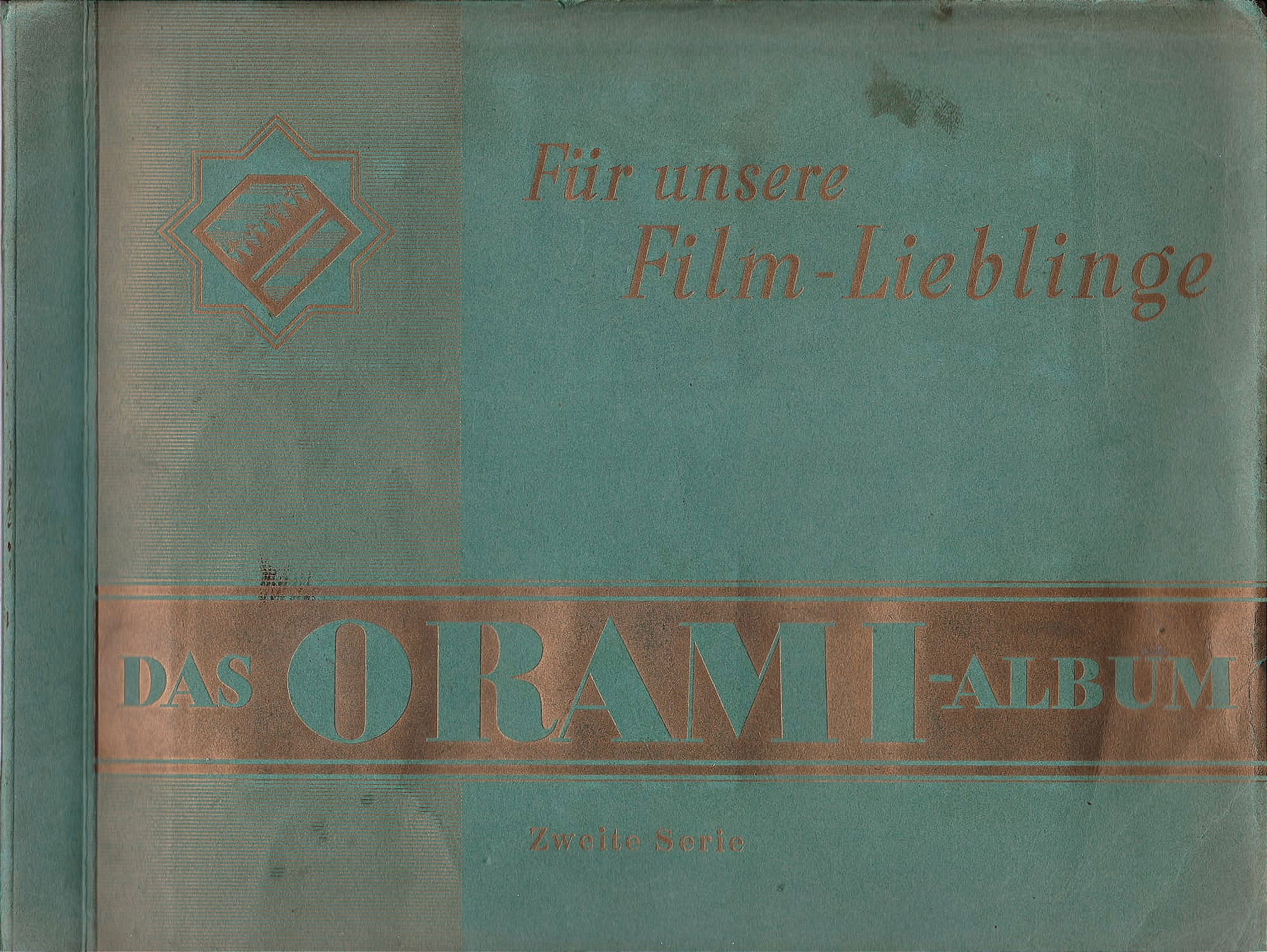
Bebe Daniels' costumes, in particular, were noted for their rich and detailed design, which reflected her position within the story. The collaboration between these talents has made it possible to bring to the screen a faithful representation of the opulence and drama of the time, with costumes that have become iconic in the history of cinema
The costume in "Male and Female" is not just an ornament, but a means through which the tensions and aspirations of the characters are expressed, becoming an essential element for the understanding of the film. The attention to detail and the richness of the materials used in the costumes speak of the mastery of the costume designers of the time and their ability to use clothing as an extension of the personality of the characters and their story.
"Male and Female" is an extraordinary example of how costume can be employed in cinema to enrich storytelling and to provide an in-depth look at social conventions and gender dynamics. The film, through its costumes, offers a cross-section of the society of the time and, at the same time, a reflection on human nature and its contradictions.
THE AFFAIRS OF ANATOL
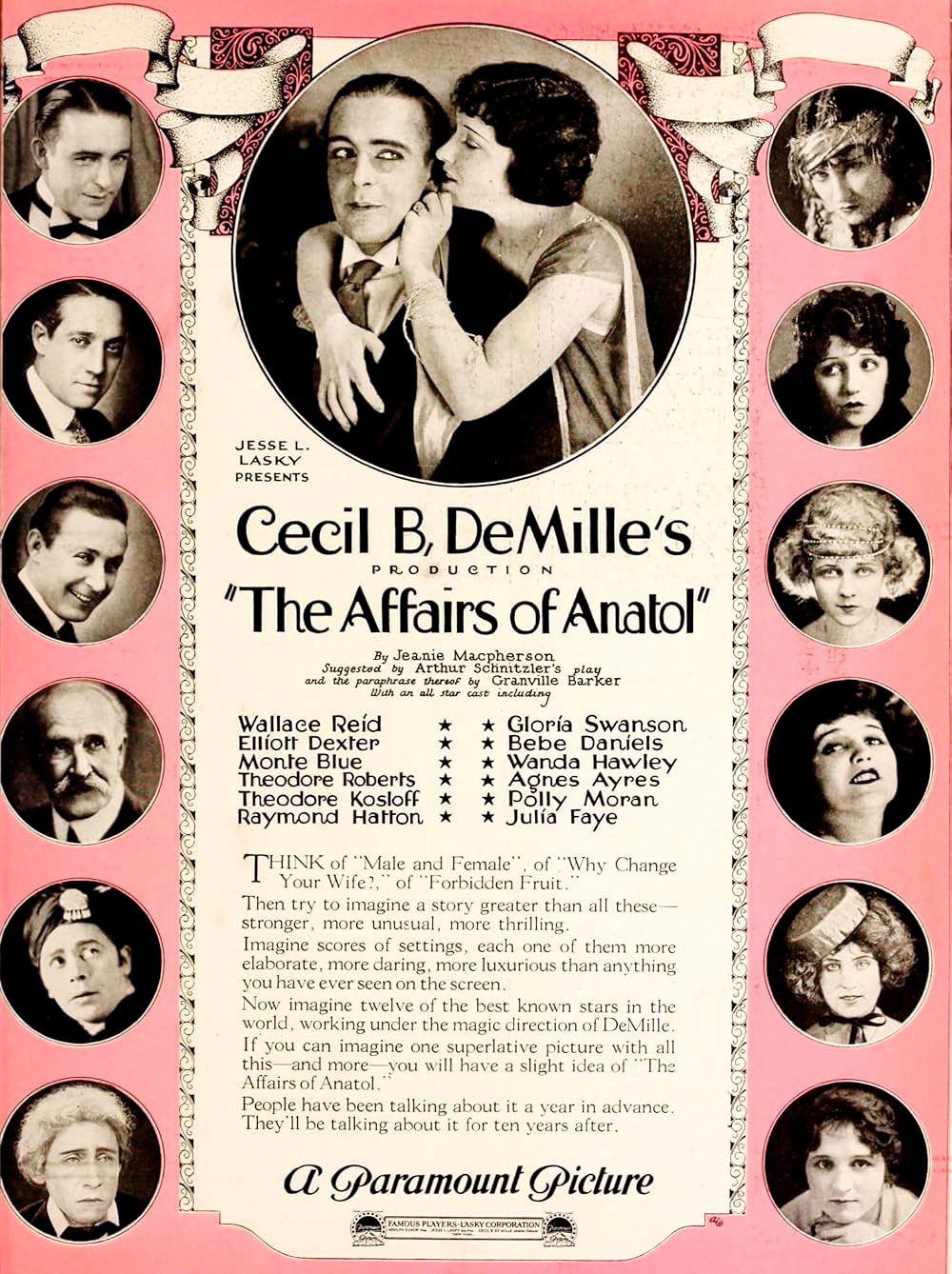
Movie Poster
The plot follows Anatol Spencer, a man dissatisfied with his marriage who seeks adventures and new experiences. Throughout the film, Anatol comes across various characters and situations that test his morality and beliefs. In the end, Anatol and his wife Vivian decide to leave social life to retire to the countryside, looking for a simpler and more authentic life.
"The Affairs of Anatol" remains a silent film classic, praised not only for its intriguing plot but also for its exceptional cast and magnificent costumes that perfectly capture the essence of the era. The clothes in the film are clearly inspired by the style of Erté, the Russian-born set designer and illustrator. Although Erté did not go to Hollywood in an official capacity until 1925, West's clothes were similar to his illustrations, particularly in the use of black velvet and pearls. This style greatly influenced the film's aesthetic, helping to create an atmosphere of luxury and decadence. The film also employed several methods of coloring, including coloring, toning, and the Handschiegl/Wyckoff process. This color transfer lithography process, developed by Max Handschiegl with the help of DeMille, Alvin Wyckoff, and Loren Taylor, made visually stunning and stunning coloring effects.
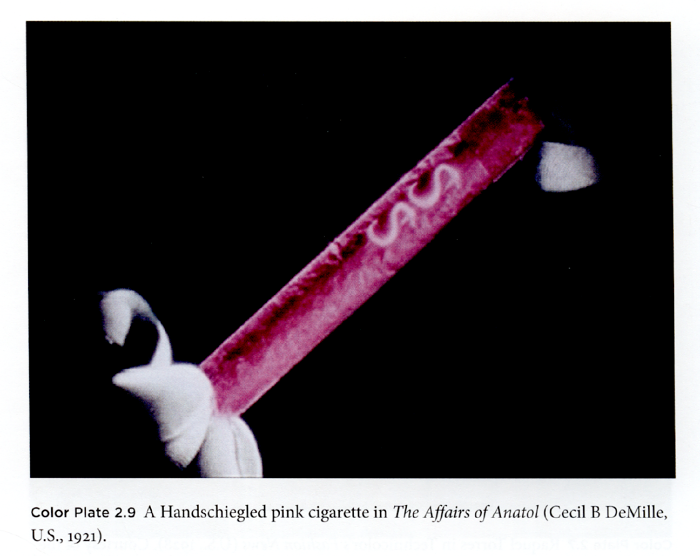
Fischer, Lucy (2017): Design Cinema. Art Nouveau, Modernism and History of Cinema. New York: Columbia University Press.
An example is the pink monogrammed cigarette, colored with the Handschiegl method, which added a touch of modernity and sophistication to the film
In the 1921 film "The Affairs of Anatol", directed by the visionary Cecil B. DeMille, costumes are not only a reflection of the opulence and glamour of the high society of the time, but also a means through which the personality and social status of the characters are expressed.

Scene from the film
Gloria Swanson, in the title role, was dressed in clothes that embody elegance and sophistication, enriched with details such as pearls and lace, which not only enhanced her status as a socialite but also her stage presence. These costumes were not simple garments, but real storytelling tools, which helped to convey subtle nuances of the characters' character and psychology. DeMille, known for his meticulous attention to detail, invested significant resources to ensure that each costume was perfectly aligned with the film's artistic vision.
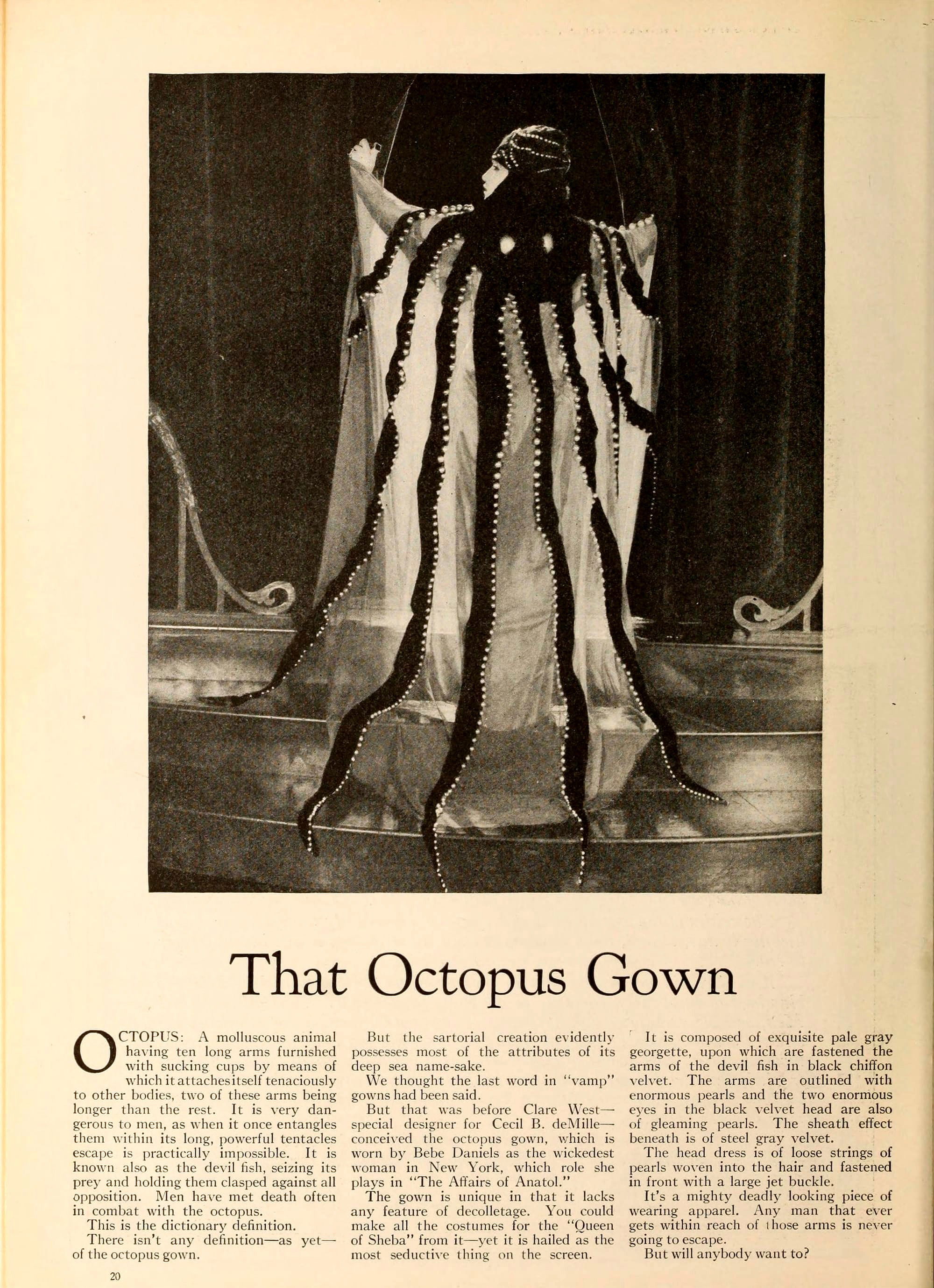
"Courtesy of the Media History Digital Library"
Pag.29 periodico Photoplay (Jul - Dec 1921)
OCTOPUS: A mollusk animal with ten long arms equipped with suction cups, thanks to which it sticks tenaciously to other bodies, two of these arms are longer than the others. It is very dangerous for humans, as once it traps them with its long, powerful tentacles, escape is practically impossible. It is also known as devilfish, catching its prey and holding it tight against all opposition. Men have often met death in octopus combat. This is the dictionary definition. There is still no definition of the octopus dress.
But the sartorial creation evidently possesses most of the characteristics of its deep-sea namesake. We thought the last word on "vamp" clothes had been said. But that was before Clare West, a special stylist for Cecil B. DeMille, conceived the octopus dress, worn by Bebe Daniels as the most evil woman in New York, a role she plays in "The Affairs of Anatol." The dress is unique in that it lacks any cleavage features. You could make all the costumes for the "Queen of Sheba" from it, and yet it is considered the most seductive thing on screen. It is composed of a delicate light gray georgette, on which the arms of the devil fish are fixed in black chiffon velvet. The arms are outlined with huge pearls and the two huge eyes in the black velvet head are also of shiny pearls. The sheath effect underneath is steel grey velvet. The headdress is made up of loose strands of pearls woven into the hair and secured in front with a large jet buckle. It's a truly deadly-looking piece of clothing. Any man who approaches those arms will never be able to escape. But will anyone want to do it?
The choice not to include an octopus costume for Gloria Swanson, but rather for another character played by Bebe Daniels, demonstrates an awareness of symbolism and visual impact. This decision made it possible to create a contrast between the characters and to further emphasize the differences between their personalities and roles within the narrative.
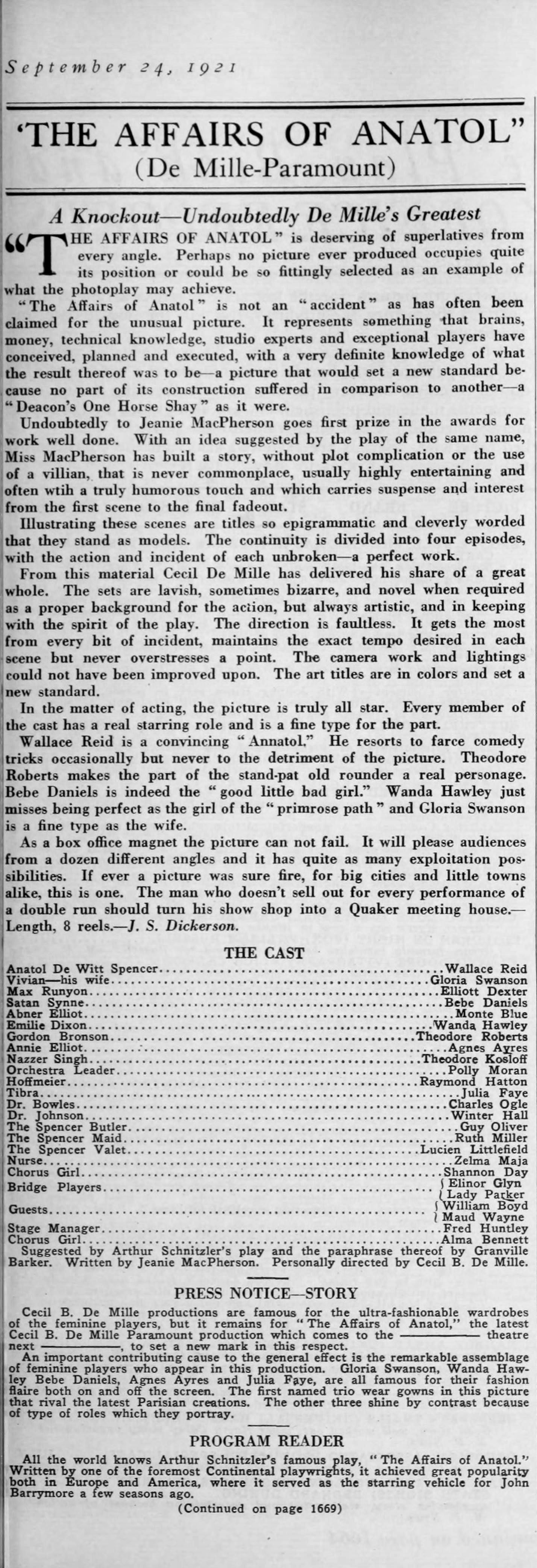
"Courtesy of the Media History Digital Library"
Excerpt from the periodical Motion picture news (Sept-Oct 1921)
"The Affairs of Anatol" (USA 1921, Cecil B. DeMille) is a film that deserves superlatives from every angle. Perhaps no other film produced occupies a similar position or could be selected so adequately as an example of what photodrama can achieve. "The Affairs of Anatol" is not an "accident" as has often been claimed for this unusual film. It represents something that brains, money, technical knowledge, studio experts and exceptional actors conceived, planned and executed, with a very precise knowledge of what the result would be: a film that would set a new standard because no part of its construction suffered in comparison to another - a sort of "Deacon's One Horse Shay". *
Undoubtedly, Jeanie MacPherson goes to the top prize for a job well done. With an idea suggested by the play of the same name, Miss MacPherson has built a story, without plot complications or the use of a villain, that is never trivial, usually highly funny and often with a truly humorous touch and that brings suspense and interest from the first scene until the final fade.
Illustrating these scenes are titles so epigrammatic and cleverly worded that they stand as models. The continuity is divided into four episodes, with the action and incidents of each uninterrupted - a perfect job.
From this material, Cecil DeMille delivered his share of a great whole. The sets are sumptuous, sometimes bizarre, and new when required as a proper backdrop for the action, but always artistic and in keeping with the spirit of the comedy. The direction is impeccable. He gets the most out of every incident, maintains the exact pace he wants in every scene but never exaggerates a point. The work of the room and the lighting could not have been improved. The artistic titles are in color and set a new standard.
* The term "Deacon's One Horse Shay" refers to an 1858 poem written by Oliver Wendell Holmes Sr., entitled "The Deacon's Masterpiece, or The Wonderful 'One-Hoss Shay'". The poem tells the story of a carriage (shay) built so perfectly that all its parts wear out simultaneously after a hundred years of use, rather than gradually breaking down over time. This concept is used to describe something built with such precision and quality that all its components work perfectly until the end, without any part deteriorating before the others.
In the context of the film "The Affairs of Anatol", the expression is used to emphasize how every aspect of the film has been taken care of with the utmost attention to detail, resulting in a work in which no part is inferior to the others. Every element of the film, from costumes to direction, from production design to photography, contributes harmoniously to the final result, just like in Holmes' "One-Hoss Shay".
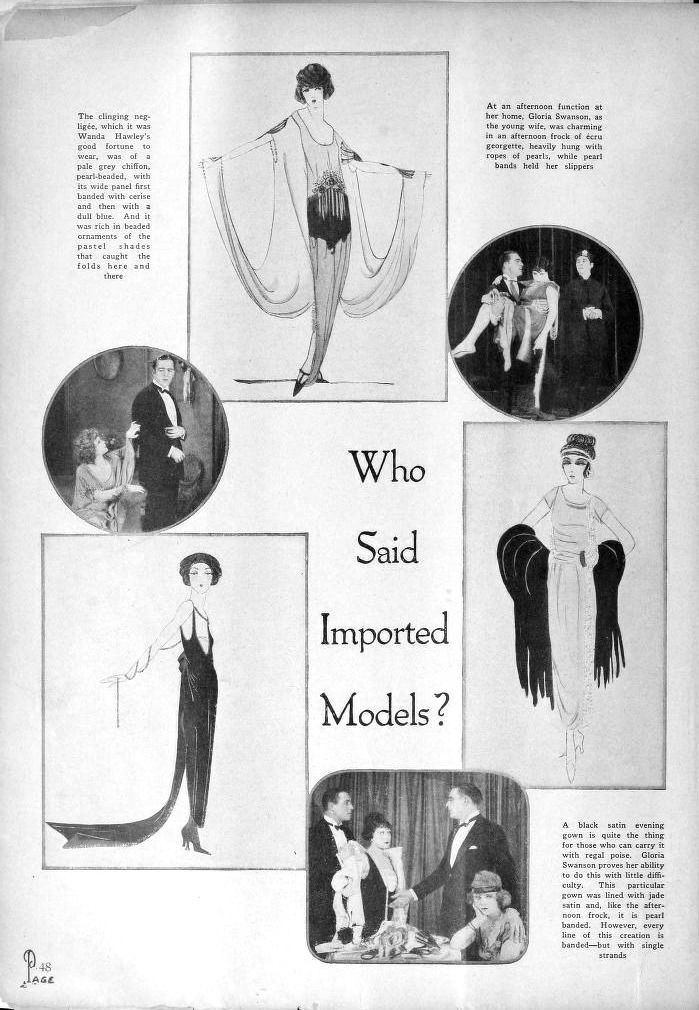
"Courtesy of the Media History Digital Library"
Pag.48 MOTION PICTURE (agosto 1921)
"The fitted negligé, which Wanda Hawley was lucky enough to wear, was light grey chiffon, embroidered with pearls, with woven panels edged with cerise and white on a matte blue. It was rich in beaded ornaments in pastel shades that caught the folds here and there.
At an afternoon event at his home, Gloria Swanson, in the role of the young wife, looked lovely in an ecru georgette afternoon gown, heavily adorned with pearl cords, while bands of pearls held her slippers.
A black satin evening dress that is perfect for those who can wear it with ease and ease. Gloria Swanson demonstrates her ability to do so with little difficulty. This particular dress was lined with jade satin and, like the afternoon dress, is edged with pearls. However, each line of this creation is embroidered, but with individual threads."
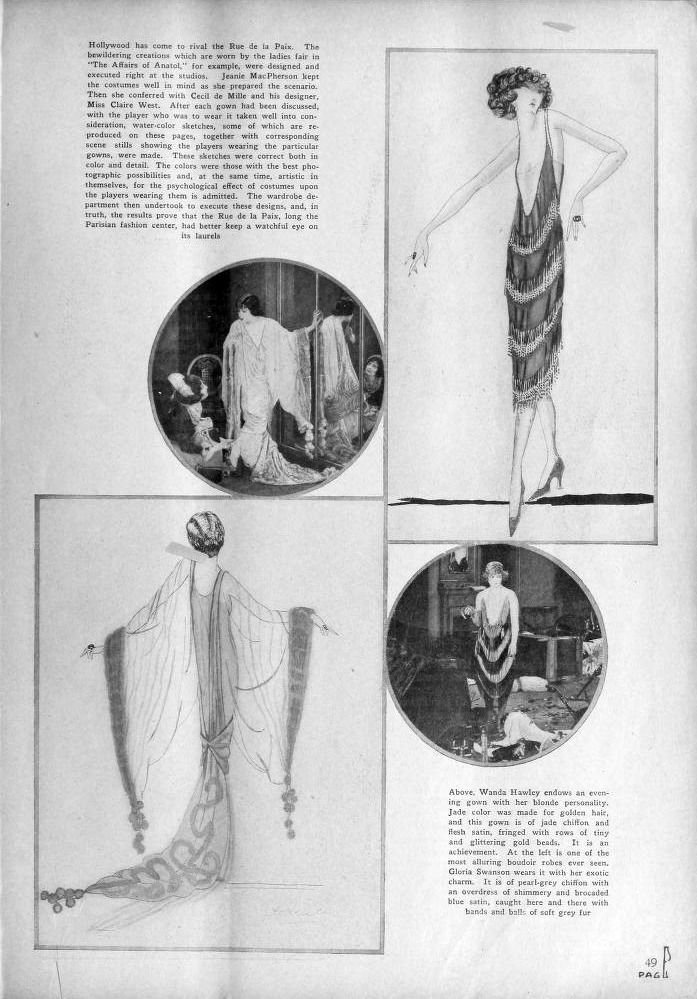
"Courtesy of the Media History Digital Library"
Pag.49 MOTION PICTURE (agosto 1921)
"Hollywood has become a rival to the Rue de la Paix. The puzzling creations worn by the ladies in 'The Affairs of Anatol', for example, were designed and made directly in the studios. Jeanie MacPherson kept the costumes in mind while preparing the script. Then he conferred with Cecil de Mille and his designer, Miss Claire West. After each dress was discussed, keeping in mind the actress who would wear it, various sketches were made, some of which are reproduced in these pages, along with the corresponding scenes showing the actresses wearing the particular dresses. The actresses were correct both in terms of color and details. The colors were the ones with the best photographic possibilities and, at the same time, artistic in themselves. The psychological effect of costumes on the actors who wear them is recognized. The wardrobe department then proceeded to make these clothes. The truth, therefore, has finally come out. The Rue de la Paix, long the center of Parisian fashion, would do better to keep an eye on its laurels.
Above, Wanda Hawley gives an evening dress with her blonde personality. The jade color was done for the golden hair, and this dress is of jade chiffon and nude satin, finished with rows of tiny, shimmering gold beads. It is a success. On the left is one of the most seductive boudoir dressing gowns ever seen. Gloria Swanson wears it with its exotic charm. It is of pearl gray chiffon, with a brocade and shimmering blue satin overcoat, captured here and there with bands and balls of soft gray fur."
"The Affairs of Anatol" is an emblematic example of how costumes in cinema are essential to build the diegetic world, enrich the narrative and develop the characters. The collaboration between Cecil B. DeMille and Clare West has left an indelible mark on the film industry, showing that costumes, when well designed, can become a memorable and distinctive aspect of a film.
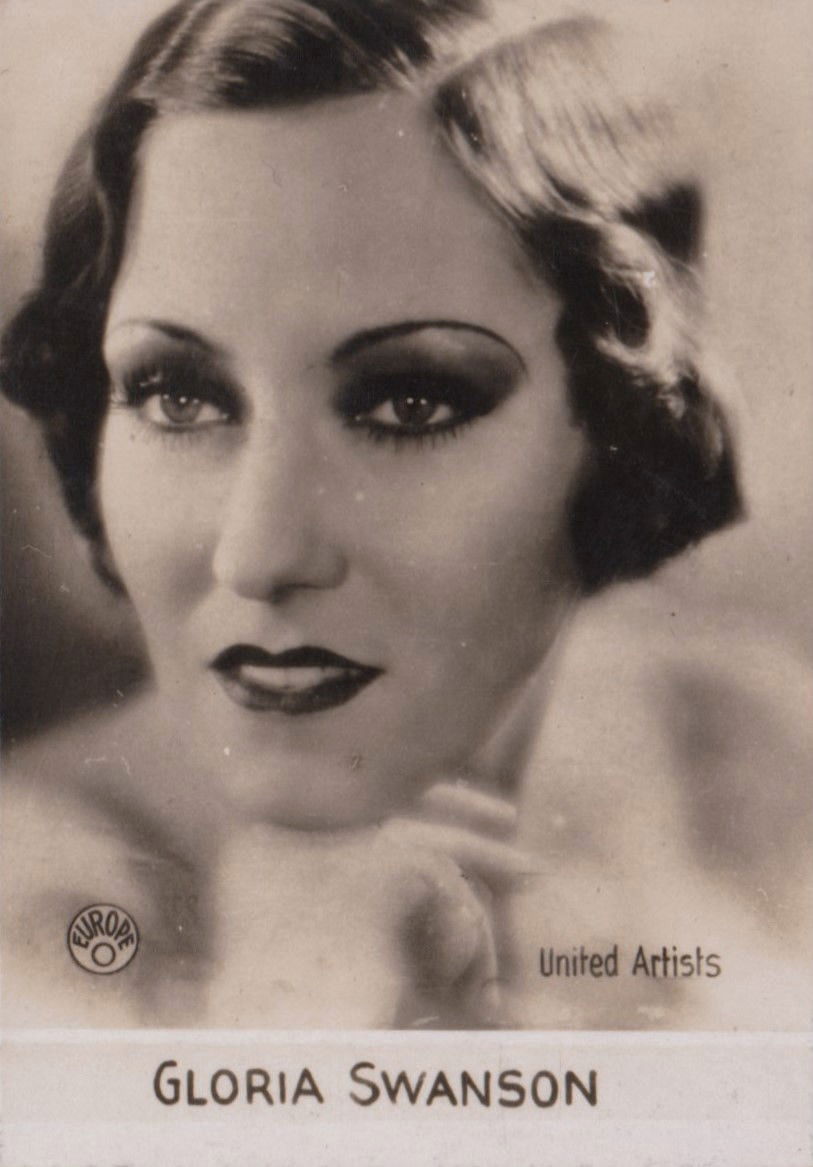
Card n. 76 - THE ORAMI ALBUM
(Personal collection)
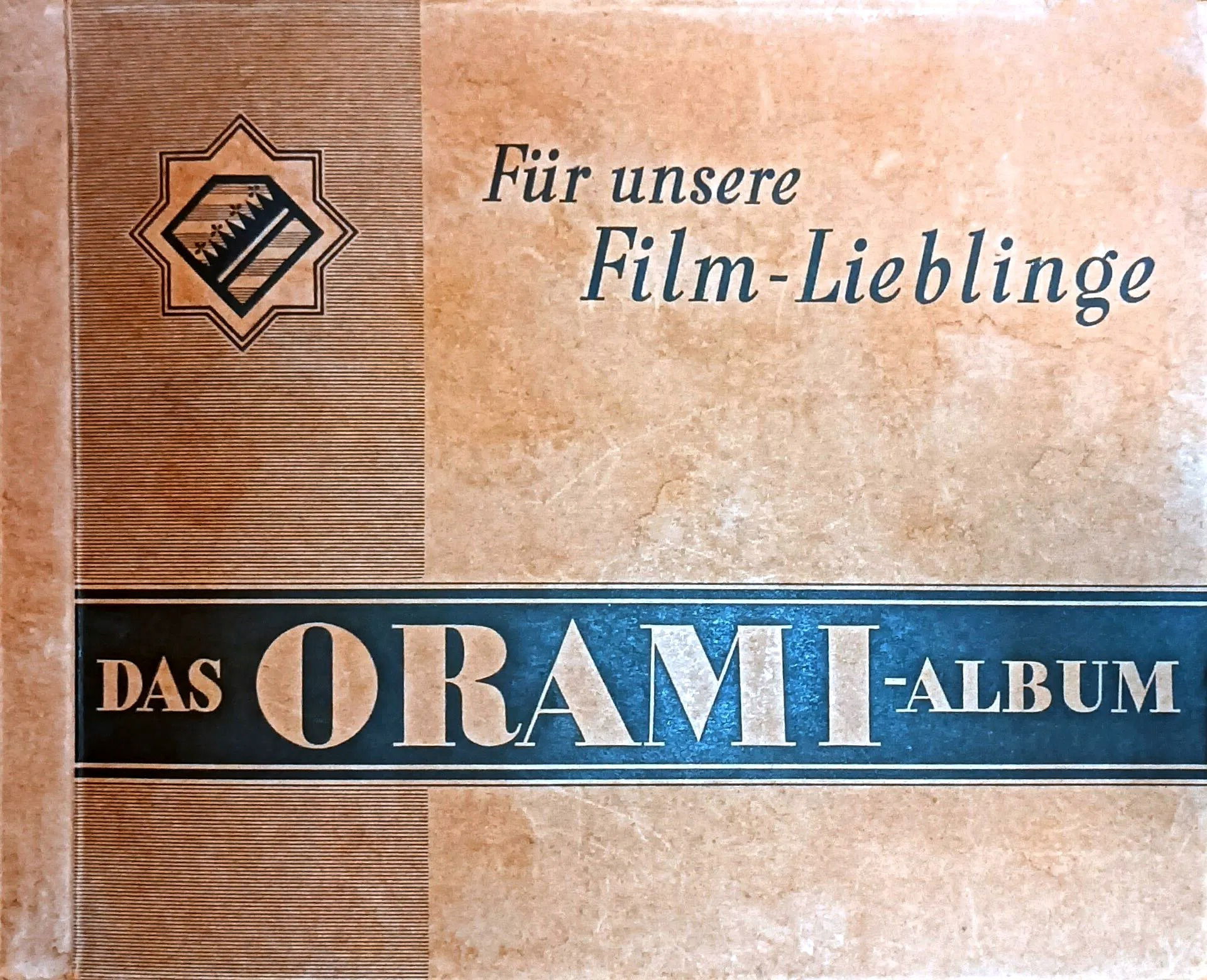
Gloria Swanson's performance in "The Affairs of Anatol" is an example of her talent and versatility as an actress. The film itself is a testament to his ability to bring complexity and depth to his roles, helping to set the standards of silent cinema and solidify his position as one of Hollywood's biggest stars.
COBRA
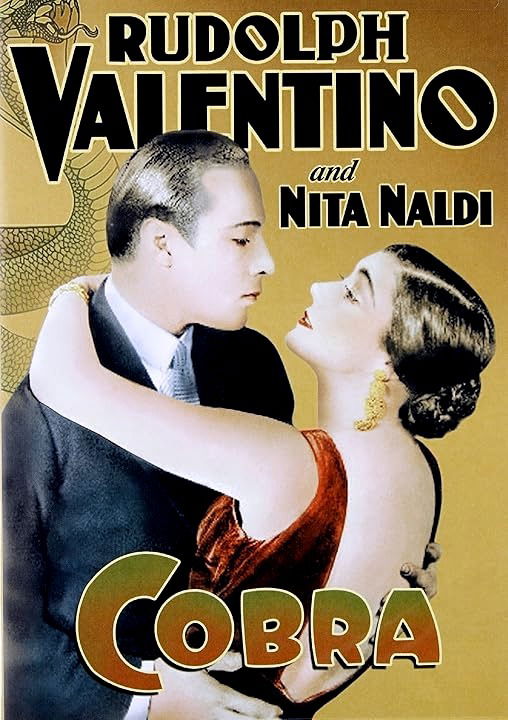
MOVIE POSTER
"Cobra" is a 1925 silent drama film directed by Joseph Henabery, known for its elaborate and spectacular costumes, which play a crucial role in defining the characters and atmosphere of the film. The costumes, designed by Gilbert Adrian and Lillian M. Turner, are fundamental to represent the elegance and sophistication of the main characters.
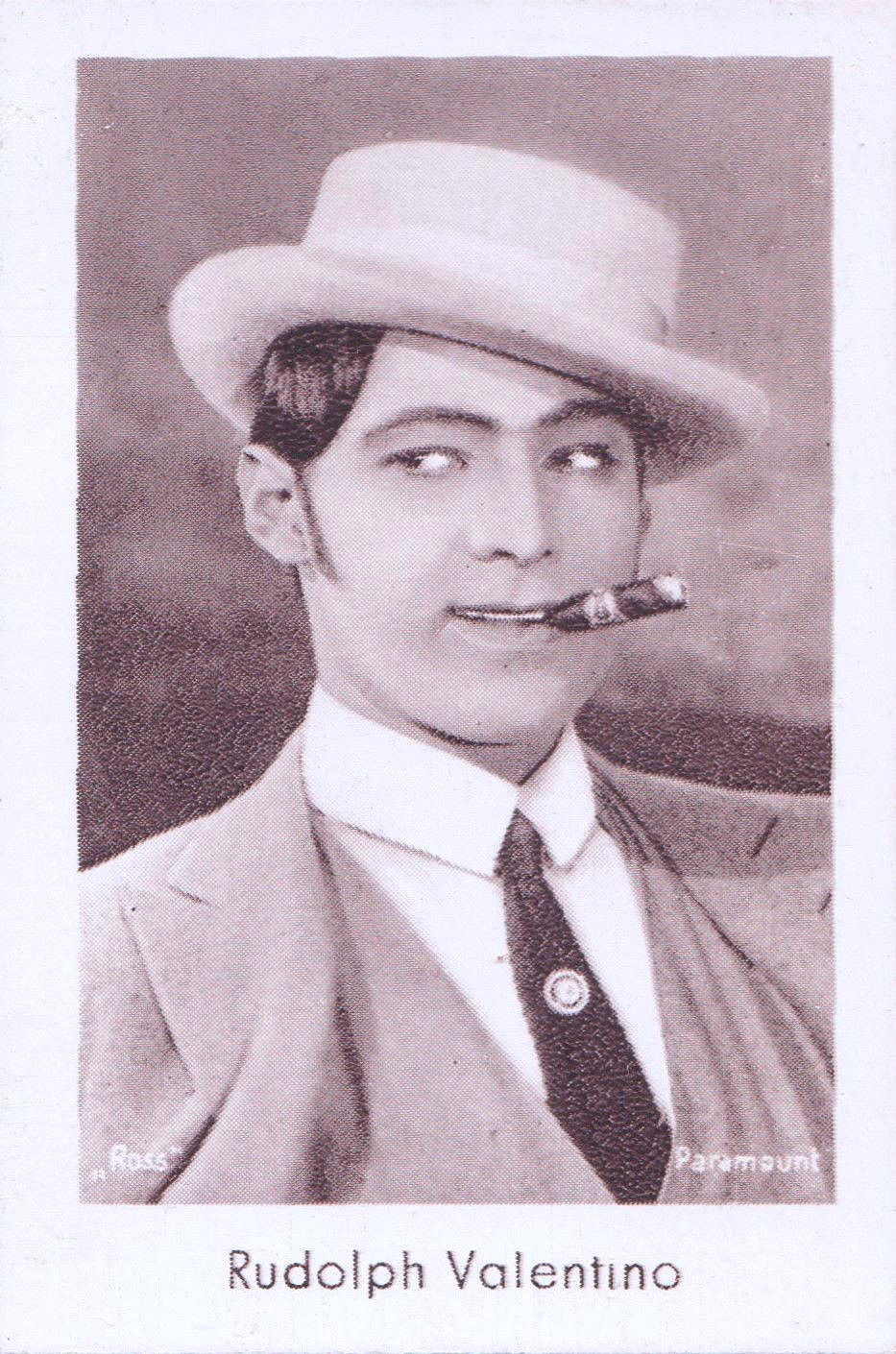
Card position 8 pag.31 - JOSETTI FILM ALBUM N°1
(Personal collection)
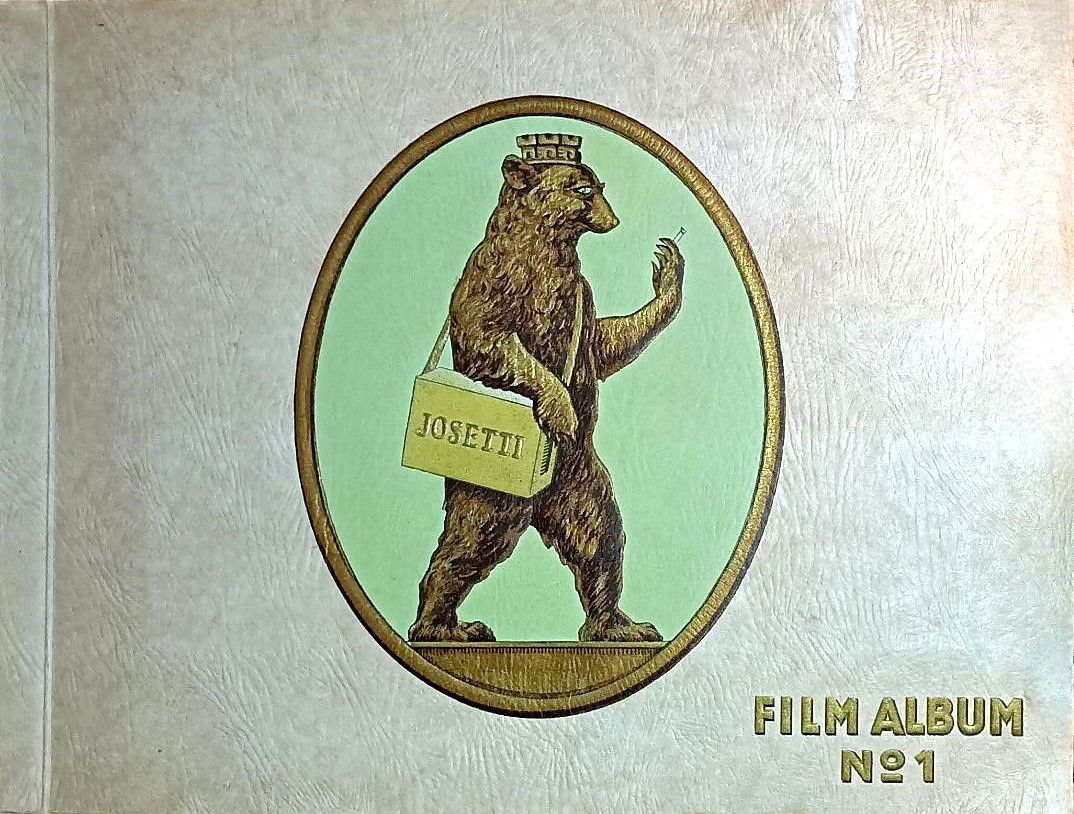
Rudolph Valentino, in the role of Count Rodrigo Torriani, wears clothes that reflect his status as an Italian nobleman and his libertine charm. The costumes of Nita Naldi, who plays Elise Van Zile, are equally elaborate and help to outline her character as a seductive and mysterious woman. Rodrigo and Elise's elegant and refined outfits emphasize their high social status and complex personalities. Additionally, the costumes help to create a visual contrast between the main and secondary characters, emphasizing the power dynamics and emotional tensions within the story.
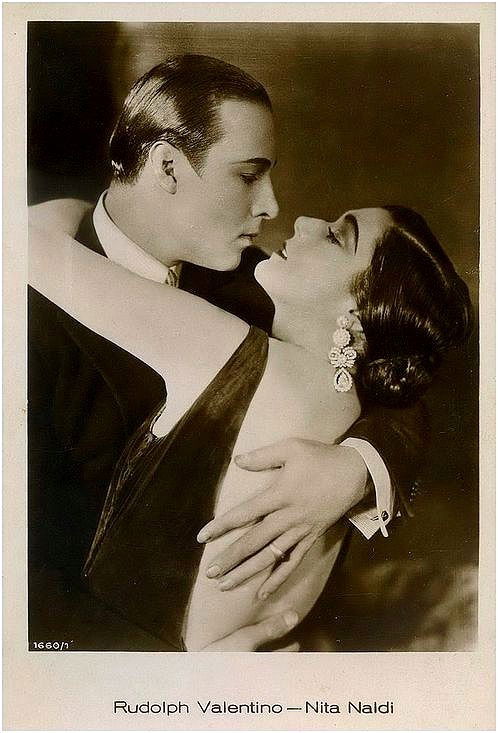
Postcard 1660/1
Gilbert Adrian and Lillian M. Turner's work on "Cobra" has had a lasting impact on the design of film costumes. Their attention to detail and ability to use costumes to enrich the film's visual storytelling set new standards for the film industry at the time. The costumes not only help establish the historical and social setting of the film, but also play an important narrative role, helping to tell the story and outline the characters.
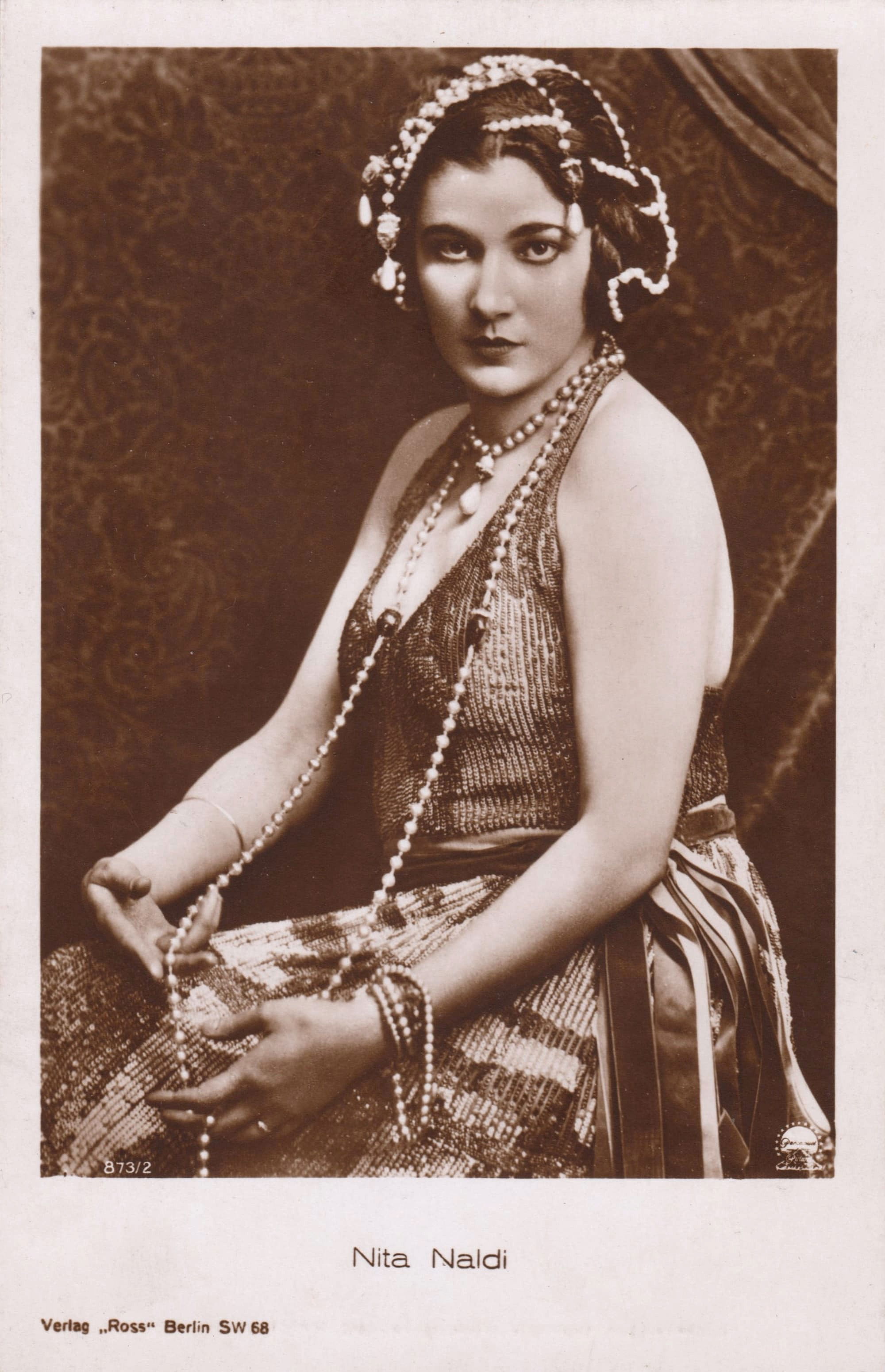
Postcard no.873/2 VERLAG "ROSS" Berlin SW 68
Exclusive sale Ballerini e Fratini Publishing House -Florence
(Personal collection)
Nita Naldi, born Mary Nonna Dooley on November 13, 1894 in New York, was an American stage and silent film actress, often playing the role of the "vamp". His film career began in 1920 with "Dr. Jekyll and Mr. Hyde" and reached its peak with films such as "Blood and Sand" alongside Rudolph Valentino. Naldi was known for her magnetic stage presence and sophisticated style.
In the 1925 film "Cobra", Nita Naldi plays Elise Van Zile, a seductive and mysterious woman who represents a temptation for the protagonist, Count Rodrigo Torriani, played by Rudolph Valentino. His performance is characterized by a strong stage presence and elegance that help to outline his character as a complex and fascinating figure. The elaborate costumes she wears in the film further accentuate her role, making her performance memorable and influential.
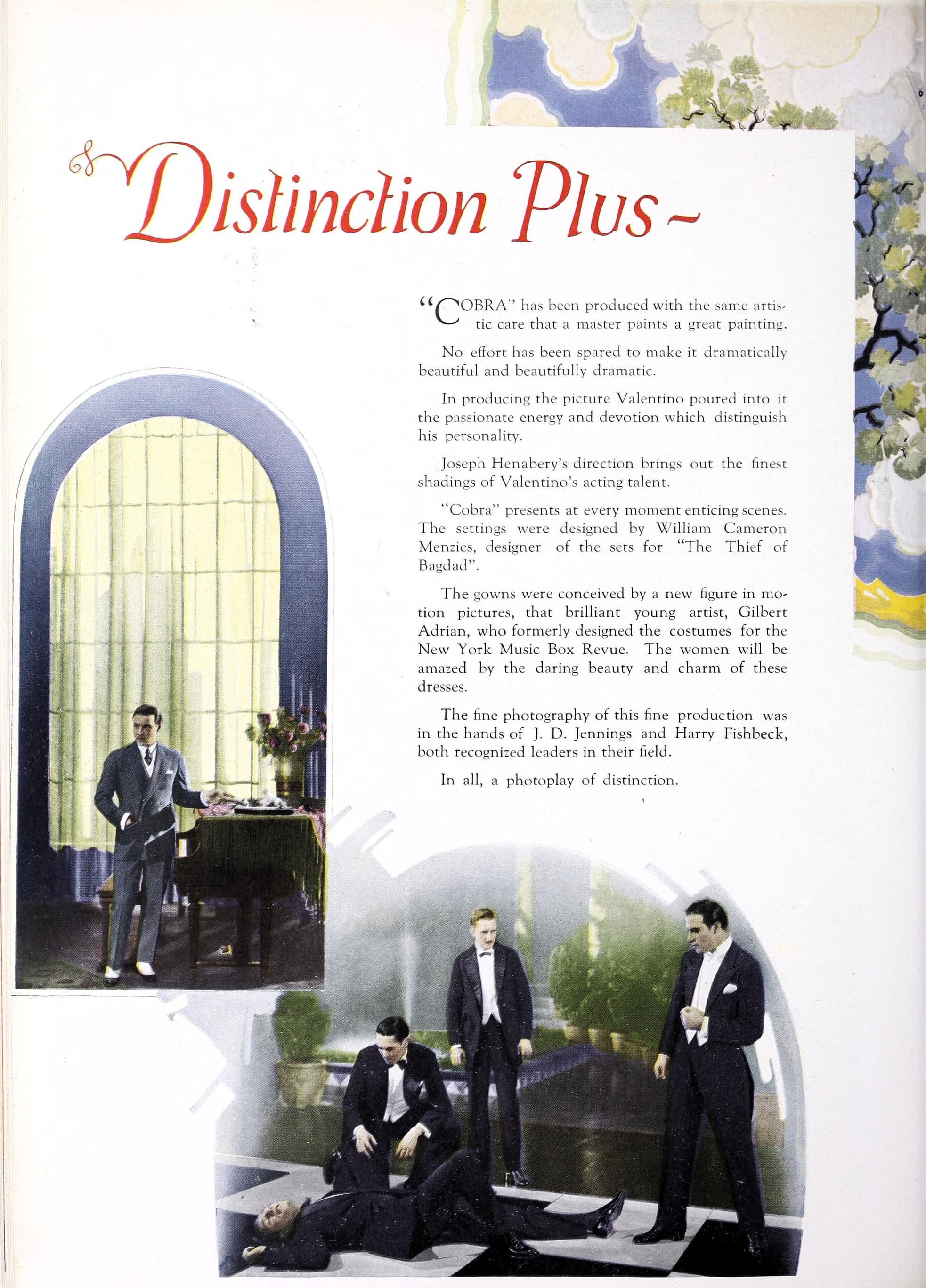
"Courtesy of the Media History Digital Library"
Excerpt from the periodical Exhibitors Herald (March-June 1925)
COBRA was produced with the same artistic care with which a master paints a large painting. No effort has been spared to make it both beautiful and beautifully dramatic. In creating the painting, Valentino poured into it the passionate energy and devotion that distinguish his personality. Joseph Henabery's direction highlights the subtlest nuances of Valentino's acting talent. "Cobra" presents tempting scenes at all times. The settings were designed by Willianr Cameron Menzies, designer of the sets of "The Thief of Baghdad". The clothes were conceived by a new figure in cinema, that young and brilliant artist, Gilbert Adrian, who had previously designed the costumes for the New York Music Box Revue. Women will be amazed by the bold beauty and charm of these dresses. The photography of this production was entrusted to J. D. Jennings and Harry Fishbeck, both recognized leaders in their field. Overall, a photoplay of distinction.
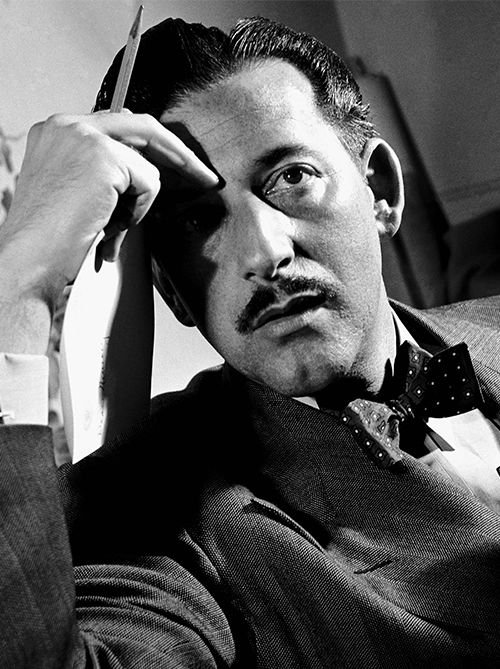
Adrian Adolph Greenburg (1944) - Wikipedia
Gilbert Adrian, born Adrian Adolph Greenburg on March 3, 1903 in Naugatuck, Connecticut, was one of Hollywood's most celebrated costume designers. Early in his career, Adrian was brought to Hollywood in November 1924 by Rudolph Valentino's wife, Natacha Rambova, to design the costumes for "The Hooded Falcon." Although Valentino's company disbanded, Adrian got his first on-screen credit for Constance Talmadge's comedy "Her Sister from Paris."
In 1925, Adrian was hired as a costume designer by Cecil B. DeMille's independent film studio. This marked the beginning of his career in Hollywood, where he worked on numerous films, including 1925's "Cobra". In "Cobra", Adrian demonstrated his talent for creating costumes that not only reflected the elegance and sophistication of the characters, but also helped to delineate their complex personalities. The costumes of Rudolph Valentino, who played Count Rodrigo Torriani, and Nita Naldi, who played Elise Van Zile, were particularly elaborate and refined, emphasizing their high social status and charm.
Adrian continued to work with DeMille until 1928, when they both moved to Metro-Goldwyn-Mayer (MGM). At MGM, Adrian became head costume designer and worked on over 200 films, creating iconic outfits for some of the biggest movie stars of the time, such as Greta Garbo, Joan Crawford, and Katharine Hepburn.
Adrian's work on "Cobra" and other films of the time set new standards for film costume design, profoundly influencing the industry and helping to define the visual aesthetic of Hollywood during its golden age.
"Cobra" is a brilliant example of how costumes can enrich a film, adding depth and complexity to the characters and creating a visually appealing atmosphere. The combination of a gripping storyline and spectacular costumes makes this film a timeless classic of silent cinema.
THE FORBIDDEN WOMAN
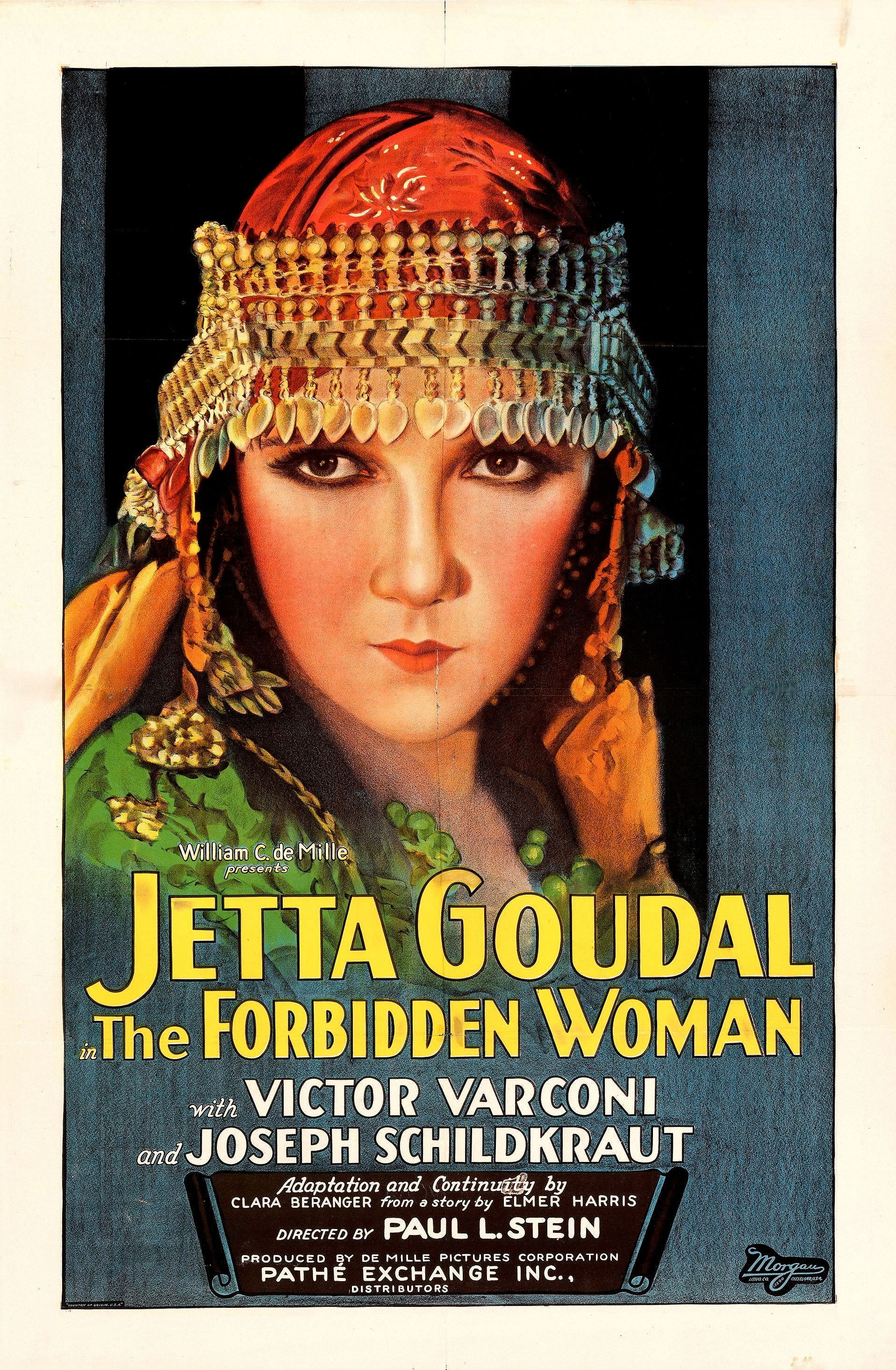
MOVIE POSTER
"The Forbidden Woman" is a silent film directed by Paul L. Stein, set in French North Africa. This film is particularly known for its costumes, designed by Gilbert Adrian, which were key to creating the exotic and dramatic atmosphere of the film.
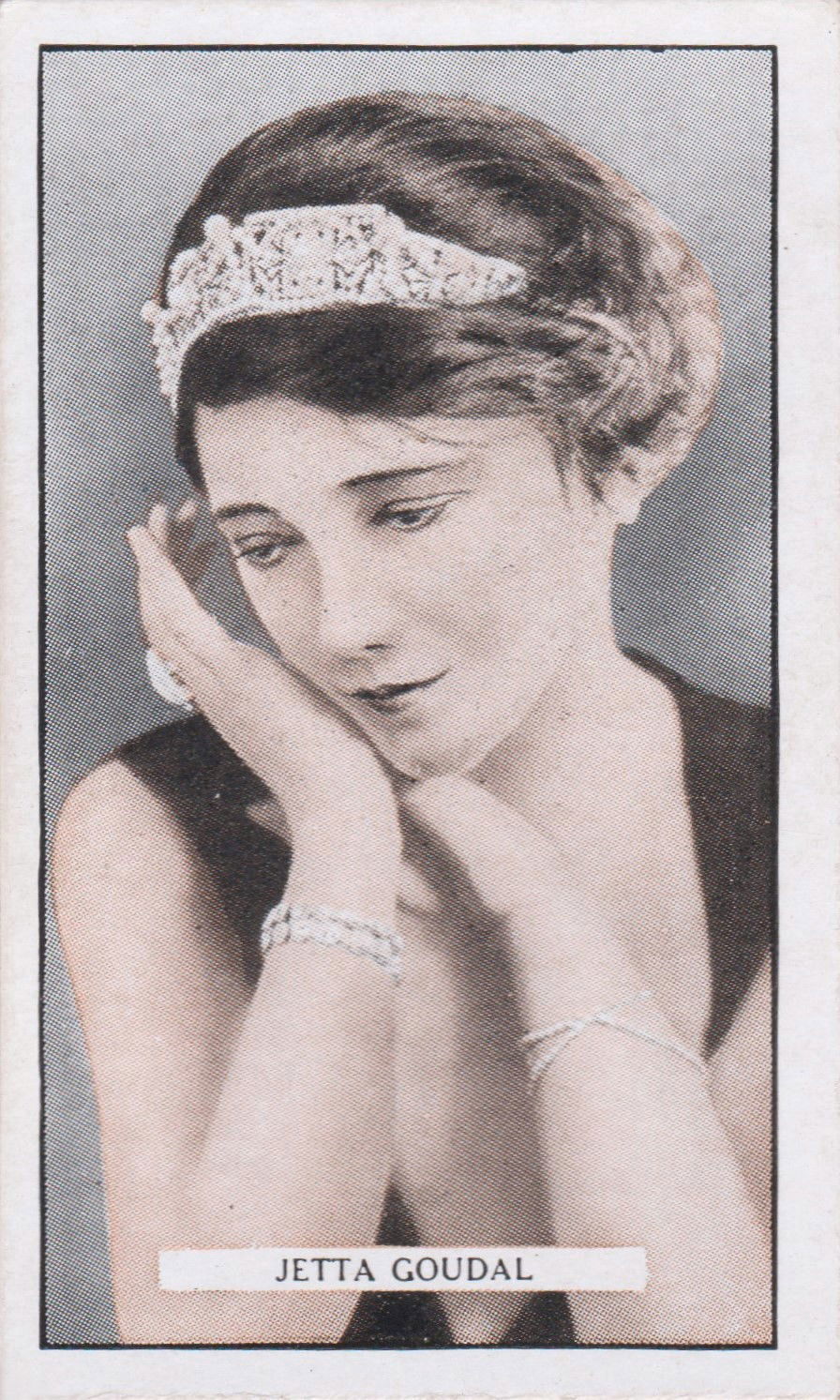
Card n.89 of the CINEMA STARS series
GALLAHER LTD (1926)
(Personal collection)
The plot follows Zita Gautier, played by Jetta Goudal, a beautiful spy in the service of the sultan of Morocco. Zita is tasked with obtaining military secrets from the French army, but ends up falling in love with Colonel Pierre Gautier, played by Victor Varconi. The story becomes even more complicated when Zita discovers that her lover, Jean La Coste, played by Joseph Schildkraut, is Pierre's younger brother.
Adrian's costumes in "Forbidden Woman" are particularly notable for their historical accuracy and elaborate style. Zita's costumes, in particular, reflect her dual nature as a spy and lover, with outfits that combine exotic and sensual elements. The outfits of the male characters, such as those of Pierre and Jean, are equally detailed and help to outline their personalities and social status.
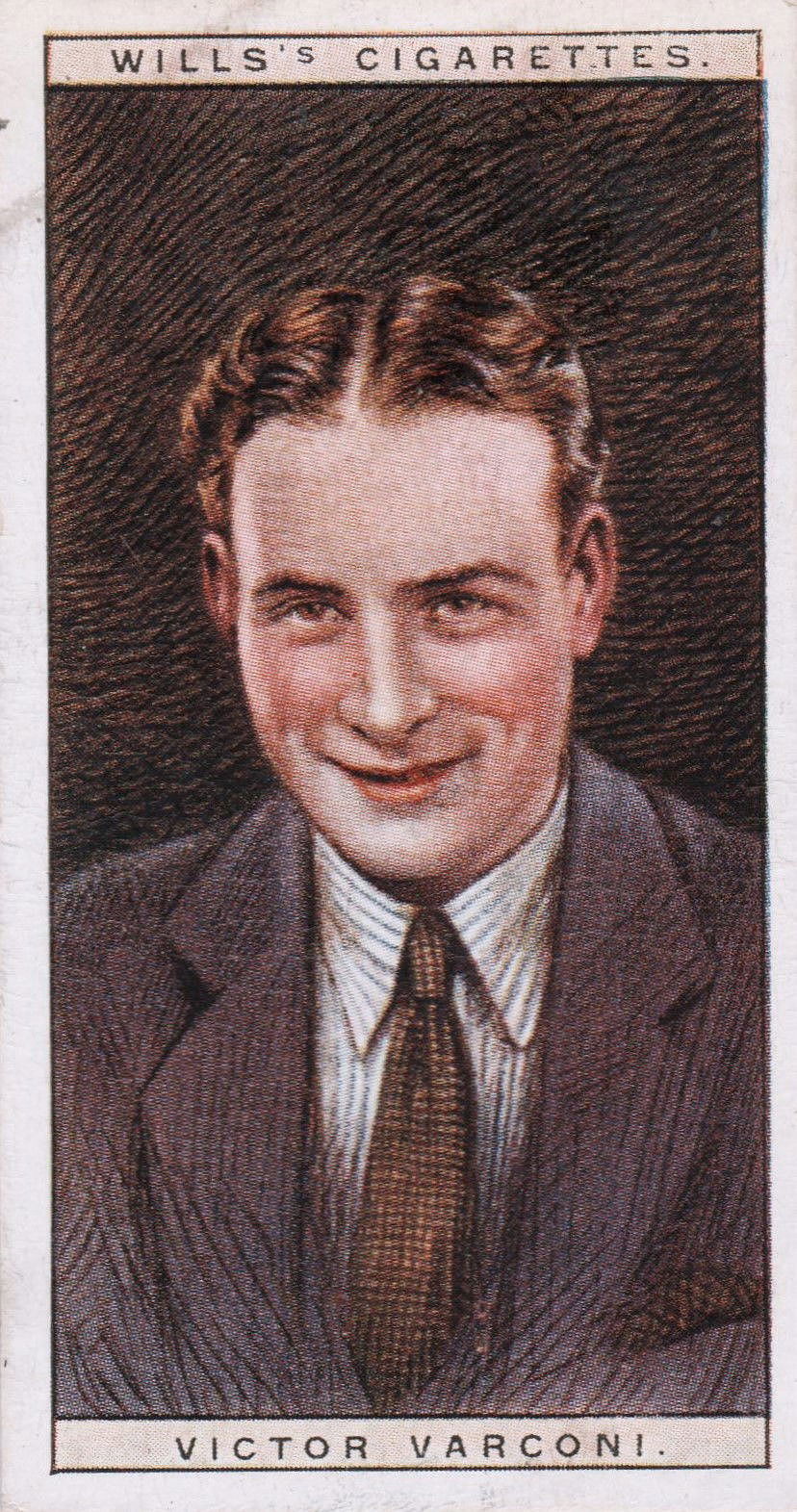
Card n.25 della serie CINEMA STARS 2nd SERIES
W.D. & H.O. WILLS (1928)
(Personal collection)
In the film, Victor Varconi played the role of Colonel Pierre Gautier.
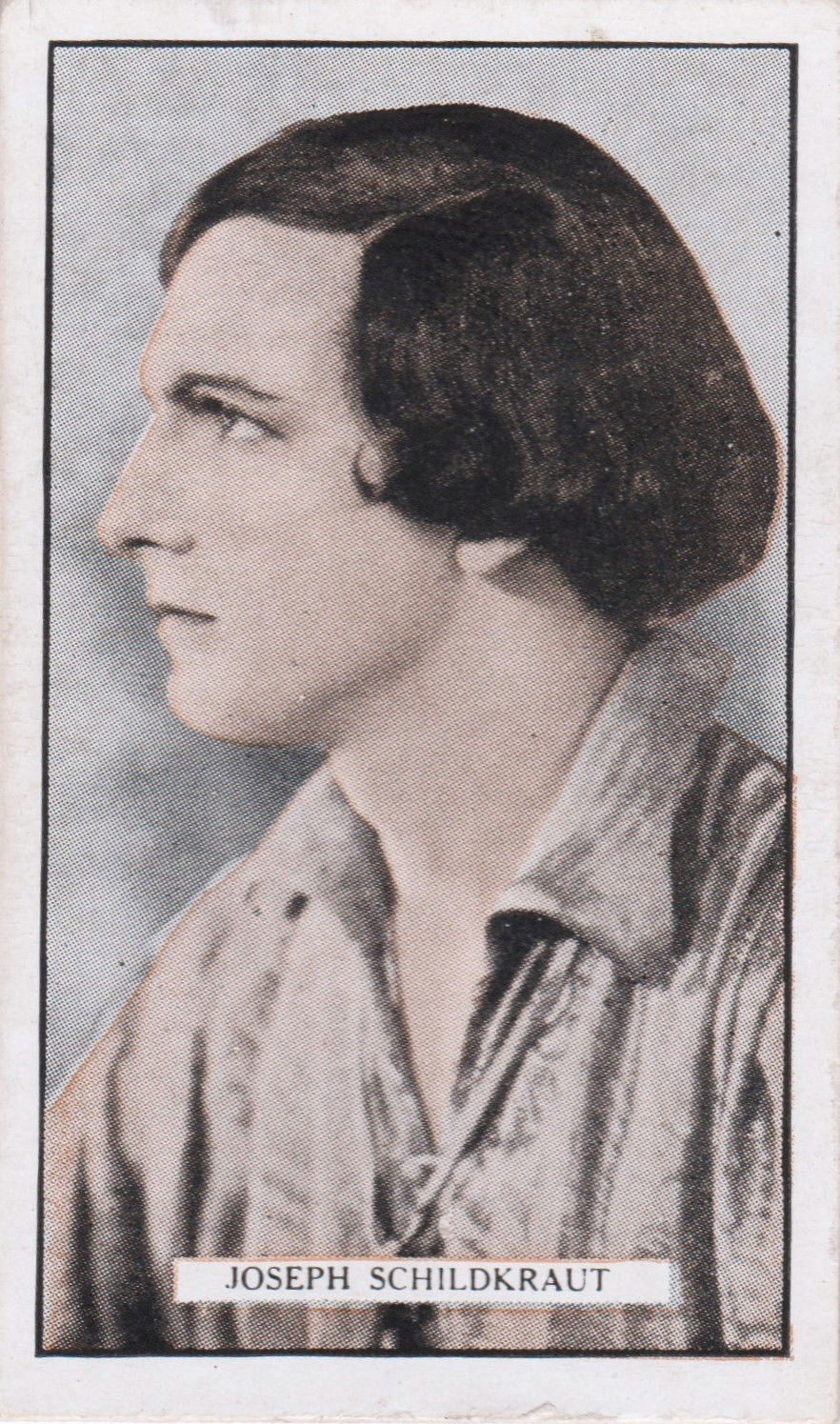
Card n.73 of the CINEMA STARS series
GALLAHER LTD (1926)
(Personal collection)
Joseph Schildkraut played Jean La Coste, (here portrayed in the other beautiful film in the role of Judas Iscariot in "The King of Kings" of 1927, directed by Cecil B. DeMille)
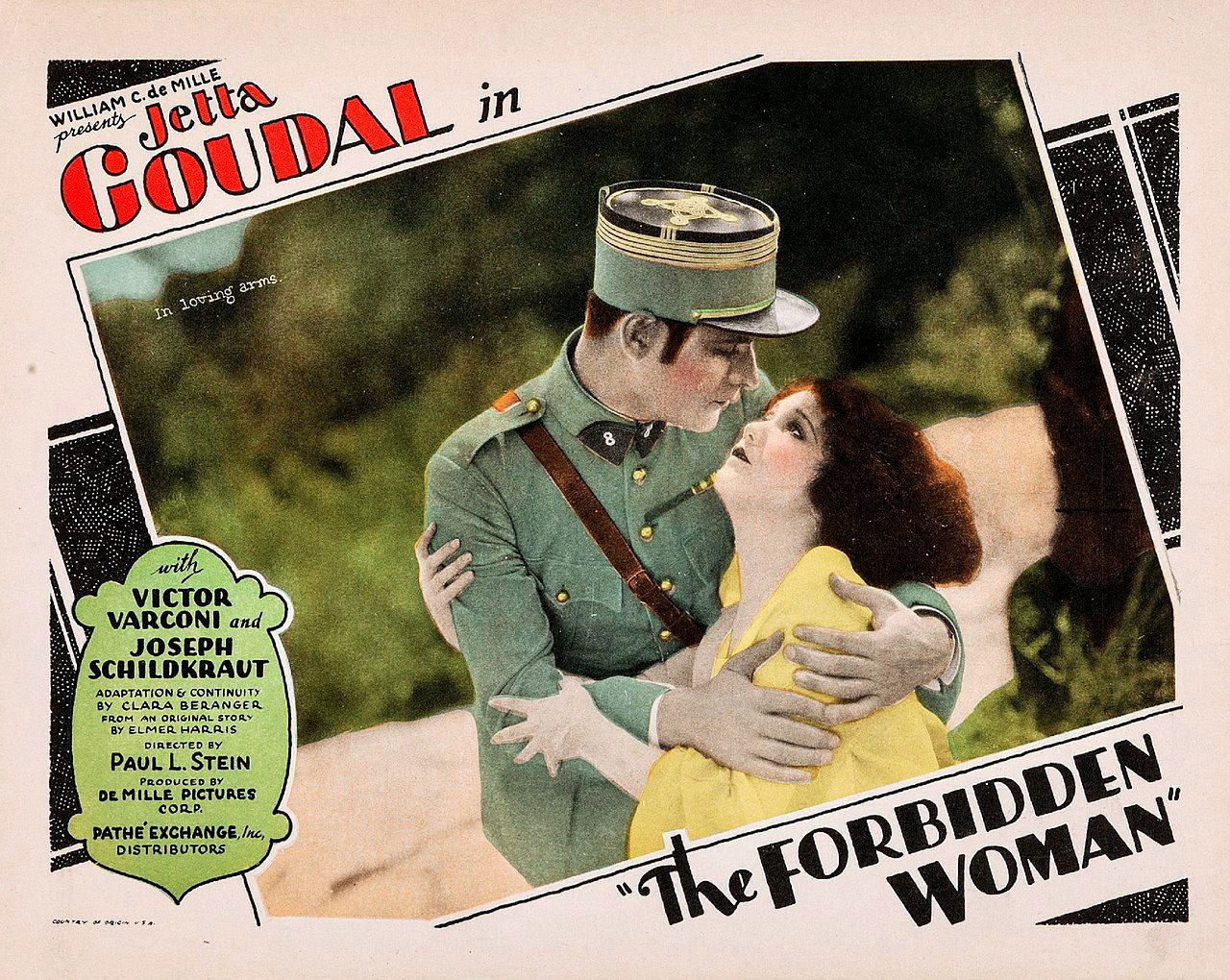
LOBBY CARD (1927)
Adrian's work on "The Forbidden Woman" demonstrates his ability to create costumes that not only enrich the film's visual storytelling, but also help define the characters and create an authentic and immersive atmosphere. This film is a perfect example of how costumes can play a crucial role in silent cinema, helping to tell complex and fascinating stories.
THE EVOLUTION OF COSTUME IN THE TRANSITION FROM SILENT TO SOUND
The transition from silent cinema to sound represents an epochal turning point in the history of cinema, influencing not only the narrative and cinematographic technique, but also the design of costumes. One of the films that best represents this change is "Love" of 1927, directed by Edmund Goulding and starring Greta Garbo and John Gilbert. This film, based on the novel "Anna Karenina" by Leo Tolstoy, was one of the last great silent films before the advent of sound. A sound version of the film was released in 1928 with a synchronized musical soundtrack and sound effects. MGM made the film to take advantage of the winning couple formed by Greta Garbo and John Gilbert.
LOVE
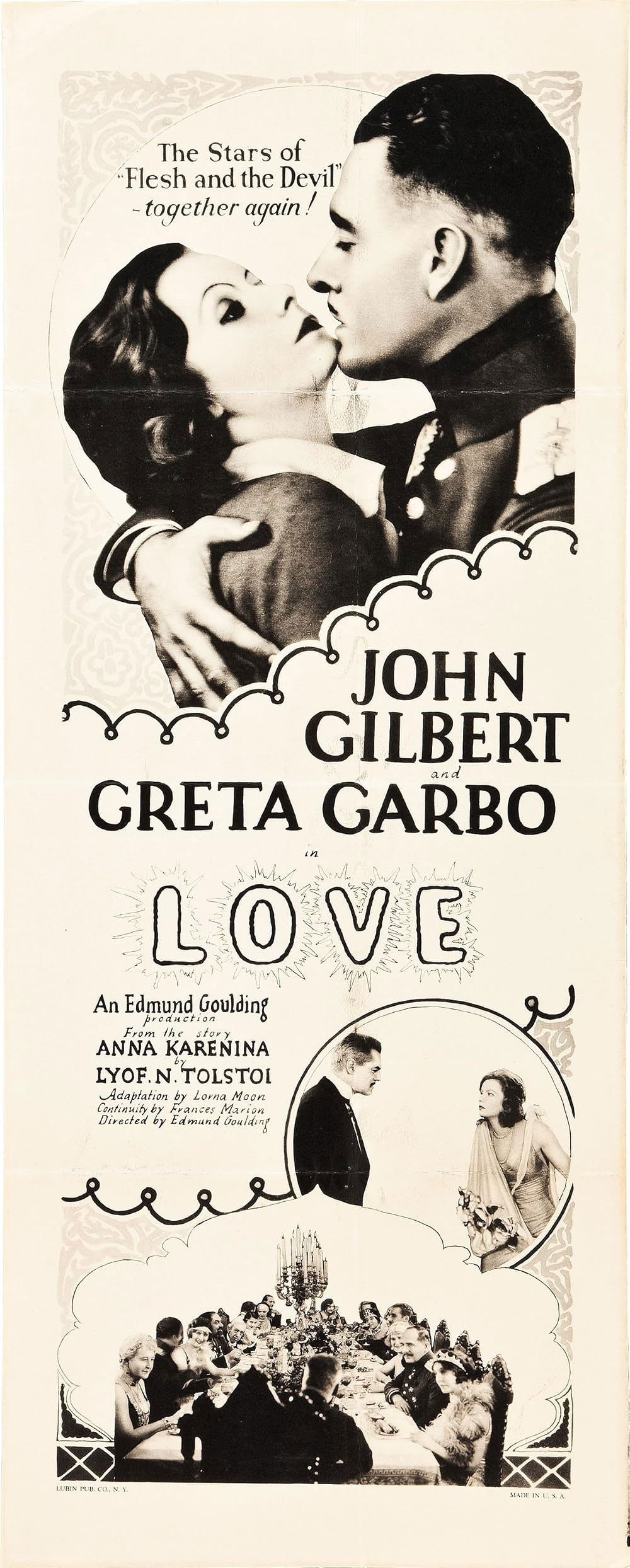
Film Advertising
"Heat" was the original title of the film "Love" but during the advertising campaign, which was one of the largest of the time, the title was changed to "Love" to capitalize on the romantic couple having already had success with the 1926 film "Flesh and the Devil"
"Love" is a perfect example of how costumes have continued to play a crucial role even during this transition. The costumes, designed by Gilbert Clark, reflect the elegance and sophistication of the time, helping to create a romantic and dramatic atmosphere. Greta Garbo, as Anna Karenina, wears clothes that enhance her beauty and charisma, while John Gilbert, as Vronsky, is impeccably dressed, emphasizing his high social status.
Gilbert Clark was a talented costume designer born on December 4, 1883, in Norfolk, Norwich, England. He worked on numerous films during the era of silent cinema and early sound films, helping to create costumes that enriched visual storytelling and defined characters. Clark is known for his work on films such as "West Point" (1927), "The Mysterious Lady" (1928), and "The Road to Romance" (1927). His career was characterized by great attention to detail and an ability to create clothes that reflected the era and atmosphere of the films he worked on. He was known for being a perfectionist, which sometimes made him difficult to handle, but his talent was unquestionable.
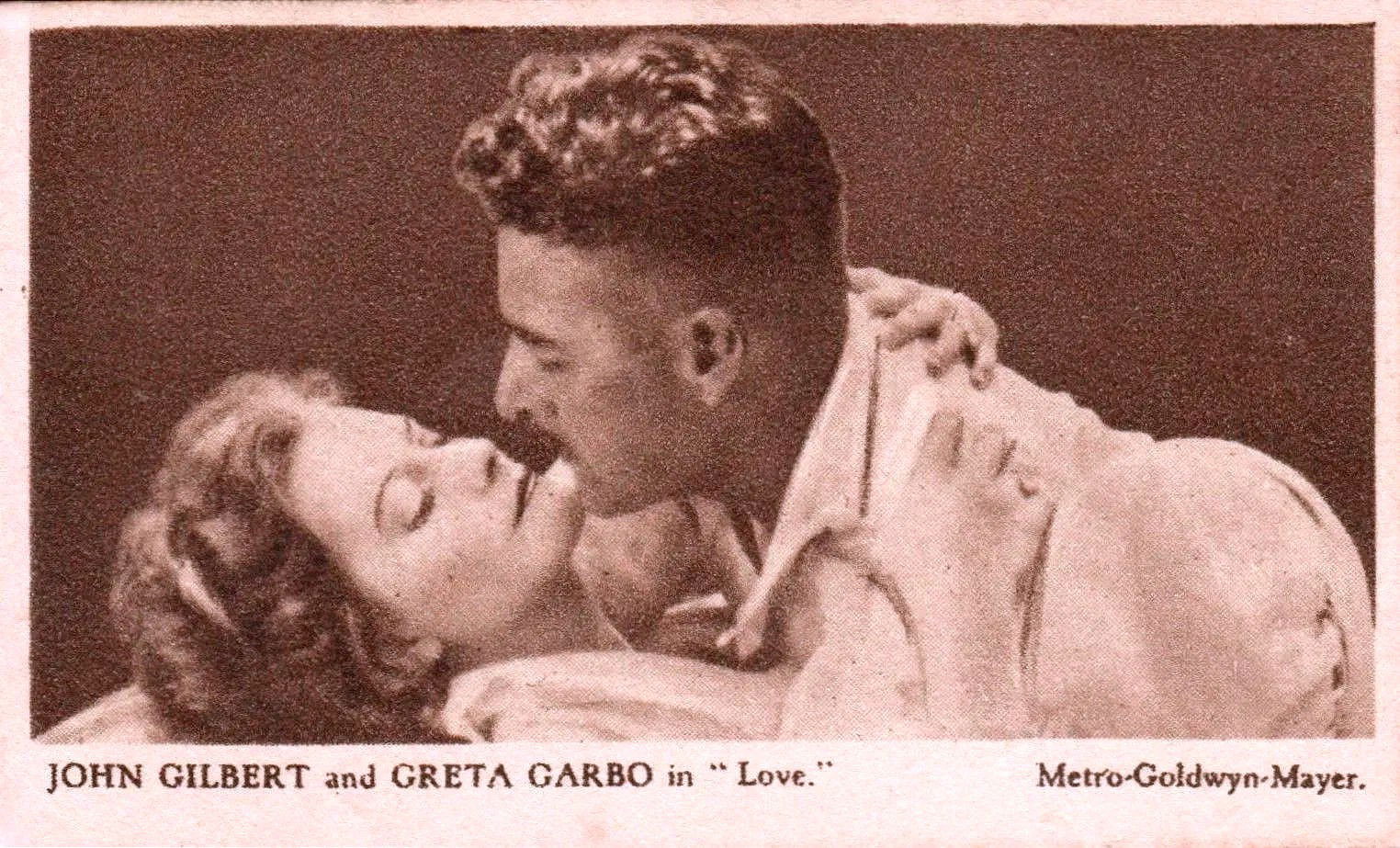
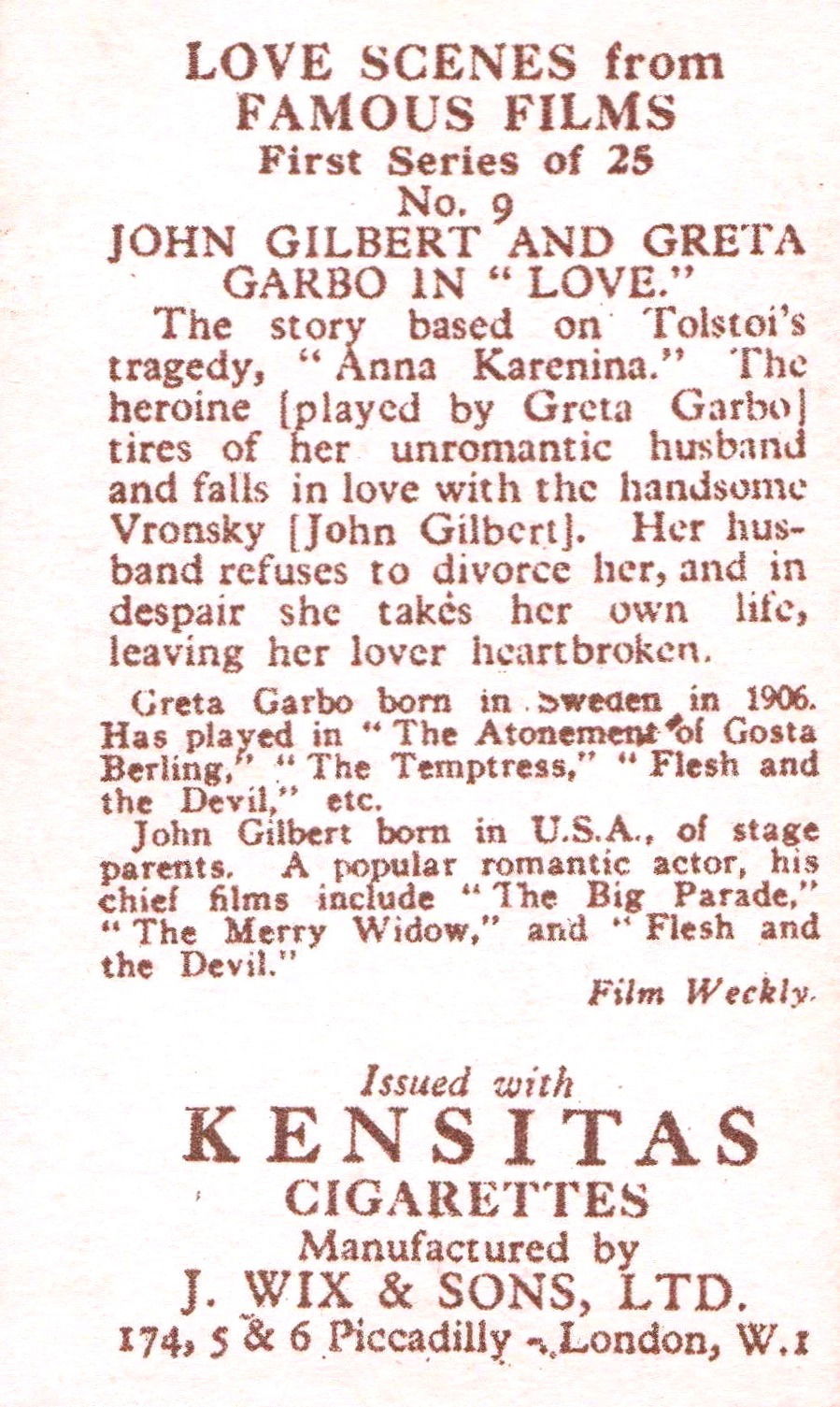
Card n.9 LOVE SCENES from FAMOUS FILMS
J. WIX & SONS Ltd. (1932)
(Personal collection)
In the 1927 film "Love," Clark created costumes that enhanced the beauty and charisma of Greta Garbo and John Gilbert, helping to create a romantic and dramatic atmosphere. His designs for this film were particularly praised for their sophistication and attention to detail. Clark continued to work in the industry until his death in June 1942 in Middlesex, England. His legacy lives on through his contributions to cinema, which continue to be admired and studied by film enthusiasts and costume designers around the world.
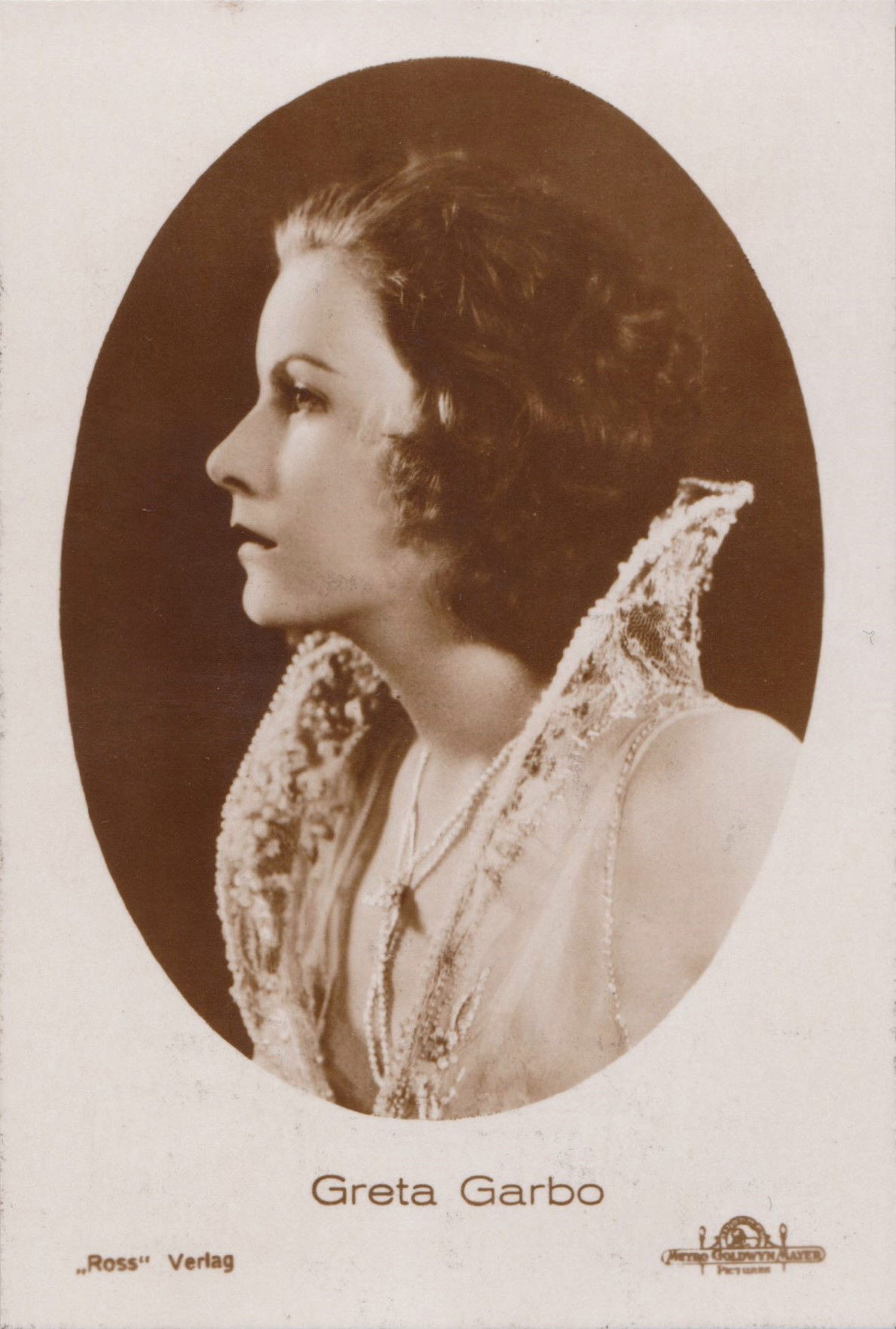
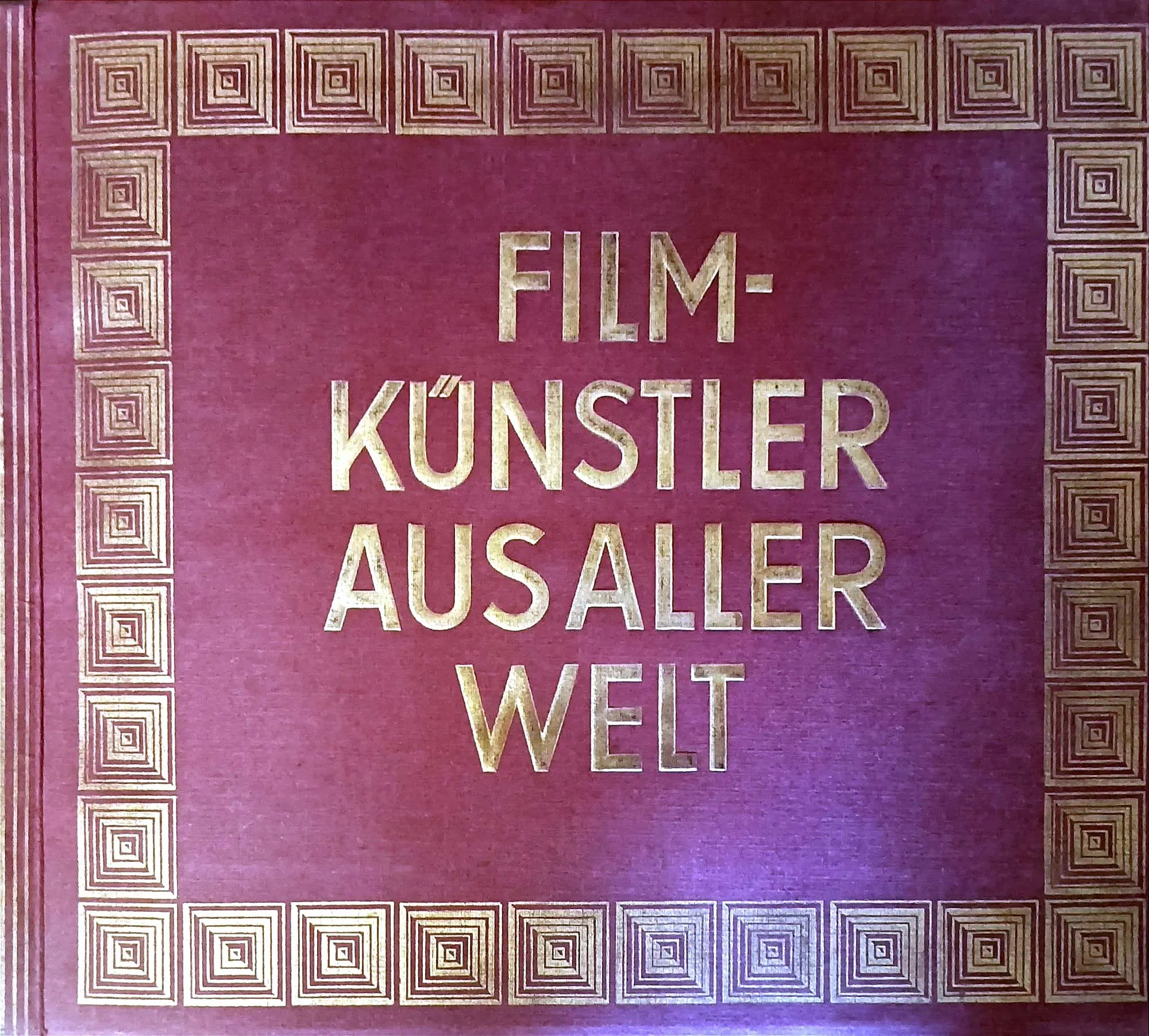
Card n. 2 dell'Album FILM ARTISTS FROM ALL OVER THE WORLD
(Personal collection)
Greta Garbo plays Anna Karenina, the protagonist of the 1927 film "Love". Anna is a married woman who falls in love with the young officer Count Vronsky, played by John Gilbert. Her portrayal of Anna is intense and passionate, showing the inner struggle between duty to her family and longing for Vronsky.
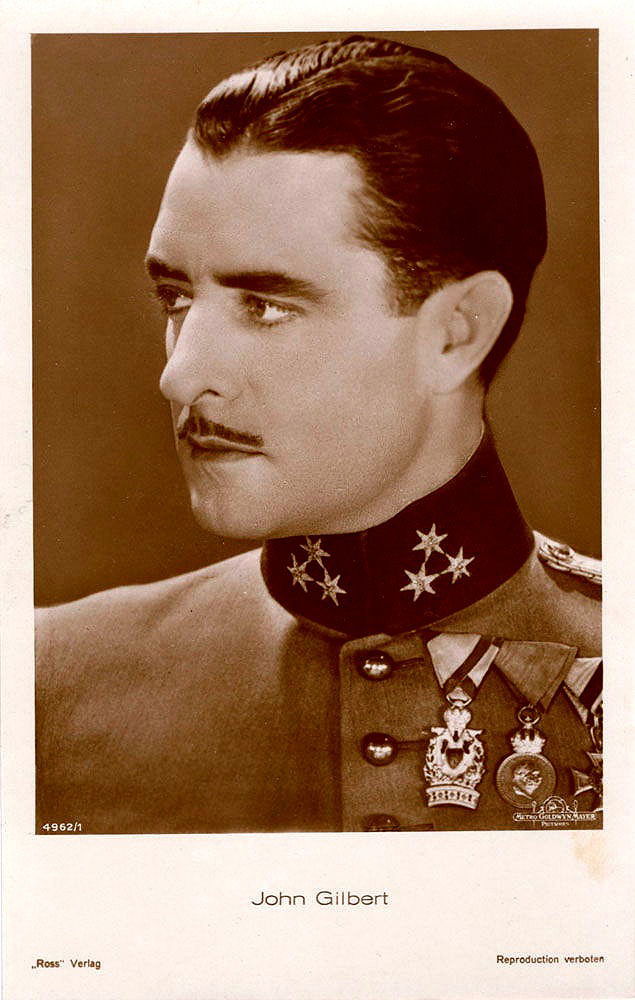
In the 1927 film "Love", Gilbert plays Count Vronsky, a young officer who falls in love with Anna Karenina, played by Greta Garbo. Their on-screen chemistry was palpable and helped make the film a success. Gilbert's performance as Vronsky was intense and charismatic, showing his ability to play complex and emotionally charged roles.
Gilbert's career declined with the advent of sound cinema, but his contribution to silent cinema remains unforgettable. He died on January 9, 1936 in Los Angeles, California, at the age of only 38.
1927 marks the year in which silent cinema began to give way to sound cinema, with the release of "The Jazz Singer", the first spoken word film. This change revolutionized the way films were produced and perceived. The costumes, which until then had played a fundamental role in conveying emotions and characterizing the characters, had to adapt to the new needs of sound cinema. Cinematic costumes have always played a crucial role in characterizing characters and setting the mood of films. With the advent of sound, costumes had to be less noisy to avoid interference with audio recordings. In addition, the costumes had to be more realistic and less theatrical, as the sound allowed for greater immersion in the story and required a more authentic representation of the characters and settings.
In addition to "Love," other films from 1927 had a significant impact on film mores. "Sunrise: A Song of Two Humans" by F.W. Murnau is known for its detailed and realistic costumes that help to create an authentic and immersive atmosphere. Cecil B. DeMille's "The King of Kings," with its elaborate and historically accurate costumes, also played an important role in defining the aesthetics of cinema of that period.
THE AGE OF SOUND: THE REVOLUTION OF CINEMA
The introduction of sound in cinema marked an epochal revolution. Before sound, movies were accompanied by live music and intertitles to explain the plot. With the advent of sound, films were able to include dialogue, sound effects, and soundtracks, transforming the cinematic experience. This change has led to new technical and artistic challenges, but it has also opened up new narrative possibilities and helped to make cinema an even more engaging and realistic art. The transition to sound has also affected the careers of many actors and directors, some of whom have had to adapt to new technologies and modes of acting.
ROMANCE
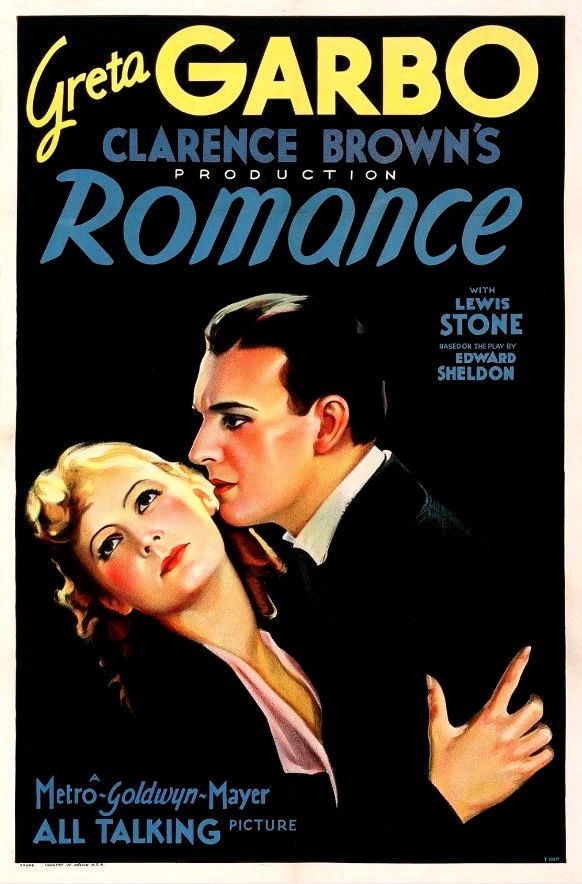
MOVIE POSTER
The collaboration between Adrian and Greta Garbo began in 1928 with the film "The Mysterious Lady" and extended until 1941, the year in which Garbo retired from the scene. During these years, Adrian designed costumes for 18 of Garbo's films, helping to create an image of elegance and sophistication that defined his career. Adrian's costumes for Garbo were characterized by clean lines, rich fabrics and refined details, which enhanced his slender figure and sculpted face. An example is "Romance", a 1930 film directed by Clarence Brown and starring Greta Garbo and Lewis Stone. This film is a perfect example of how costumes continued to play a crucial role even during the transition from silent to sound.
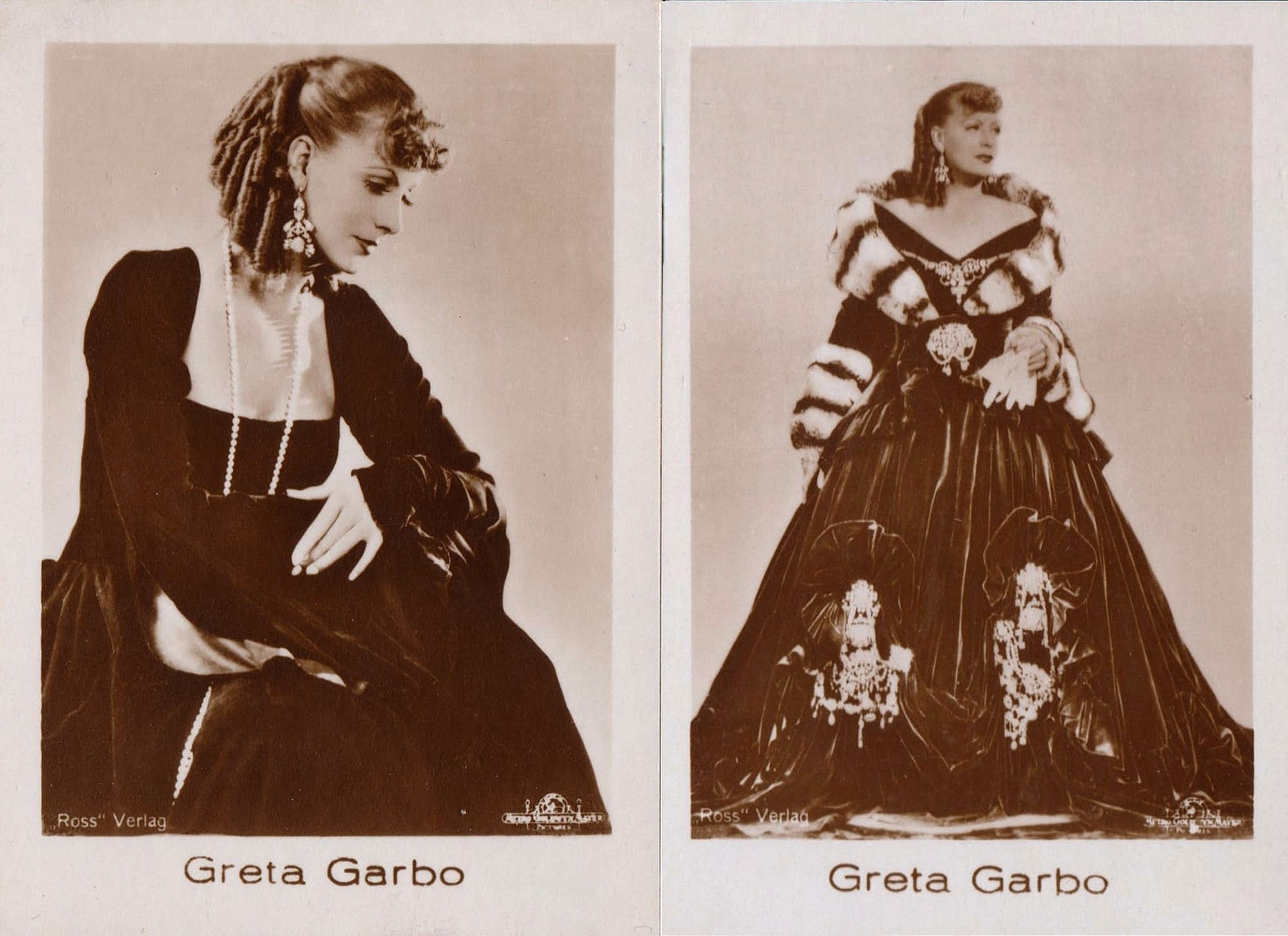
Cards n.367 e 369 dell'Album HÄNSOM FILMBILDER TONFILMSERIE
(Personal collection)
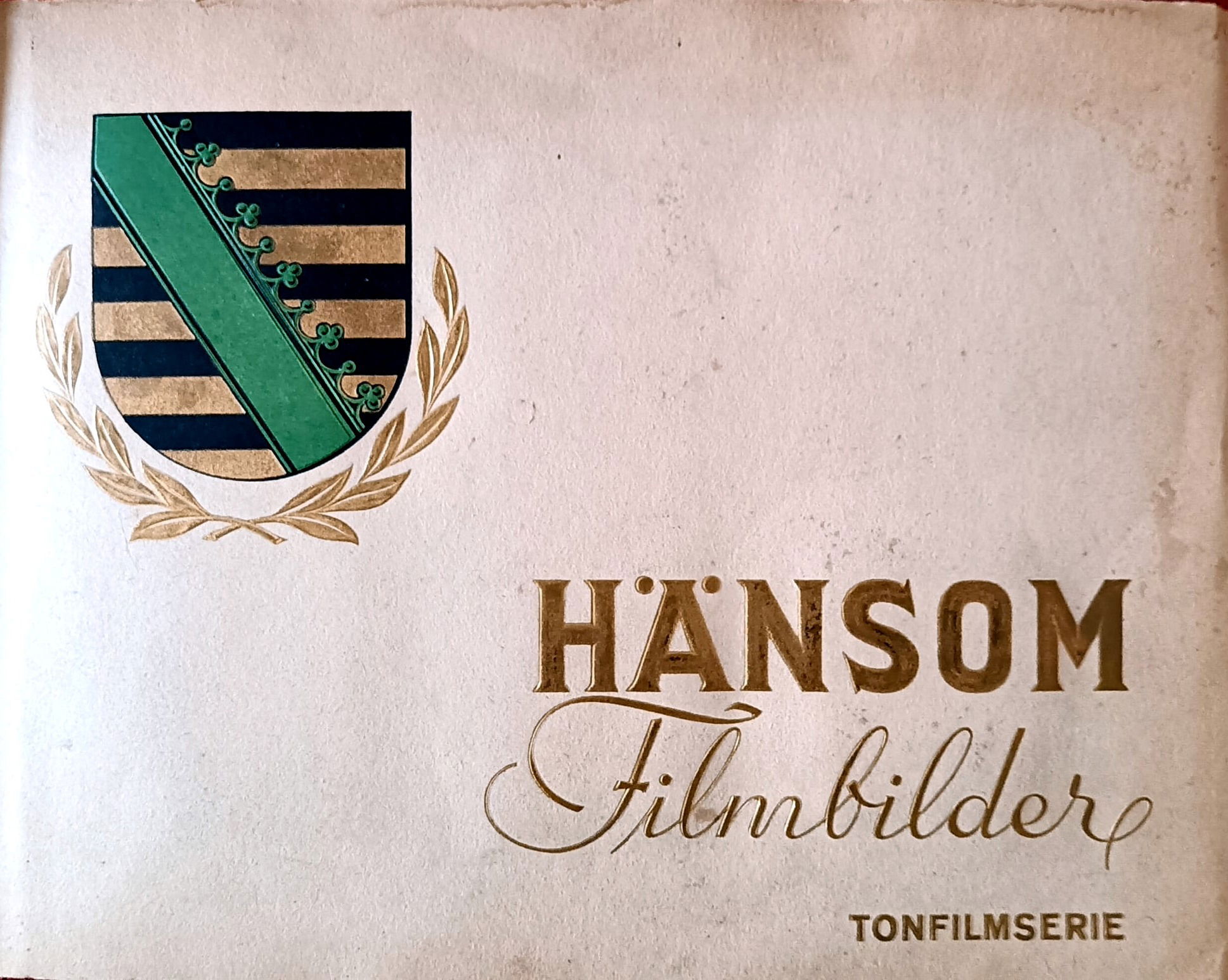
The costumes, designed by Adrian, reflect the elegance and sophistication of the time, helping to create a romantic and dramatic atmosphere. Adrian was the first to inextricably link fashion with cinema, creating clothes that not only enhanced the beauty of the stars, but also helped outline their characters and set the mood for the films.
His collaboration with Greta Garbo was particularly significant and marked a turning point in the history of cinematic costume. Garbo, with her mysterious charm and ethereal beauty, became Adrian's muse, and together they created some of the most iconic looks in film history.
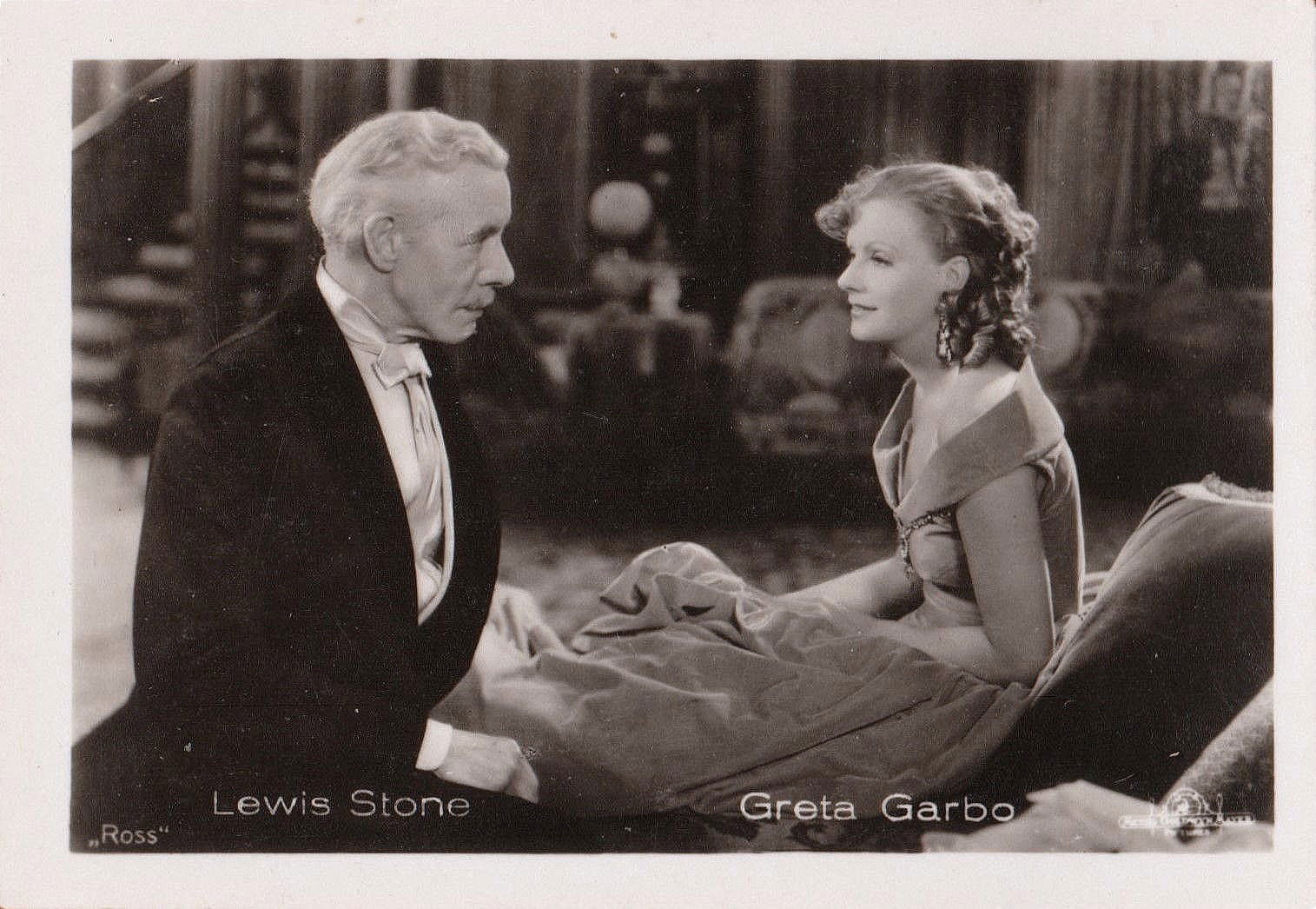
Card n.637 dell'Album MERCEDES FILM PICTURES 4
(Personal collection)
In the 1930 film "Romance", Lewis Stone plays the role of Cornelius Van Tuyl, an elderly man who tells his young nephew Harry the story of his past love with Rita Cavallini, played by Greta Garbo. Cornelius is a character of great importance in the plot, as his narrative serves as the framework for the main story of the film.
Cornelius Van Tuyl is a man of the world, sophisticated and wealthy, who has lived a life full of experiences and relationships. His love story with Rita Cavallini was one of the most significant of his life, and through his memories, the audience is transported back in time to relive those moments. His relationship with Rita was complicated by social differences and societal expectations, but despite everything, their love was deep and sincere.
Lewis Stone's performance was praised for its ability to convey the wisdom and melancholy of a man reflecting on his past. Her role is crucial to the film, as it provides the context and emotional depth needed to understand the love story between Rita and Tom Armstrong, played by Gavin Gordon.

Card n.639 dell'Album MERCEDES FILM PICTURES 4
(Personal collection)
The plot follows the story of Rita Cavallini, played by Greta Garbo, a famous opera singer who falls in love with a young priest, played by Gavin Gordon. Their relationship is complicated by social differences and societal expectations. Adrian's costumes help to outline the characters and create an authentic and immersive atmosphere.
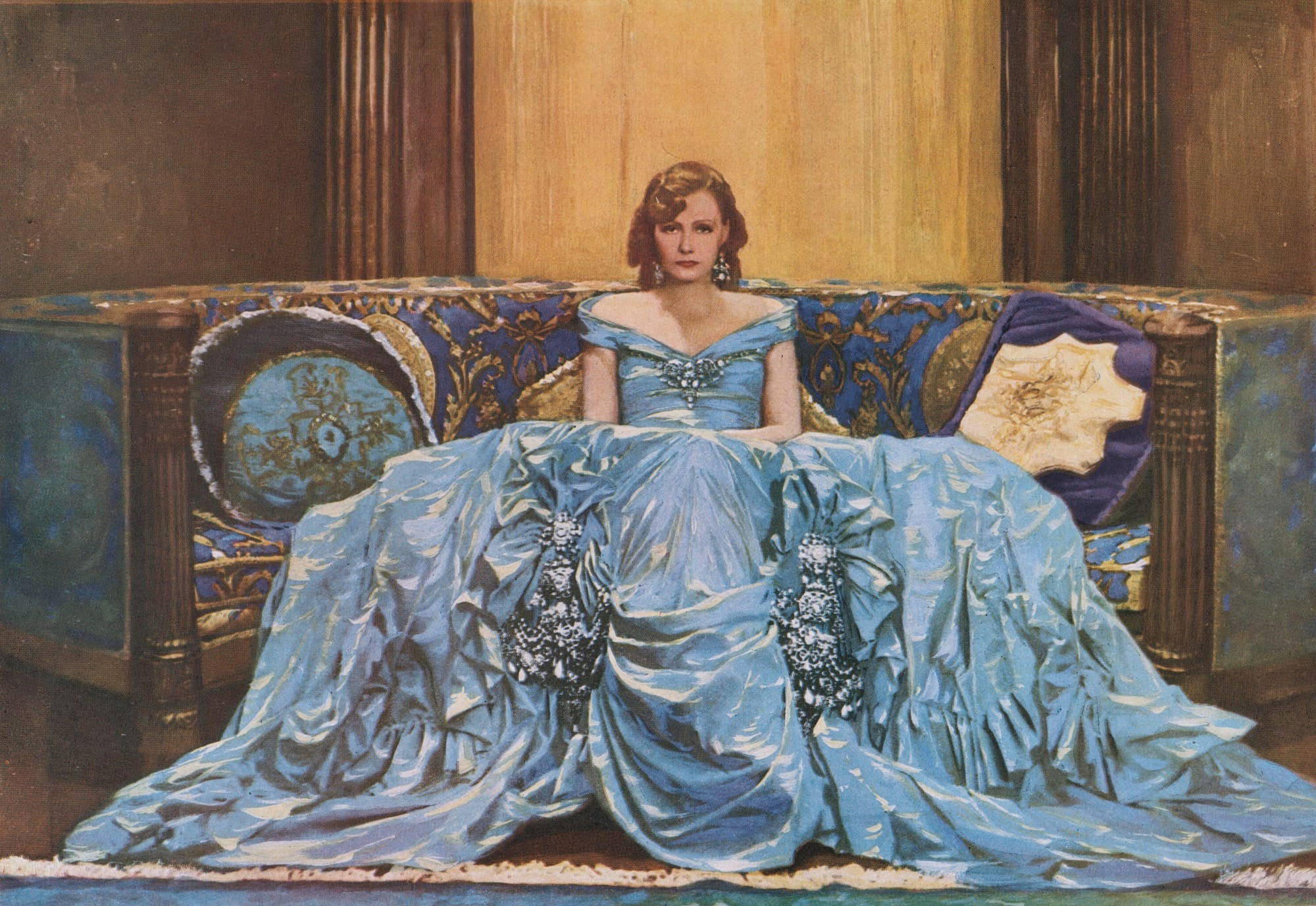
dal film "ROMANCE" MGM
Pag. 12 dell'Album MERCEDES FILM PHOTOS 4
(Personal collection)
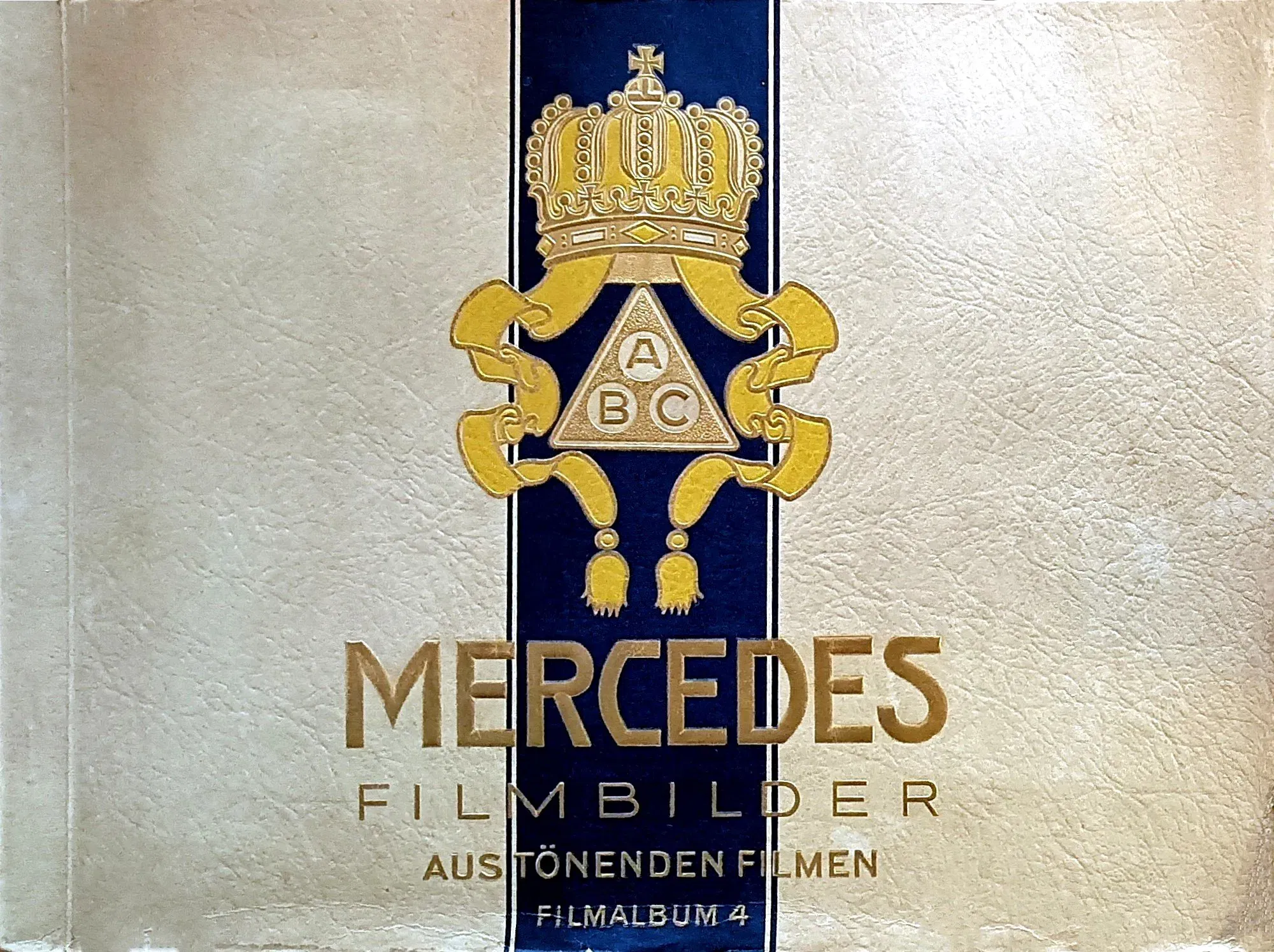
Greta Garbo, who plays Rita Cavallini, a famous opera singer, wears a series of elegant and sophisticated outfits that reflect her celebrity status and beauty. Her costumes are characterized by fine fabrics, such as silk and velvet, and are often decorated with refined details such as pearls and lace. These dresses not only enhance her figure, but also help to outline her character as a woman of great charm and complexity. One of Garbo's most memorable dresses in the film is a long dress immortalized in this insert from the 1932 album MERCEDES FILM-BILDER 4.
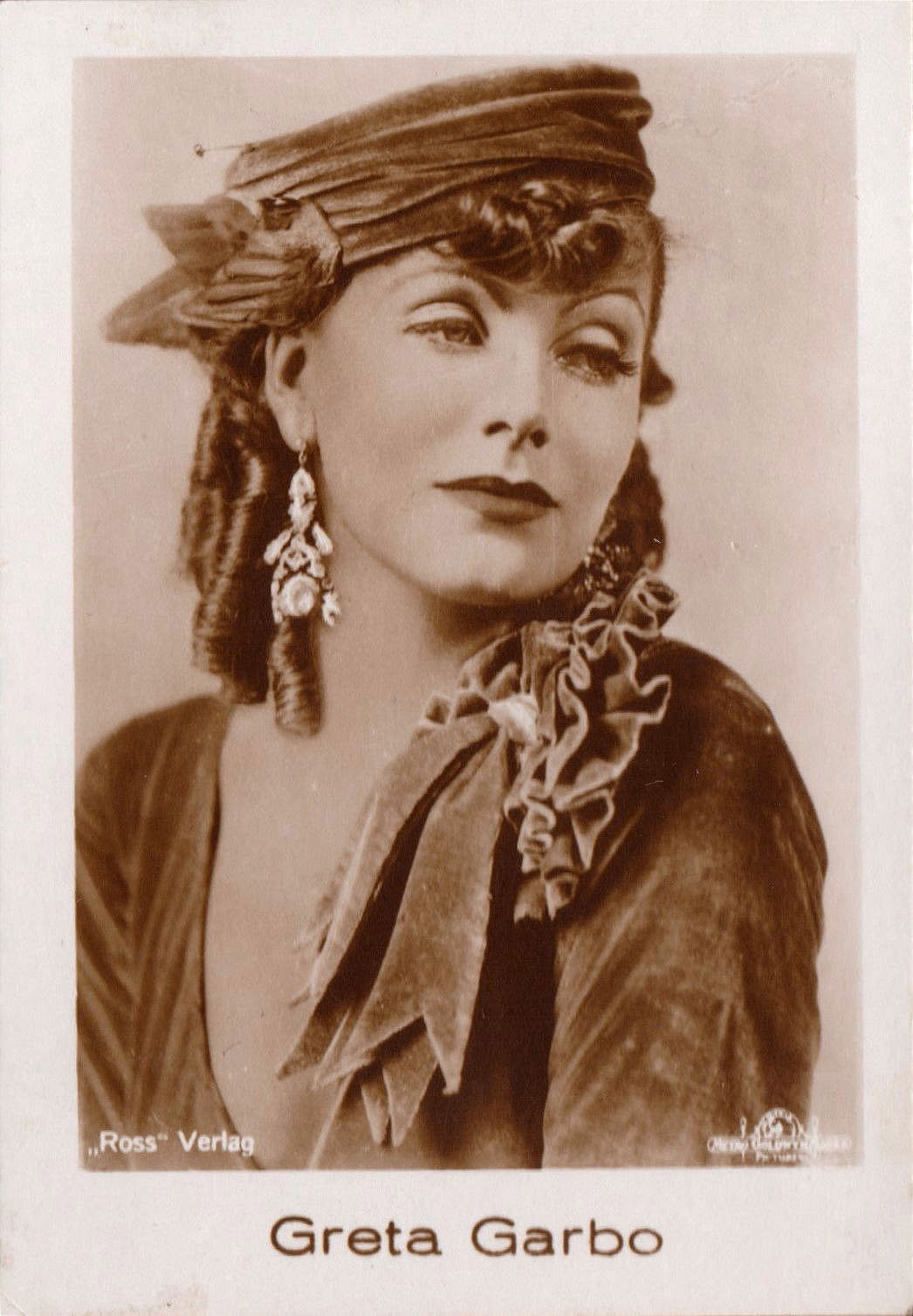
Greta Garbo in ROMANCE wearing earrings made by Eugene Joseff
Card n. 370 dell'Album HÄNSOM FILMBILDER TONFILM SERIES
(Personal collection)
The importance of accessories in cinema cannot be underestimated, and the costume jewelry created by Eugene Joseff is a perfect example of this. Eugene Joseff, also known as the Joseff of Hollywood, was a pioneer in the creation of costume jewelry for the cinema. Born in 1905, Joseff began his career as an apprentice in a foundry, but found his true calling in creating jewelry for Hollywood. In the 1920s, he moved to Los Angeles, where the film industry was booming, and began experimenting with jewelry making in the garage of his Sunset Boulevard home.
Joseff developed a matte metallic finish for his jewelry, which minimized glare from the studio's strong lights. This innovation allowed him to become an invaluable asset to Hollywood costume designers, who could use his jewelry without worrying about unwanted reflections. Joseff also amassed an extensive reference library to help him create pieces for historical films, making him an expert in the field.
Joseff's costume jewelry quickly became in high demand, and his brand, "Joseff of Hollywood," became synonymous with elegance and quality. He created exquisite pieces for famous actresses such as Marlene Dietrich in "Shanghai Express", Greta Garbo in "Camille" and Vivien Leigh in "Gone with the Wind". His ability to create jewelry that enhanced the beauty of stars and helped outline their characters made him a staple in the film industry.
The collaboration between Joseff and Hollywood costume designers helped elevate the jeweler's role in cinema, turning him into a key figure in creating the aesthetics of films. Her jewelry not only enriched the visual narrative, but also helped define the characters and create an authentic and engaging atmosphere.
Joseff continued to create jewelry for cinema until his death in 1948, but his legacy lives on today. His company, Joseff of Hollywood, continues to produce jewelry and rent it to film studios, keeping alive the tradition started by Eugene Joseff. The costumes, designed by Adrian, together with Joseff's accessories, help to create a visually fascinating and believable image of the era.
KILL HARI

MOVIE POSTER
Another collaboration between Adrian and Greta Garbo materialized in the 1931 film "Mata Hari", directed by George Fitzmaurice. This drama film tells the story of the famous spy and exotic dancer Mata Hari, played by Garbo, set during the First World War.
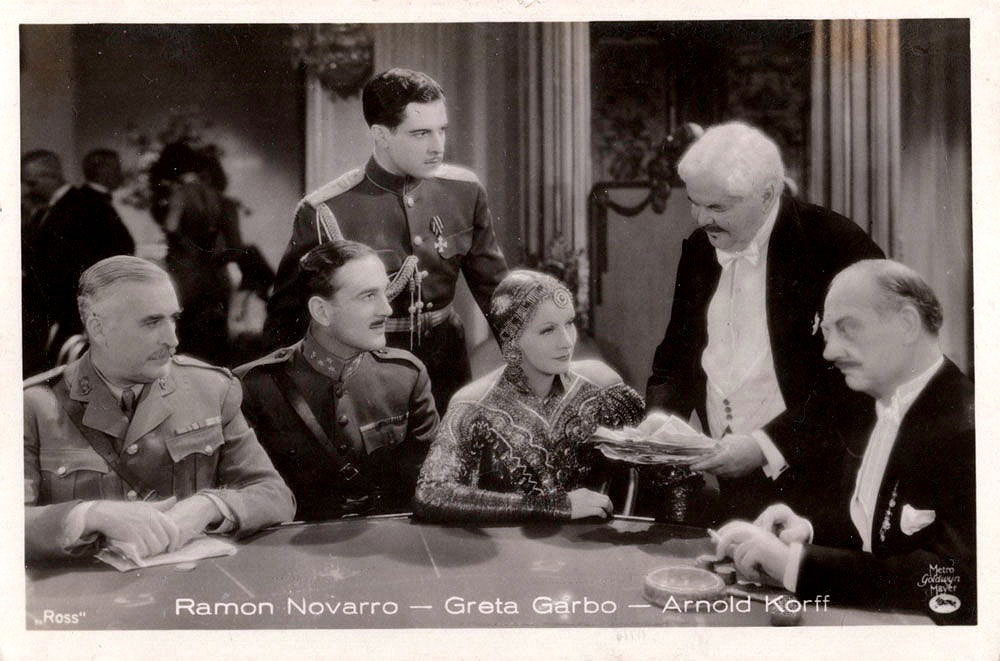
Card n.7 dell'Album MERCEDES FILM PICTURES 5
(personal collection)
The plot follows Mata Hari as she uses her charm and beauty to obtain secret information from the military authorities, weaving relationships with important military figures such as Russian General Serge Shubin, played by Lionel Barrymore, and young Lieutenant Alexis Rosanoff, played by Ramón Novarro.

Cards n.8 e n.10 dell'Album MERCEDES FILM PICTURES 5
(personal collection)
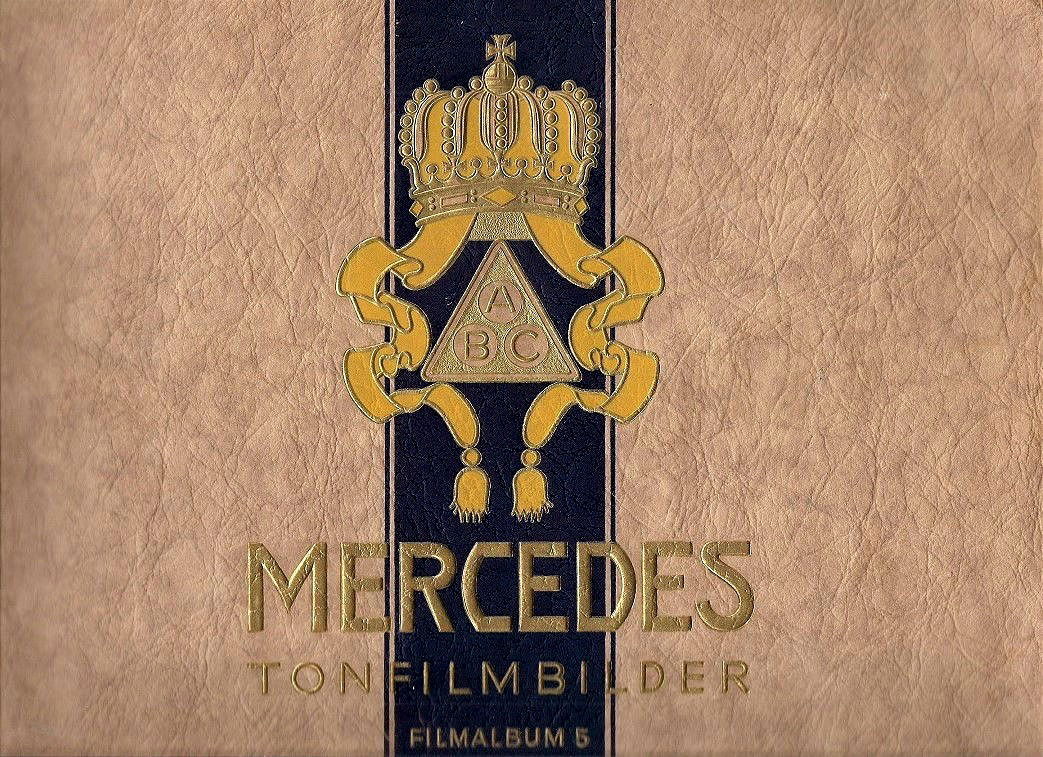
The costumes of the film, designed by Adrian, are essential to create the exotic and mysterious atmosphere of the character of Mata Hari. Adrian has been able to combine Eastern and Western elements in Garbo's costumes, using rich fabrics and elaborate details to enhance her beauty and charm. Mata Hari's outfits in the film feature veils, sparkling jewelry, and exotic accessories, which help to create an image of seduction and mystery.
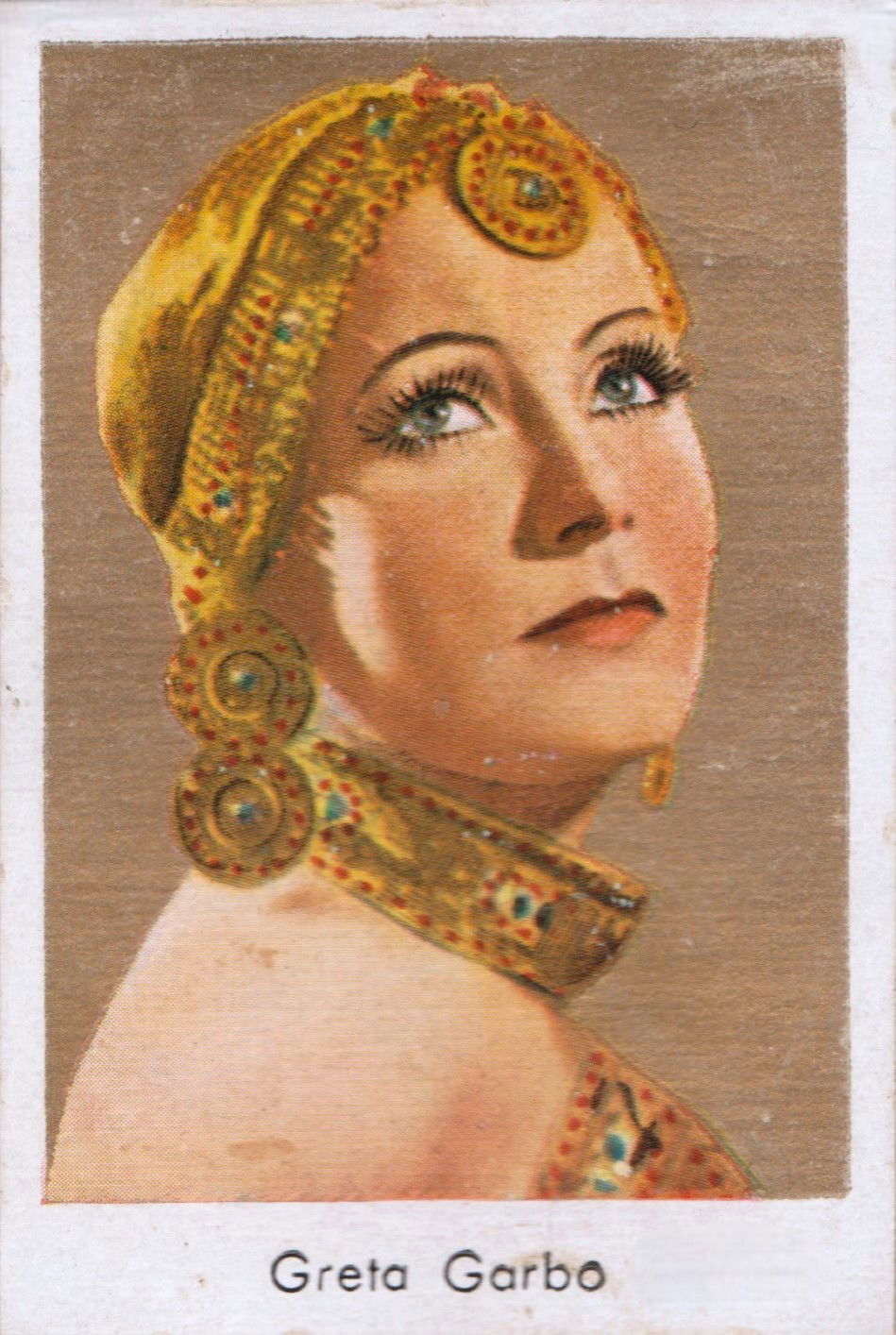
Card position 3 pag.15 SALEM-GOLD-FILM-BILDER ALBUM 2
(Personal collection)
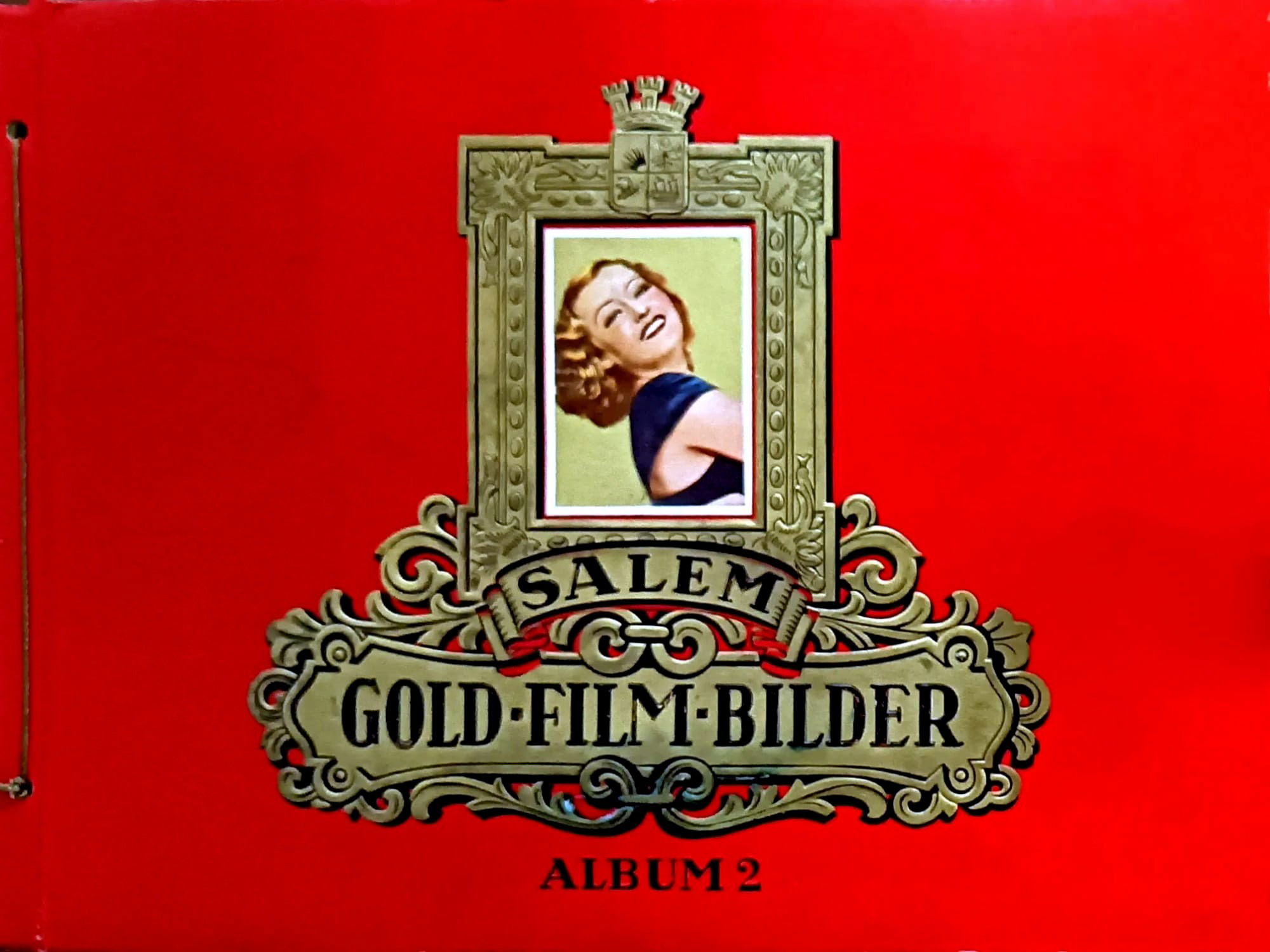
Greta Garbo's performance as Mata Hari was critically acclaimed and helped solidify her reputation as one of the biggest movie stars of the time. Her ability to convey complex emotions and embody the character of Mata Hari with grace and intensity made the film a commercial and artistic success.
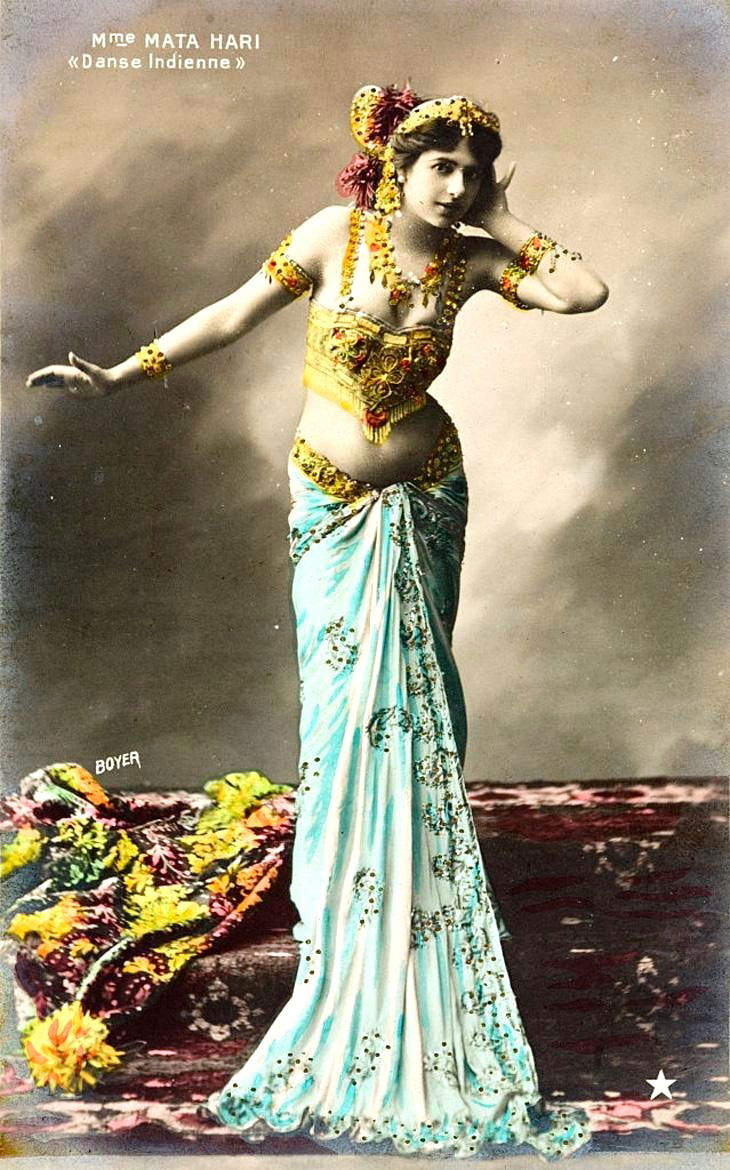
Postcard of Mata Hari performing the 'Danse Indienne' taken by Paul Boyer in 1907.
Adrian had carefully studied the original costume of Mata Hari's character to create an authentic and convincing look for Greta Garbo in the 1931 film. Adrian was known for his meticulous historical research and his ability to combine authentic elements with a touch of Hollywood glamour.
For the role of Mata Hari, Adrian examined photographs and historical descriptions of the real Mata Hari, an exotic dancer and spy during World War I. He used this information to create costumes that reflected the essence of the character, combining Eastern and Western elements to enhance the charm and mystery of Mata Hari. Garbo's costumes in the film feature rich fabrics, elaborate details, and exotic accessories, such as veils and sparkling jewelry, which help to create an image of seduction and power.
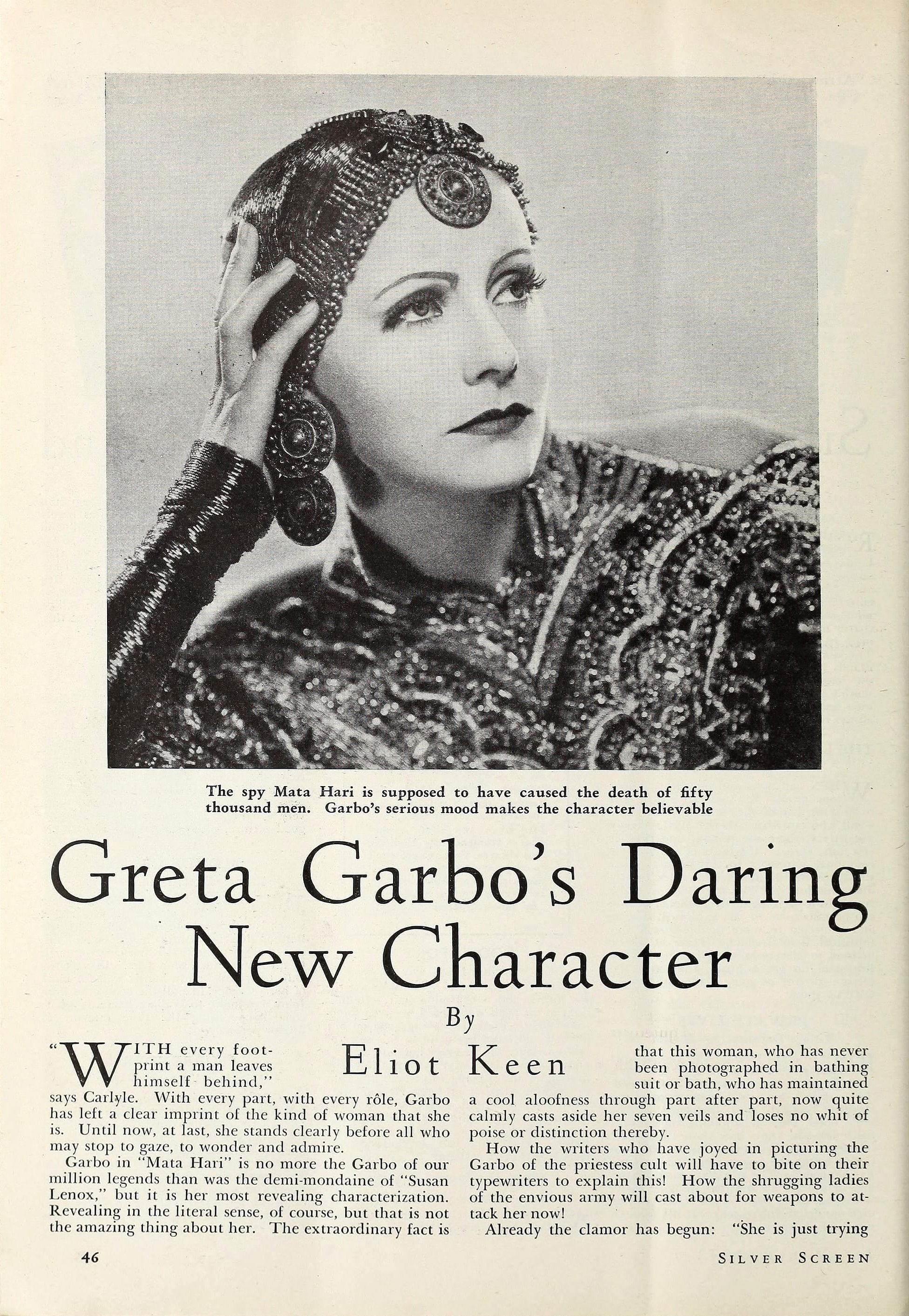
"Courtesy of the Media History Digital Library"
Excerpt from the periodical Silver Screen (Nov 1931-Oct 1932)
Eliot Keen's article praises Greta Garbo for her portrayal of Mata Hari, a spy famous for causing the deaths of fifty thousand men. Garbo's serious mood makes the character believable and charming. Keen points out that with each role she played, Garbo has left a clear imprint of the kind of woman she is. In "Mata Hari", Garbo presents himself in one of his most revealing characterizations. She is no longer the Garbo of popular legends or the *demi-mondaine of "Susan Lenox", but a figure who reveals a lot about herself, both literally and metaphorically. The extraordinary thing about Garbo, according to Keen, is that, despite never being photographed in a swimsuit or in intimate situations, she maintained a cold detachment in every role. Now, in "Mata Hari", she puts aside her seven veils with tranquility, without losing any of her distinction or elegance. Keen concludes that writers who have described Garbo as a priestess will have to revise their opinions, and envious women will have to find new ways to attack her. The hype has already begun, with critics claiming that Garbo is just trying to get attention.
*The term "demi-mondaine" refers to a woman who lives on the margins of respectable society, often maintained by rich and influential men. This term was used to describe women who, while not prostitutes in the traditional sense, lived a life of luxury thanks to their wealthy lovers. In the context of the 1931 film "Susan Lenox (Her Fall and Rise)", directed by Robert Z. Leonard and starring Greta Garbo and Clark Gable, the term "demi-mondaine" is used to describe the character of Susan Lenox, played by Garbo. The plot follows the life of Susan, a woman who escapes from a forced marriage and finds herself living a life of luxury and scandal, supported by rich and powerful men. So when Eliot Keen's article refers to Garbo as "demi-mondaine of 'Susan Lenox'," he is emphasizing Garbo's role as a woman who lives on the fringes of respectable society, maintained by wealthy men, and who uses her charm and beauty to get what she wants.
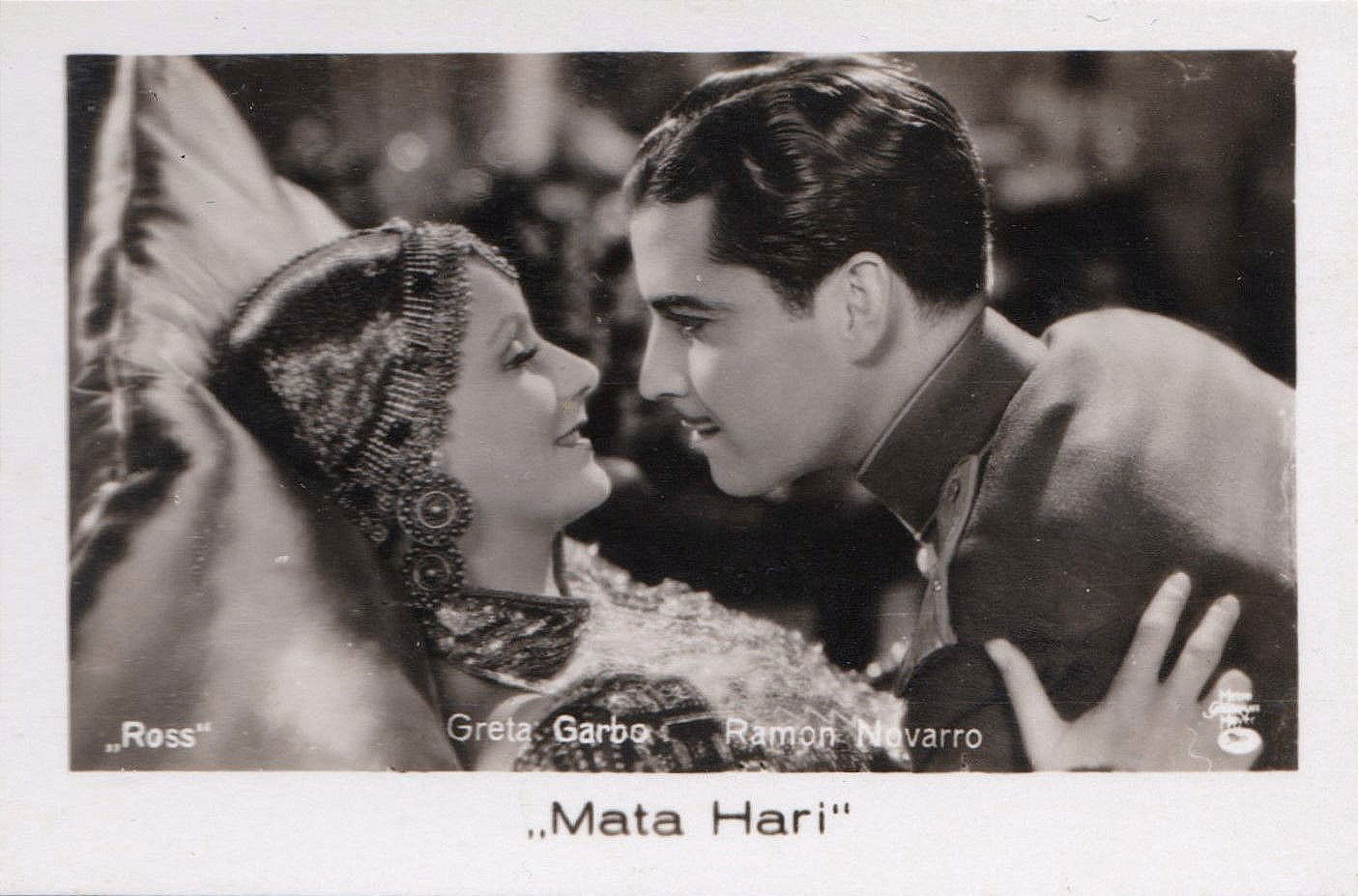
Card position 1 pag. 31 of the Album RAMSES FILMBILDER 1
(Personal collection)
The collaboration between Garbo and Novarro in "Mata Hari" was a perfect example of how two great movie stars can work together to create a memorable film. Their on-screen chemistry, combined with Fitzmaurice's direction and Adrian's costumes, helped make "Mata Hari" a classic of 1930s cinema. Garbo and Novarro's performance made the film a commercial and artistic success, further cementing their reputation as two of the biggest movie stars of the time.
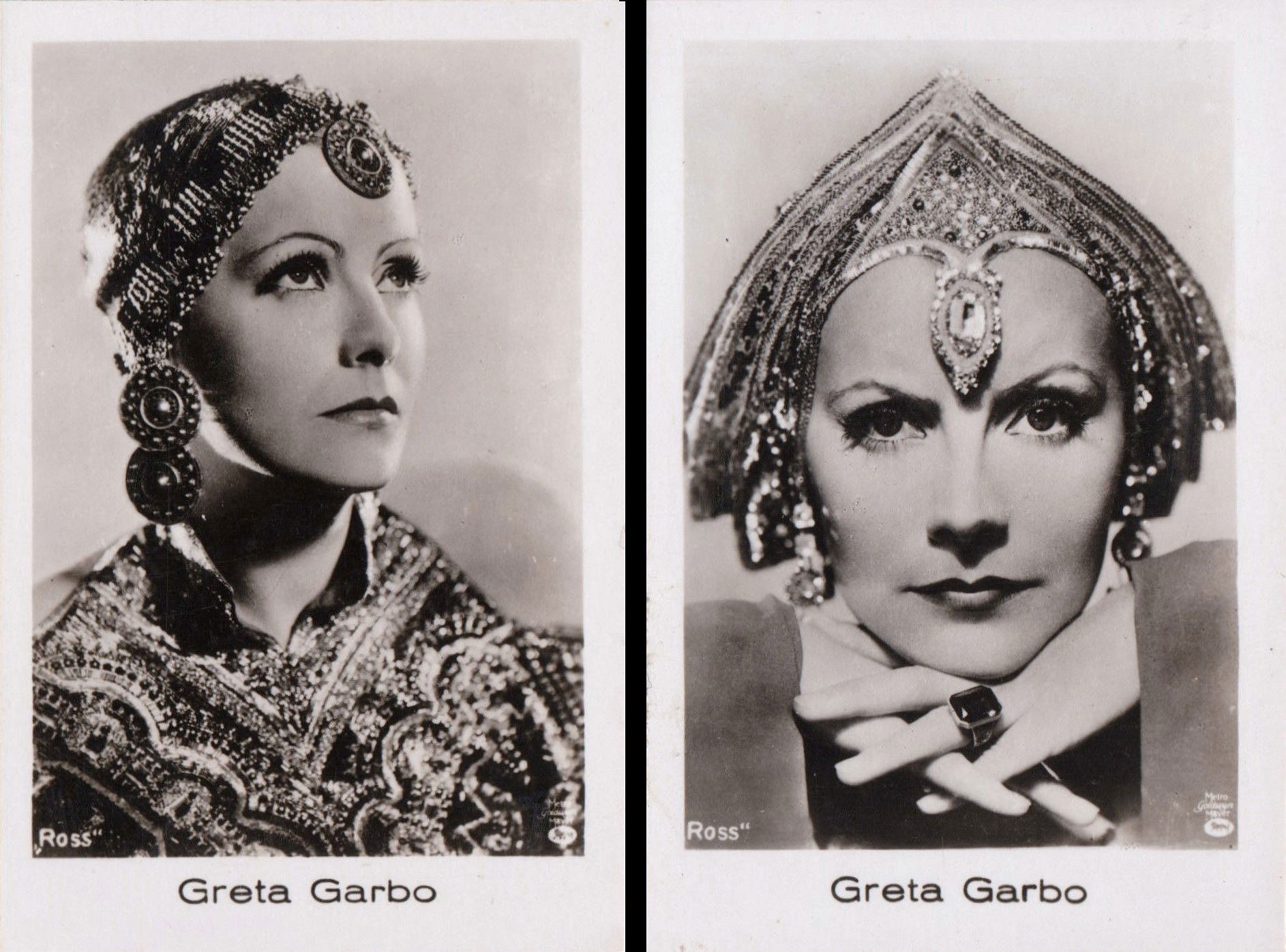
Cards position 5 and 8 of page 2 RAMSES FILMBILDER ALBUM 1
(Personal collection)
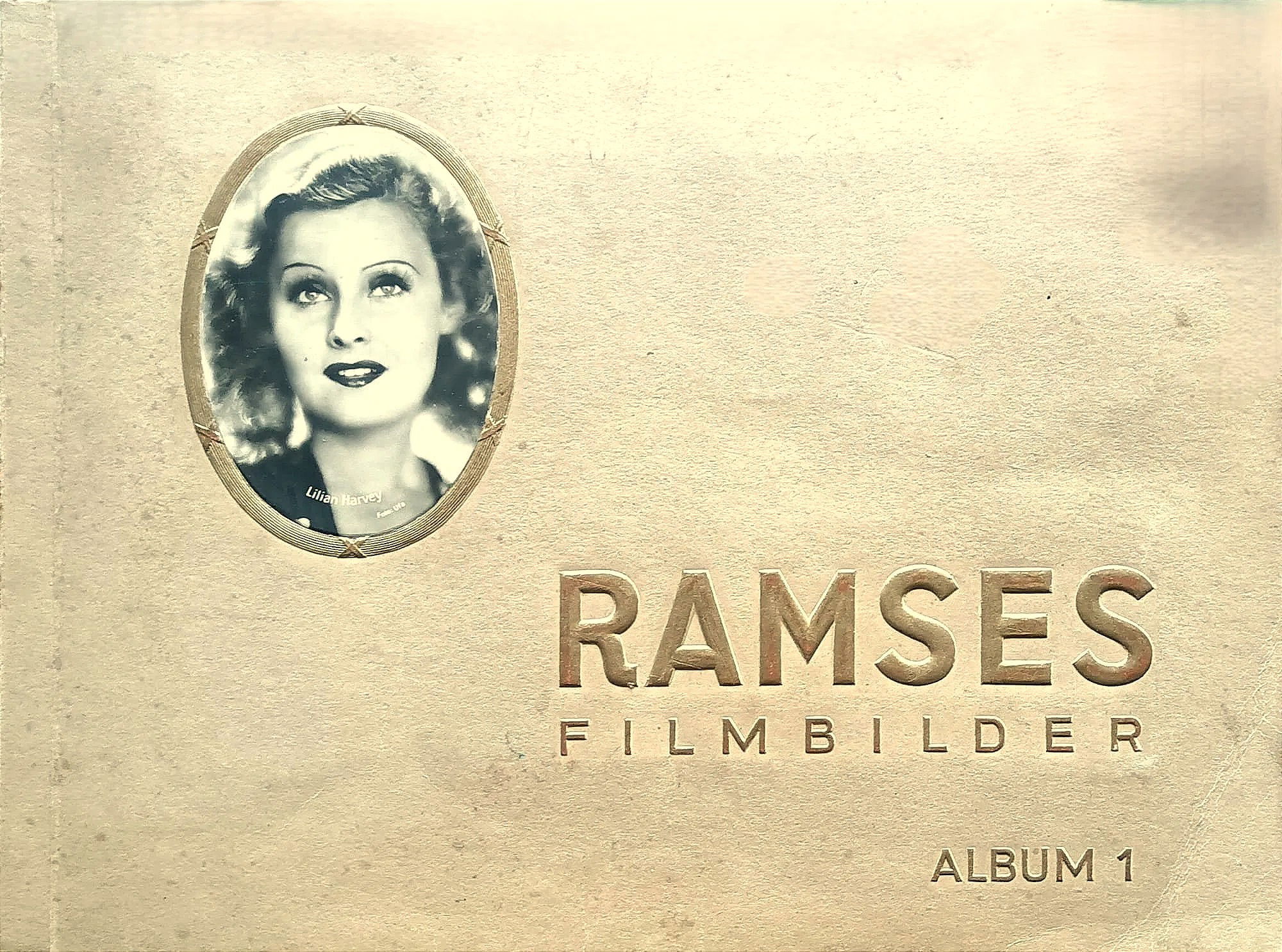
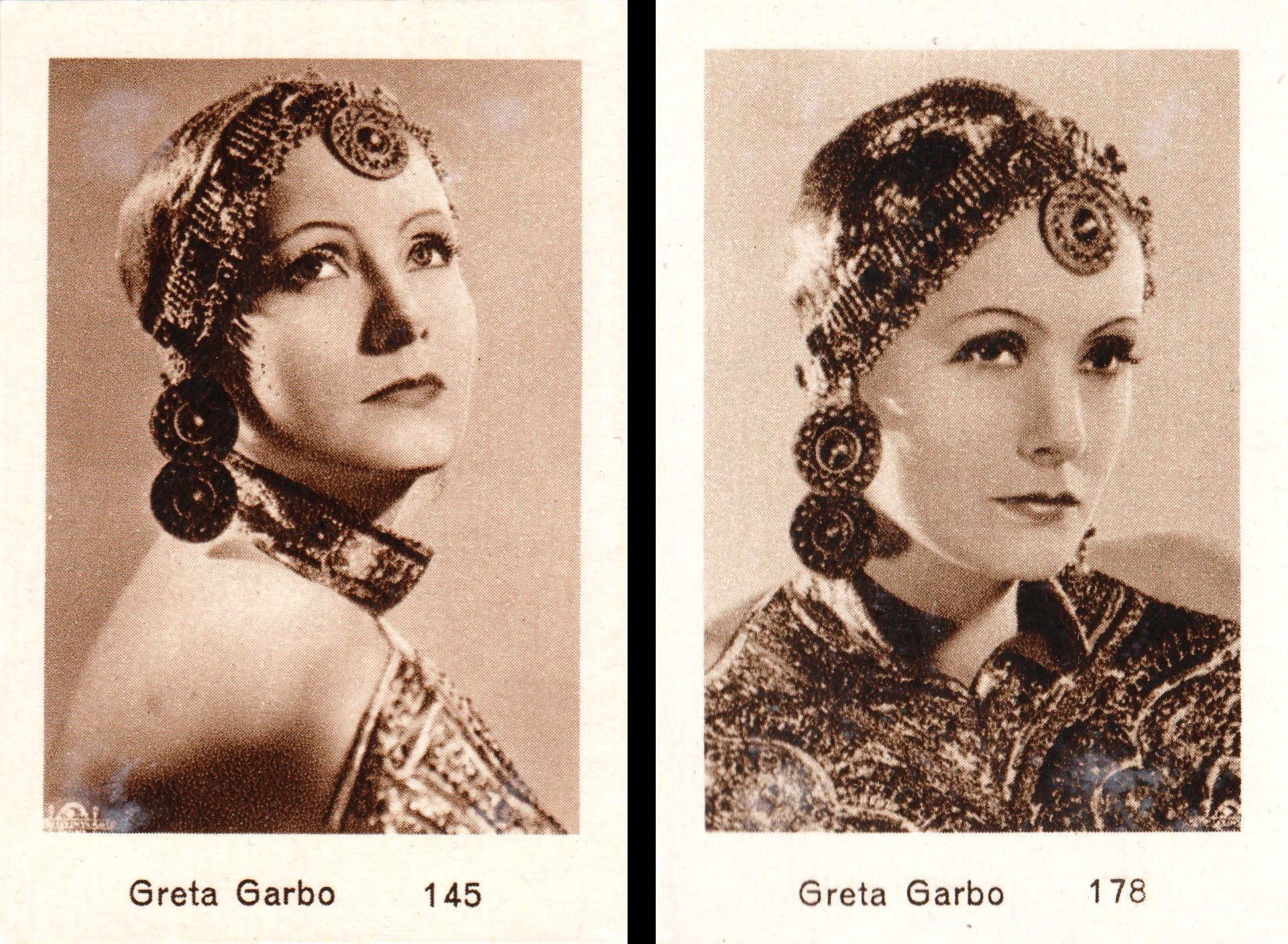
Cards n.145 e 178 dell'Album MONOPOLY FILM IMAGES
(Personal collection)
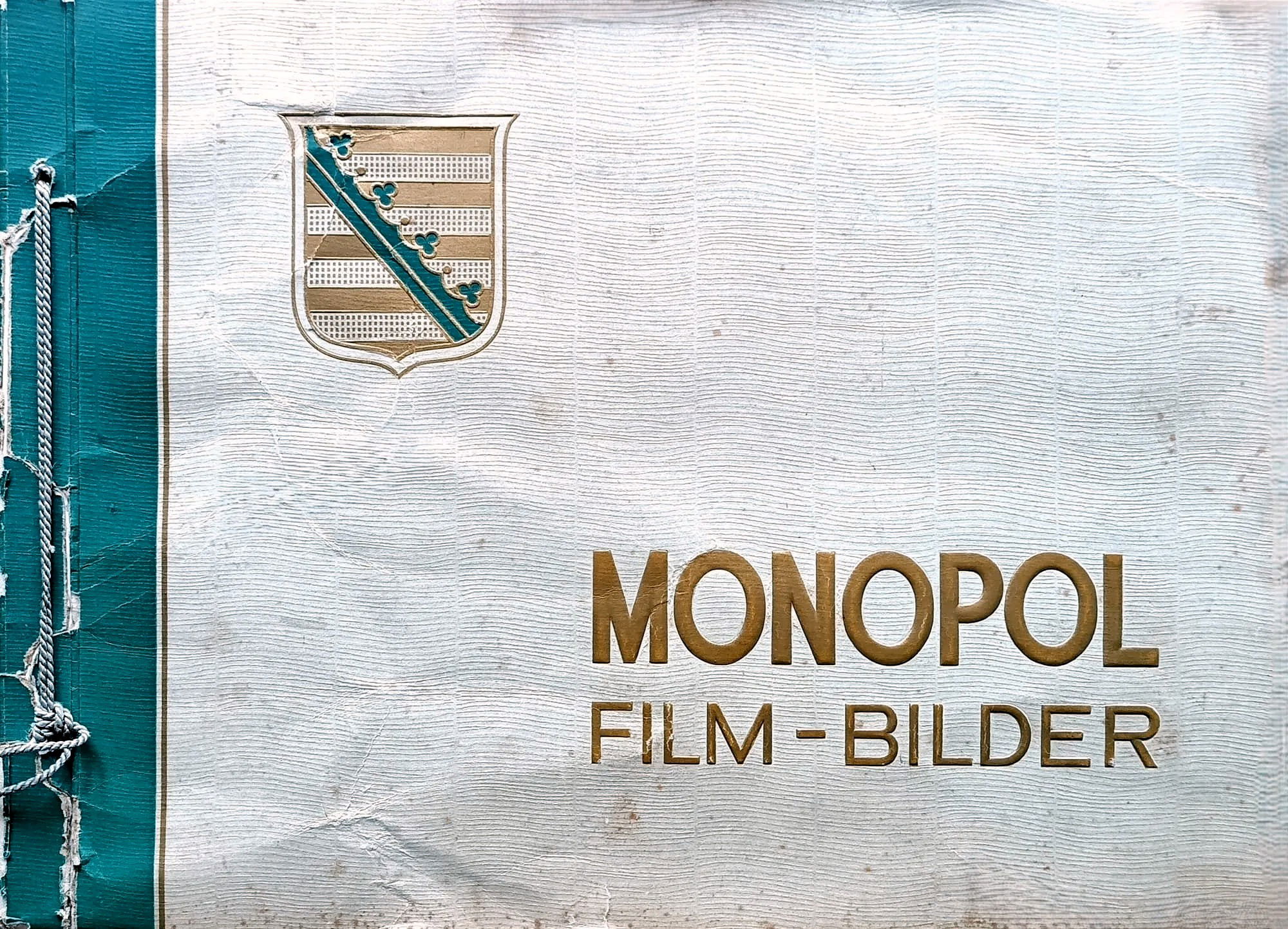
"Mata Hari" is a perfect example of how costumes can play a crucial role in cinematic storytelling, helping to create believable and fascinating worlds that capture the imagination of the audience. The collaboration between Adrian and Greta Garbo elevated the role of the costume designer in the film industry, demonstrating that costumes can be an essential part of visual storytelling and contribute significantly to the success of a film.

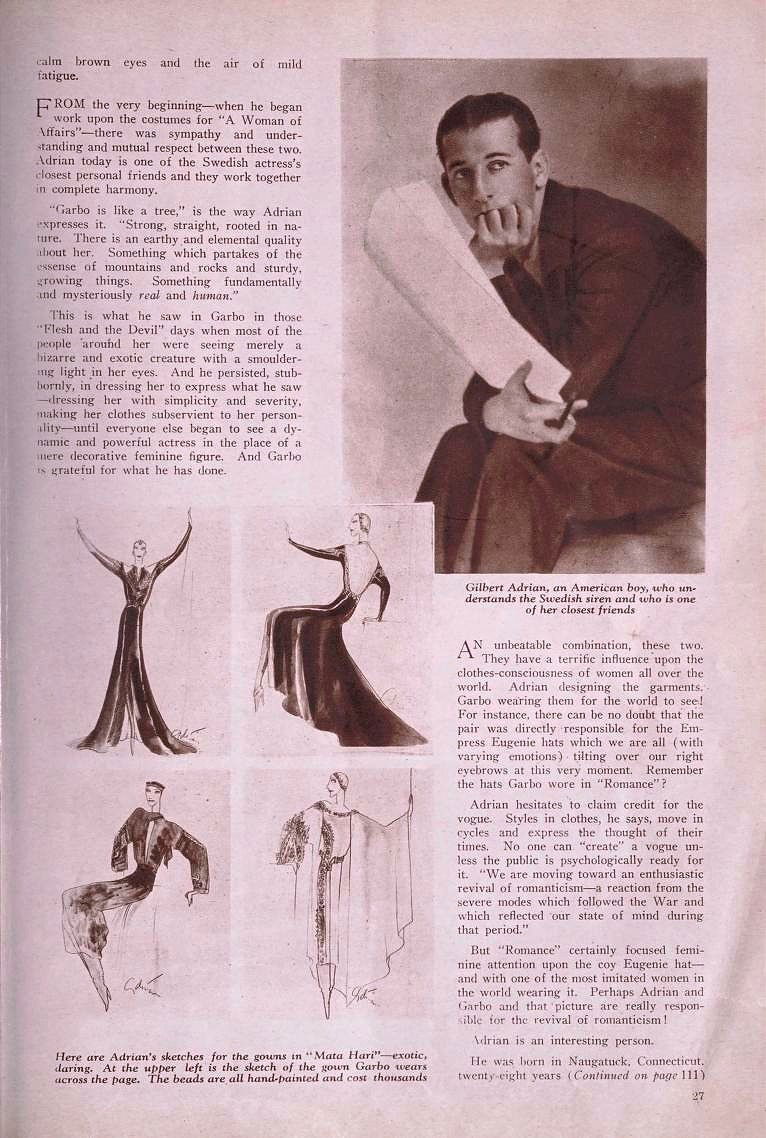
"Courtesy of the Media History Digital Library"
Dressing the Glamour Garbo
His favorite colors, his favorite materials, the styles to which he responds most: all this Adrian offers to Greta, the Great.
By HELEN LOUISE WALKER
Greta Garbo might not still be in the movie business today if Adrian hadn't become the head costume designer of Metro-Goldwyn-Mayer when he did! If Adrian hadn't started working on that lot, Garbo might have gone the way of other "vamps" and wouldn't have become the distinctly different individual in the movies that now intrigues our imaginations. It was Adrian who first sensed the quality of the real Garbo and was largely responsible for the change from a fantastical and artificial figure of the screen to a defined and powerful personality. Garbo herself realizes this. He attributes much of his success to the slender young man with calm brown eyes and an air of mild fatigue.
From the beginning—when she began working on the costumes for "A Woman of Affairs"—there was sympathy, understanding, and mutual respect between these two. Adrian today is one of the Swedish actress' closest personal friends and they work together in complete harmony.
"Garbo is like a tree," is how Adrian expresses it. "Strong, straight, rooted in nature. There is an earthly and elemental quality in her. Something that participates in the essence of mountains and rocks and robust, growing things. Something fundamentally and mysteriously real and human."
This is what she saw in Garbo in the days of "Flesh and the Devil" when most people around her saw only a bizarre and exotic creature with a blazing light in its eyes. And he persisted, stubbornly, in dressing her to express what he saw—dressing her simply and severely, making her clothes subordinate to her personality—until everyone else began to see a dynamic and powerful actress instead of a simple decorative female figure. And Garbo is grateful for what she did.
Gilbert Adrian, an American boy, who understands the Swedish mermaid and who is one of her closest friends.
An unbeatable combination, these two. They have a tremendous influence on the clothing awareness of women all over the world. Adrian designs the garments, Garbo wears them for the whole world! For example, there is no doubt that the couple was directly responsible for Empress Eugenie's hats that we all (with varying emotions) are raising above our right eyebrows right now. Do you remember the hats Garbo wore in "Romance"?
Adrian hesitates to claim credit for fashions. Styles in clothes, he says, move in cycles and express the thinking of their times. No one can "create" a fashion unless the public is psychologically ready for it. "We're moving toward an enthusiastic resurgence of romance—a reaction from the harsh ways that followed the war and reflected our mood during that time."
But "Romance" certainly focused female attention on Eugenia's flirtatious hat—and with it the most imitated woman in the world who wears it. Maybe Adrian and Garbo and that movie are really responsible for the resurgence of romance!
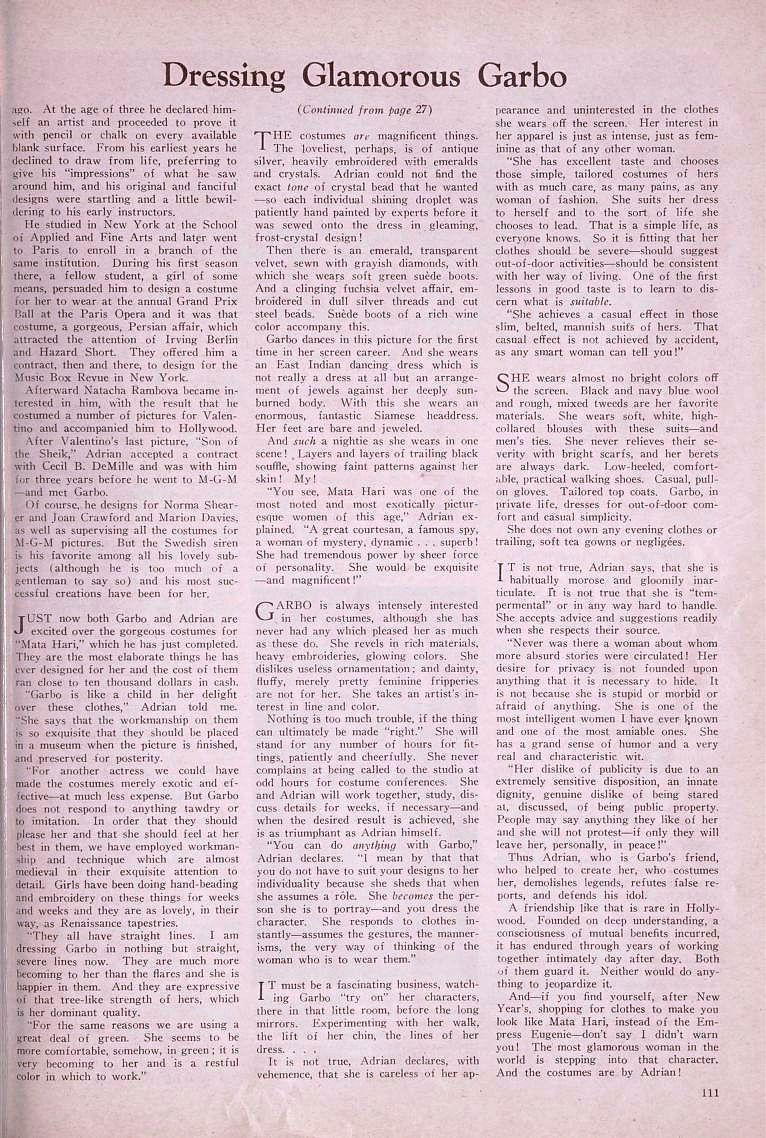
"Courtesy of the Media History Digital Library"
Adrian is an interesting person. At the age of three, he declared himself to be an artist and began to demonstrate it with pencils or chalk on every available surface. From his earliest years, he refused to draw from life, preferring to give his "impressions" of what he saw around him, and his original and imaginative drawings were surprising and a bit puzzling to his early teachers. He studied in New York at the School of Applied and Fine Arts and later went to Paris to enroll in a branch of the same institution. During his first season there, a fellow student, a girl of some means, persuaded him to design a costume for her to wear to the annual Grand Prix ball at the Paris Opera and it was that costume, a lavish Persian affair, that caught the attention of Irving Berlin and Hazard Short. They offered him a contract, on the spot, to design for the Music Box Revue in New York. Later Natacha Rambova became interested in him, with the result that she costumed several films for Valentino and accompanied him to Hollywood. After Valentino's last film, "Son of the Sheik," Adrian agreed to a contract with Cecil B. DeMille and stayed with him for three years before going to M-G-M and meeting Garbo. Of course, he designs for Norma Shearer, Joan Crawford and Marion Davies, as well as overseeing all the costumes for M-G-M films. But the Swedish mermaid is his favorite of all his adorable subjects (although he is too gentleman to say so) and his most successful creations have been for her.
Right now both Garbo and Adrian are excited about the lavish costumes for "Mata Hari", which she has just completed. They are the most elaborate things I have ever designed for her, and they cost close to ten thousand dollars in cash. "Garbo is like a child in her enthusiasm for these clothes," Adrian told me. "He says the workmanship on them is so exquisite that they should be placed in a museum when the film is finished and preserved for posterity.
"For another actress we could have done the costumes simply exotic and effective, at a much lower cost. But Garbo does not respond to anything shoddy or imitation. To make sure that she likes them and feels her best in them, we have employed a workmanship and technique that is almost medieval in its exquisite attention to detail. The girls have been making beads and embroidery by hand on these things for weeks on end and they are beautiful, in their own way, like Renaissance tapestries.
"Everyone has straight lines. I'm just dressing Garbo with straight, severe lines now. They are much better suited to her than flares and she is happier in them. And they are expressive of that tree-like force that is its dominant quality.
"For the same reasons we are using a lot of greenery. He seems to be more comfortable, somehow, in green; it's very suitable for her and is a restful color to work in."
The costumes are magnificent things. The most beautiful, perhaps, is antique silver, heavily embroidered with emeralds and crystals. Adrian couldn't find the exact tone of crystal beads he wanted, so every single sparkling drop was patiently hand-painted by experts before being sewn onto the dress in a shimmering ice crystal design! Then there is an emerald transparent velvet, sewn with gray diamonds, with which she wears soft green suede boots. And a tight-fitting velvet dress fuchsia, embroidered with matte silver threads and cut steel beads. Suede boots of a rich wine color accompany this.
Garbo dances in this film for the first time in his film career. And she wears an East Indian ball gown that is not really a dress, but a arrangement of jewelry against her deeply tanned body. With this she wears a huge, amazing Siamese headdress. His feet are bare and bejeweled. And what a nightgown he wears in a scene! Layers and layers of fluffy black, showing faint patterns against her skin! My god!
"You see, Mata Hari was one of the most well-known and most exotically colorful women of this era," Adrian explained. "A great courtesan, a famous spy, a woman of mystery, dynamic... superb! He had tremendous power by sheer force of personality. It would have been exquisite and magnificent!"
Garbo is always intensely interested in his costumes, even if she has never had any that she liked as much as these. He delights in rich materials, heavy embroidery, bright colors. She doesn't like unnecessary decorations; and graceful and merely pretty feminine frivolities are not for her. He takes an artistic interest in line and color. Nothing is too difficult, if in the end the thing can be done "right". He will stand for hours for rehearsals, patiently and cheerfully. She never complains about being called to study at odd hours for conferences on costumes. She and Adrian will work together, study, discuss details for weeks if necessary, and when the desired outcome is achieved, she is just as triumphant as Adrian himself.
"You can do anything with grace," says Adrian. "I mean you don't have to fit your drawings into her individuality because she loses it when she takes on a role. Become the person who has to play and you play the character. He responds to clothes instantly, he assumes the gestures, the mannerisms, the very way of thinking of the woman who has to wear them."
It must be a fascinating affair, watching Garbo "rehearse" his characters, there in that small room, in front of the long mirrors. Experimenting with the way she walks, the chin lift, the lines of her dress...
It is not true, Adrian vehemently declares, that she is indifferent to her appearance and uninterested in the clothes she wears off-screen. Her interest in her clothing is as intense as that of any other woman. "She has excellent taste and chooses those simple tailor-made costumes of hers with the same care, with the same attention, as any fashion woman. She adapts her dress to herself and the kind of life she chooses to lead. This is a simple life, as everyone knows. So it is right that his clothes are strict, that they suggest outdoor activities, that they are consistent with his lifestyle. One of the first lessons of good taste is learning to discern what is suitable.
"He achieves a casual effect in those masculine clothes of his, with a belt. That random effect is not achieved by accident, as any elegant woman can tell you!" He almost never wears bright colors off screen. Black and navy blue wool and rough blended tweed are her favorite materials. Wear soft, white, high-collared blouses with these men's suits and ties. He never lightens their severity with bright scarves, and histhe caps are always dark. Low, comfortable, practical walking shoes. Random gloves, to be pulled up. Tailor-made coats. Garbo, in private life, dresses for outdoor comfort and casual simplicity. She does not possess evening dresses or soft tea dresses or negligé. It's not true, Adrian says, that it's habitually gloomy and inarticulate. It is not true that it is "temperamental" or in any way difficult to manage. Accept advice and suggestions readily when you respect their source. "Never has there been a woman about whom more absurd stories have been spread! His desire for privacy is not based on anything that needs to be hidden. It's not because she's stupid or morbid or afraid of something. She is one of the smartest women I have ever met and one of the most lovable. He has a great sense of humor and a true and characteristic spirit. "His distaste for advertising is due to an extremely sensitive disposition, to an innate dignity, to a genuine disgust to be observed.
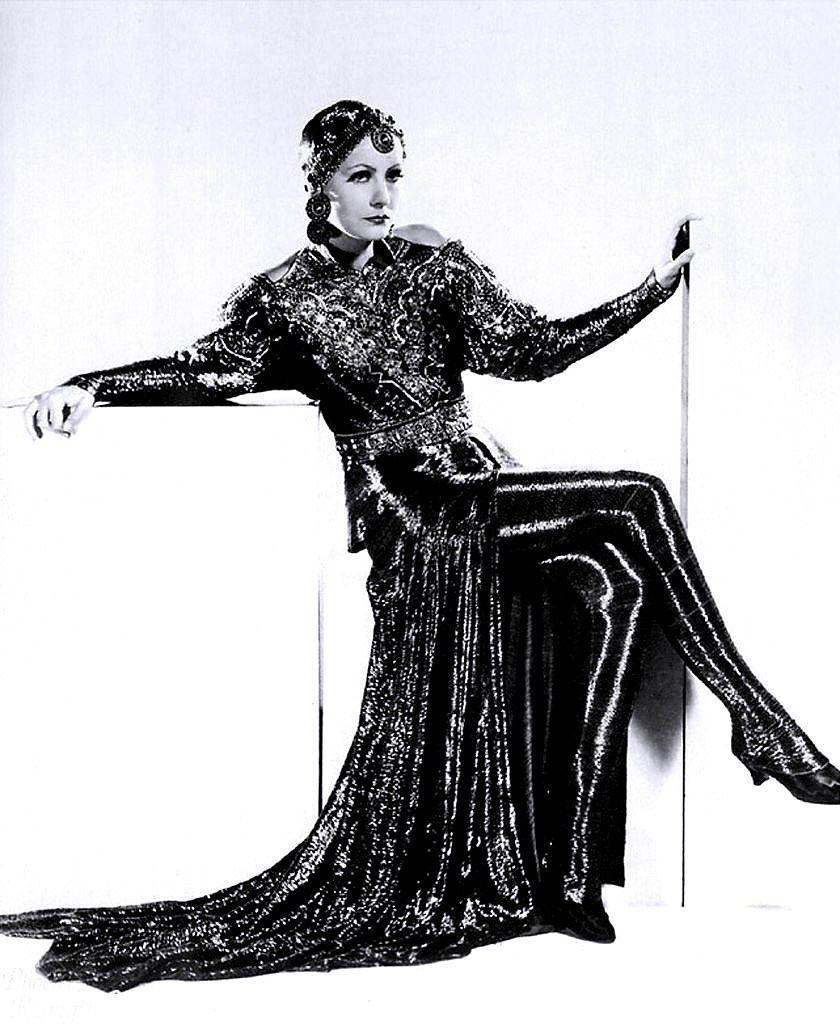
"Courtesy of the site doctormacro.com"
LETTY LYNTON
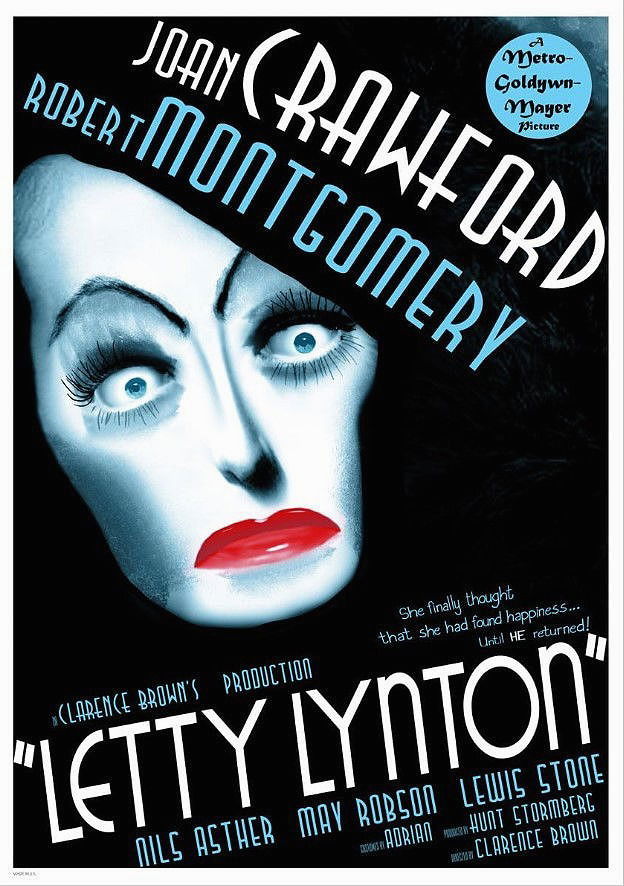
Movie Poster
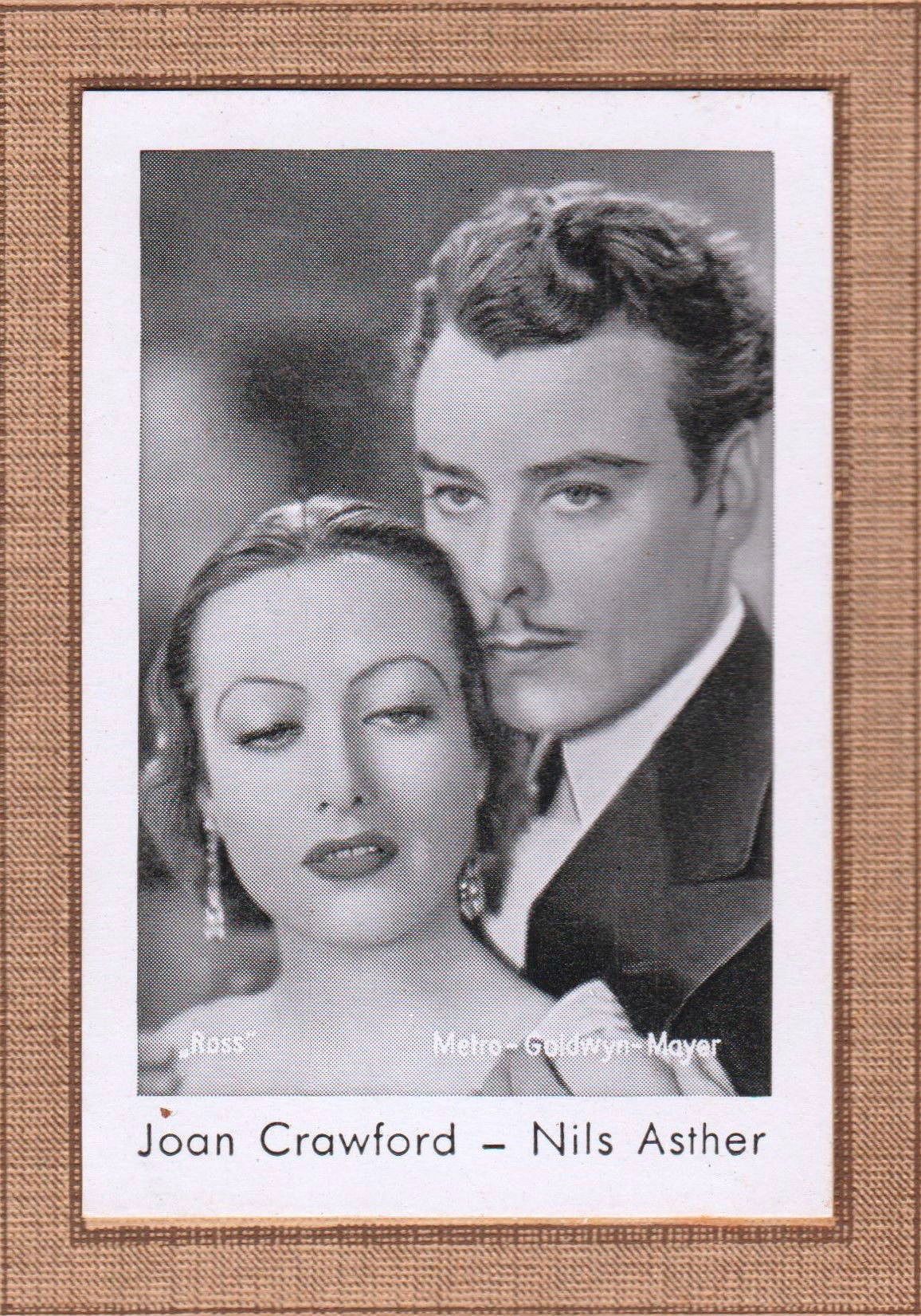
Card position 5 pag. 30
JOSETTI FILM ALBUM N°3
(personal collection)
The 1932 film "Letty Lynton," starring Joan Crawford, Robert Montgomery and Nils Asther, is known not only for its dramatic plot, but also for its iconic costumes, designed by legendary costume designer Adrian (Adrian Adolph Greenberg). The costumes in this film had a significant impact on the fashion of the time and continue to be remembered as examples of elegance and innovation in film design.

"Courtesy of the site doctormacro.com"
One of the most famous costumes in the film is the "Letty Lynton dress", a white organza dress with lush flared ruffles along the shoulders and hem. Who if not Adrian would think of putting a myriad of small white piqué cotton bows on a crumpled silk crepe dress? And what you don't see is the skirt with a slit, a bold touch for a sober dress. This dress has become a symbol of glamour and has caused a real fashion craze nationwide. It is estimated that up to half a million copies of the "Letty Lynton dress" were produced after the film's release. The dress was designed to harmonize Joan Crawford's physique, who had broad shoulders, a long waist and short legs. The ruffles and design of the dress helped to create an elegant and sophisticated look, which inspired many women to try to replicate Crawford's style.
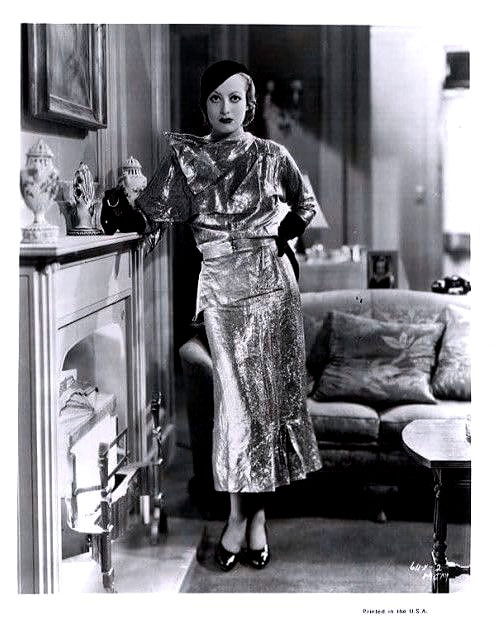
"Courtesy of the site IMBD.com"
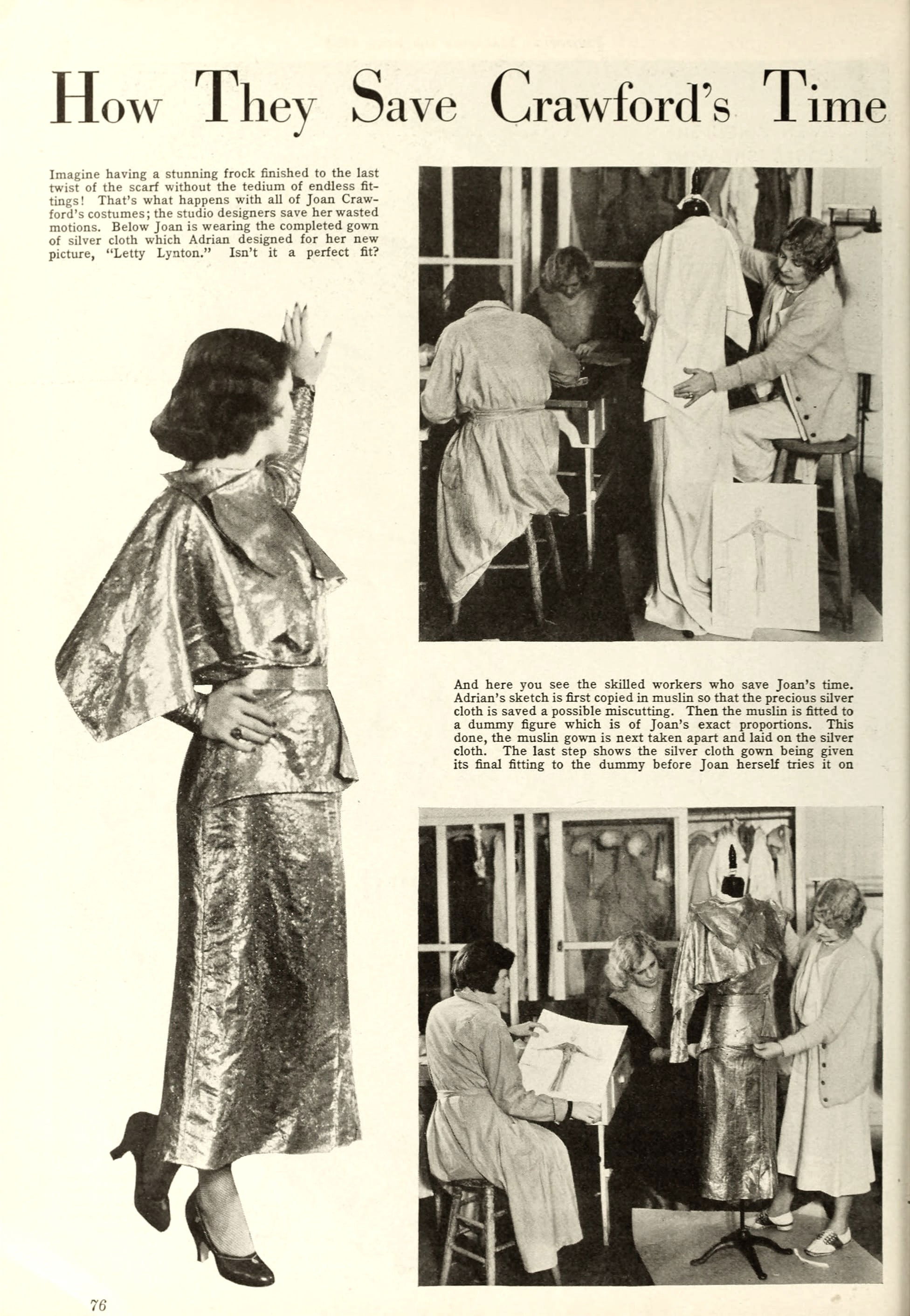
"Courtesy of the Media History Digital Library"
page 76 of the periodical Photoplay (January - June 1932)
The image shows a page from a vintage Photoplay magazine with the title "How They Save Crawford's Time". The page describes the process of creating a silver dress for Joan Crawford, designed by Adrian for the film "Letty Lynton". The page includes three photographs: one on the left, of Joan Crawford wearing the completed dress, and two showing the skilled workers creating the dress.
The text explains that Adrian's sketch is first copied in muslin to avoid wasting the precious silver fabric. The muslin is then fitted to a mannequin with Joan's exact proportions, then disassembled and placed on the silver fabric. The last step is to fit the silver dress to the mannequin before Joan tries it on.
In addition to the famous white dress, in the movie "Letty Lynton" Joan Crawford also wears a silver dress, which has been carefully designed to enhance her figure. This dress, like many other costumes in the film, was created with great attention to detail and materials, reflecting Adrian's ability to combine functionality and aesthetics. Adrian was one of the most influential costume designers in Hollywood, working with many of the biggest stars of the time, including Greta Garbo, Jean Harlow, and of course, Joan Crawford. Her ability to create clothes that not only looked magnificent on screen, but also influenced the fashion trends of the time, was one of the keys to her success.
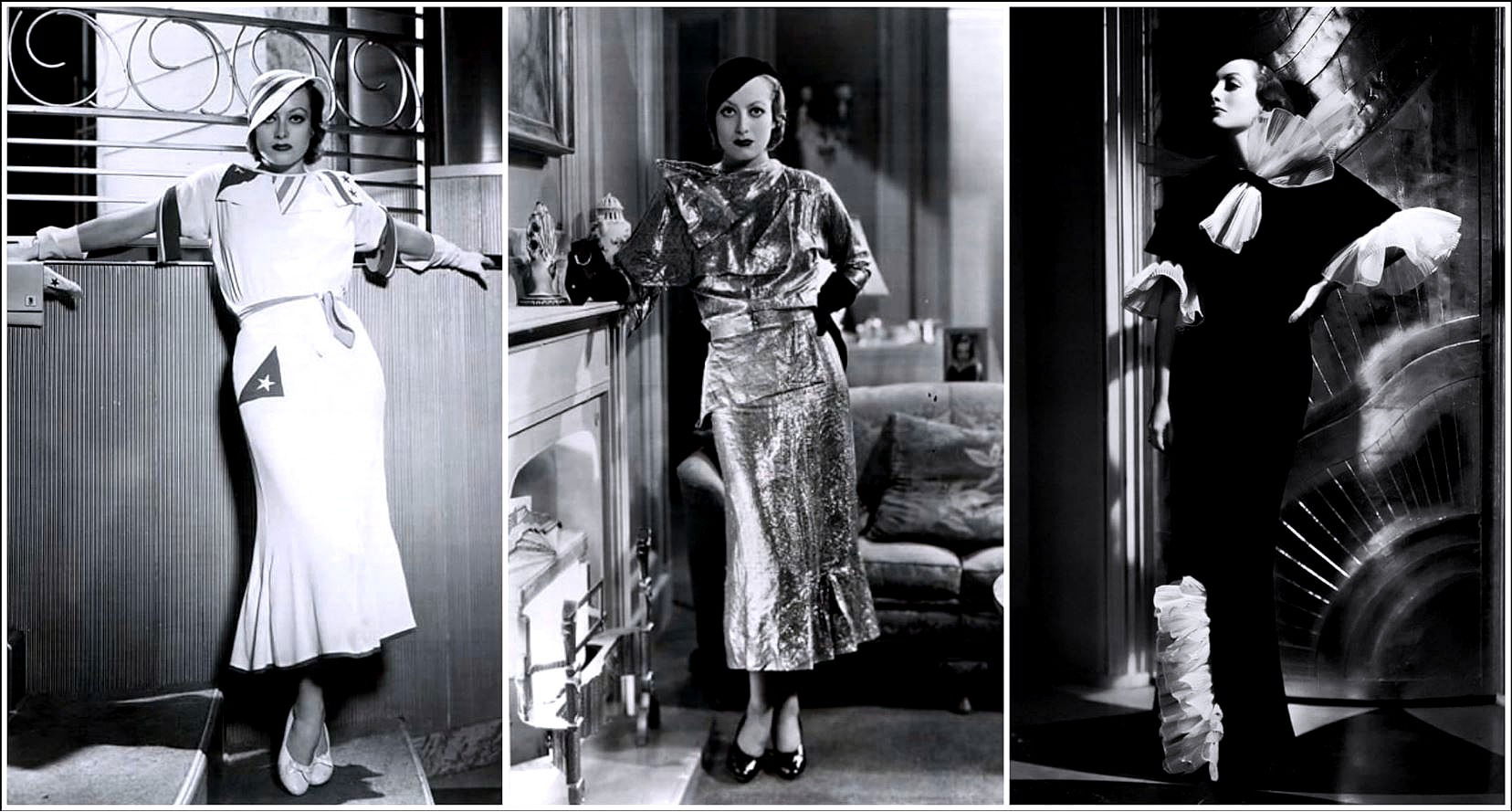
"Courtesy of the site IMBD.com"
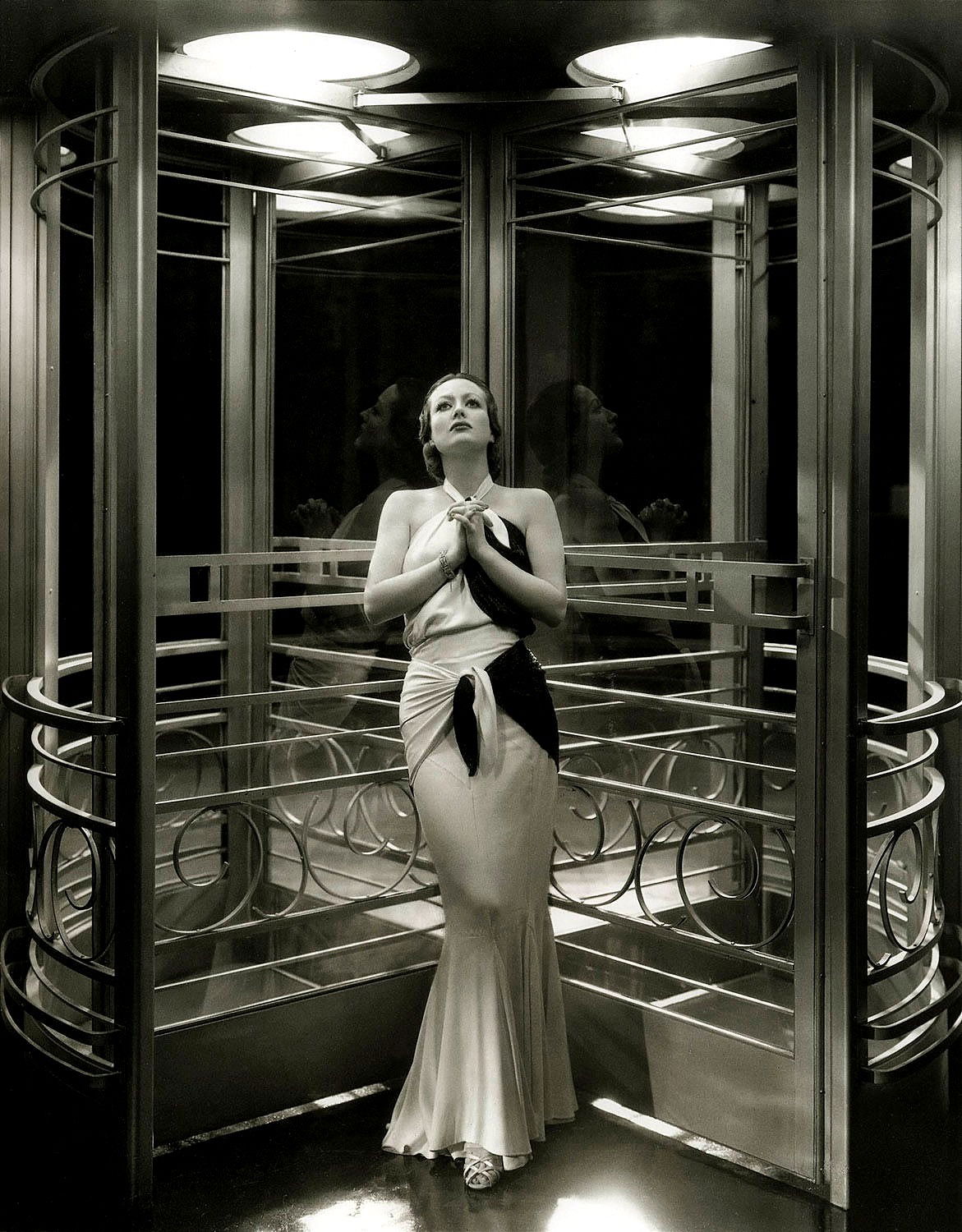
"Courtesy of the site doctormacro.com"
The image shows Joan Crawford standing in front of a revolving door with art deco design elements. She wears a long dress that is elegant, fitted and has a mermaid silhouette flared towards the bottom. The dress has a halter neckline and is adorned with a two-tone sash: black and white, tied around the waist, adding an element of contrast to the light-colored dress. The background with glass and lighting create a dramatic and sophisticated atmosphere, enhancing the elegance of the costume.
In the case of "Letty Lynton", Adrian's costumes played a crucial role in defining the film's aesthetic and characterizing Joan Crawford's character. The costumes of "Letty Lynton" have had a lasting impact on fashion and popular culture. The white ruffle dress has become a style icon, and its influence can be seen in many of the fashion trends of the 30s and beyond. Adrian's ability to create clothes that were both innovative and accessible helped make "Letty Lynton" a memorable film not only for its plot, but also for its contribution to fashion. In conclusion, the costumes of "Letty Lynton" are a perfect example of how film design can influence fashion and popular culture. Thanks to Adrian's talent, the film left an indelible mark on the history of cinema and fashion.
TODAY WE LIVE
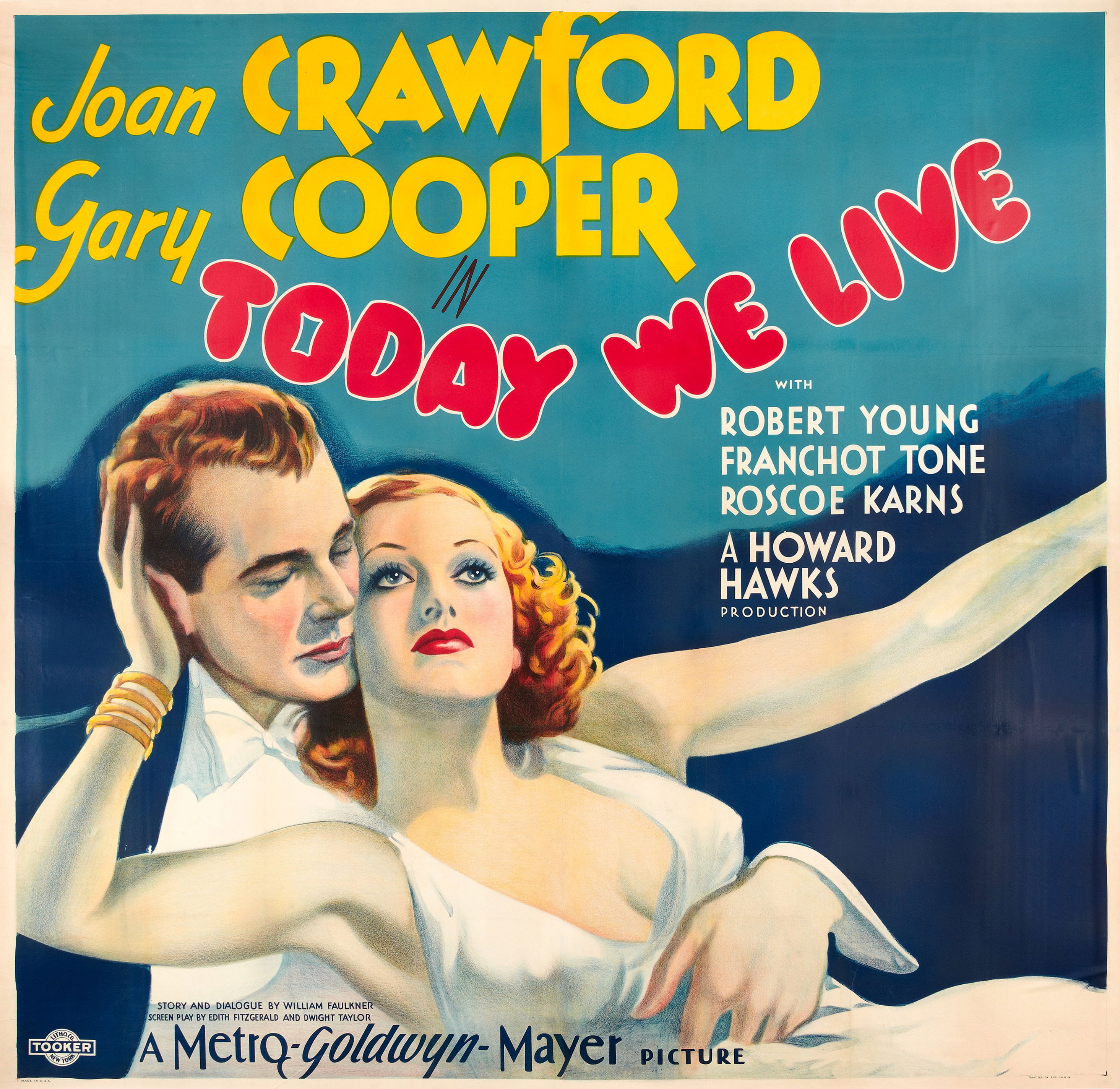
Movie Poster
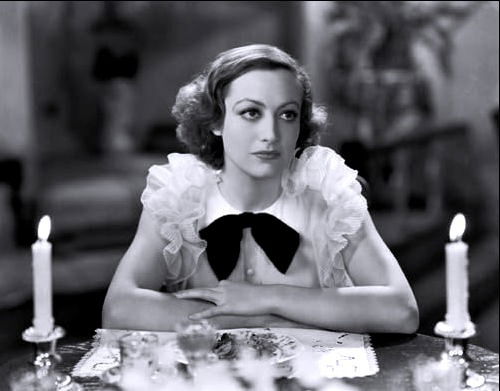
"Courtesy of the site IMBD.com"
Scene from the Movie
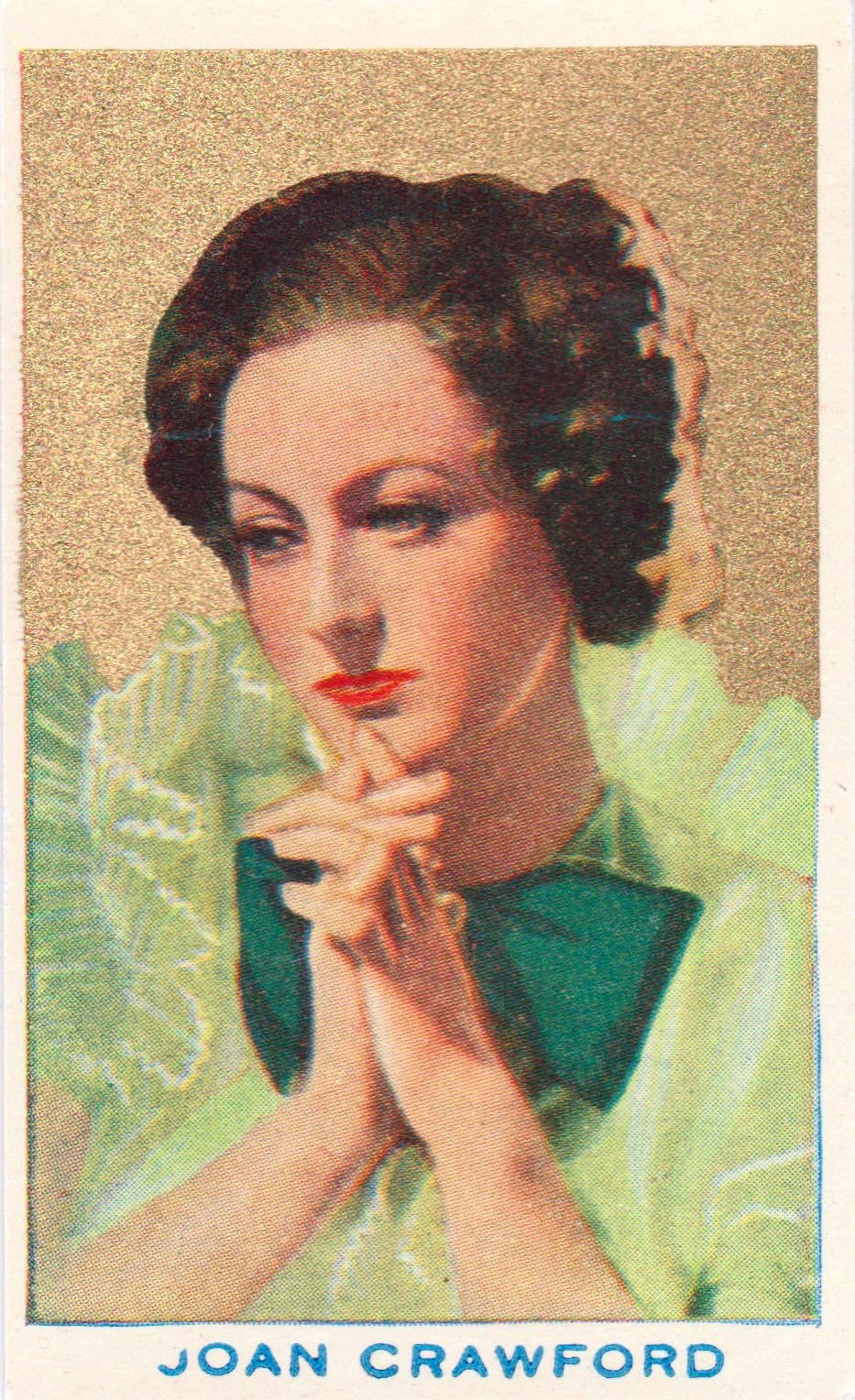
Card della serie BEAUTIES OF THE CINEMA
ROTHMANS Ltd. (1939)
(personal collection)
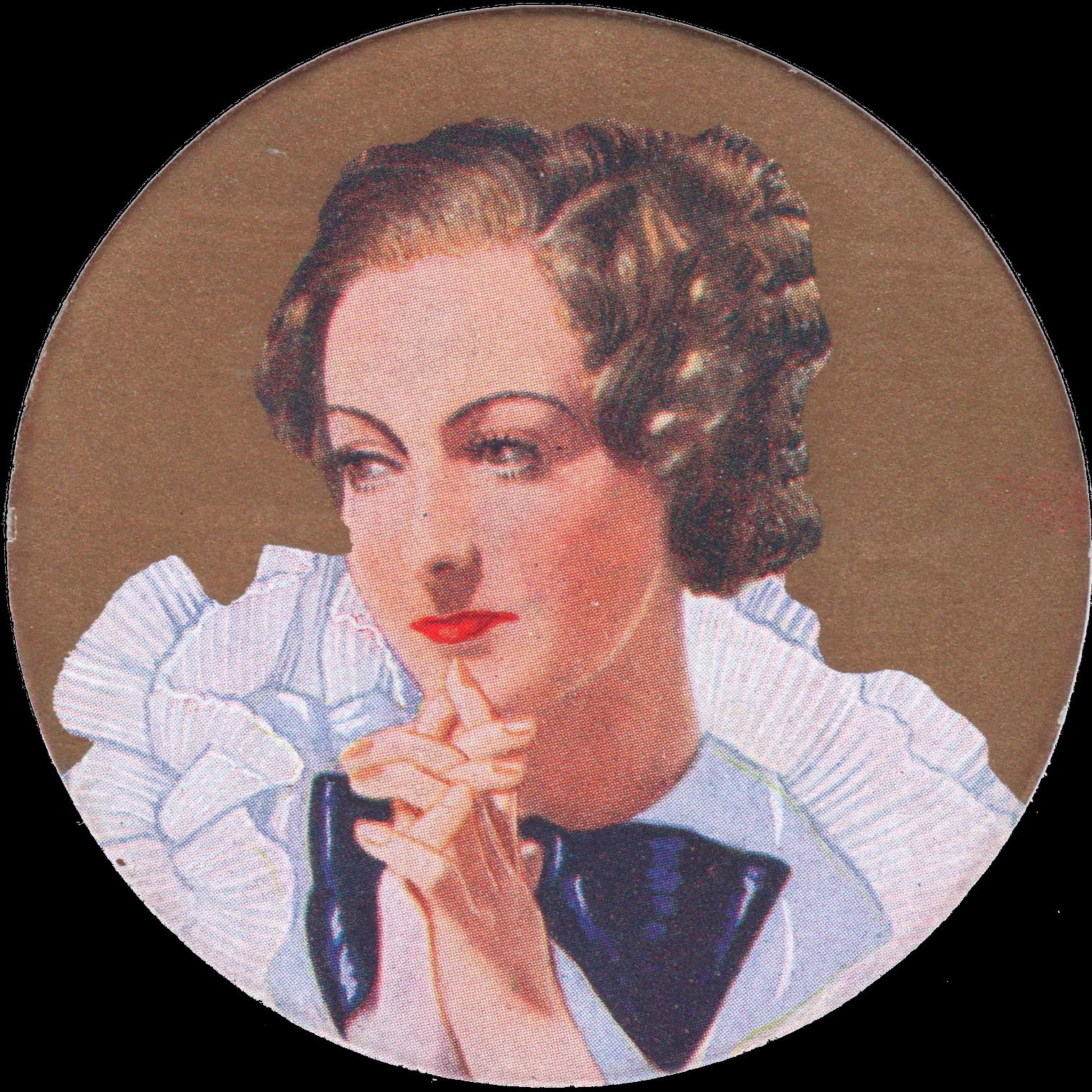
Card della serie BEAUTIES OF THE CINEMA (ROUND)
ROTHMANS Ltd. (1939)
(personal collection)
Today We Live (1933), directed by Howard Hawks, is a romantic drama film set during World War I. The costumes in the film, designed by Adrian, are a key element that helps create the atmosphere of the time. Joan Crawford, who plays Diana "Ann" Boyce-Smith, wears elegant and sophisticated clothes that reflect her social status and inner strength. However, the costumes also present an interesting contrast: while the male actors, such as Gary Cooper and Robert Young, wear realistic military uniforms, some of Crawford's outfits are considered anachronistic and too modern for the war period. This mix of authenticity and Hollywood glamour makes the costumes of Today We Live a fascinating example of how 1930s cinema balanced realism and spectacle.
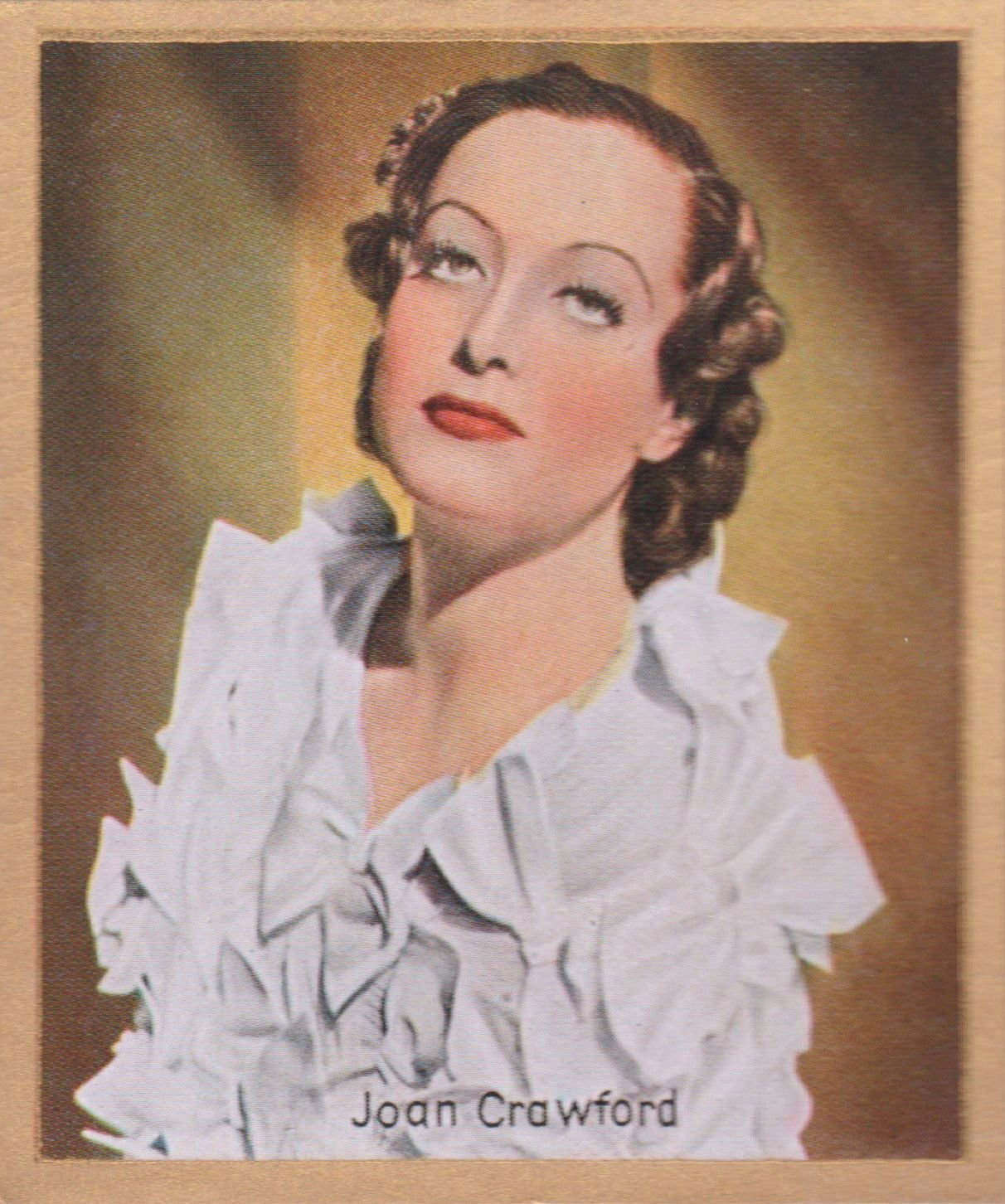
Card position 4 Pag. 24 - BUNTE FILM BILDER ALBUM 7
This mix of realism and spectacle not only made the films visually appealing, but also allowed the audience to immerse themselves in a world that is both believable and fascinating. Costume designers of the time were masters at balancing these two elements, creating clothes that not only told a story, but were also aesthetically pleasing and memorable. This approach helped define the visual identity of 1930s cinema, leaving a lasting imprint on the history of cinema and fashion.
Today, however, this balance between authenticity and glamour is less common. Modern films tend to prioritize realism, often at the expense of glamour, to create a more immersive and believable experience for audiences. This shift reflects contemporary expectations of authenticity and historical accuracy, but it may also mean that the visual appeal and elegance of cinematic mores of the past are less present in today's films.
QUEEN CHRISTINA
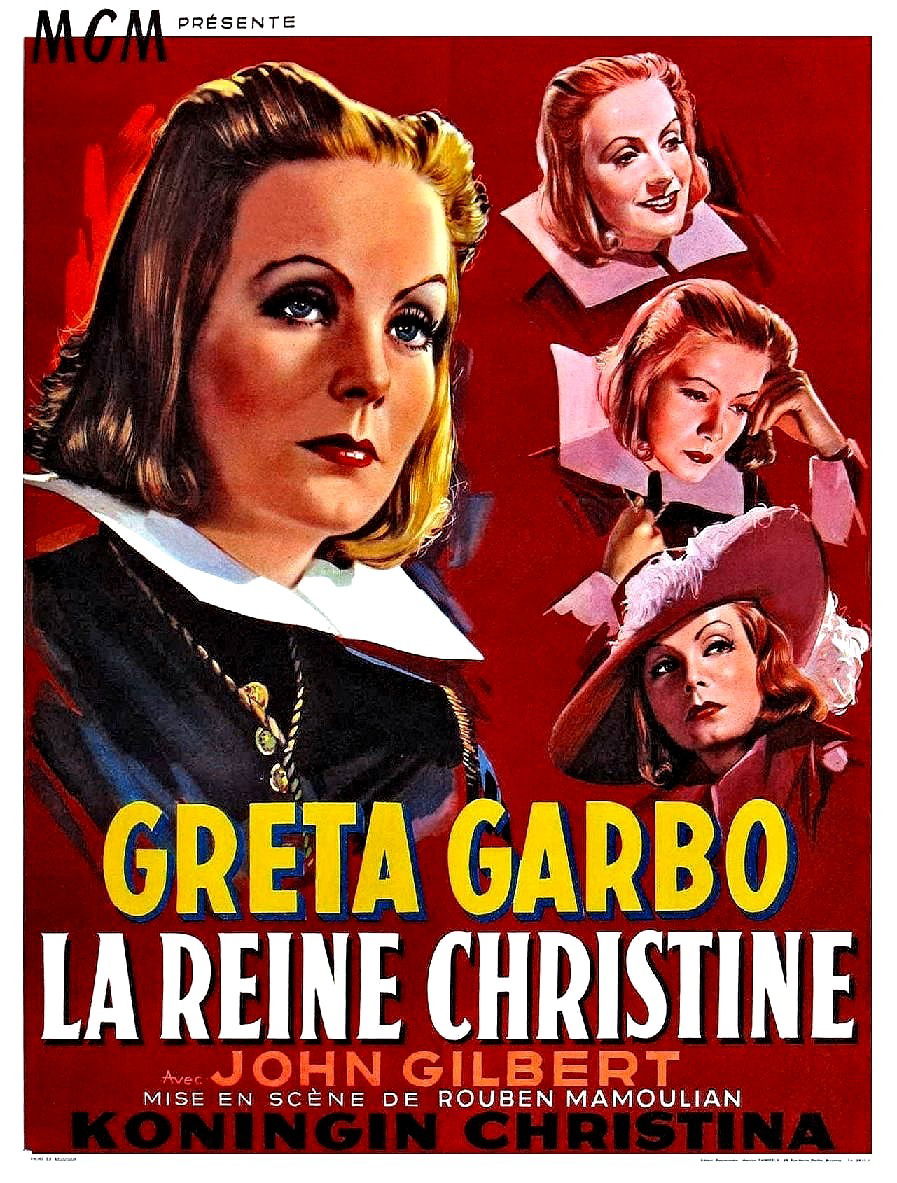
French Movie Poster (1933)
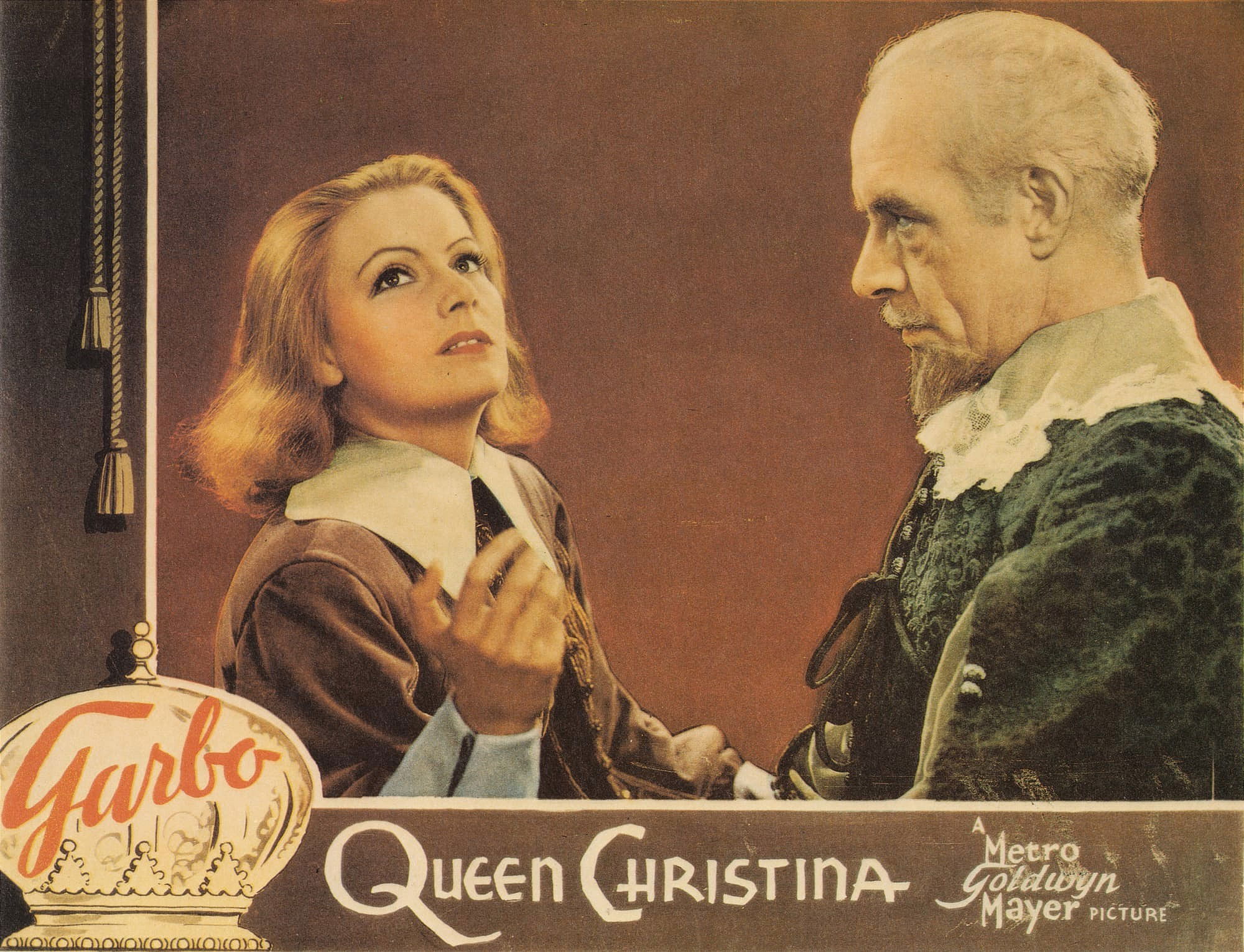
Lobby Cards (U.S.A.) (1933)
The Iconic Collaboration between Adrian and Greta Garbo continues in the film "Queen Christina" (1933). "Queen Christina" is a film directed by Rouben Mamoulian and starring Greta Garbo in the role of Queen Christina of Sweden. The plot follows the events of the queen as she navigates through political and personal pressures, culminating in her decision to abdicate the throne to pursue a life of freedom and love.
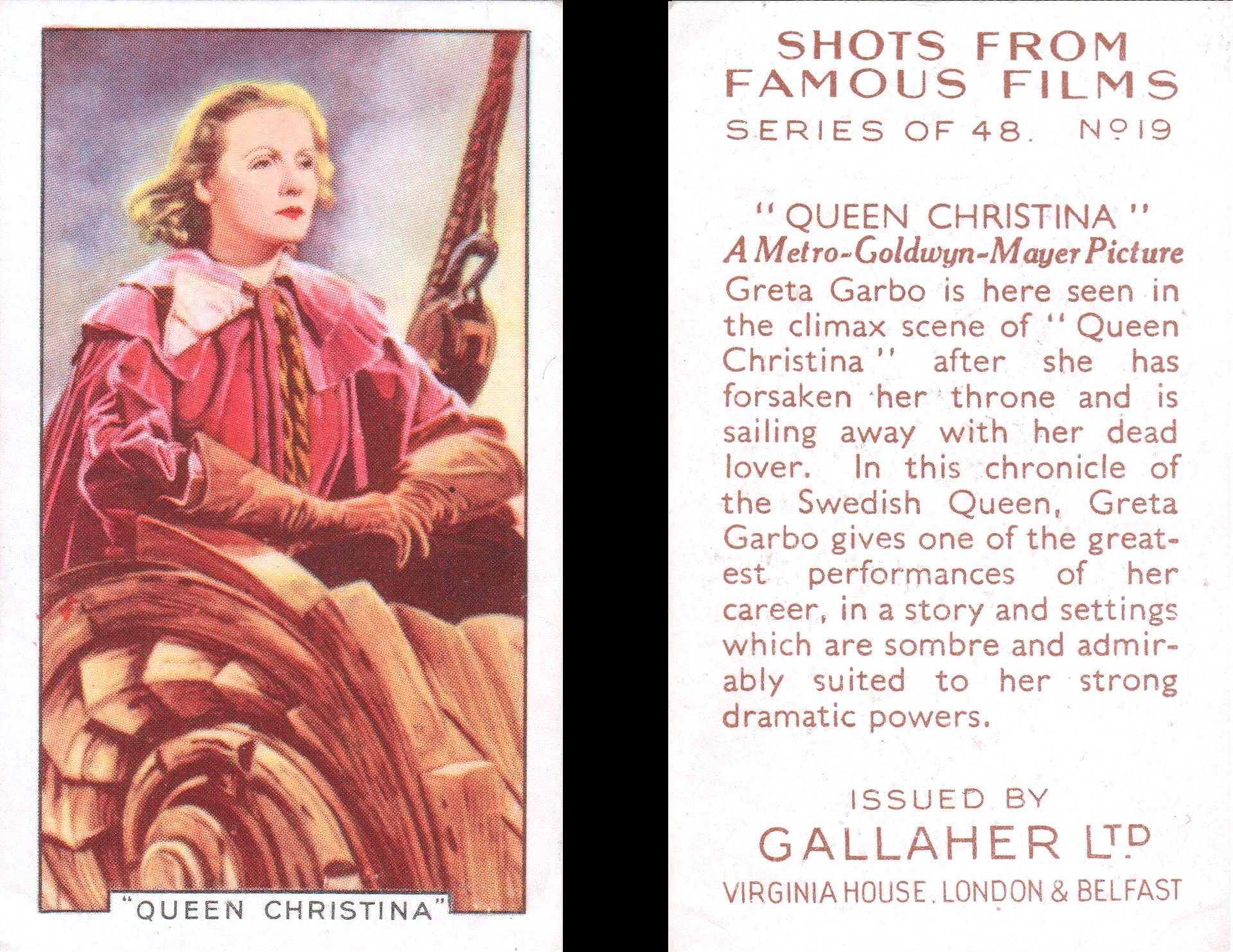
Card n.19 della serie SHOTS FROM FAMOUS FILMS
GALLAHER LTD (1935)
(Personal collection)
The costumes of "Queen Christina" enhanced Garbo's beauty and charisma, creating outfits that reflect Queen Christina's regal position and independent spirit. The historical details and elegance of the costumes helped to create a lasting image of the queen, influencing the fashion of the time. Over the course of the film, Greta Garbo's costumes evolve to reflect the changes in her character.
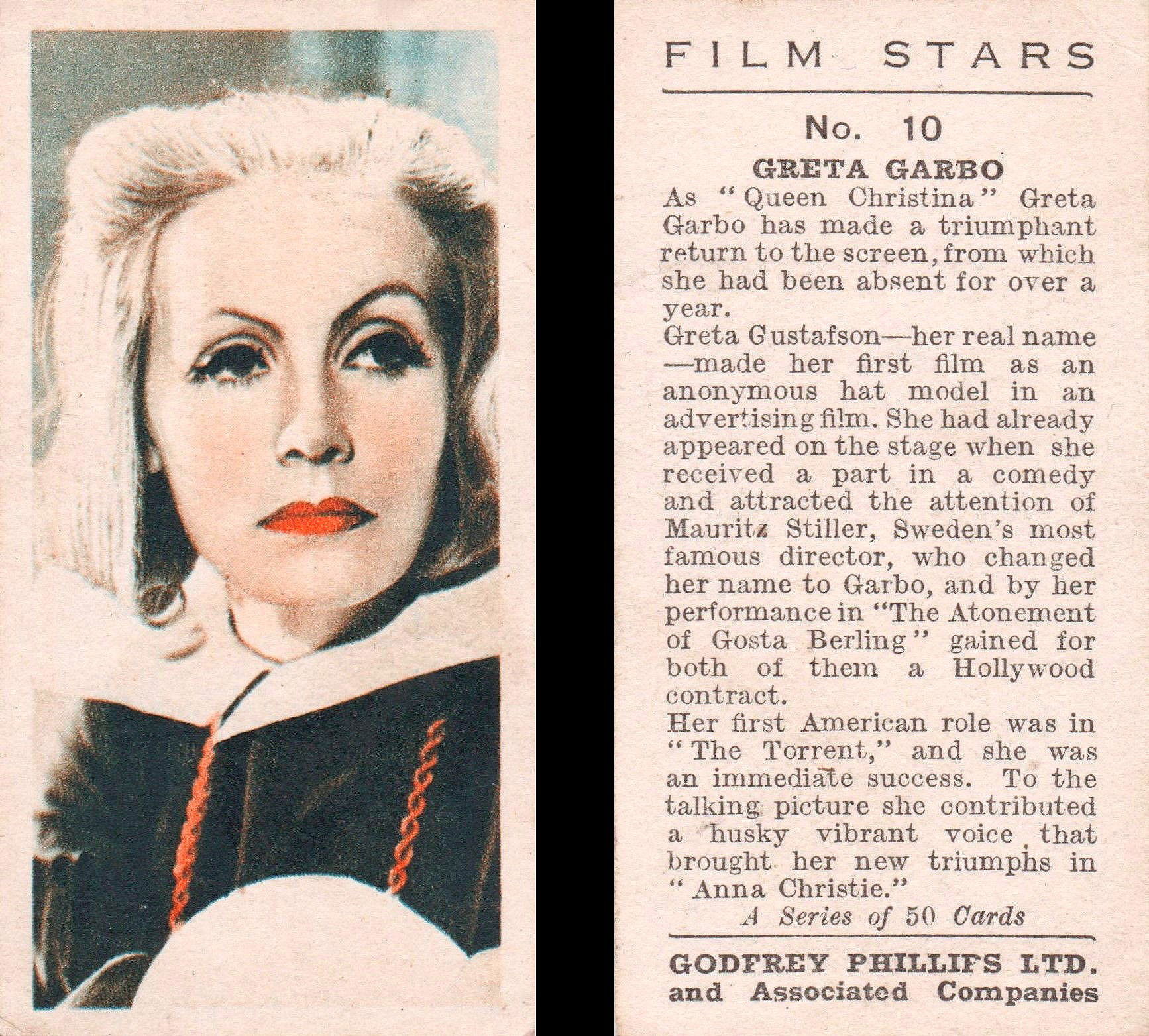
Card n.10 della serie FILMS STARS
GODFREY PHILLIPS LTD (1935)
(Personal collection)
At the beginning of the film, Queen Christina wears sumptuous and richly decorated dresses, which emphasize her authority and royal status. As the plot develops and the queen faces personal and political challenges, her outfits become simpler and more practical, reflecting her growing independence and determination. "Queen Christina's" clothes had a significant impact on fashion in the 1930s. Many designers of the time drew inspiration from the clothes worn by Greta Garbo in the film, creating collections that reflected the elegance and sophistication of Adrian's costumes. This phenomenon demonstrates how cinema can influence fashion and design, creating trends that go beyond the screen.
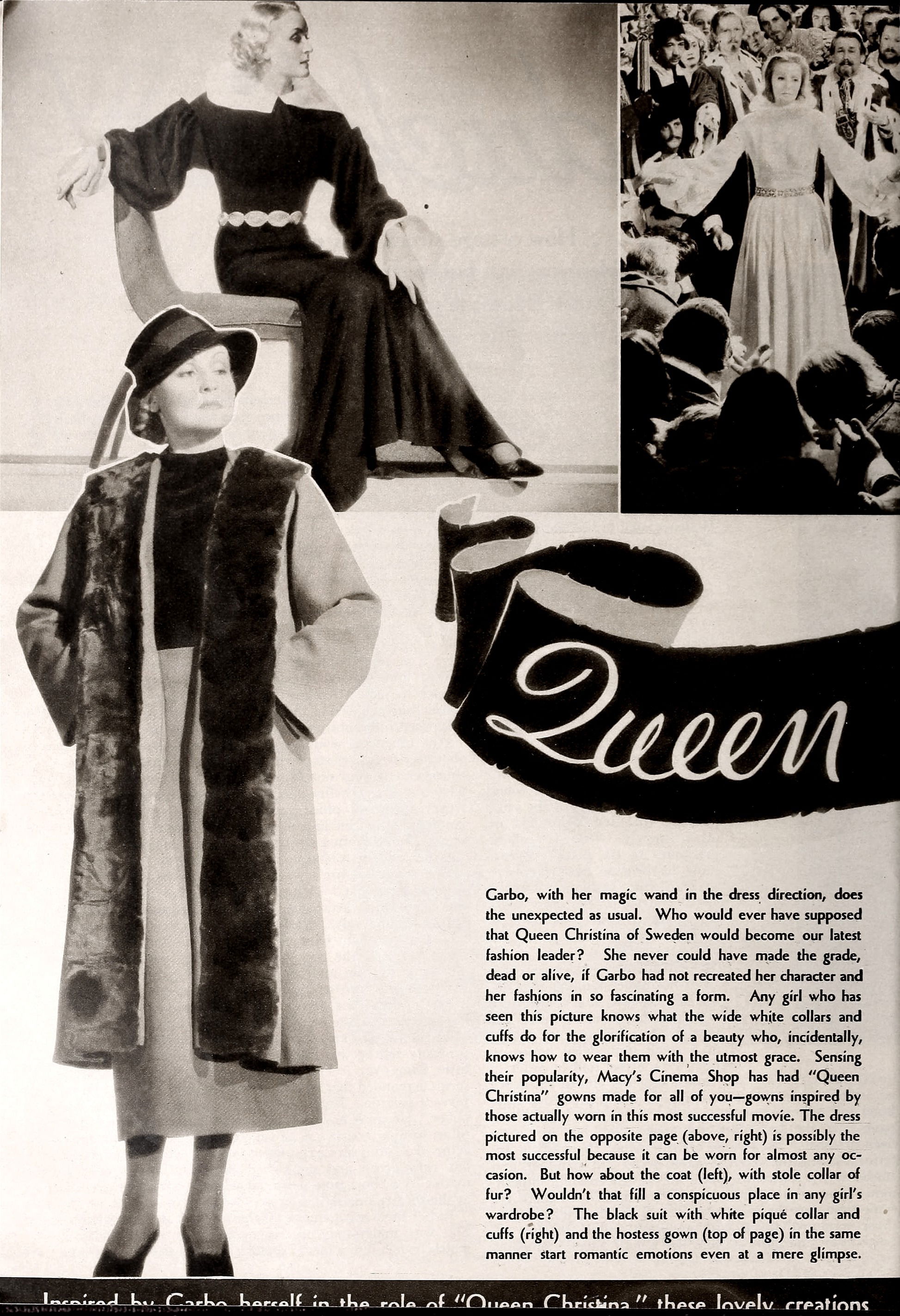
"Courtesy of the Media History Digital Library"
Excerpt from Modern Screen periodical (Dec 1933 - Oct 1934)
With his magic wand in the direction of the suit, Adrian does the unexpected as usual. Who would have imagined that Queen Christina of Sweden would become our last fashion leader? He could never have made it, either alive or dead, if Adrian hadn't recreated his character and fashions in such a fascinating form. Every girl who has seen this film knows what wide white collars and cuffs do for the glorification of a beauty who, by the way, knows how to wear them with the utmost grace. Sensing their popularity, Macy's Cinema Shop had "Queen Christina" dresses made for all of you, dresses inspired by the ones actually worn in this blockbuster movie. The dress depicted on the opposite page (top, right) is perhaps the most successful because it can be worn for almost any occasion. But what about the coat (on the left), with the fur collar stole? Wouldn't that fill a conspicuous place in any girl's wardrobe? The black dress with white piqué collar and cuffs (right) and the hostess dress (top of the page) likewise arouse romantic emotions even at a single glance.
Macy's Cinema Shop was a special section dedicated to movie-inspired fashion, inside the famous Macy's Herald Square department store. This store, located at 151 West 34th Street, is one of the largest and most iconic department stores in New York. In the 1930s, Macy's seized the opportunity to capitalize on the influence of cinema on fashion, creating clothes and accessories inspired by the costumes seen in blockbuster films. This store was especially popular with women who wished to replicate the style of their favorite actresses.
For example, Macy's Cinema Shop created clothes inspired by those worn by Greta Garbo in the movie "Queen Christina." These dresses were designed to be accessible to the public, allowing women to bring a touch of Hollywood glamour into their daily lives.
The popularity of Macy's Cinema Shop demonstrates how cinema had a significant impact on the fashion and design of the time, influencing trends and creating new market opportunities for retailers.

"Courtesy of the Media History Digital Library"
Excerpt from the periodical Photoplay (Jan - Jun 1934)
PHOTOPLAY ANNUNCIA
In New York, only at Macy's Cinema Shop and nowhere else, you will find Hollywood movie fashions. America's largest store was the first to open a Cinema Shop. For a year now, the Macy's Cinema Shop has been remarkably successful in introducing authentic, official cinematic fashions to the most attentive photoplay viewers in the largest film city of all.
You'll find Hollywood movie fashions at Macy's, under the trademark of Macy's Star Picture Fashions. Approved by Photoplay's Fashion Auditor, each enchanting garment bears the name of the star and the image in which she wore the original. The magical speed with which Hollywood movie fashions are realized allows you to wear the twin of your favorite star's new outfit the same week that her movie debuts on Broadway!
The Cinema Shop is located on the famous third floor of Macy's. Photoplay cordially invites you to visit it early and often!
MOROCCO
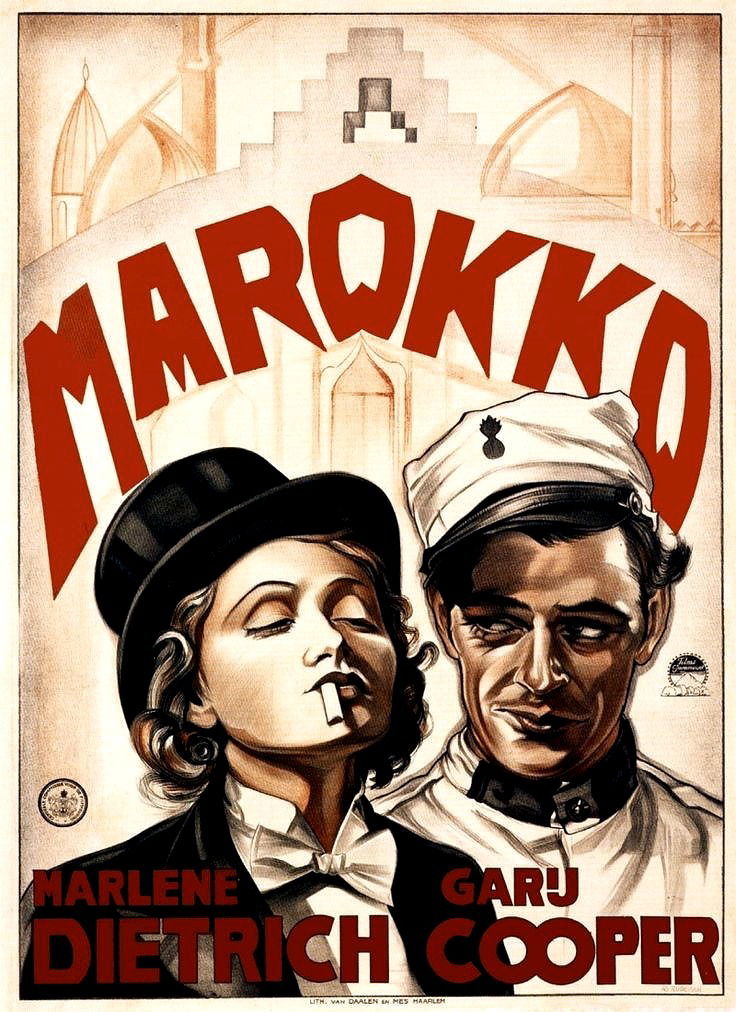
RUSSIAN POSTER OF THE FILM
Leaving Adrian and his work on "Queen Christina" with Greta Garbo in 1933 now, let's jump back three years to explore another fascinating chapter in the history of cinematic costume.
In 1930, the film "Morocco" directed by Josef von Sternberg marked an era, not only because of its gripping plot and the extraordinary performance of Marlene Dietrich, but also because of its iconic costumes. Behind the scenes, the young and talented Travis Banton played a crucial role in the creation of these costumes, which helped define Dietrich's image as one of Hollywood's most glamorous divas.
Travis Banton began his career as an apprentice in a small tailor's shop, where he honed his skills in designing and making suits. Her big break came when Mary Pickford, a famous actress and influential figure in the fashion world, chose one of her dresses for her wedding to Douglas Fairbanks in 1920. This event catapulted Banton into the spotlight, attracting the attention of major film producers.
His talent did not go unnoticed in Hollywood, and soon Banton was called to work on the costumes for "Morocco". Her ability to combine elegance and functionality made the film's costumes memorable, helping to create the aura of mystery and seduction that surrounded Marlene Dietrich. In particular, the men's suit worn by Dietrich, complete with top hat and tailcoat, has become a style icon.
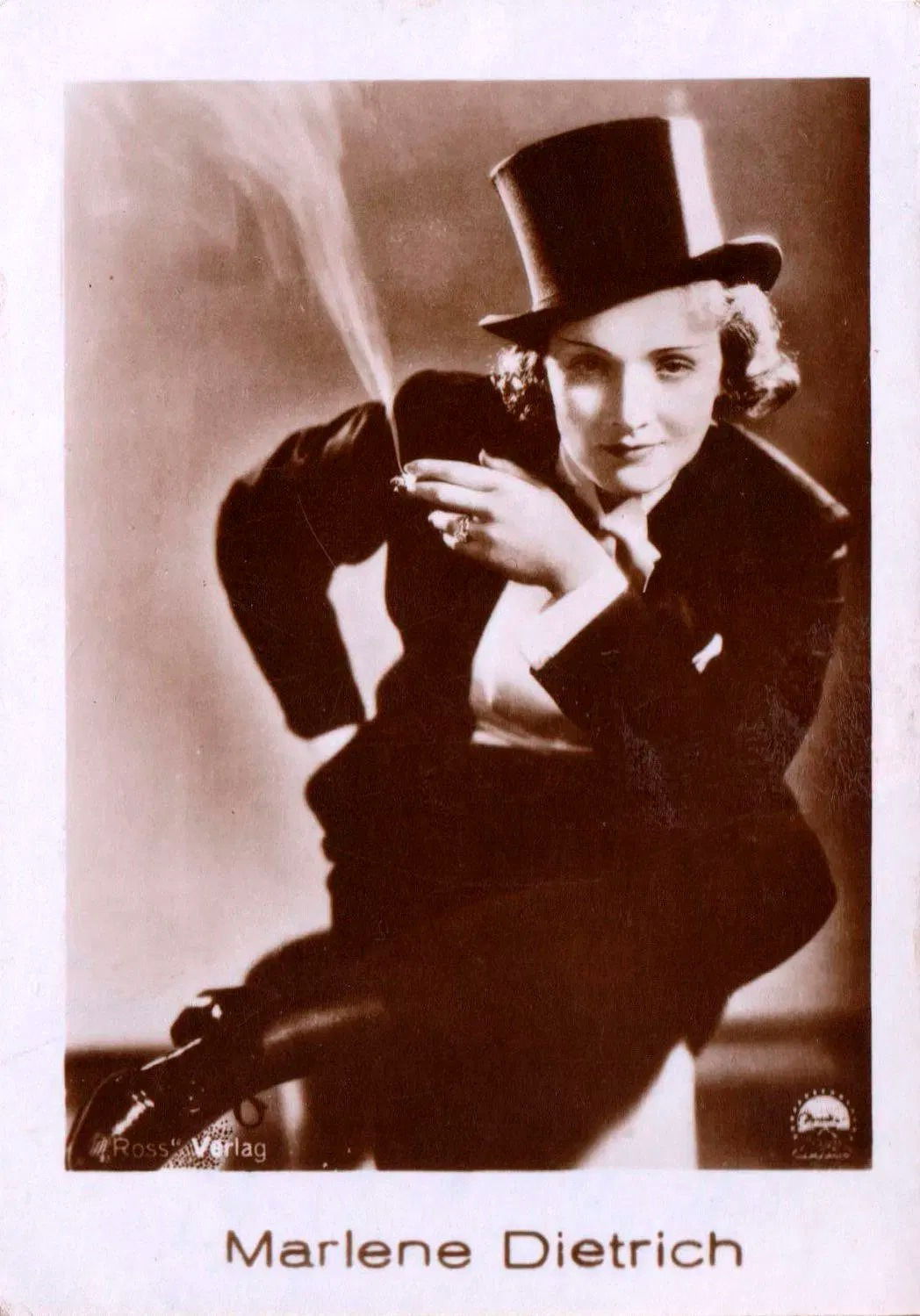
Card n.358 pag. 4 – HÄNSOM FILMBILDER TONFILM SERIES
(personal collection)
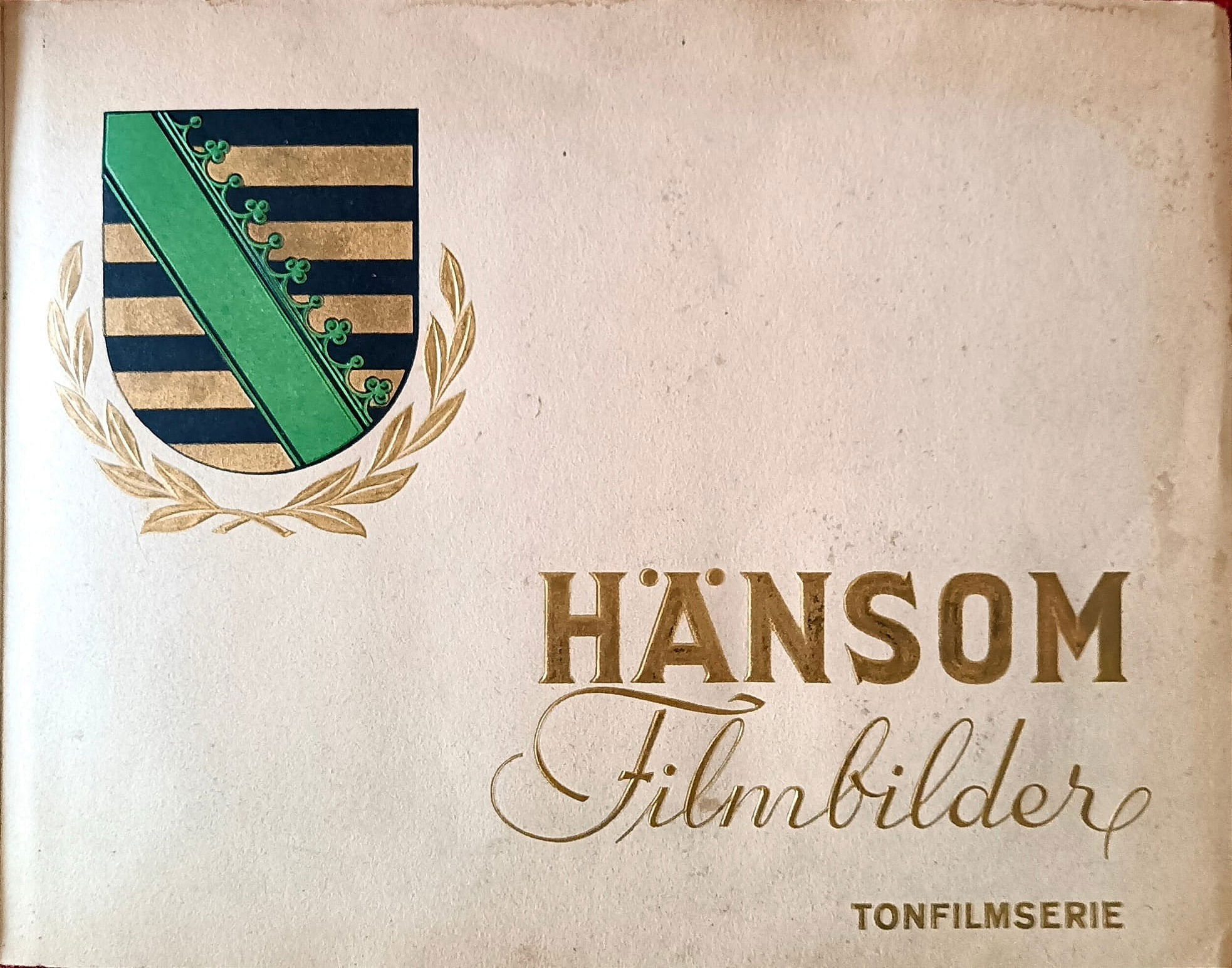
The idea of having Marlene wear a men's suit came from director Josef von Sternberg, inspired by a party in Berlin where he saw Dietrich in men's clothes. This androgynous look had a significant impact on the fashion and culture of the time.
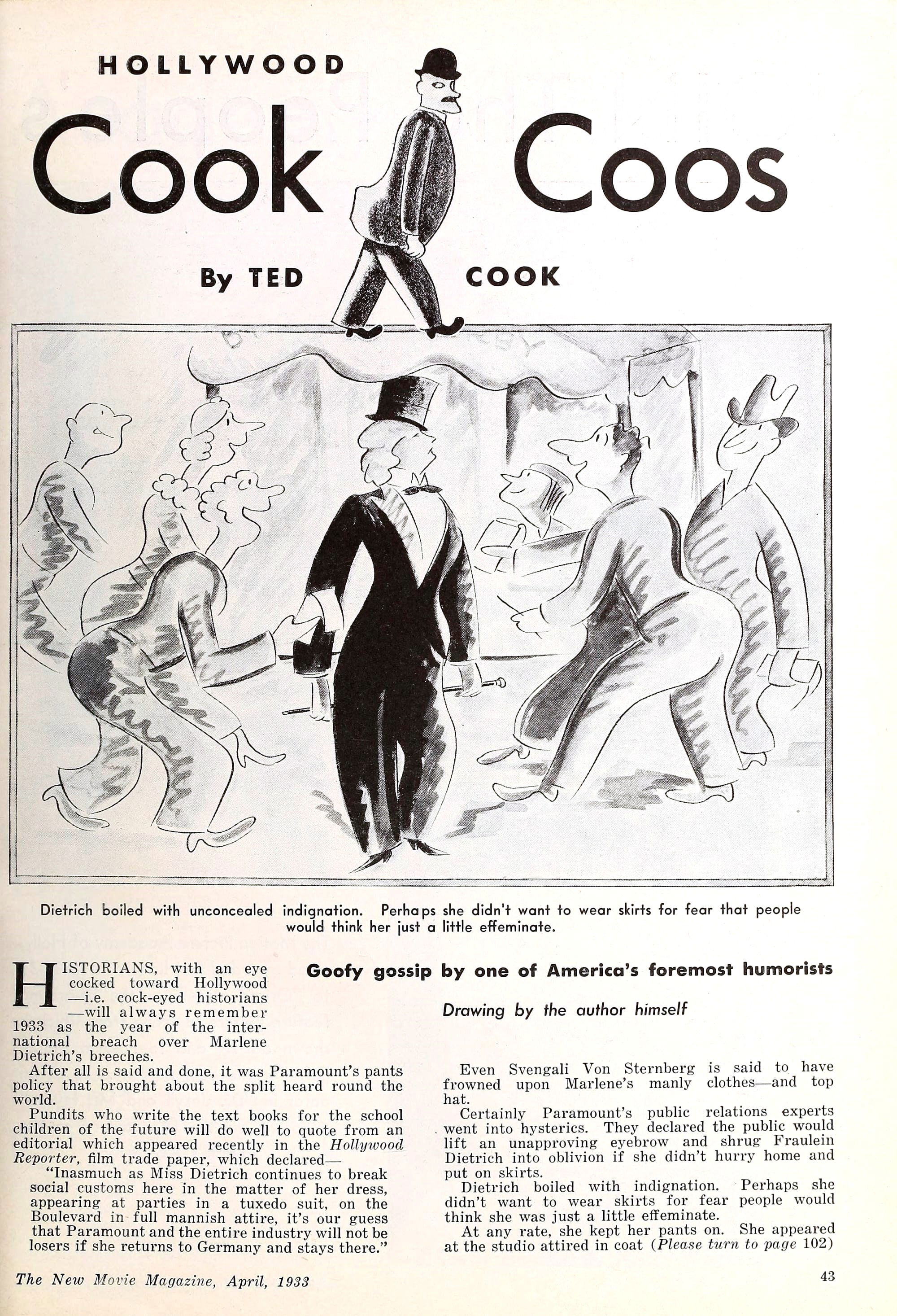
"Courtesy of the Media History Digital Library"
Page 43 of The New Movie Magazine (April 1933)
Three years later, in 1933, Marlene Dietrich sparked outrage in Hollywood for her choice to continue wearing men's clothing, such as tuxedos and men's suits, both at parties and in public. This behavior led to an international controversy, with Paramount facing a public relations crisis. Historians remember this period as the year of the "international break over Marlene Dietrich's trousers". An editorial in The Hollywood Reporter sharply criticized Dietrich, suggesting that Paramount and the film industry would lose nothing if she returned to Germany. Even director Josef von Sternberg, known for his role as Dietrich's mentor, would have taken a step back by disapproving of her manly clothes. Despite the pressure, Marlene Dietrich continued to wear pants, seething with indignation at the criticism she received.
Almost a stylistic revolution in 1933, with several actresses challenging gender conventions through their clothing. First of all, Greta Garbo: In "Queen Christina" (1933), Garbo wears men's clothes for much of the film, playing a queen who disguises herself as a man to explore the world without being recognized. This androgynous look had a significant impact on the fashion and culture of the time.
Katharine Hepburn was another pioneer in this regard. Hepburn was one of the first actresses to wear pants both on screen and in everyday life. His choice of clothing was often practical and comfortable, but also a statement of independence and strength. She is known for wearing pants in several films, including "Christopher Strong" (1933).
Immediately after "MOROCCO", Banton went on to work on several iconic films, helping to define the style of Hollywood stars. In 1931 and 1932 he collaborated again with Marlene Dietrich in the films "DISHONORED", "SHANGHAI EXPRESS" and "BLONDE VENUS", designing costumes for both her and Anna May Wong.
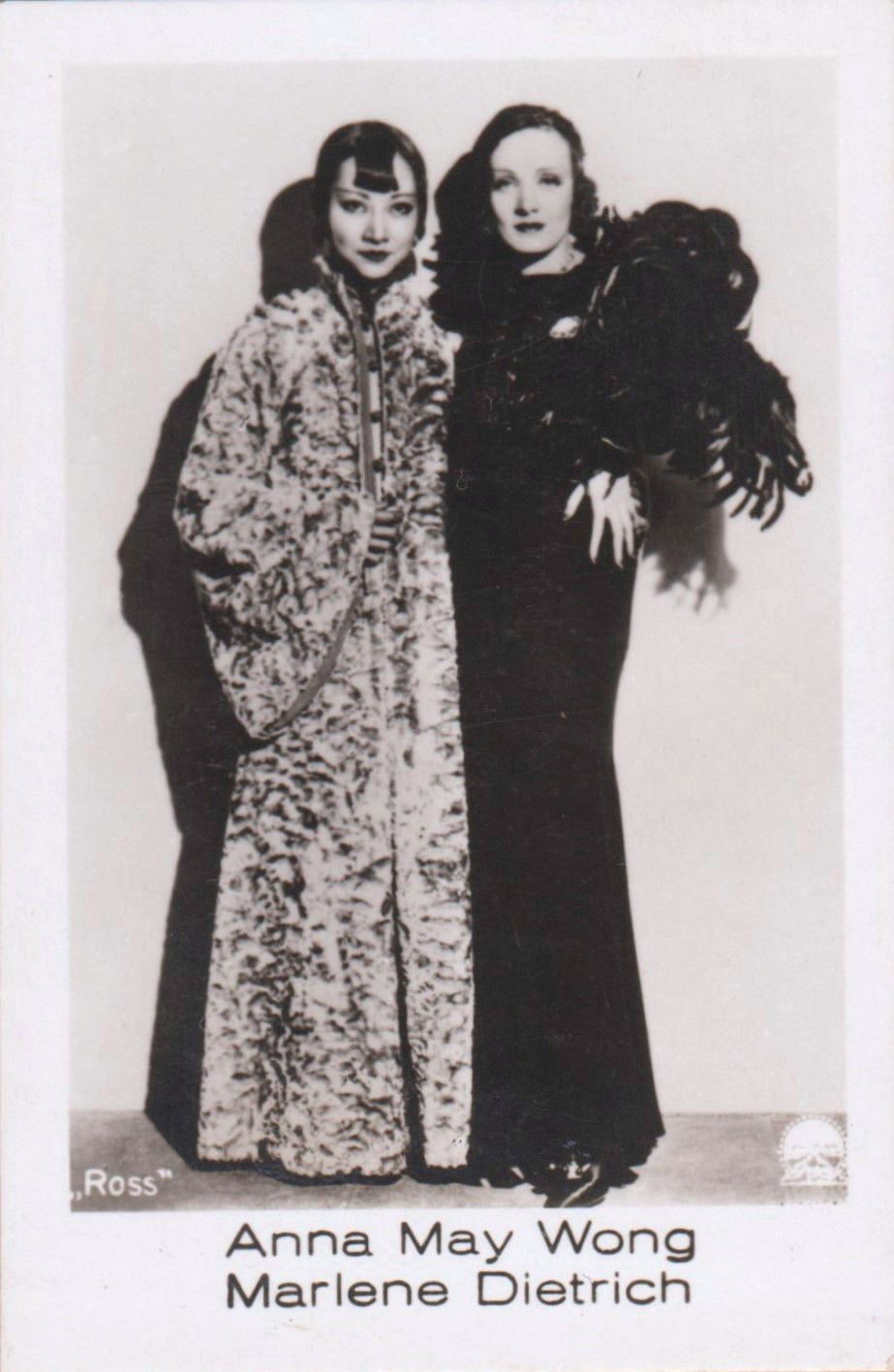
Card position 6 pag. 14
RAMSES MOVIE PICTURES ALBUM 1
(personal collection)
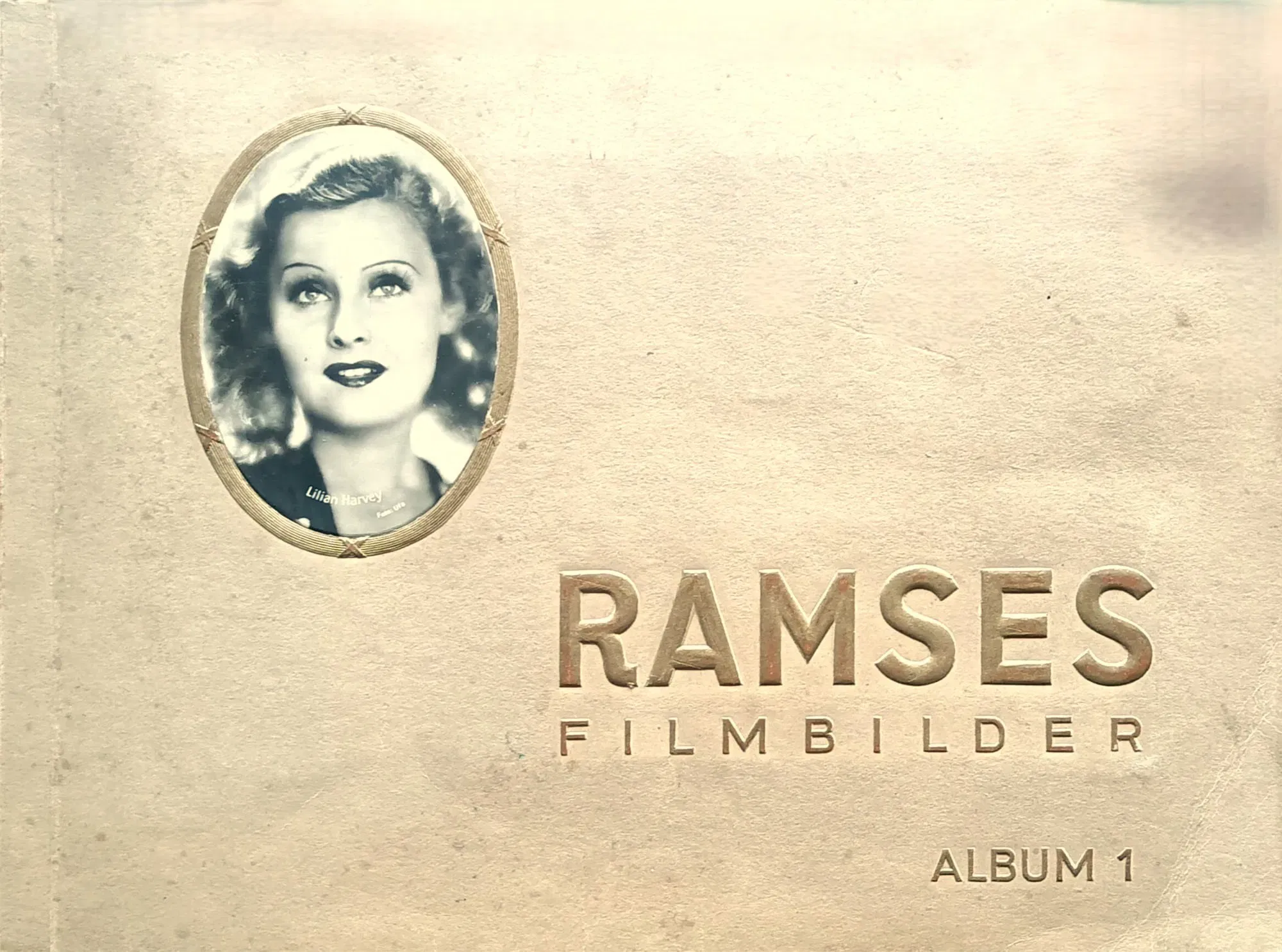
Also in 1932 in "Trouble in Paradise", he designed costumes for Kay Francis and Miriam Hopkins, creating a sophisticated and glamorous look. Hopkins plays Lily, while Francis plays Madame Mariette Colet, and their outfits were designed to reflect their sophisticated and charming characters.
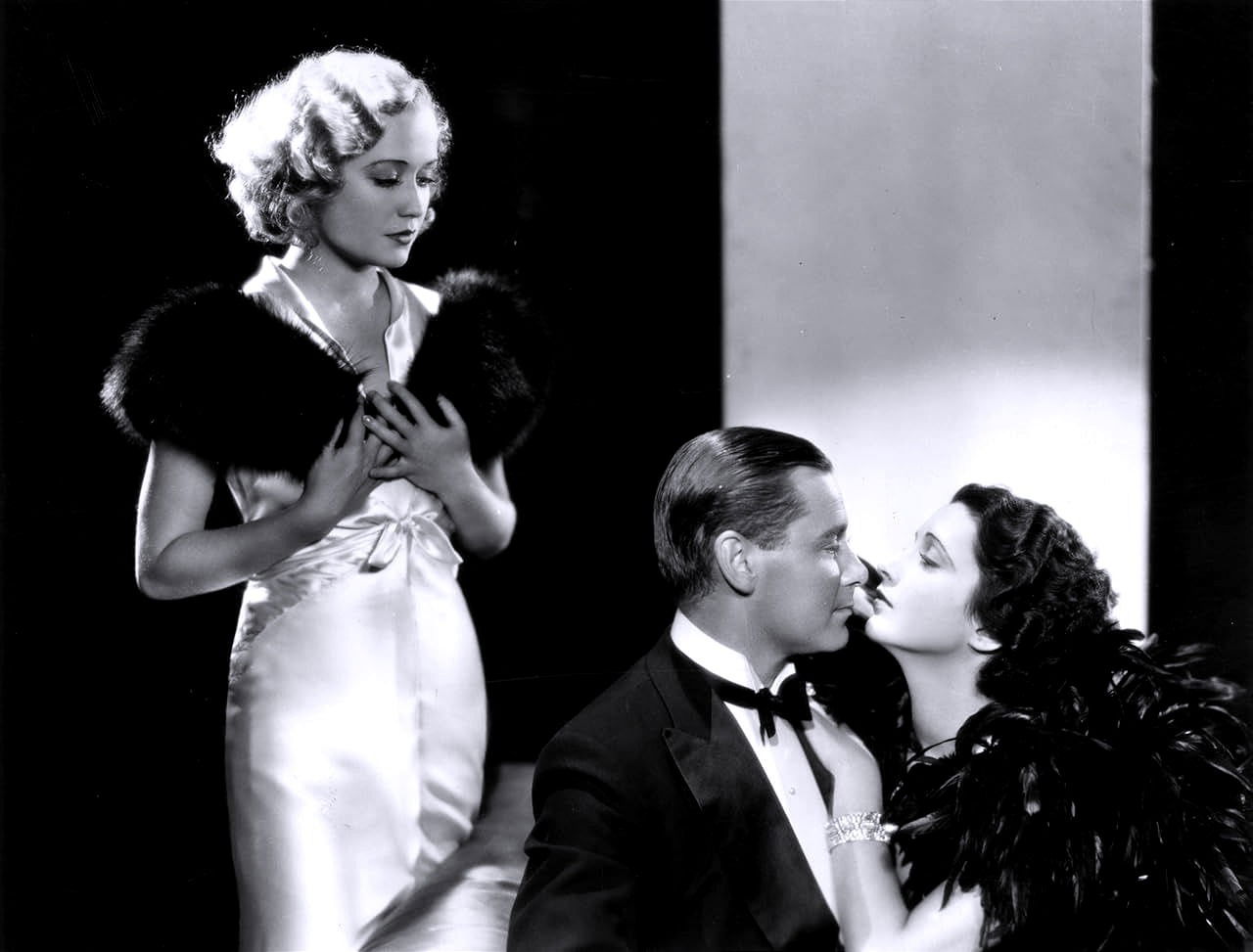
Scene from the Movie
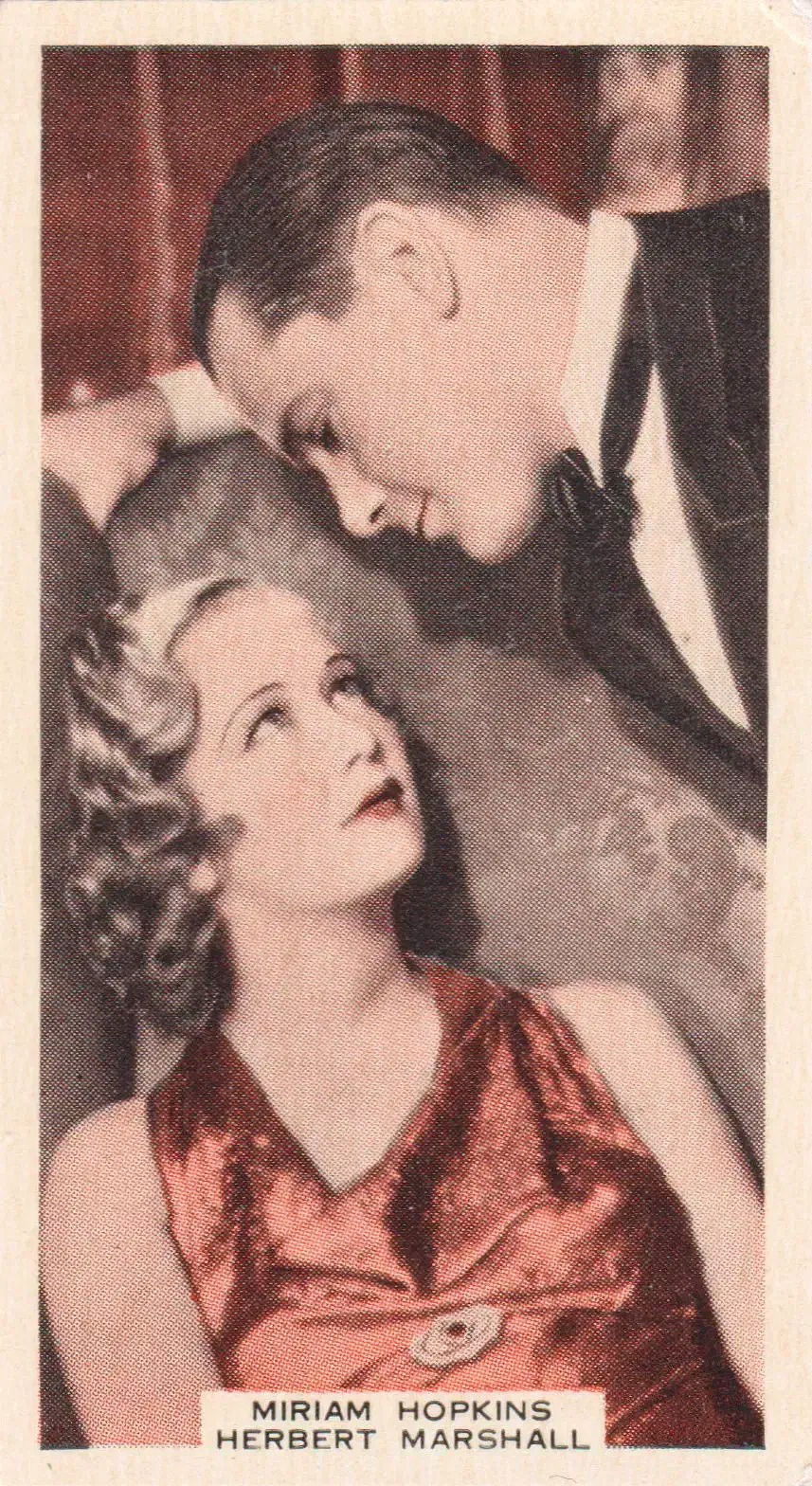
Card n.63 FILM FAVOURITES 3rd Series
A. AND M. WIX LONDON (1939)
(personal collection)
I'M NO ANGEL
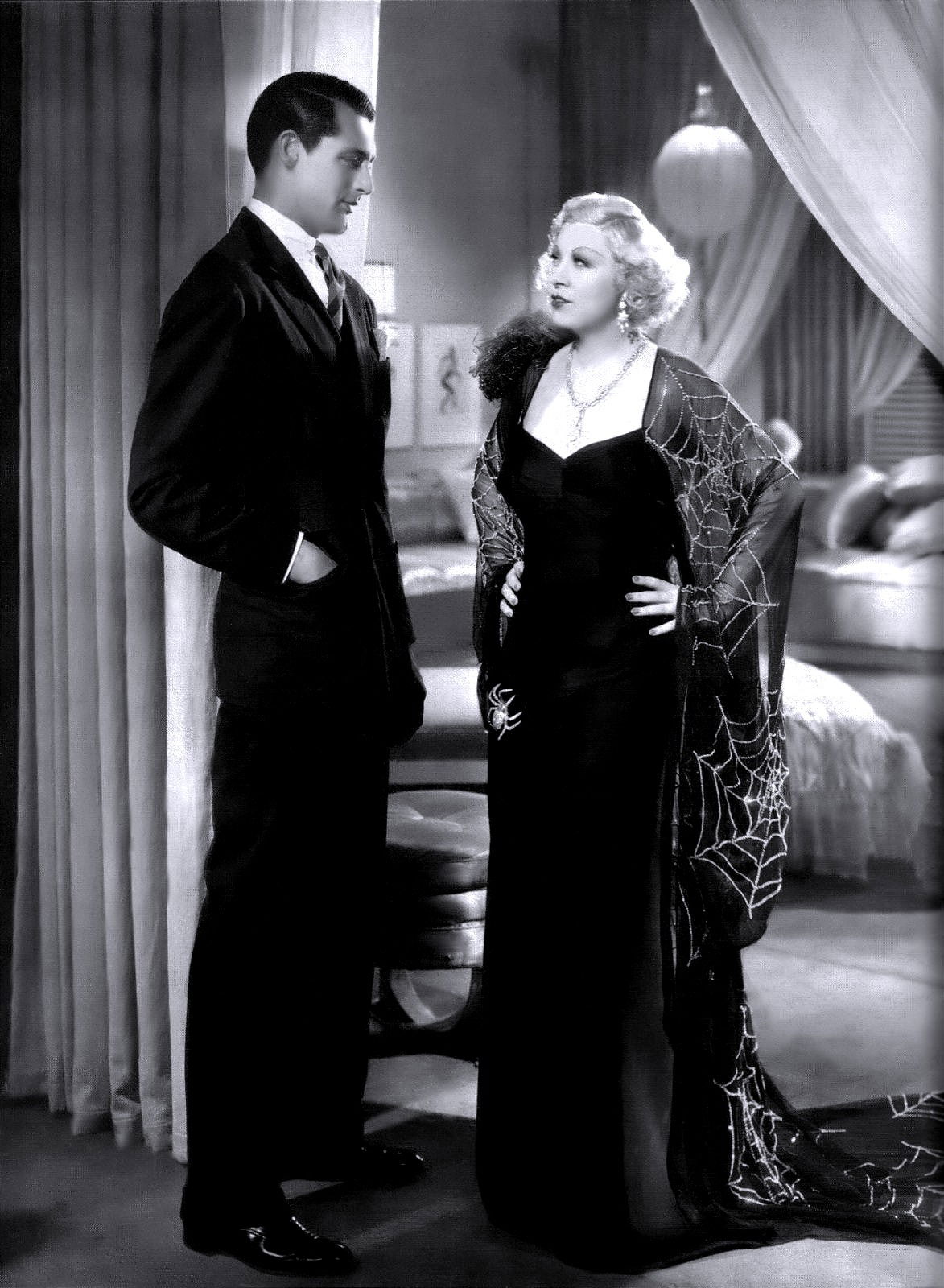
Scene from the Movie
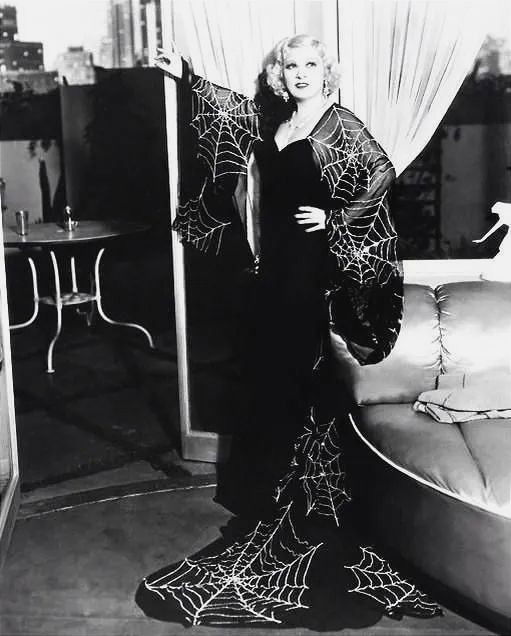
Scene from the Movie
The cobwebs dress worn by Mae West in the film I'm No Angel (1933) is one of the most iconic costumes created by Travis Banton. This dress is known for its bold and unique design, which perfectly reflects the character of Tira, played by Mae West. The dress is made of black silk and features a pattern of silver cobwebs that extend along the sleeves and the bottom of the dress. Not only does this design add a touch of mystery and charm, but it also enhances the figure of Mae West, creating a seductive and unforgettable look. The silver cobwebs are arranged in such a way as to create a visual effect of lightness and grace, accentuating every movement of the actress during her performances. This detail not only enhances the beauty of Mae West, but also helps to create an atmosphere of opulence and sophistication, typical of the film's dance numbers and musical performances. In summary, Mae West's cobwebs dress in "I'm No Angel" is a perfect example of Travis Banton's talent for creating costumes that not only enhance the beauty of the stars, but also help define their characters and set the mood for the film.
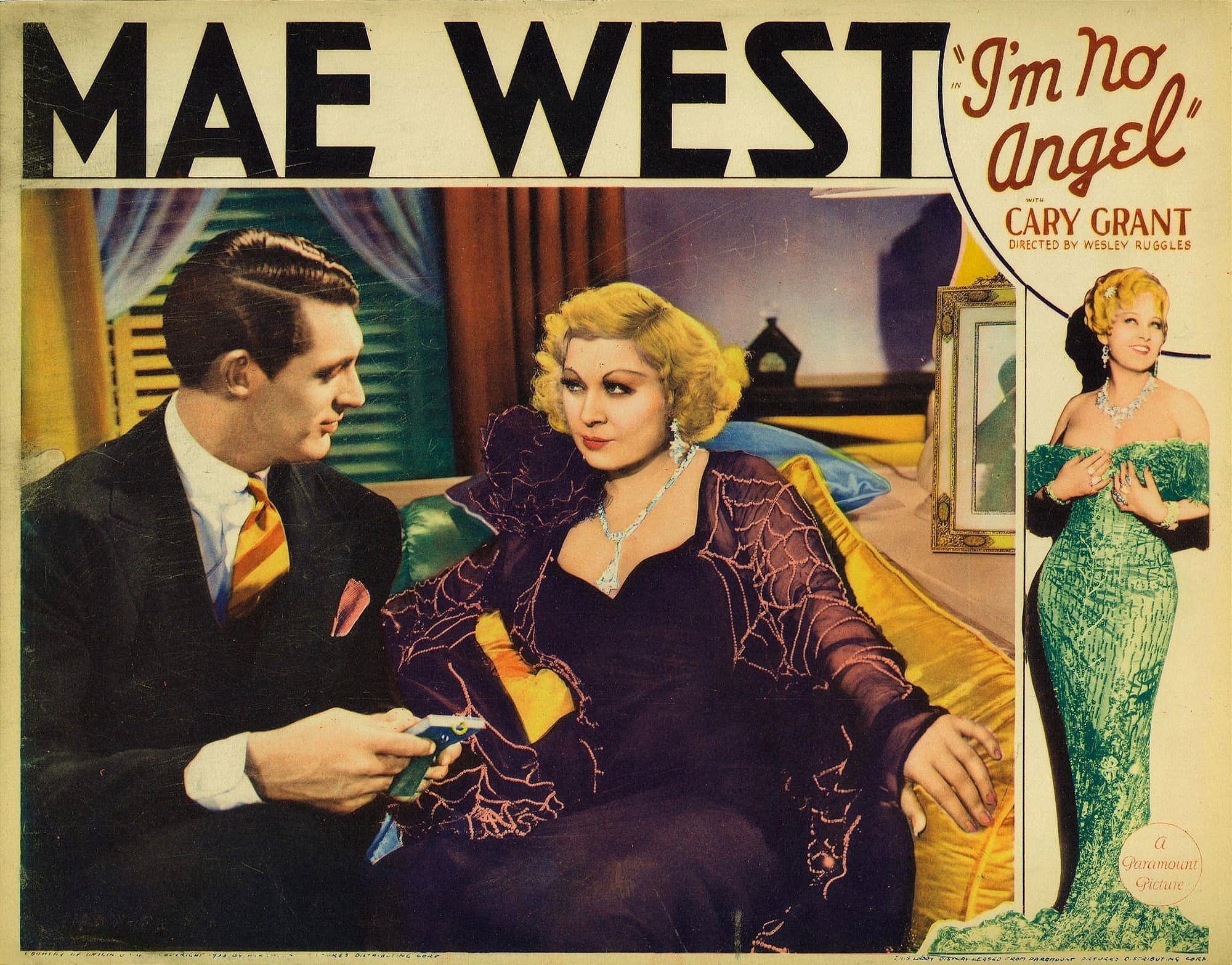
Lobby Cards (U.S.A.) (1933)
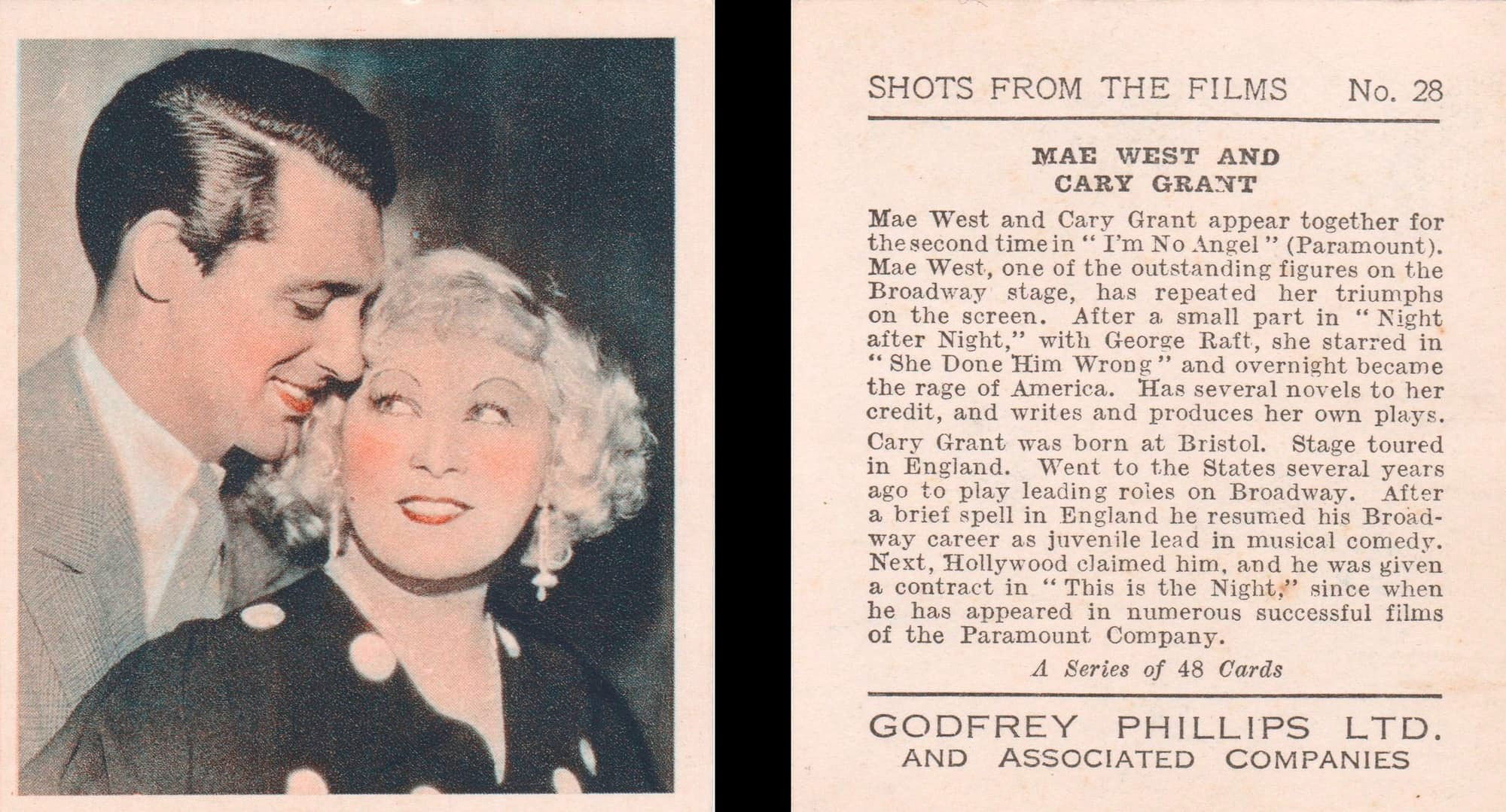
Card n.28 - SHOTS FROM THE FILMS
GODFREY PHILLIPS LTD. (1934)
(personal collection)
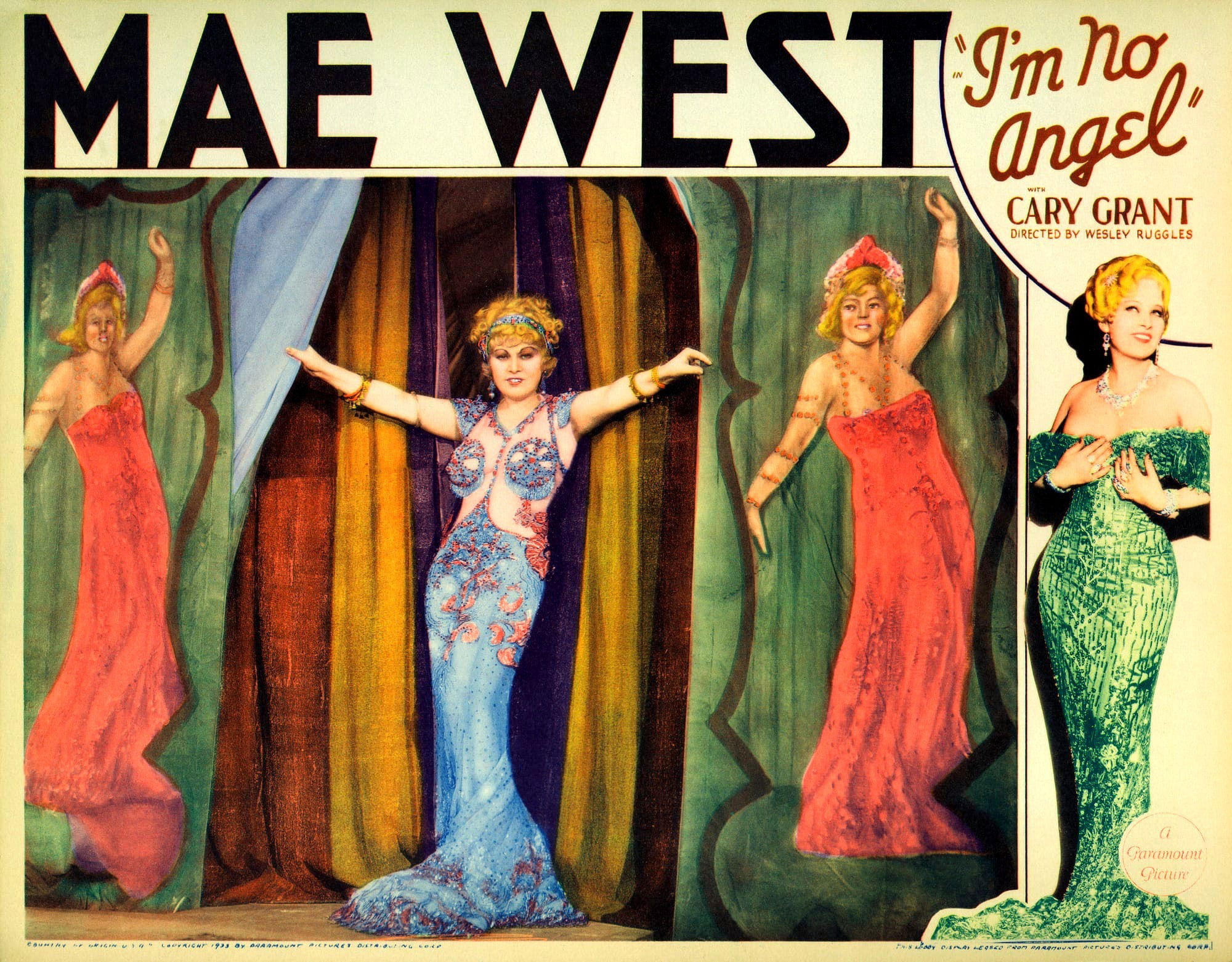
Lobby Cards (U.S.A.) (1933)
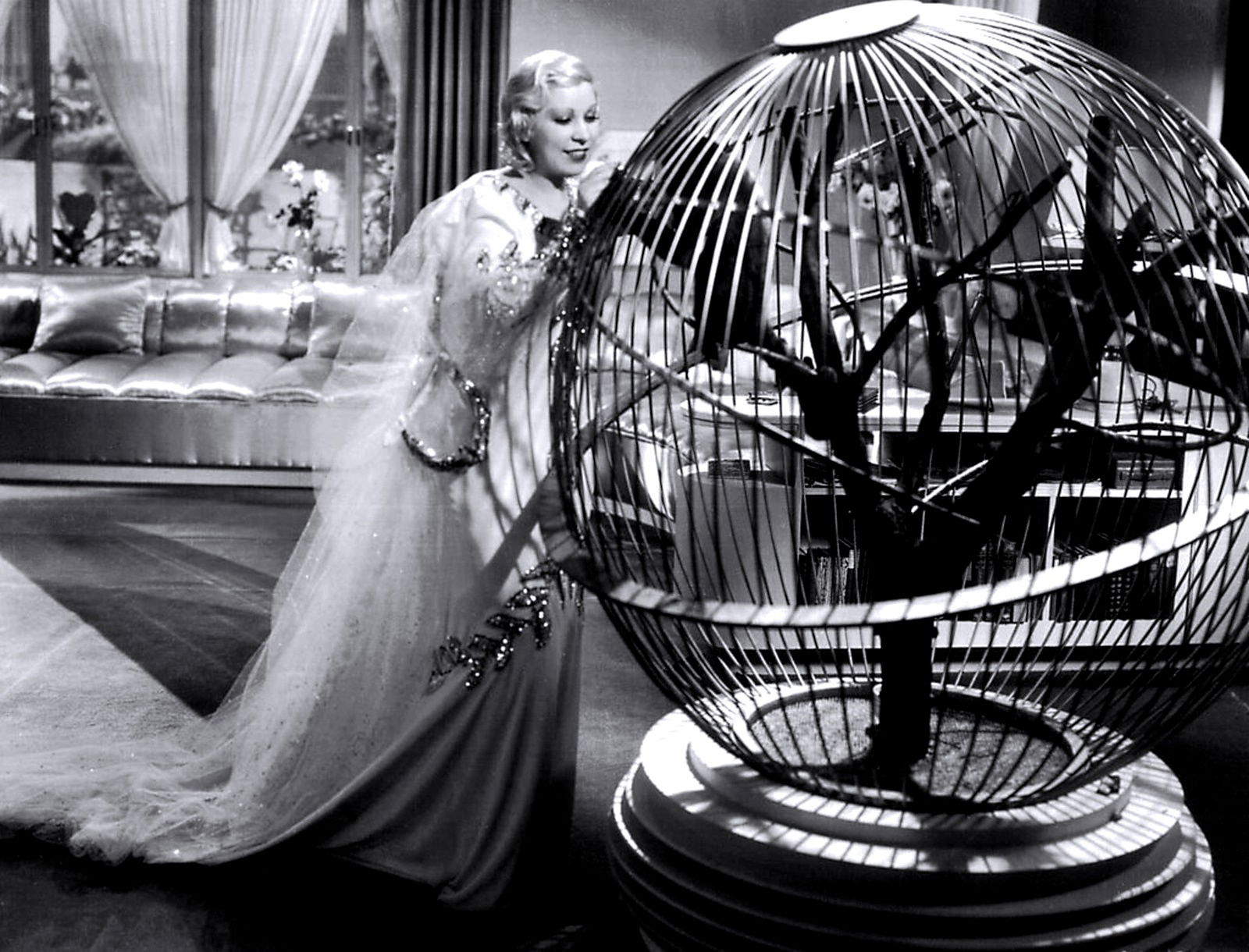
Scene from the Movie
Another of the most memorable dresses in the film is a white evening gown with silver details and a long feather tail, which Mae West wears during one of her performances. This dress, along with the other costumes in the film, helped solidify Mae West's image as a style icon and symbol of femininity and power.
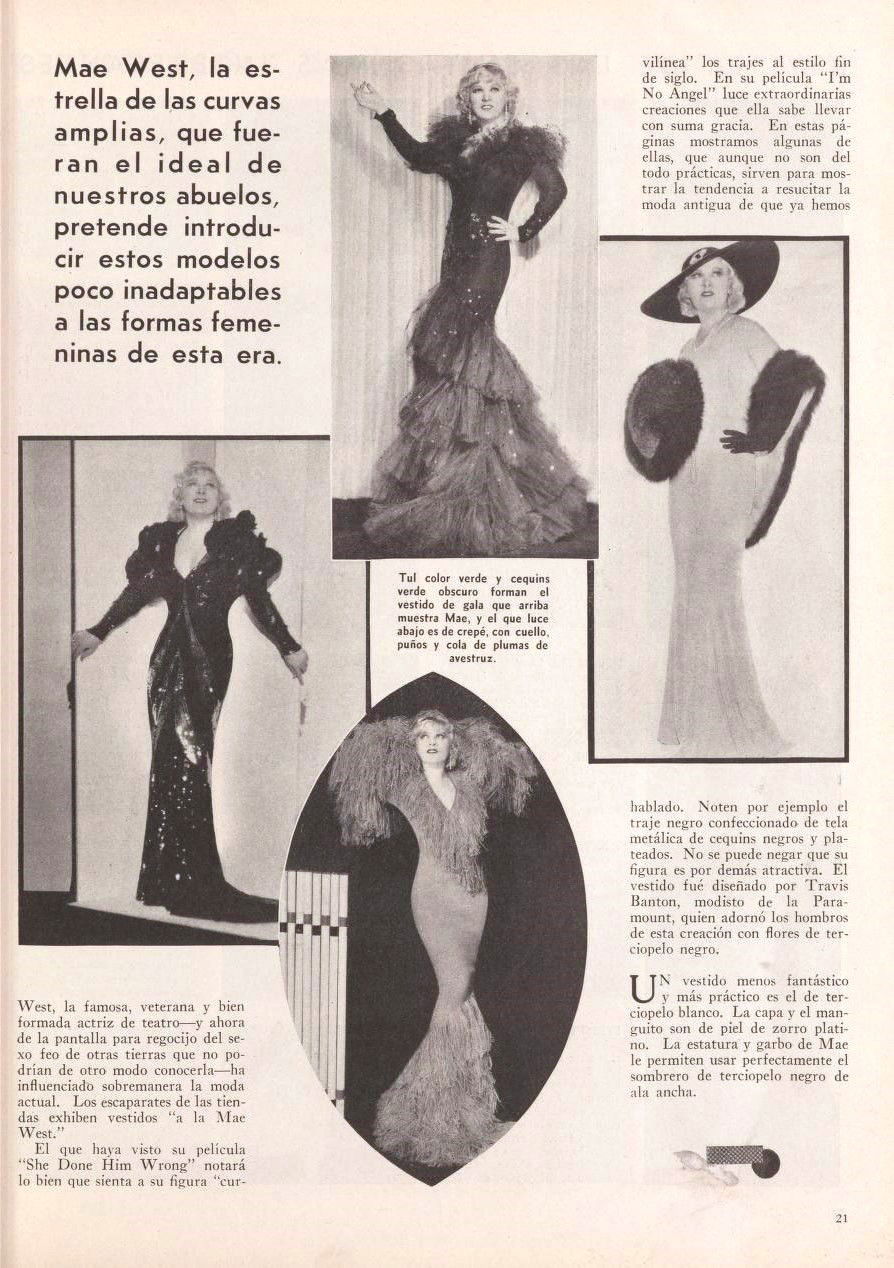
"Courtesy of the Media History Digital Library"
page n. 21 magazine CINELANDIA - (JANUARY 1934)
Mae West, the star with generous curves, which were the ideal of our grandparents, tries to introduce these models that are not very adaptable to today's female form.
West, the famous and well-trained stage and now film actress, has greatly influenced current fashion. The shop windows display "Mae West" clothes.
Those who have seen her film "She Done Him Wrong" will notice how well the fin de siècle style fits her "curvilinear" figure. In her film "I'm No Angel" she wears extraordinary creations that she knows how to carry with great grace. In these pages we show some of them, which, although not entirely practical, serve to show the tendency to resurrect the ancient fashion of which we have spoken. Notice, for example, the black dress made of metallic fabric with black and silver sequins. There is no denying that his figure is extremely attractive. The dress was designed by Travis Banton, a Paramount designer, who adorned the shoulders of this creation with black velvet flowers.
A less fantastic and more practical dress is that of white velvet. The cloak and sleeve are made of platinum fox fur. Mae's height and elegance allow her to wear the wide-brimmed black velvet hat perfectly.
Green tulle and dark green sequins form the gala dress that Mae shows above, and the one she wears underneath is crepe, with an ostrich feather collar, cuffs and tail.
CHRISTOFER STRONG
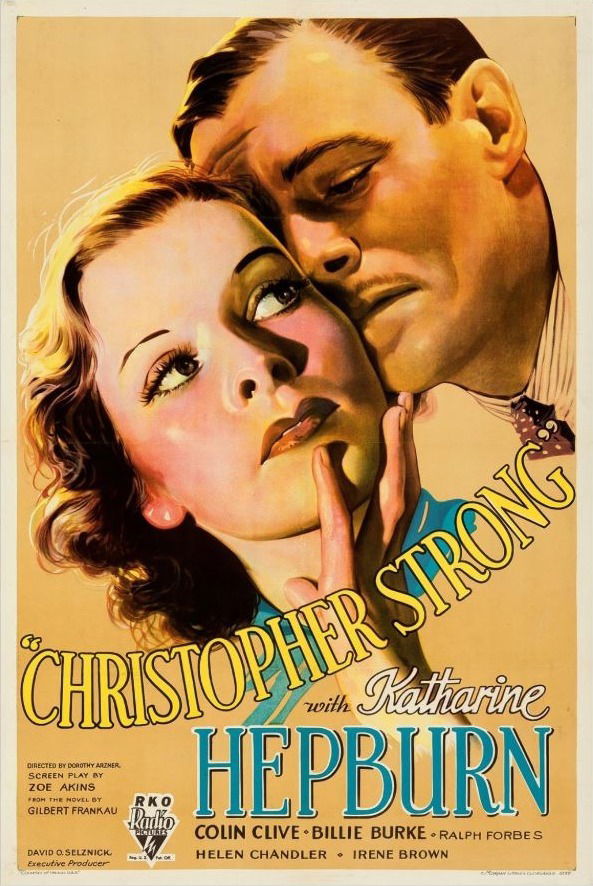
Movie Poster
Christopher Strong (1933), known in Italy as The Silver Moth, is a drama film directed by Dorothy Arzner, one of the few female directors of that era. The film stars Katharine Hepburn as Cynthia Darrington, a reckless aviator.
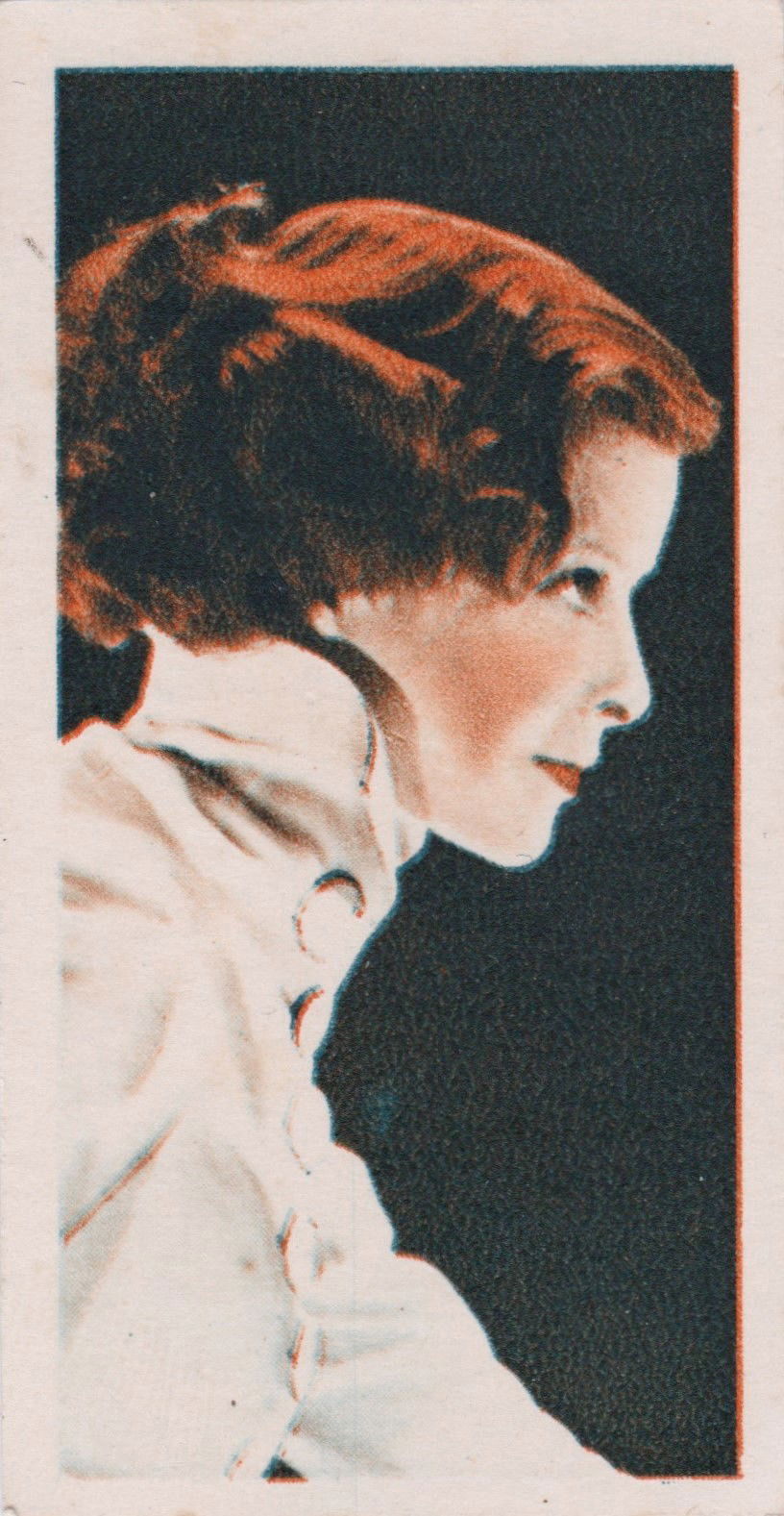
Card n.6 - FILM STARS
GODFREY PHILLIPS Ltd. (1934)
(personal collection)
Katharine Hepburn gives an extraordinary performance, her performance is characterized by a combination of strength and vulnerability, which perfectly captures the essence of an independent and determined woman. Hepburn manages to convey the complexity of her character, a brave aviator fighting for her personal and professional freedom in a male-dominated world.
The costumes in the film, designed by Howard Greer and Walter Plunkett, are key to defining the characters and atmosphere of the film. One of the most iconic costumes is the moth dress worn by Katharine Hepburn. This dress features a bold and unique design, which perfectly reflects the character of Cynthia Darrington.

Scene from the Movie
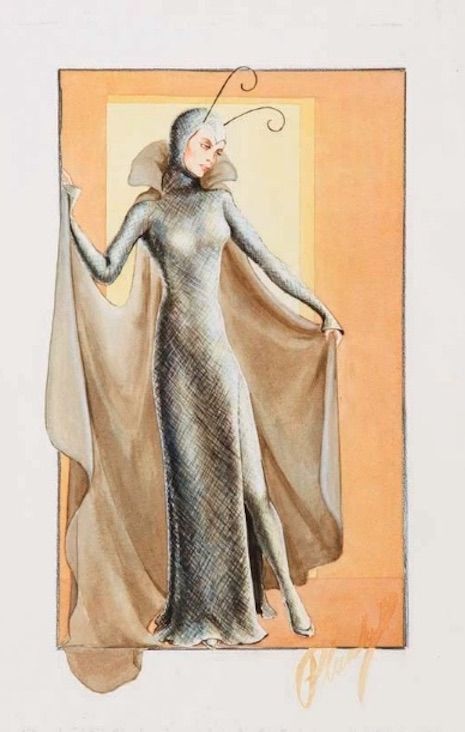
Sketch by Walter Plunkett
The moth dress is made of a silver fabric that sparkles under the lights, creating a spectacular visual effect. The moth's wings, which extend from the shoulders to the ground, are decorated with intricate details that resemble the wings of a real moth. This costume not only enhances Katharine Hepburn's beauty, but also helps to create an image of grace and lightness, in line with the character's theme of flight and independence.
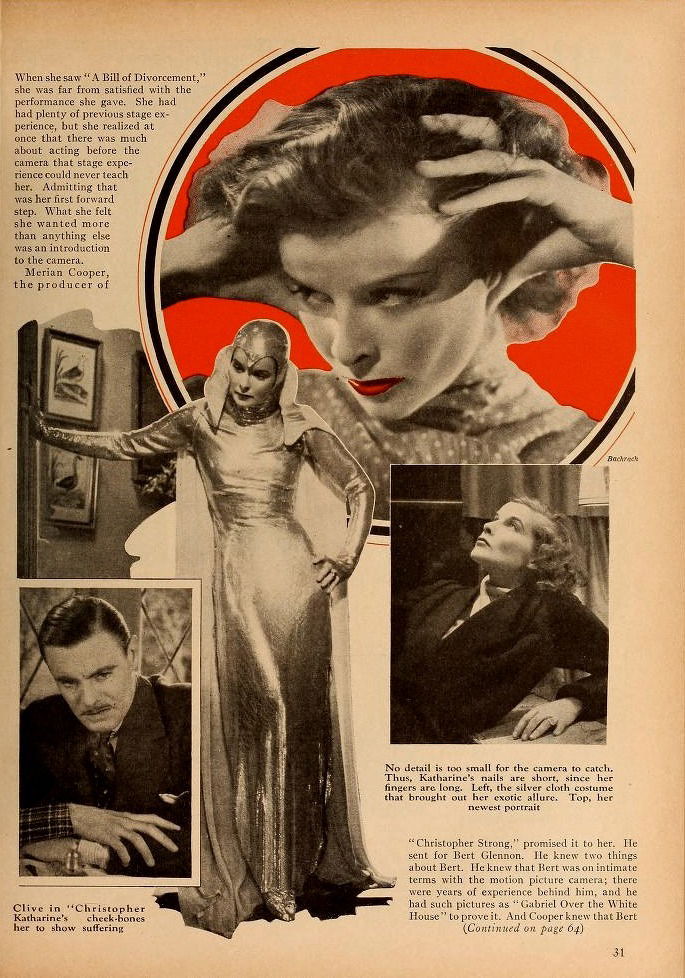
"Courtesy of the Media History Digital Library"
Pag. 31 del periodico Motion Picture (Aug 1933-Jan 1934)
In summary, Christopher Strong's costumes are a perfect example of Howard Greer and Walter Plunkett's talent for creating outfits that not only enhance the beauty of the stars but also help define their characters and set the mood for the film.
BELLE OF THE NINETIES
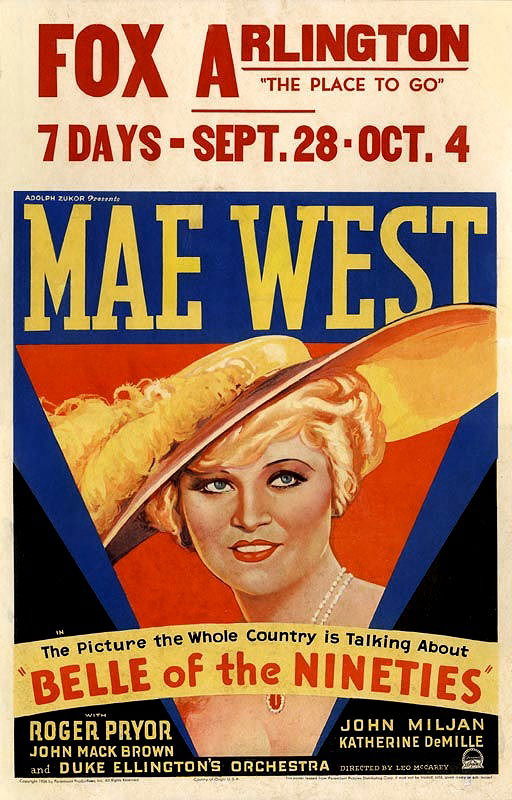
MOVIE POSTER
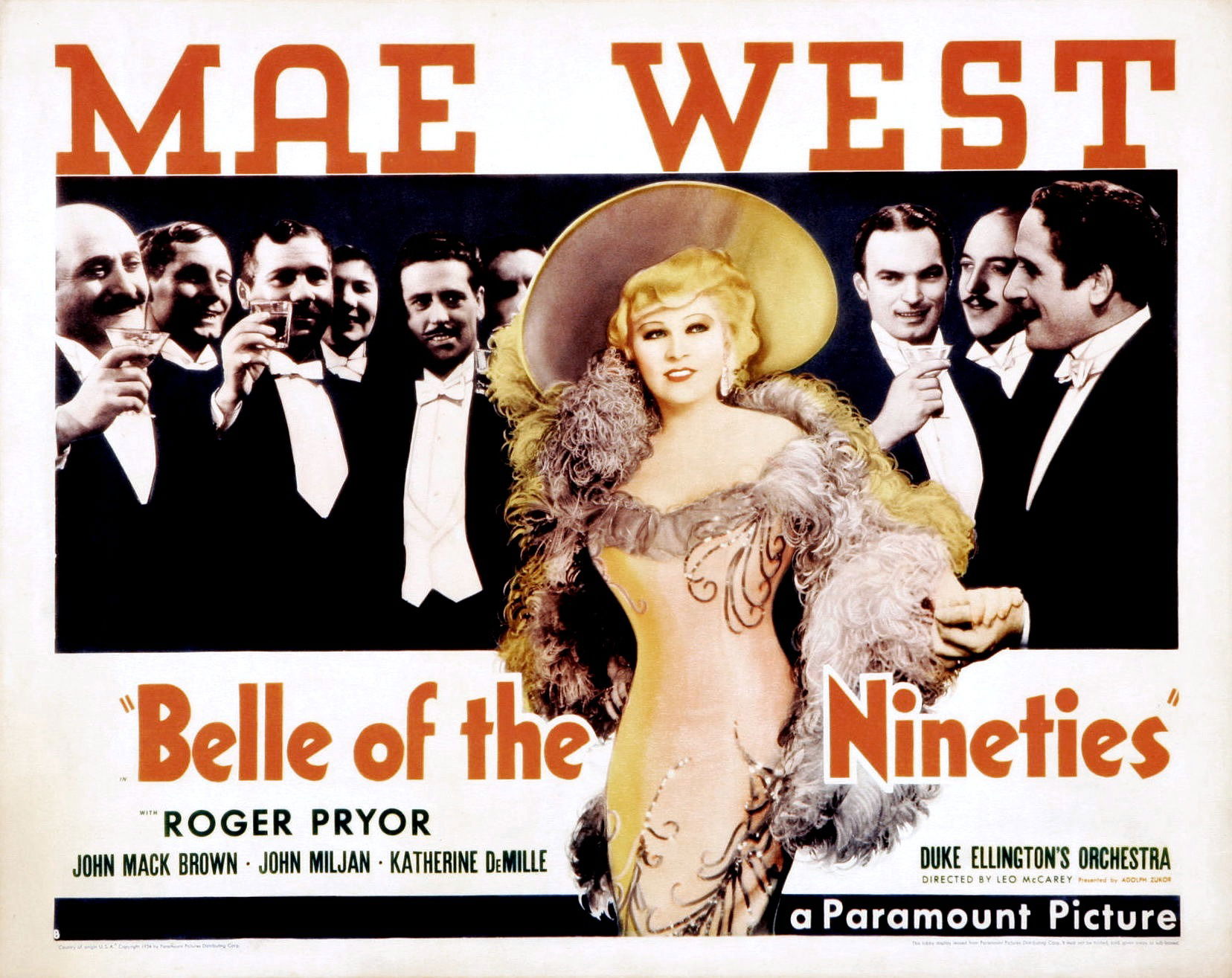
Movie Poster
Belle of the Nineties (1934) is a film directed by Leo McCarey and starring Mae West, who also wrote the screenplay based on her original story "It Ain't No Sin". The film is set in the 90s of the nineteenth century and follows the story of Ruby Carter, a vaudeville star who moves to New Orleans to work in a luxury nightclub.
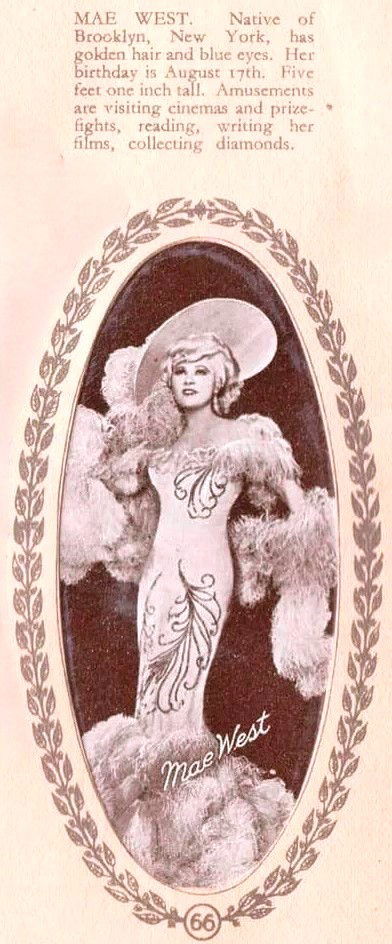
Card n.66 - THE FILM STAR ALBUM
Carreras Ltd. in 1934 cigarettes "PICCADILLY JUNIORS"
(personal collection)
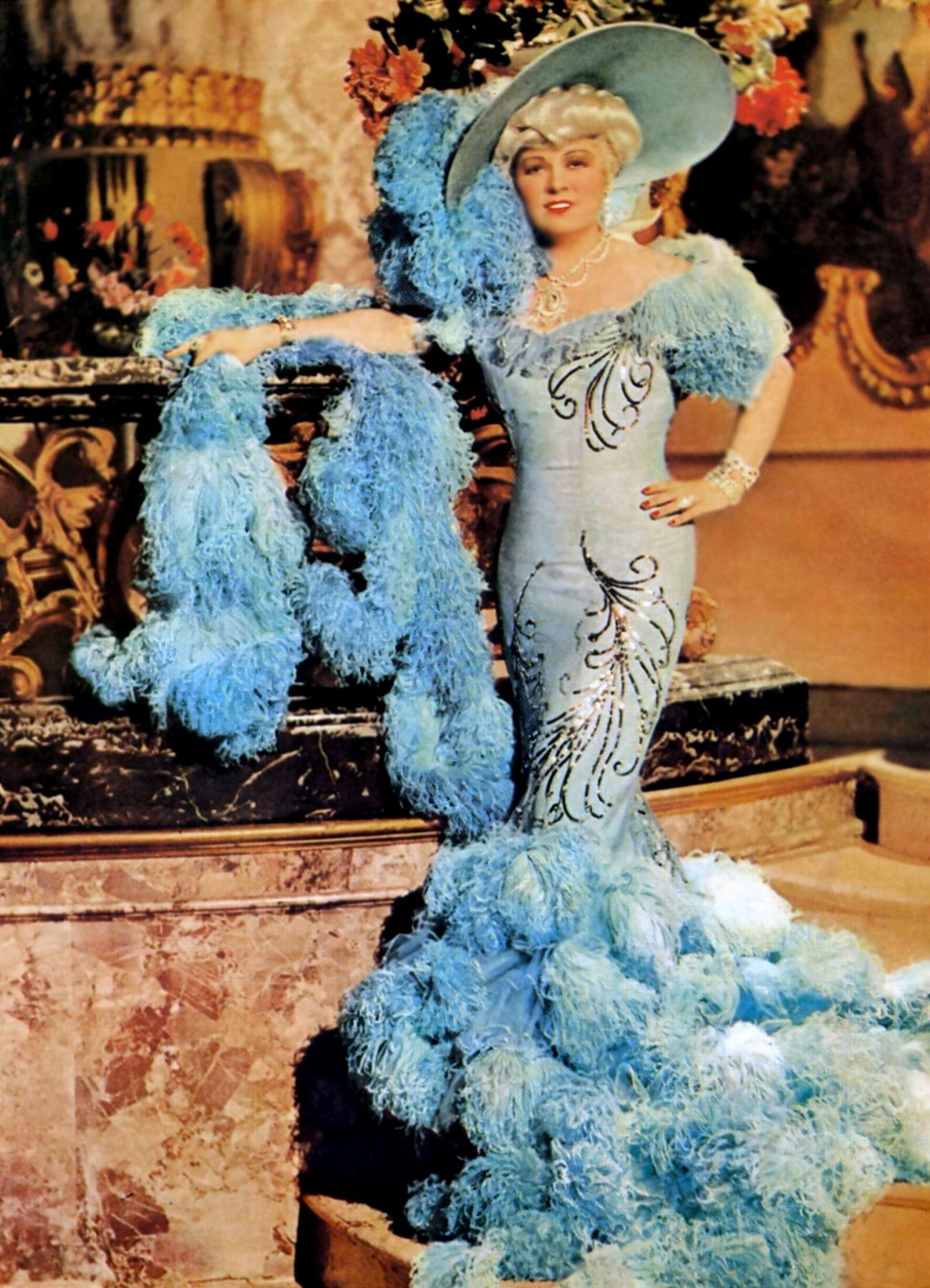
"Courtesy of the site doctormacro.com"
The costumes in the film, designed by Travis Banton, are a key part of the film's visual appeal. Banton, known for his elegant and sophisticated work, created clothes that enhance the figure of Mae West and reflect the glamour of the era. Mae West wears a series of luxurious evening dresses, featuring fine fabrics such as silk and velvet, often enriched with sparkling details such as sequins and beads.
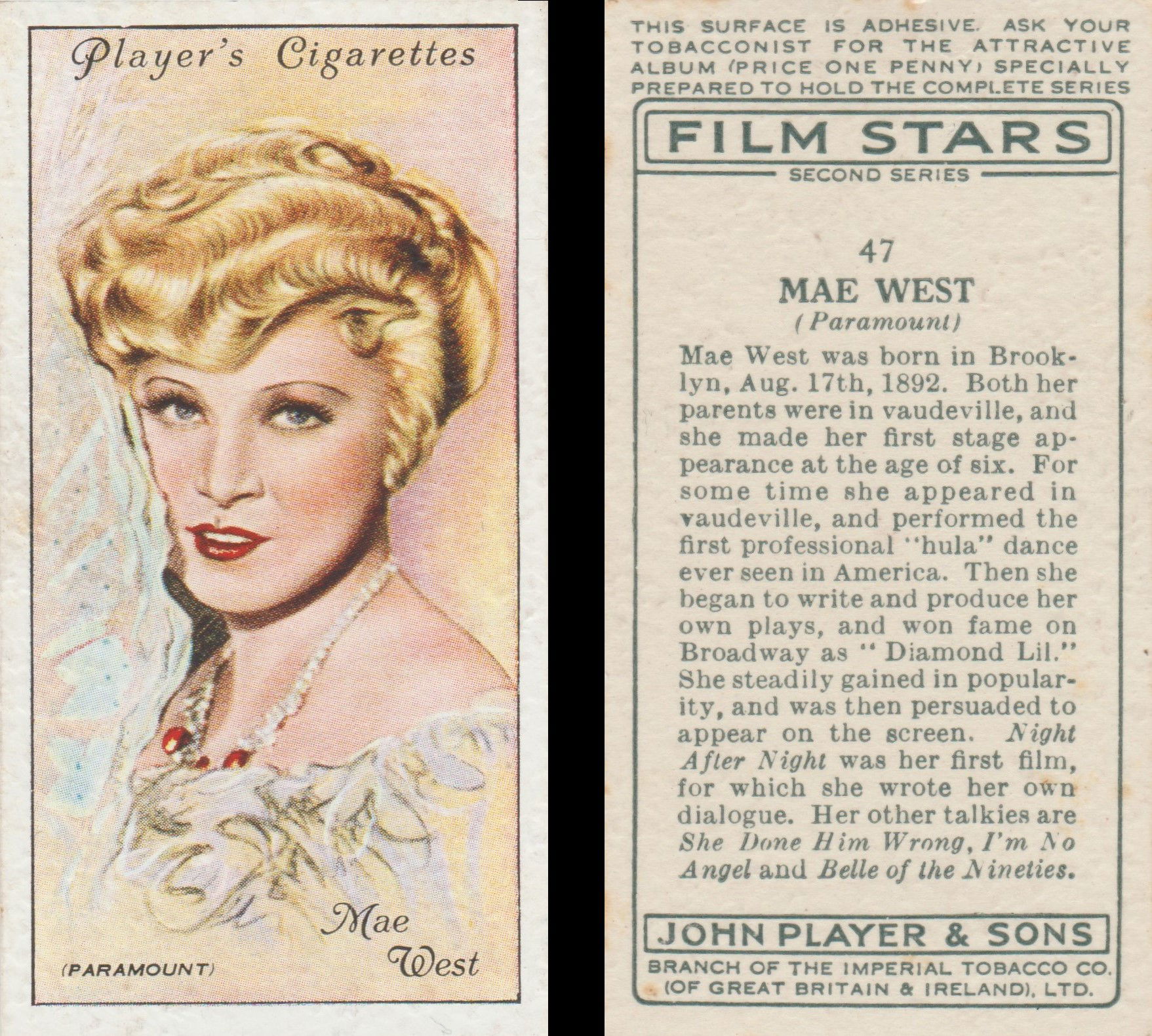
Card n.47 - FILM STARS Second Series
JOHN PLAYER & SONS (1934)
(personal collection)

Scene from the Movie
Mae West's outfits are complemented by distinctive accessories, such as elaborate hats, long gloves, and flashy jewelry. These details add a touch of elegance and help define the character of Ruby Carter as a woman of great style and charisma. In addition to evening dresses, Mae West also wears spectacular stage costumes during her performances in the nightclub. These costumes are designed to capture the attention of the audience and include elements such as feathers, fringes, and metallic details.
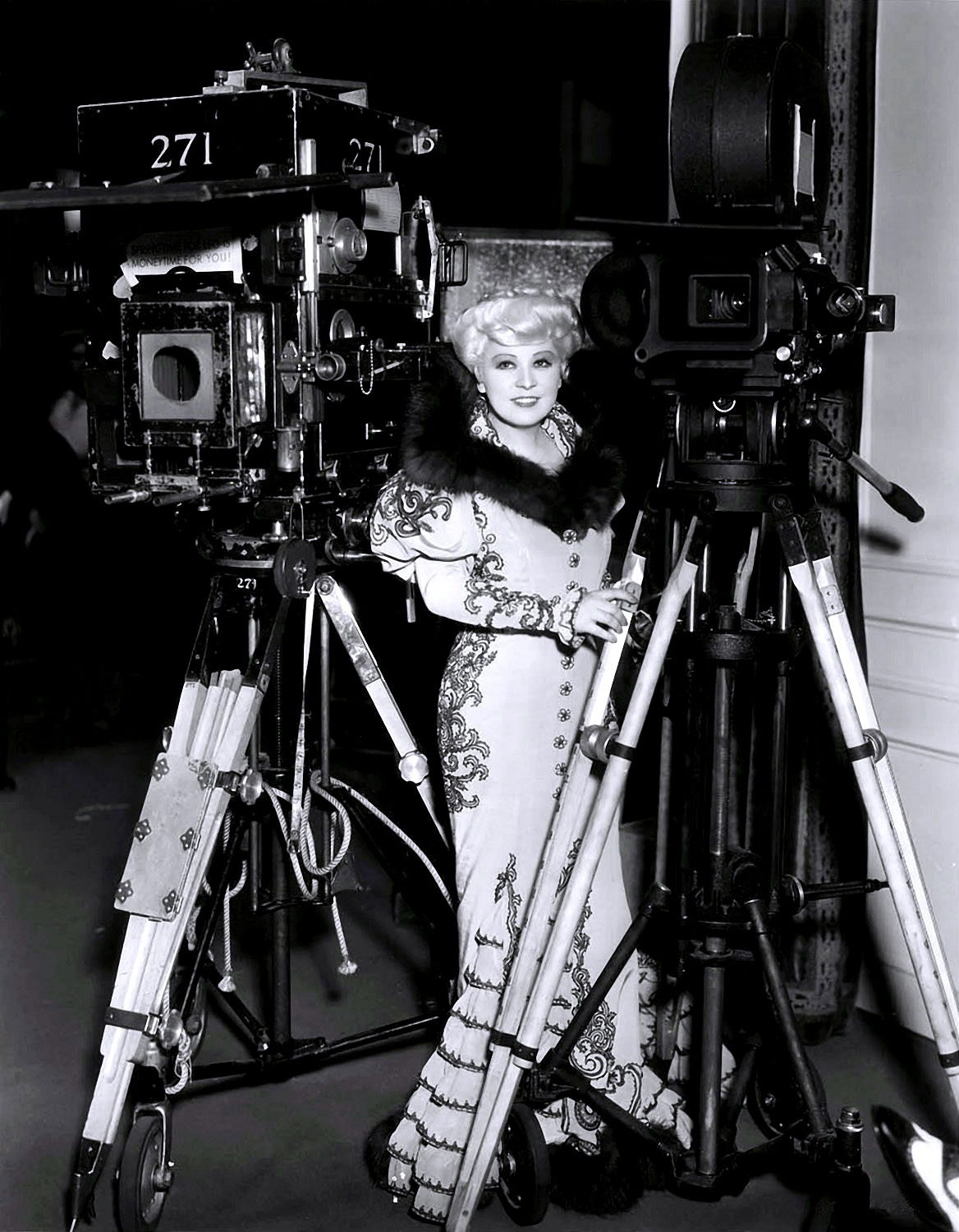
"Courtesy of the site doctormacro.com"
Even Mae West's everyday clothes in the film are taken care of down to the smallest detail. Travis Banton has created a series of elegant and fashionable outfits that reflect the character's sophisticated taste. The costumes for "Belle of the Nineties" are a perfect example of Travis Banton's talent for creating outfits that not only enhance the beauty of the stars, but also help define their characters and set the mood for the film.
The particular clothes that Mae West wore to promote "Belle of the Nineties", such as those of spider, bat, butterfly or even Statue of Liberty, were mainly used for promotional and advertising purposes. These costumes were part of his bold and creative marketing strategy, which reflected his unique and provocative style.
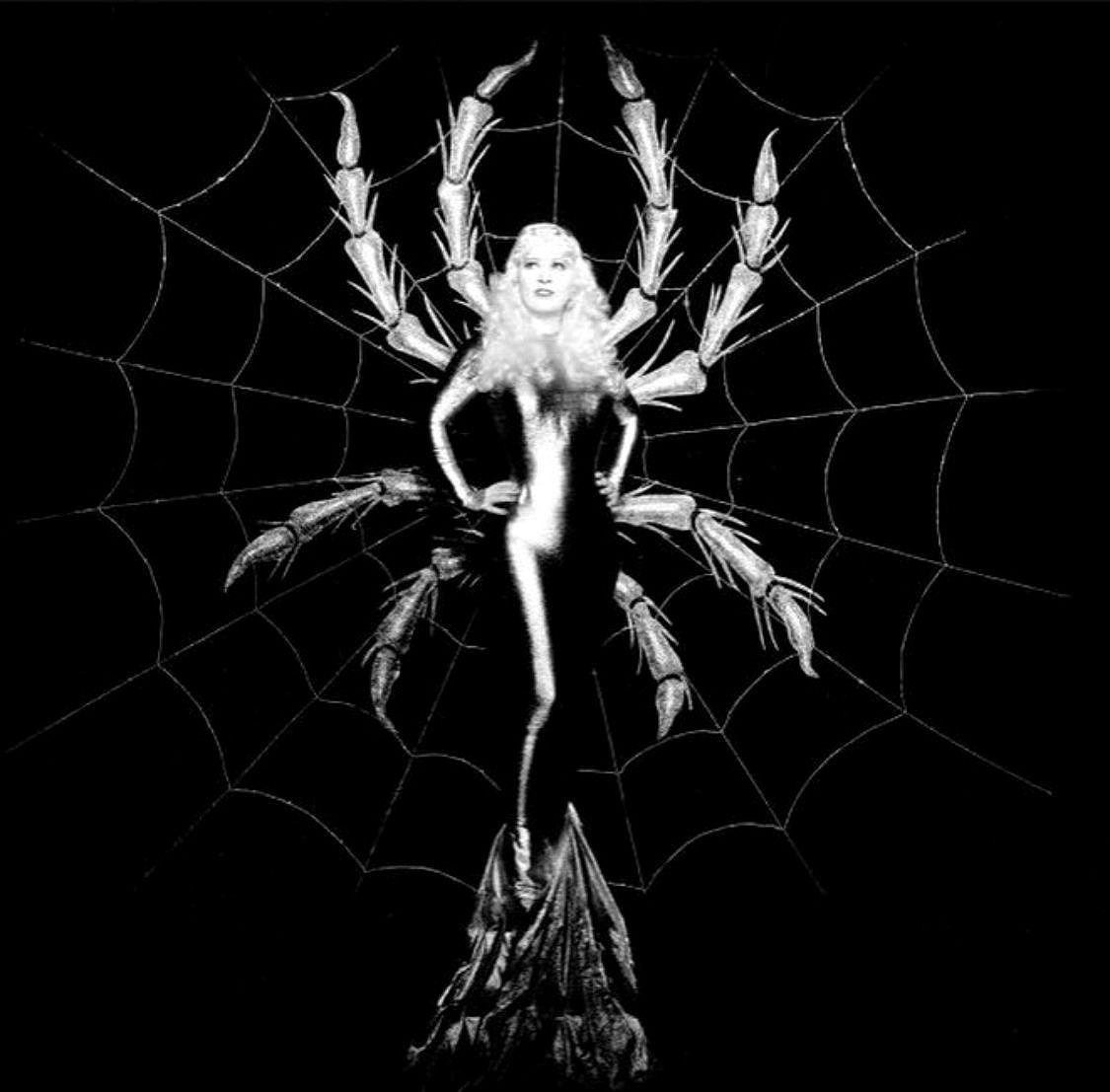
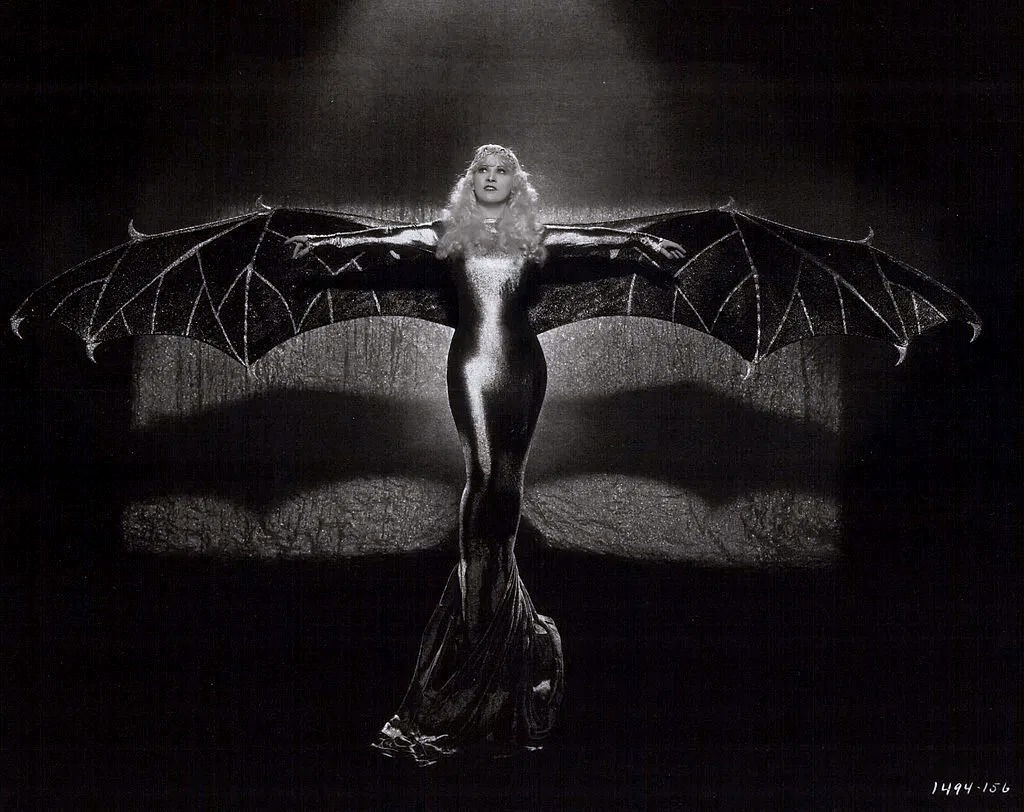
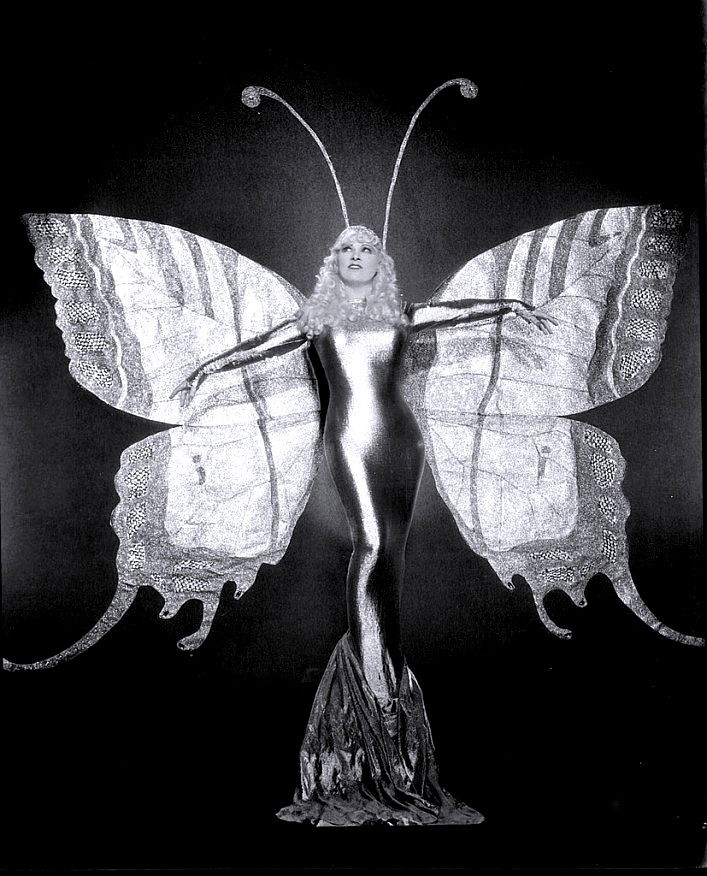
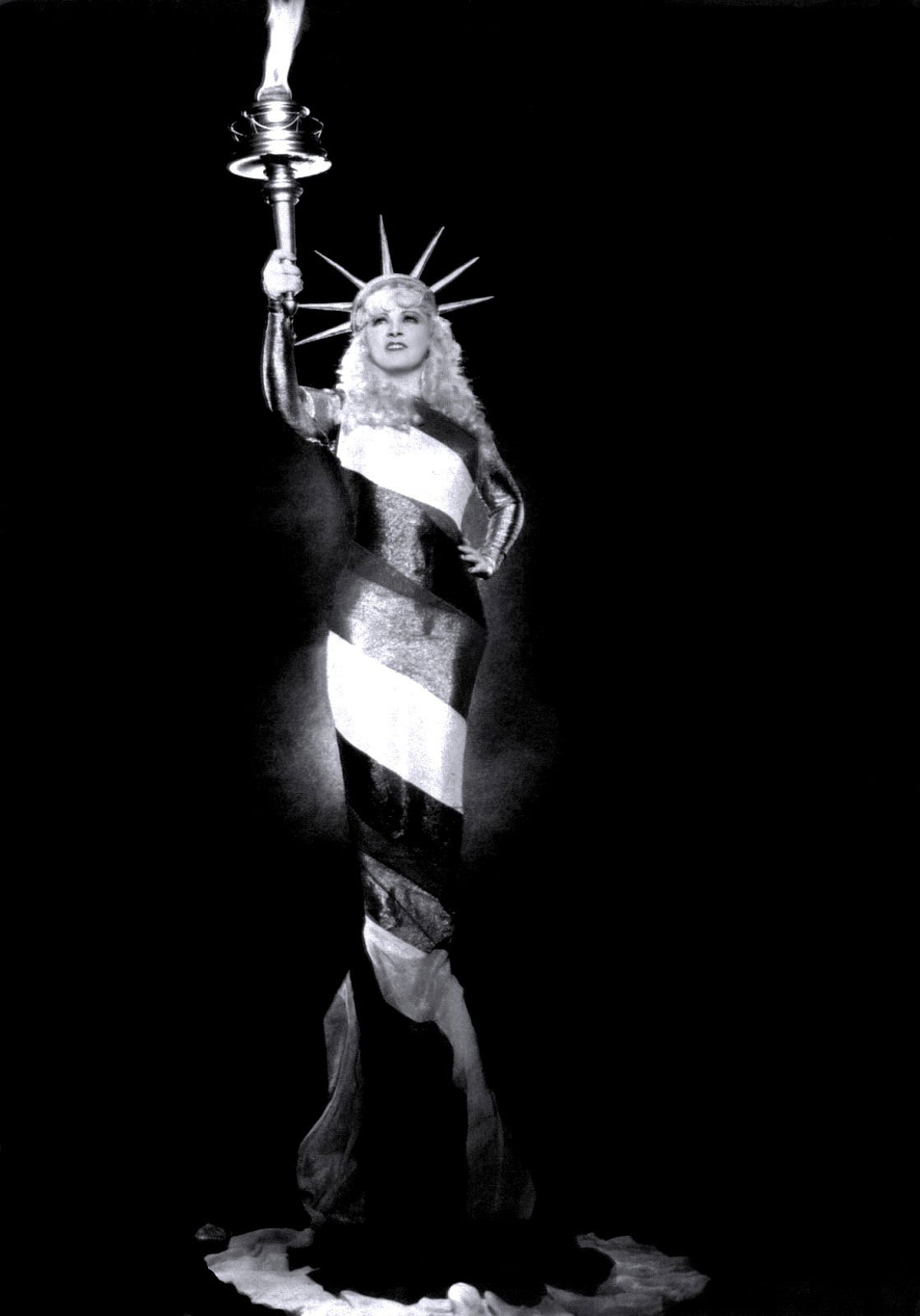
This film is often mistakenly considered a pre-Code film, but it was actually released a few months after the implementation of the Hays Code, the film censorship code that regulated film content in the United States. "Belle of the Nineties" has undergone several cuts and changes due to the censorship imposed by the Code.

Poster of the film with the first title "It Ain't No Sin"
The film, originally titled "It Ain't No Sin," a colloquial expression in English meaning "It's not a sin," reflected Mae West's bold and provocative style. However, he had to change the title and remove or edit some scenes and dialogue to comply with the strict guidelines of the Production Code. This code, implemented in 1934, regulated the content of films to avoid representations considered immoral or inappropriate. Some of the changes included reducing the sexual innuendos and double entendres typical of Mae West's films. Despite these restrictions, Mae West still managed to maintain her unique style, and the film was well-received by audiences.
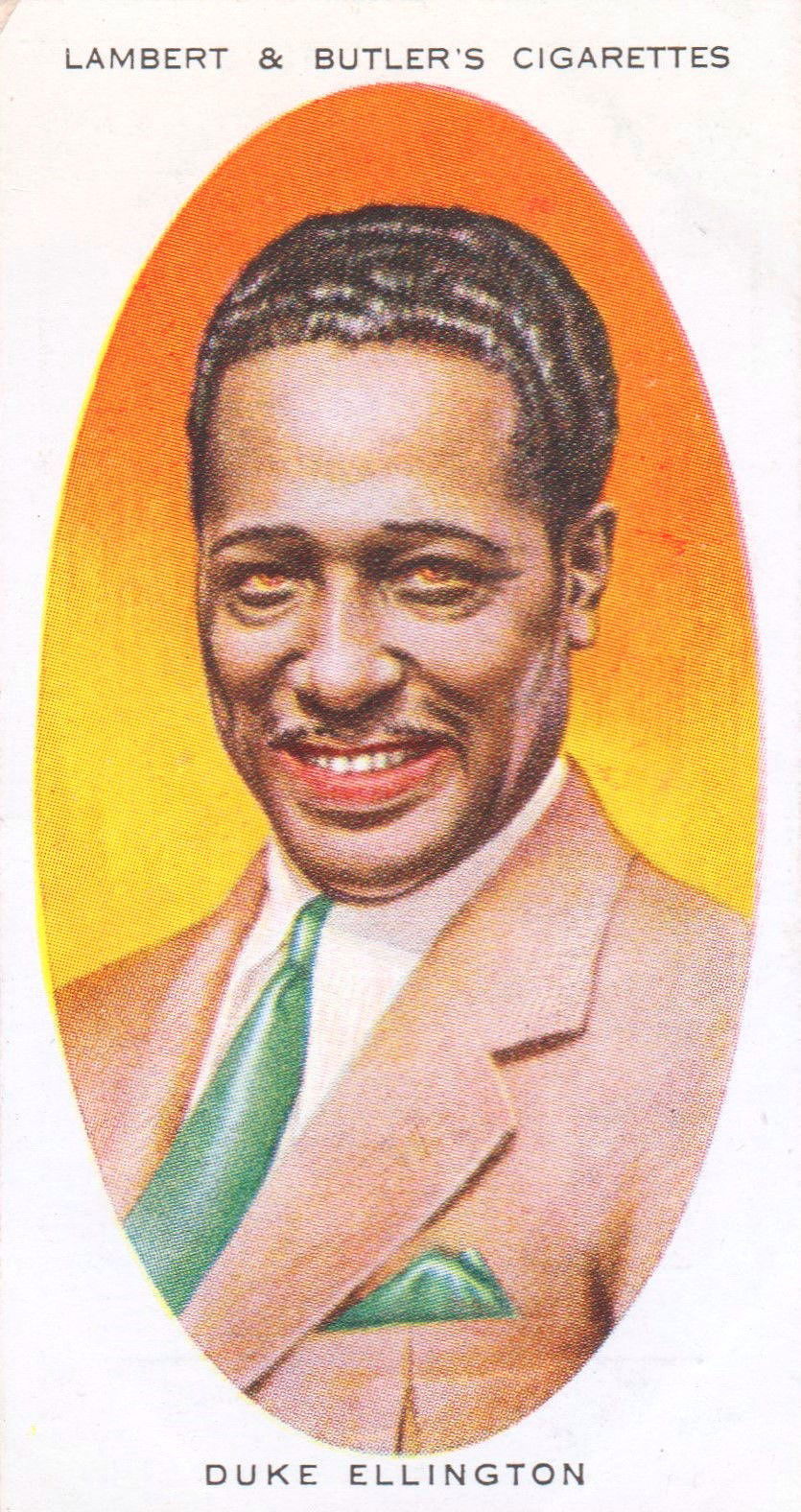
Card n.4 - DANCE BAND LEADERS
LAMBERT & BULTER (1936)
(personal collection)
A curiosity, Duke Ellington and his orchestra participated in the film "Belle of the Nineties". Mae West, who was a big fan of Duke Ellington, insisted that he and his orchestra appear in the film. Despite initial objections from Paramount Pictures executives, Mae West got what she wanted, and Duke Ellington and his band accompanied the actress in several scenes in the film, including performing the jazz standard "My Old Flame"
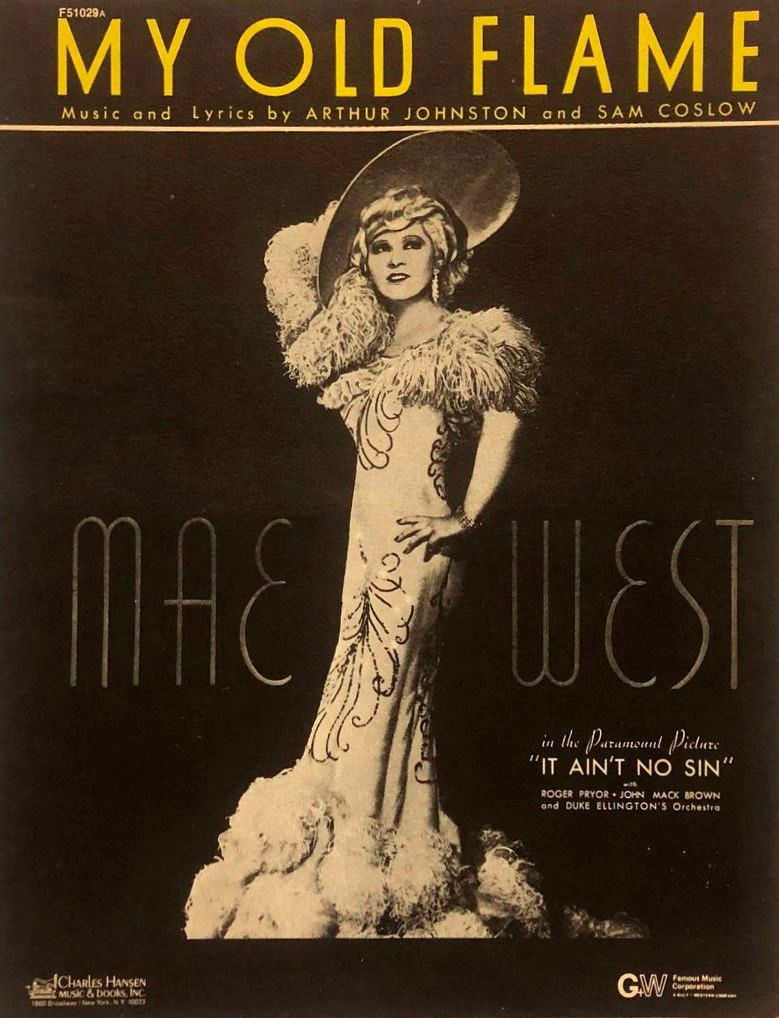
Cover "MY OLD FLAME" (1934) (1959 reissue)
"My Old Flame" has since become a jazz standard, and has been sung by the likes of Billie Holiday, Peggy Lee, Dinah Washington, Helen Humes and Marlena Shaw, with instrumental interpretations by Charlie Parker for the Dial label in 1947, Gerry Mulligan with Chet Baker in 1953, trombonist J.J. Johnson on his 1957 album Trombone Master, Sonny Rollins on his 1993 album Old Flames and many others. The song was also recorded by Stan Kenton's orchestra, and by Zoot Sims in a "sensitive interpretation" according to Jazz Improv magazine. Spike Jones and his City Slickers recorded a parody version in 1947 with the voice of Paul Frees (imitating Peter Lorre). John Scofield included the song on his 2022 solo album.
GEORGE WHITE'S SCANDALS (1934)
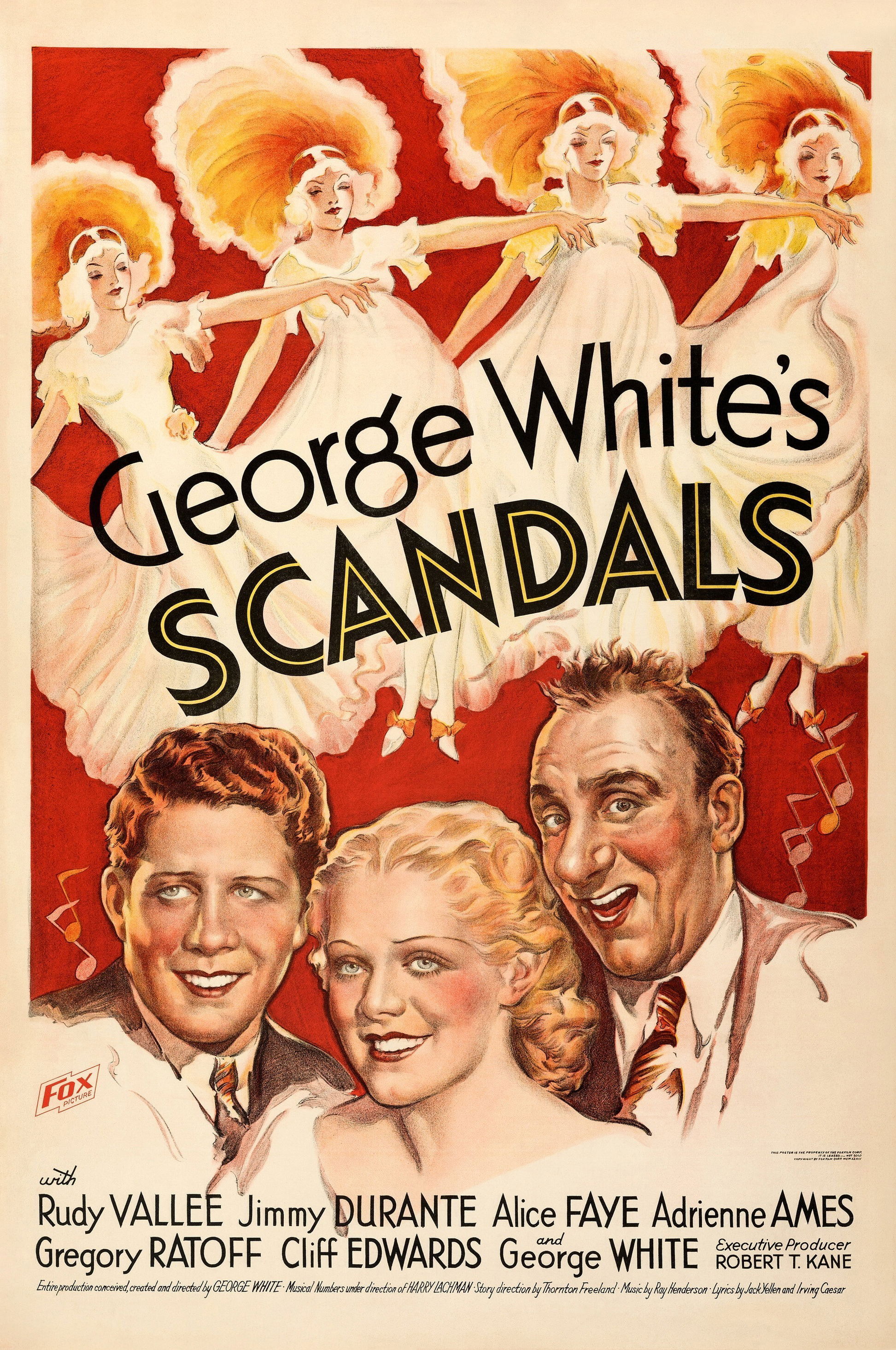
MOVIE POSTER
George White's Scandals (1934) is a musical film directed by George White and Harry Lachman, known for its lively performances and dance numbers. The film offers a behind-the-scenes look at the world of vaudeville, following the story of a group of artists as they prepare a variety show.
The film's costumes, designed by Charles LeMaire, are a key part of its visual appeal. LeMaire, a renowned Hollywood costume designer, created outfits that not only enhance the beauty of the actors but also help define their characters and set the mood for the film. LeMaire's costumes for "George White's Scandals" are characterized by sophisticated elegance and attention to detail that reflects the glamour of the era.
LeMaire has used a variety of fine fabrics and shimmering details to create clothes that capture the attention of the audience. The evening dresses worn by the female protagonists, for example, are made of silk and velvet, often enriched with sequins and beads. These dresses not only enhance the figure of the actresses, but also help to create an atmosphere of opulence and sophistication.
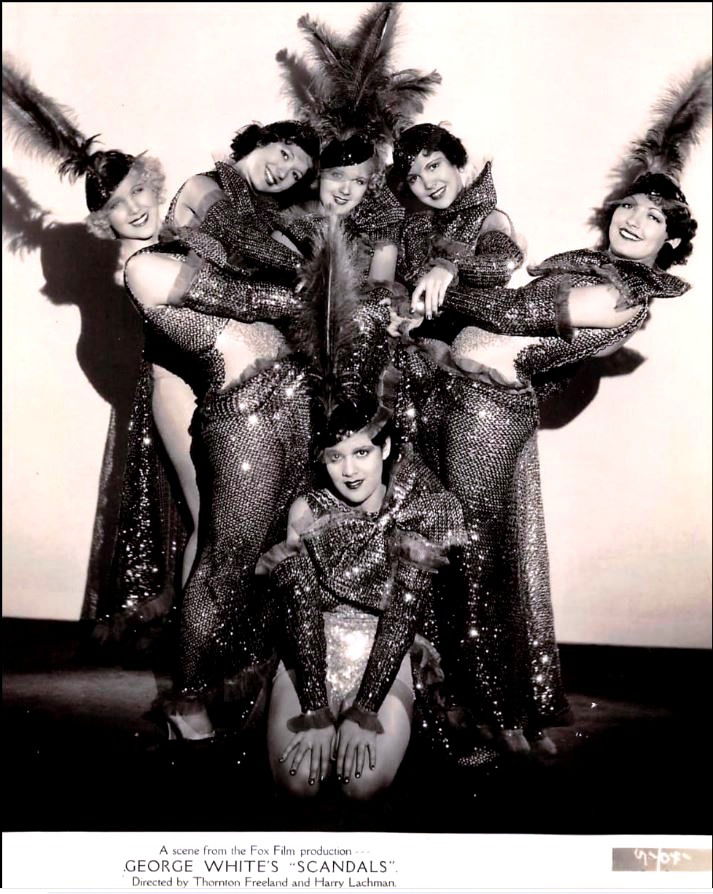
Scene from the Movie
In addition to evening dresses, LeMaire created spectacular stage costumes for dance numbers and musical performances. These costumes include elements such as feathers, fringes and metallic details, designed to capture the attention of the audience and add a touch of spectacle to the performances.

"Courtesy of the site doctormacro.com"
Original concept art for the film "George White's Scandals"
The daily clothes of the characters, on the other hand, are cared for down to the smallest detail and reflect the sophisticated taste of the time.
In summary, Charles LeMaire's costumes for "George White's Scandals" are a perfect example of his talent for creating outfits that not only enhance the beauty of the actors but also help define their characters and set the mood for the film.
NOW I'LL TELL

Swedish Movie Poster
Another 1934 film starring Alice Faye is Now I'll Tell, a pre-Hays Code drama film directed by Edwin J. Burke, starring Spencer Tracy, Helen Twelvetrees and Alice Faye. The film tells the story of Murray Golden, an unscrupulous gambler who promises his wife Virginia to stop gambling once they reach $200,000. However, his greed leads him to continue gambling, putting his life and the lives of those close to him at risk.
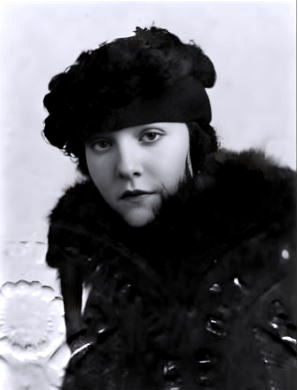
Rita Kaufman
The costumes of the film, designed by Rita Kaufman, play a fundamental role in defining the characters and the atmosphere of the film. Kaufman created clothes that reflect the historical period and social context of the characters, helping to make the narrative more authentic and engaging. For the character of Virginia Golden, played by Helen Twelvetrees, Kaufman chose elegant and refined clothes that reflect her social status and personality. Virginia's dresses are characterized by fine fabrics such as silk and velvet, often enriched with details such as lace and beads.
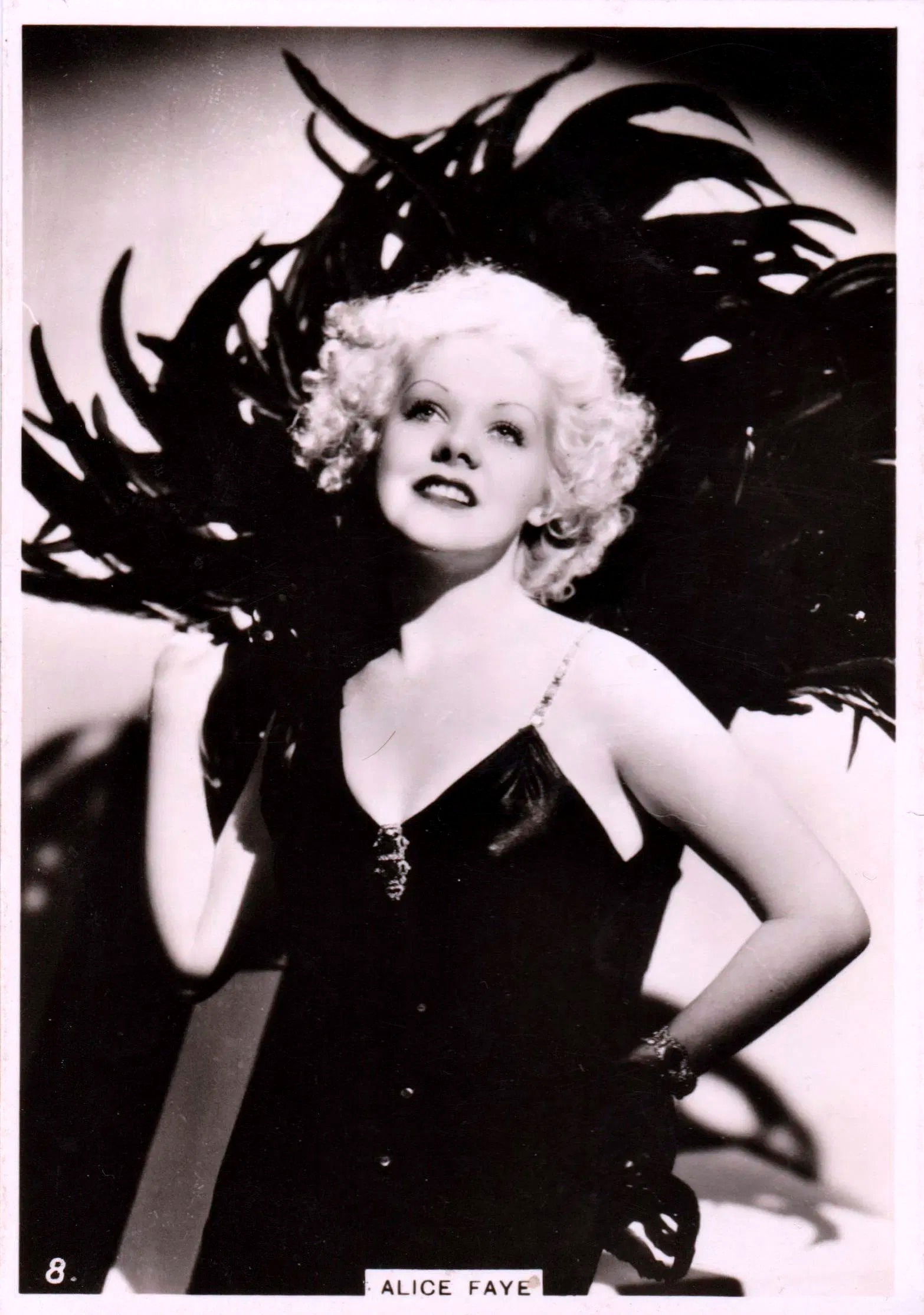
Card n.8 - MODERN BEAUTIES THIRD SERIES
B.A.T. (1938)
(personal collection)
For the character of Peggy Warren, played by Alice Faye, Kaufman created costumes that reflect her most daring and seductive nature. Peggy's dresses are often more flashy and provocative, with details such as plunging necklines and shimmering fabrics. These costumes help define Peggy's character as a confident woman who is determined to get what she wants. Finally, for the character of Murray Golden, played by Spencer Tracy, Kaufman chose clothes that reflect his lifestyle as a gambler. Murray's suits are elegant yet practical, with well-cut jackets and fashionable ties. These costumes help create an image of a man trying to maintain an appearance of respectability despite his illicit activities.
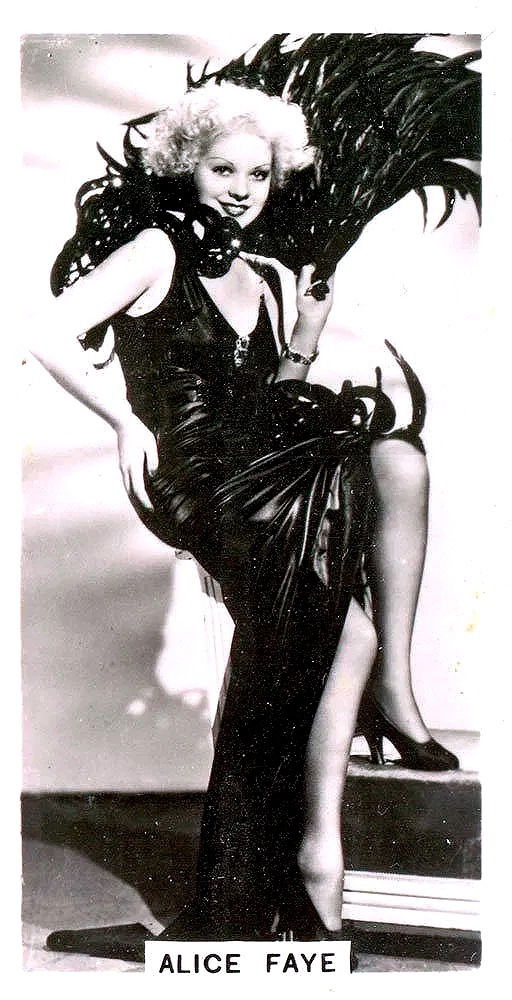
Card n.24 - Film Stars
LTD RACING (1938)
(personal collection)
The feathered dress worn by Alice Faye in the film Now I'll Tell (1934) is a perfect example of Rita Kaufman's talent for creating costumes that enhance the beauty of the stars and help define their characters. This dress features an elegant and sophisticated design, reflecting the glamour of the time.
The dress is made of a shiny fabric, probably satin or silk, which gives a luxurious and refined look. The top of the dress is fitted to highlight Alice Faye's figure, while the skirt features a high slit that reveals a leg, creating a dramatic and seductive effect. The feathers, which decorate the shoulders and neck, add a touch of spectacularity and movement to the dress.
THE PAINTED VEIL
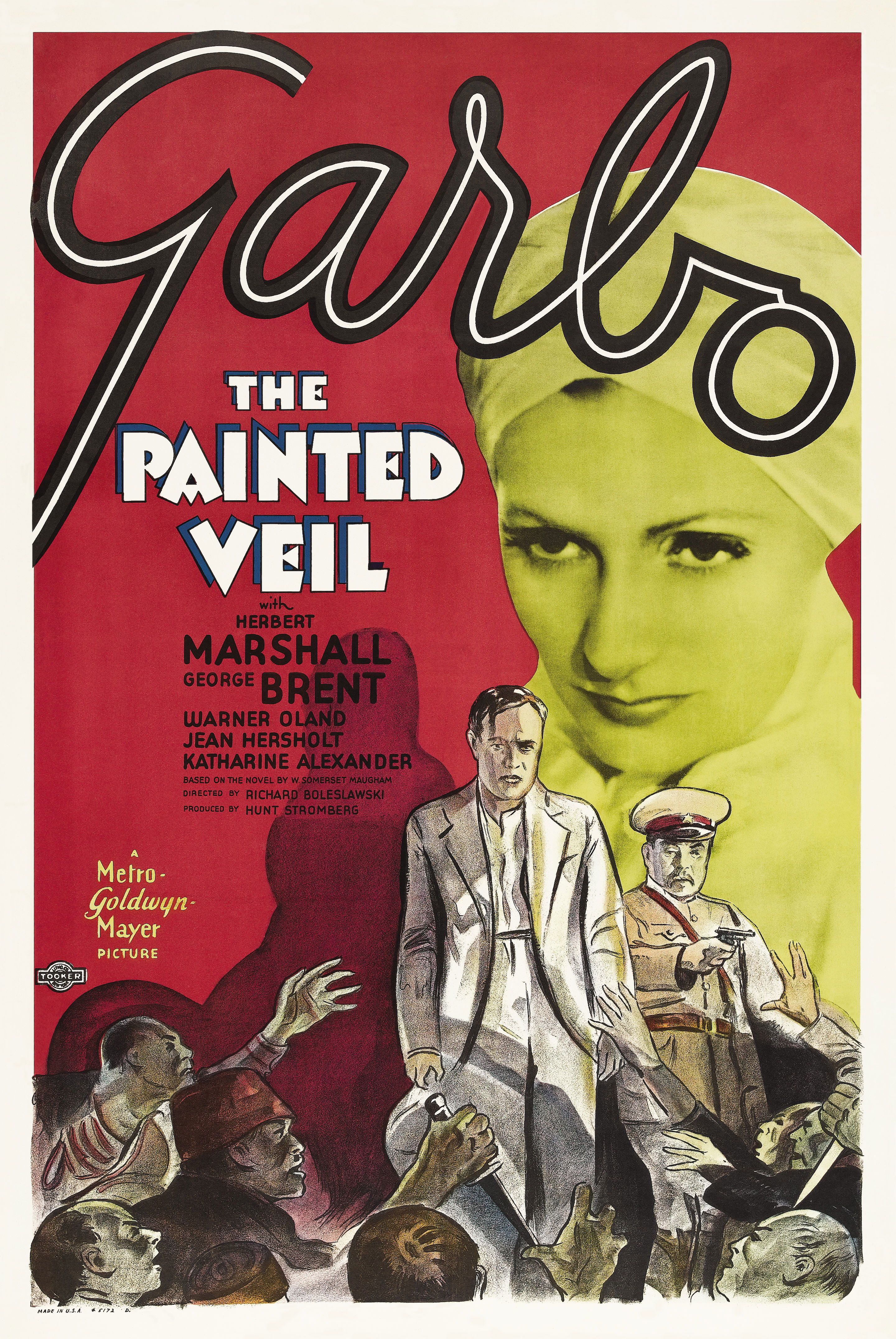
Movie Poster (1934)
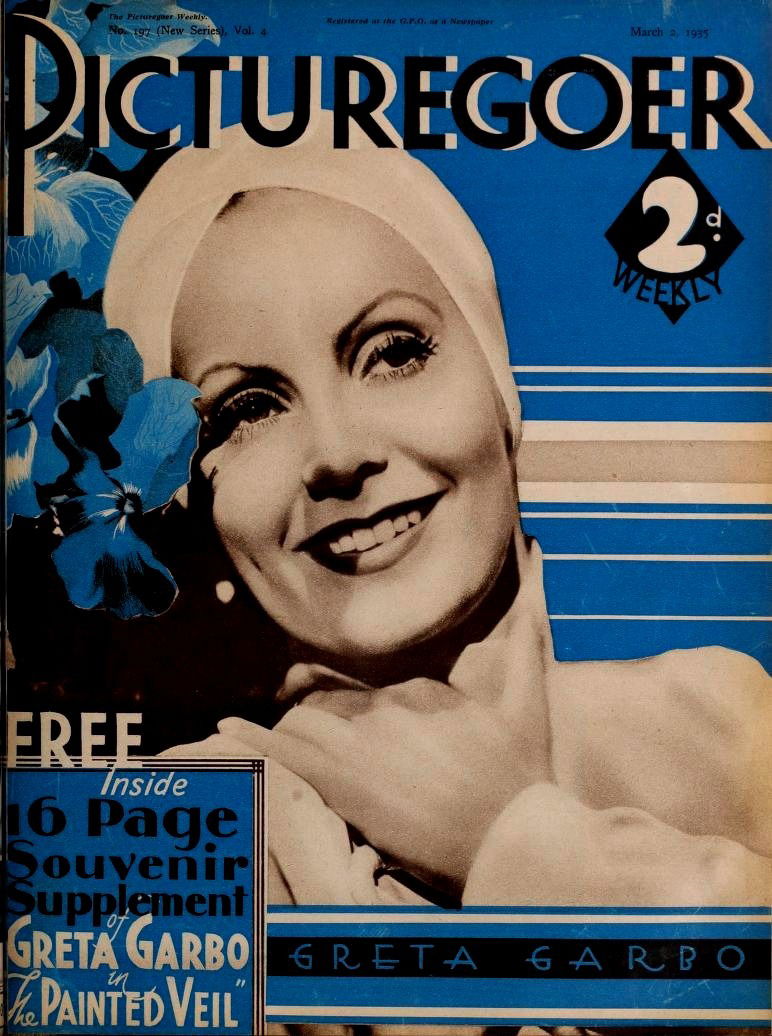
"Courtesy of the Media History Digital Library"
Cover of the periodical PICTUREGOER WEEKLY (March 1935)
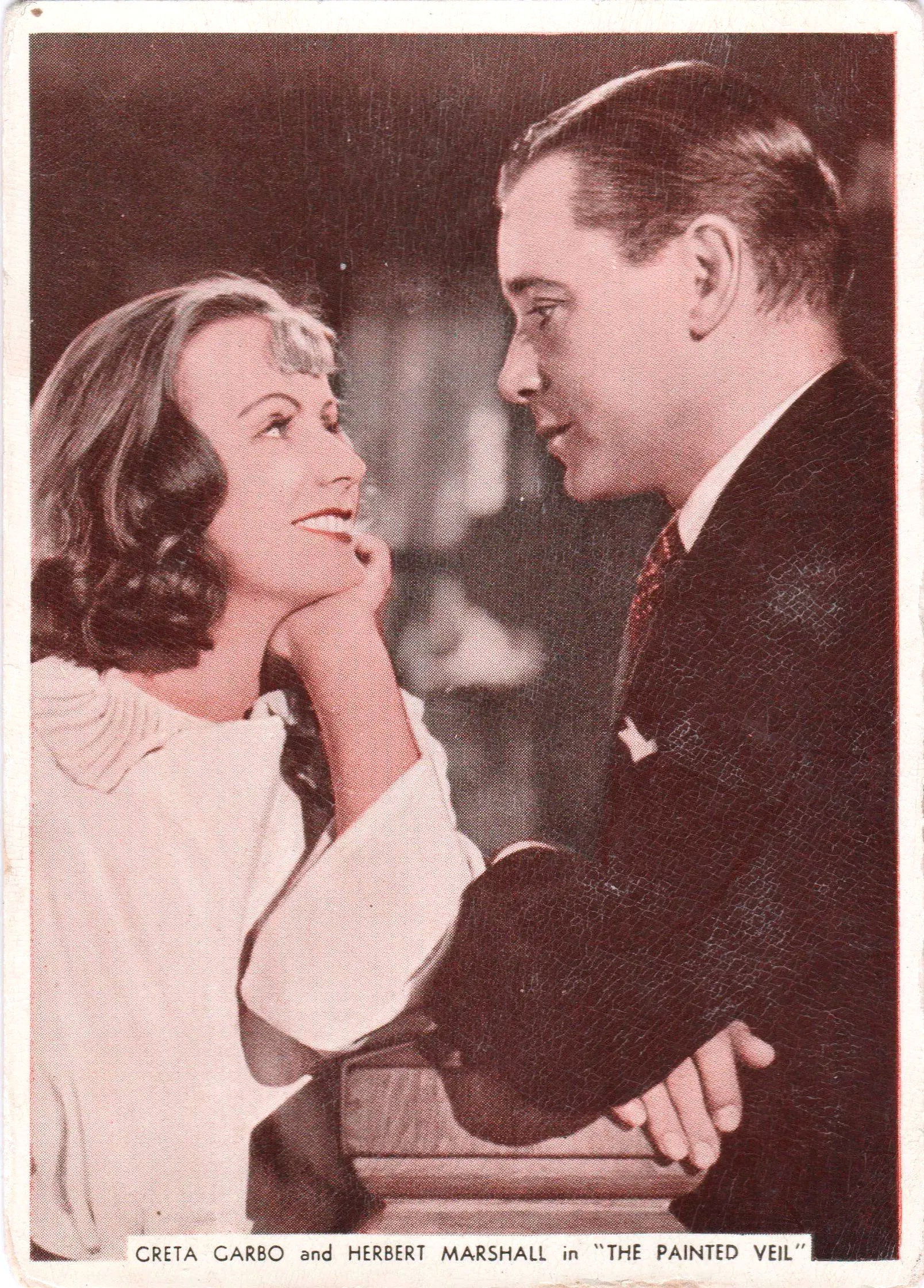
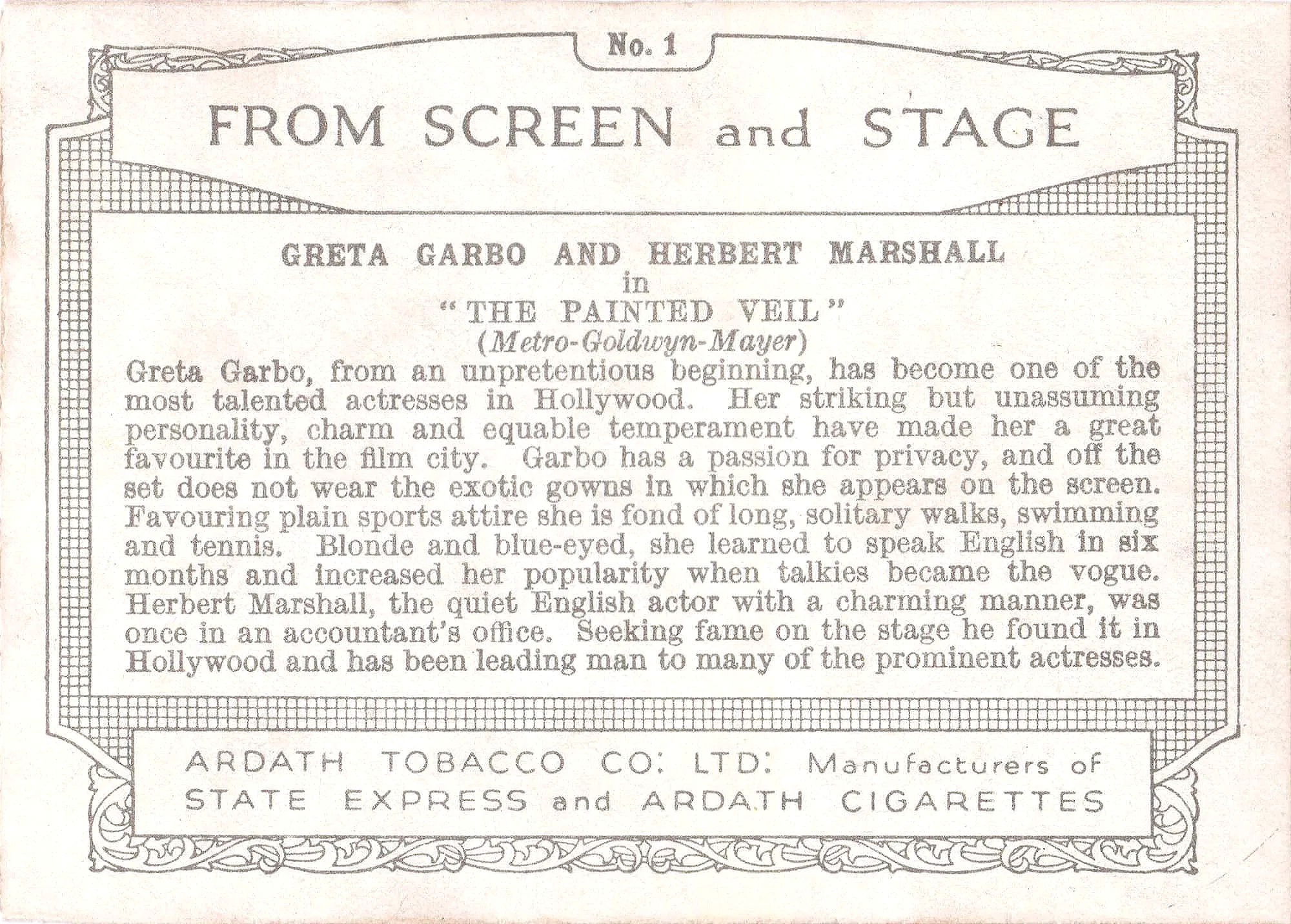
Card n.1 - FROM SCREEN and STAGE
ARDATH TOBACCO CO. Ltd. (1936)
(personal collection)
Returning to the Adrian-Garbo collaboration, here is another iconic film. The Painted Veil (1934), directed by Richard Boleslawski, is a drama film starring Greta Garbo as Katrin Koerber Fane. Garbo wears countless Chinese costumes in the film, the work of Adrian, some of which became very popular in the fashion of the time, such as the headband worn by the diva on a visit to the Chinese temple. Adrian has created costumes that reflect the elegance and sophistication of the 30s. Greta Garbo's dresses are characterized by clean lines and fine fabrics, which highlight her slender figure and regal bearing.
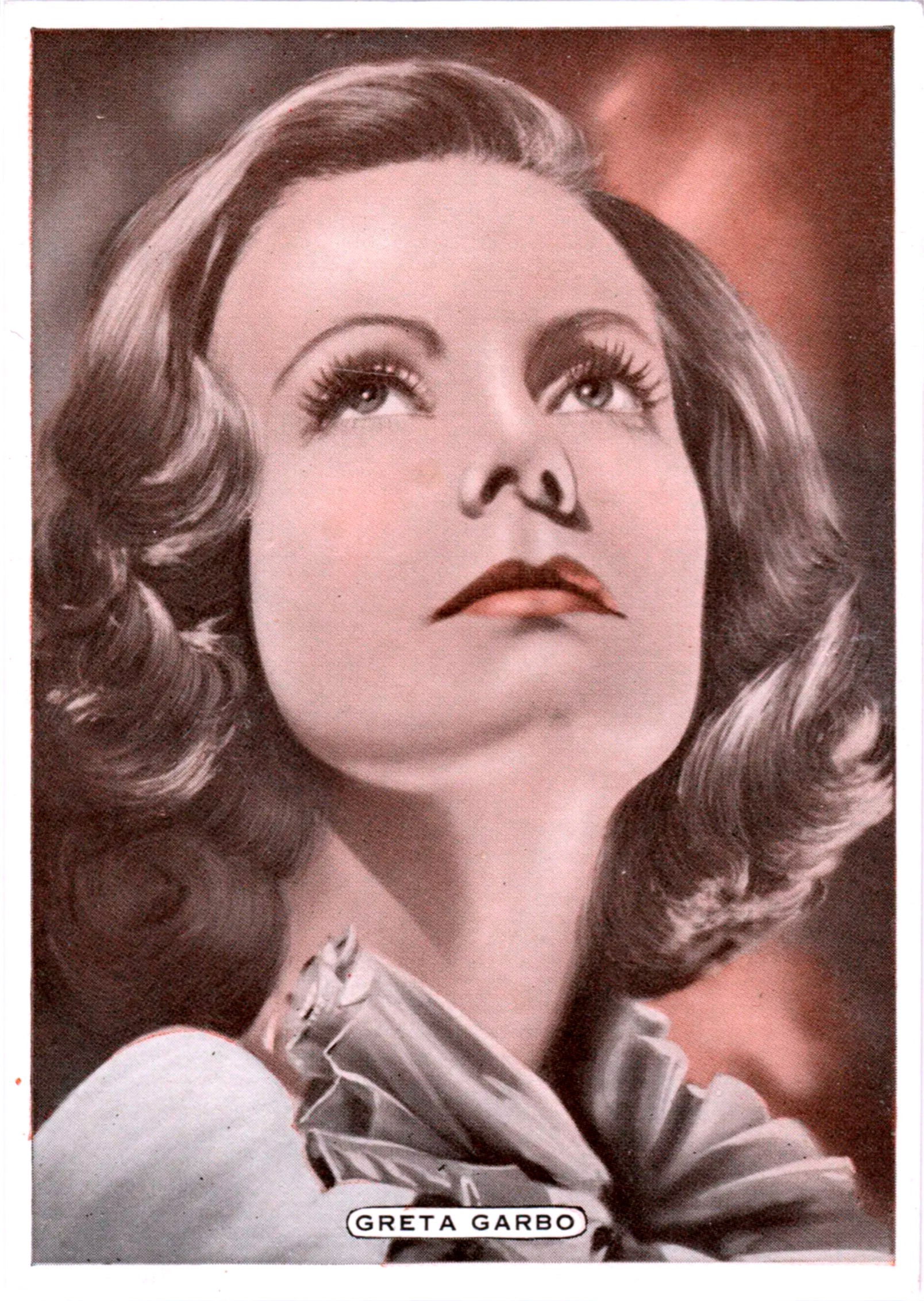
Card n.11 - FILM STAGE & RADIO STARS
ARDATH TOBACCO CO LTD (1935)
(personal collection)
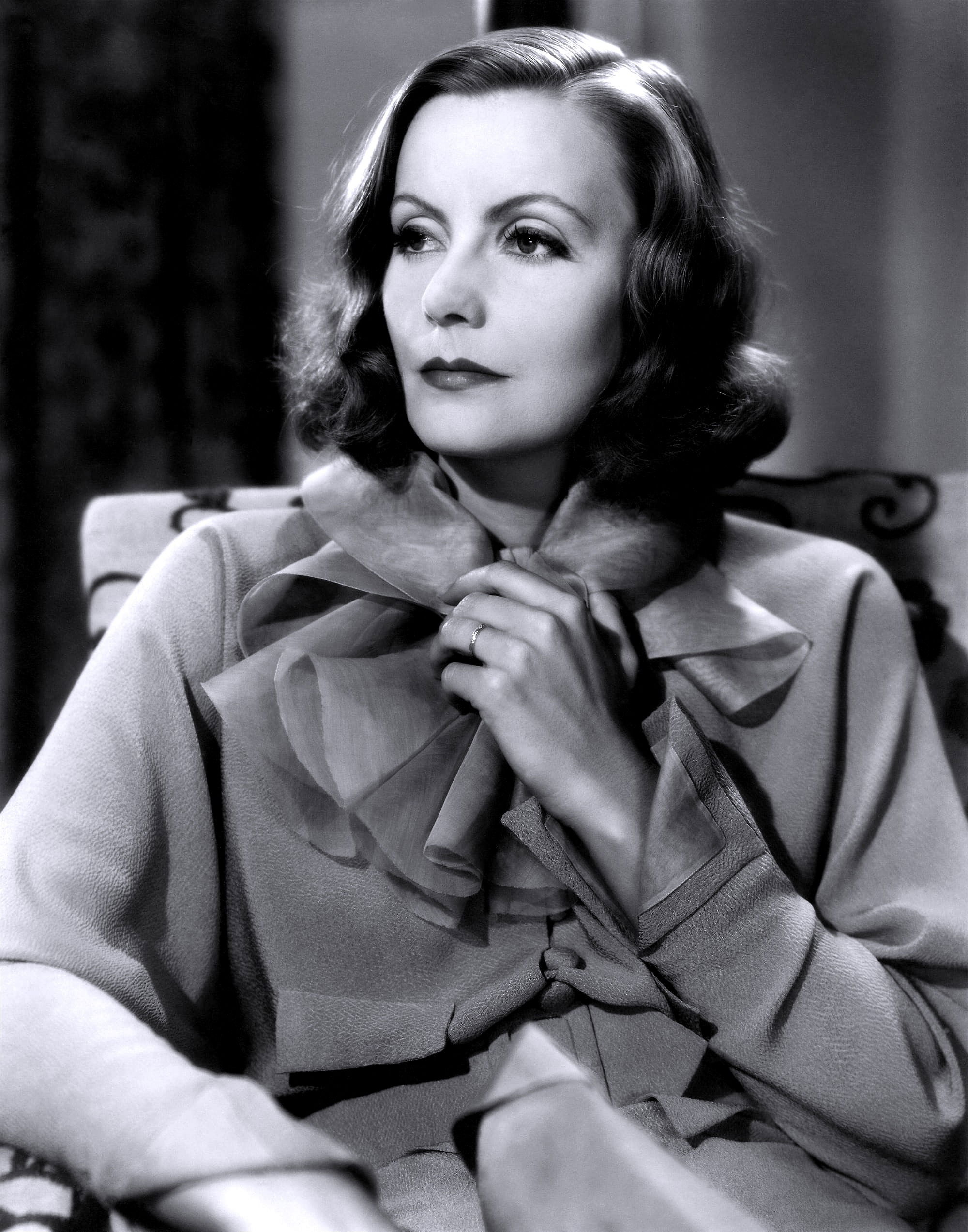
Scene from the Movie
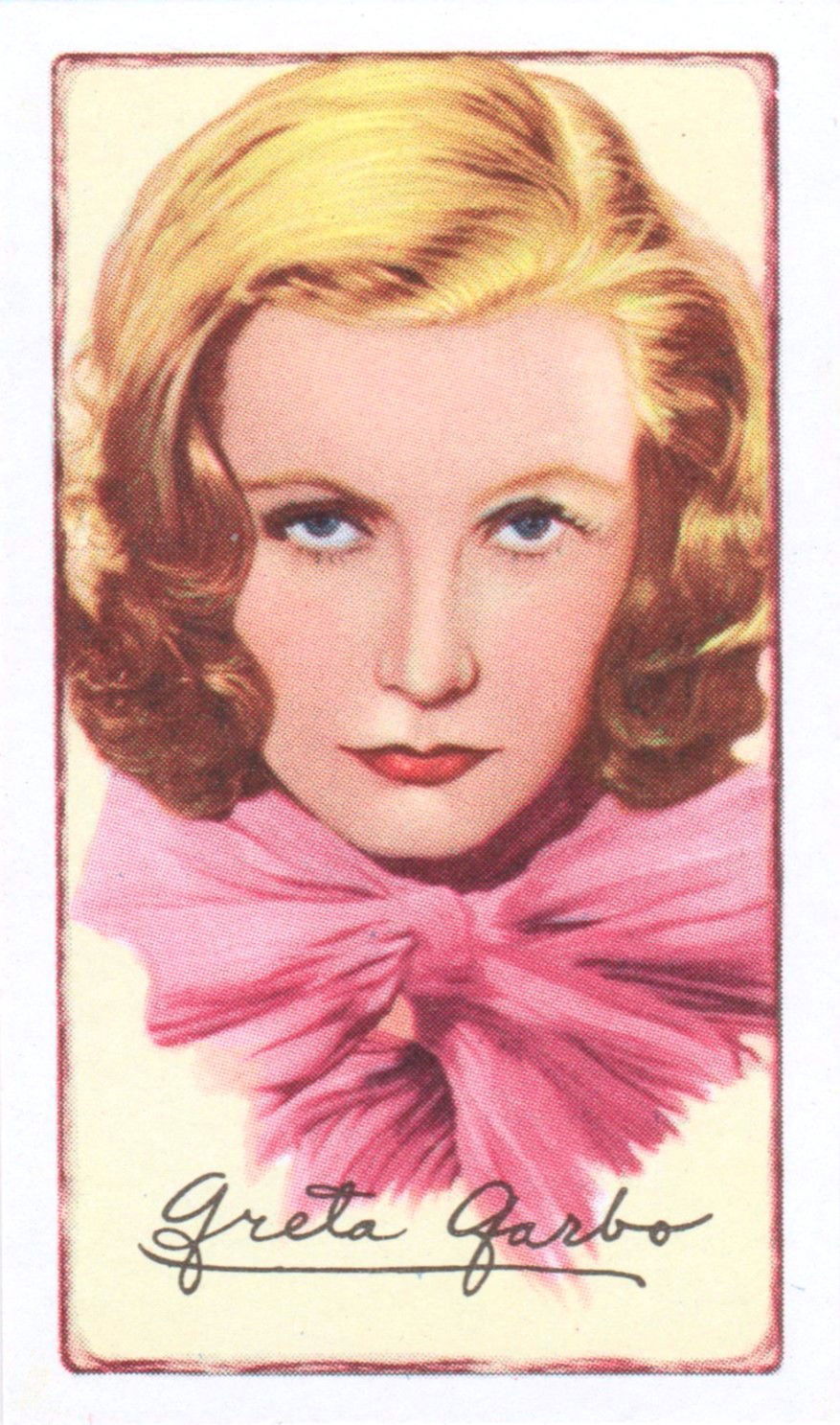
Card n.7 - SIGNED PORTRAITS OF FAMOUS STARS
GALLAHER Ltd. (1935)
(personal collection)
One of the two most representative dresses of the film is the dress with the large pink bow under the neck worn by Greta Garbo. This dress is made of a fine fabric, probably silk or satin, which gives a luxurious and refined look. The color of the dress is often neutral, such as white or ivory, to enhance Greta Garbo's natural beauty. The bow is placed under the collar, creating a sleek and sophisticated focal point. This detail adds a touch of femininity and grace to the dress, making it perfect for Katrin Koerber Fane's character.
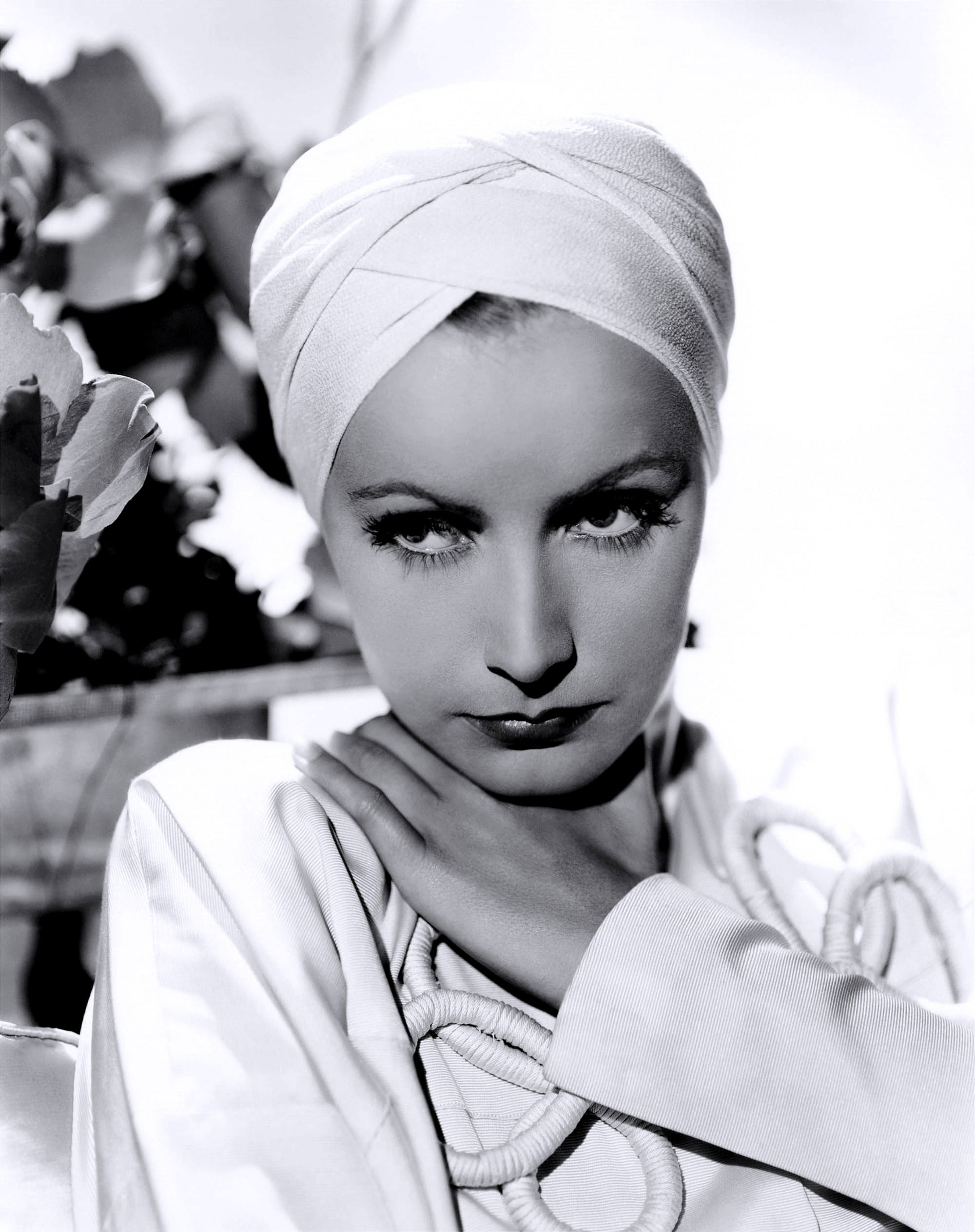
Scene from the Movie
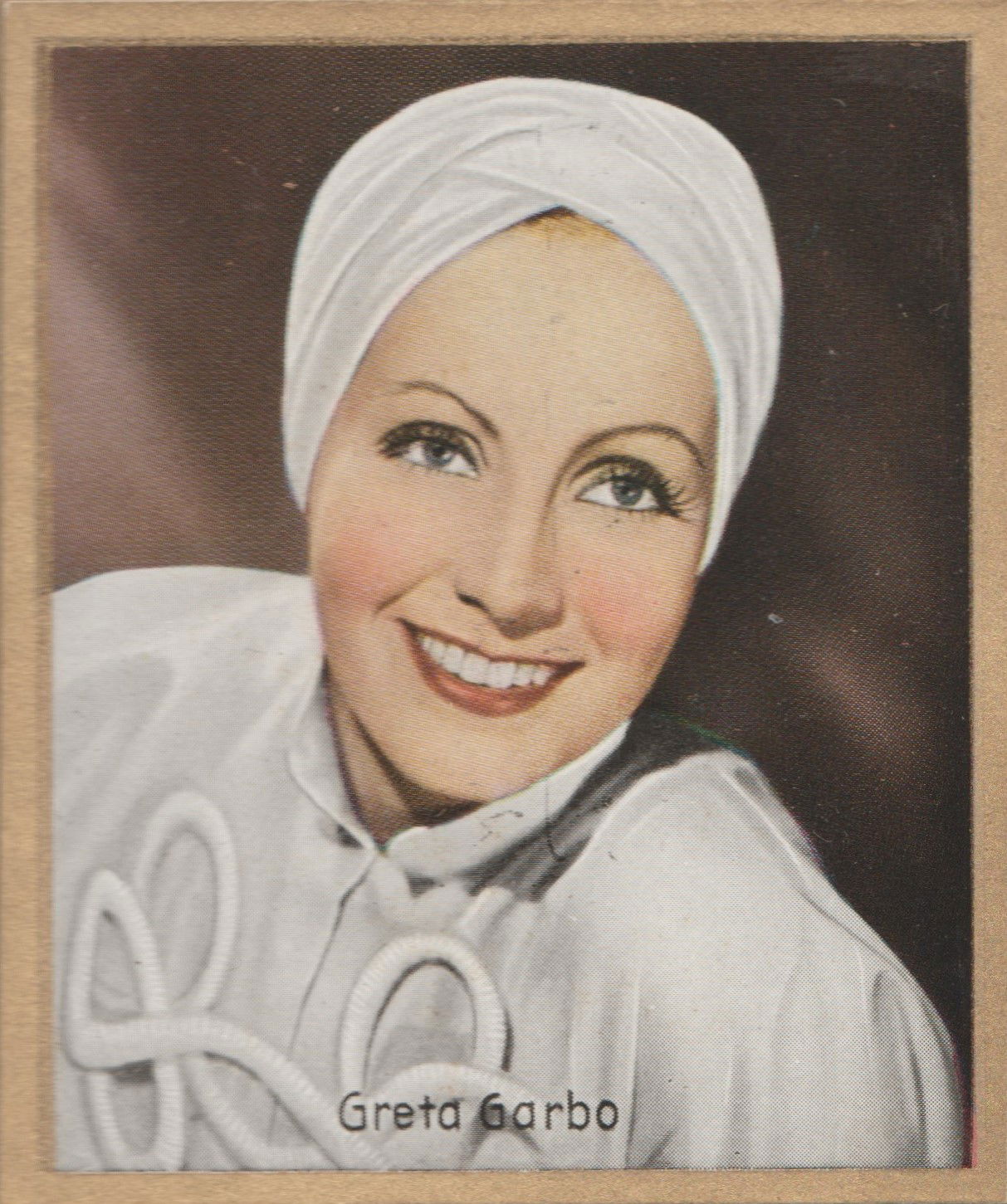
Card position 4 pag. 3 BUNTE FILM BILDER ALBUM 7
(personal collection)
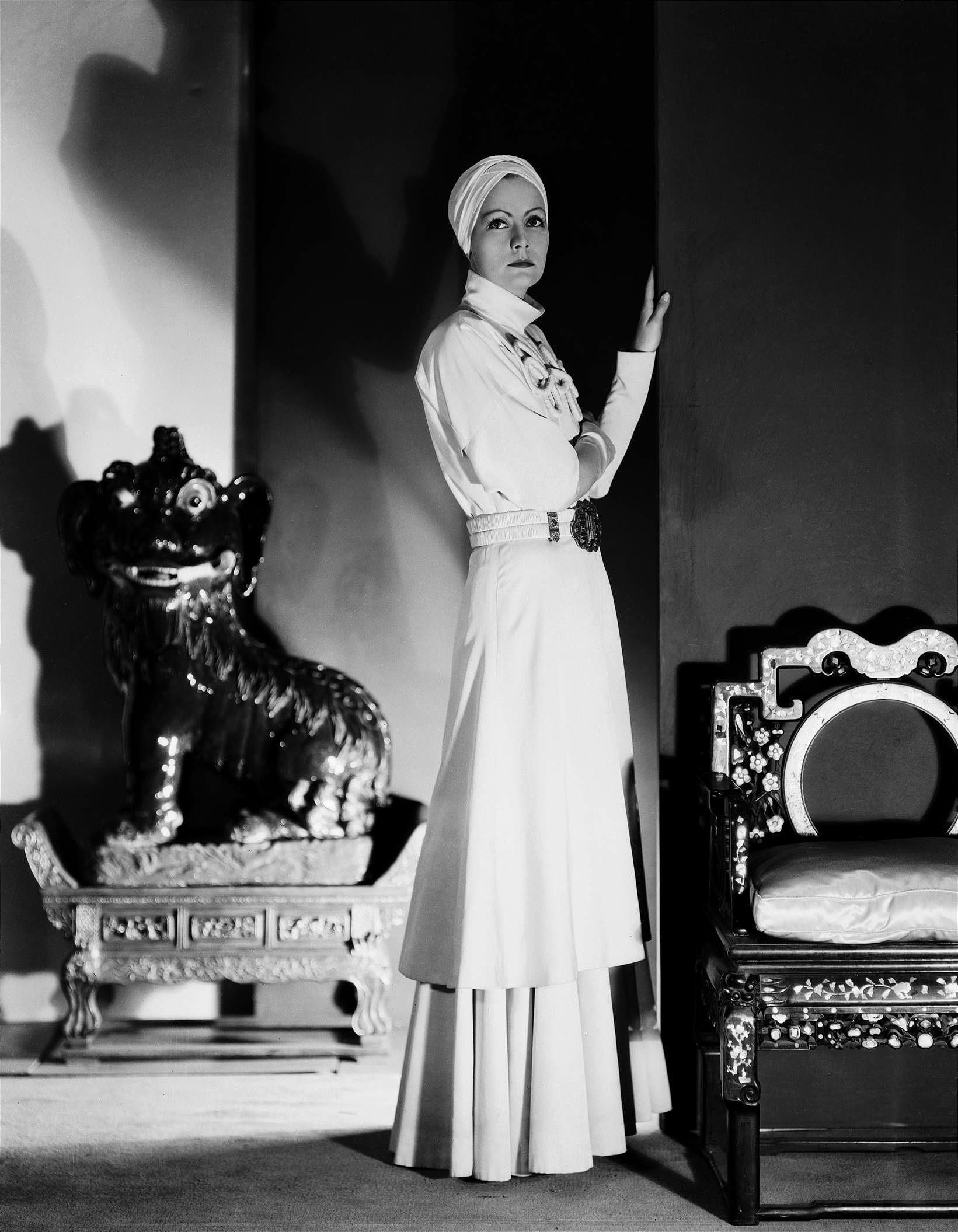
Scene from the Movie
The white dress worn by Greta Garbo in The Painted Veil (1934) is a perfect example of the elegance and sophistication of the 30s. This dress features a sophisticated design, with a white headpiece that adds a touch of sophistication. The dress is long and flowing, with a belt that accentuates the actress's waist, creating an elegant and slender silhouette. The upper part of the dress is fitted with a white rope knot on the chest that closes the dress in a sophisticated way, highlighting Greta Garbo's slender figure, while the skirt is wide and fluid, allowing freedom of movement and contributing to the dramatic effect of the entire costume. The white headpiece completes the look, adding an extra touch of elegance and consistency.
The headband represents the delicacy and sophistication of Katrin Koerber Fane's character. This costume reflects the character's inner growth and his search for independence and freedom.
In The Painted Veil (1934), Greta Garbo plays Katrin Koerber Fane, a woman who finds herself in an unhappy marriage with Dr. Walter Fane, played by Herbert Marshall. Garbo's performance is intense and full of nuances, showing her inner struggle and search for independence. Herbert Marshall offers a convincing depiction of a man devoted to his work but distant in his personal life. Together, their interpretations create a complex and fascinating dynamic, exploring themes of love, betrayal and redemption.
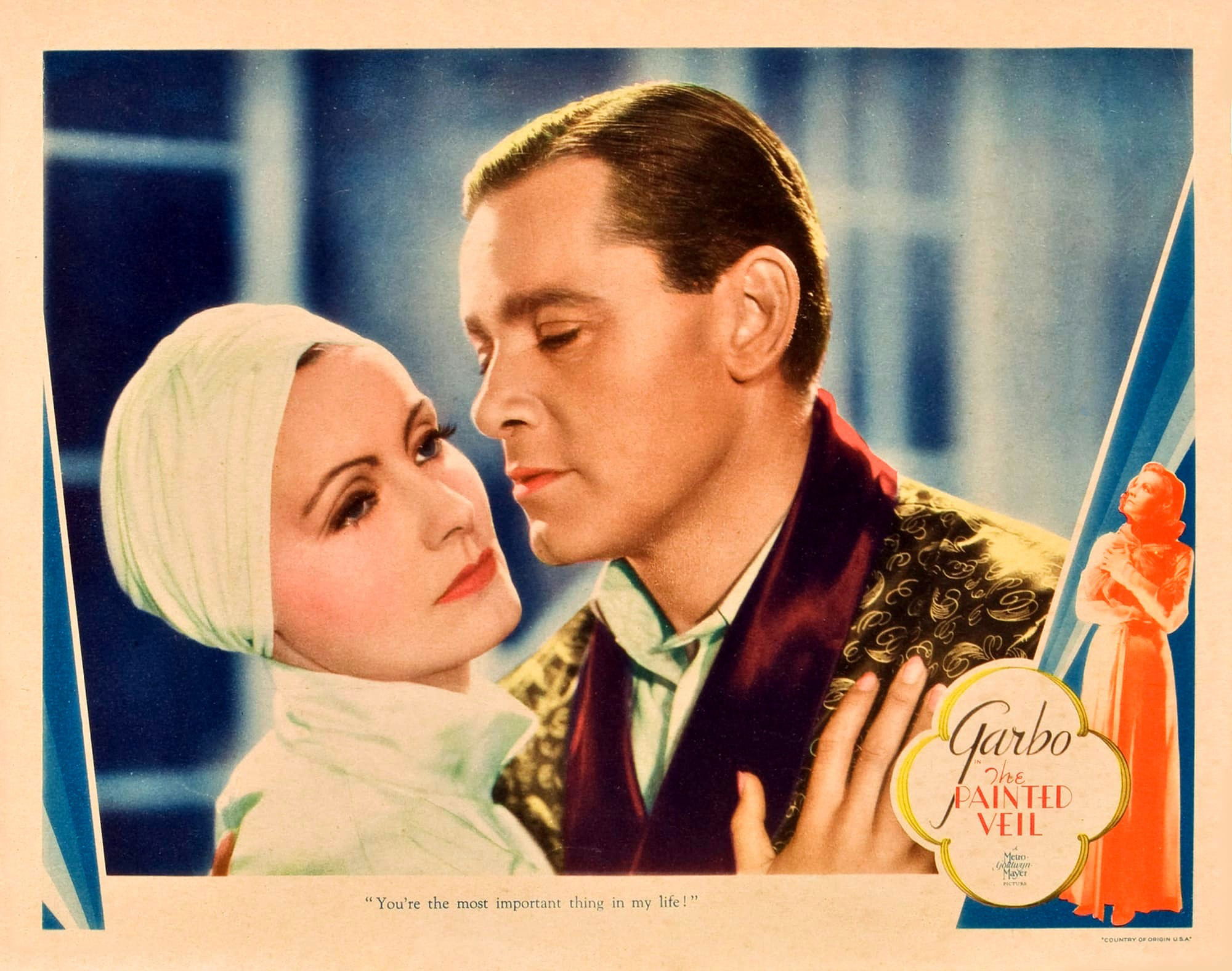
LOBBY CARD (1934)
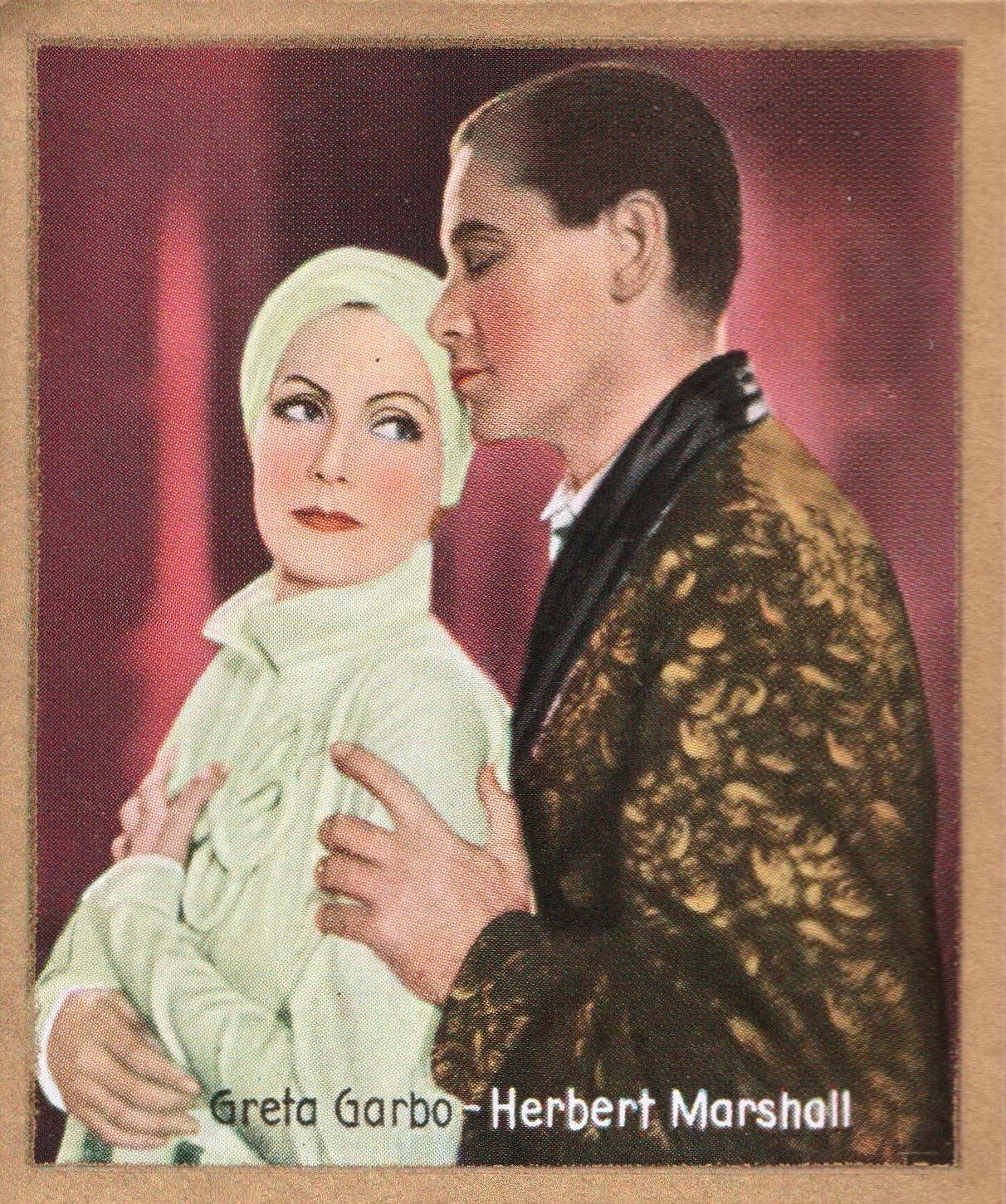
Card position 8 pag. 3 BUNTE FILM BILDER ALBUM 7
(personal collection)

Card n.55 - FILM STARS second part
JOHN SINCLAIR Ltd. (1937)
(personal collection)
In The Painted Veil, Greta Garbo plays Katrin Koerber Fane, while George Brent plays Jack Townsend, the man with whom Katrin has an extramarital affair. The chemistry between Garbo and Brent is palpable on screen, with Garbo bringing emotional depth to her character, showing her inner struggle between duty to her husband and her feelings for Jack. Brent, on the other hand, plays Jack with a charm and passion that makes their relationship believable. Together, their interpretations create an intense and complex dynamic, exploring themes of love and betrayal.
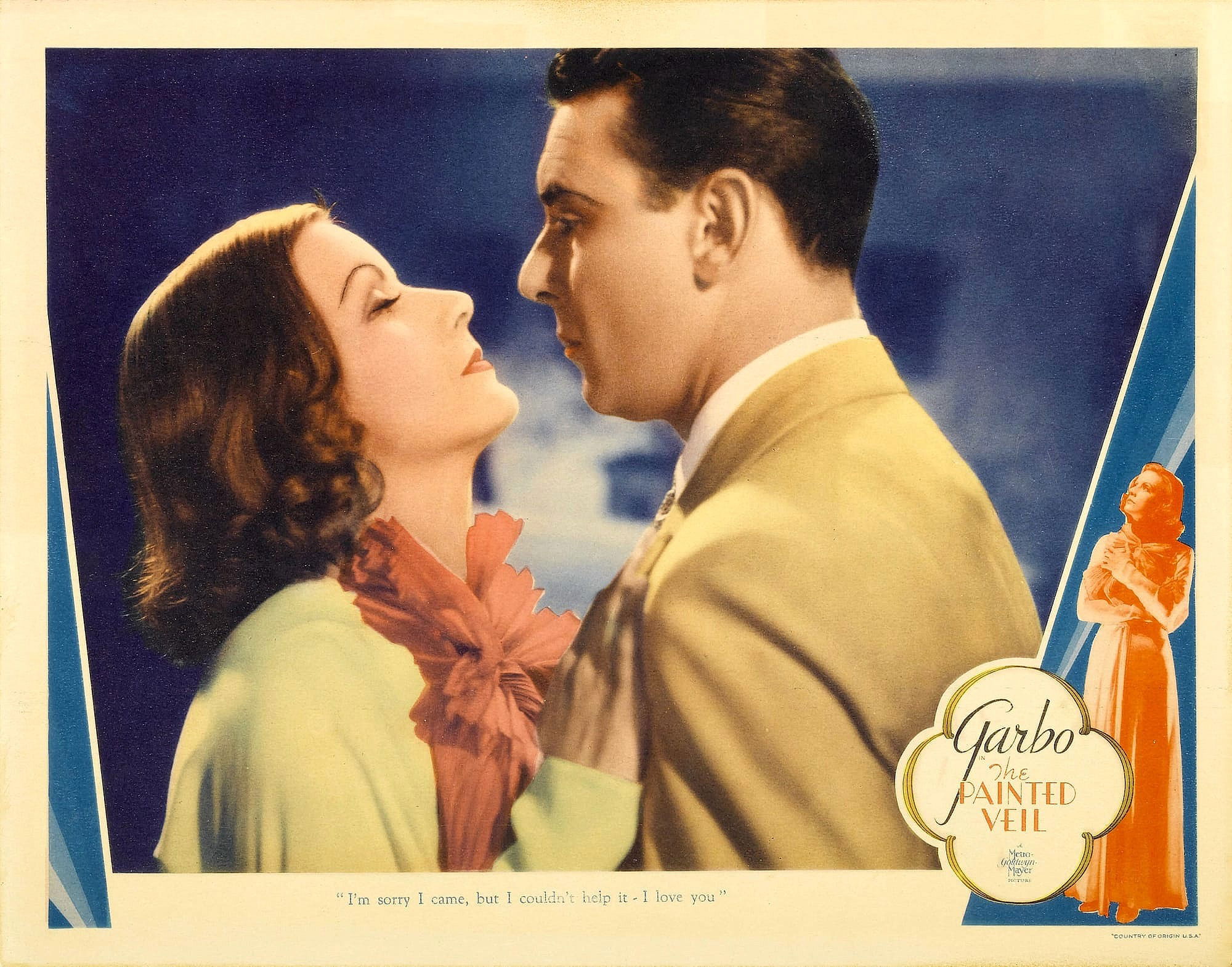
LOBBY CARD (1934)
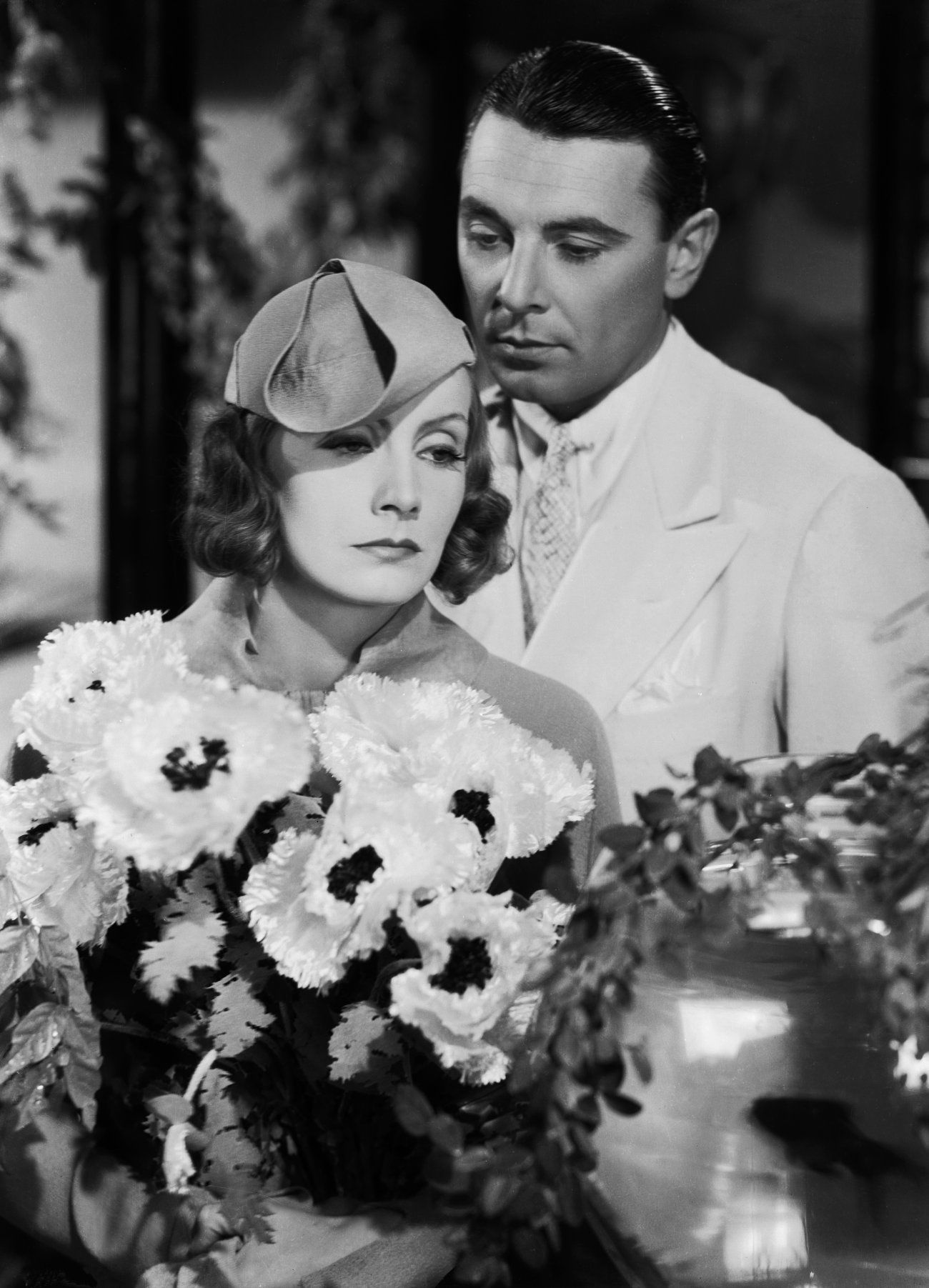
Scene from the Movie
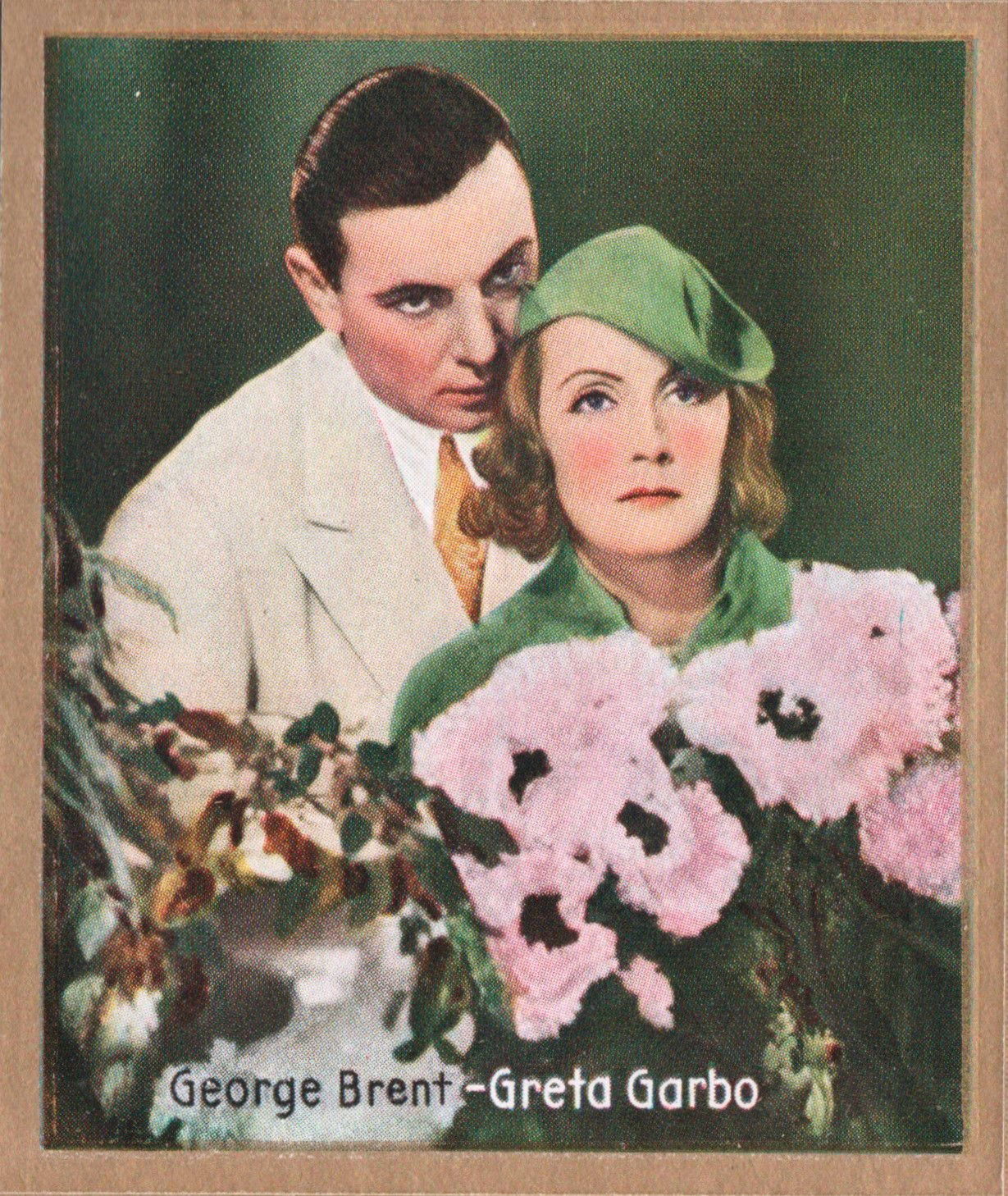
Card position 6 pag. 3 BUNTE FILM BILDER ALBUM 7
(personal collection)
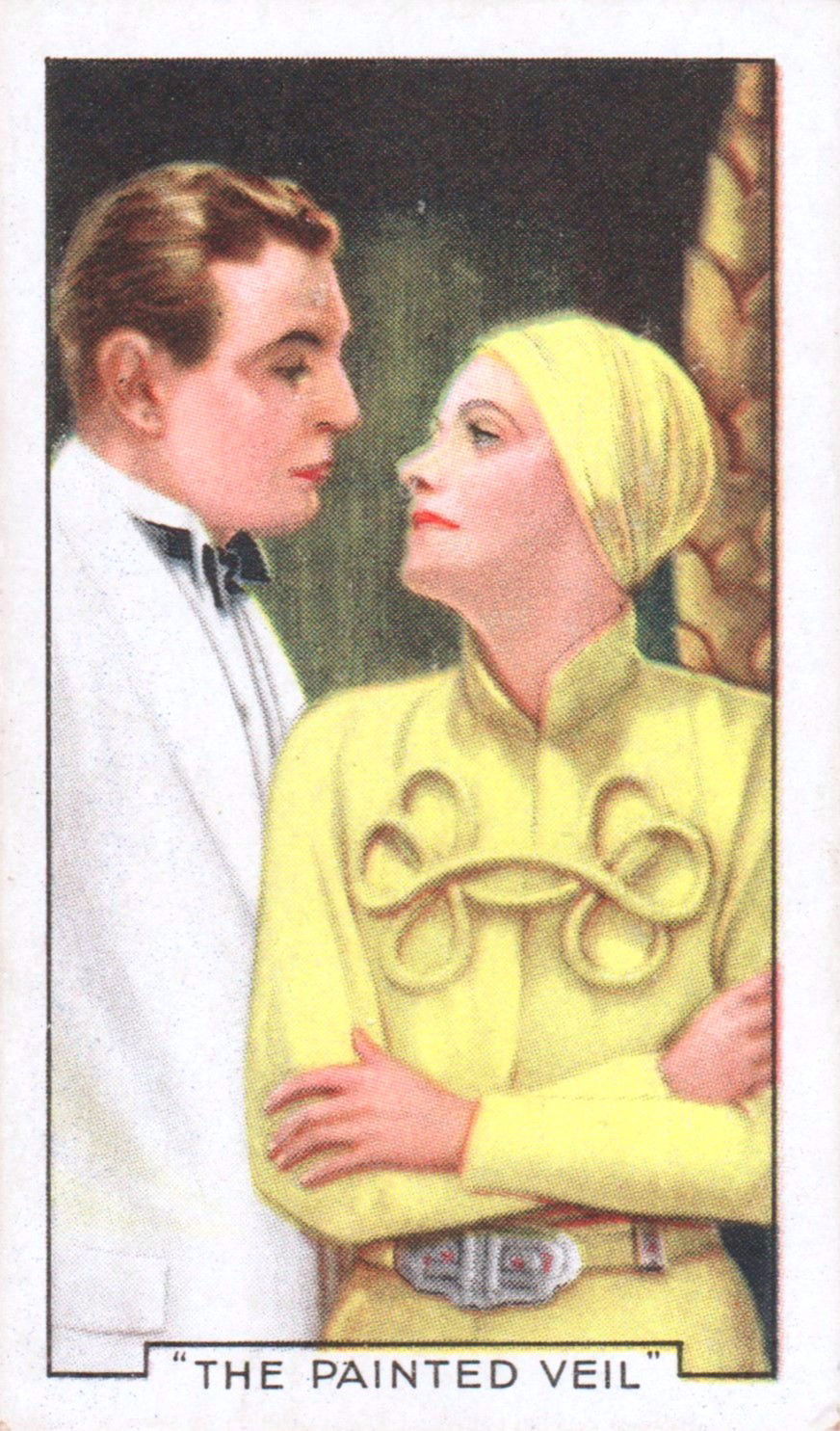
Card n.30 - SHOTS FROM FAMOUS FILMS
GALLAHER Ltd. (1935)
(personal collection)
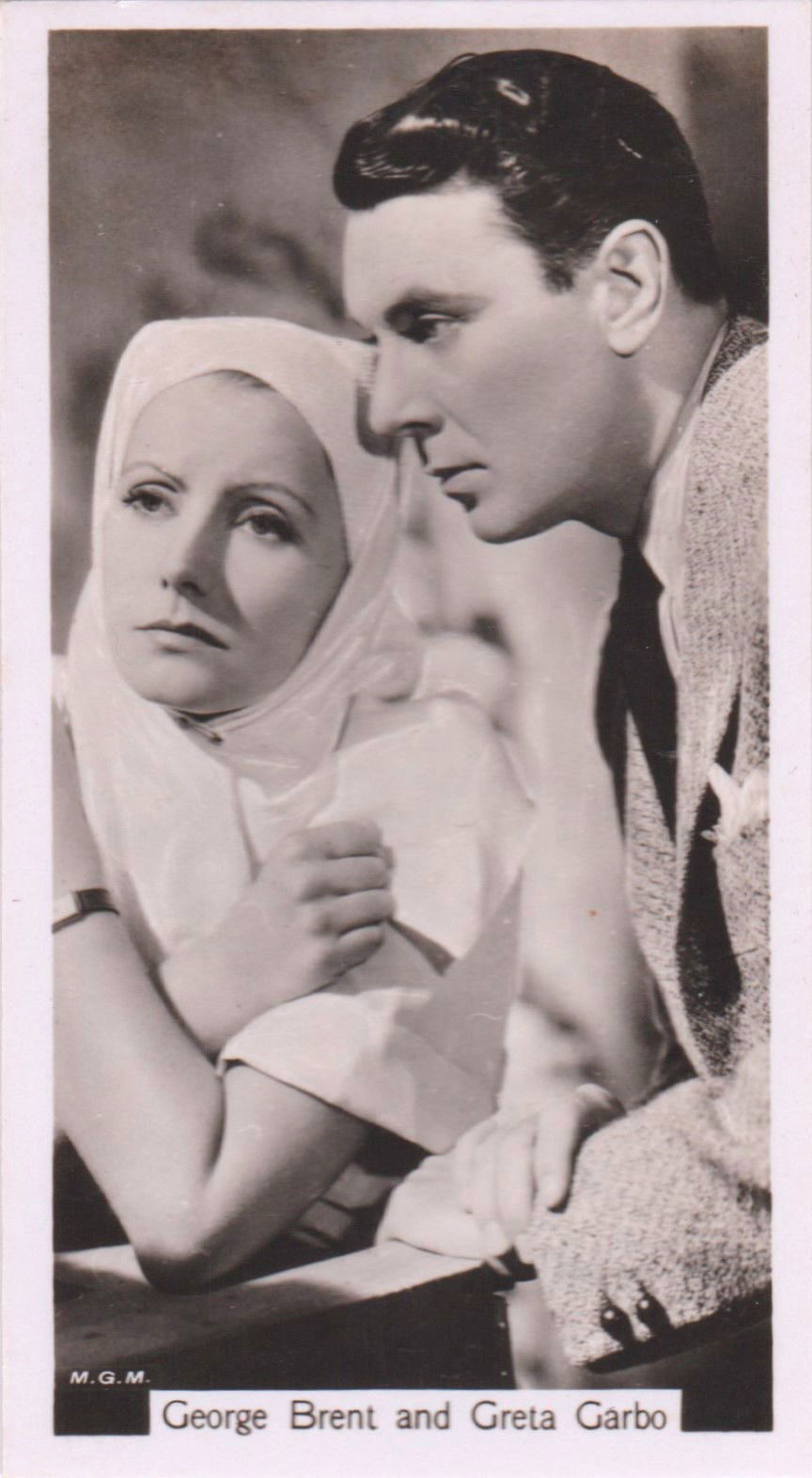
Card n.66 - FILM STARS Second Part
JOHN SINCLAIR Ltd. (1937)
(personal collection)

"Courtesy of the Media History Digital Library"
"GARBO'S FIRST FASHION PHOTOSHOOT IN FIVE YEARS!"
"The Painted Veil" posed exclusively for Photoplay.
-Seymour-
"Three exciting costumes from 'The Painted Veil' posed exclusively for PHOTOPLAY - These costumes are not available in Hollywood Cinema Fashions stores."
"Of all the big stars, Greta Garbo is the most elusive when it comes to posing with new fashions. Therefore, it is with excitement that we present you a preview of three costumes designed by Adrian for the favorite of the screen. A gray silk crepe gown, on top, has a patterned organza yoke and deep dolman-type sleeves."
"The kind of sportswear Garbo loves – effortless in the swaggering lines of a white flannel coat. A masculine note in the navy blue felt sailor hat, and the favorite felt hat, also in navy blue with a new height at the crown and a downward flare at the brim. Adrian's suggestion for a resort costume."
"A new take on Garbo's famous pillbox hat is this distinctly oriental creation in corded felt with jade ornamentation. Jade is repeated in exotic Chinese ornaments used to decorate the simple white crepe dress. The scarf around the neck is held by the large clasps and the wide belt is composed entirely of antique squares held by the carved jade buckle. Adrian uses the dolman sleeve again but continues the fullness up to the hand, where it widens outwards. This is also a great suggestion for winter resorts."
The combination of intense acting performances and refined costumes make this film a timeless classic, capable of captivating audiences even today.
CLEOPATRA
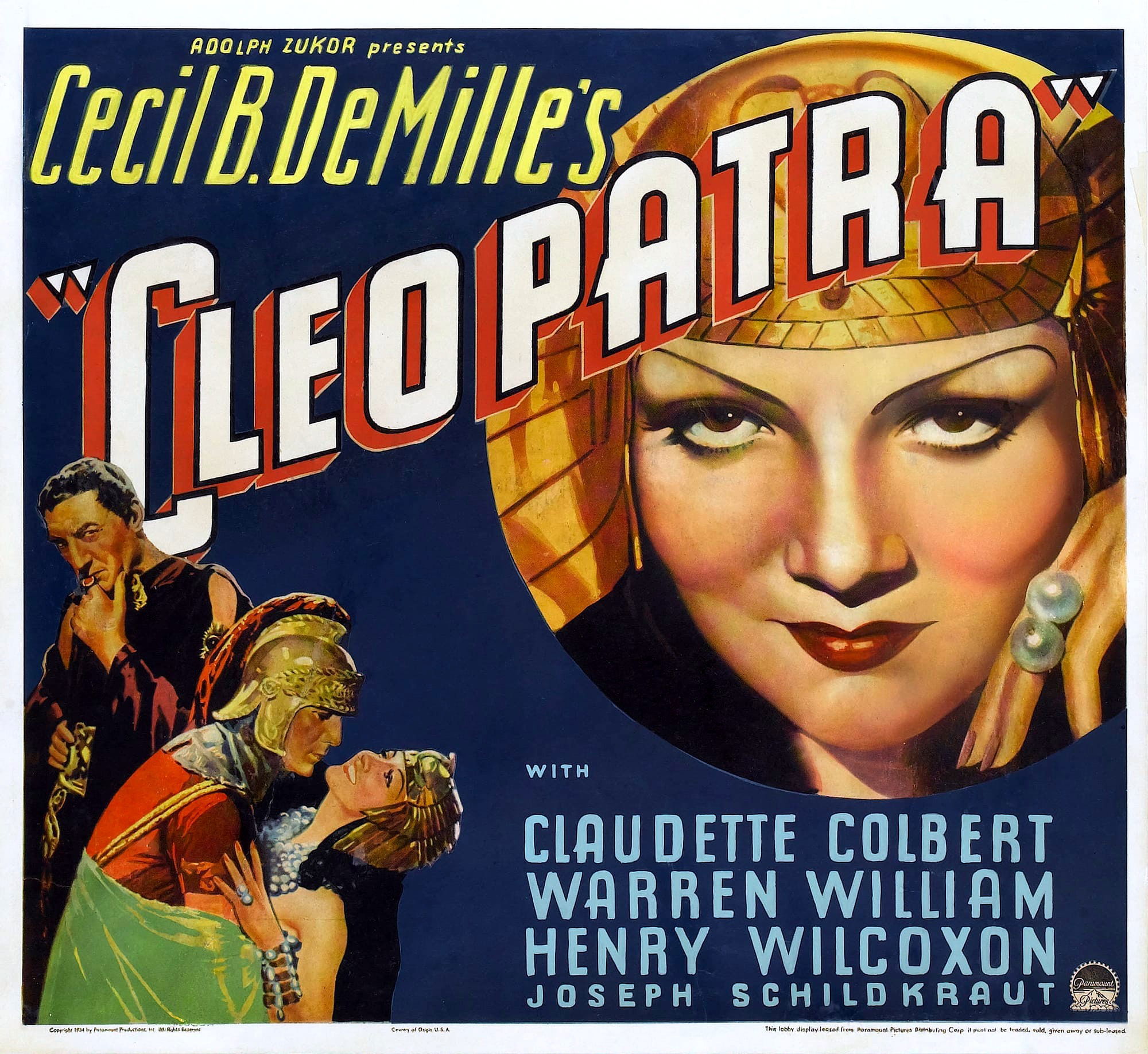
Lobby Card (U.S.A.) (1934)
The 1934 film "Cleopatra", directed by the visionary Cecil B. DeMille and starring the charismatic Claudette Colbert, is an emblematic example of the blockbuster film genre, which marked the golden age of Hollywood. Known for its magnificence and elaborate sets, this production embodies the quintessential epic cinema, aimed at astonishing and entertaining audiences with grand depictions of historical events. DeMille's choice to bring Cleopatra's life to the big screen is part of a broader context of fascination with ancient Egypt, which influenced not only cinema, but also fashion, architecture and the arts during the 20s and 30s.

Scene from the Movie
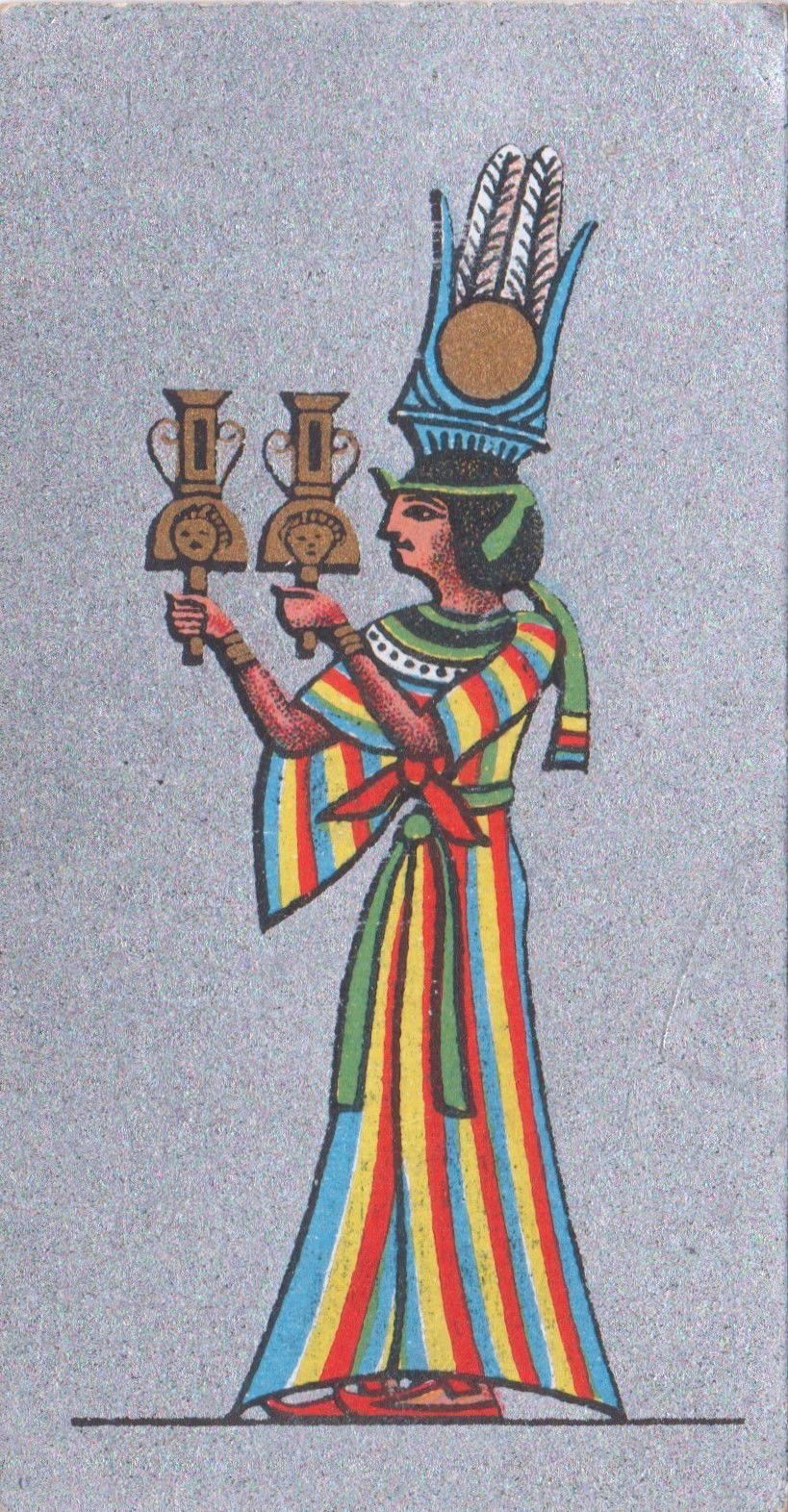
Card n.6 - ANCIENT EGYPT
CAVANDERS Ltd. LONDON (1928)
(personal collection)
Through the costumes, the film manages to convey a sense of authenticity and opulence. The costumes, designed with great attention to detail, reflect the richness and complexity of Egyptian culture. Claudette Colbert, as Cleopatra, wears sumptuous dresses and elaborate accessories that not only enhance her beauty, but also her status as queen.
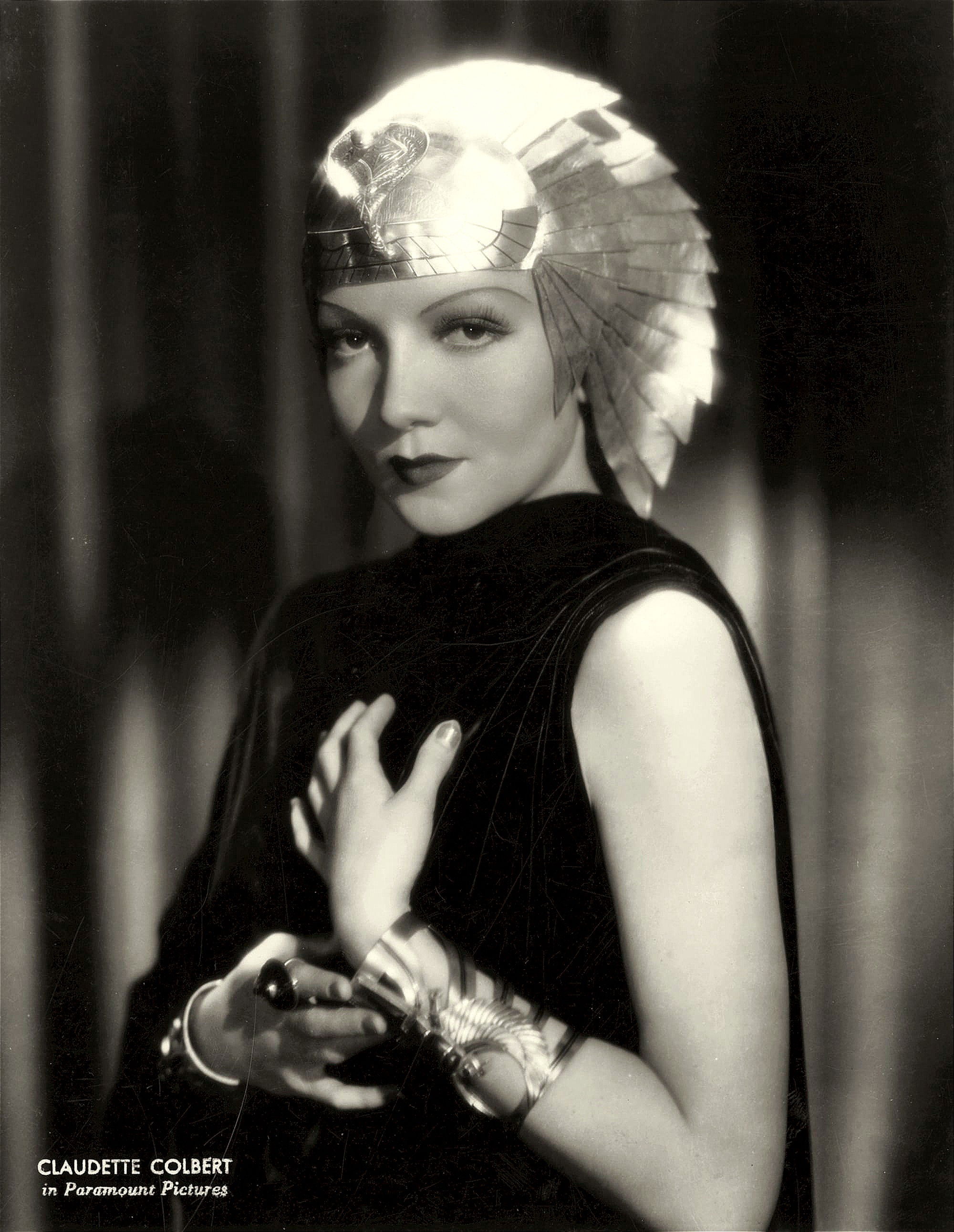
Scene from the Movie

Card position 2 pag. 21
BUNDLE OF MOVIE PICTURES ALBUM 7
(personal collection)
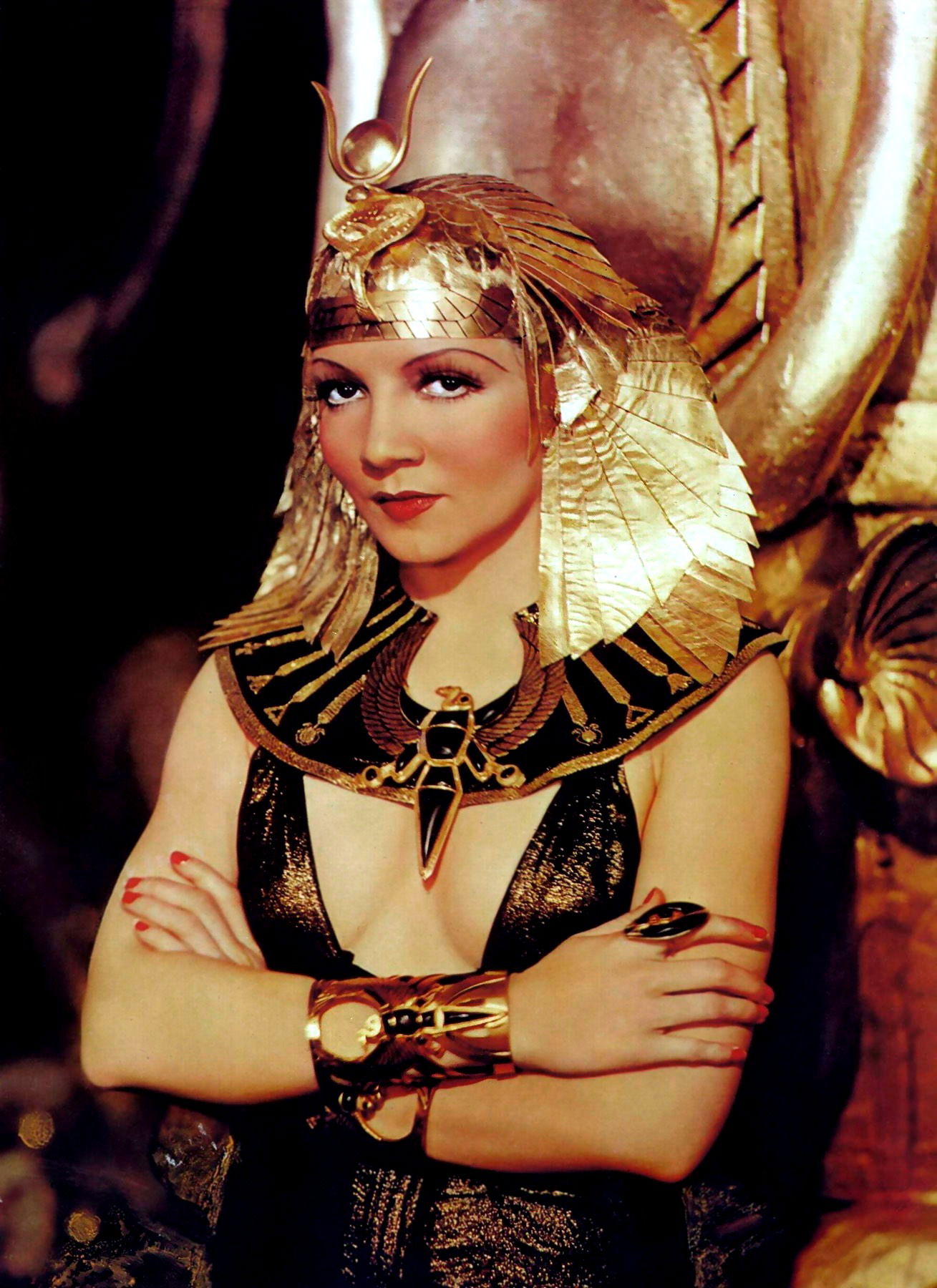
Scene from the Movie
Through the costumes, the film manages to convey a sense of authenticity and opulence. The costumes, designed with great attention to detail, reflect the richness and complexity of Egyptian culture. Claudette Colbert, as Cleopatra, wears sumptuous dresses and elaborate accessories that not only enhance her beauty, but also her status as queen. Each costume is a testament to the craftsmanship and historical research that went into the film's production, helping to create an unforgettable viewing experience for the audience. Costume designer Travis Banton, one of Hollywood's most prominent designers of the time, created the costumes for "Cleopatra."

Card n.5 - STARS OF SCREEN & HISTORY
STEPHEN MITCHELL& SON (1939)
(personal collection)
His collaboration with DeMille on "Cleopatra" was particularly significant. Banton designed an entire new wardrobe for Claudette Colbert, who initially rejected costumes made by DeMille's staff.
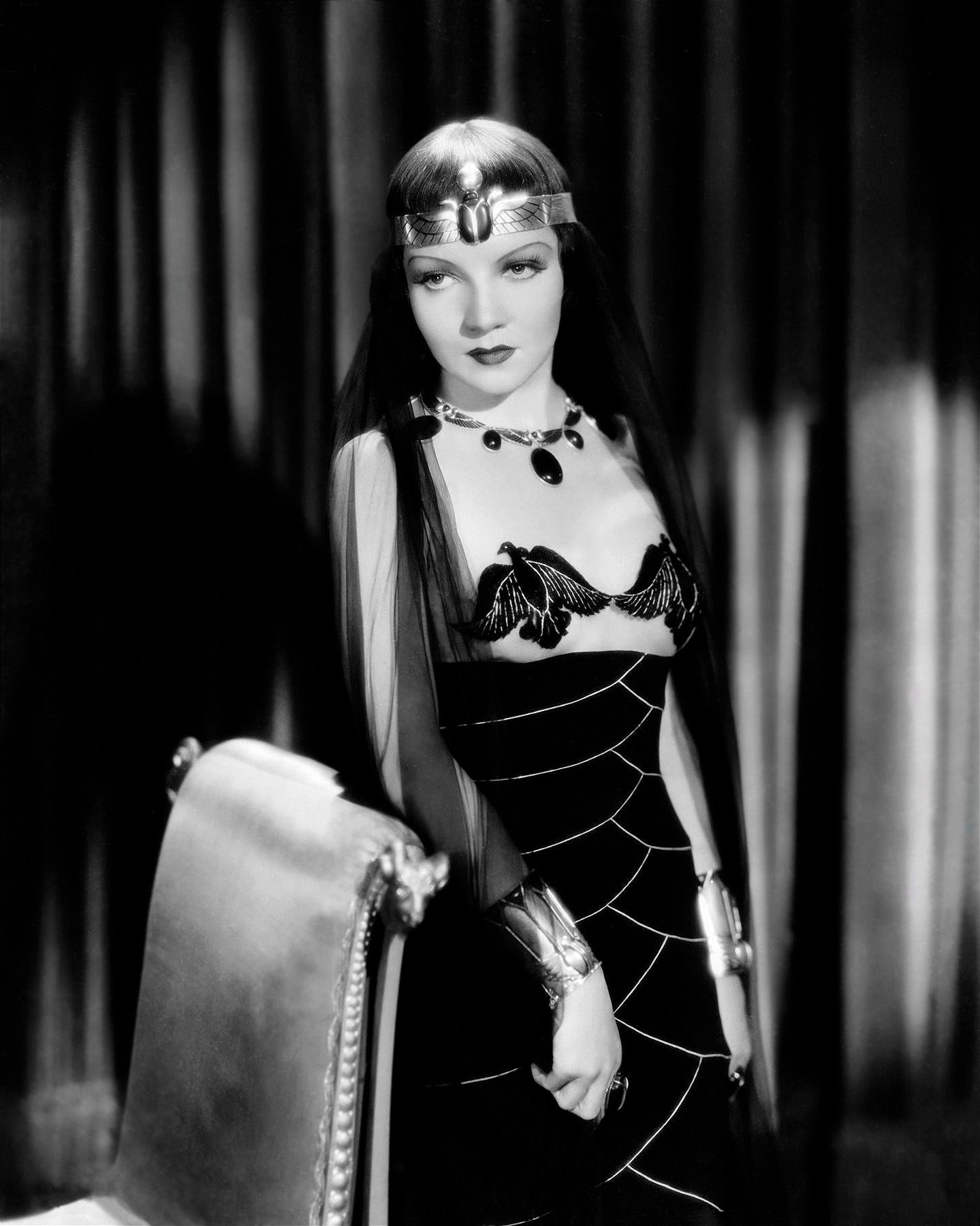
Scene from the Movie
One of the most iconic costumes in the film is the golden lamé dress with emerald green headdress and jewelry, worn by Colbert in this scene in which he attempts to poison Mark Antony. This dress, along with other costumes from the film, has been designed with extraordinary precision and attention to detail, reflecting the richness and opulence of ancient Egypt, if you press the button under the TV you can see other scenes from the film where Claudette wears different costumes.

"Courtesy of the site doctormacro.com"
Blue wool dress with Egyptian design. Adherent to the knees where it widens in numerous folds in a long pleated tail.
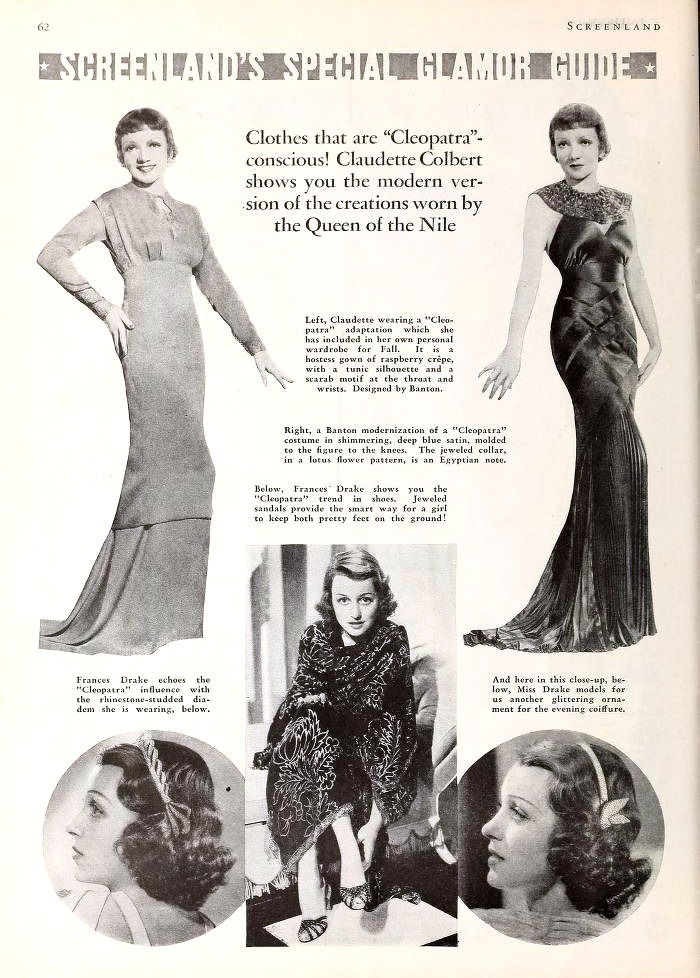
"Courtesy of the Media History Digital Library"
PAGE 62 of the magazine SCREENLAND (November 1934)
SPECIAL GUIDE TO SCREENLAND
GLAMOUR Dresses that are "Cleopatra"-conscious! Claudette Colbert shows you the modern version of the creations worn by the Queen of the Nile.
On the left, Claudette wears an adaptation of "Cleopatra" that she has included in her personal wardrobe for autumn. It is a hostess dress in raspberry crepe, with a tunic silhouette and a scarab pattern at the throat and wrists. Designed by Banton.
On the right, a Banton modernization of a "Cleopatra" costume in shimmering deep blue satin, modeled on the figure down to the knees. The jewel collar, in a lotus flower pattern, is an Egyptian note.
Below, Frances Drake shows you the "Cleopatra" trend in shoes. Jewel sandals offer the stylish way for a girl to keep both feet firmly planted on the ground!
Frances Drake echoes the influence of "Cleopatra" with the rhinestone-studded tiara she wears, at the bottom.
And here in this close-up, below, Miss Drake models for us another sparkling ornament for the evening hairstyle.
Adrian, the famous Hollywood costume designer, had a significant impact on the fashion of the time with his designs for "Cleopatra". Adrian, known for his work on iconic films such as "The Wizard of Oz" and numerous Metro-Goldwyn-Mayer films, created costumes that not only defined the characters on screen, but also influenced off-screen fashion trends.
TOP HAT
The Charm of Costumes in "Top Hat"
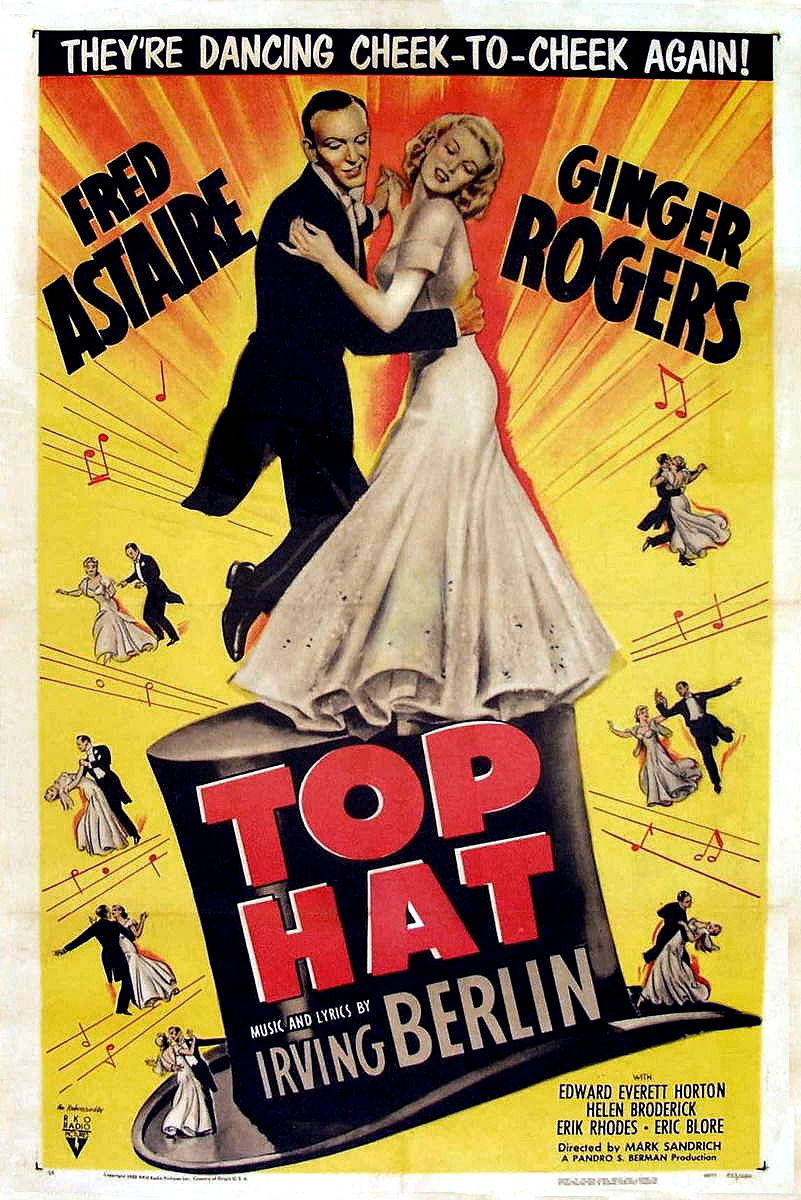
Movie Poster

Cards n.3 e n.8 - FILM STARS Described by FLORENCE DESMOND
LTD RACING (1936)
(personal collection)
"Top Hat" is a 1935 musical film directed by Mark Sandrich and starring Fred Astaire and Ginger Rogers. This film is known not only for its spectacular dance sequences and music by Irving Berlin, but also for its iconic costumes, created by Bernard Newman.
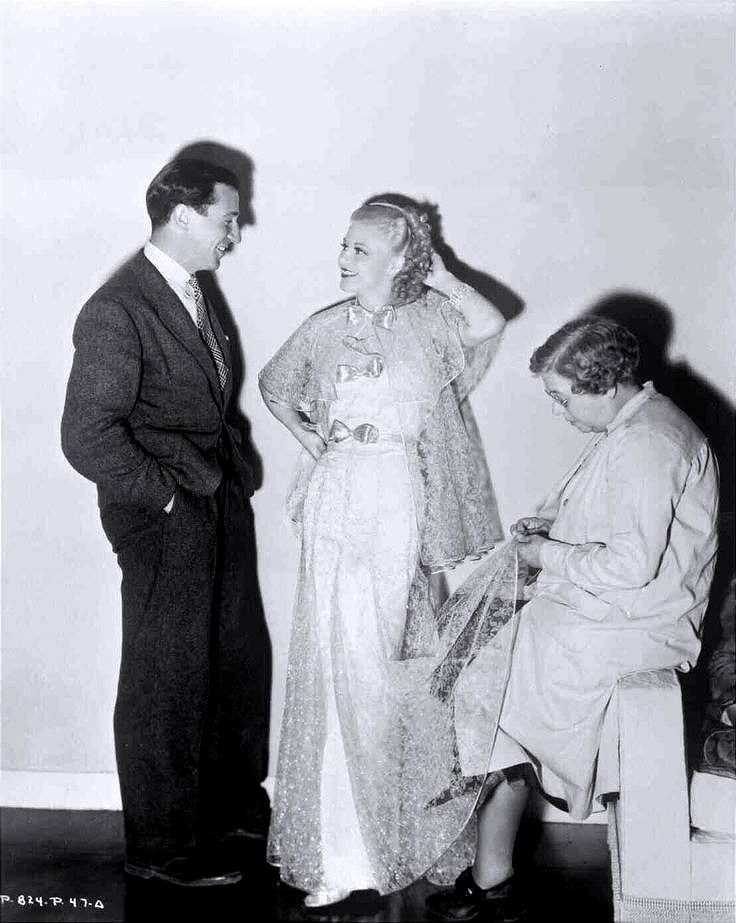
"Courtesy of Wikipedia"
Costume designer Bernard Newman, actress Ginger Rogers, and a seamstress during the filming of Top Hat in 1935.
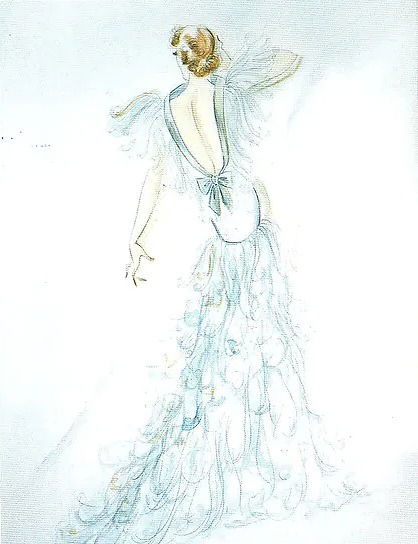
Sketch of Bernard Newman's costume for the feather dress worn by Ginger Rogers
Bernard Newman was a renowned American costume designer, born on November 18, 1903 in Joplin, Missouri, and died on November 30, 1966 in New York. He was the chief designer for Bergdorf Goodman and the lead costume designer for RKO Pictures. He has designed costumes for about 35 films, dressing stars such as Ginger Rogers, Katharine Hepburn, Lucille Ball and Helen Broderick.
Newman began his career as a window dresser for Bergdorf Goodman, a luxury department store in Manhattan, and later became the chief designer. He studied in Paris at the Art Student's League, which influenced his sophisticated and innovative style.
In 1934, Newman was hired by RKO Pictures to design the costumes for the highly successful film "Roberta" and cemented his position as chief designer at the studio. He collaborated frequently with Ginger Rogers, creating memorable costumes for many of his musical films with Fred Astaire, including "Top Hat," "Follow the Fleet," and "Swing Time."

Card n.42 - FILM EPISODES
GALLAHER Ltd. (1936)
(personal collection)
One of his most famous designs is the blue dress with ostrich feathers worn by Ginger Rogers in the "Cheek to Cheek" sequence of "Top Hat". This dress, although problematic during filming due to the tendency of feathers to come off, became iconic and earned Rogers the nickname "Feathers".
Newman was posthumously inducted into the Costume Designers Guild Hall of Fame in 2004, recognizing his significant contributions to the worlds of film and fashion.
One of the most memorable episodes related to costumes concerns the ostrich feather dress worn by Ginger Rogers in the dance scene "Cheek to Cheek".
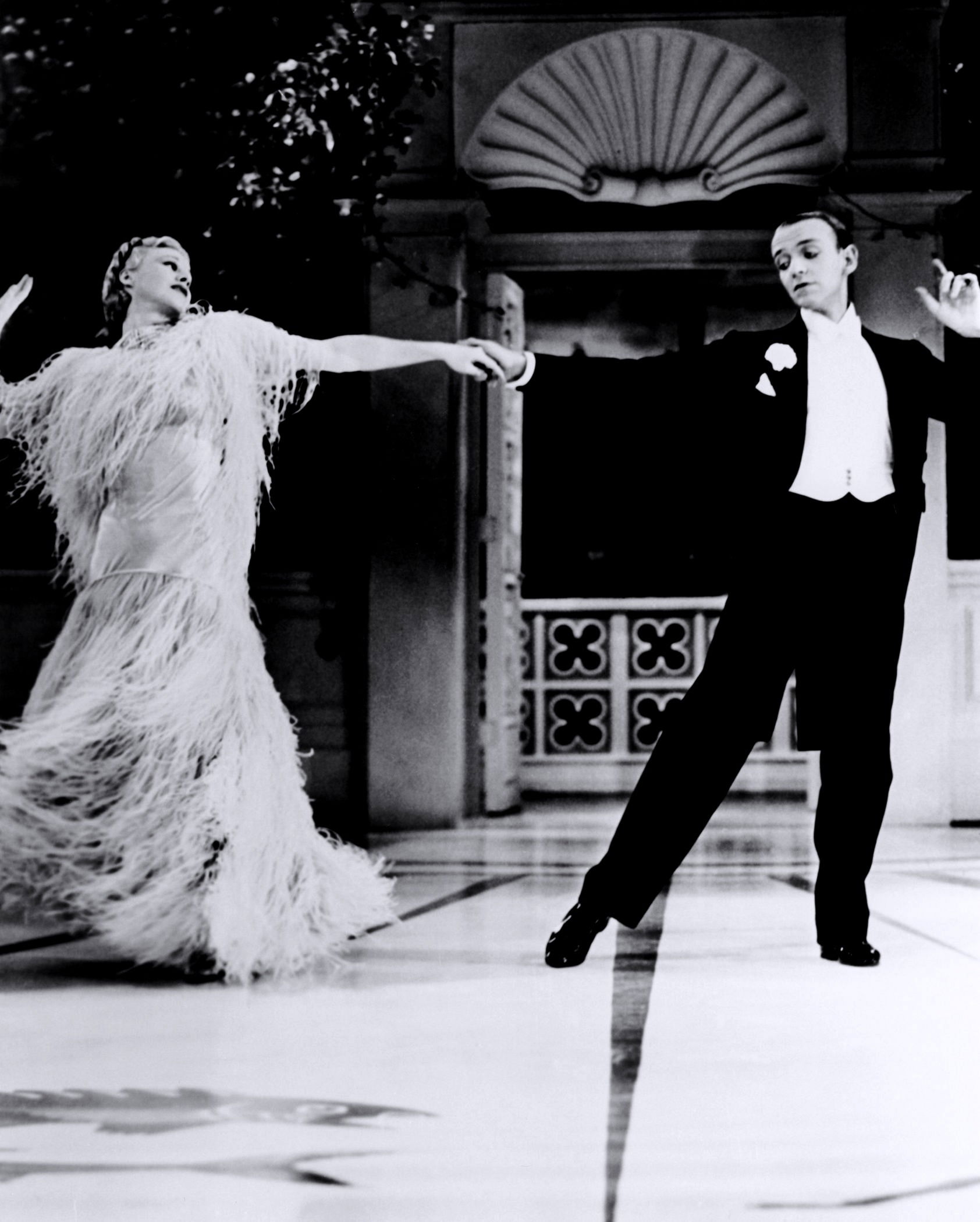
Scene from the Movie
This dress, although visually fascinating, caused quite a few problems during filming. The feathers tended to detach and fly everywhere, annoying Fred Astaire and director Mark Sandrich. Fred complained that feathers were getting into his nose and mouth as he danced. Despite the protests, Ginger Rogers insisted on wearing the dress, believing it added elegance and fluidity to the dance. Ginger's mother, Lela Rogers, intervened to support her daughter in her decision. Thanks to his intervention, Ginger was able to keep the dress, which has become one of the most iconic elements of the film. The alternative costume proposed was a white dress that Ginger Rogers had already worn in a previous film, "The Gay Divorcee".
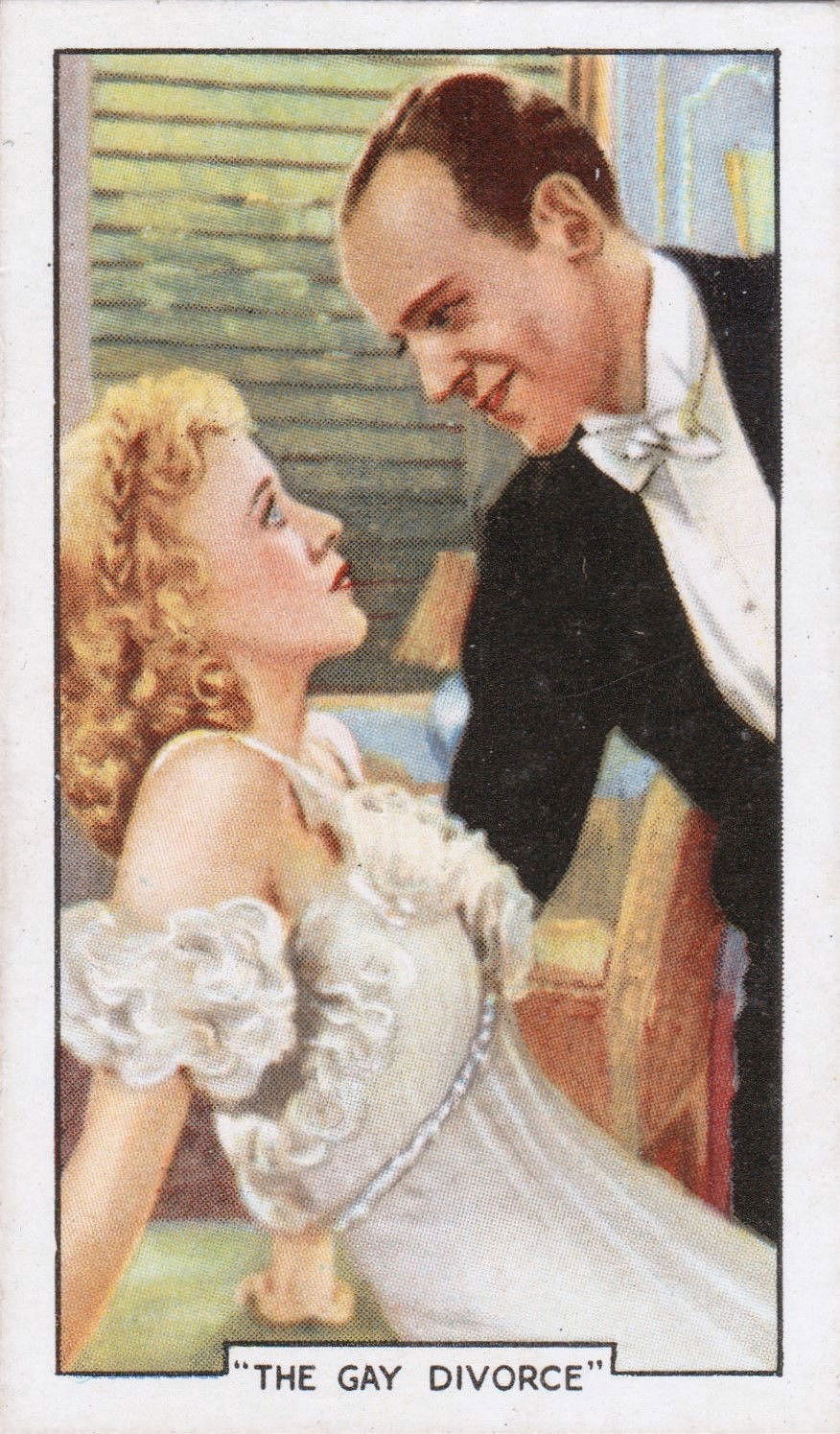
Card n.45 - FAMOUS FILM SCENES
GALLAHER Ltd. (1935)
(personal collection)
However, the ostrich feather dress remained the ultimate choice, helping to create one of the most memorable dance scenes in film history.

"Courtesy of the Media History Digital Library"
Excerpt from the Periodical MOVIE MIRROR (June/November 1935)
"Because, of course, it's Fred Astaire, the gentleman with the 'Top Hat' (this is his new RKO movie starring Ginger Rogers)! You have to start early in life to get that nimble ease that elevates 'dancing' to an art. When he was just eight years old, Fred and his equally famous sister, Adele, earned $200 a week in vaudeville. Adele is now Lady Cavendish, and Fred... well, Fred is the king of stage and screen dance."
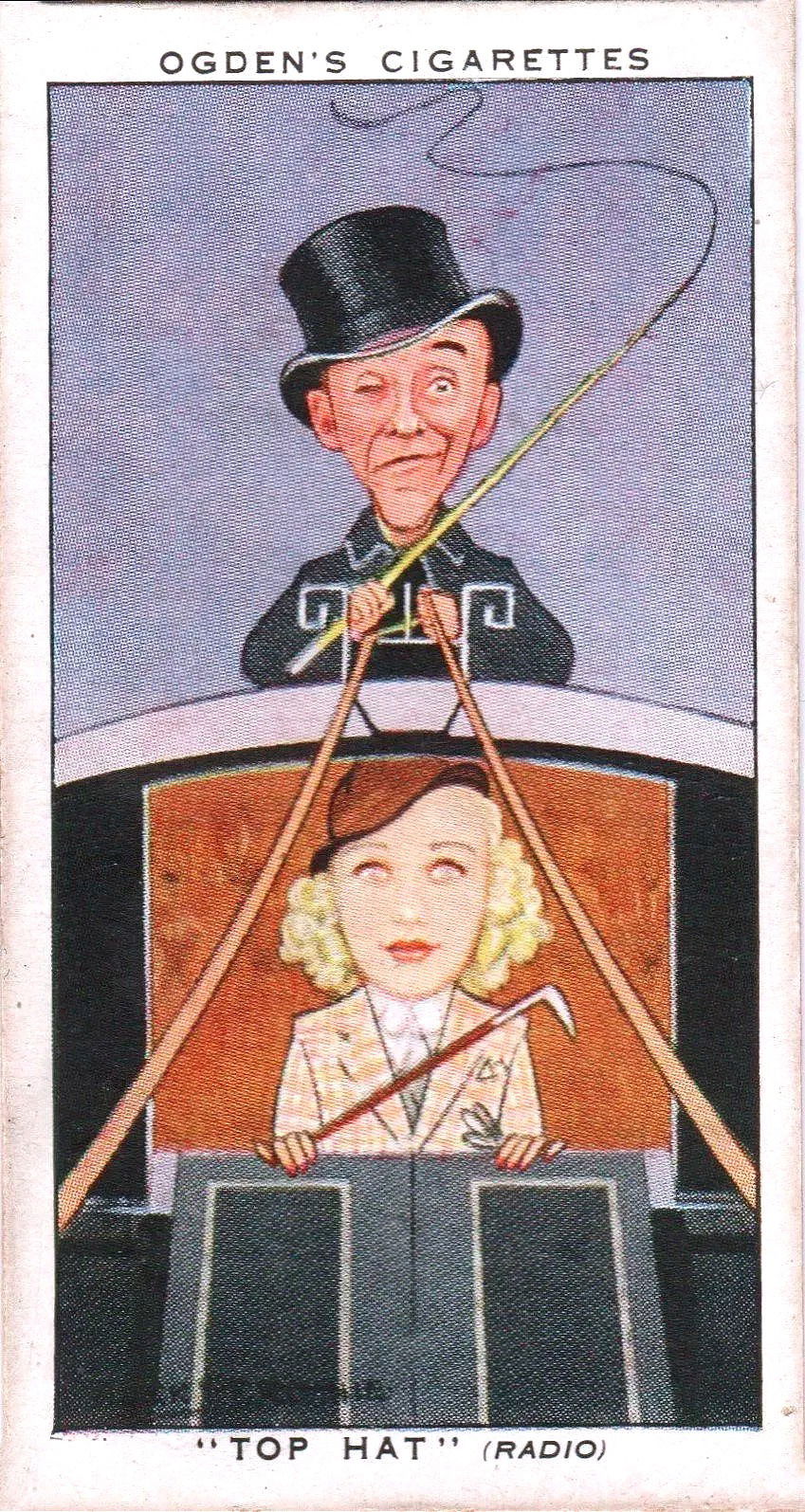
Card n.48 - SHOT FROM THE FILMS
ODGEN'S (1936)
(personal collection)
Fred Astaire is known for his impeccable and sophisticated style, and the movie "Top Hat" is no exception. In this film, Astaire wears the classic evening suit with a top hat, tailcoat, white shirt and white tie, which has become a symbol of his elegant and refined style.
Astaire's costume in "Top Hat" was particularly important to him because it represented the pinnacle of his style and elegance. The evening dress with top hat not only enhanced her slender figure and grace of movement, but also helped to create the atmosphere of luxury and sophistication that characterizes the film.
In addition, Astaire's costume in "Top Hat" became iconic and influenced the men's fashion of the time, cementing his image as an impeccable and highly talented gentleman.
ROBERTA

Movie Poster
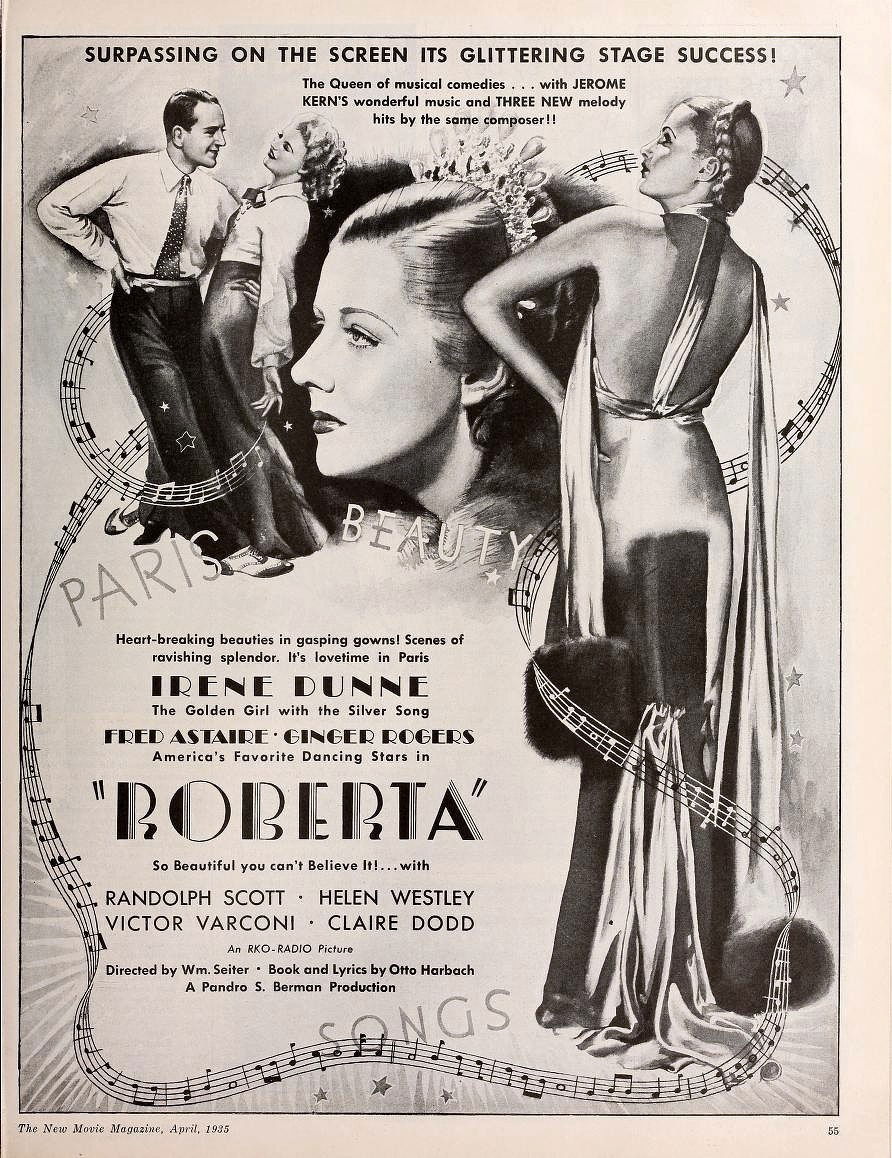
"Courtesy of the Media History Digital Library"
Advertising pag. 53 THE NEW MOVIE MAGAZINE (APRIL 1935)
Let's take a step back a few months, when Bernard Newman was hired by RKO Pictures. Another film in which Newman left his mark with his extraordinary costumes is "Roberta" from 1935. Directed by William A. Seiter and starring Irene Dunne, Fred Astaire, Ginger Rogers and Randolph Scott, "Roberta" is a classic of musical cinema that combines music, dance and fashion impeccably.
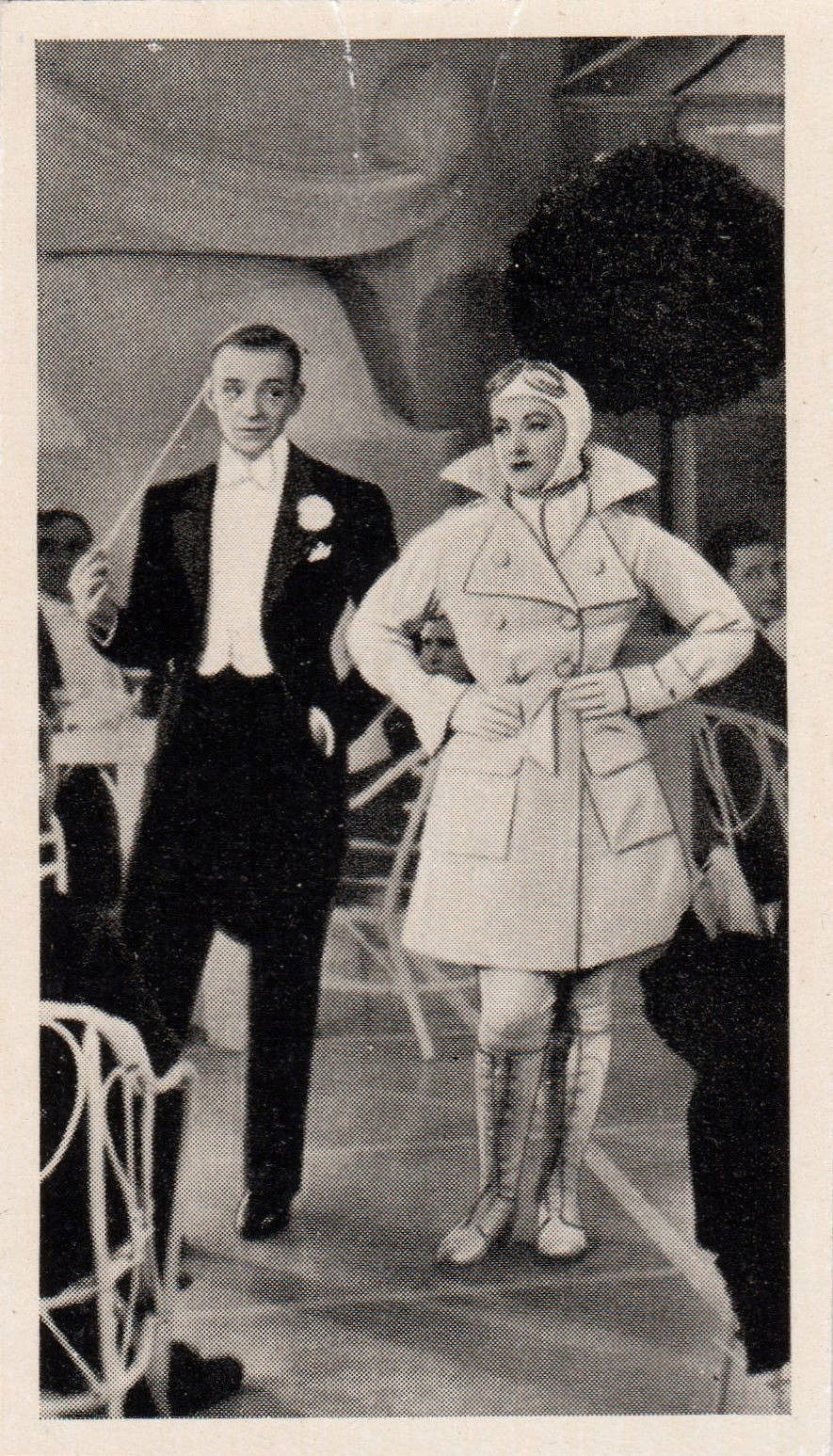
Card n.93 - CINEMA CAVALCADE VOLUME II
A. & M. WIX (1940)
(personal collection)
This film predates "Top Hat" and continues to showcase Newman's talent for creating clothes that define the elegance and sophistication of the era. The story revolves around John Kent (Randolph Scott), a former football player who travels to Paris with his friend Huck Haines (Fred Astaire) and his band. John visits his aunt Minnie (Helen Westley), owner of the fashion house "Roberta". Here he meets Stephanie (Irene Dunne), the head designer, and falls in love with her. Meanwhile, Huck recognizes an old friend, Lizzie Gatz (Ginger Rogers), who now calls herself Countess Scharwenka. Newman created clothes that reflect the elegance and sophistication of Parisian fashion of the 1930s. Costumes play a crucial role in the film, not only because of their visual appearance, but also because of the way they help to characterize the characters and set the mood of the film.
One of the most memorable aspects of the film is the fashion show that features a number of glamorous and innovative outfits. This scene not only showcases Newman's talent as a designer, but also emphasizes the importance of fashion in the film's plot. The dresses worn by Irene Dunne and Ginger Rogers are particularly noteworthy for their elegance and style.
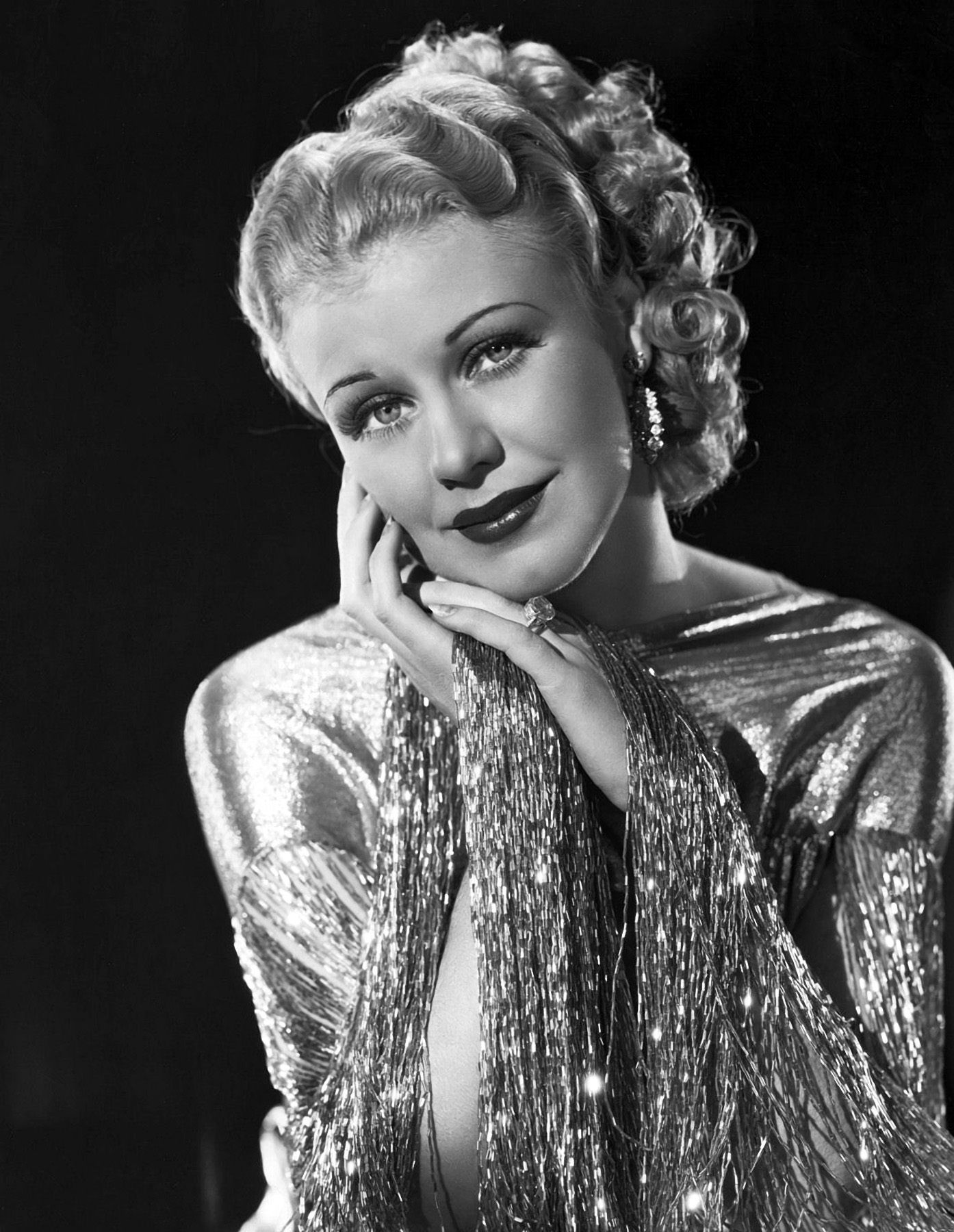
"Courtesy of the site doctormacro.com"
Ginger Rogers' dress is made of fine metallic fabric, it seems covered with gold leaf. The scarf has long fringes made of tiny gold beads.
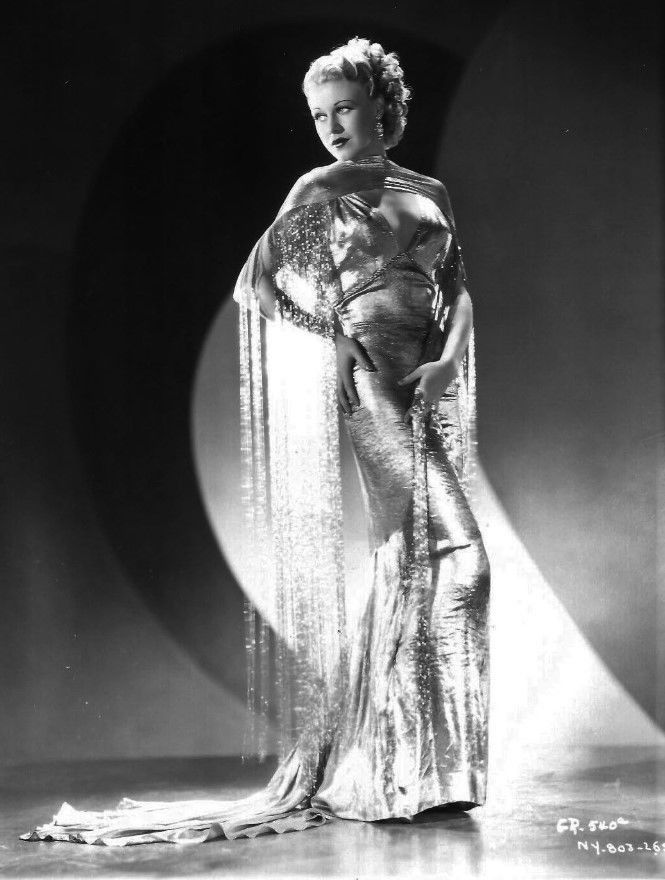
"Courtesy of the site IMBD.com"
Ginger Rogers, one of Hollywood's most celebrated actresses and dancers, played the role of "Countess Scharwenka," a cabaret singer and dancer. Her performance in "Roberta" was acclaimed for her energy and talent, which helped make the film a success.
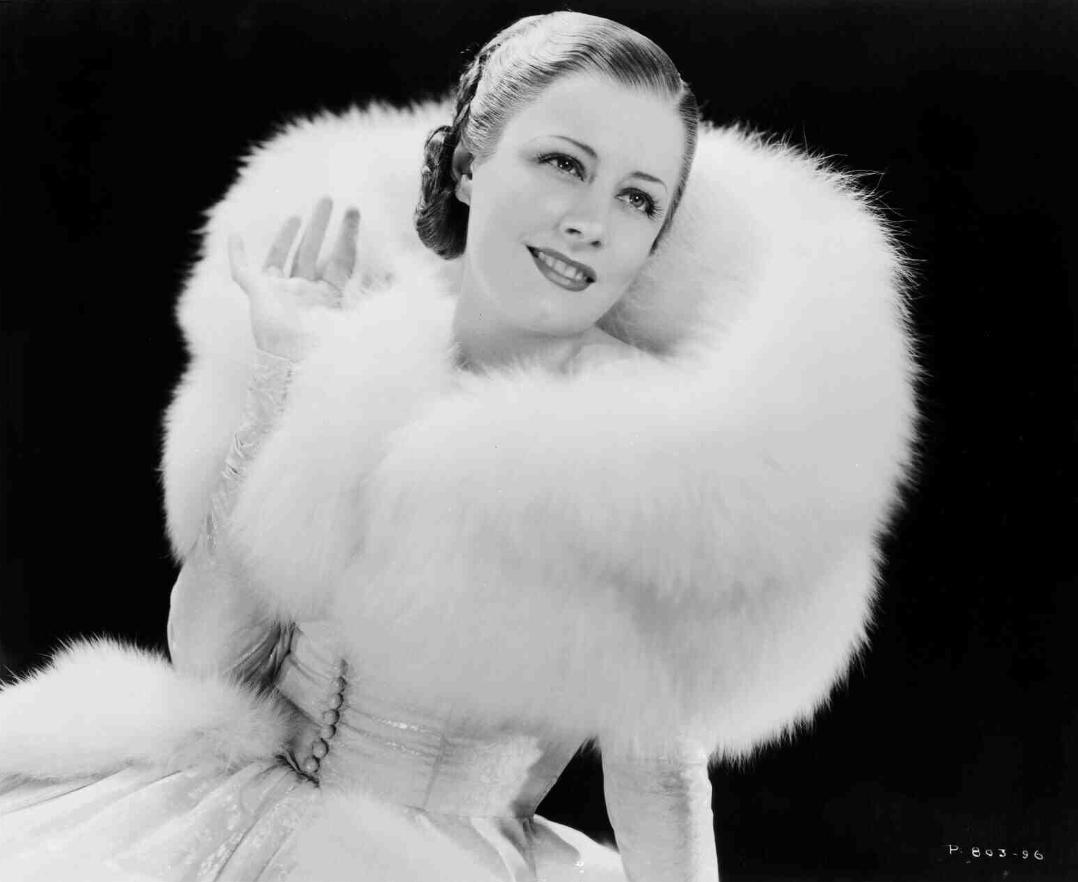
"Courtesy of the site IMBD.com"
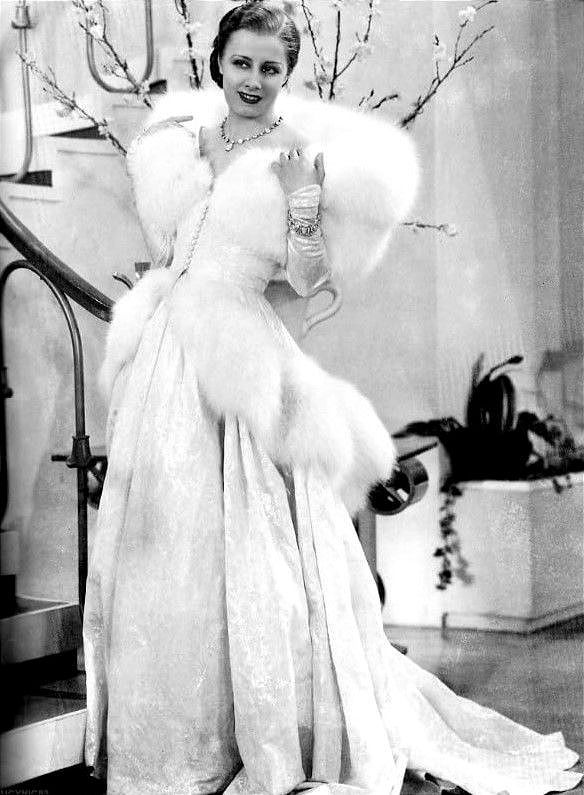
"Courtesy of the site IMBD.com"
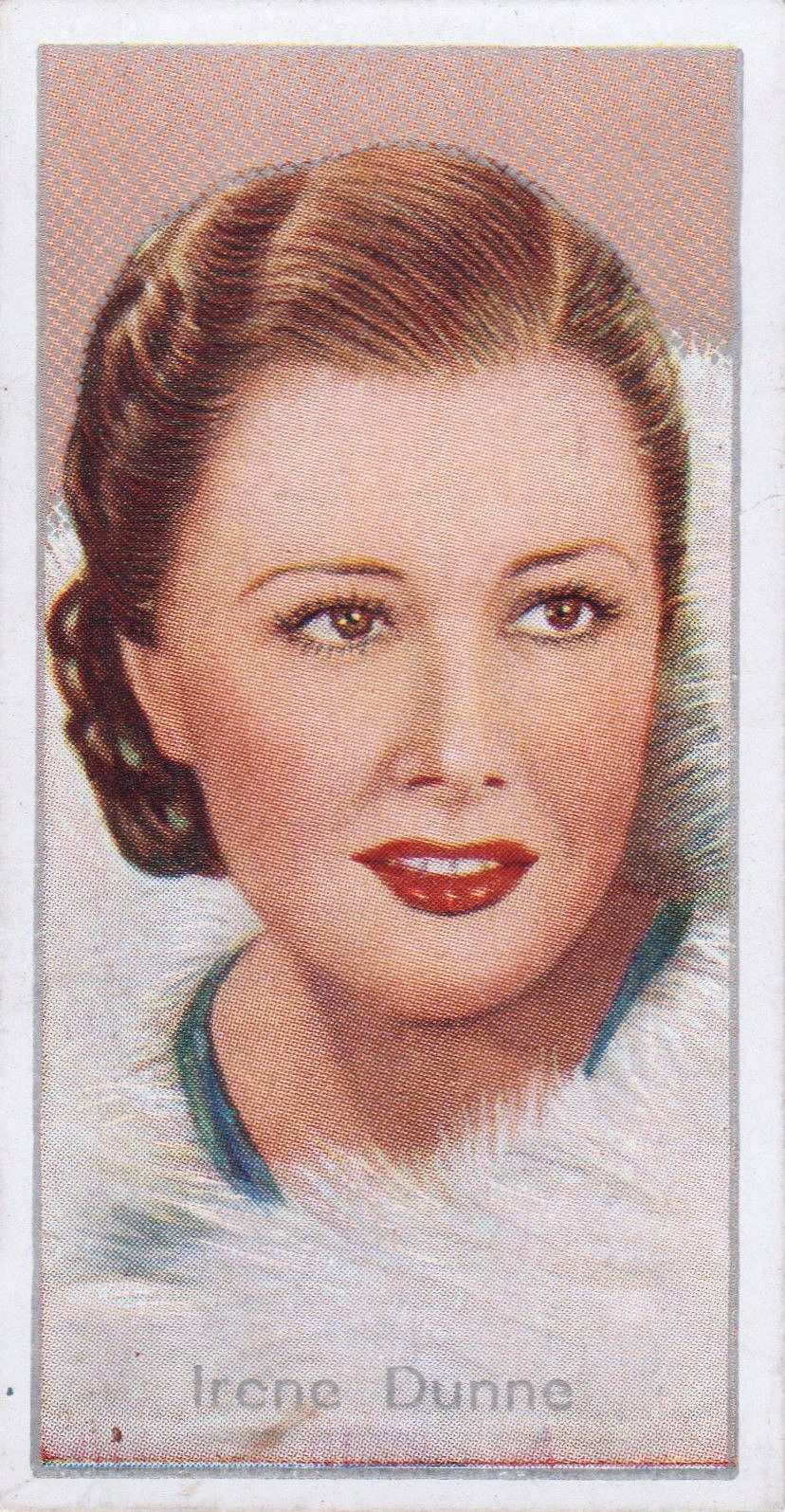
Card n.34 - FILM STARS by DESMOND
LTD RACING (1936)
(personal collection)
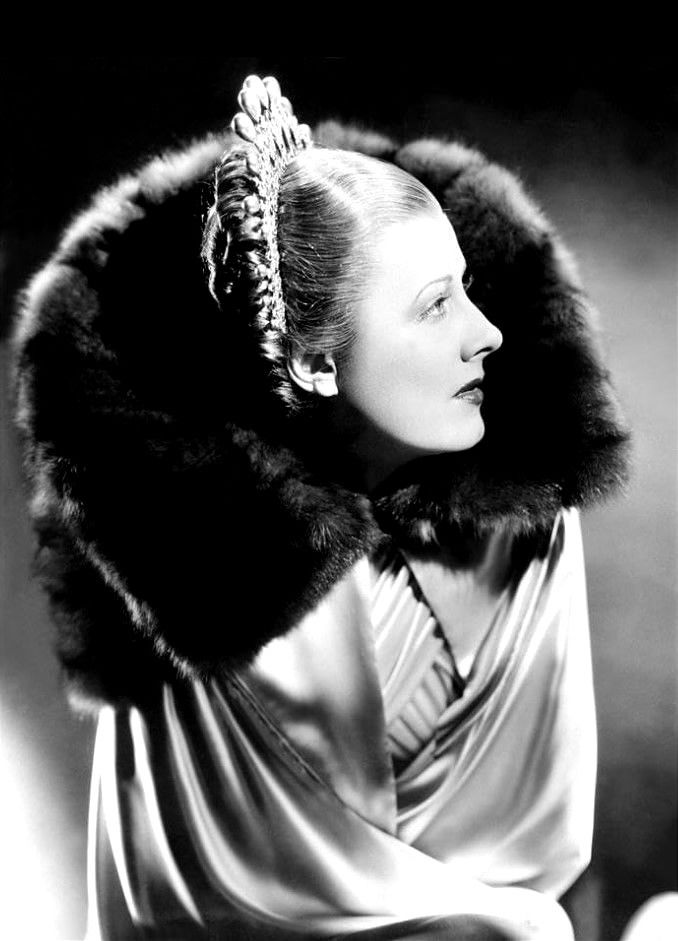
"Courtesy of the site IMBD.com"
This regal evening outfit that wraps around Irene is crafted from silver satin topped with a wide red sable collar. A tiara encrusted with diamonds and rubies gives it an empress touch. The crisscross bodice and low-cut back are stunning.
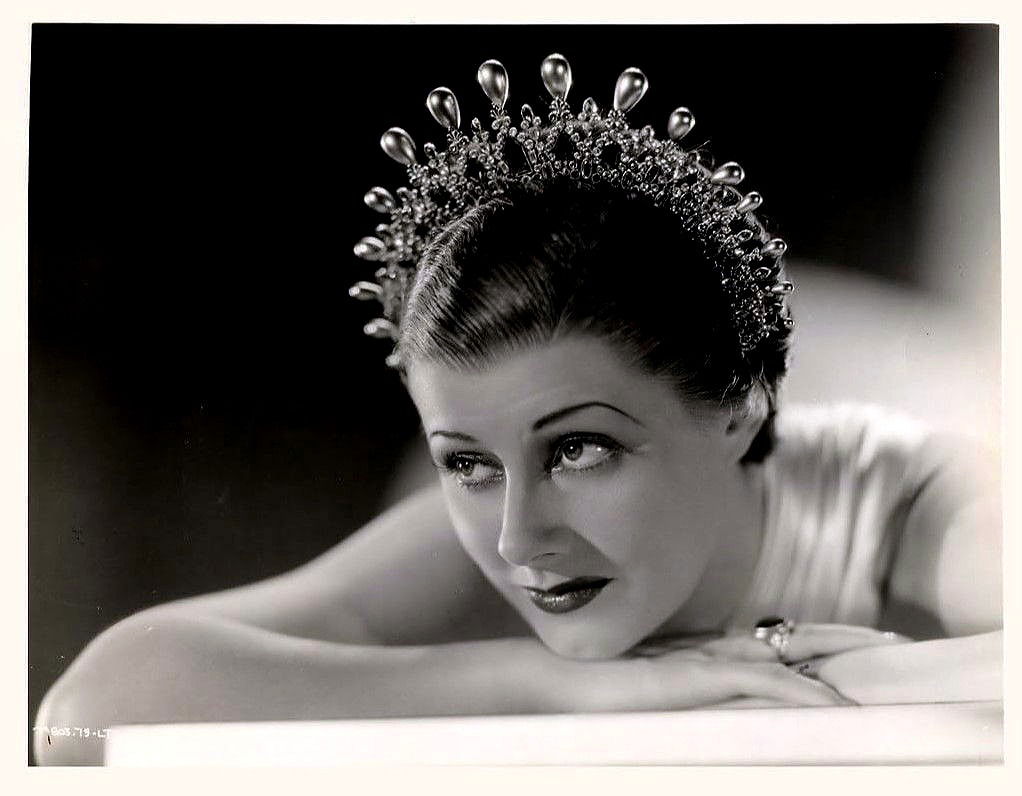
"Courtesy of the site IMBD.com"
Irene Dunne, one of Hollywood's most versatile and beloved actresses, played the role of Stephanie, the talented and charming fashion designer. Her performance in "Roberta" was acclaimed for her elegance and charisma, which helped make the film a success.
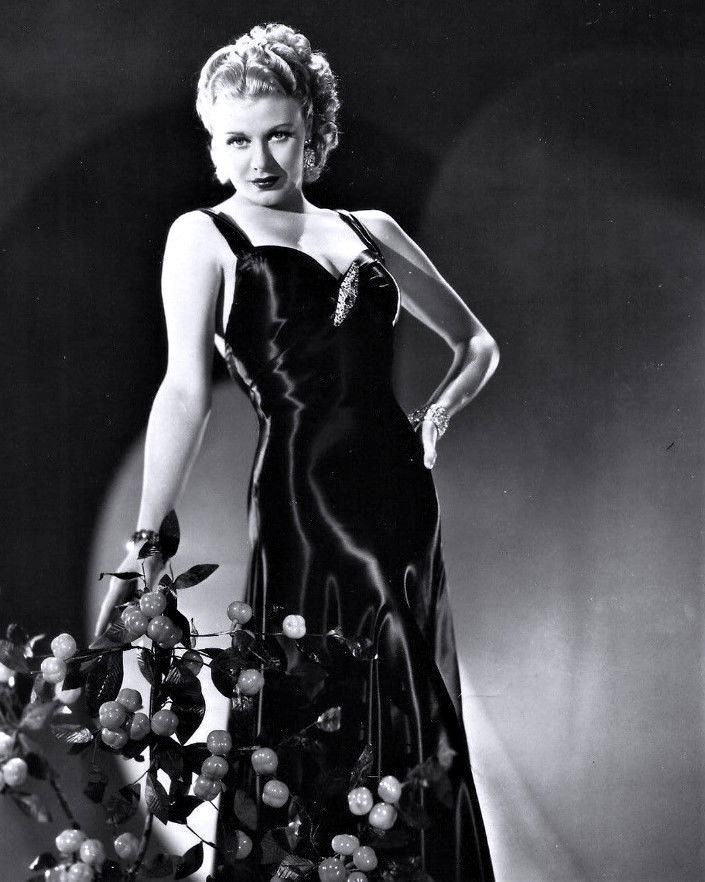
"Courtesy of the site IMBD.com"
The only ornament of this black satin ball gown worn by Ginger is a huge brooch studded with sparkling jewels.
In summary, "Roberta" is a film that celebrates fashion and music, with costumes that play a fundamental role in defining the aesthetics and atmosphere of the film. The combination of elegant clothes, enchanting music and memorable performances makes "Roberta" a classic of musical cinema of the 30s. The success of "Roberta" has had a lasting impact on fashion and cinema. The costumes in the film became a benchmark for the elegance of the 30s and inspired many subsequent productions.
RECKLESS
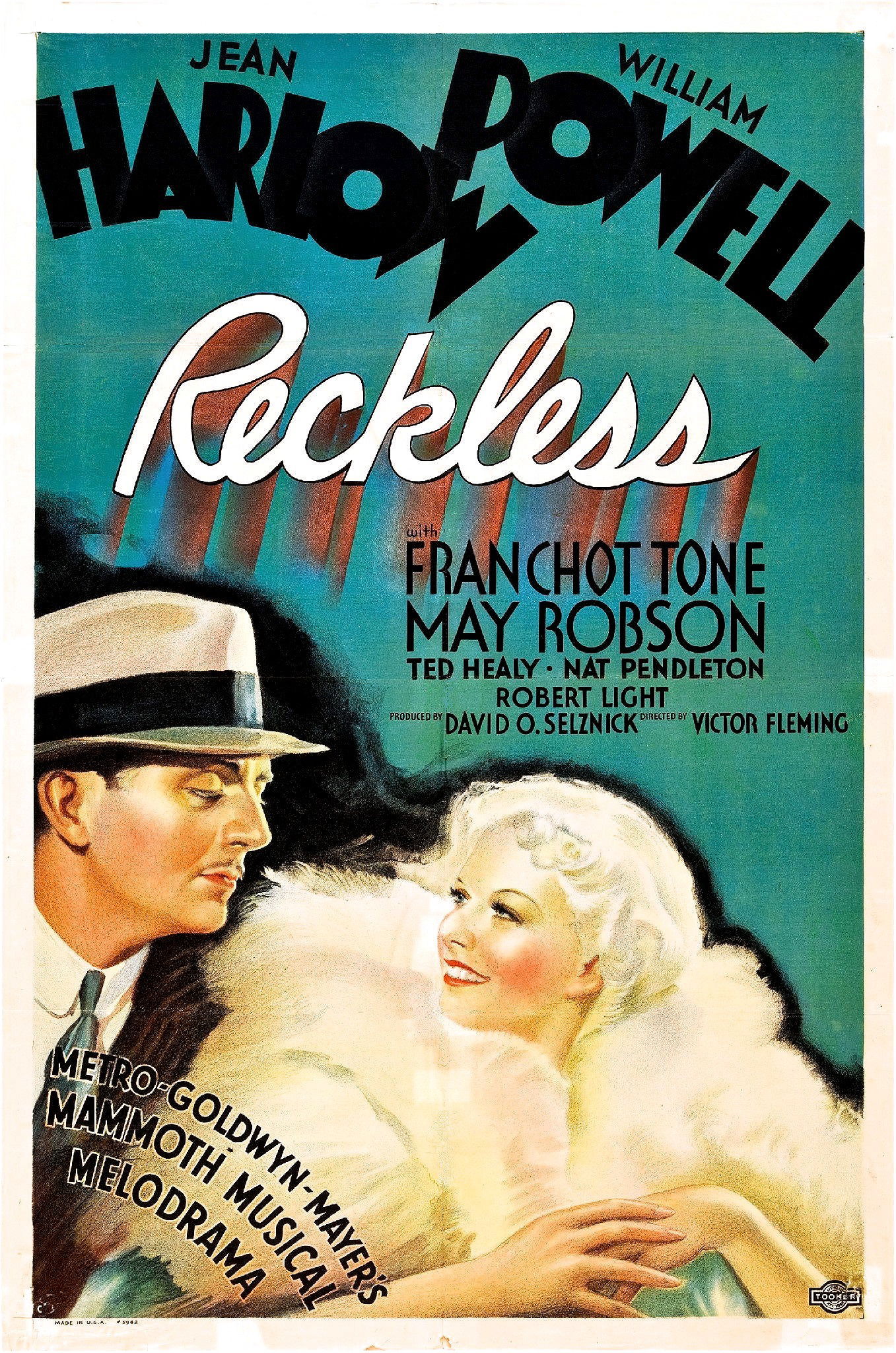
Movie Poster
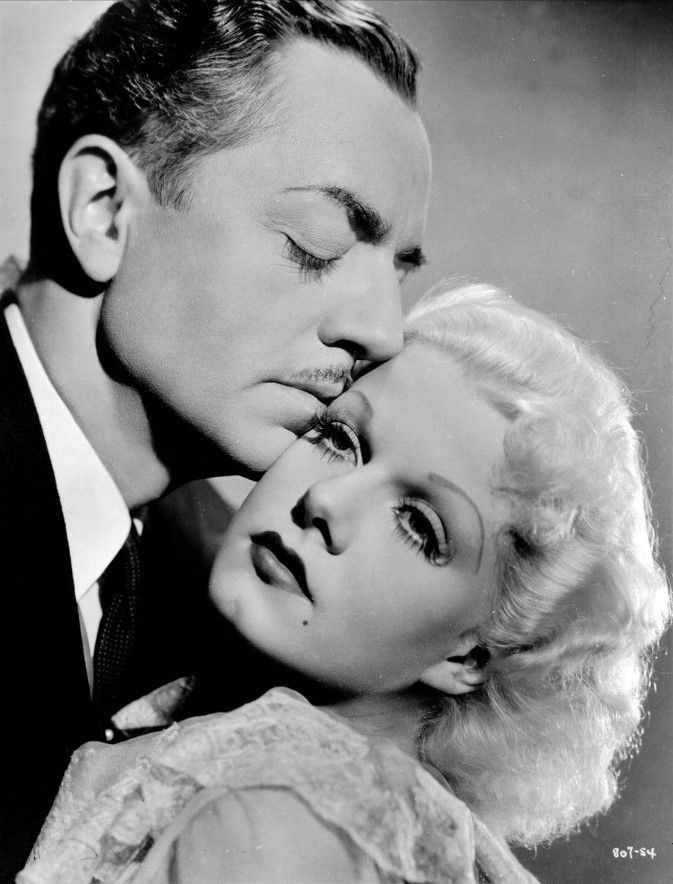
Scene from the Movie
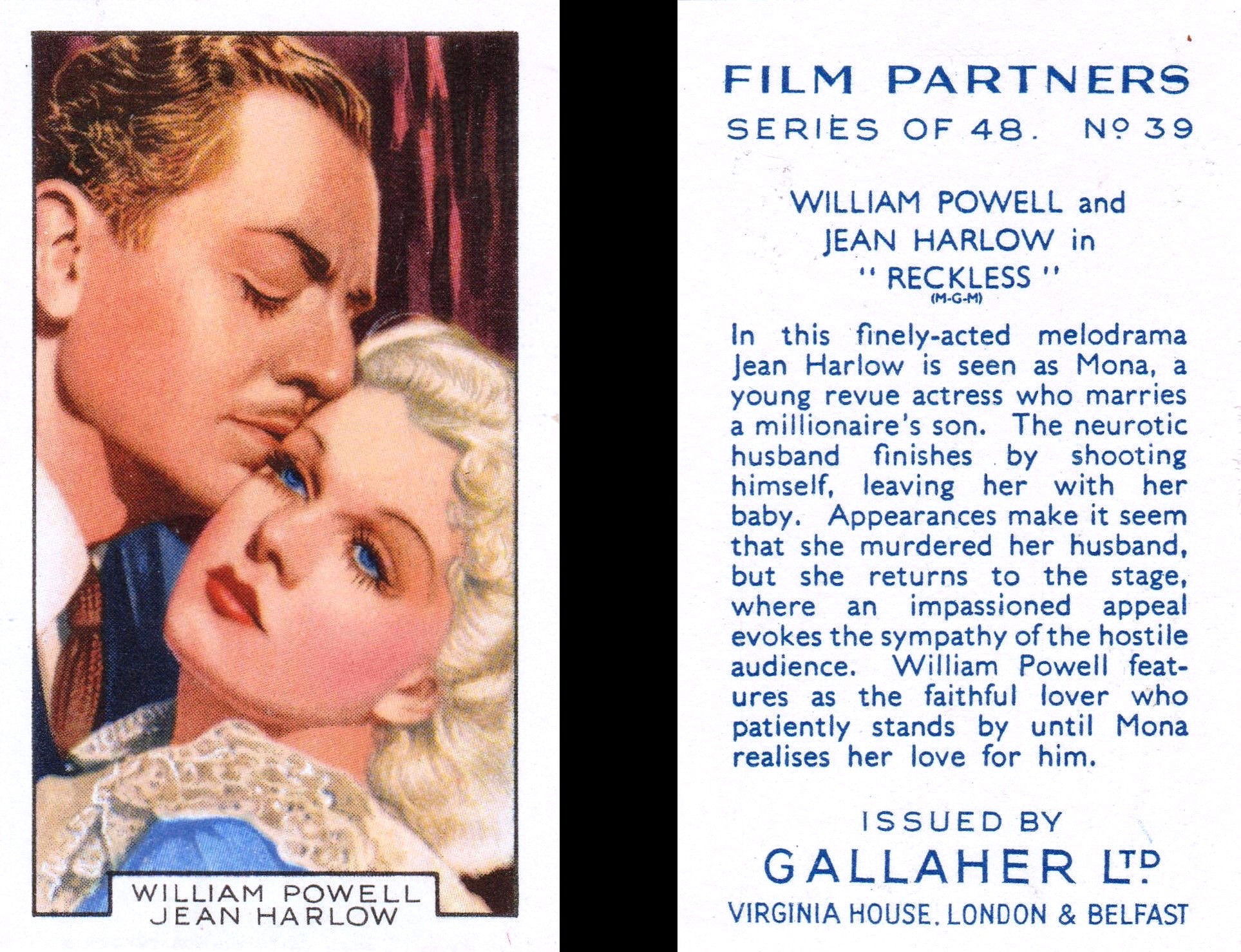
Card n.39 - FILM PARTNERS
GALLAHER Ltd. (1935)
(personal collection)
"Reckless" is a 1935 musical melodrama directed by Victor Fleming and produced by David O. Selznick. The main cast includes Jean Harlow, William Powell, Franchot Tone and May Robson. The plot follows Mona Leslie, a star of the musical who faces a series of dramatic events and personal complications.
The story follows Mona Leslie, a musical star jailed for reckless driving. She is rescued by her friend Ned Riley, a sports promoter and gambler, to attend a charity event. Mona begins dating Bob Harrison Jr., a wealthy admirer, but their relationship leads to complications and tragedies, culminating in Bob's suicide. Mona is suspected of murder, but is declared innocent. Despite this, his reputation is ruined and he has to fight to support his son and return to work.
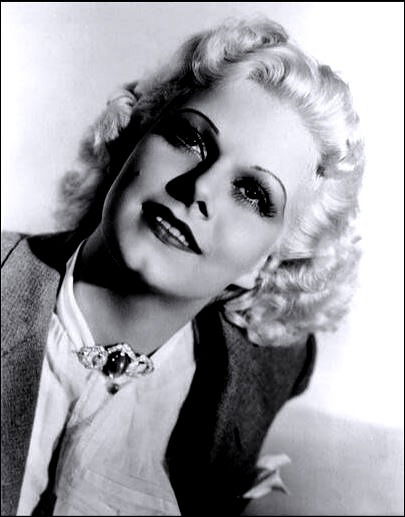
"Courtesy of the site IMBD.com"
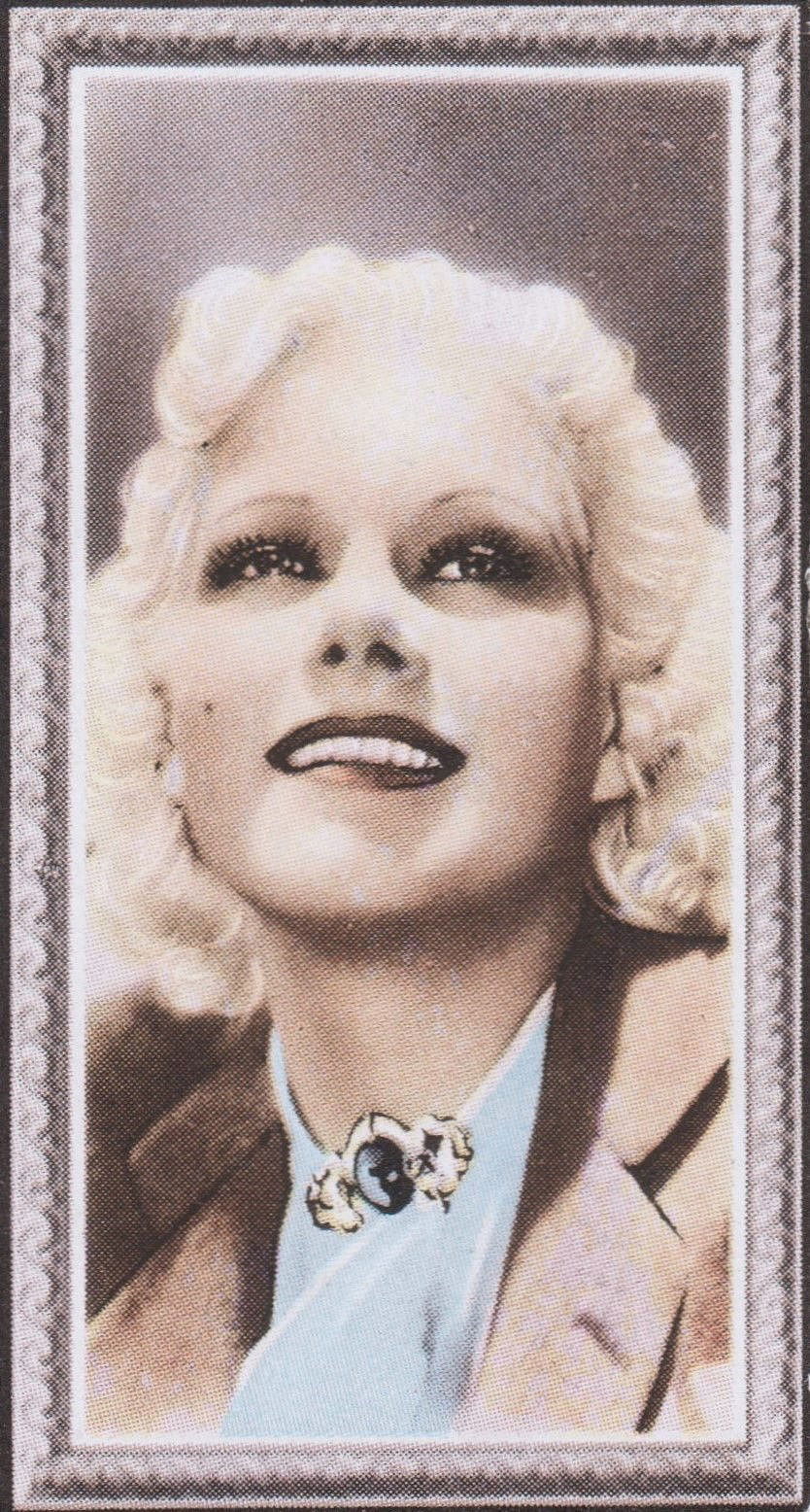
Card n.18 - STARS of the SCREEN
GODFREY PHILLIPS Ltd. (1936)
(personal collection)
The film had several working titles, including "Health," "There Goes Romance," and "A Woman Called Cheap." Joan Crawford was originally cast as the lead, but was replaced by Jean Harlow a week before production began. Jean Harlow's voice was dubbed by singer Virginia Verrill, who performed the songs from the film.
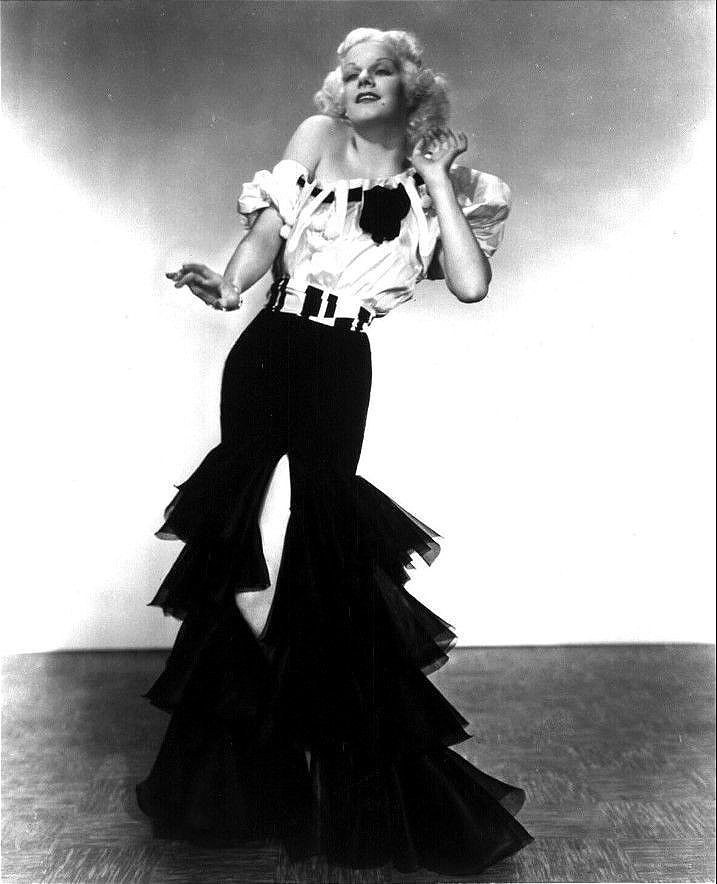
"Courtesy of the site IMBD.com"
The dress Jean wears in this scene from the film consists of a black skirt with slits and ruffles, paired with a white taffeta blouse with puffed sleeves.
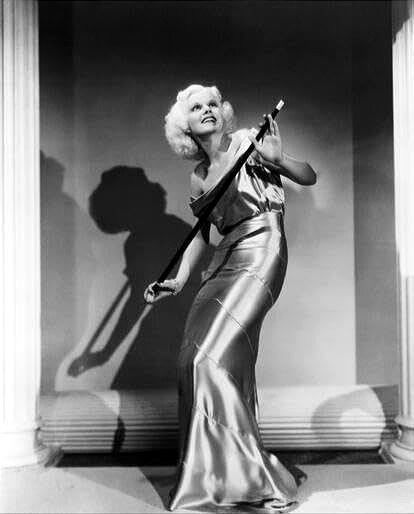
"Courtesy of the site IMBD.com"
Jean in a shiny satin evening dress, marks the time with a walking stick.
The costumes for "Reckless" were curated by Adrian, his costumes for Jean Harlow in "Reckless" are a perfect example of his talent for creating clothes that enhance the beauty and personality of actresses. His designs were known for their bold use of fabrics and intricate details, which helped to create the iconic image of the movie stars of the time.
The plot of "Reckless" is loosely based on a real event: the 1931 marriage scandal between singer Libby Holman and tobacco heiress Zachary Smith Reynolds, and her death from a gunshot wound to the head.

"Courtesy of the Media History Digital Library"
Excerpt from "THE MOTION PICTURE HERALD" (April 1935)
NO MORE LADIES
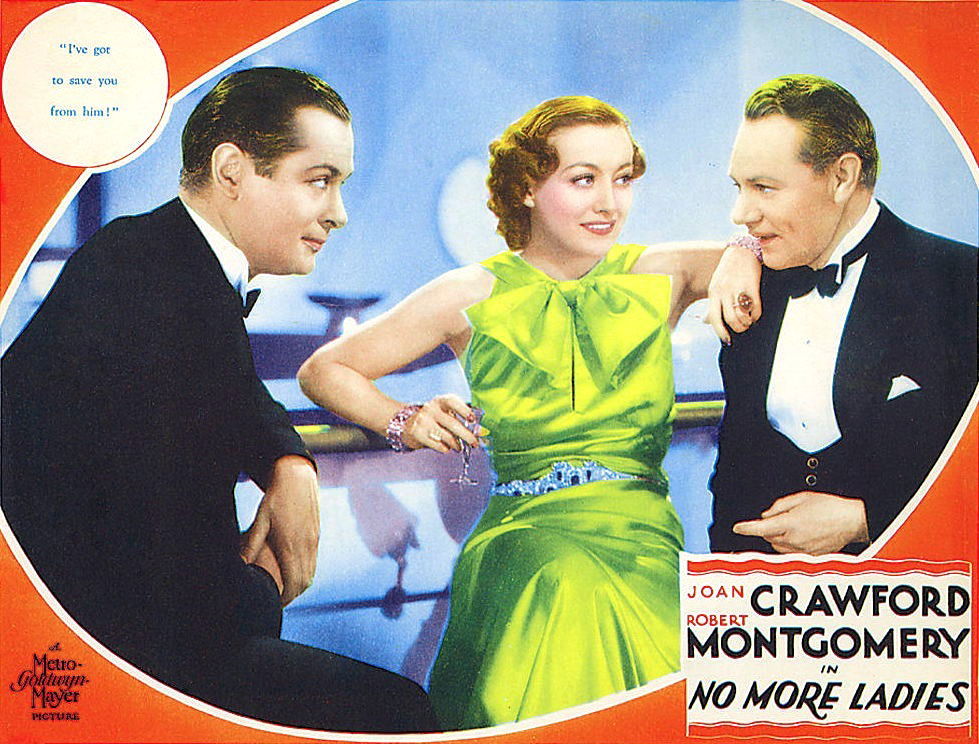
Lobby Card (1935)
"No More Ladies" is a 1935 romantic comedy film directed by Edward H. Griffith and George Cukor, starring Joan Crawford, Robert Montgomery and Franchot Tone. The film is based on a play by A.E. Thomas and tells the story of a young woman who tries to teach her unfaithful boyfriend a lesson. The plot follows Marcia Townsend (Joan Crawford), a sophisticated and determined young woman, who discovers that her boyfriend Sherry Warren (Robert Montgomery) is a hardened womanizer. Determined to make him understand the importance of loyalty, Marcia throws a party to which she invites all of Sherry's former lovers, hoping to confront him with his actions. The situation becomes further complicated when Marcia begins to develop feelings for Jim Salston (Franchot Tone), a friend of Sherry's. The film explores themes of love, fidelity, and the dynamics of romantic relationships with a touch of humor and drama.
One of the most fascinating aspects of "No More Ladies" are the costumes, which perfectly reflect the glamour and elegance of the 30s. The costumes for the film were designed by Adrian, who with innovative and sophisticated work, created clothes that enhance the beauty and personality of the actors, especially those of Joan Crawford. His designs were known for their bold use of fabrics, intricate details, and elegant silhouettes.
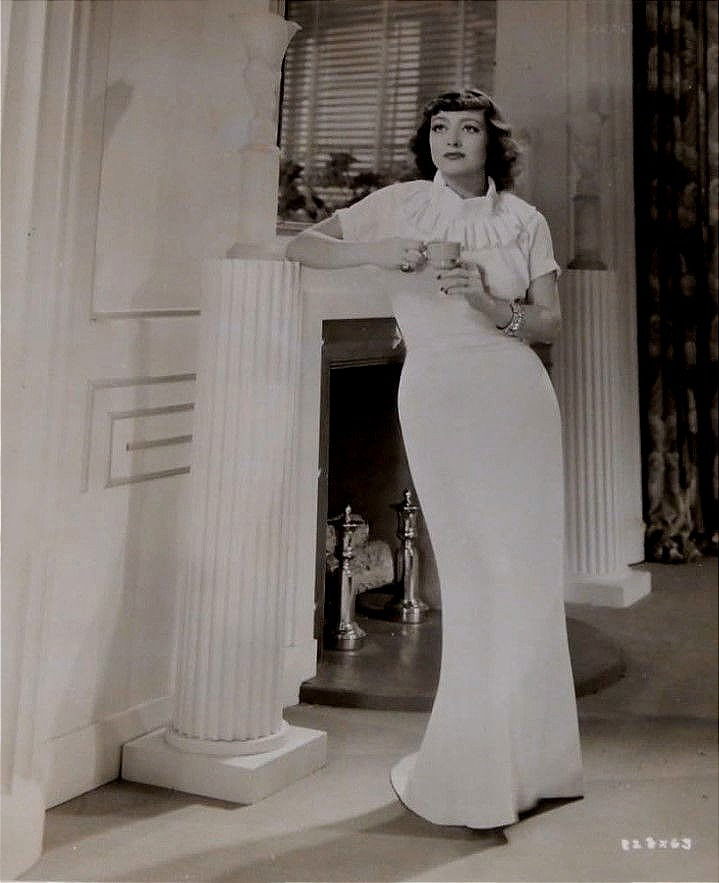
"Courtesy of the site IMBD.com"
One of the dresses designed by Adrian that received applause is the white crepe creation. The box neckline is a new note, achieved by a straight, generously gathered length that molds into a square. Gathering also on the cuffs of the short sleeves and for the half back belt, stopped with two mirrors on the back instead of buttons.
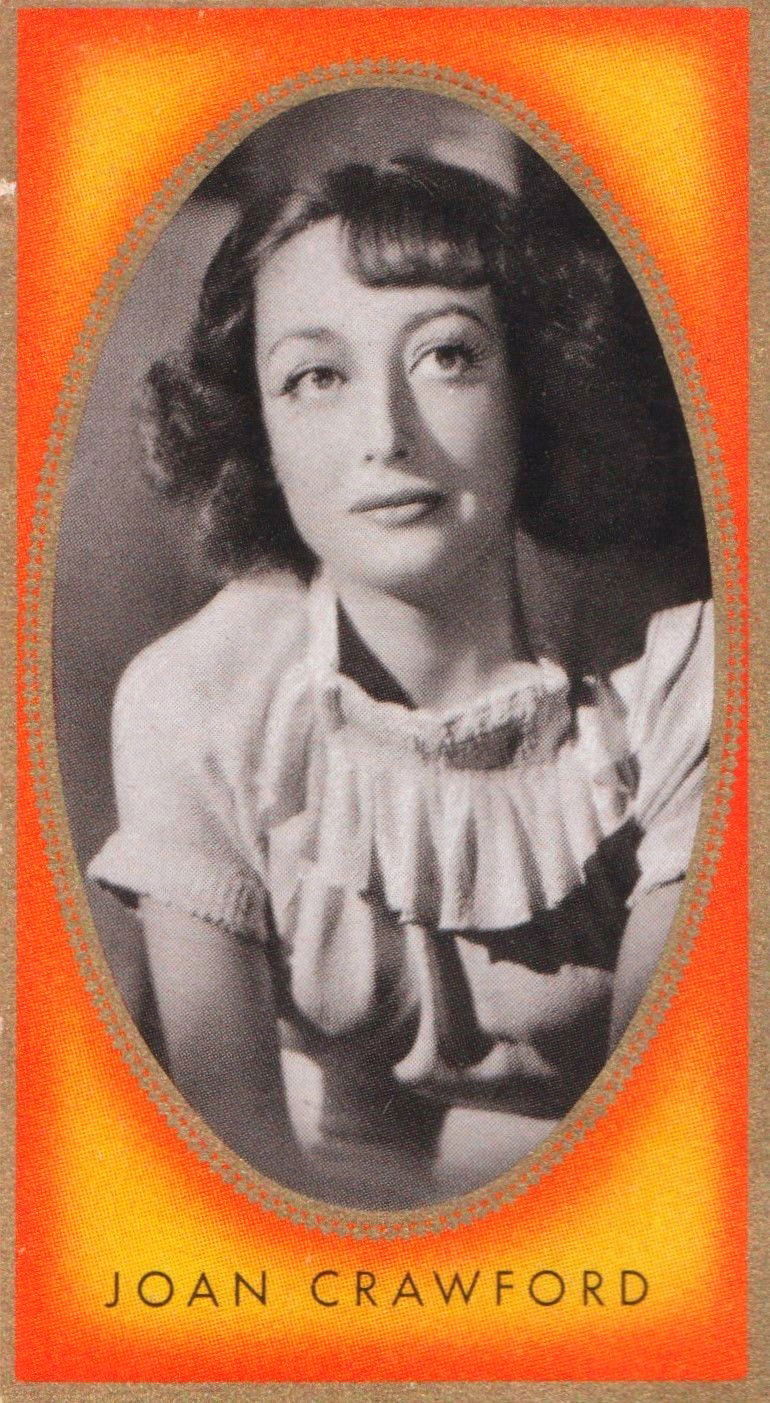
Card n.130 p.19 - BUNTE FILMBILDER (1936)
(personal collection)

"Courtesy of the site doctormacro.com"
Joan's evening dresses from "NO MORE LADIES" offer a plethora of ideas. Adrian designed a very short evening shawl, richly edged with silver fox.
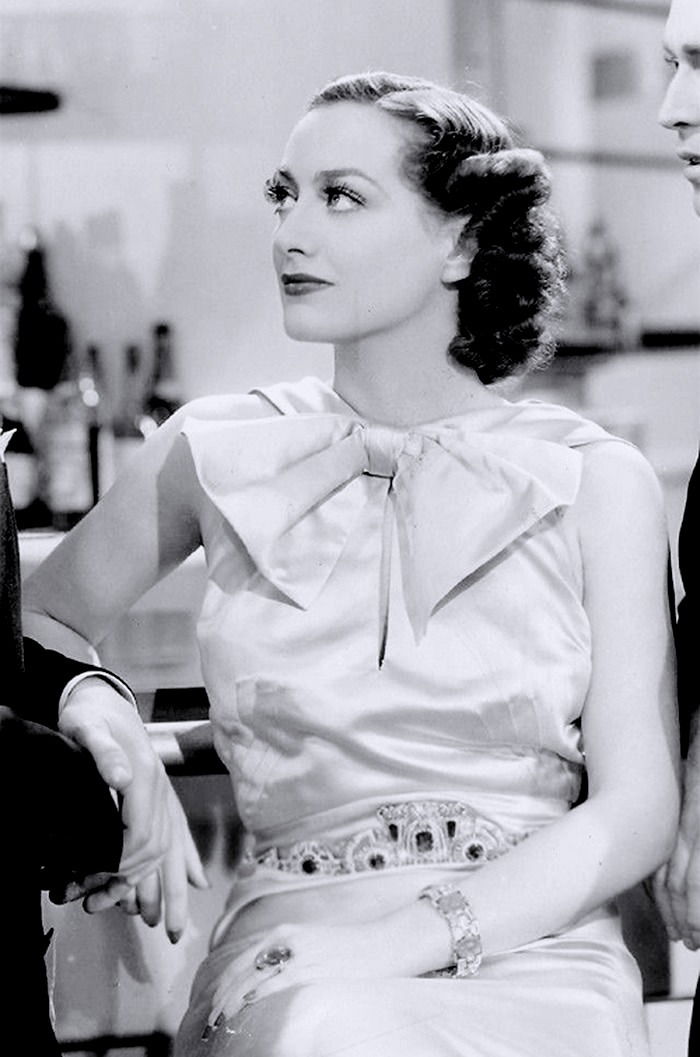
Scene from the Movie
Another evening dress is in biscuit-colored satin, with a belt and a large buckle jeweled with emeralds and rhinestones.
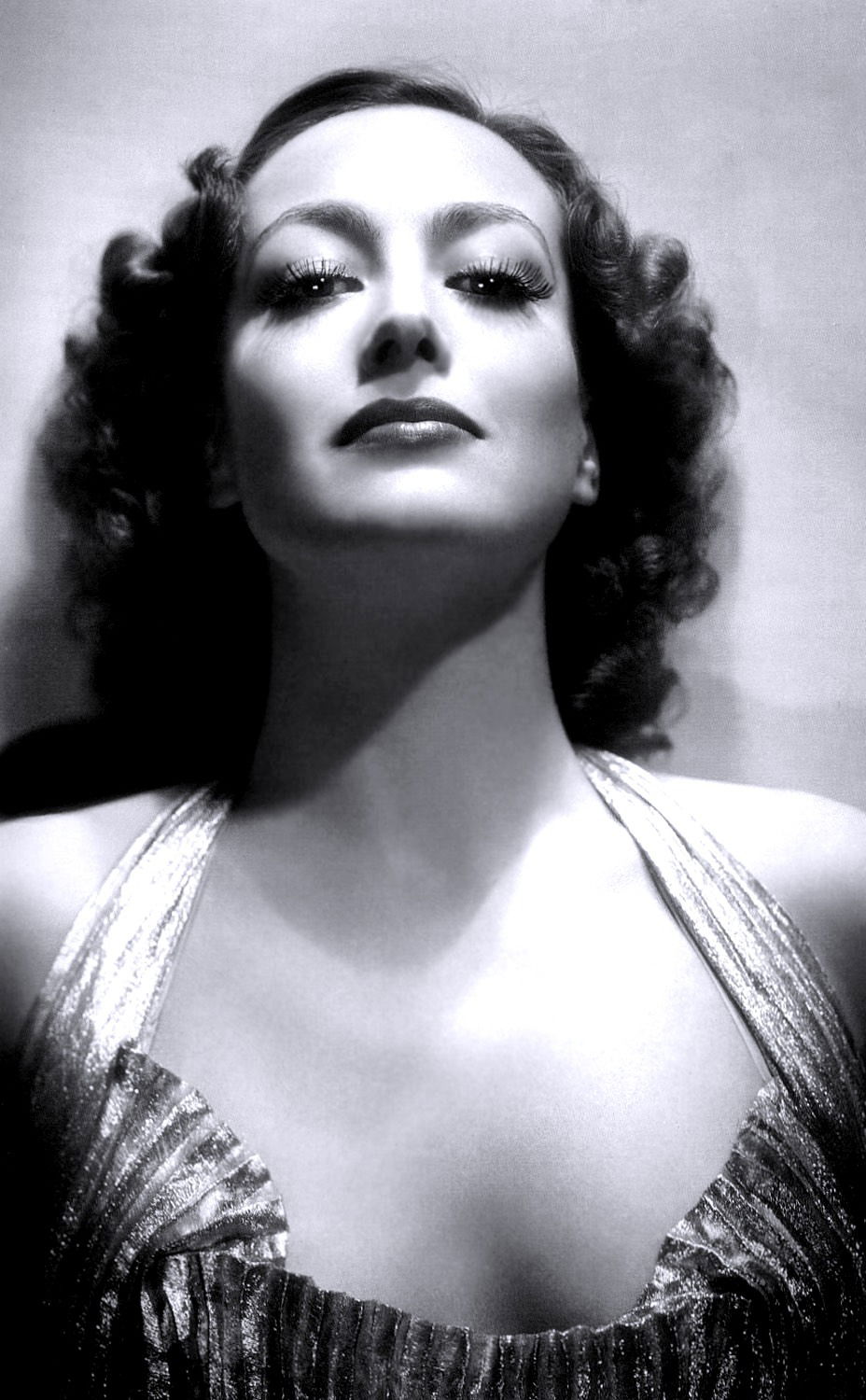
"Courtesy of the site doctormacro.com"
This evening dress is made of taffeta with sunburst pleated flounces in silver fabric. Adrian thinks that the sunray pleating and accordion make the figure more graceful. The hip line is fitted and flared. The belt is made of satin.
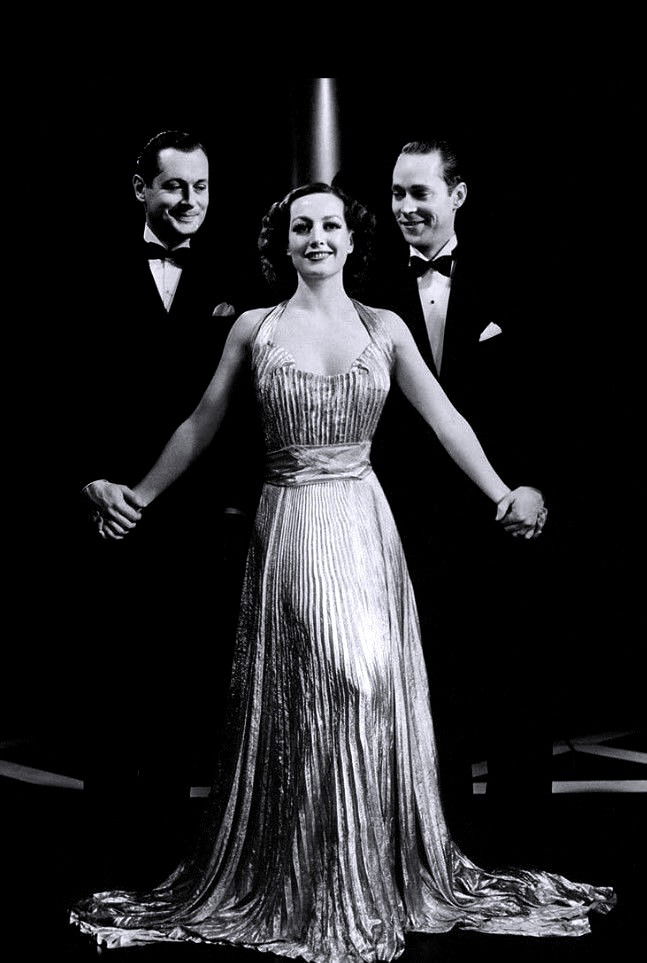
"Courtesy of the site IMBD.com"
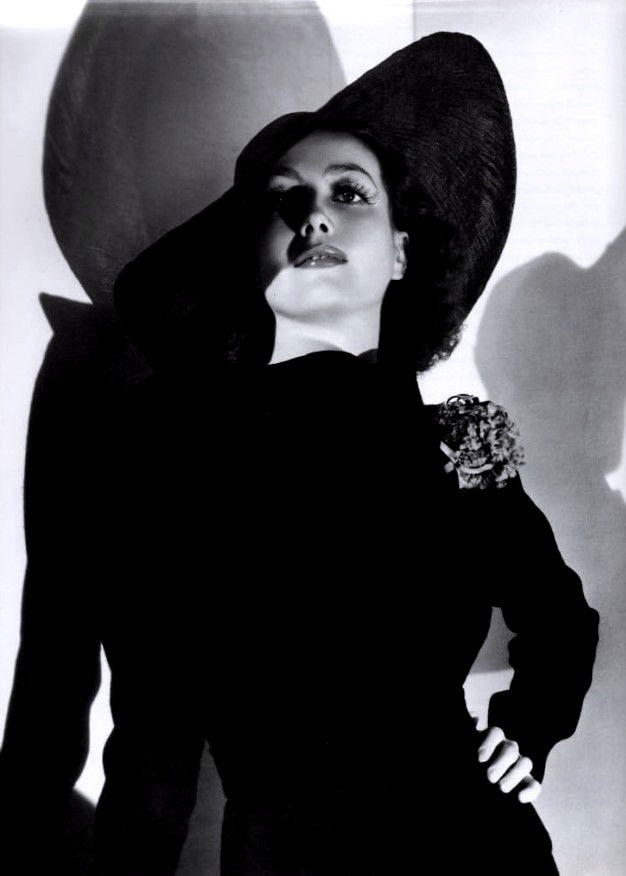
"Courtesy of the site IMBD.com"
In this dress for Crawford, Adrian invents the padded shoulder pads applied to the jackets of his suits. A single-breasted suit in black wool with wide lapels, fastened with a belt of the same fabric and a large button. The skirt has an inverted pleat at the front and back.
The gripping plot and memorable performances of the protagonists make this film a classic of Hollywood cinema. The costumes, with their sophisticated design and intricate details, not only enhance the beauty of the characters, but also help to create an atmosphere of luxury and sophistication that characterizes the era.
MARY OF SCOTLAND

Lobby card (1936)
Cigarette cards have played a significant role in documenting and disseminating history and popular culture. These small trading cards depicted a wide range of subjects, including celebrities, historical events, and real figures.
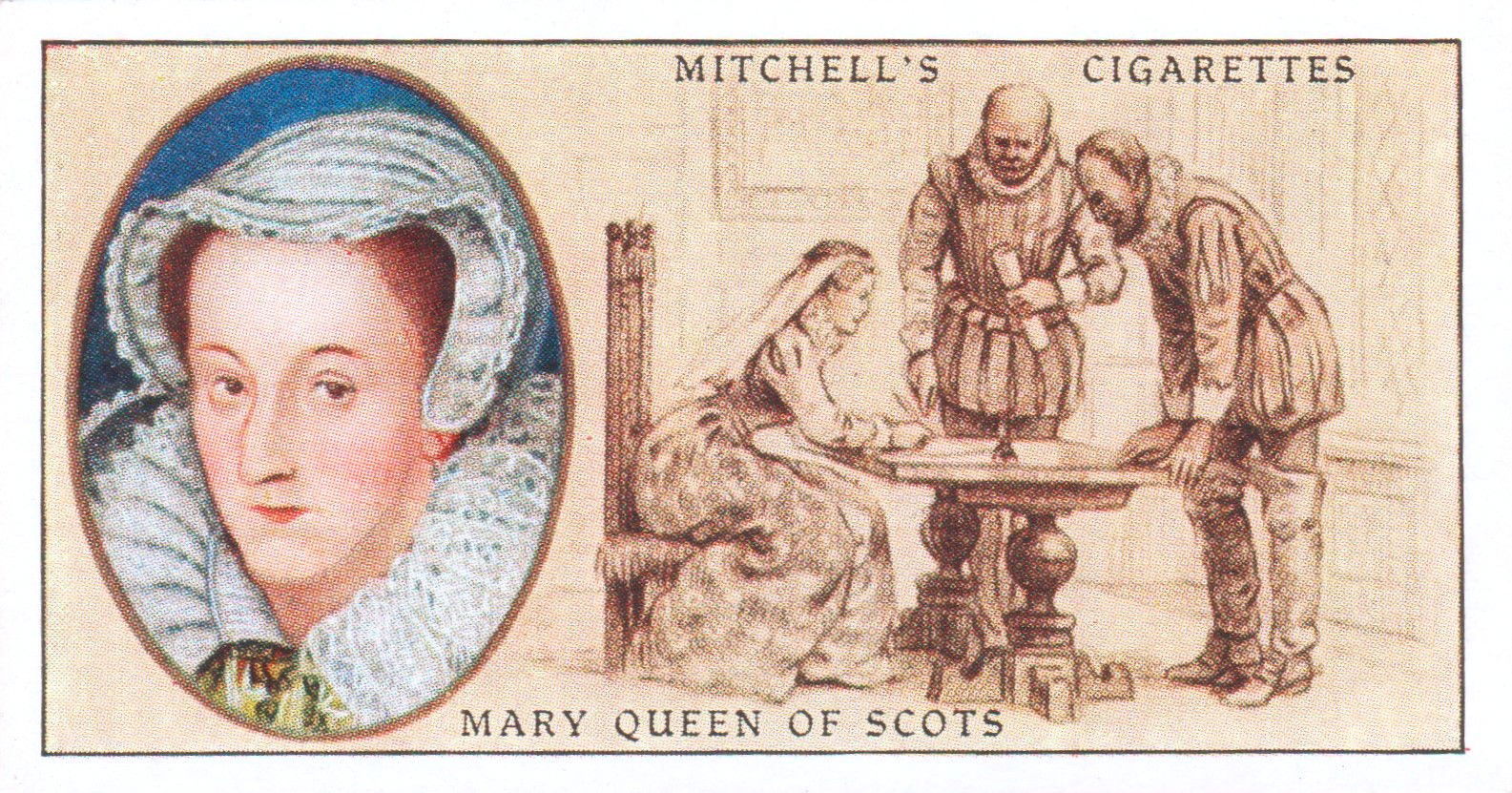
Card n.11 - FAMOUS SCOTS
STEPHEN MITCHELL & SON (1933)
(personal collection)
A notable example is represented by the figurines of Mary Stuart and Queen Elizabeth I. These cards not only celebrated historical figures but also served as educational tools, offering detailed information and imagery that helped spread historical knowledge among the public. The figurines of Mary Queen of Scots and Elizabeth I, in particular, captured people's imaginations, telling the story of their conflict and tumultuous lives through iconic images and concise descriptions.
Cigarette cards have therefore played an important role in preserving and disseminating history, making significant historical figures and events accessible to the general public. These cards have become valuable collector's items, valued not only for their historical value, but also for their aesthetic appeal.
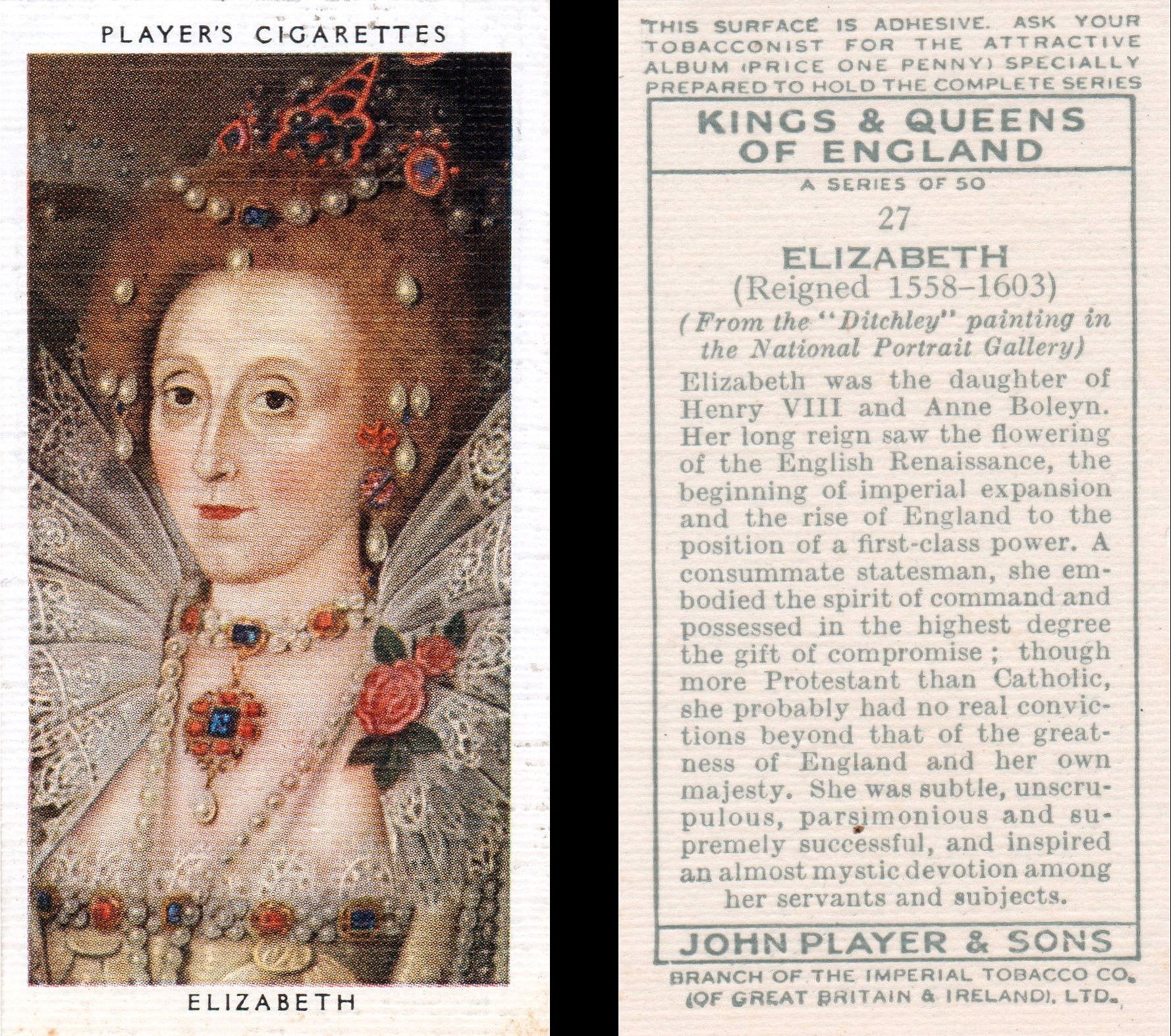
Card n.27 KINGS & QUEENS OF ENGLAND
JOHN PLAYER & SONS (1935)
(personal collection)

Card n.9 - CELEBRITIES OF BRITISH HISTORY
CARRERAS Ltd. (1935)
(personal collection)
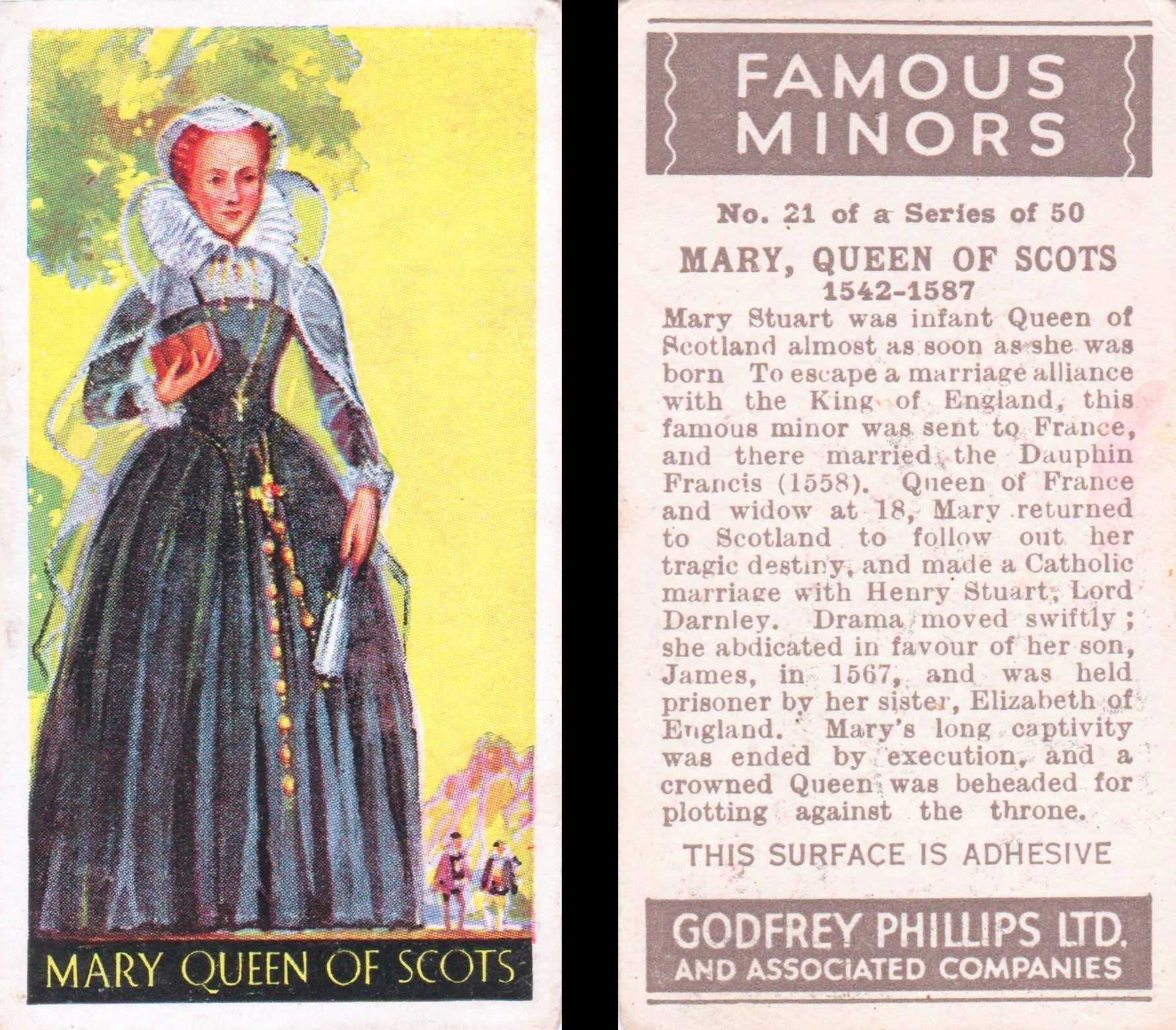
Card n.21 - FAMOUS MINORS
GODFREY PHILLIPS (1936)
(personal collection)
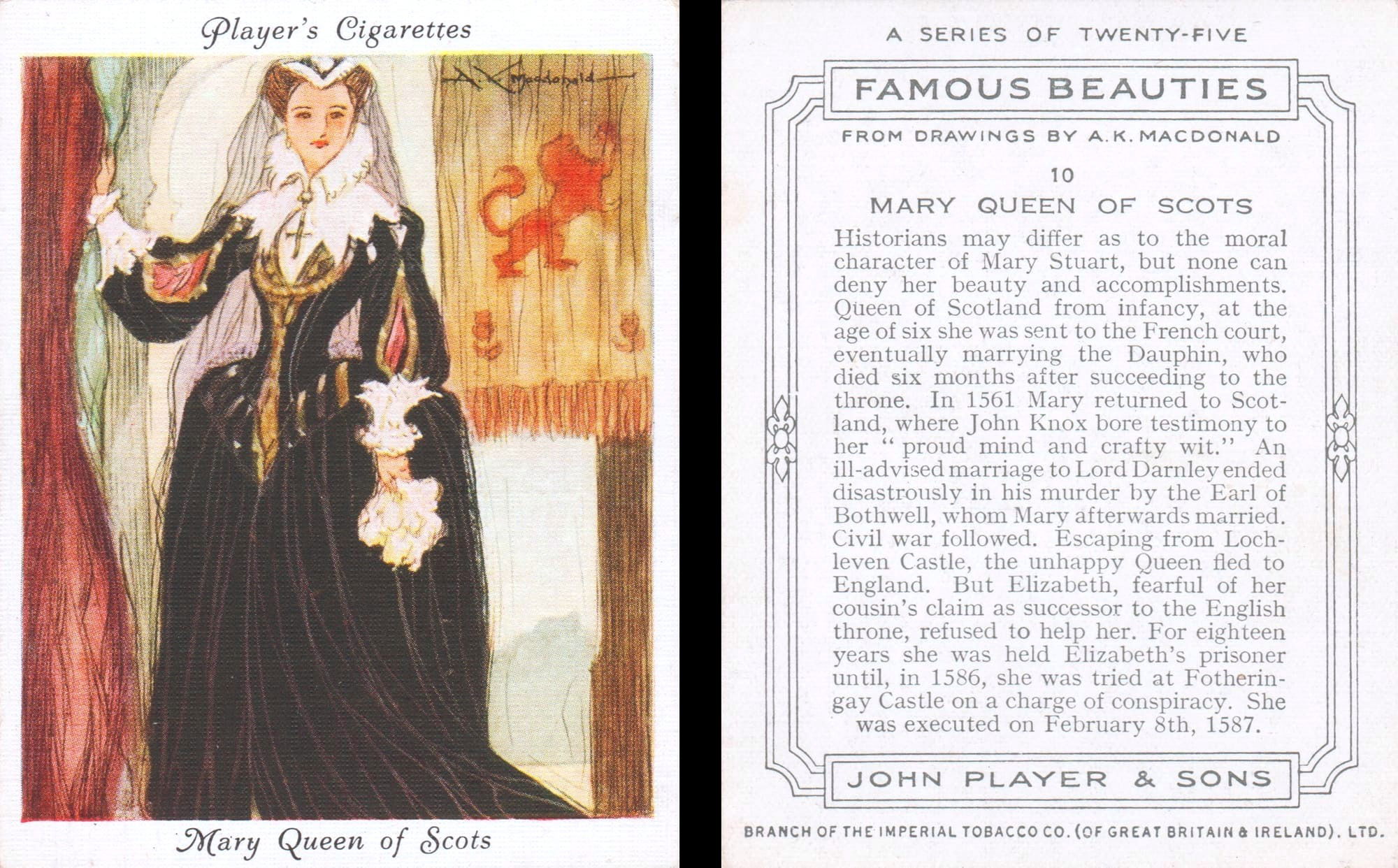
Card n.10 - FAMOUS BEAUTIES
JOHN PLAYER & SONS (1937)
(personal collection)
"Mary of Scotland" is a 1936 American drama film directed by John Ford, starring Katharine Hepburn as Mary Queen of Scots and Fredric March as Bothwell. The film is an adaptation of Maxwell Anderson's play and tells the tumultuous life of Mary Queen of Scots, and her conflict with Elizabeth I of England played by Florence Eldridge.
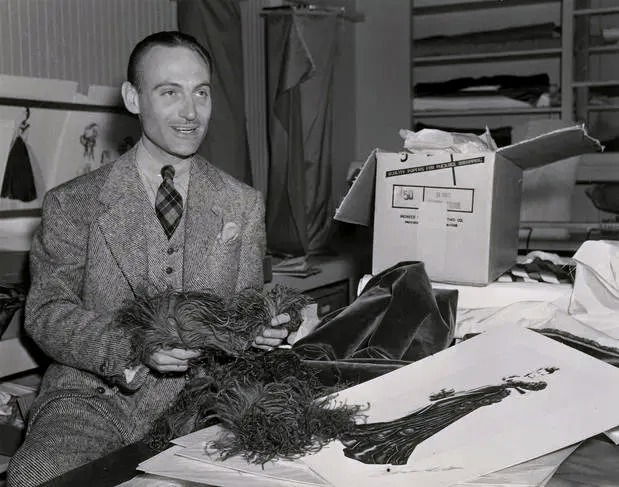
Walter Plunkett
One of the most fascinating aspects of "Mary of Scotland" are the costumes, designed by the legendary Walter Plunkett. Plunkett is known for his meticulous and detailed work, which helped to create an authentic and historically accurate atmosphere in the film. Even though the costumes reflect a 1930s aesthetic, they are still evocative of the 1560s period, in which the story is set.
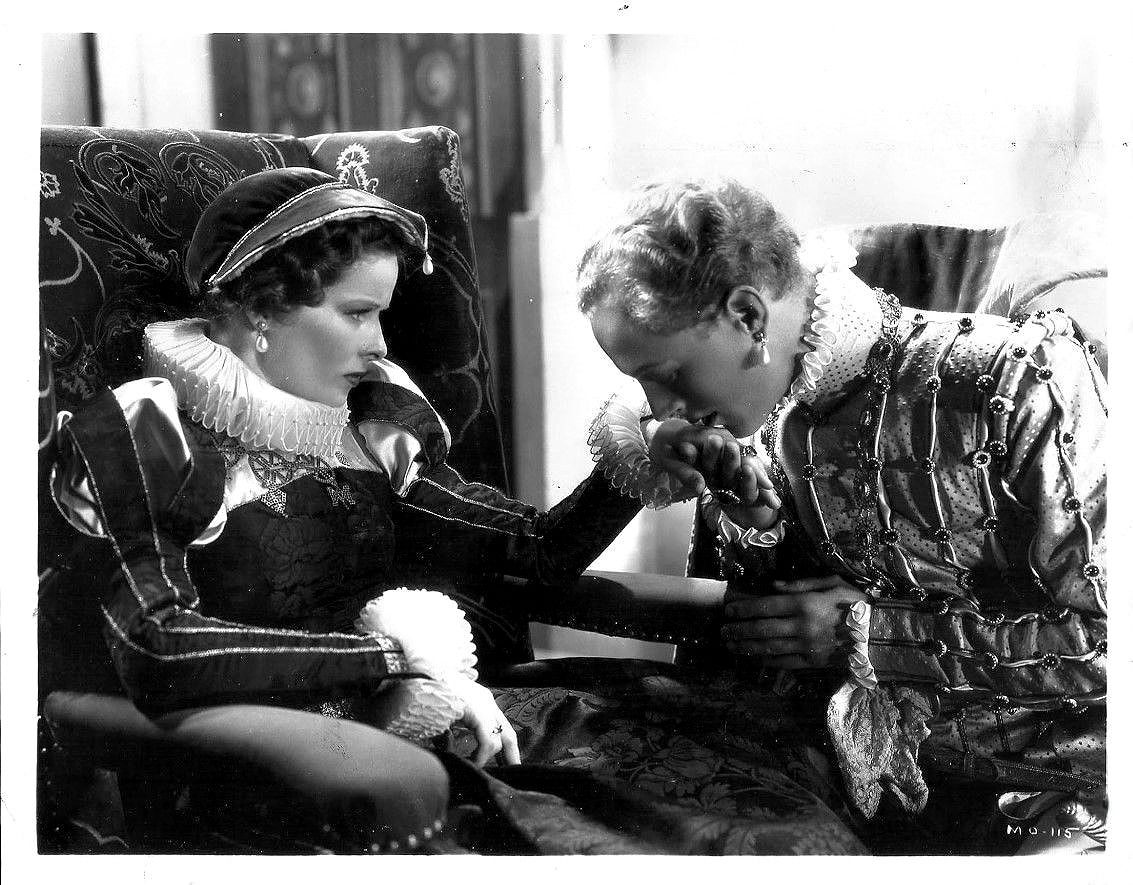
"Courtesy of the site IMBD.com"
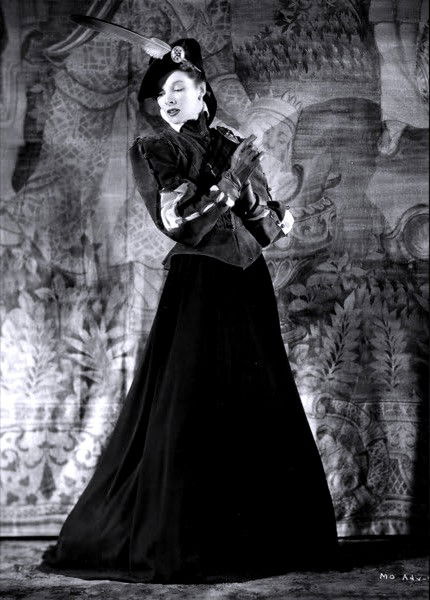
"Courtesy of the site IMBD.com"
Katharine Hepburn's costumes as Mary Stuart are particularly remarkable. Plunkett created outfits that enhance the character's royalty and dignity, using rich fabrics and elaborate details. One of the most iconic dresses is a black velvet dress with gold embroidery, which emphasizes Maria's majesty and strength.
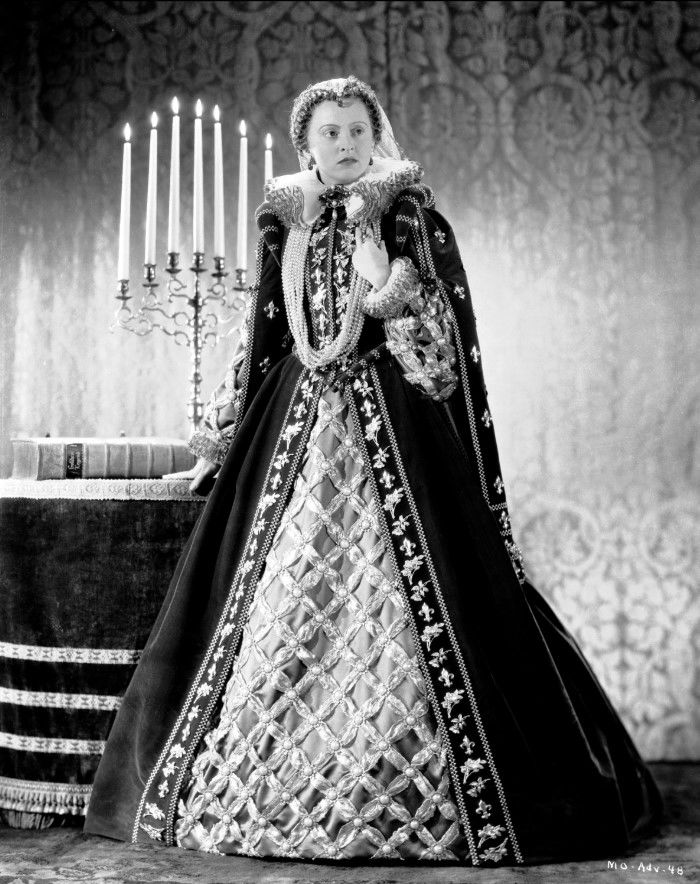
"Courtesy of the site IMBD.com"
The historic dress designed by Walter Plunkett for Florence Eldridge in the film "Mary of Scotland" is a masterpiece of elegance and details. This dress, which appears to belong to a Renaissance or Baroque period, features an elaborate diamond pattern on the front, with intricate details and ornaments that appear to be embroidered or appliquéd. The main fabric of the dress is dark velvet, with lighter inserts and gold and silver decorations. The sleeves are wide and decorated with motifs similar to those of the body of the dress. The dress is completed by a high and rigid collar, also decorated, and a long cape that descends to the ground.
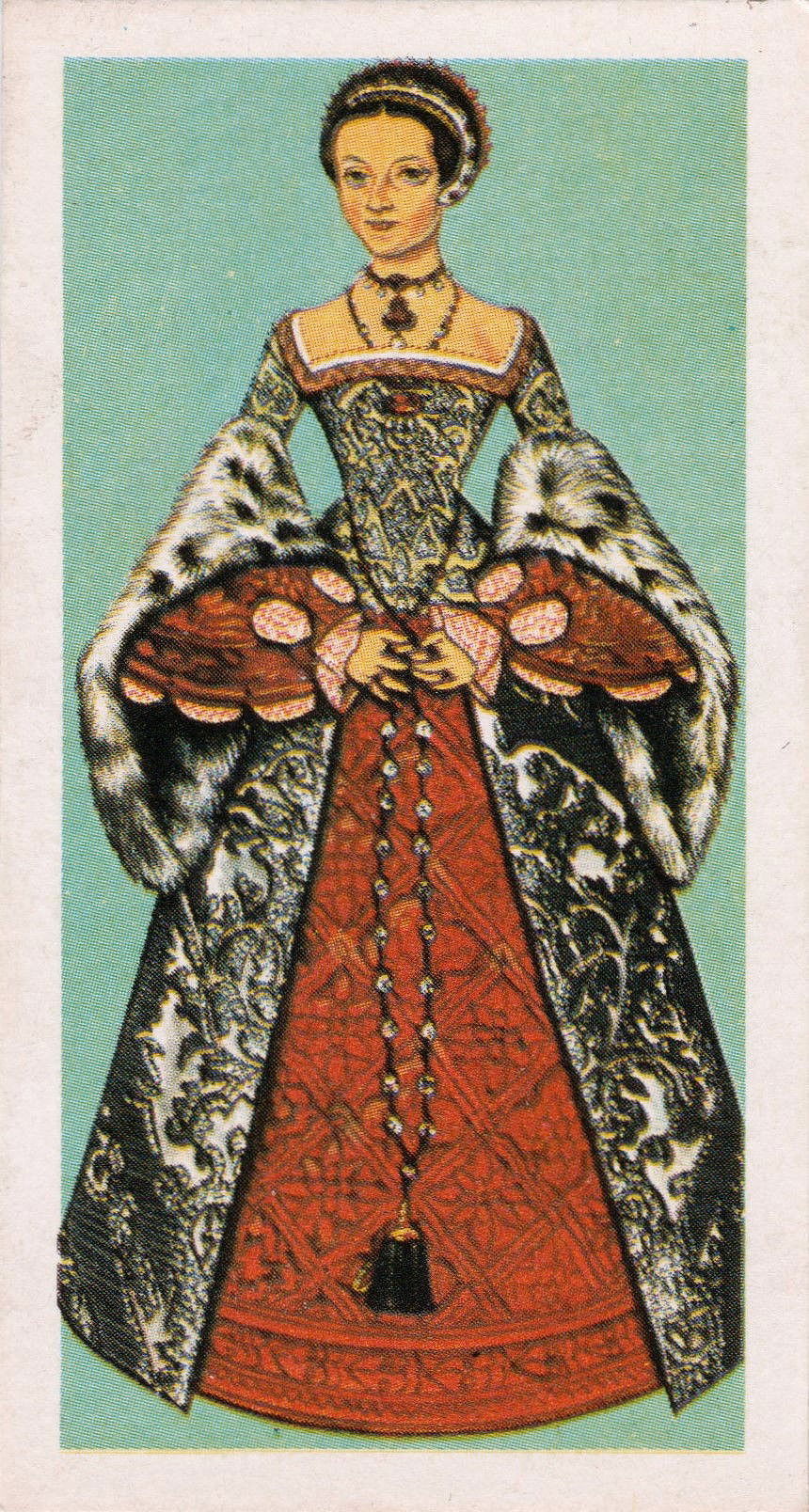
BRITISH COSTUME
BROOKE BOND TEA (1967)
(personal collection)
The 1545 formal dress shown here is truly charming and bears many similarities to the costume designed by Walter Plunkett for Florence Eldridge in "Mary of Scotland". Both dresses have a very similar skirt cut, characterized by a wide and voluminous silhouette. This style was typical of the Renaissance period and reflected the elegance and majesty required for formal and regal dresses.
The diamond pattern and intricate details featured on the 1545 dress are also elements found in Plunkett's costume, emphasizing the attention to detail and historical accuracy. Both dresses use rich fabrics and elaborate decorations, such as embroidery and appliqués, to enhance the character's royalty and dignity.
These common elements demonstrate how Hollywood costume designers, such as Plunkett, have been inspired by real historical clothing to create authentic and visually fascinating costumes for films set in bygone eras.
The jewels in the film were created by Joseff of Hollywood. Eugene Joseff, the founder of the company, was known for his talent for creating jewelry and accessories for many Hollywood films, including "Mary of Scotland." Joseff's jewelry added an extra layer of luxury and authenticity to the costumes, helping to create the film's historical atmosphere.
Plunkett's work on "Mary of Scotland" was widely appreciated and helped cement his reputation as one of Hollywood's finest costume designers. The costumes not only enhance the beauty and character of the characters, but also help to create a historical atmosphere that immerses viewers in the story of Mary Queen of Scots.
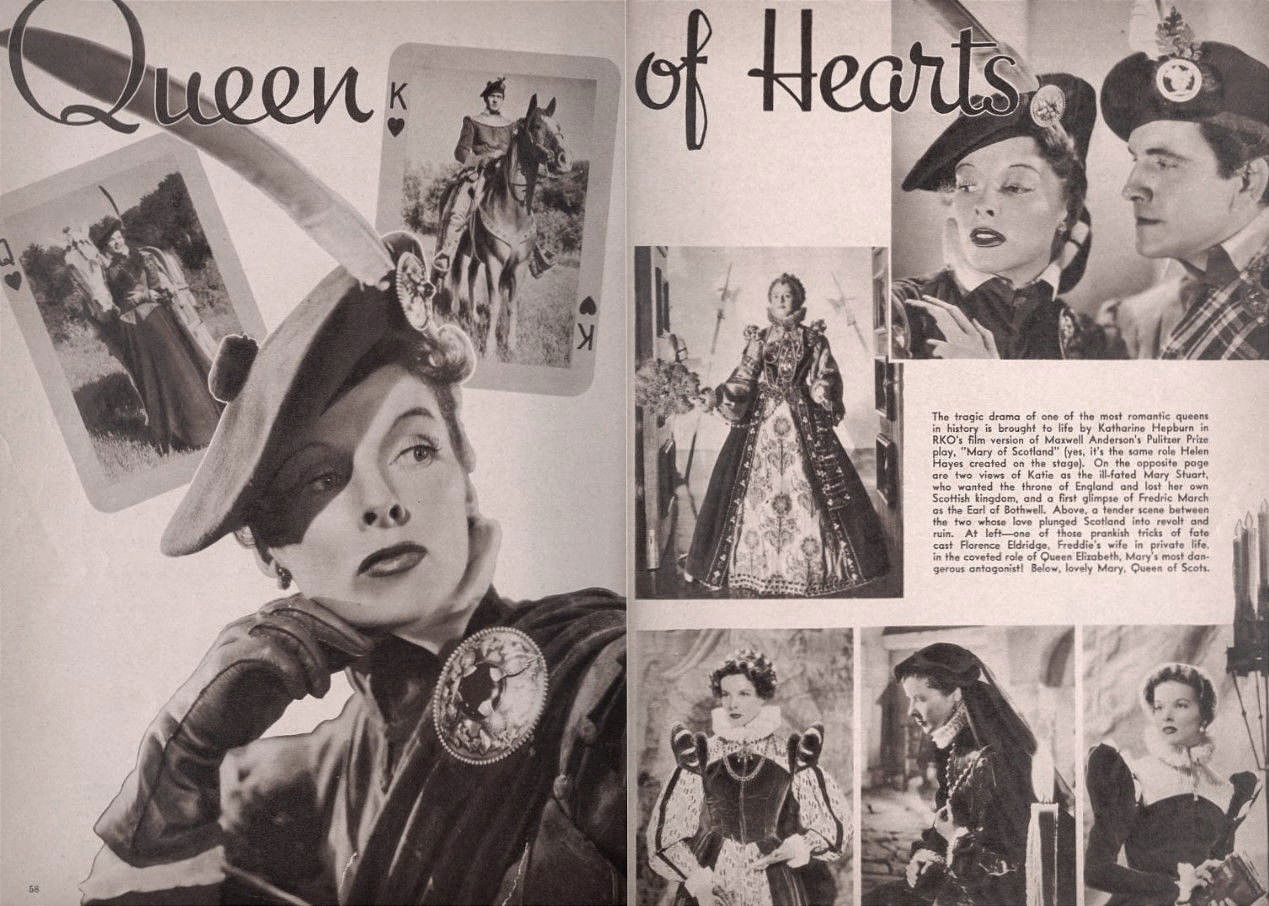
"Courtesy of the Media History Digital Library"
Page 58/59 of the periodical MOVIE MIRROR Vol.9 (1936)
QUEEN of HEARTS
"The tragic drama of one of history's most romantic queens is brought to life by Katharine Hepburn in RKO's film version of Maxwell Anderson's Pulitzer Prize-winning drama, 'Mary of Scotland' (yes, it's the same role Helen Hayes created on stage). On the opposite page are two images of Katie as the ill-fated Mary Stuart, who wanted the throne of England and lost her Scottish kingdom, and a first look at Fredric March as the Earl of Bothwell. Above, a tender scene between the two whose love has led Scotland to revolt and ruin. On the left, one of those twists of fate, Florence Eldridge, Freddie's wife in private life, in the coveted role of Queen Elizabeth, Mary's most dangerous antagonist! Below, the beautiful Mary, Queen of Scots."
The 1936 film "Mary of Scotland" had a significant impact on the fashion of the time, inspiring a series of accessories and clothing that reflected the style and elegance of historical costumes.
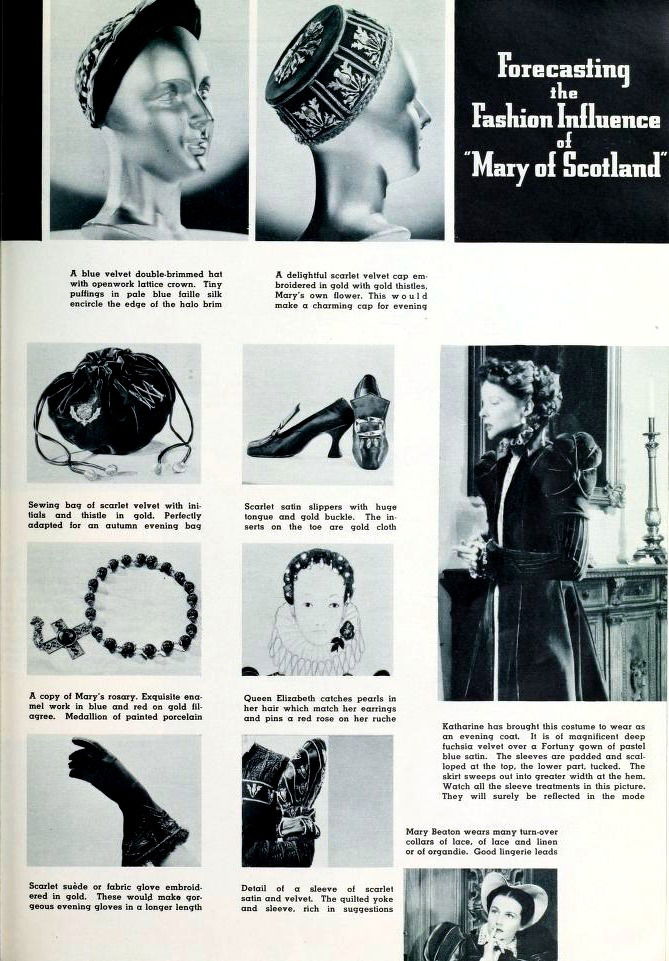
"Courtesy of the Media History Digital Library"
The newspaper article entitled "Forecasting the Fashion Influence of 'Mary of Scotland'" features a range of accessories and clothing inspired by Mary of Scotland, with detailed descriptions of each piece. Here is a summary of the main elements described in the article:
- A blue velvet double-brimmed hat with an open grid crown and small light blue faille silk puffs surrounding the brim edge.
- A delightful scarlet velvet hat embroidered in gold with golden thistles, Mary's symbolic flower. This hat would be perfect for an elegant evening.
- A scarlet velvet sewing bag with gold initials and thistle, ideal as an autumn evening bag.
- Scarlet satin shoes with a large tongue and golden buckle, with gold fabric inserts on the toe.
- A copy of Mary's rosary, with exquisite enamel work in blue and red on gilt filigree and a painted porcelain medallion.
- Queen Elizabeth wears pearls in her hair that match her earrings and a red rose pinned to her ruffle.
- Suede and scarlet fabric gloves embroidered in gold, perfect as evening gloves in a longer length.
- Detail of a sleeve in satin and scarlet velvet, with a quilted yoke and sleeve, full of suggestions.
- Katharine brought this costume to wear as an evening coat. It's deep fuchsia velvet over a pastel blue satin Fortuny dress. The sleeves are padded and fixed at the top, the lower part is folded. The skirt widens towards the hem.
- Mary Beaton wears many turn-up collars made of lace, lace and linen or organza. Good underwear.
The article is interesting because it shows how the fashion and accessories of the time were influenced by historical figures such as Mary of Scotland, offering a detailed look at specific styles and trends.
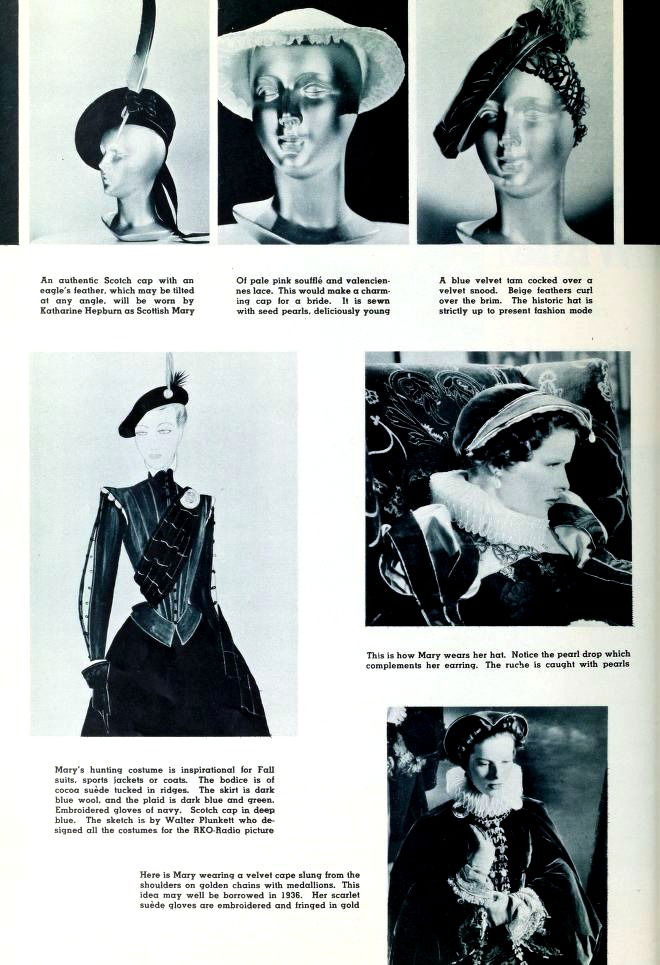
"Courtesy of the Media History Digital Library"
The page includes detailed descriptions of each element, highlighting the materials, design, and context in which they are worn. The descriptions provide information about the history of fashion and costume design, making it interesting for those studying fashion, history, or theater.
- "An authentic Scottish hat with an eagle feather, which can be tilted at any angle, will be worn by Katharine Hepburn as Mary of Scotland."
- "Of pale pink soufflé and Valenciennes lace. This would make a lovely hat for a bride. It is sewn with seed beads, deliciously young."
- "A blue velvet tam tilted on a velvet net. Beige feathers curl up at the edge. The historical hat is strictly in current fashion."
- "Mary's hunting costume is an inspiration for autumn dresses, sports jackets or coats. The bodice is made of pleated quilted suede. The skirt is dark blue wool, and the plaid is dark blue and green. Gloves embroidered in navy blue. Plaid hat in dark blue. The design is by Walter Plunkett who designed all the costumes for the film RKO-Radio."
- "This is how Mary wears her hat. Notice the pearl drop that completes her earring. The ruche is captured with pearls."
- "Here is Mary wearing a velvet cloak hanging from her shoulders on gold chains with medallions. This idea can be well borrowed in 1936. His scarlet suede gloves are embroidered and fringed in gold."
The 1936 film "Mary of Scotland" not only captivated audiences with its dramatic storytelling and memorable performances, but it also had a lasting impact on fashion. Thanks to the talent of great costume designers such as Walter Plunkett, historical clothes have been brought back to life with a precision and elegance that inspired the trends of the time. The newspaper pages of the time show how accessories and clothing inspired by the costumes of the film became popular, showing that the fashion of the past can make a comeback thanks to the cinematic influence. This phenomenon highlights the power of cinema in preserving and reinterpreting the history of fashion, making styles and trends from past eras accessible and current. The film proved that even historical tragedies can be incredibly chic. Mary Stuart may have lost her kingdom, but thanks to Walter Plunkett, she gained an eternity of influence on fashion. And with Joseff of Hollywood's jewels, every scene was an explosion of luxury, making the film not only a historical drama, but also a fashion show.
In conclusion, "Mary of Scotland" was more than just a movie; It was a journey through history and fashion, where every dress and accessory told a story of power, passion and, yes, a bit of tragedy.
THE GORGEOUS HUSSY
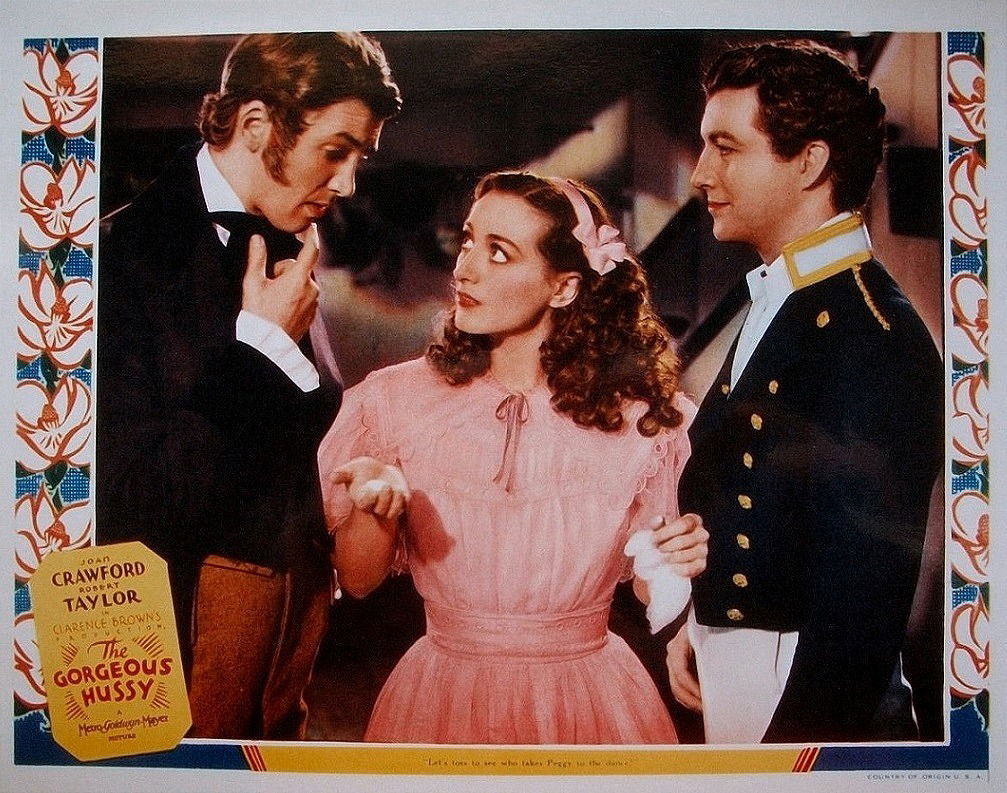
Lobby Card (1936)
"The Gorgeous Hussy" is a 1936 American drama film directed by Clarence Brown, based on the novel of the same name by Samuel Hopkins Adams. The film tells the life of Peggy O'Neal, a charming and influential woman in nineteenth-century Washington, who becomes President Andrew Jackson's confidant and seducer of powerful men. Set in 1823 in Washington D.C., the film follows Peggy O'Neal, the daughter of an innkeeper, who conquers numerous influential men, including politicians and soldiers, with her charm. Peggy is secretly in love with Virginia Senator John Randolph, but her attentions are disputed by other men, including "Beau" Timberlake, whom she eventually marries. The story unfolds against the backdrop of American politics at the time, with Peggy becoming a central figure in the life of President Andrew Jackson.
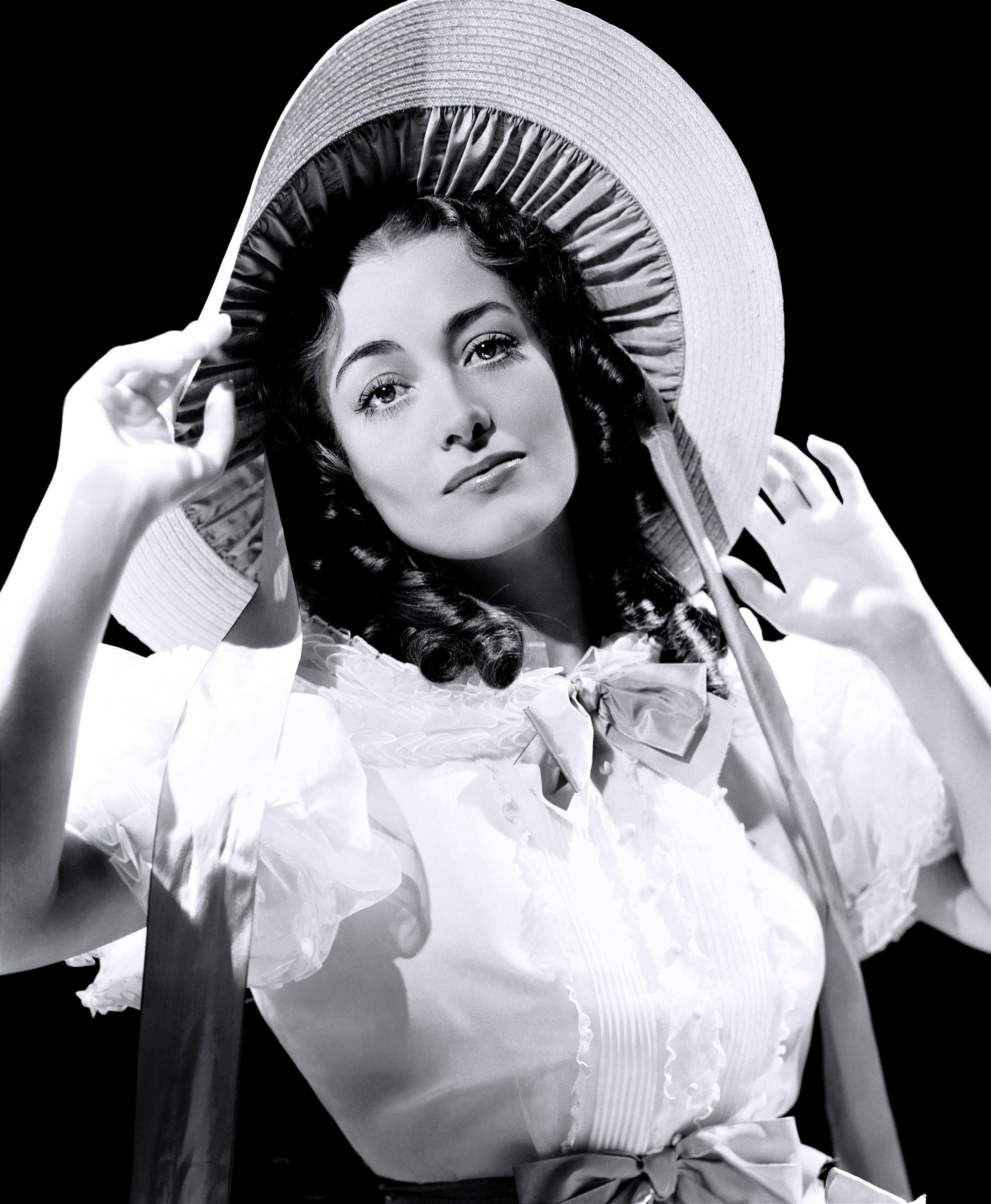
"Courtesy of the site doctormacro.com"
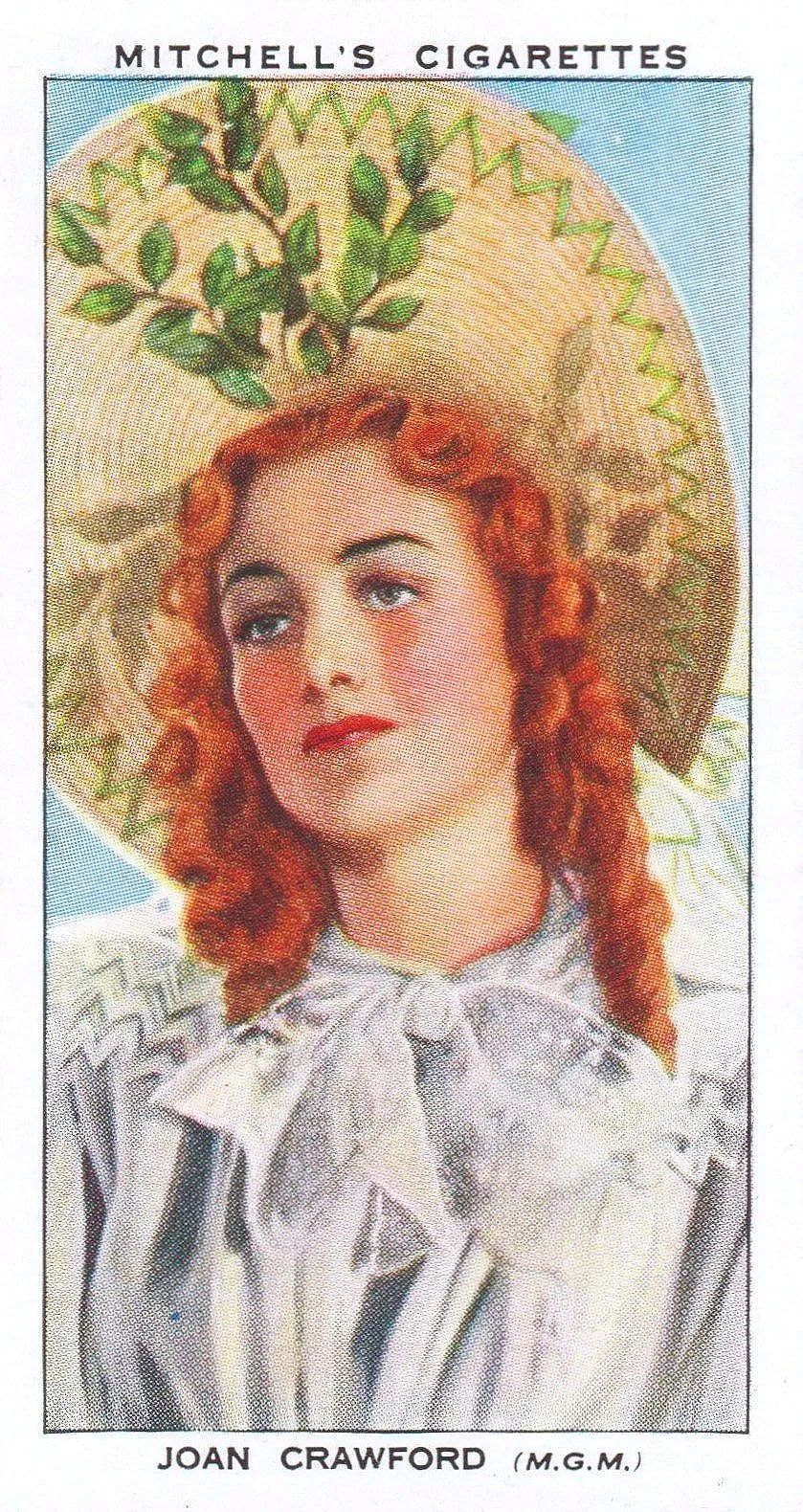
Card n.8 - STARS OF SCREEN & HISTORY
STEPHEN MITCHELL & SON (1939)
(personal collection)
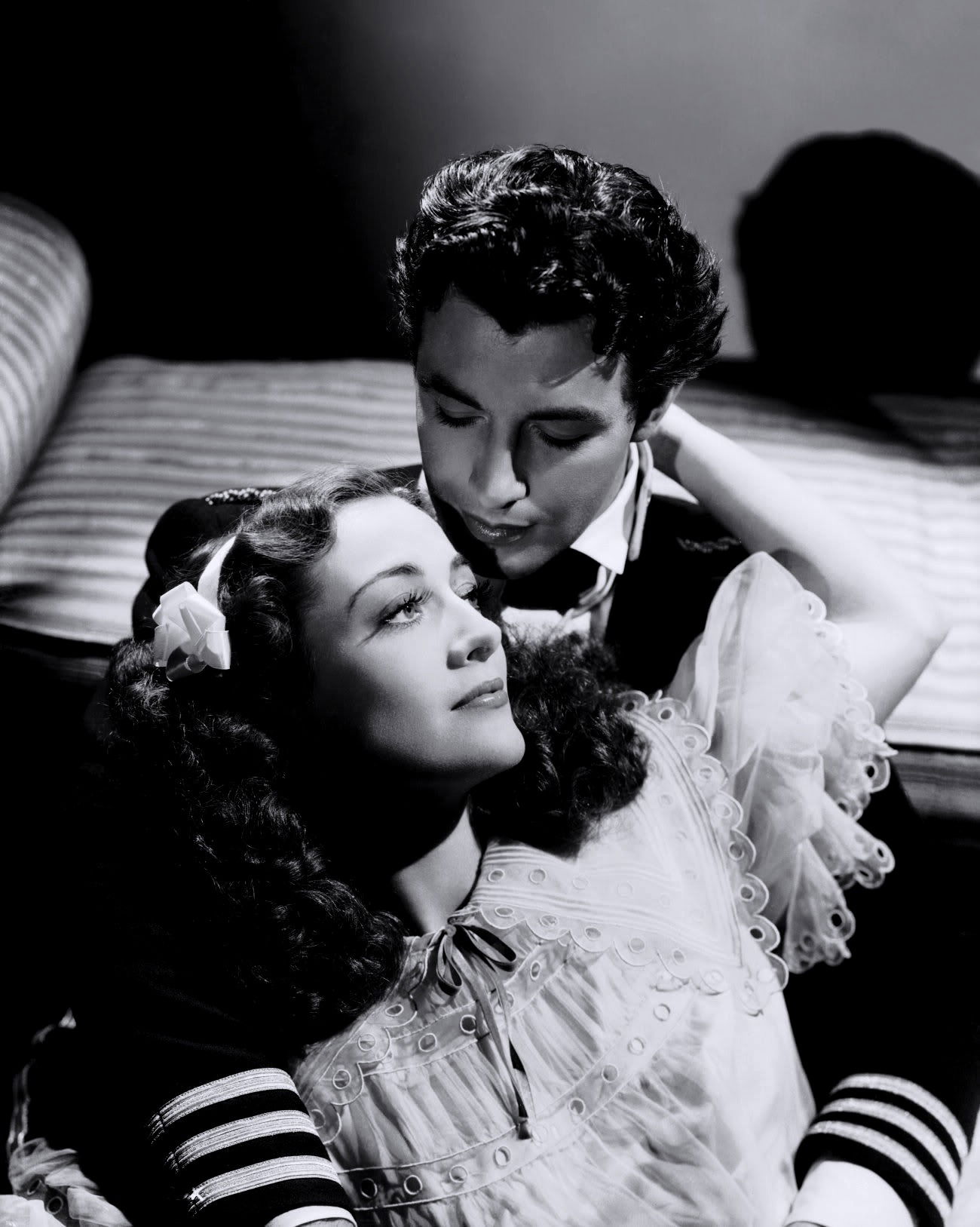
"Courtesy of the site doctormacro.com"
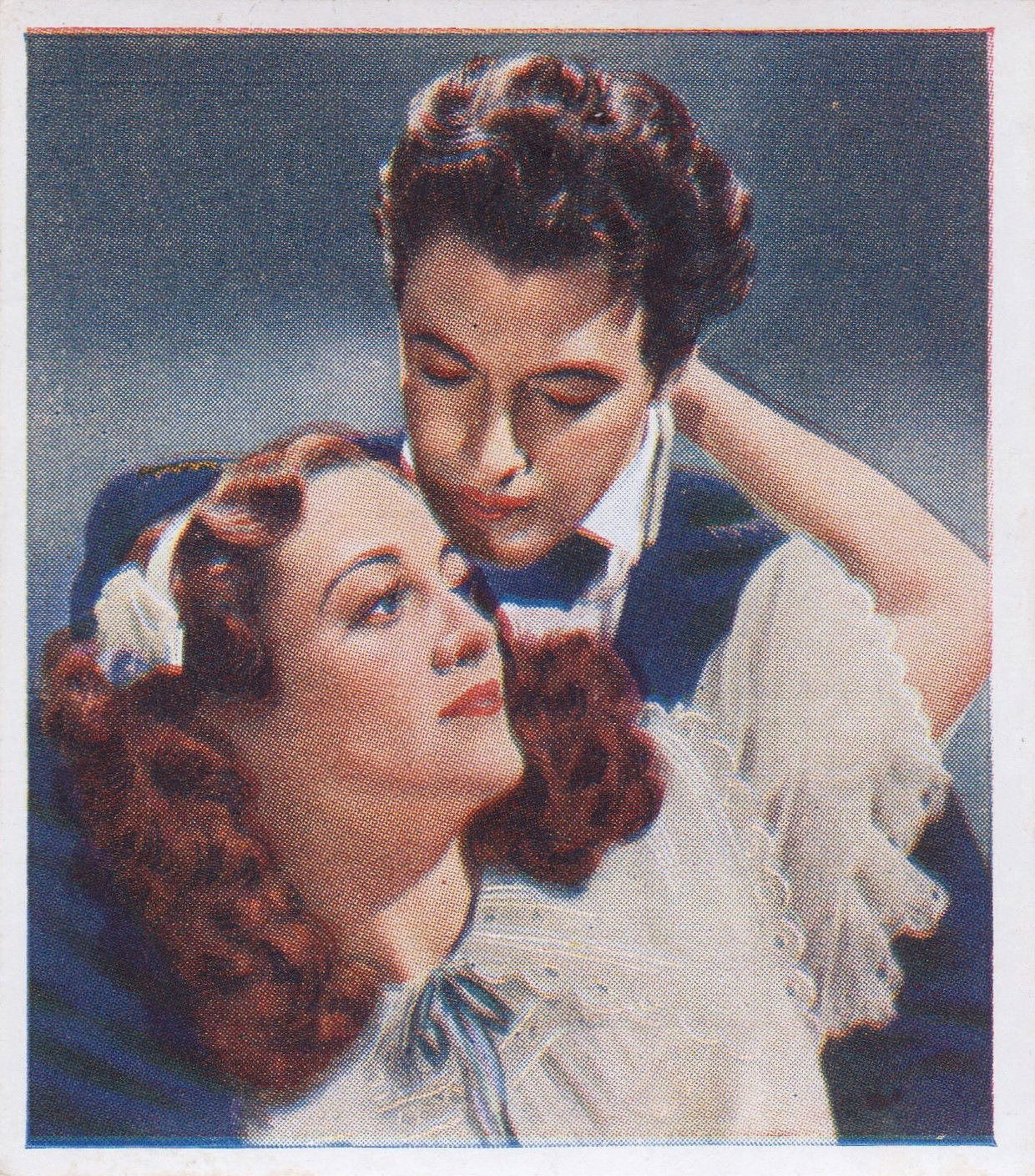
Card n.13 - FAMOUS LOVE SCENES
GODFREY PHILLIPS Ltd. (1939)
(personal collection)
The film boasts an all-star cast, including Joan Crawford as Peggy O'Neal, Robert Taylor as Bow Timberlake, Lionel Barrymore as Andrew Jackson, Franchot Tone as John Eaton, and James Stewart as 'Rowdy' Dow.
The costumes of the film, designed by the famous costume designer Adrian, are one of the most fascinating and memorable aspects of the film. Adrian, known for his innovative and sophisticated work, created clothes that perfectly reflect the style and elegance of the nineteenth century.
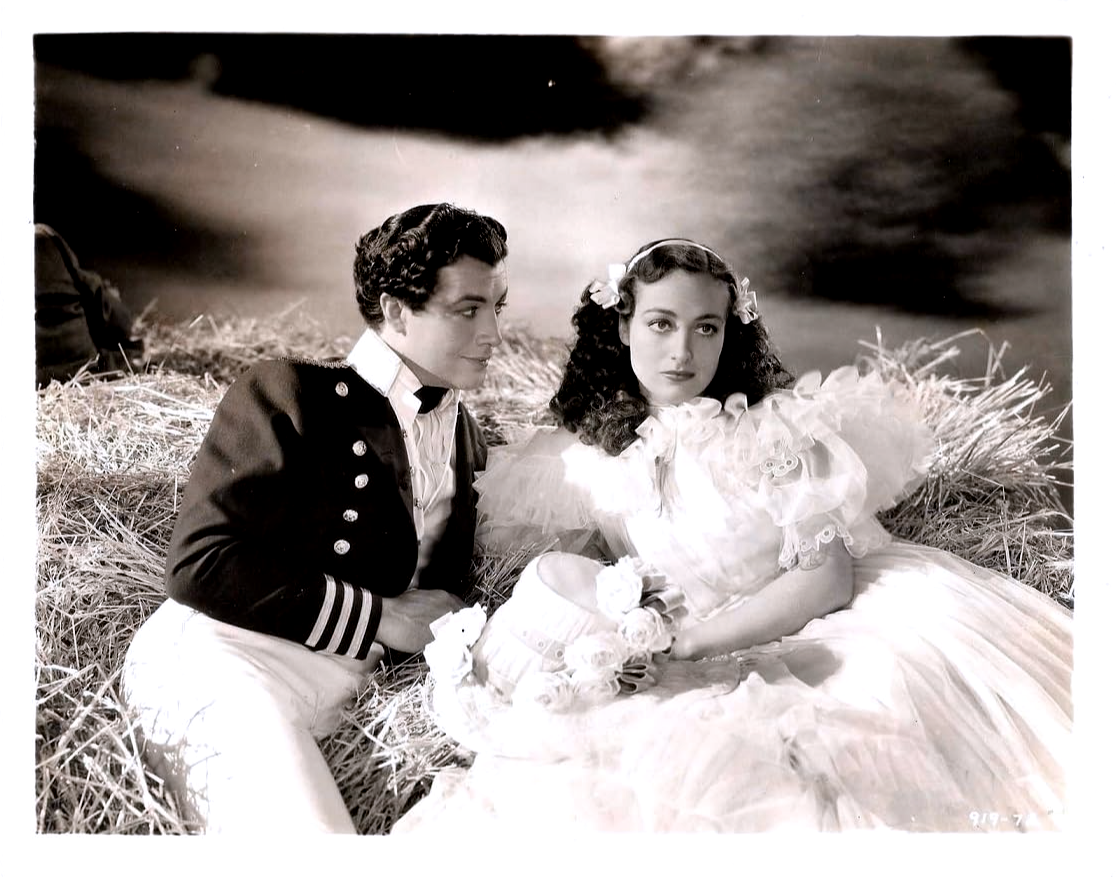
"Courtesy of the site IMBD.com"
Joan wears a white dress with a taffeta hoop skirt and black velvet bows, inspired by the fashion of the 1840s.
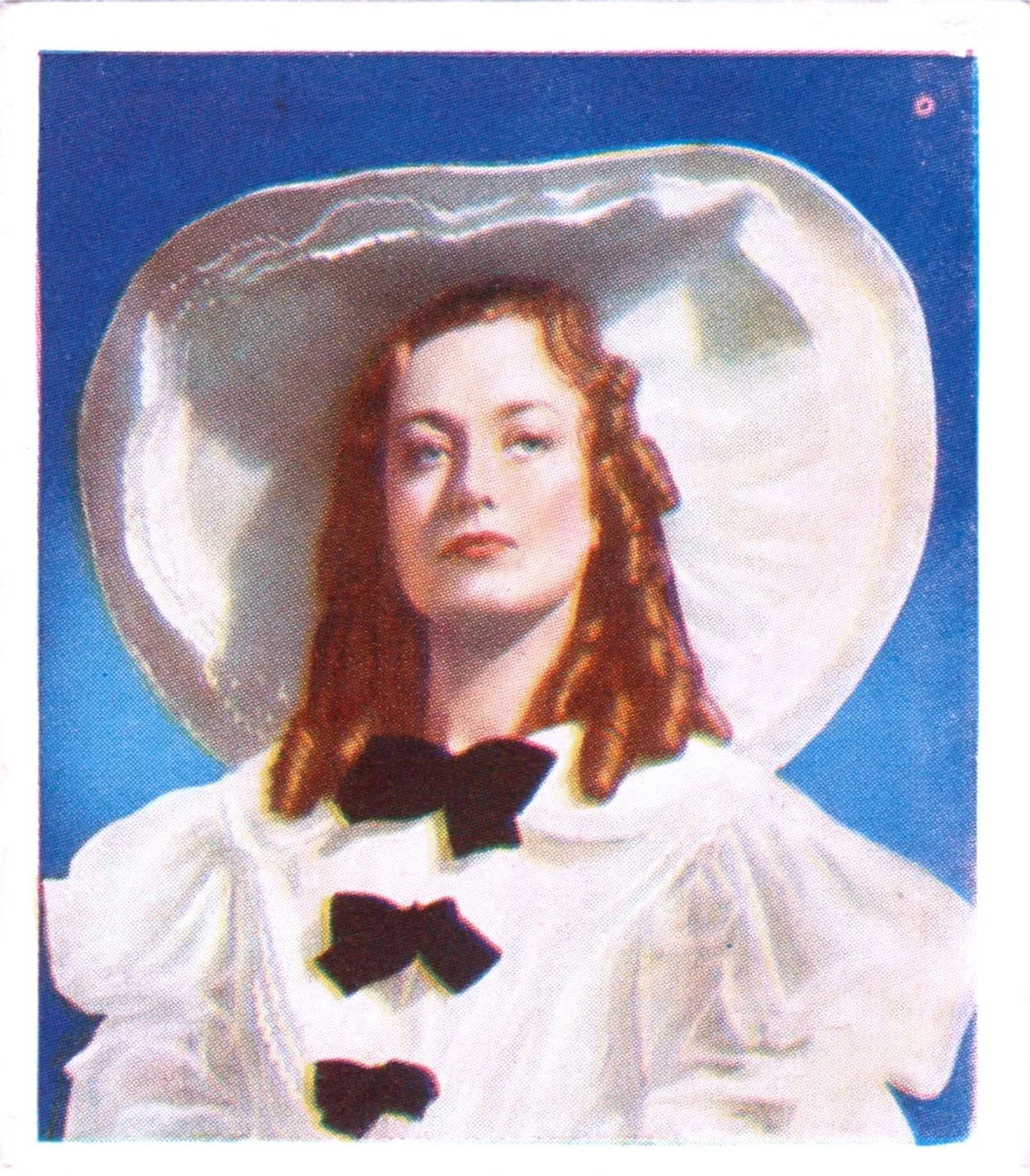
Card n.8 - CHARACTERS COME TO LIFE
GODFREY PHILLIPS LTD (1938)
(personal collection)
The costumes worn by Joan Crawford feature rich fabrics such as silk and velvet, with intricate details such as embroidery and lace. The dresses are designed to enhance the female figure, with tight corsets and wide skirts that reflect the fashion of the time. The men's clothes, worn by actors such as Robert Taylor and Lionel Barrymore, are equally detailed and accurate. Costumes include dress jackets, fitted pants, and accessories such as hats and ties, which complement the sophisticated look of the characters. Accessories play a vital role in completing costumes. Hats, gloves, jewelry, and shoes are carefully chosen to reflect the era and add authenticity to the characters. Adrian has been able to capture the essence of the historical period through his costumes, helping to create an authentic and visually fascinating atmosphere.

Scene from the Movie
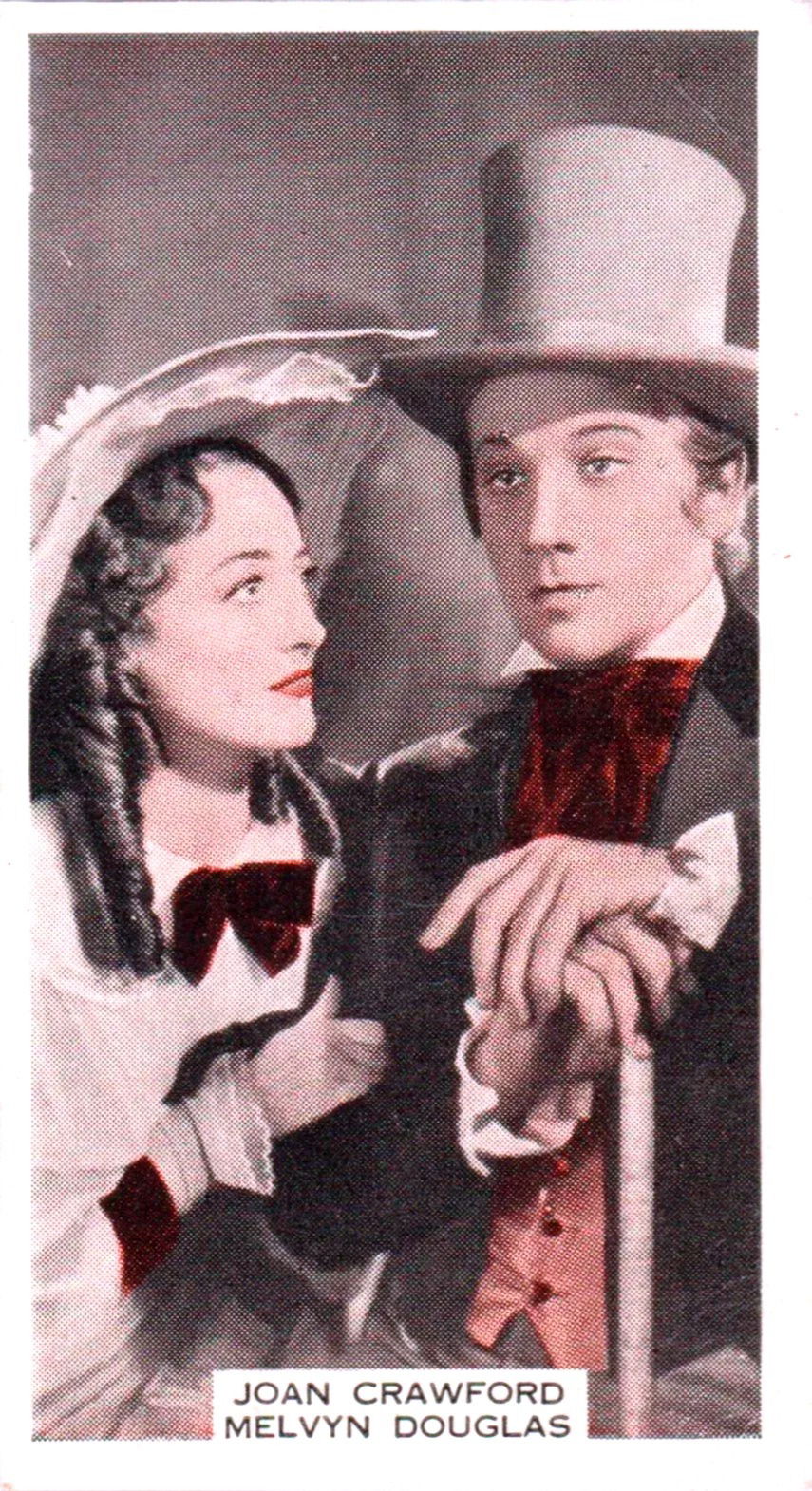
Card n.10 - FILM FAVOURITES 3rd Series
A. AND M. WIX LONDON (1939)
(personal collection)
Costumes not only enhance the beauty and personality of the characters, but also help to tell the story and immerse viewers in the era being depicted.
"The Gorgeous Hussy" is a perfect example of how cinema can influence fashion and bring back styles and trends from the past. Thanks to Adrian's talent, the historical clothes have been reinterpreted with a precision and elegance that inspired the trends of the time. This phenomenon highlights the power of cinema in preserving and reinterpreting the history of fashion, making styles and trends from past eras accessible and current. Not only did the film captivate audiences with its dramatic storytelling and memorable performances, but it also had a lasting impact on fashion, proving that the fashion of the past can make a comeback through cinematic influence.
"The Gorgeous Hussy" is not just a movie; It was a crash course in fashion history. Thanks to Adrian, the trends of the nineteenth century are back in vogue as if they had just come out of the catwalks of Paris.
The film proved that fashion can be a journey through time, and that clothes are not only made to cover up, but also to tell stories, fascinate and make viewers' heads spin.
In conclusion, "The Gorgeous Hussy" is a lesson in style, power and intrigue, with outfits that would make anyone want to live in the era of the bodice and wide skirts. Adrian has shown that fashion can be both a weapon and a work of art, and this film is living proof of that.
THE GREAT ZIEGFELD
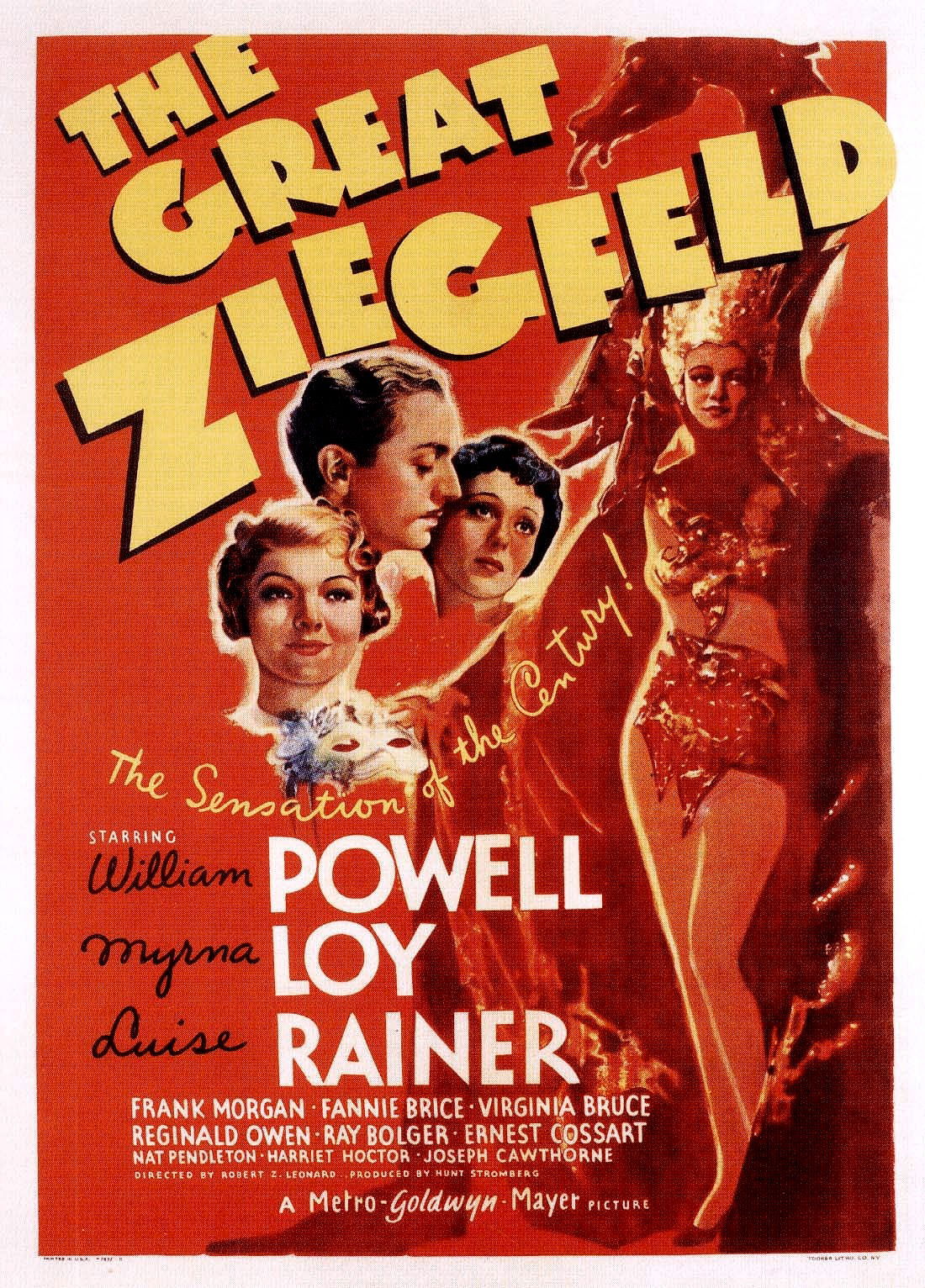
Movie Poster
The Great Ziegfeld of 1936, directed by Robert Z. Leonard is a film that made film history not only for its narration of the life of the famous theater impresario Florenz Ziegfeld Jr., but also for the exceptional costume work, which helped make the film a visual masterpiece of its era.
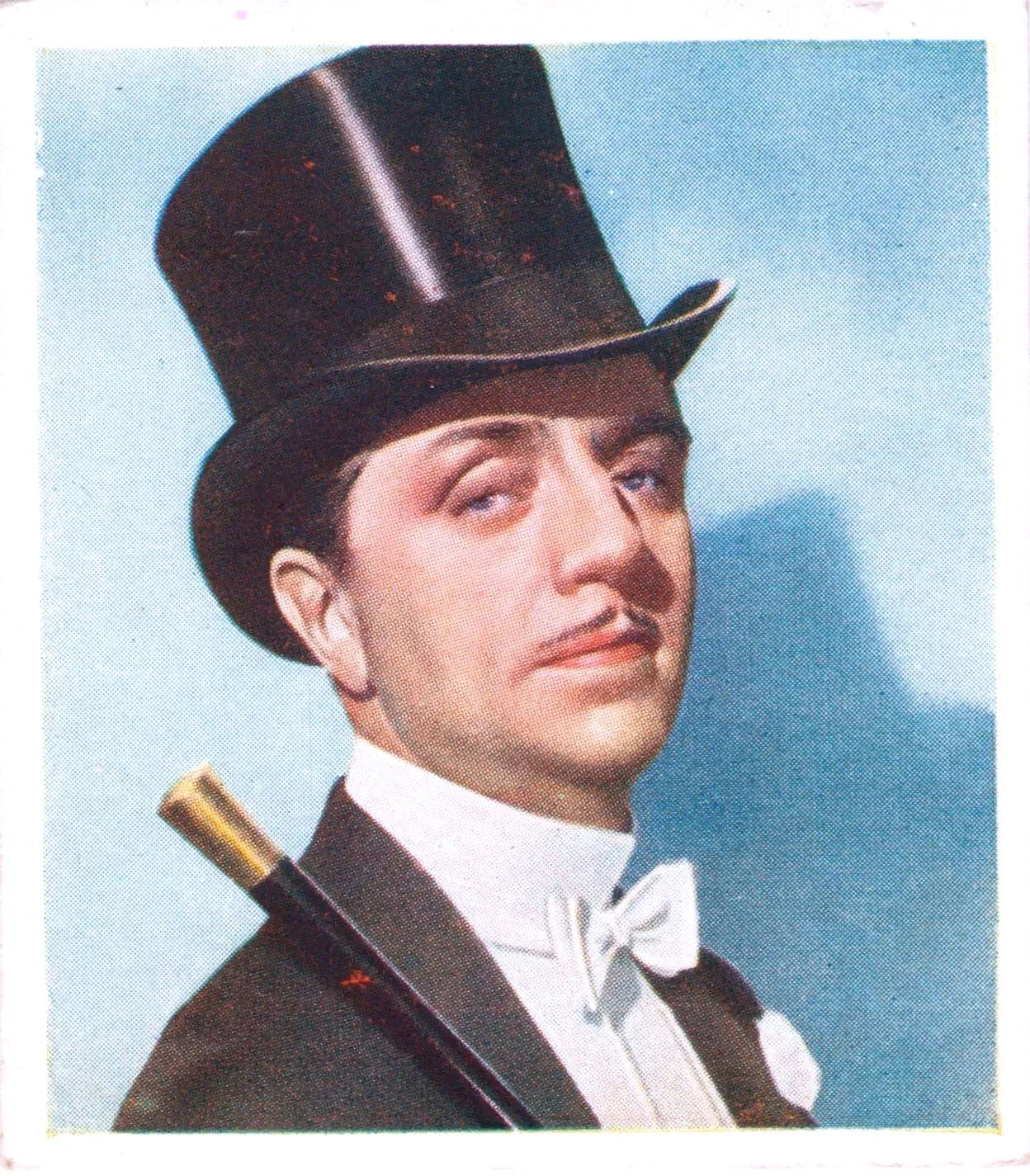
William Powell plays Florenz Ziegfeld Jr., the famous theater impresario. (The Great Ziegfeld)
Card n.28 - CHARACTERS COME TO LIFE
GODFREY PHILLIPS LTD (1938)
(personal collection)
The cast of the film is equally remarkable, with William Powell as Florenz Ziegfeld Jr., Myrna Loy as Billie Burke, Ziegfeld's second wife, and Luise Rainer playing Anna Held, one of Ziegfeld's first stars and his first wife. Luise Rainer won the Academy Award for Best Actress for this role. Other cast members include Frank Morgan as Billings, a rival of Ziegfeld, Fanny Brice as herself, Virginia Bruce as Audrey Dane, Ray Bolger as himself, Reginald Owen as Sampston, Nat Pendleton as Sandow, the strongest man in the world, Ernest Cossart as Sidney, and Joseph Cawthorn as Dr. Ziegfeld, Florenz Ziegfeld Jr.'s father
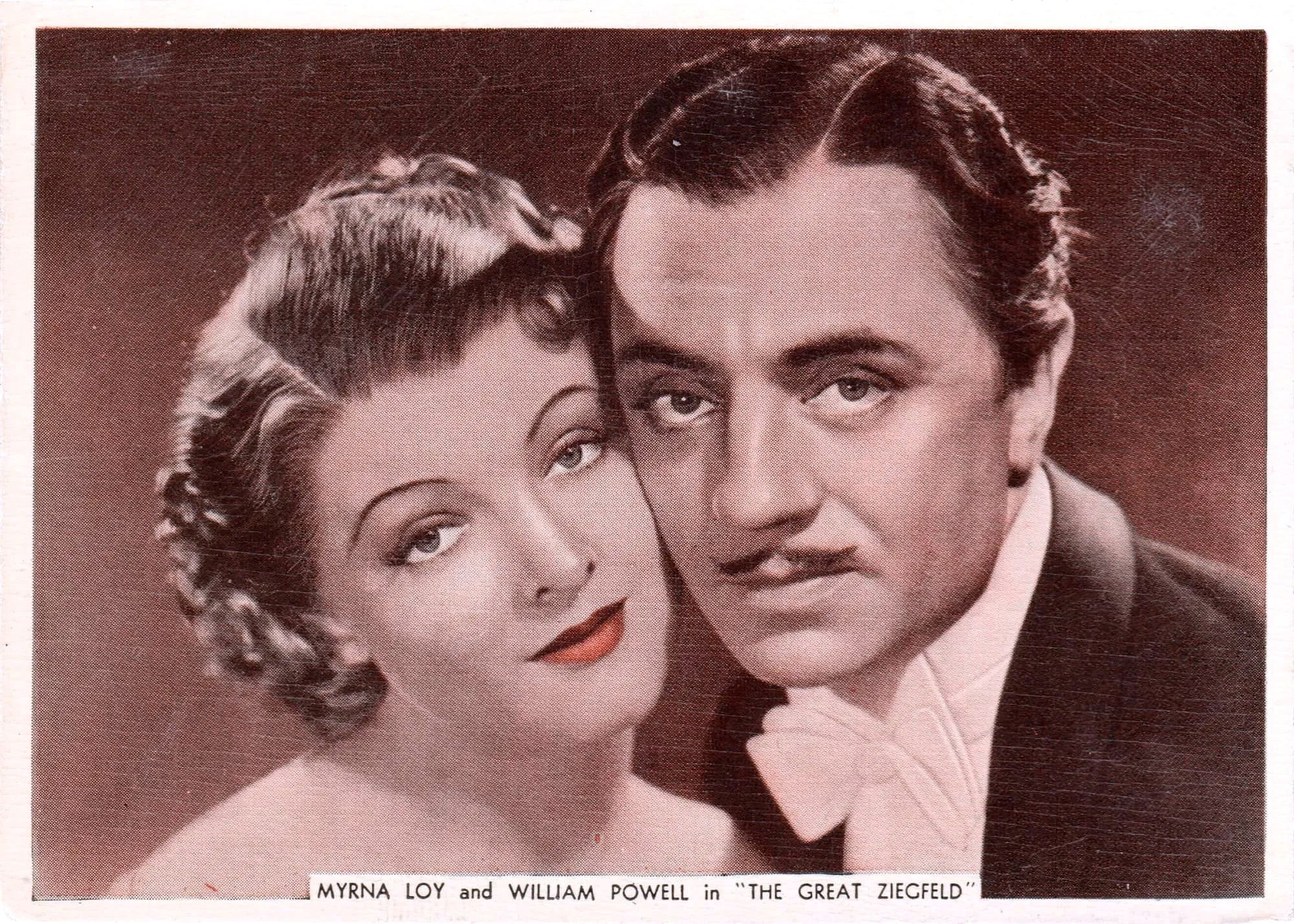
William Powell and Myrna Loy as Billie Burke, Ziegfeld's second wife.
Card n.11 - FROM SCREEN and STAGE
ARDATH TOBACCO CO Ltd. (1936)
(personal collection)
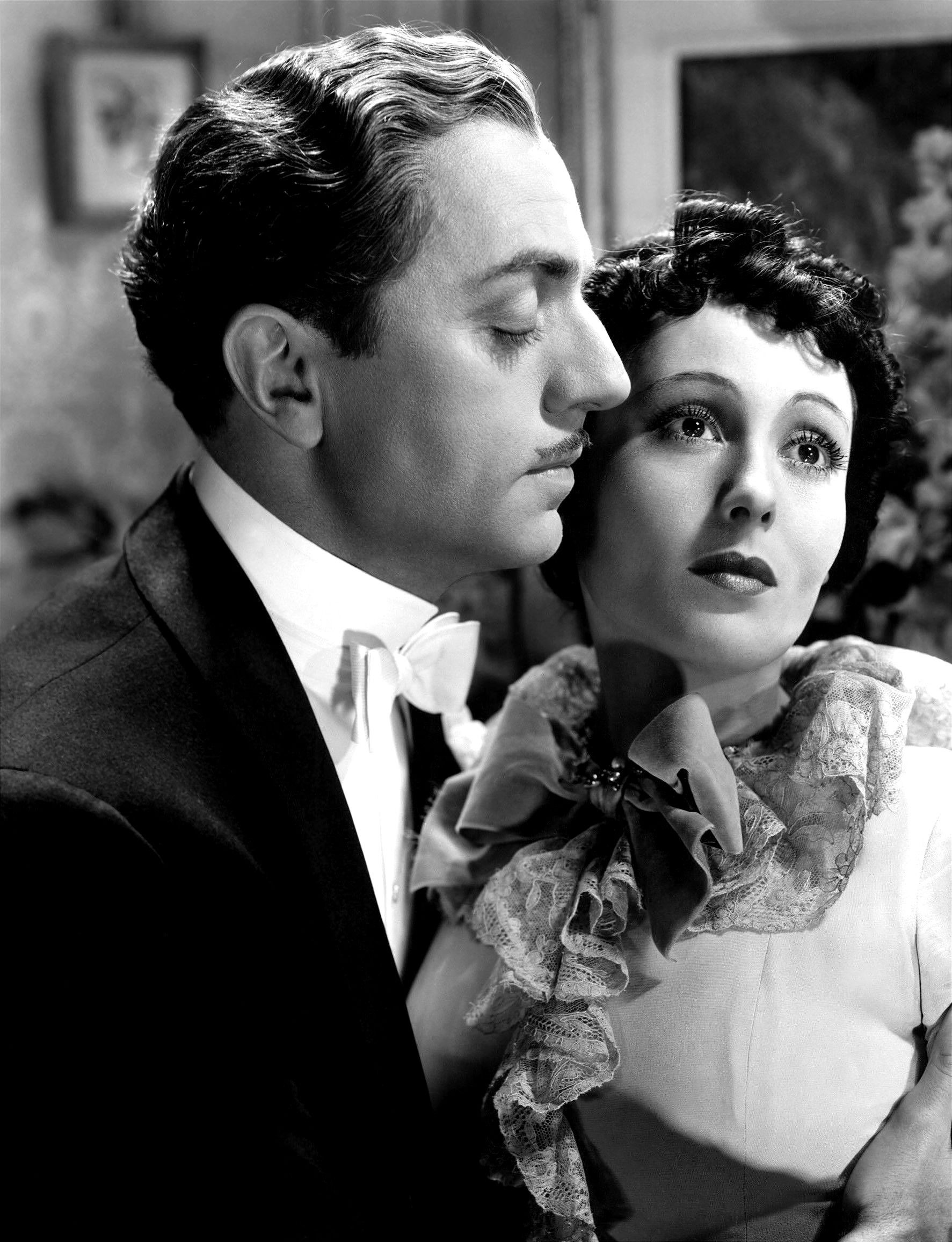
"Courtesy of the site doctormacro.com"
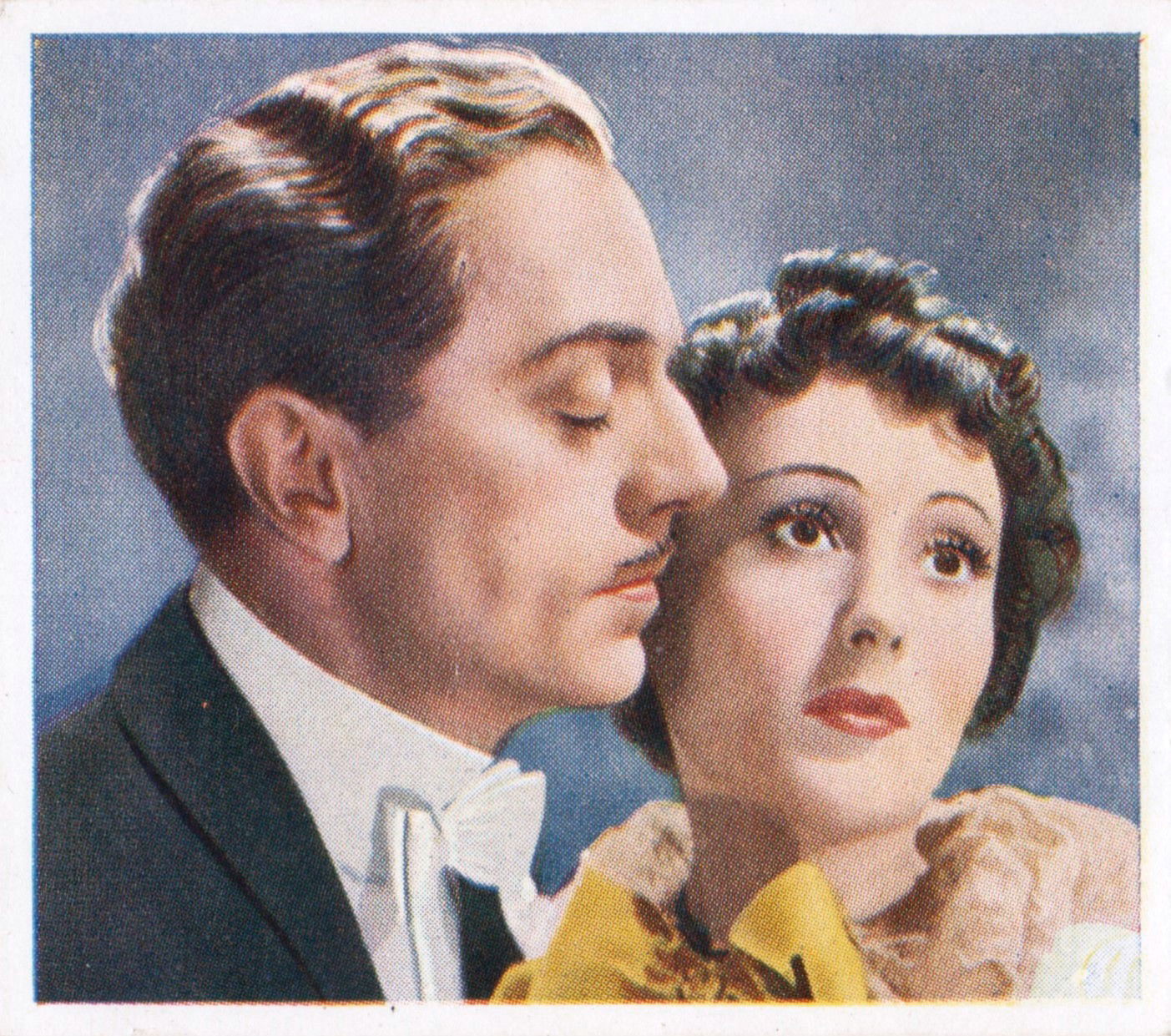
William Powell is Luise Rainer who plays Anna Held, one of Ziegfeld's first stars and his first wife.
Card n.15 - FAMOUS LOVE SCENES
GODFREY PHILLIPS Ltd. (1939)
(personal collection)
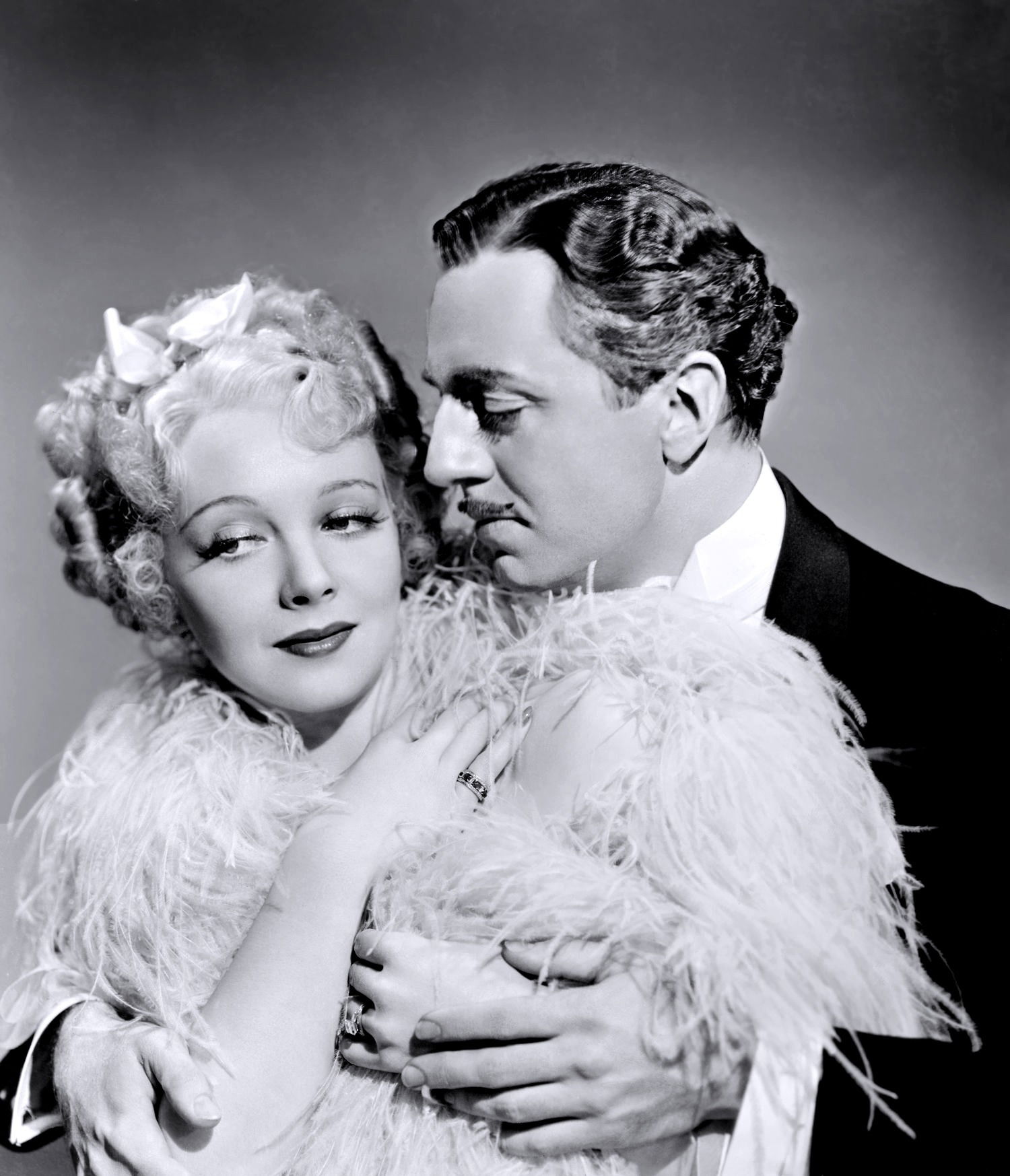
"Courtesy of the site doctormacro.com"
William Powell and Virginia Bruce as Audrey Dane, one of Ziegfeld's actresses.
At the heart of the film's visual marvels is the work of legendary costume designer Adrian, whose real name was Gilbert Adrian. Adrian is known for dressing some of the biggest movie stars, and with "The Great Ziegfeld" he brought to the screen the same opulence and fantasy that characterized the original Ziegfeld Follies shows. The costumes in the film were noted for their elaboration and beauty, with a focus on detail resulting in a visual experience that was unprecedented for its time.
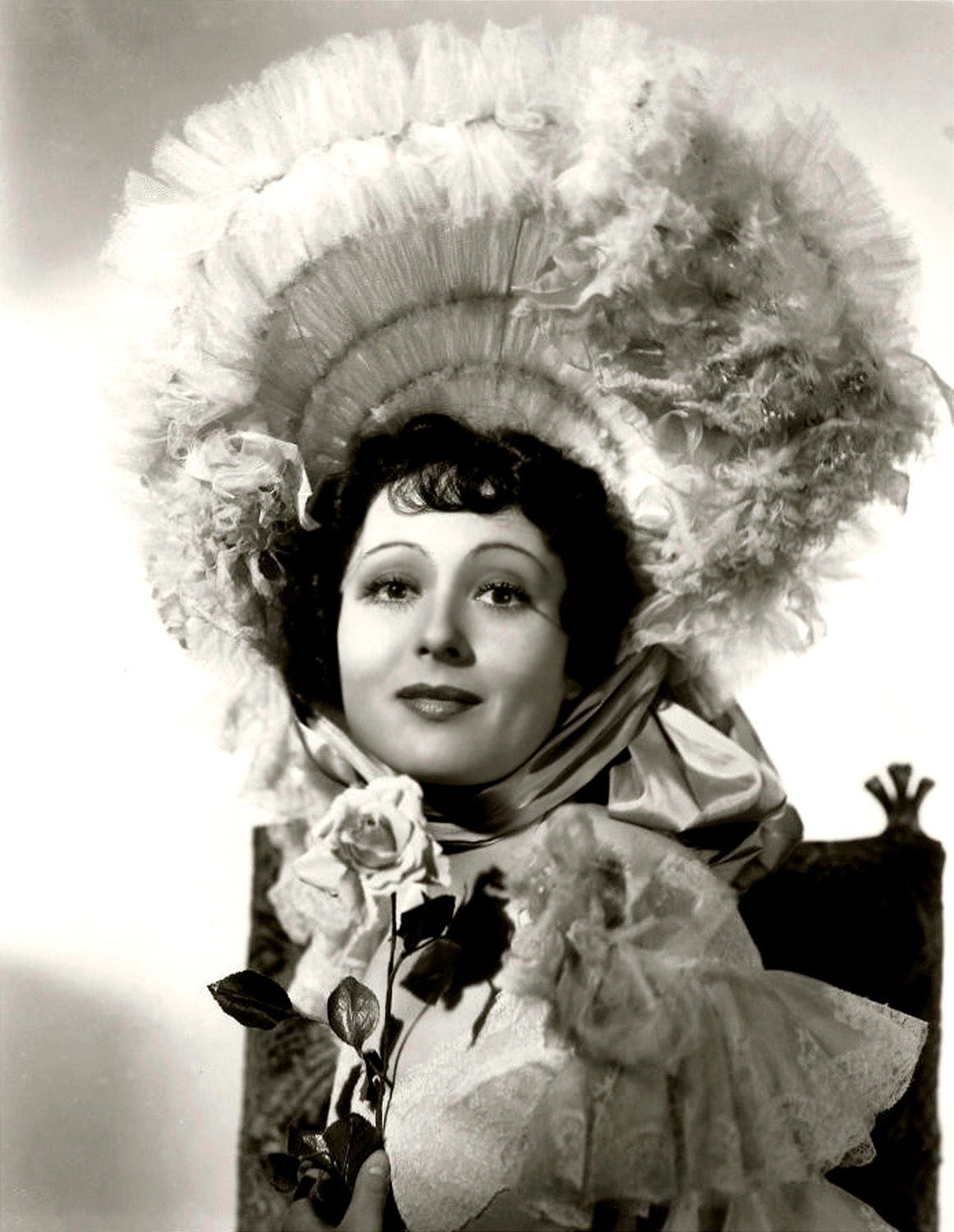
"Courtesy of the site doctormacro.com"
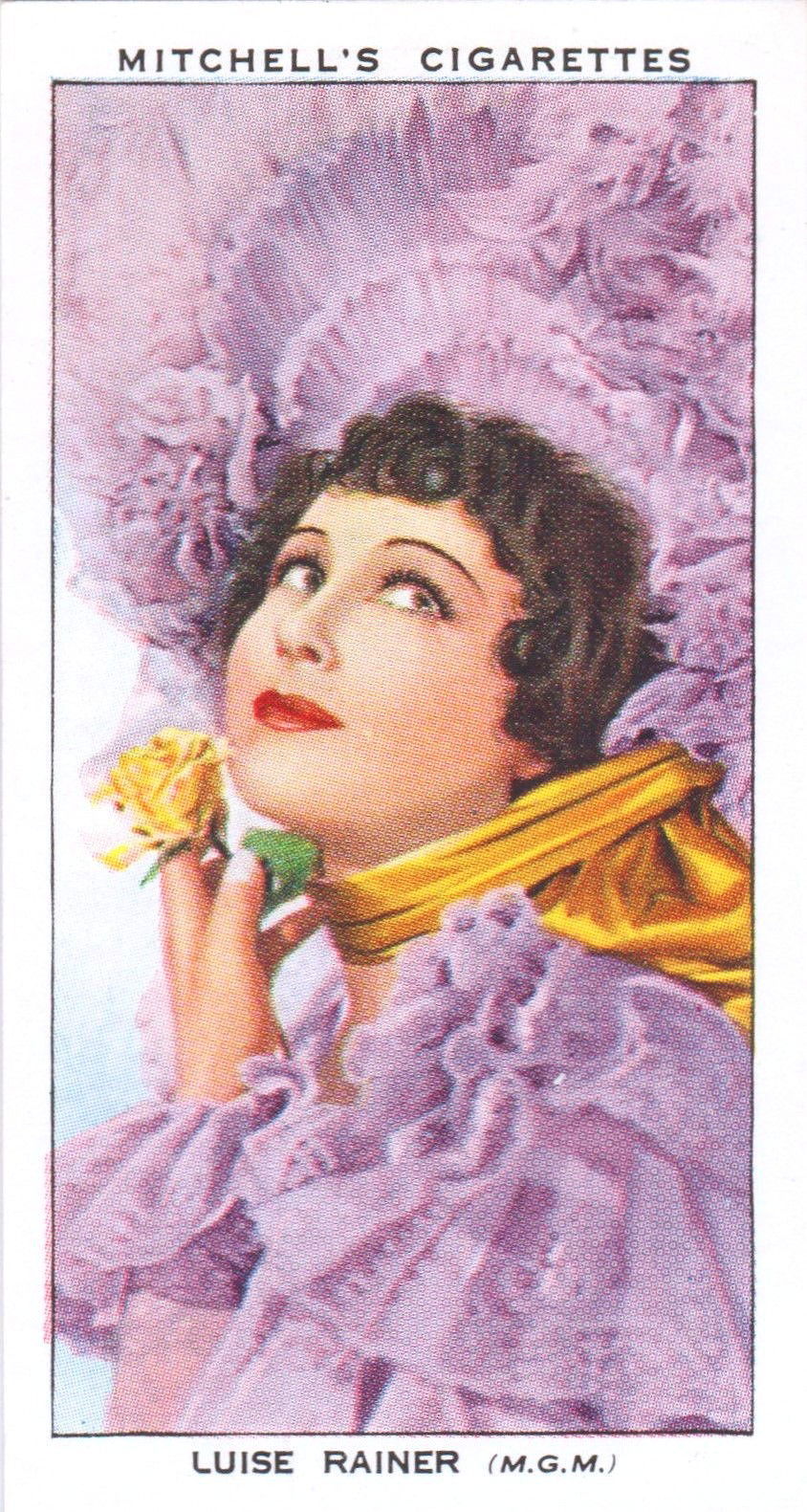
Card n.23 - STARS OF SCREEN & HISTORY
STEPHEN MITCHELL & SON (1939)
(personal collection)
The Ziegfeld Girls, represented in the film, sport costumes that were true masterpieces of textile engineering. One of the most memorable costumes is the one described in some sources as being made entirely of glass beads, weighing a whopping 102 pounds, a stunning example of how aesthetics were placed above comfort to achieve the desired effect. This not only reflects the luxury and excess of Ziegfeld's productions but also Adrian's mastery of creating pieces that were both functional for dance and scenographic.
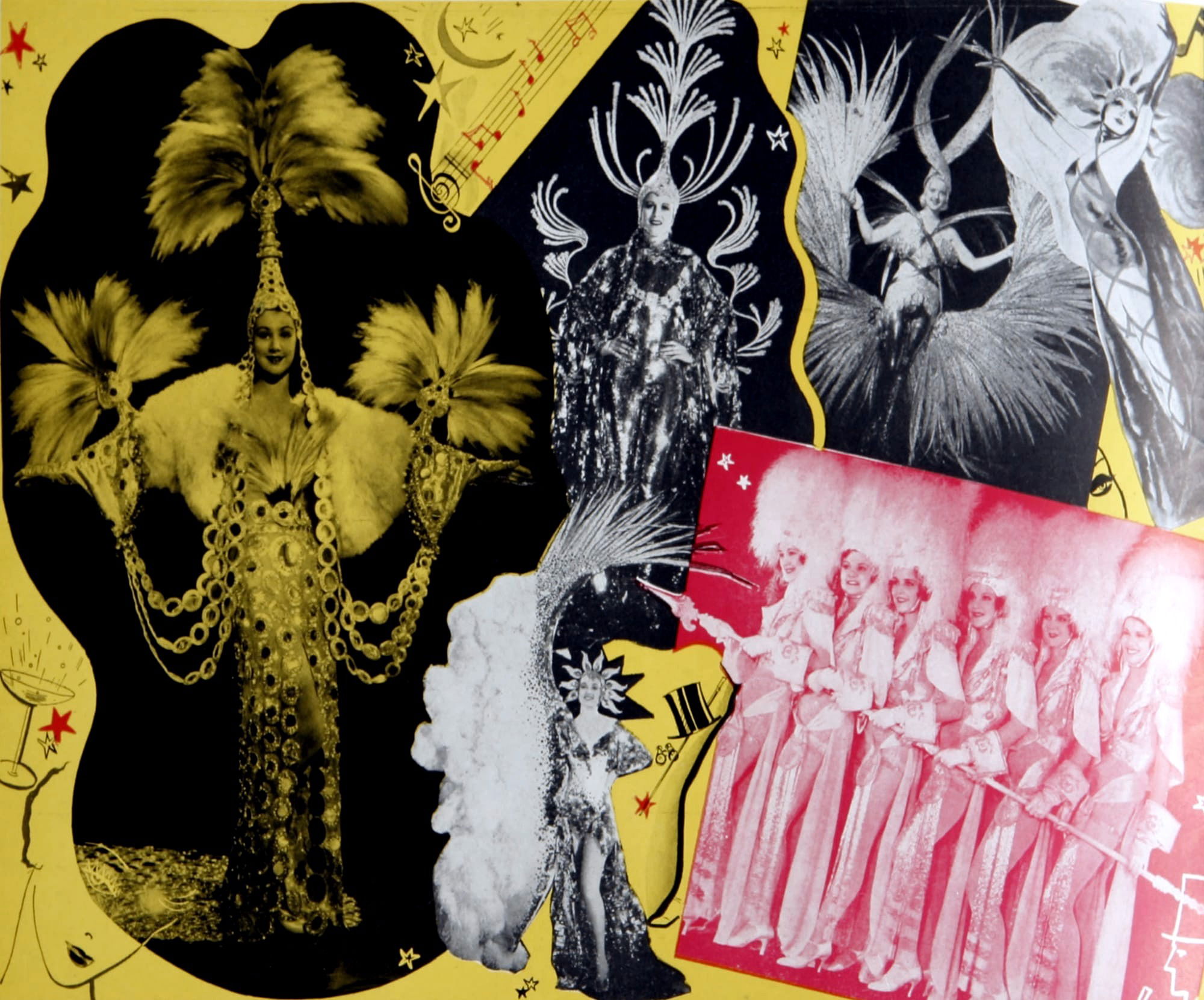
"Courtesy of the site doctormacro.com"
The costumes of "The Great Ziegfeld" were not only beautiful; they were also a reflection of the glamour and fantasy of the 1930s, a time when cinema served as an escape from the reality of the Great Depression. The film stands out for its ability to transport viewers to a world of glitz and beauty, offering a stark contrast to everyday life at the time.
Adrian's work on this film set new standards for costume design in cinema, influencing future generations of costume designers. She won three Academy Awards, including Best Picture, and although there was no specific costume category at the time, the influence of her work is indisputable.
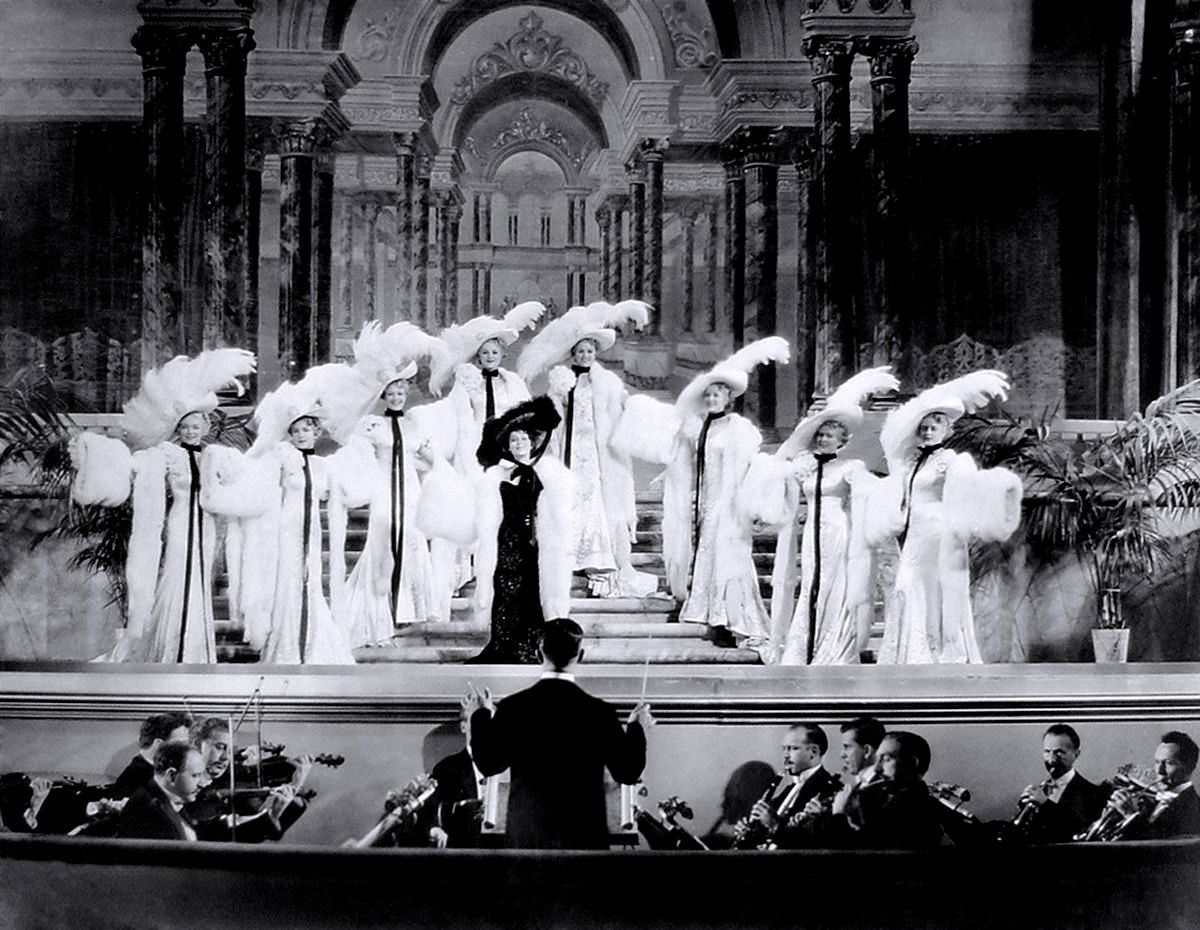
"Courtesy of the site doctormacro.com"
The attention to detail and the ability to create costumes that were not only appropriate for the historical period represented but also advanced in terms of design and innovation, cemented the role of costumes as a key element in cinematic storytelling.
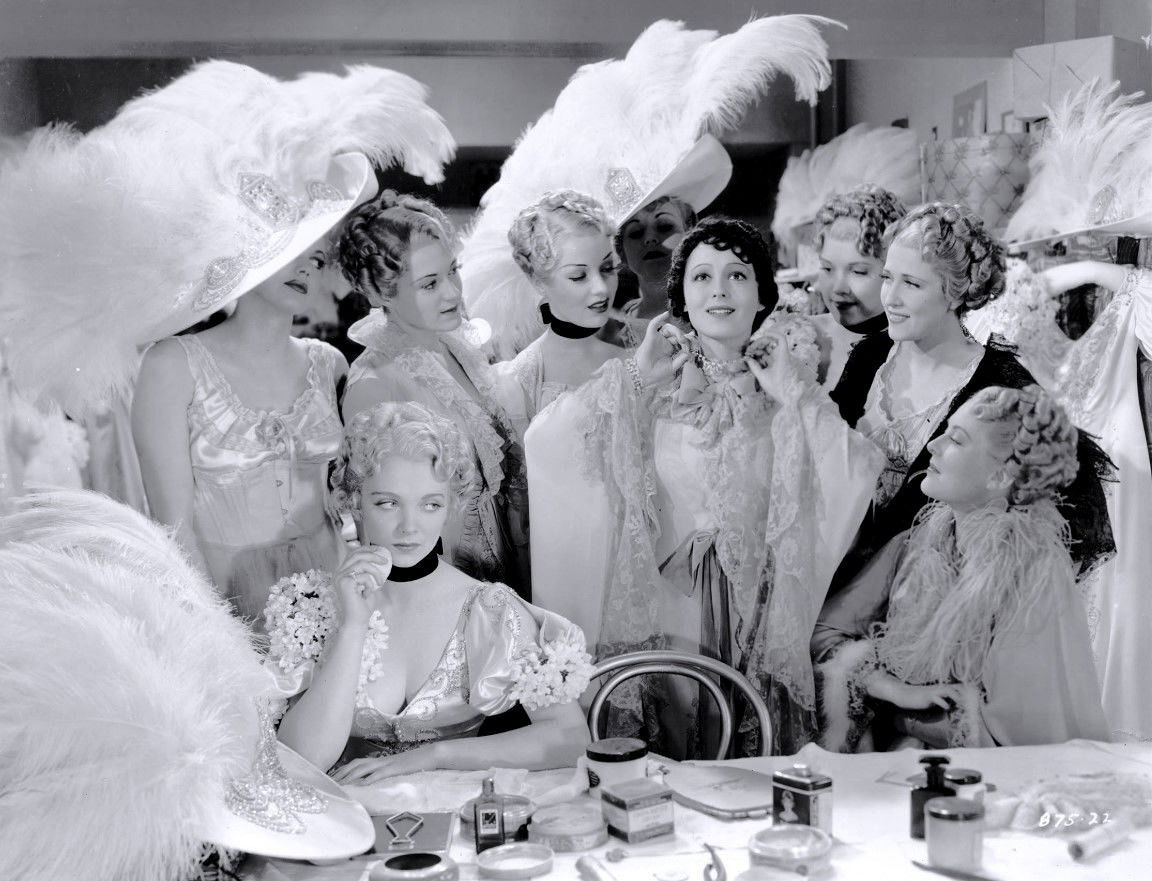
"Courtesy of the site IMBD.com"
"The Great Ziegfeld" remains a testament to the power of costumes in cinema, not only as fashion elements but as true visual storytellers that enhance the story and the character. Adrian, through this film, has shown that costumes can be characters in their own right, contributing significantly to the legacy of classic cinema.
In addition, the materials used in the costumes of "The Great Ziegfeld" were chosen with great care for their aesthetics and functionality. Silk and satin lent elegance and luxury, while glass beads and crystals added an incredible luminous effect under the spotlights. Ostrich feathers, used to create spectacular volumes, added movement and drama to the clothes. Gold and silver lamé represented luxury and opulence, while velvet offered a wealth of texture and depth of color. Silk chiffon, light and transparent, was perfect for the most ethereal and poetic moments.
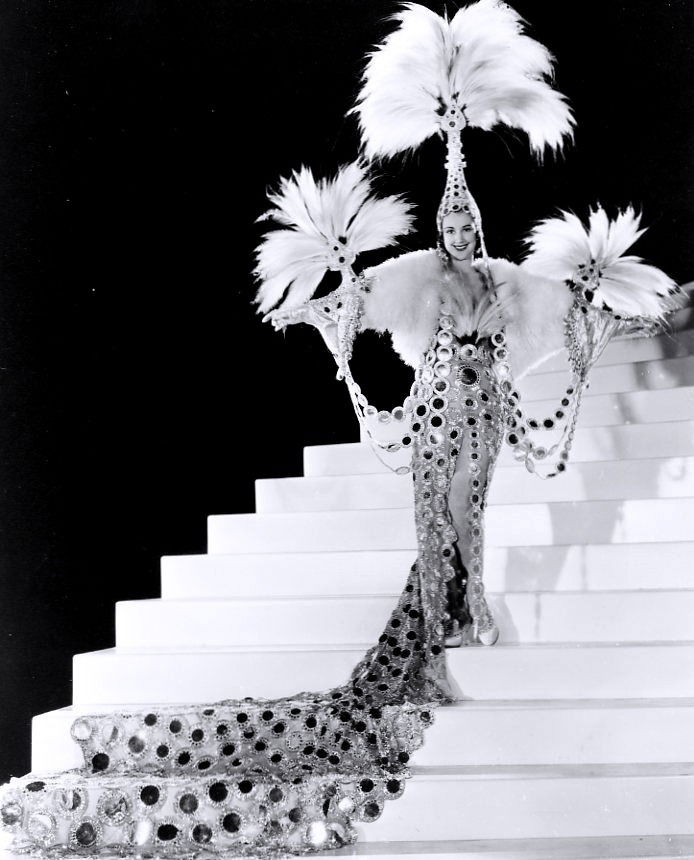
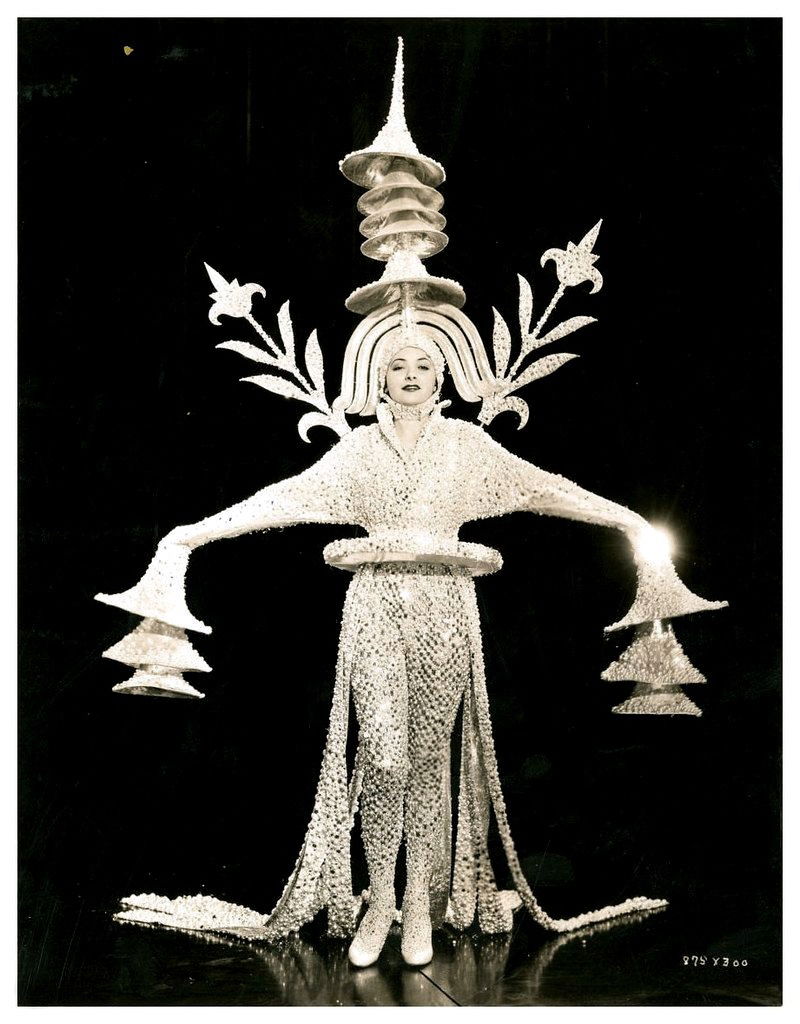
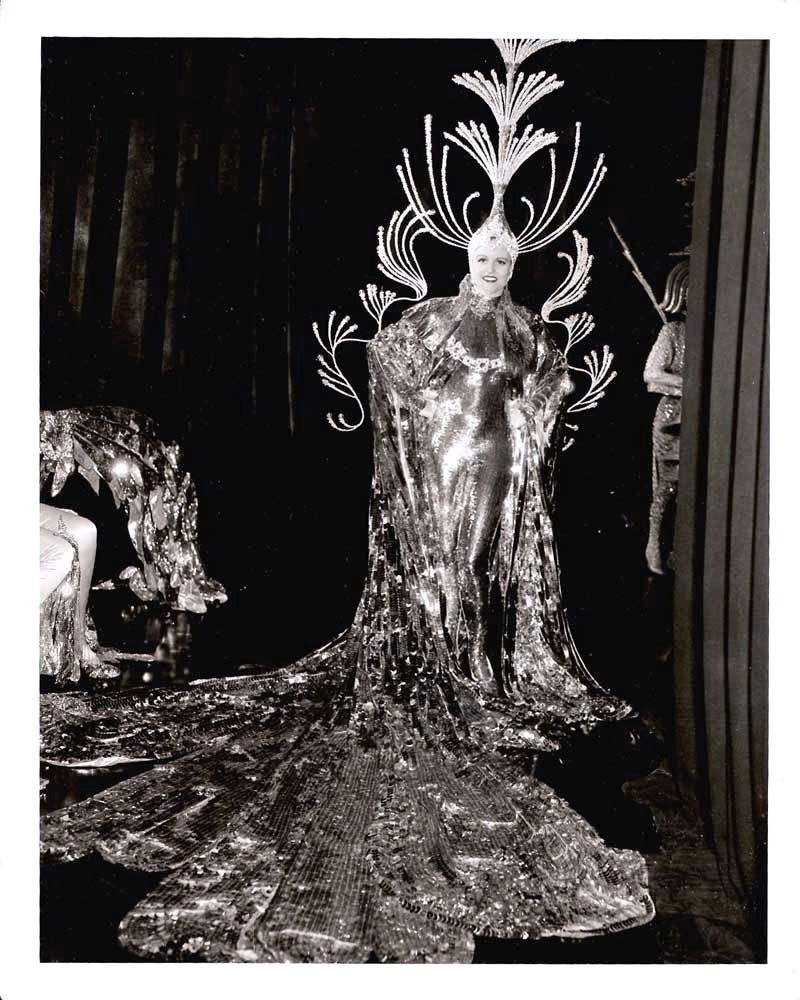

Each costume was the result of elaborate craftsmanship, with hand stitching and decoration applications. The materials were chosen not only for their beauty but also for how they reacted to light and movement, a combination that defined the style of the film. The craftsmanship and the choice of fabrics made the costumes not just simple clothes but real works of art, which helped make the film a masterpiece of classic cinema.
THE BRIDE WORE RED

Movie Poster (1937)
In the world of classic cinema, few films have been able to combine story and costume as harmoniously as "The Bride Wore Red" of 1937, directed by Dorothy Arzner and starring Joan Crawford, Franchot Tone and Robert Young.
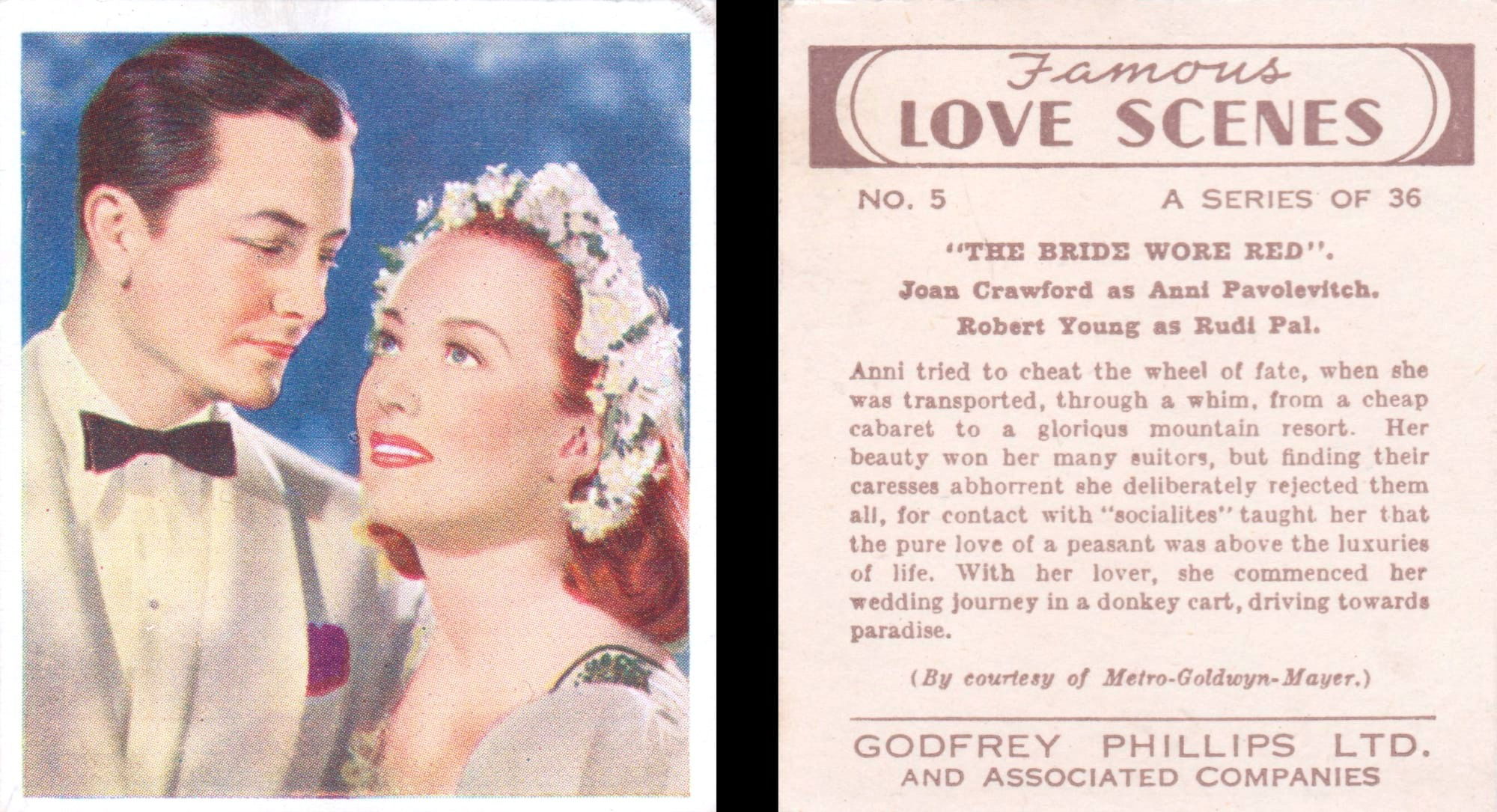
Card n.13 - FAMOUS LOVE SCENES
GODFREY PHILLIPS Ltd. (1939)
(personal collection)
This film, set in Europe between the two world wars, tells the story of a woman who, in order to escape her condition of poverty, passes herself off as a countess. The costumes, in particular, play a crucial role in transforming this narrative into a visual display of elegance and deception.
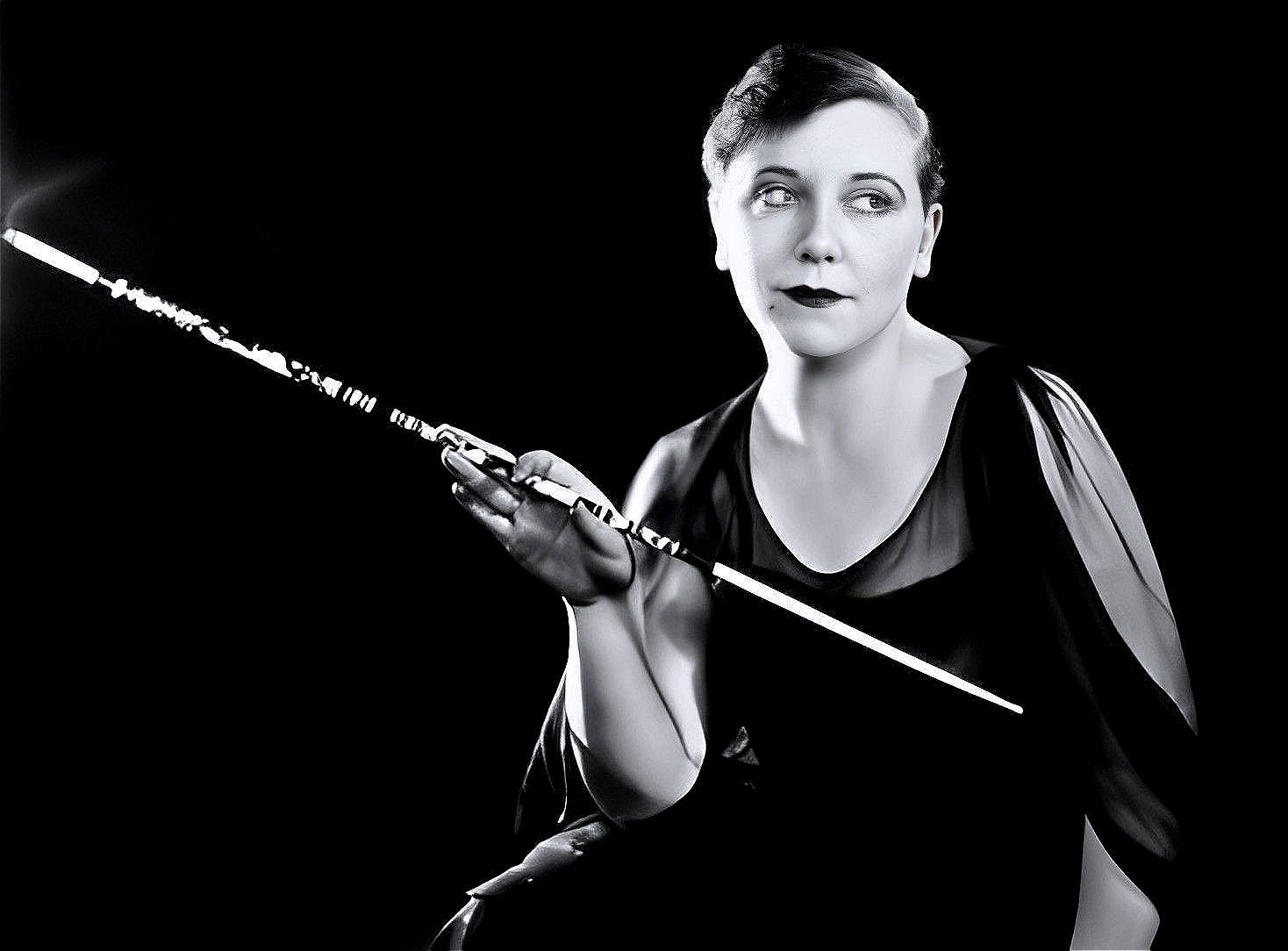
"Courtesy of the site Wikipedia"
Dolly Tree, the costume designer behind this visual masterpiece, was a prominent figure in the film industry at the time. Born in England, Dolly Tree began her career as a stage costume designer before landing in Hollywood, where her skill in costume design quickly gained recognition. Her work on "The Bride Wore Red" represents a pinnacle in her career, where each dress was chosen not only for its aesthetic beauty but also for its narrative meaning.
In "The Bride Wore Red", costumes are not simple props; they are an integral part of the story. Joan Crawford, in the title role, wears clothes that reflect her transformation from an ordinary woman to a high-ranking figure. The most iconic of these is the red wedding dress, a symbol of breaking with convention and a bold statement of identity. Dolly Tree uses colors and fabrics to communicate status, emotions and the evolution of the characters, making each costume a piece of storytelling.
Dolly Tree was known for her ability to mix elegance with innovation. For "The Bride Wore Red", she created costumes that were both glamorous and functional, reflecting the fashion trends of the time but also anticipating future styles. His attention to detail, from the choice of fabrics to the precision of the stitching, helped to make the costumes authentic and memorable.
Dolly Tree's work on "The Bride Wore Red" has had a significant impact on off-screen fashion. Women of the time were eager to emulate Joan Crawford's glamorous and sophisticated style, leading to an increase in the popularity of elegant and well-structured dresses. This film demonstrated how cinema could influence fashion trends, transforming clothes from supporting elements into protagonists in their own right.
"The Bride Wore Red" remains an emblematic example of how costumes can be used to tell a story without words. Dolly Tree didn't just dress the characters; He brought them to life through fashion, creating a visual dialogue that enriches the plot and deepens the audience's understanding of the characters and their motivations.
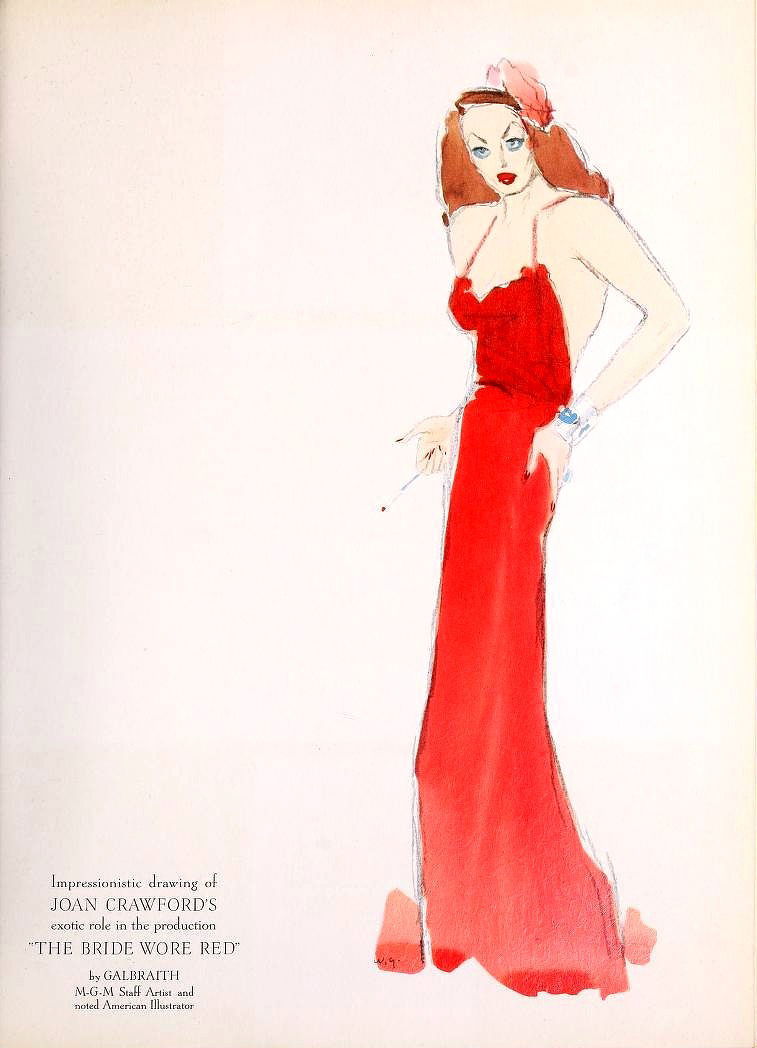
"Courtesy of the Media History Digital Library"
Excerpt from the periodical motion picture (October 1937)
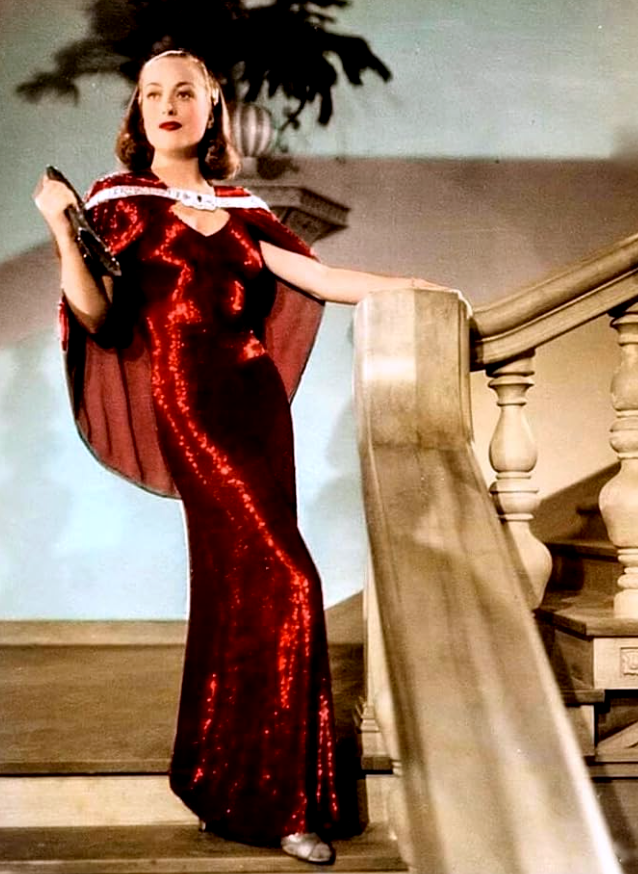
"Courtesy of the site IMBD.com"
The dress worn by Joan Crawford in the film "The Bride Wore Red" is a long, tight-fitting bright red dress. It has a sweetheart neckline made of a shimmering fabric. Joan Crawford also wears a short cape in the same color as the dress, with a white border and decorative details. The cape is draped over the shoulders and open at the front. The actress is holding a small black bag. This dress is a perfect example of the glamorous and sophisticated style that characterized the costumes of that period, helping to define the character of Joan Crawford in the film.
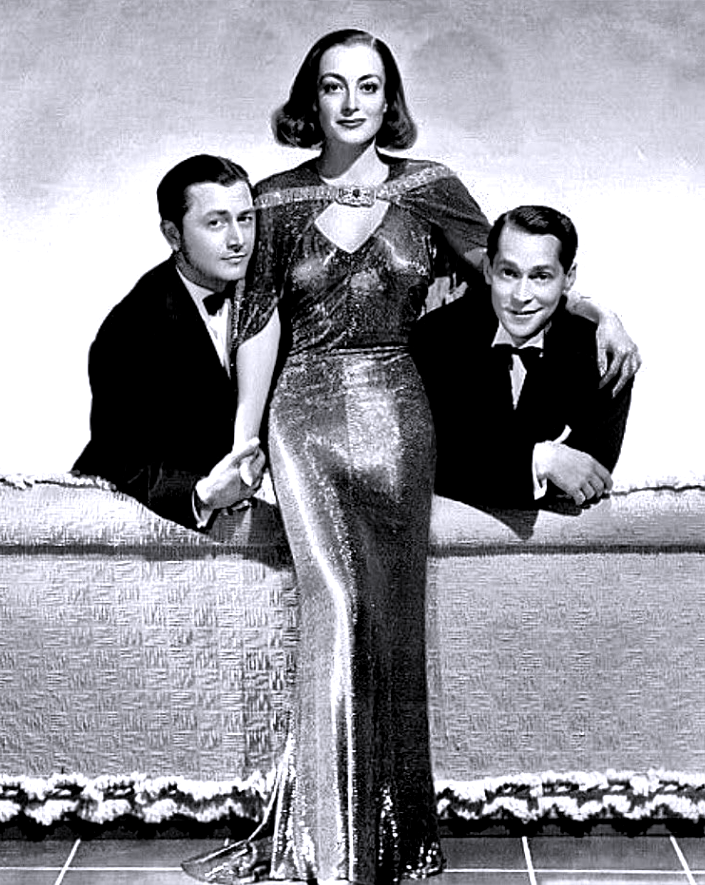
"Courtesy of the site IMBD.com"
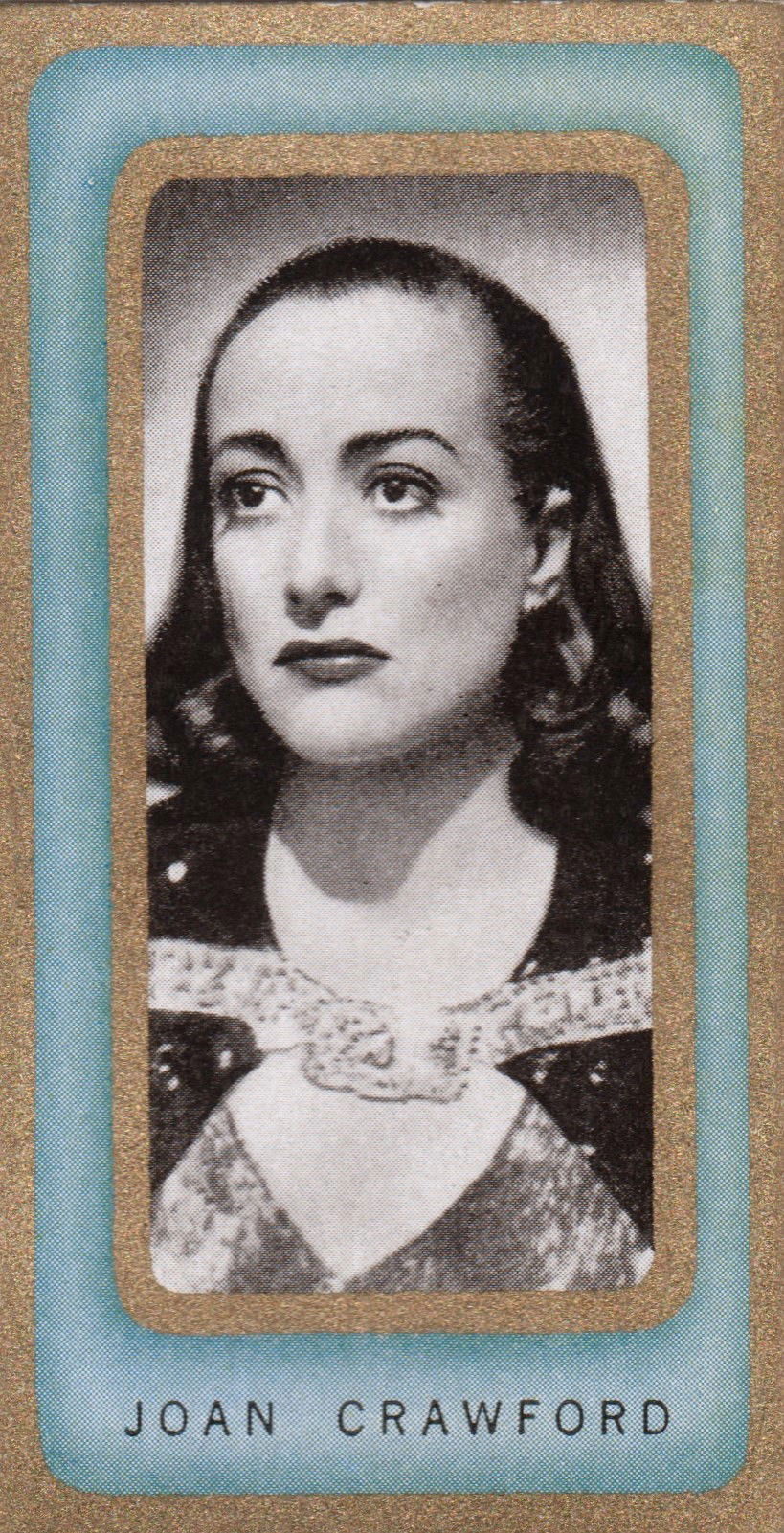
Card n.2 - FILM FAVOURITES
CARRERAS Ltd (1938)
(personal collection)
In conclusion, Dolly Tree's work in "The Bride Wore Red" represents a moment of fusion between fashion and cinema, where each dress tells a part of the story. His ability to integrate high fashion design with storytelling made this film a masterpiece of costume design, influencing not only the cinema of the time but also the way fashion is perceived and used in visual storytelling. Through costumes, Dolly Tree has left an indelible mark on the world of cinema, proving that fashion is not only about trends, but also about storytelling and identity.
MARIE ANTOINETTE
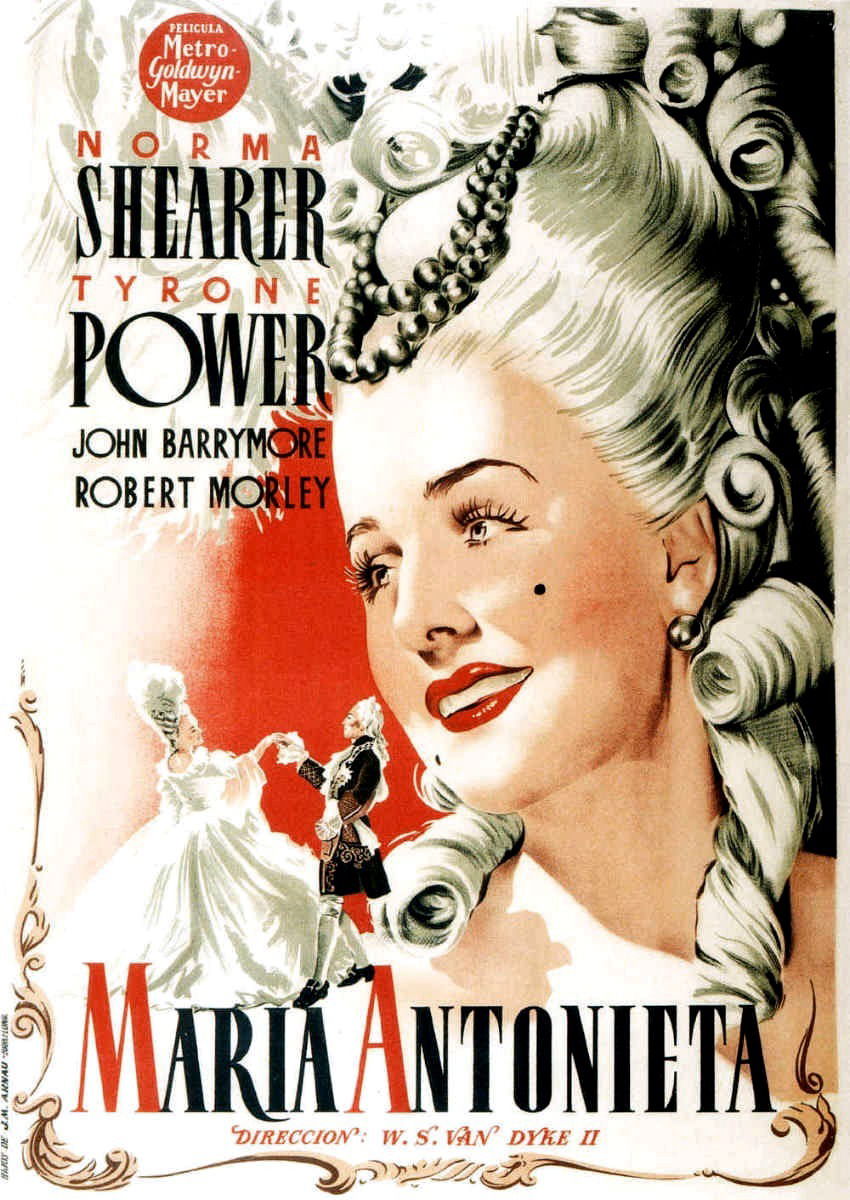
Movie Poster
"Marie Antoinette" is a 1938 American drama film directed by W. S. Van II, starring Julien Duvivier as an uncredited director. The film is based on the biography of Marie Antoinette written by Stefan Zweig and tells the life of the Queen of France, played by Norma Shearer.
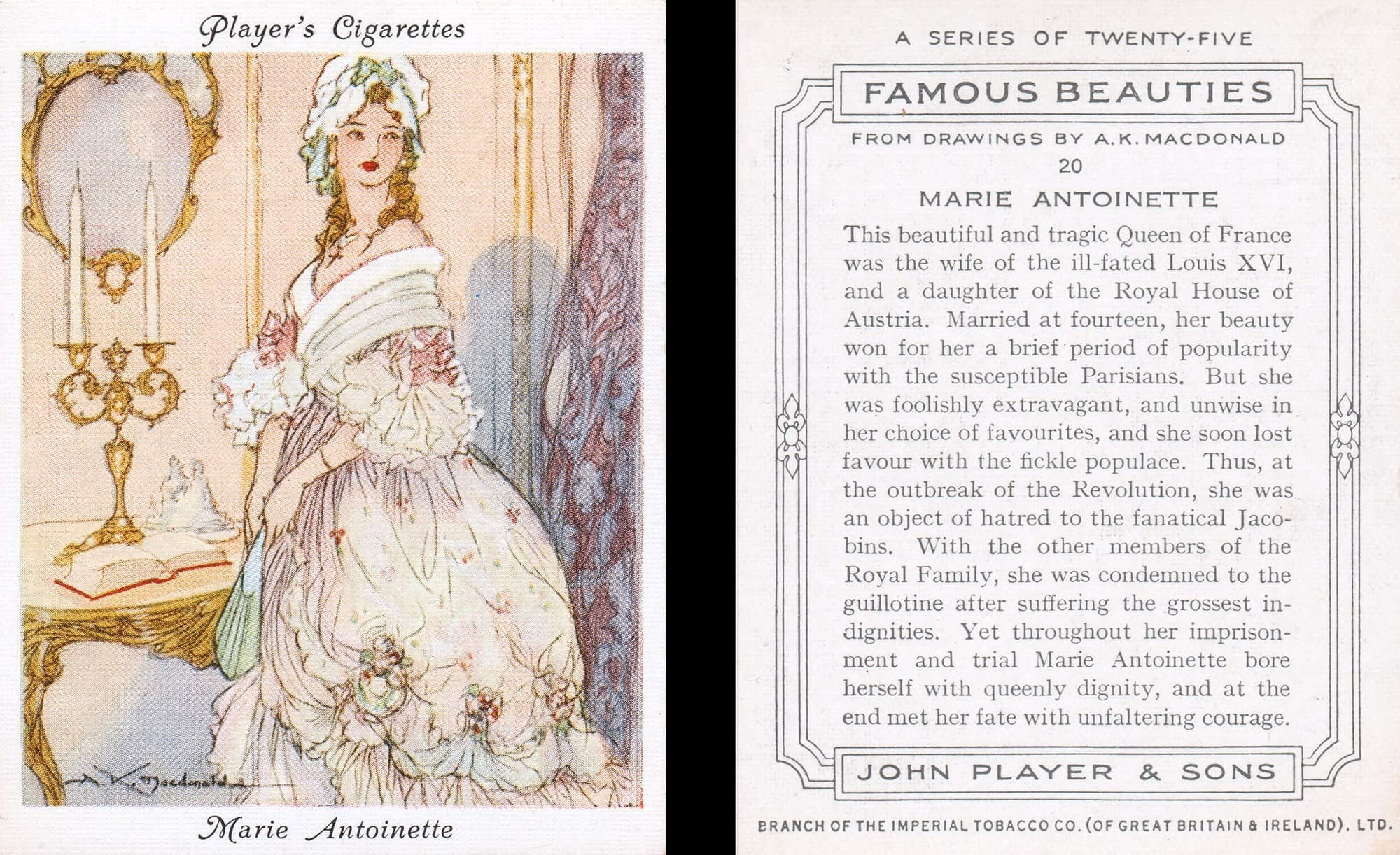
Card n.20 - FAMOUS BEAUTIES
JOHN PLAYER & SON (1937)
(personal collection)
The film is known for its lavish production, with elaborate costumes and sets that recreate the opulence of the French court. Norma Shearer delivers a memorable performance in the role of the Queen, showcasing both her frivolity and strength of character. Tyrone Power plays Count Axel von Fersen, while John Barrymore is Louis XV and Robert Morley is Louis XVI.
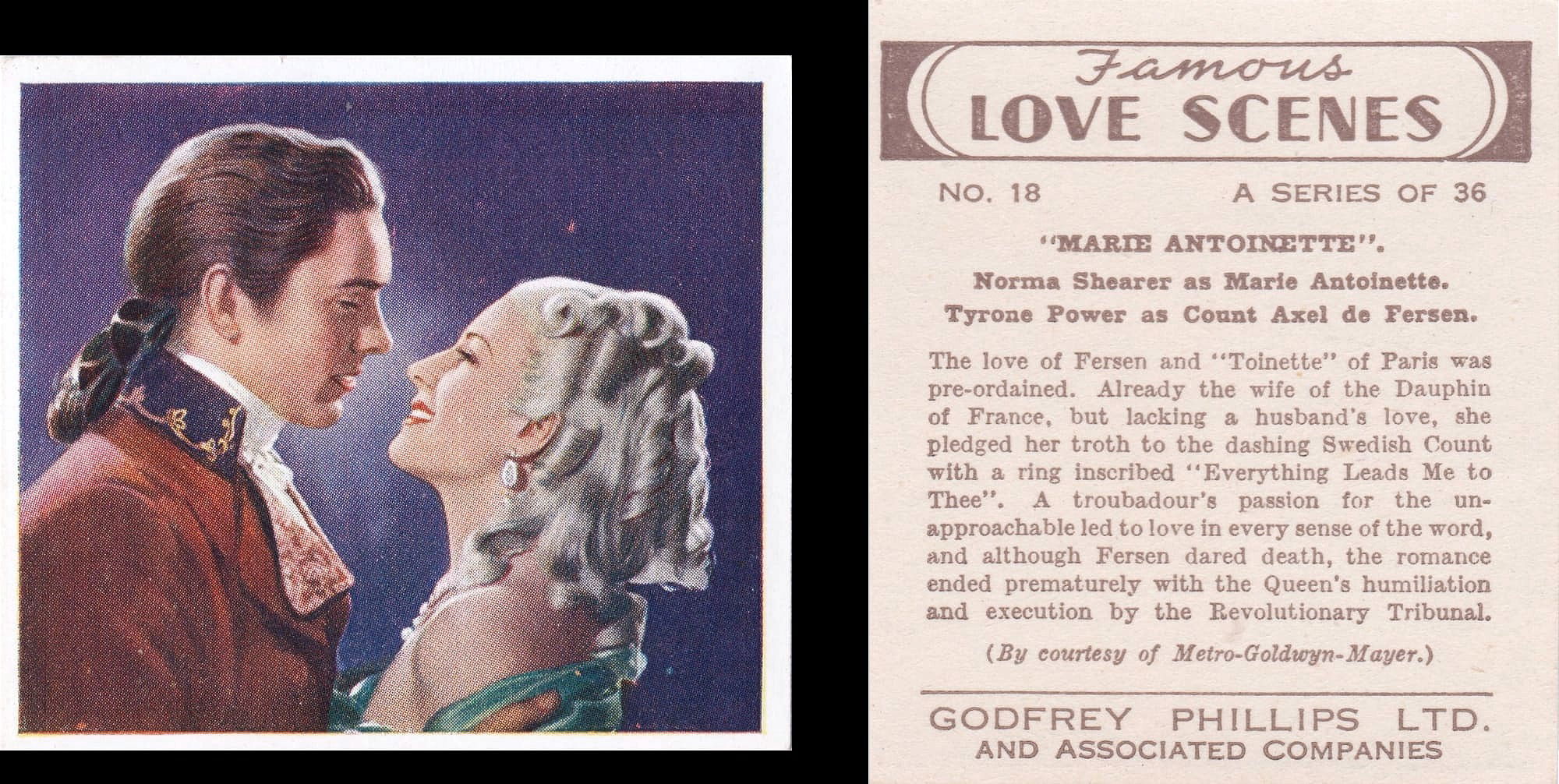
Card n.18 - FAMOUS LOVE SCENES
GODFREY PHILLIPS Ltd. (1939)
(personal collection)
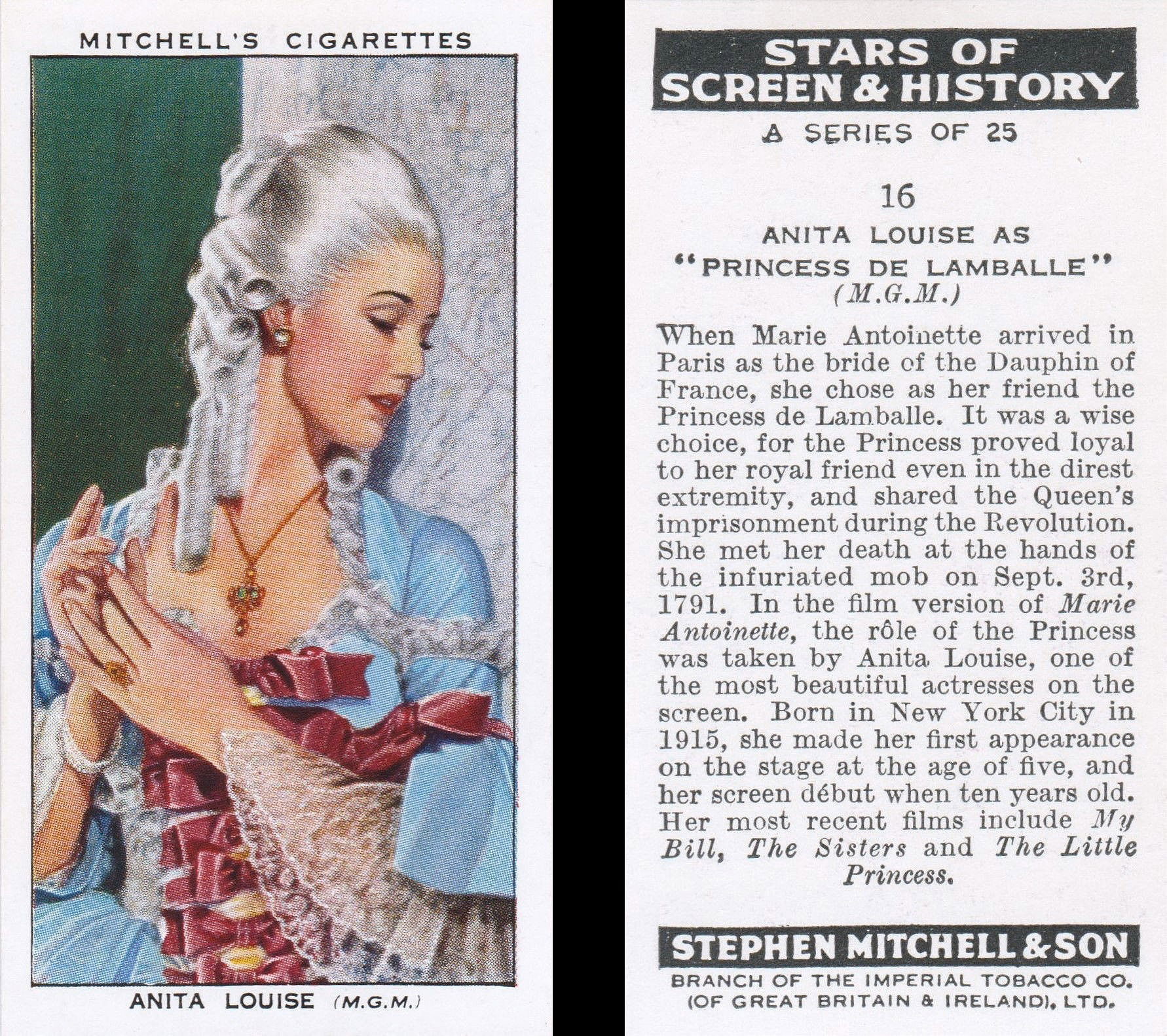
Card n.16- STARS OF SCREEN & HISTORY
STEPHEN MITCHELL & SON (1939)
(personal collection)
In the film, Anita Louise plays the role of Maria Theresa Luisa of Savoy-Carignano, Princess of Lamballe. The Princess of Lamballe was one of Queen Marie Antoinette's closest ladies-in-waiting and a prominent figure in the French court. Anita Louise's performance was praised for its elegance and delicacy, helping to make the film a classic of historical cinema.
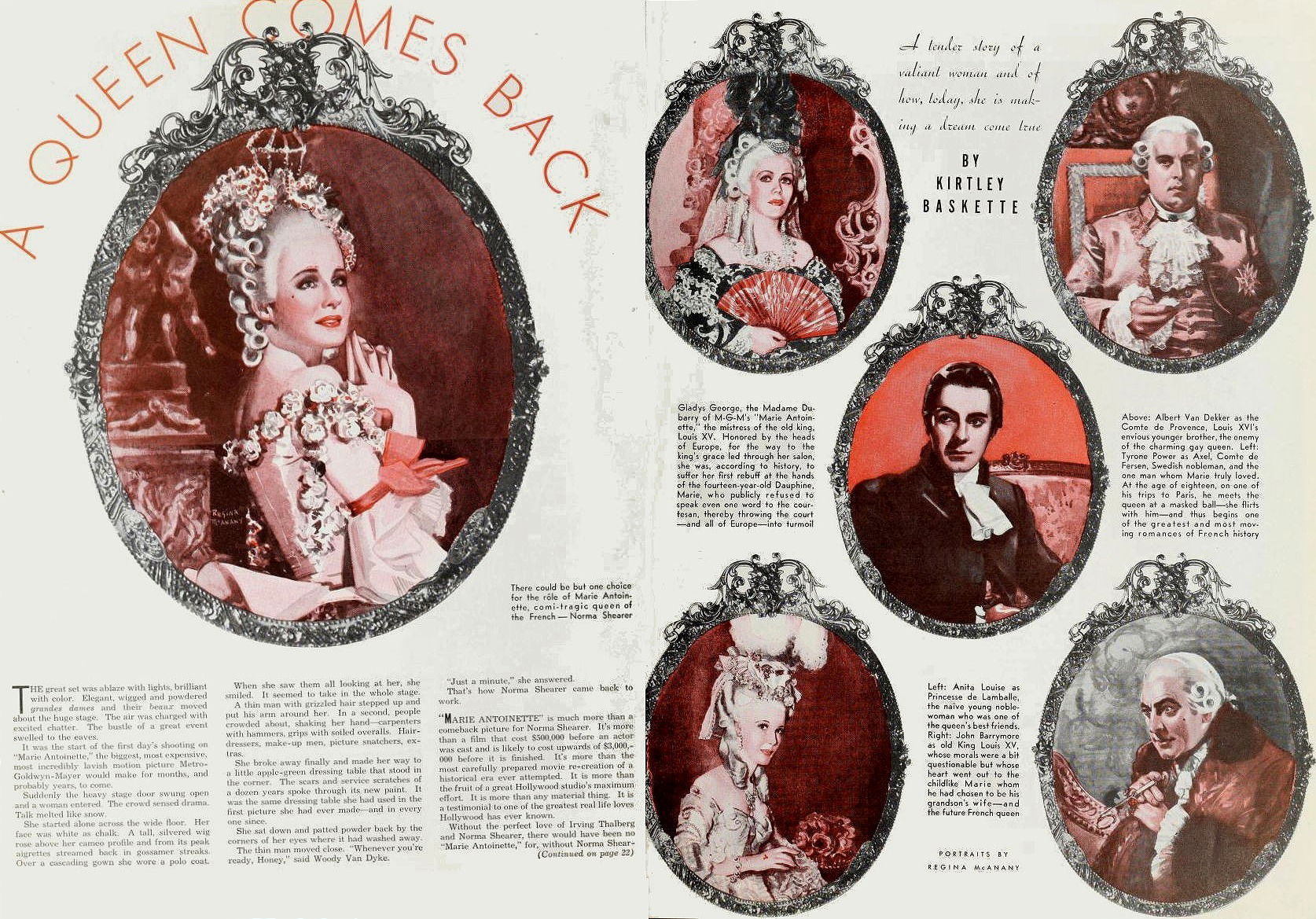
"Courtesy of the Media History Digital Library"
The search for costumes on Marie Antoinette was unprecedented. Adrian visited France and Austria buying lace and antiques to bring back to Hollywood, and examined the French queen's paintings with a microscope, so he could take inspiration for the embroidery of her clothes. In Paris, Adrian spent months looking for historical ideas with which to reconstruct the fashions of the time.
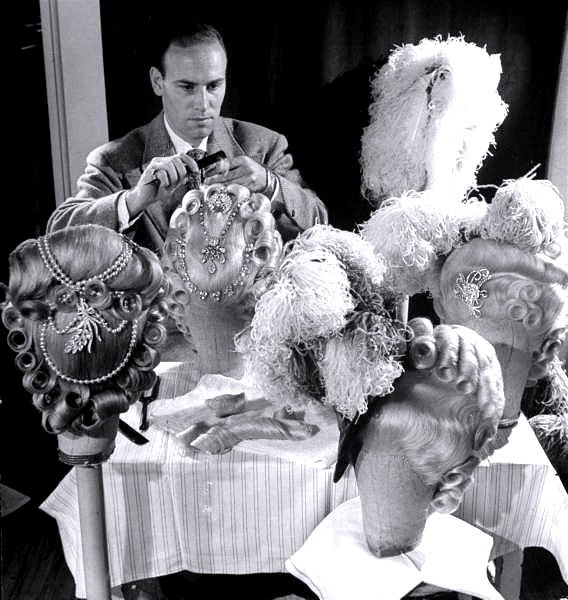
"Courtesy of the Pinterest"
In this photo, Sydney Guilaroff combing wigs from the film Marie Antoinette, a British-American hairdresser of great fame during the golden age of Hollywood. Born on November 2, 1907 in London to Russian Jewish immigrants, his family moved to Canada, where he lived in Winnipeg and Montreal. Guilaroff began his career in New York as an assistant in a beauty salon, and thanks to his dedication and talent, he quickly became a highly sought-after hairdresser. His career took off when actress Joan Crawford took him to Hollywood and Metro Goldwyn Mayer (MGM), where he worked as a head hairdresser from 1934 until the late 1970s. Guilaroff was the first hairdresser to receive a film credits credit and worked on over 1,000 films. He created iconic hairstyles for many movie stars, such as Judy Garland's braids in "The Wizard of Oz" and Vivien Leigh's look in "Gone with the Wind".
Adrian visited hairdressers whose ancestors had cut wigs and curled the hairstyles of the refined courtiers of the time. He tracked down families of Swiss hairdressers, because five thousand heads of the French court were to be made. He found long-forgotten scripts of gilded fabrics and brocades that had adorned the figures of many French gentlemen. Adrian found Marie Antoinette's jewels and from every little fragment of authentic relic a complete restoration was born, while cabinetmakers created furnishings for an entire palace and Cedric Gibbons designed sets for Hollywood.
Norma Shearer wore thirty-four costumes in the film, each weighing more than fifty-two pounds, not to mention eighteen wigs. Each dress was draped over a steel circle which in turn was attached to a base adjusted in such a way that the weight hung from the shoulders. The circle had a petticoat and a second petticoat with ruffles on top. Norma's wigs had a heavy metal structure to keep them in shape. Fun fact: when the real Marie Antoinette held a formal court, she wore a hairstyle so high that a page had to follow her with a wooden support and hold her in place until she settled into the state chair. It took a full five hours for a lady of the French court to put on her formal dress, including her hairstyle. Thanks to the claw clasp for dresses and wigs, a lady of the French court M.G.M. could put on her formal dress in just five minutes.
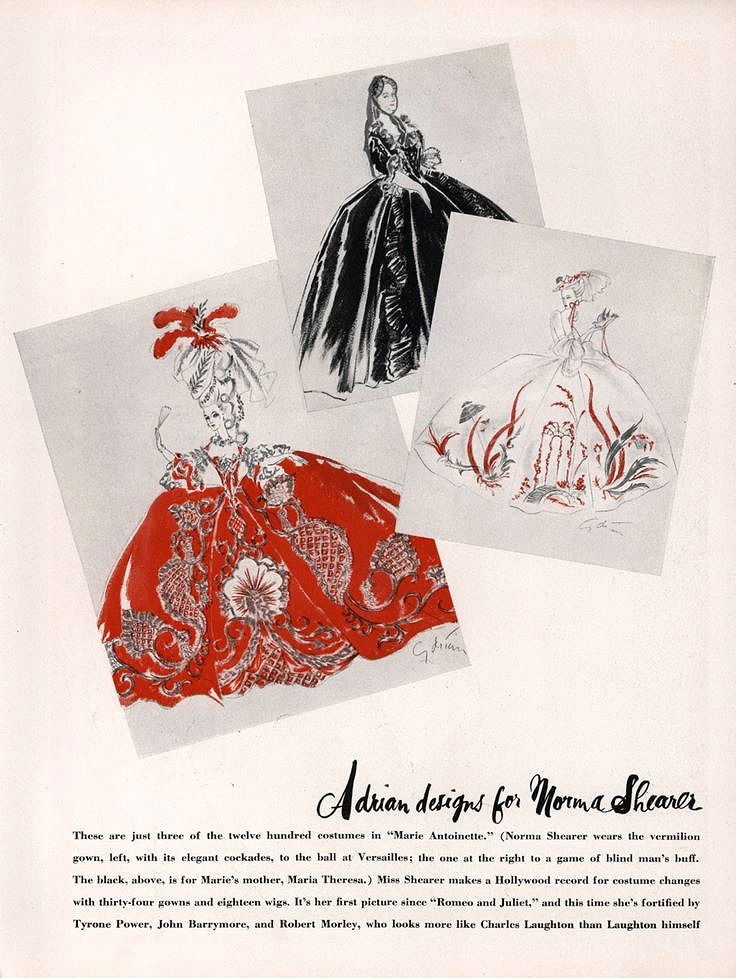
Adrian designs for Norma Shearer
These are just three of the twelve hundred costumes in "Marie Antoinette". (Norma Shearer wears the vermilion dress, on the left, with its elegant rosettes, at the Versailles ball; the one on the right for a game of blind fly. The black, above, is for Marie Antoinette's mother, Maria Theresa.) Miss Shearer sets a record in Hollywood for costume changes with thirty-four dresses and eighteen wigs. It's her first film since "Romeo and Juliet," and this time she's joined by Tyrone Power, John Barrymore, and Robert Morley, who looks more like Charles Laughton than Laughton himself.
The costumes for the film were created by Adrian and Gile Steele, two of the most renowned costume designers of the time. The production of the film required a considerable effort in the creation of the costumes, with thousands of dresses and wigs that involved all the MGM laboratories for months. Adrian, the head costume designer, is known for his ability to create clothes that not only reflect the historical era, but also add a touch of Hollywood glamour.
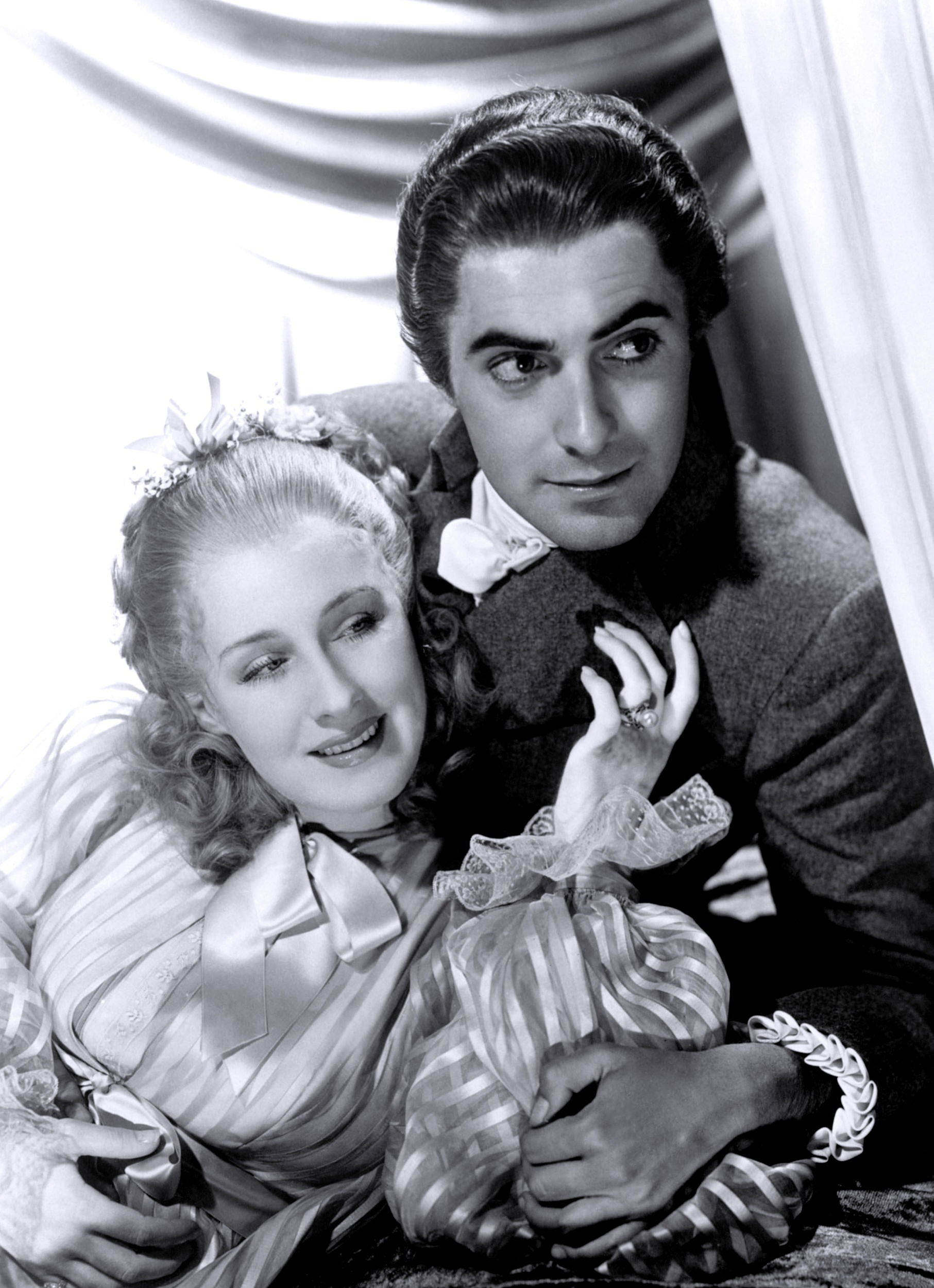
"Courtesy of the site doctormacro.com"

Card n.21- FILM FAVORITES
A. AND M. WIX. LONDON (1939)
(personal collection)
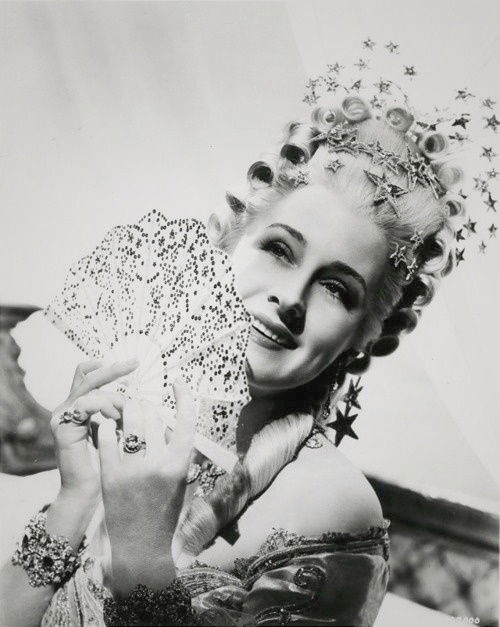
Scene from the Movie
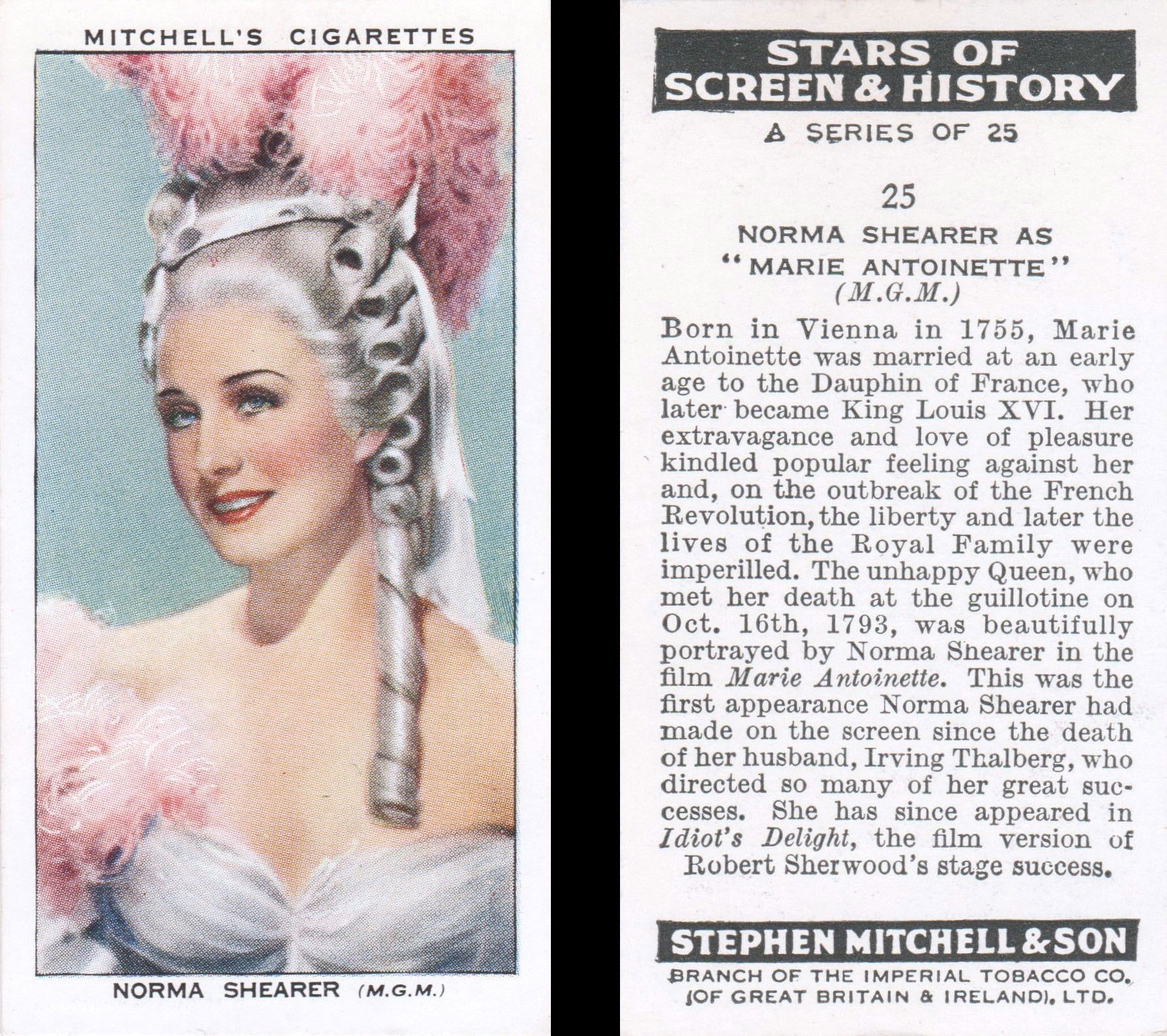
Card n.25 - STARS OF SCREEN & HISTORY
STEPHEN MITCHELL & SON (1939)
(personal collection)
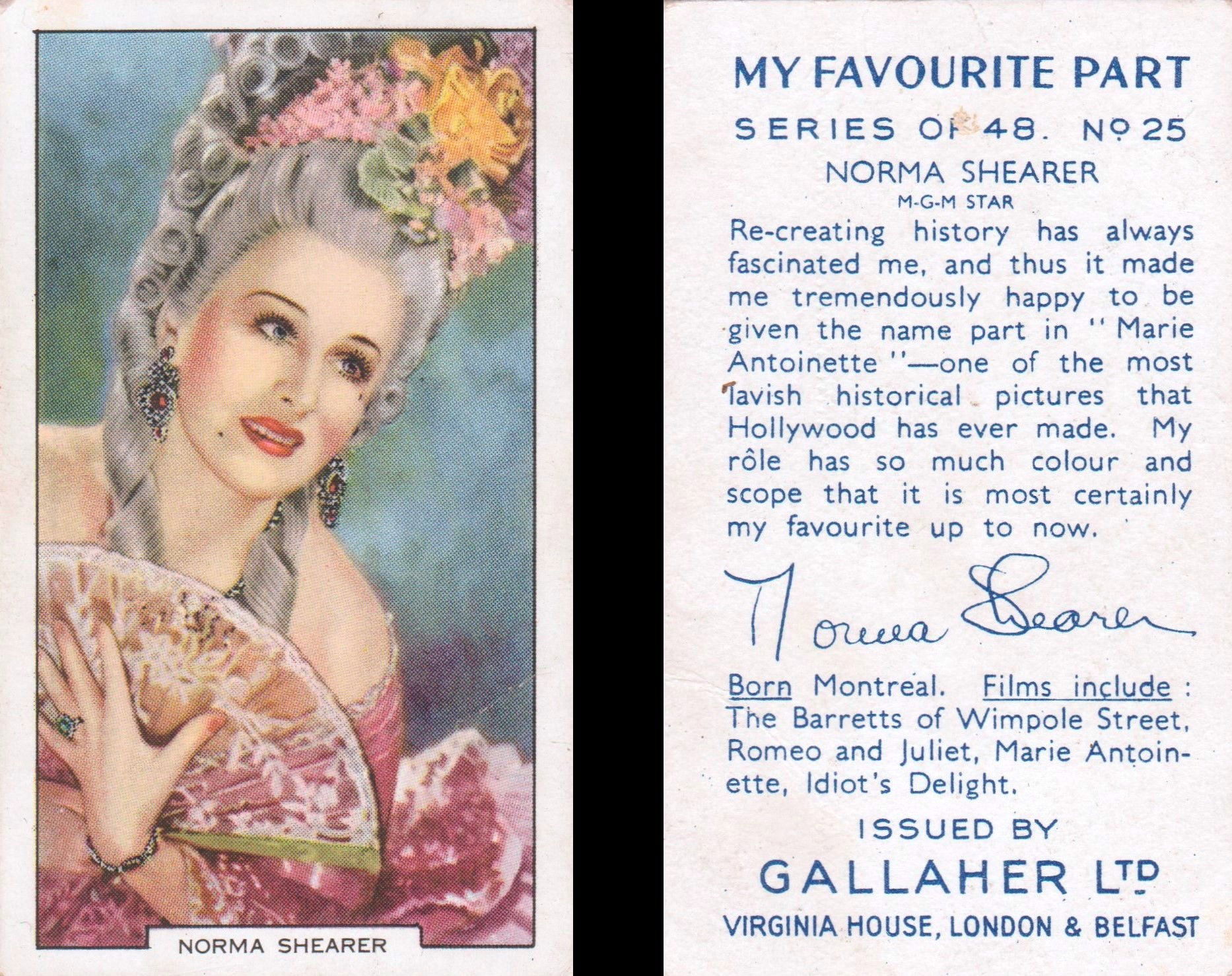
Card n.25 - MY FAVOURITE PART
GALLAHER Ltd. (1939)
(personal collection)
"Recreating history has always fascinated me, and so it made me tremendously happy to receive the lead part in Marie Antoinette"—one of the most lavish historical films Hollywood has ever made. My role has so much color and scope that it's definitely my favorite so far."
Norma Shares
The costumes of "Marie Antoinette" are characterized by elaborate details, luxurious fabrics and a great attention to historical fidelity. The dresses worn by Norma Shearer, who plays Marie Antoinette, are particularly sumptuous and reflect the opulence of the French court of the eighteenth century.
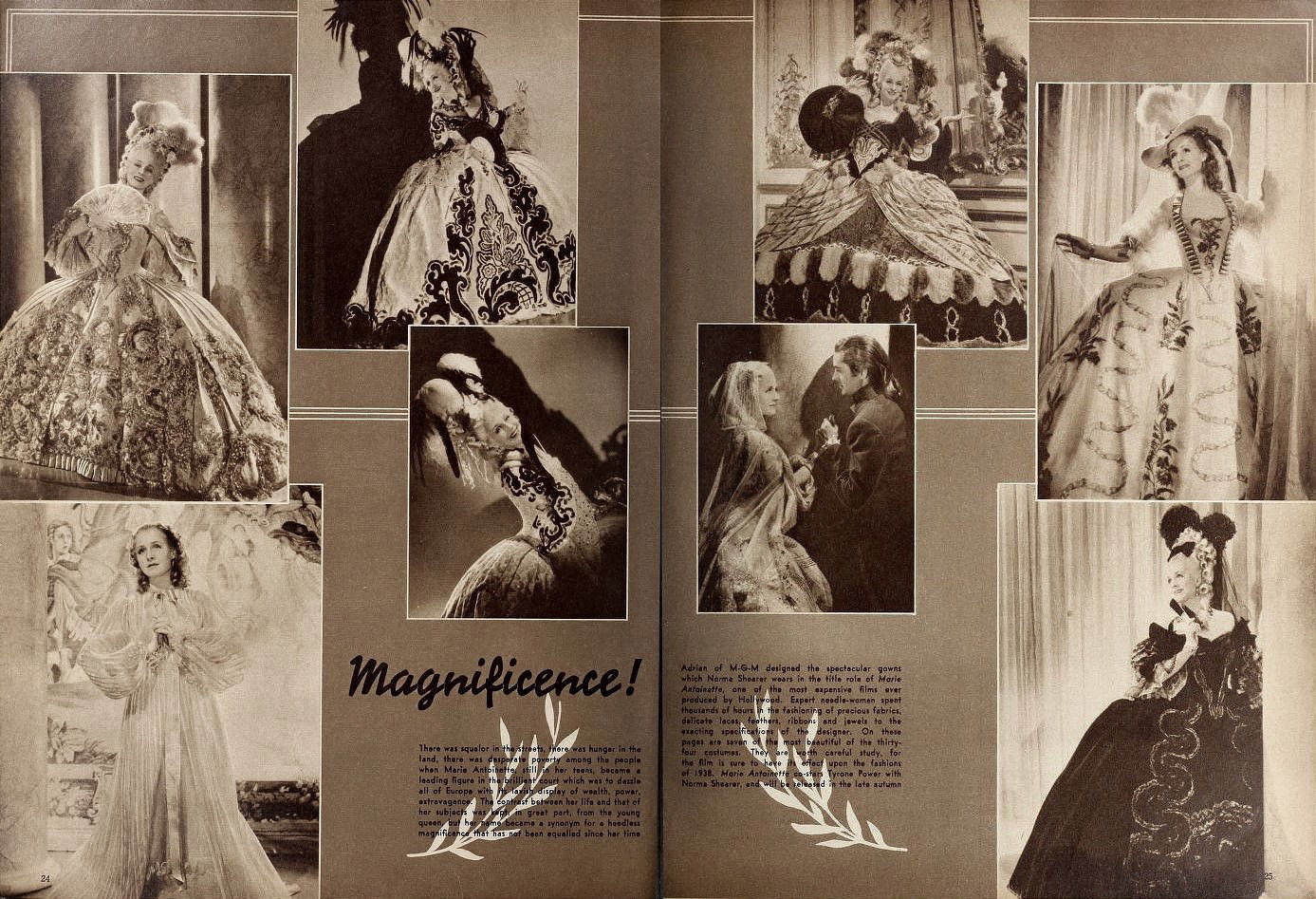
"Courtesy of the Media History Digital Library"
Pag. 24/25 of the magazine HOLLYWOOD (1938)
Magnificence!
There was hardly a cotton thread or a hunger in the country. There was no war, no lack among the people who, like Marie Antoinette, were prominent figures in the most spectacular era of extravagance the world has ever known. It was an era of elegance, beauty, wealth and luxury. It was a time when the most beautiful women in the world wore the most magnificent dresses that have ever been revealed since the time of the Pharaohs.
Adrian of M-G-M designed the spectacular dresses that Norma Shearer wore in the role of Marie Antoinette, the most expensive movie dress ever produced by Hollywood. Expert embroiderers from all over the world have created the exquisite silk, satin, brocade, velvet and jewelry dresses for this sumptuous production. Adrian's research into the authentic costumes of the time was exhaustive. She designed thirty-five dresses for Miss Shearer, each one more beautiful than the last. The most beautiful of all the dresses, for which Adrian won the fashion of the year award, was the white dress with the black velvet cape that Miss Shearer wears in the late autumn sequence.
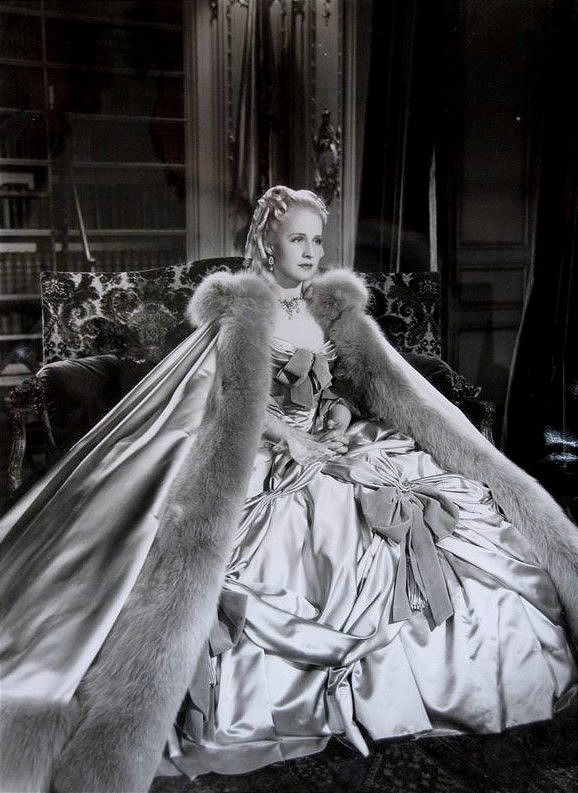
Scene from the Movie
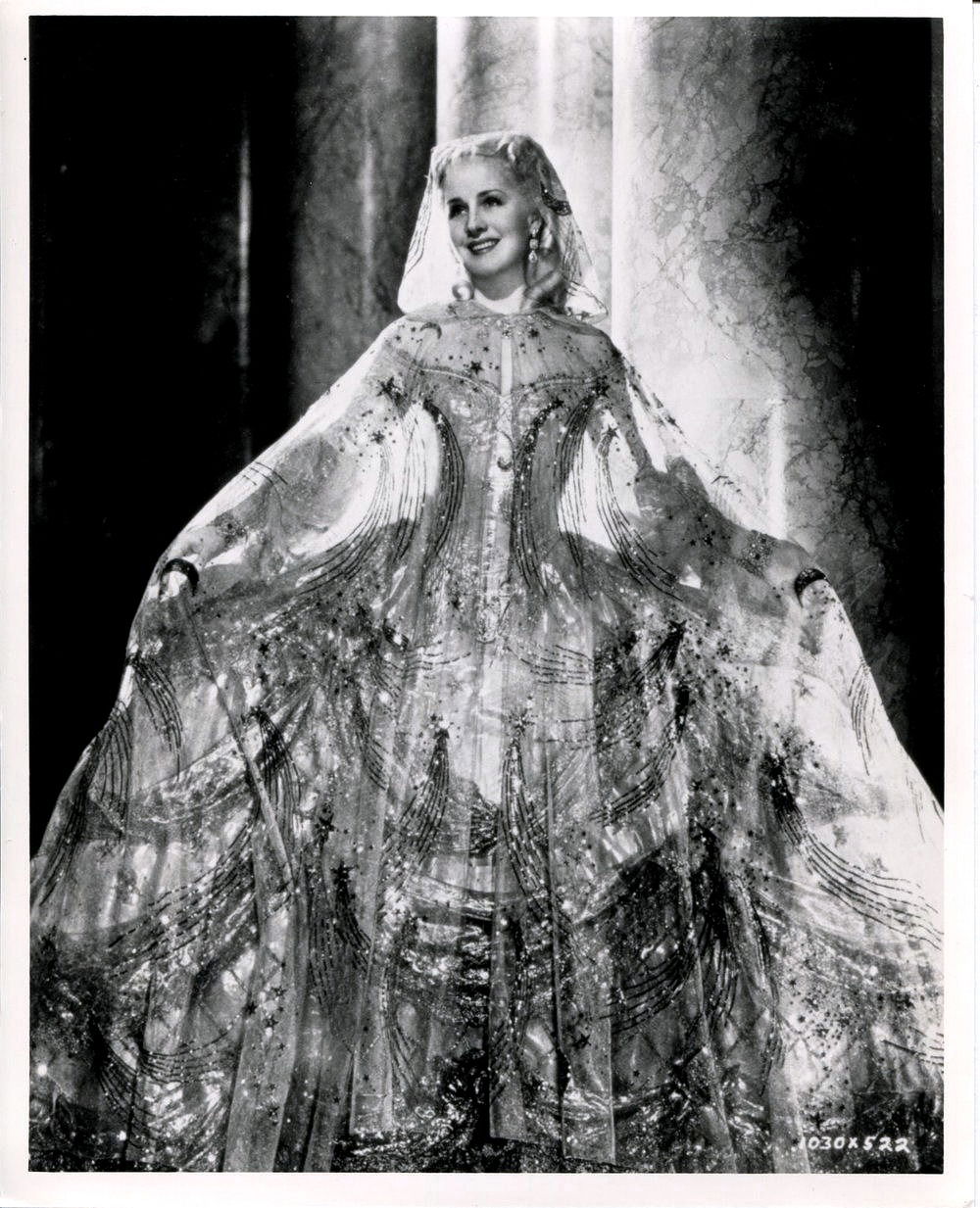
Scene from the Movie
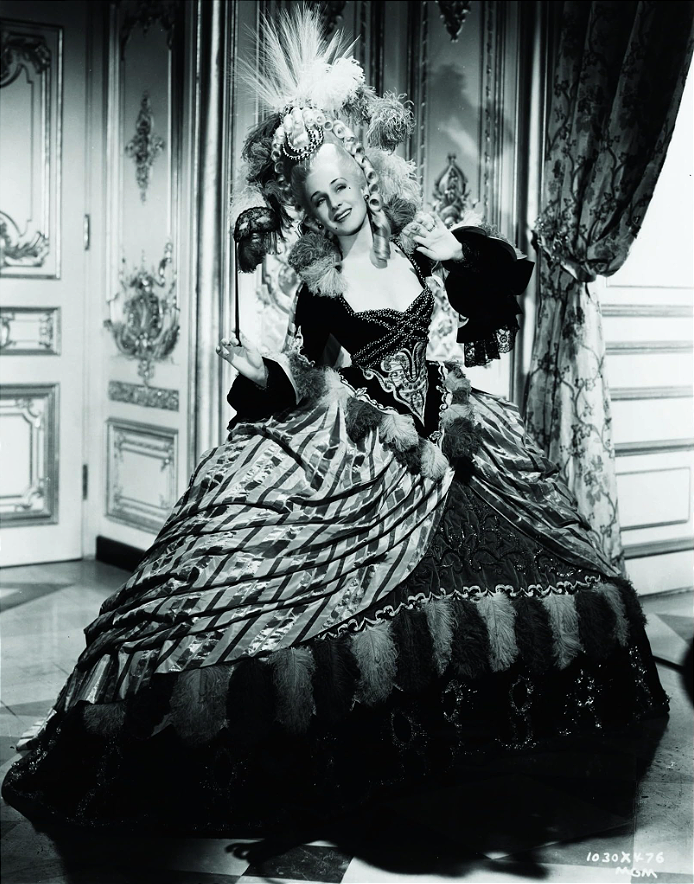
"Courtesy of the site IMBD.com"
The production did not get permission to shoot in Versailles, so all the sets, including the costumes, were reconstructed in the MGM studios. This allowed the costume designers to have total control over the visual representation of the film, creating a visually spectacular cinematic experience.
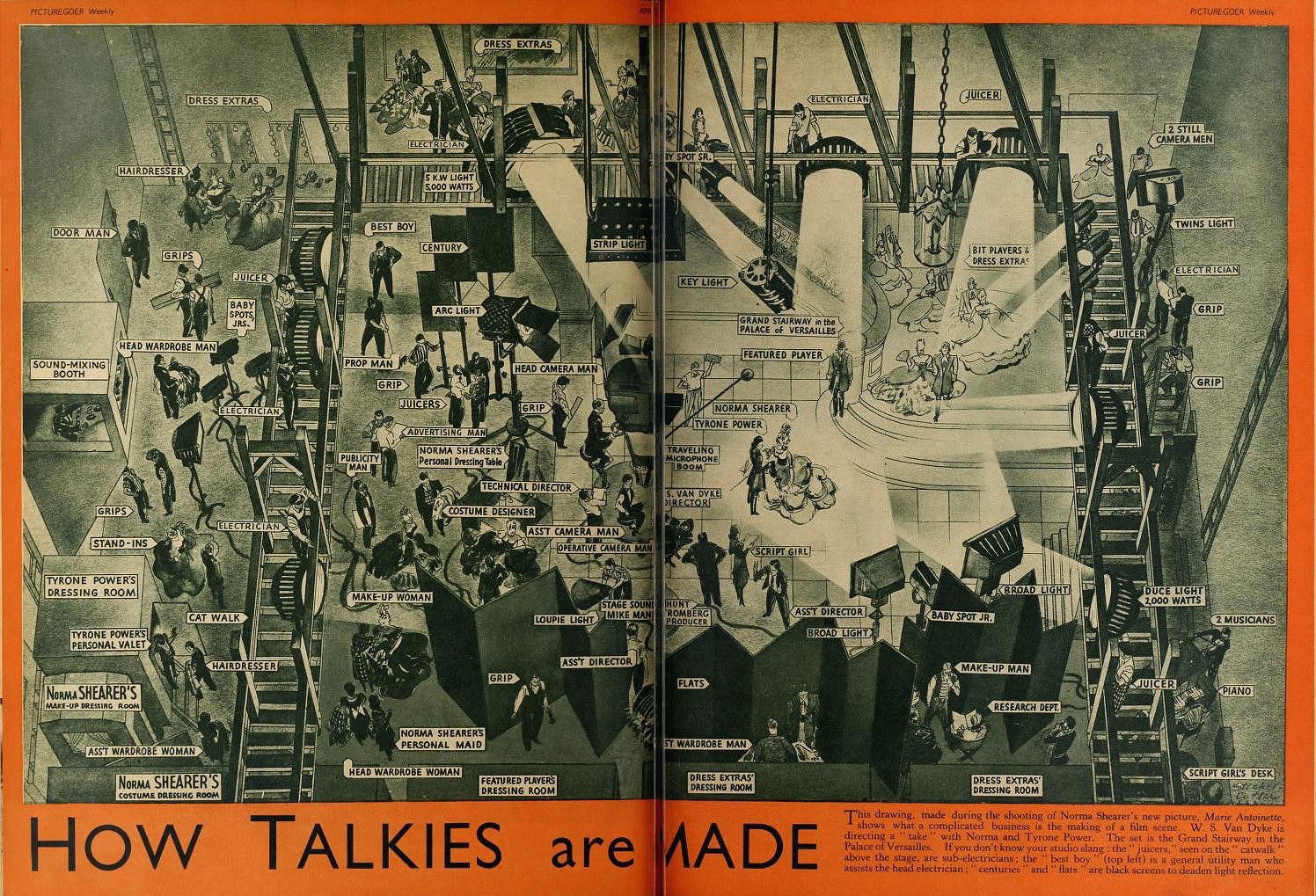
"Courtesy of the Media History Digital Library"
Excerpt from the periodical PICTUREGORE (January 1938)
"HOW TALKIES are MADE"
"This drawing, made during the filming of Norma Shearer's new film, Marie Antoinette, shows what is involved in making a sound film. W. S. Van is directing a scene with Norma and Tyrone Power. The set is the Grand Staircase in the Palace of Versailles."
The film was a great success of the 30s, despite its high production cost, which exceeded two million dollars. It was also one of the last productions of Irving Thalberg, who died during the making of the film.
In summary, "Marie Antoinette" is a film that combines a detailed historical narrative with a visually spectacular production, making it a classic of biographical cinema.
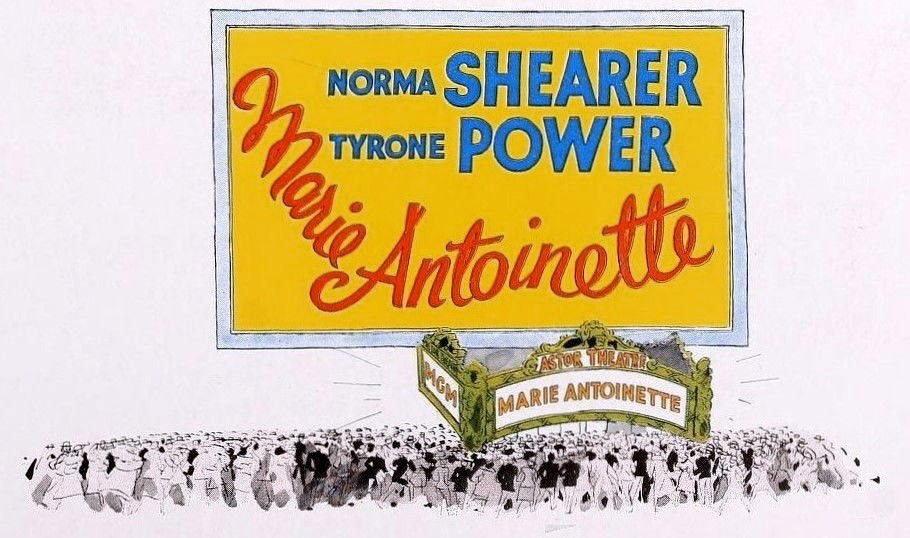
"Courtesy of the Media History Digital Library"
Cigarette cards are particularly significant when it comes to historical fashion. They capture intricate details of costumes, from fine fabrics to elaborate embroidery, offering an accurate visual representation of the trends of the time.
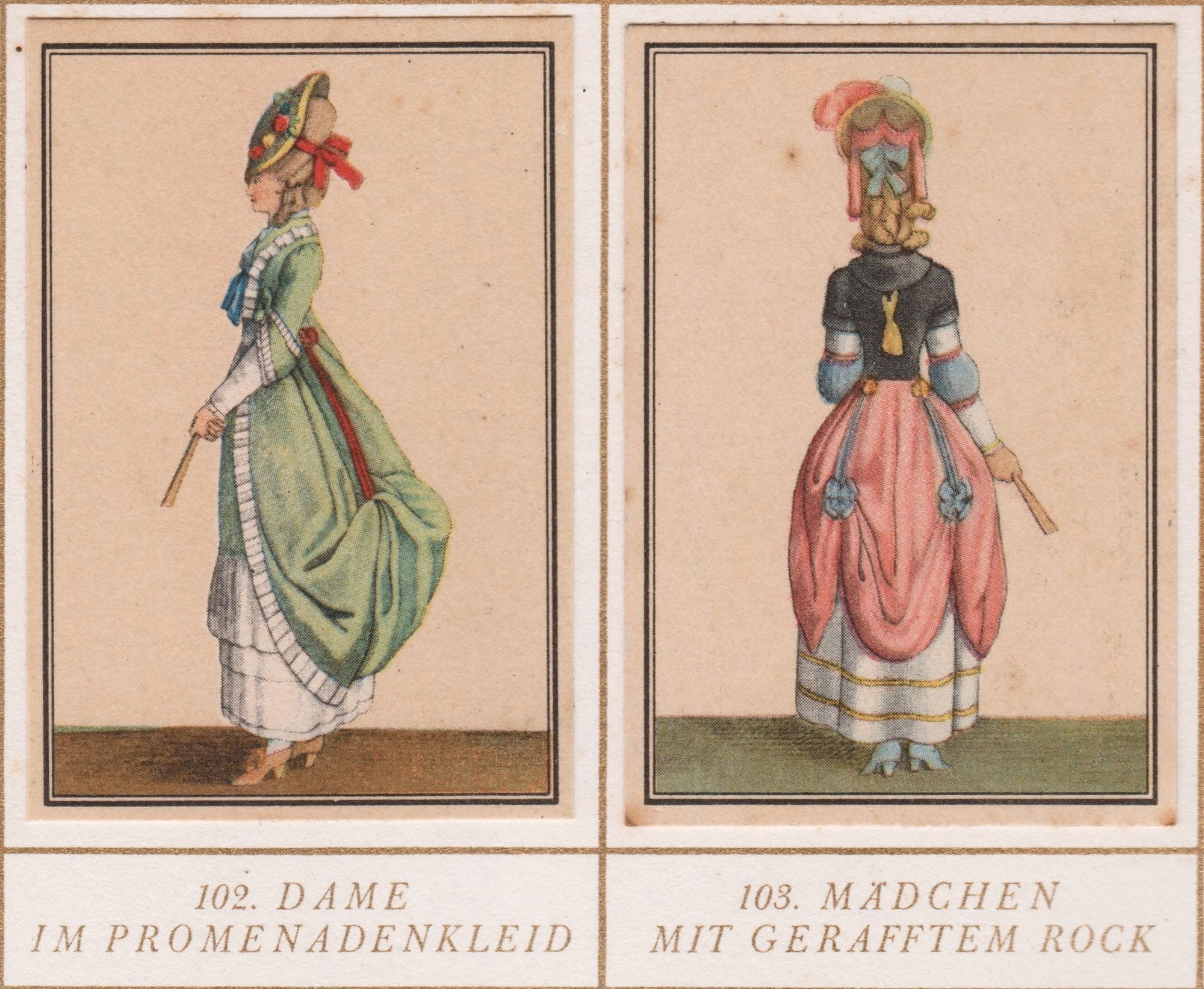
FASHION PICTURES FROM FOUR CENTURIES 1500-1900 (1933)
(personal collection)
102. LADY IN PROMENADE DRESS
This figurine depicts a lady in walking dress. The dress is green with white details and the lady wears an ornate hat. The clothing is typical of the elegant walks of the time, reflecting the style and fashion of the time.
103. GIRL WITH RUCHED SKIRT
This figurine shows a lady in a ruched skirt. The dress is pink with a black bodice, and the girl is seen from behind. This style of clothing was common among young women of the time, characterized by voluminous skirts and decorative details.
These figurines not only document changes in fashion, but also reflect the cultural and social influences that have shaped clothing styles. In the context of the 1938 film "Marie Antoinette", cigarette cards offer a tangible link between cinematic representation and the historical fashion of the time. The film, known for its lavish production and elaborate costumes, draws inspiration from historical costumes of the eighteenth century. The cigarette cards allow us to see how the costumes of the film compare with those actually worn at the court of Louis XVI and Marie Antoinette. Through these figurines, we can appreciate the historical accuracy and attention to detail that the film's costume designers dedicated to the creation of the clothes.
FASHION UNDER LOUIS XVI AND MARIE ANTOINETTE 1770-1790
After Queen Marie Antoinette ascended the throne, fashion reached a new peak in the 1770s, especially when it came to women's hairstyles.
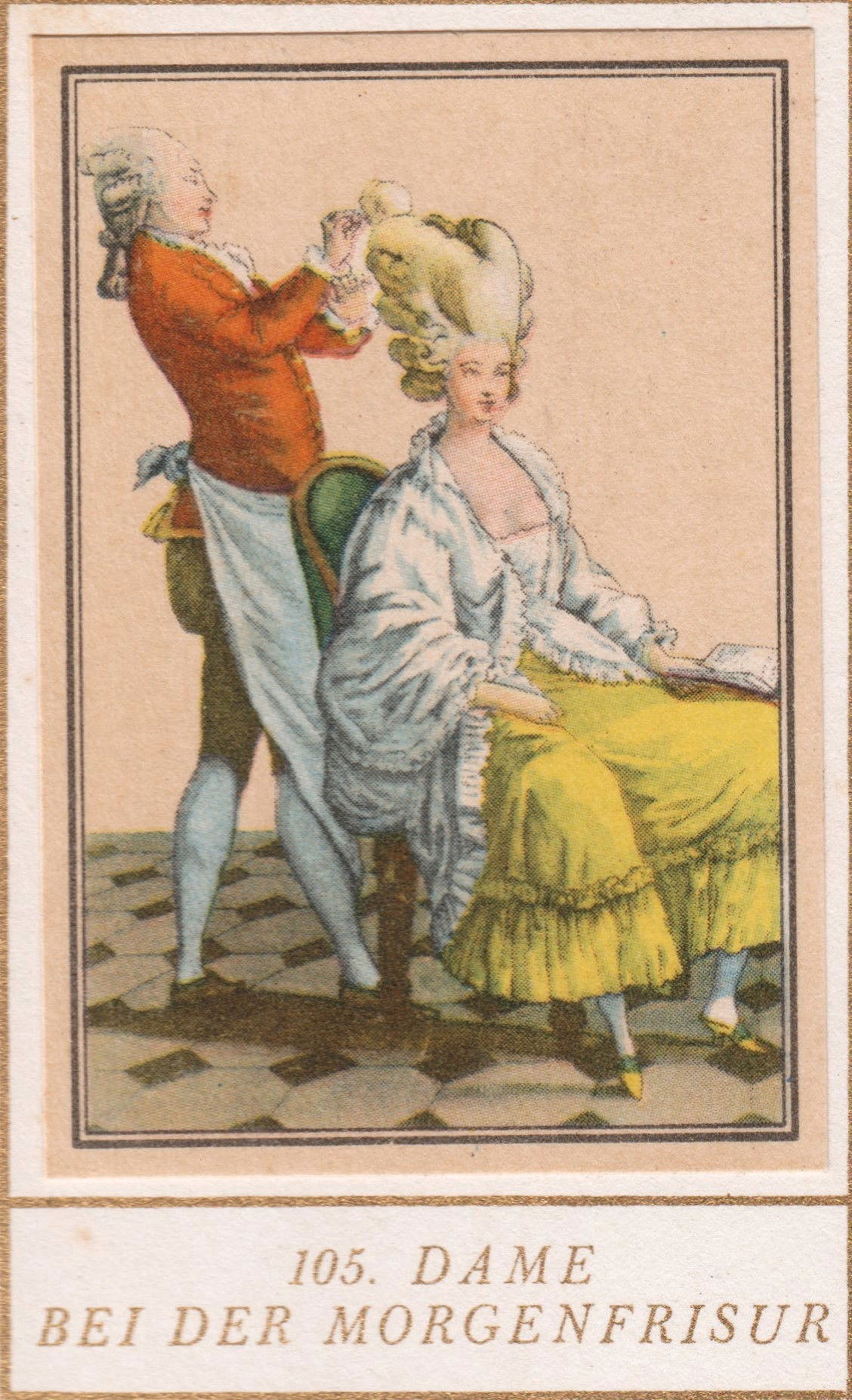
FASHION PICTURES FROM FOUR CENTURIES 1500-1900 (1933)
(personal collection)
105. LADY AT THE MORNING HAIRSTYLE
This figurine depicts a lady getting her hair styled in the morning. The woman is sitting in a chair, wearing a yellow skirt and a white shawl, while the hairdresser, dressed in a red coat and white stockings, works on her elaborate hairstyle.
The hair became taller and taller, so much so that between 1770 and 1780 it rose to such heights that it exceeded the head by several lengths, making the body seem smaller. In many salons, hair was stacked on pillows, fixed with needles and pomades, powdered and decorated with ribbons, while rolled curls and so-called buns fell to the nape of the neck. Artificial flowers, baskets, curtains and even sails were prepared to be placed on high hairstyles, marking a golden age for hairdressers, who even formed their own professional academies. An important ingredient was the various types of large headphones, especially for everyday wear. These headphones derived from a bourgeois taste that would soon play an important role. To make these elaborate hairstyles wearable, a sturdy substructure was required.
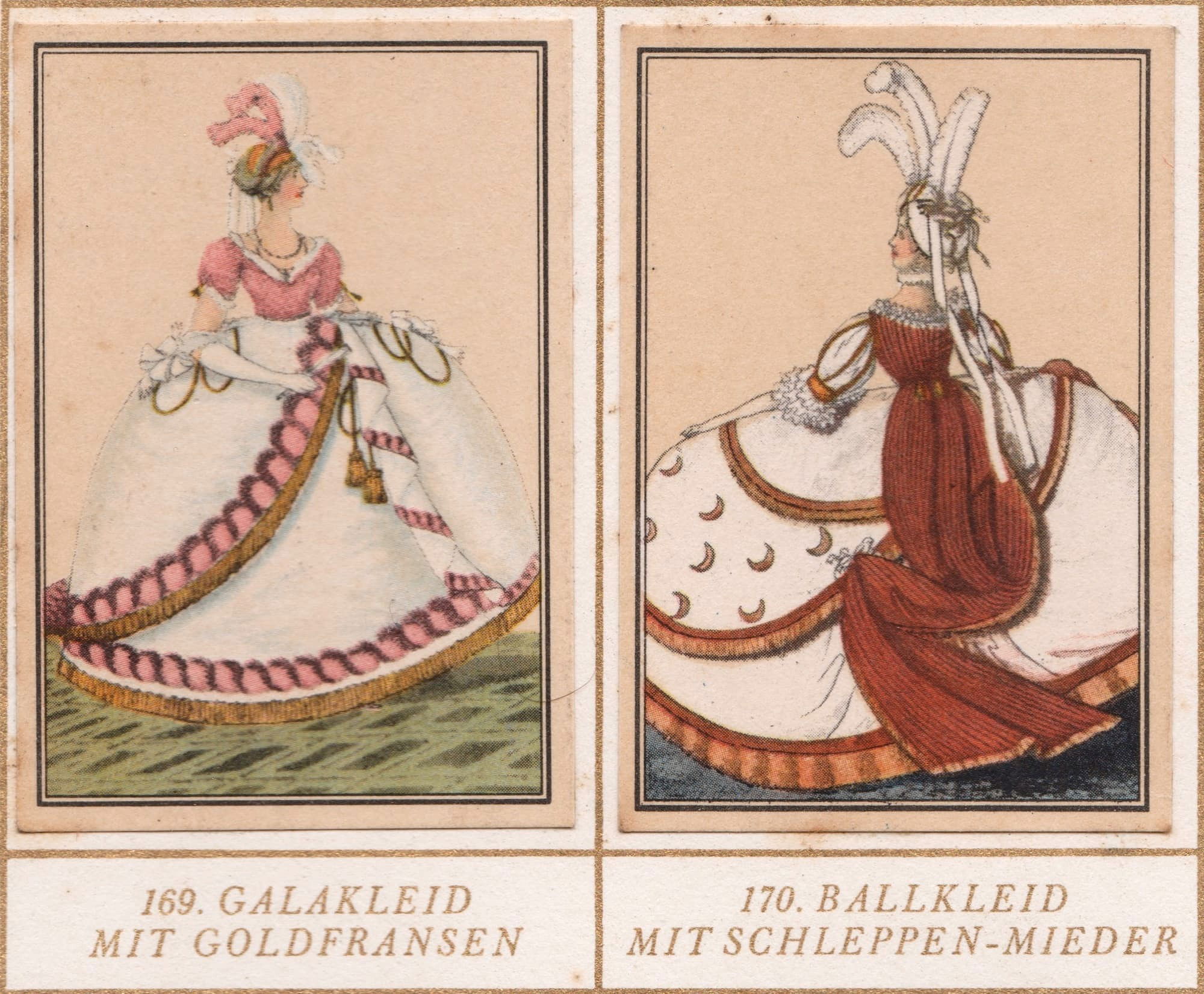
FASHION PICTURES FROM FOUR CENTURIES 1500-1900 (1933)
(personal collection)
169. GALA DRESS WITH GOLD FRINGES
This figurine depicts a gala dress with gold fringes. The dress is characterized by a fine fabric and elaborate details, typical of the fashion of Marie Antoinette's time. The gold fringes add a touch of luxury and opulence to the dress, making it suitable for formal occasions and court ceremonies.
170. BALLKLEID MIT SCHLEPPEN-MIEDER
This figurine shows a ball gown with a train bodice. The dress is decorated with embroidery and fine details, reflecting the elegance and sophistication of eighteenth-century fashion. The train bodice adds an element of drama and style to the dress, making it perfect for dance nights and social events.
The "reifrock" (circle underskirt) now took on increasing dimensions and widened especially on the hips, while the front and back were covered with bands of ribbons and bows of garlands and decorated at the edges with lace and ribbons. The "reifrock" was worn freely as state dress at court, but its influence extended far beyond the borders of France, reaching the courts of Vienna, London and St. Petersburg and even beyond the beginning of the Revolution.
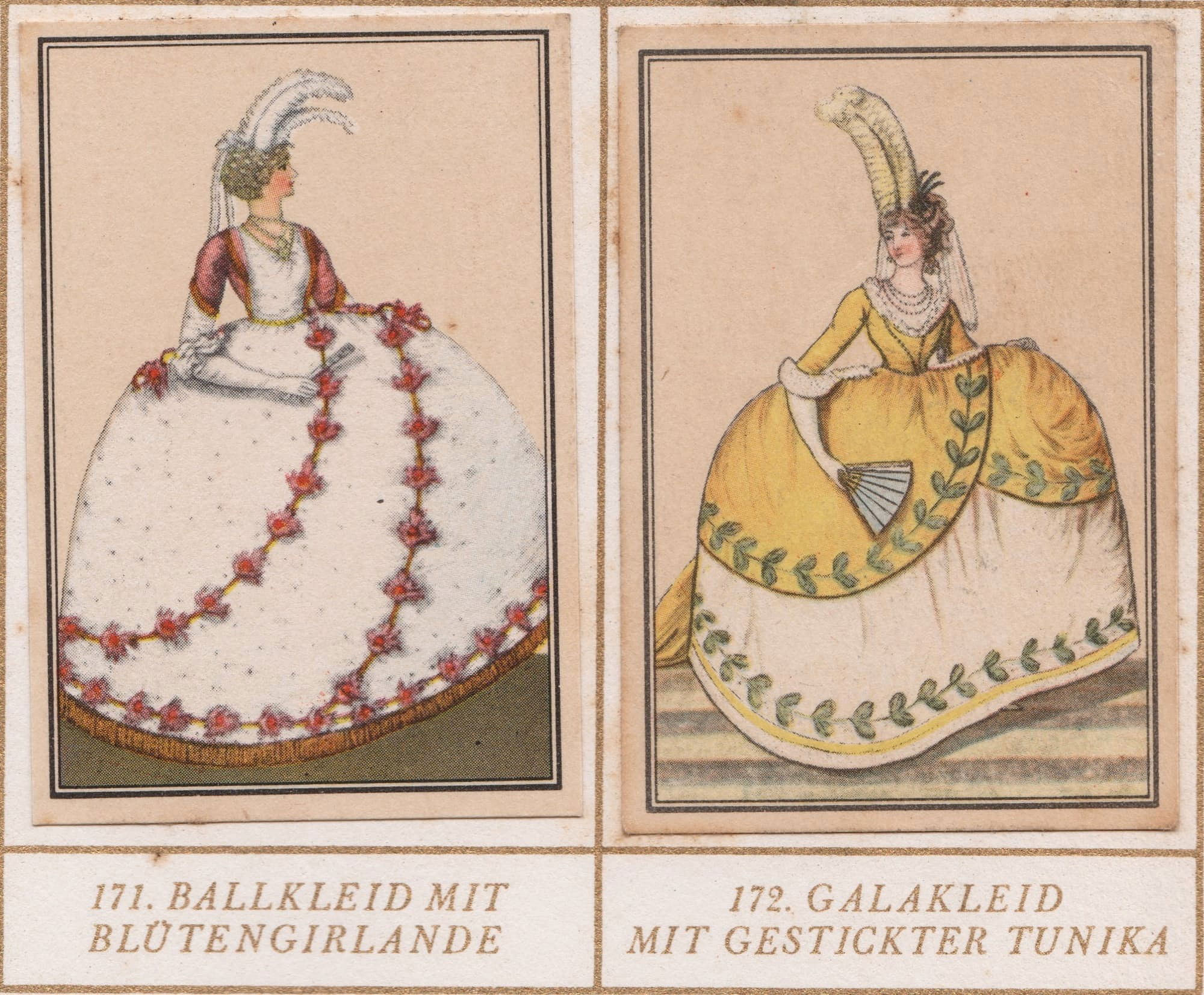
FASHION PICTURES FROM FOUR CENTURIES 1500-1900 (1933)
(personal collection)
171. BALL GOWN WITH FLOWER GARLAND
This figurine depicts a ball gown decorated with a garland of flowers. The dress is characterized by a fine fabric and floral details, typical of the fashion of Marie Antoinette's time. The flower garland adds a touch of elegance and sophistication to the dress, making it suitable for dance nights and social events.
172. GALAKLEID MIT GESTICKTER TUNIKA
This figurine shows a gala dress with an embroidered tunic. The dress is decorated with elaborate embroidery and fine details, reflecting the opulence and complexity of eighteenth-century fashion. The embroidered tunic adds an element of luxury and style to the dress, making it perfect for formal occasions and court ceremonies.
The bourgeois direction of the new fashion, which had already made itself known in hairstyles, soon spread to the court as well. Even noble ladies now preferred looser clothing, the so-called "negligé", which sacrificed the rigid wasp waist.

FASHION PICTURES FROM FOUR CENTURIES 1500-1900 (1933)
(personal collection)
121. PEASANT STYLE BALL GOWN
The first illustration on the left depicts a peasant-style ball gown, with a fitted bodice and a loose skirt with pink stripes.
126. LADY IN CLOTH DRESS AND TAFFETA SKIRT
The second illustration shows a woman in a cloth dress and taffeta skirt, with a wide-brimmed hat and a green parasol.
This dress was often closed at the front in a masculine way, worn over a women's tailcoat, called a "caraco", with cuffs on the chest, long and narrow sleeves and two short skirts. Underneath, the skirt gradually narrowed and formed a drooping crease at the back, which could also be released with laces.
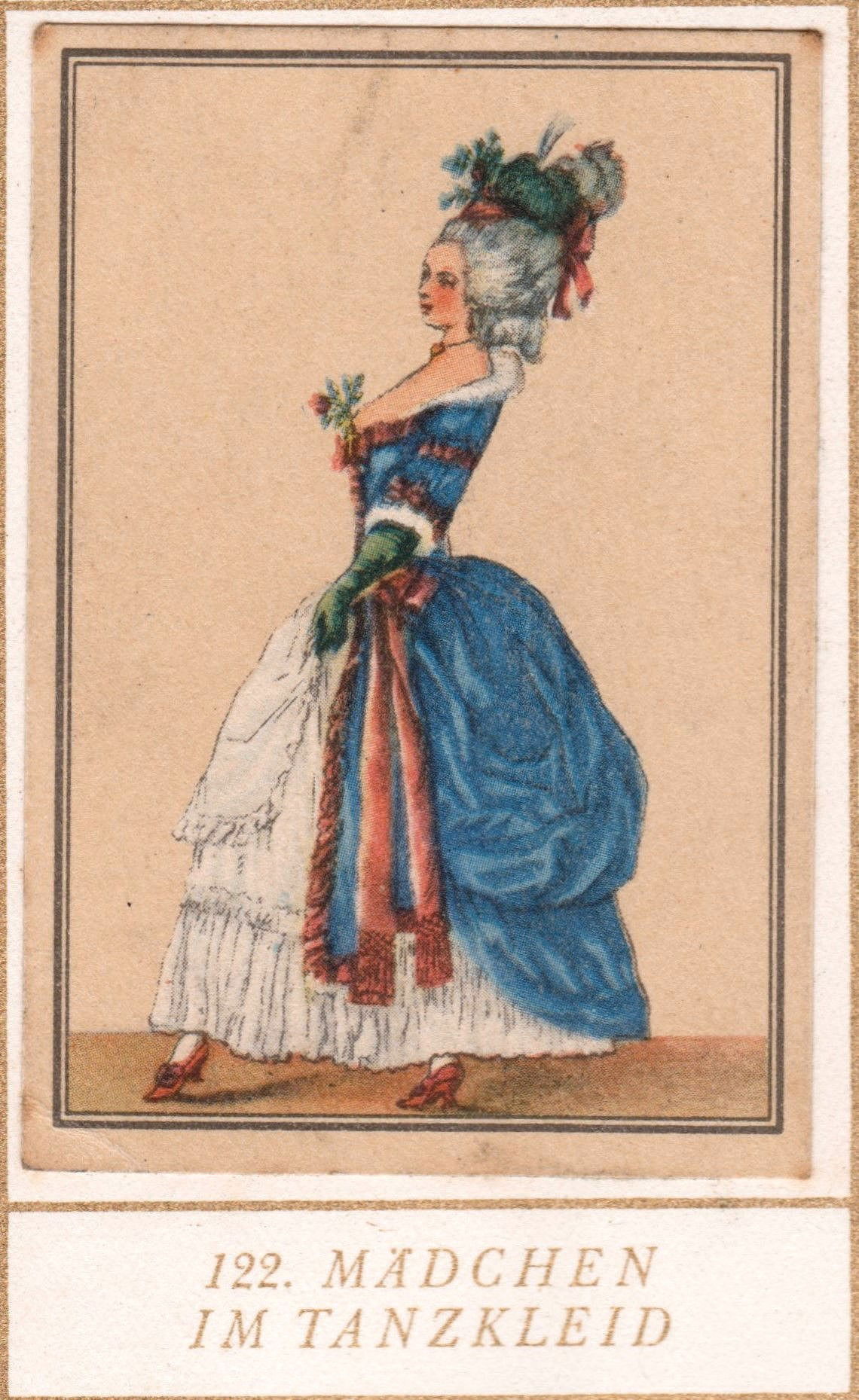
FASHION PICTURES FROM FOUR CENTURIES 1500-1900 (1933)
(personal collection)
122. GIRL IN DANCE DRESS
The card shows a lady dressed in an elaborate dance costume. The costume features a blue dress, green gloves, and red shoes, and the head is adorned with a headdress with feathers and flowers.
The distinctive feature of this dress was the neck and chest, which with the entry of the gallant rococo became more accentuated, requiring for bourgeois fashion a "fichu" (handkerchief) on the chest, which was placed over the chest and subsequently inflated up to the chin.
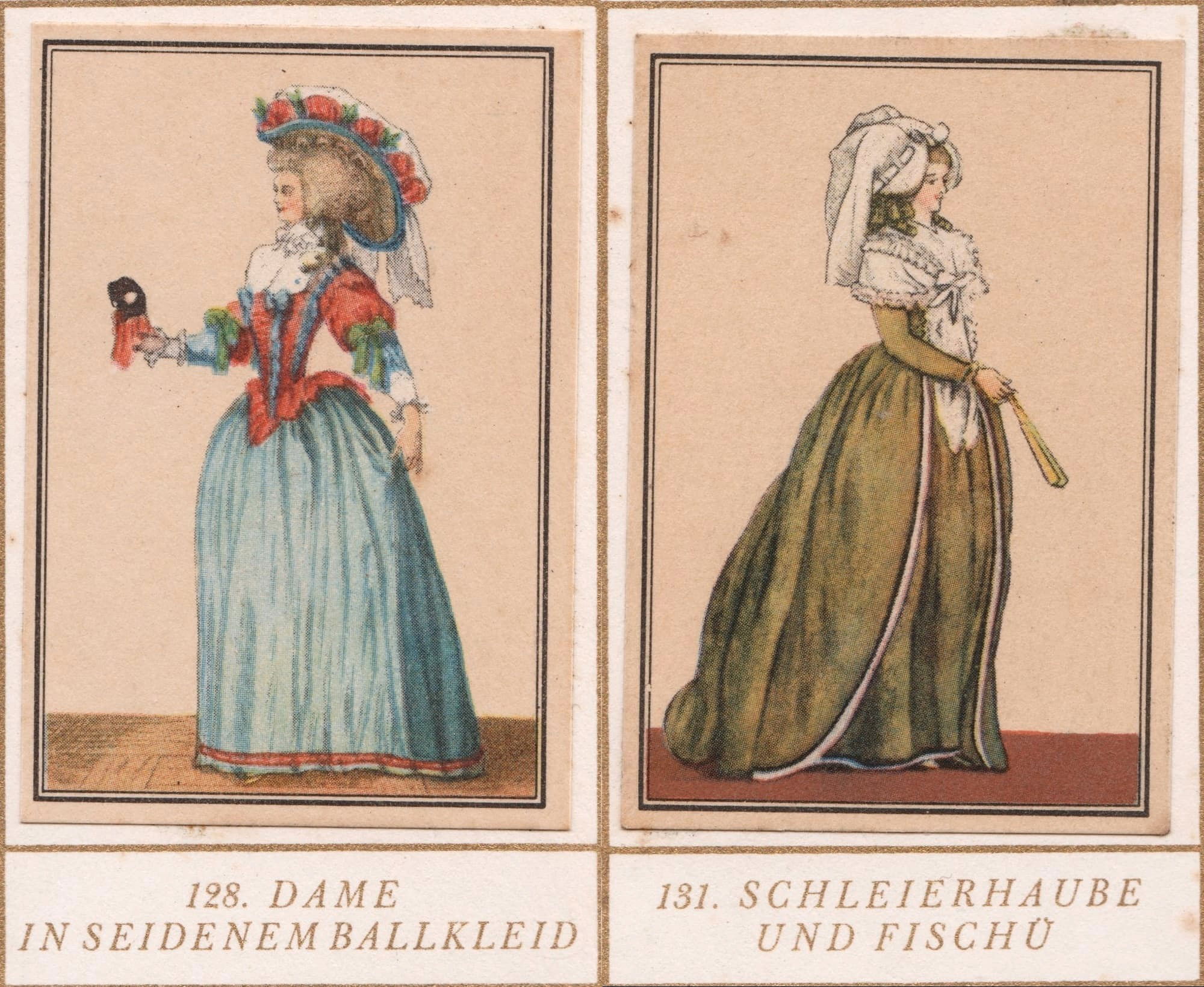
FASHION PICTURES FROM FOUR CENTURIES 1500-1900 (1933)
(personal collection)
128. LADY IN SILK BALL GOWN
The first illustration depicts a woman in a silk ball gown with a hat decorated with flowers.
131. VEIL HOOD AND FISH
The second illustration shows a woman in a green dress with a veiled hat and a fan in her hand.
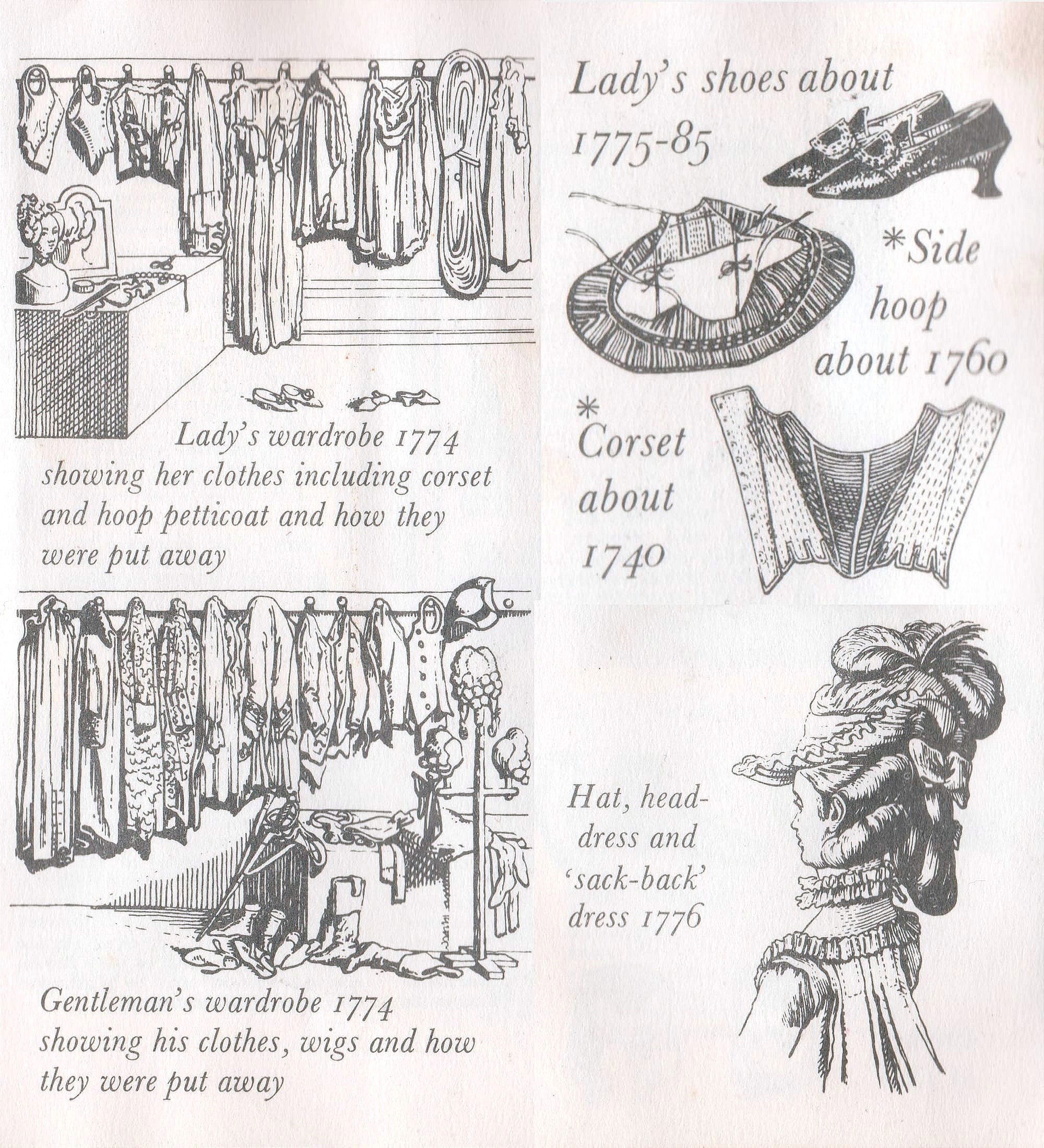
Estratto dall'album British Costume - BROOKE BOND PICTURE CARDS
The image shows various elements related to eighteenth-century clothing. In the upper left, there is an illustration of a woman's wardrobe from 1774, showing her clothes, including a corset and a hoop underskirt, and how they were stored. On the lower left, there is an illustration of a man's wardrobe from 1774, showing his clothes, wigs and how they were stored. On the upper right, there are illustrations of women's shoes circa 1775–85, a side circle circa 1760, and a corset circa 1740. On the lower right, there is an illustration of a hat, hairstyle, and "sack-back" dress from 1776. These elements are interesting because they provide a detailed insight into eighteenth-century fashion and clothing practices.
The bourgeois character of the clothing was further emphasized by the inclusion of details that belonged to the clothes of the lower classes. The "soubrette" (maid) with her decorated hat, short skirt and flirtatious apron became the big fashion. The straw hat and walking dress gave it a rural touch. The innovations in men's clothing of that time were also decisive.
The period between 1939 and 1948 was fundamental for the evolution of cinematography, especially with regard to the design and use of costumes, which took on an increasingly central role in the visual narrative of films.
GONE WITH THE WIND
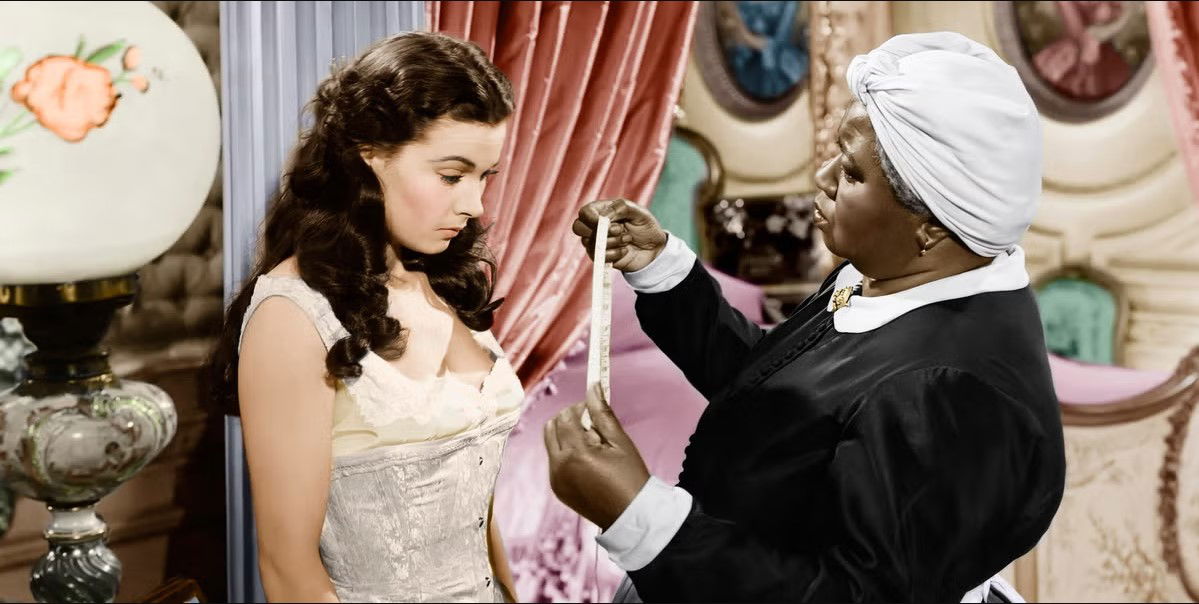
Scene from the Movie
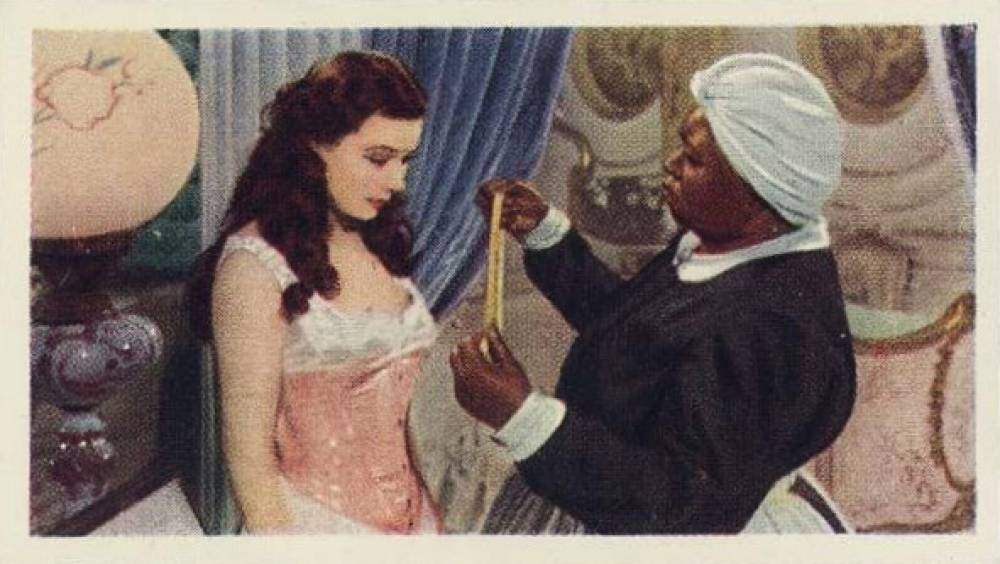
Card n.180 CINEMA CAVALCADE - A. & M. WIX (1940)
1939 is often celebrated as a pinnacle of classic cinema. In "Gone with the Wind", the costumes designed by Walter Plunkett accurately reflected the fashion of the South of the United States during the Civil War.
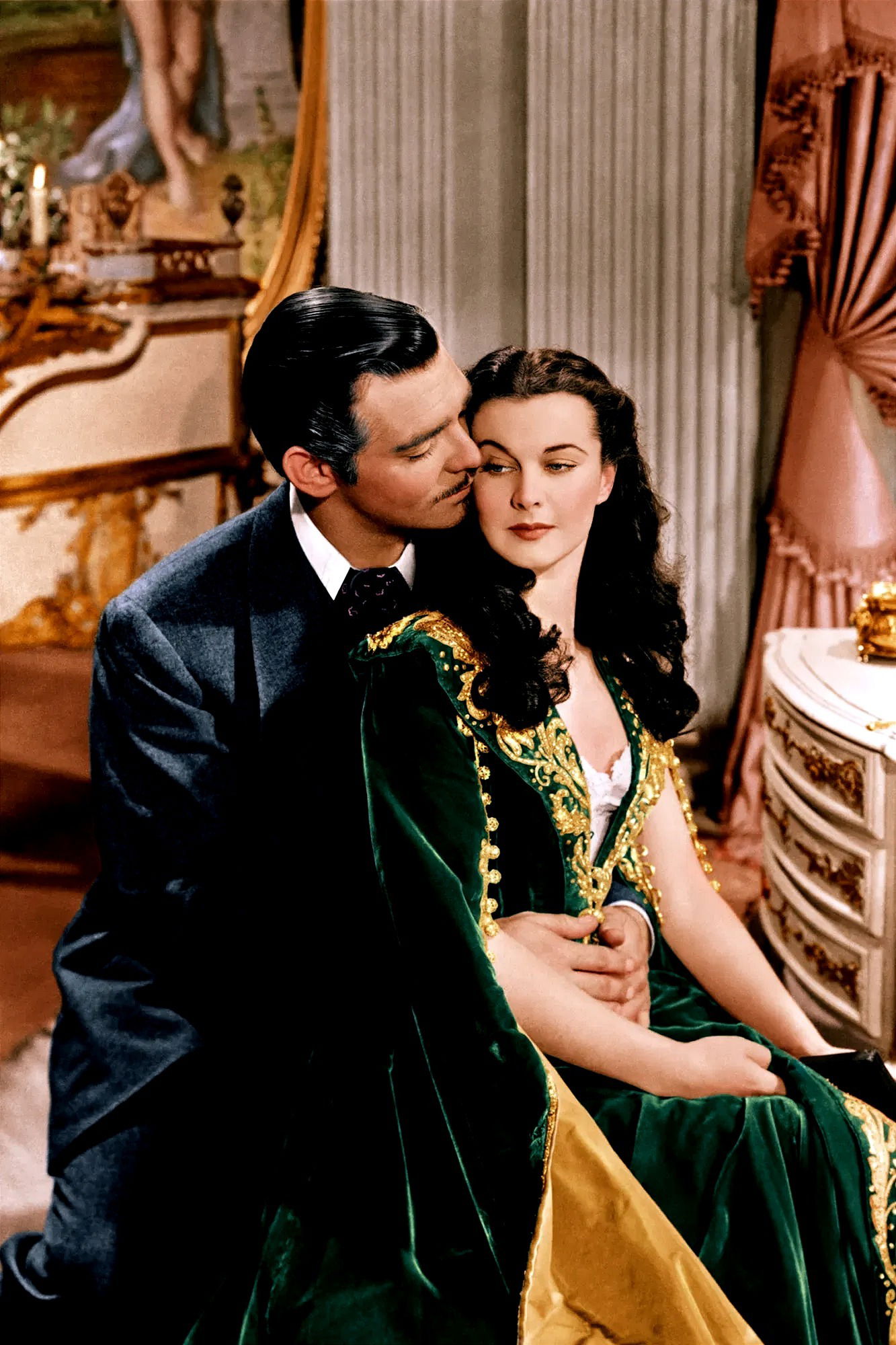
Scene from the Movie
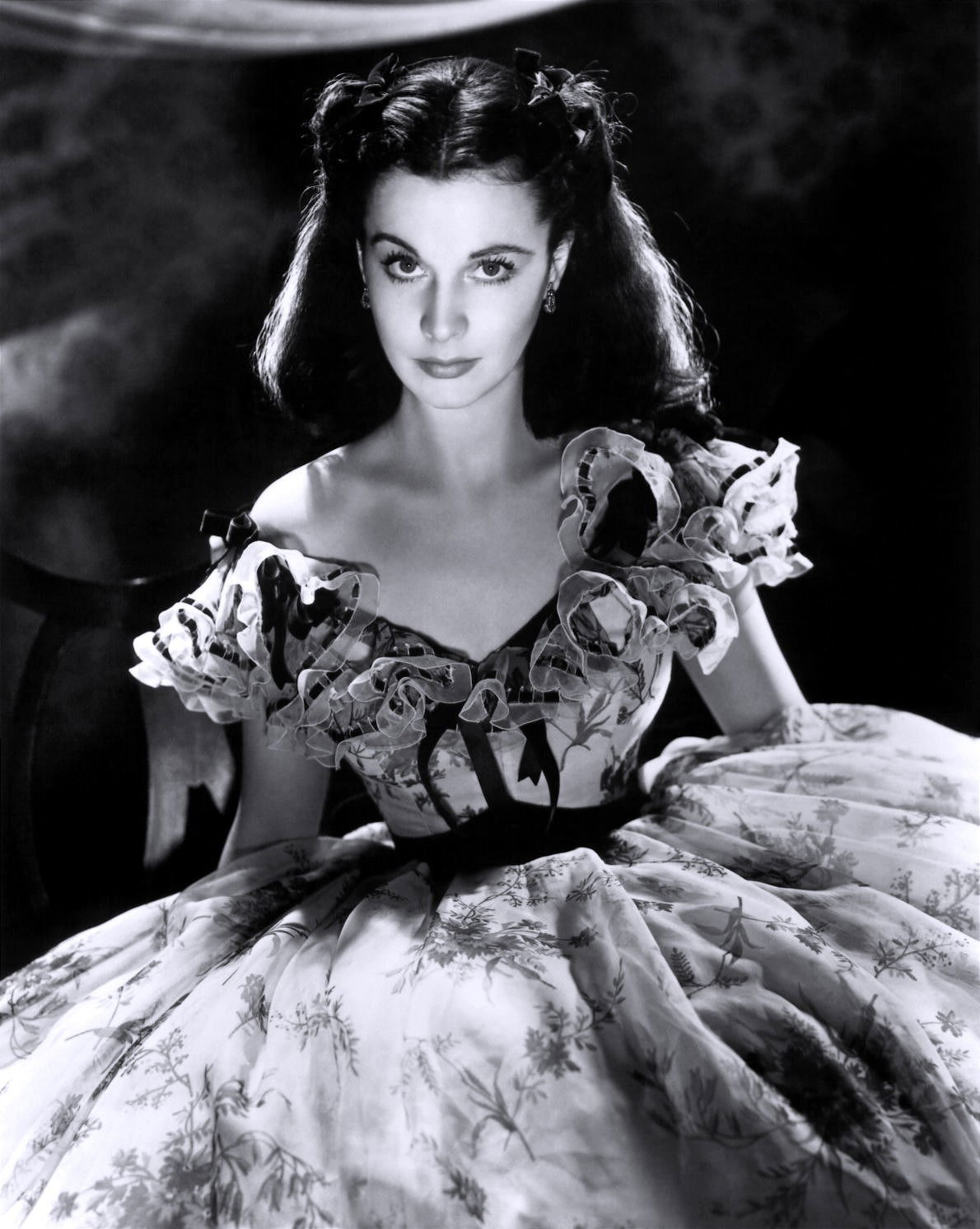
"Courtesy of the site doctormacro.com"
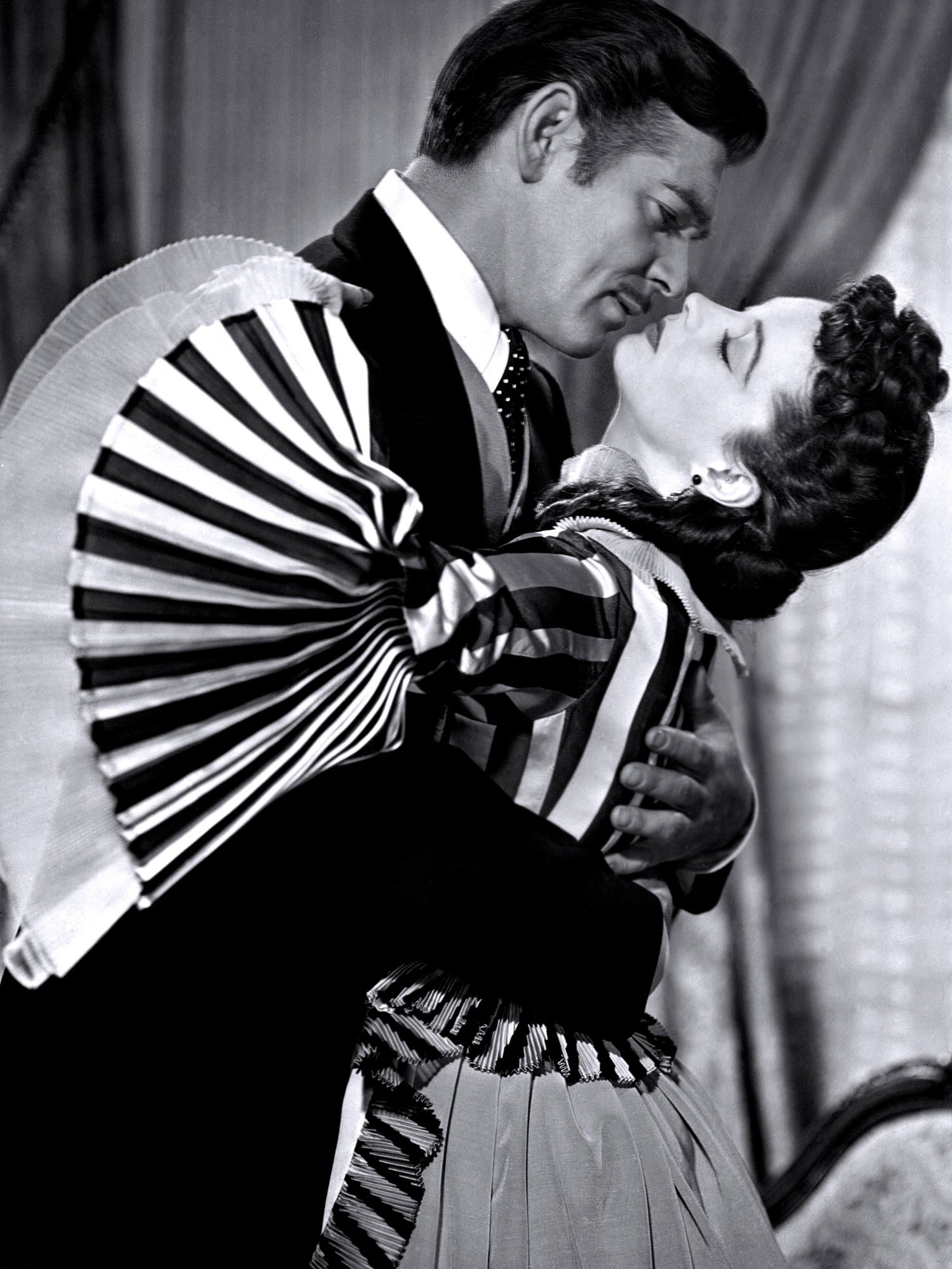
"Courtesy of the site doctormacro.com"
Walter Plunkett's original sketches for the film "Gone with the Wind" represent a masterpiece of design and creativity in the world of cinema. Plunkett, one of Hollywood's most celebrated costume designers, has been able to capture the essence of the characters and the historical period through his detailed and accurate drawings.
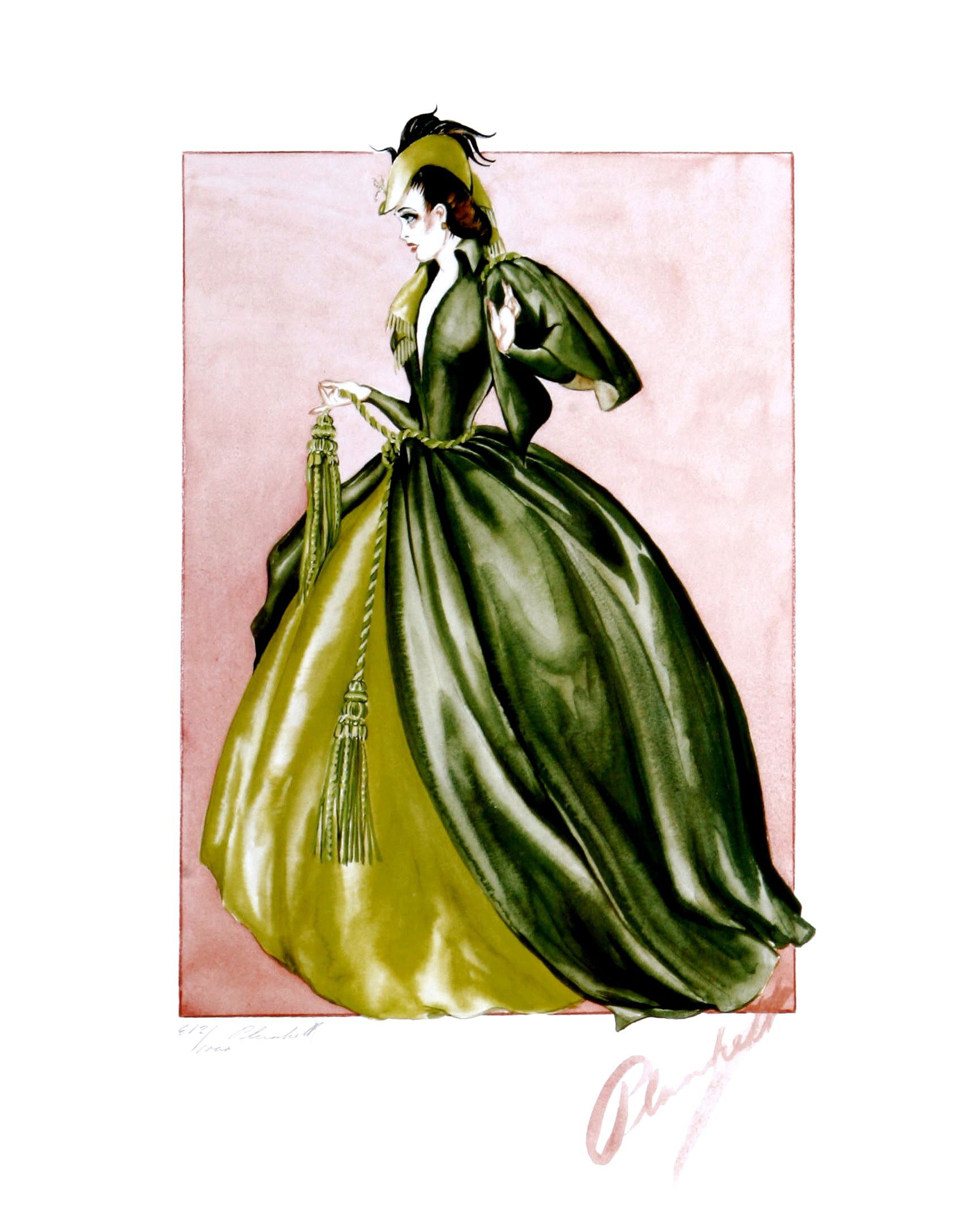
"Courtesy of the site doctormacro.com"
Among the most iconic costumes created by Plunkett, we find Scarlett O'Hara's green dress, made with curtains. This dress has become a symbol of resilience and ingenuity, representing Scarlett's determination to overcome adversity. Each sketch reflects Plunkett's artistry and his enduring contribution to the world of cinema.
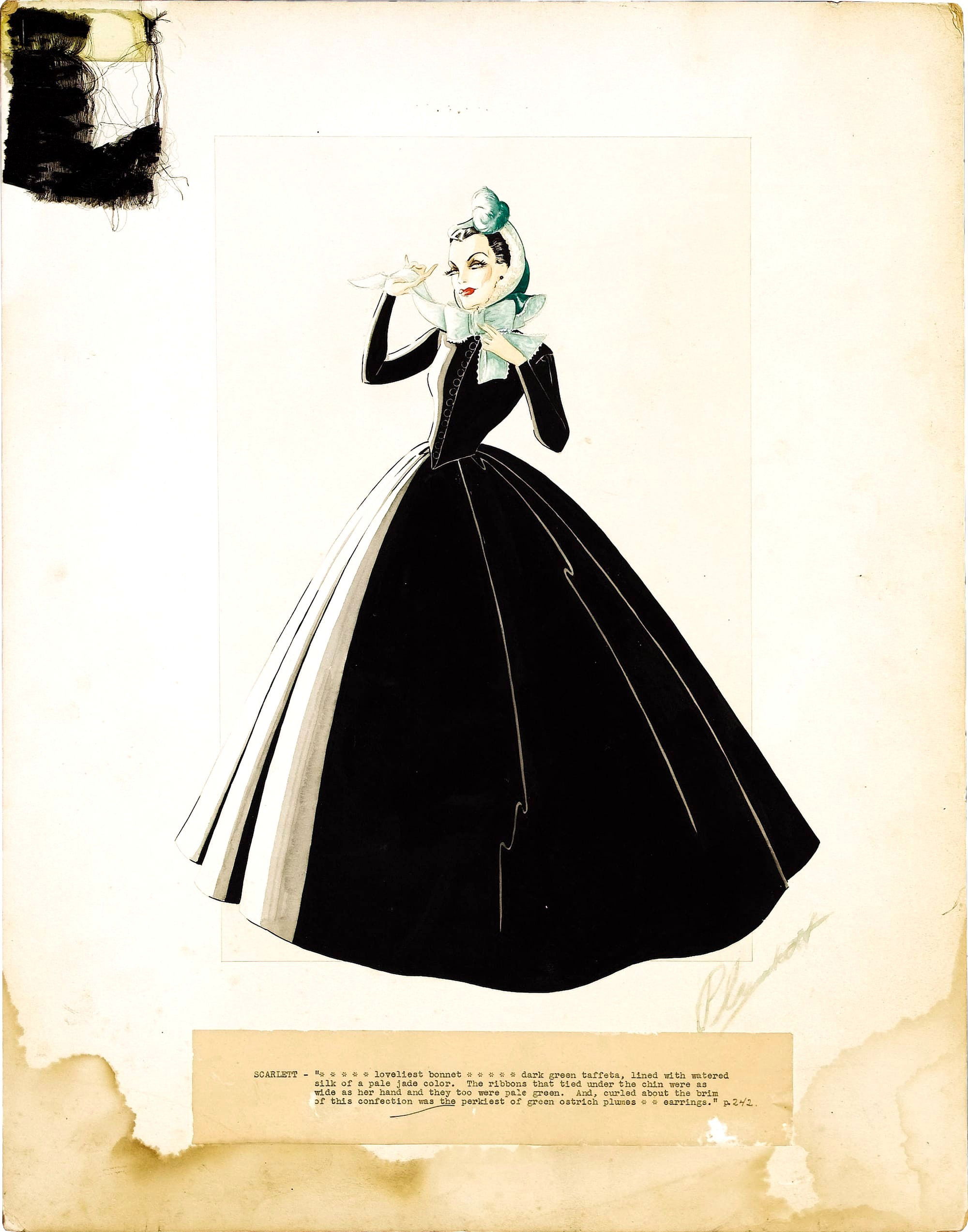
"Courtesy of the site doctormacro.com"

"Courtesy of the site doctormacro.com"
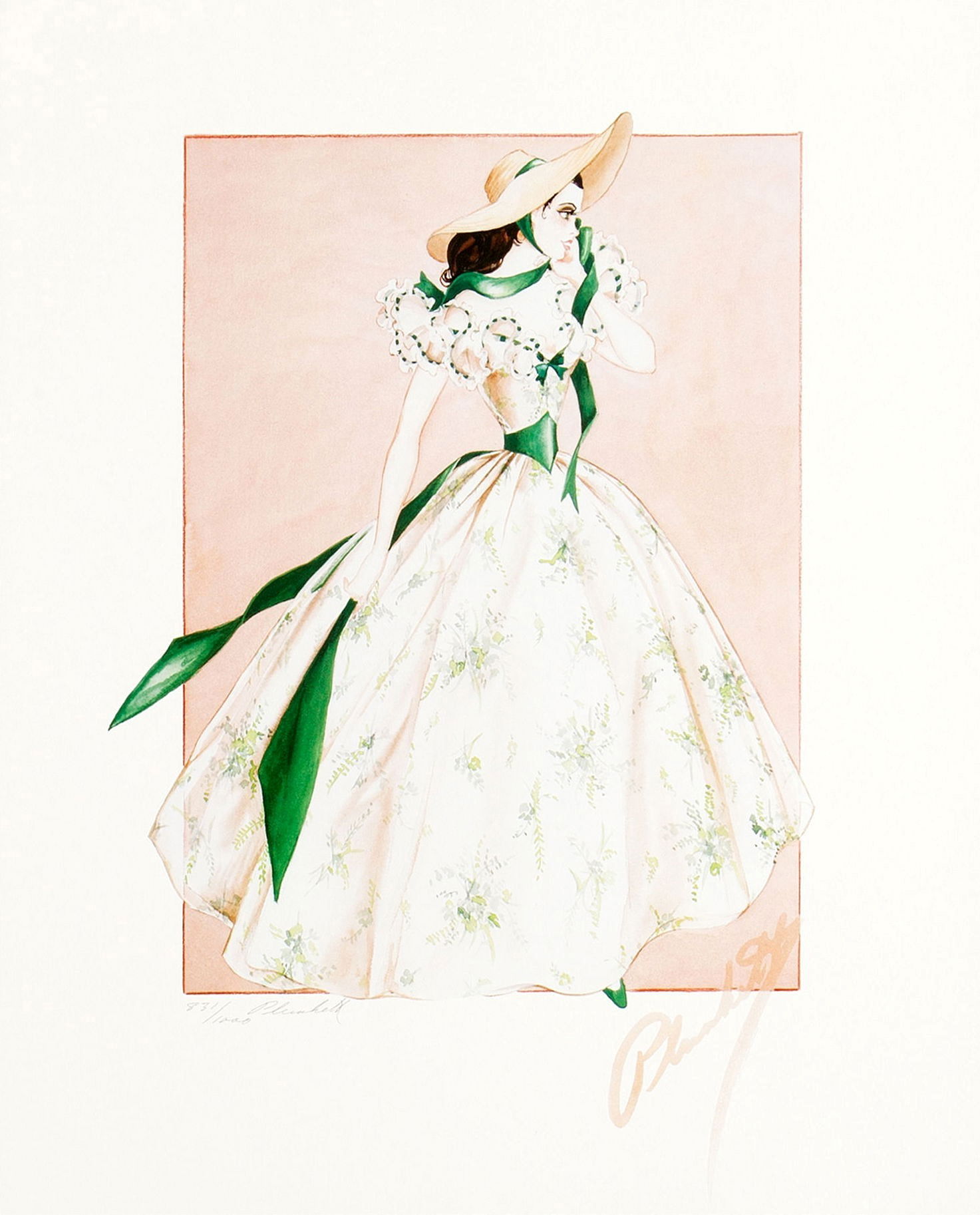
"Courtesy of the site doctormacro.com"
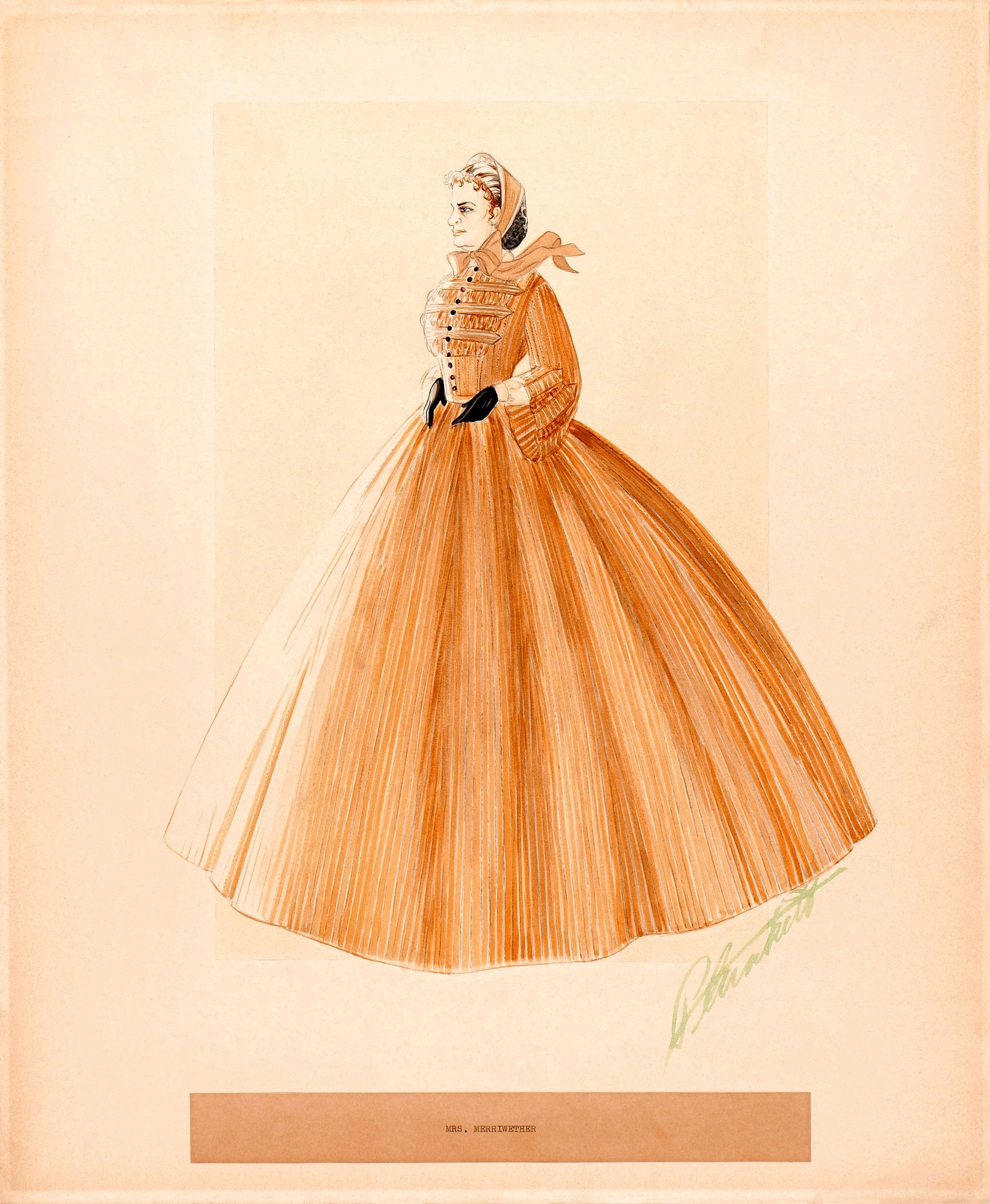
"Courtesy of the site doctormacro.com"
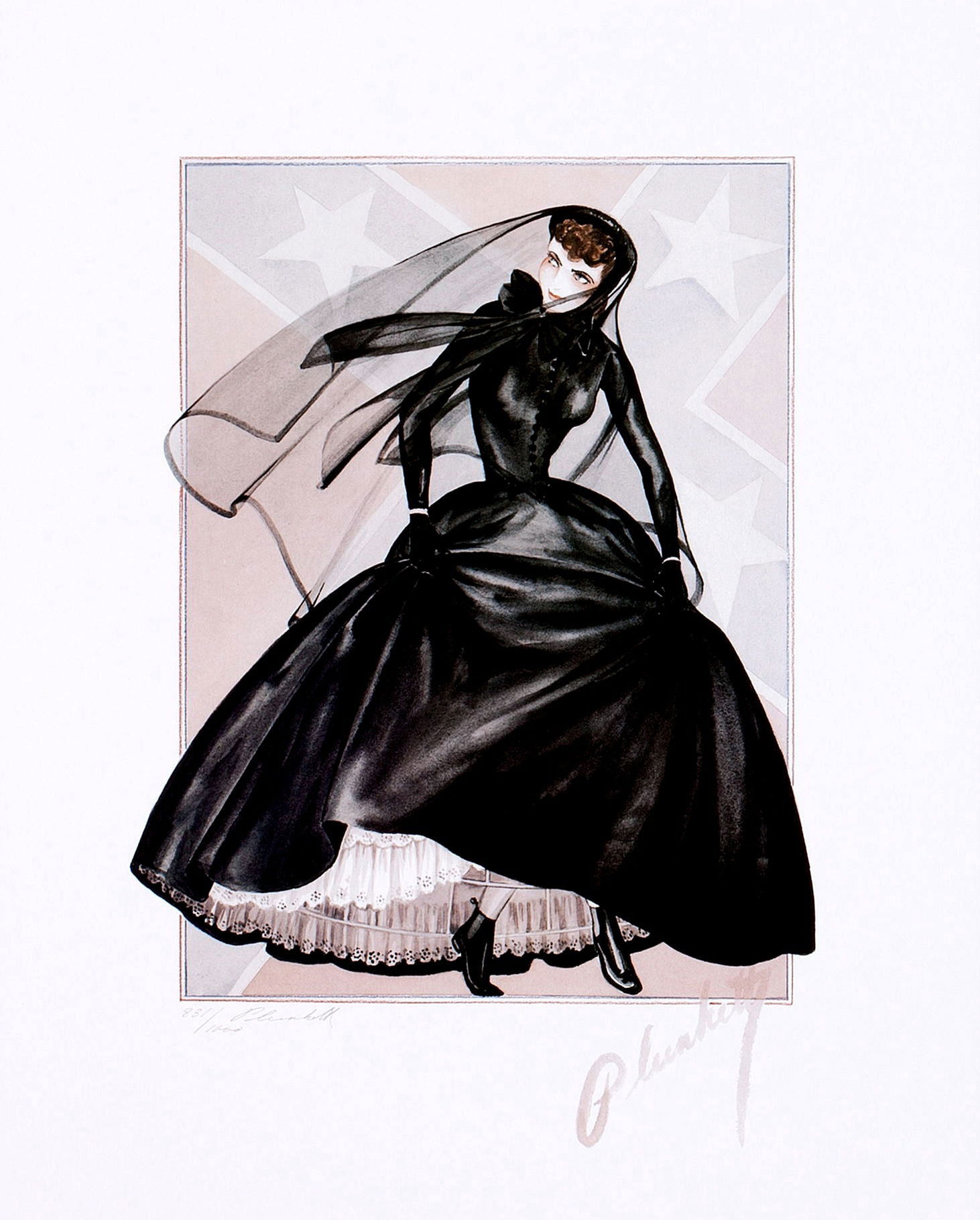
"Courtesy of the site doctormacro.com"
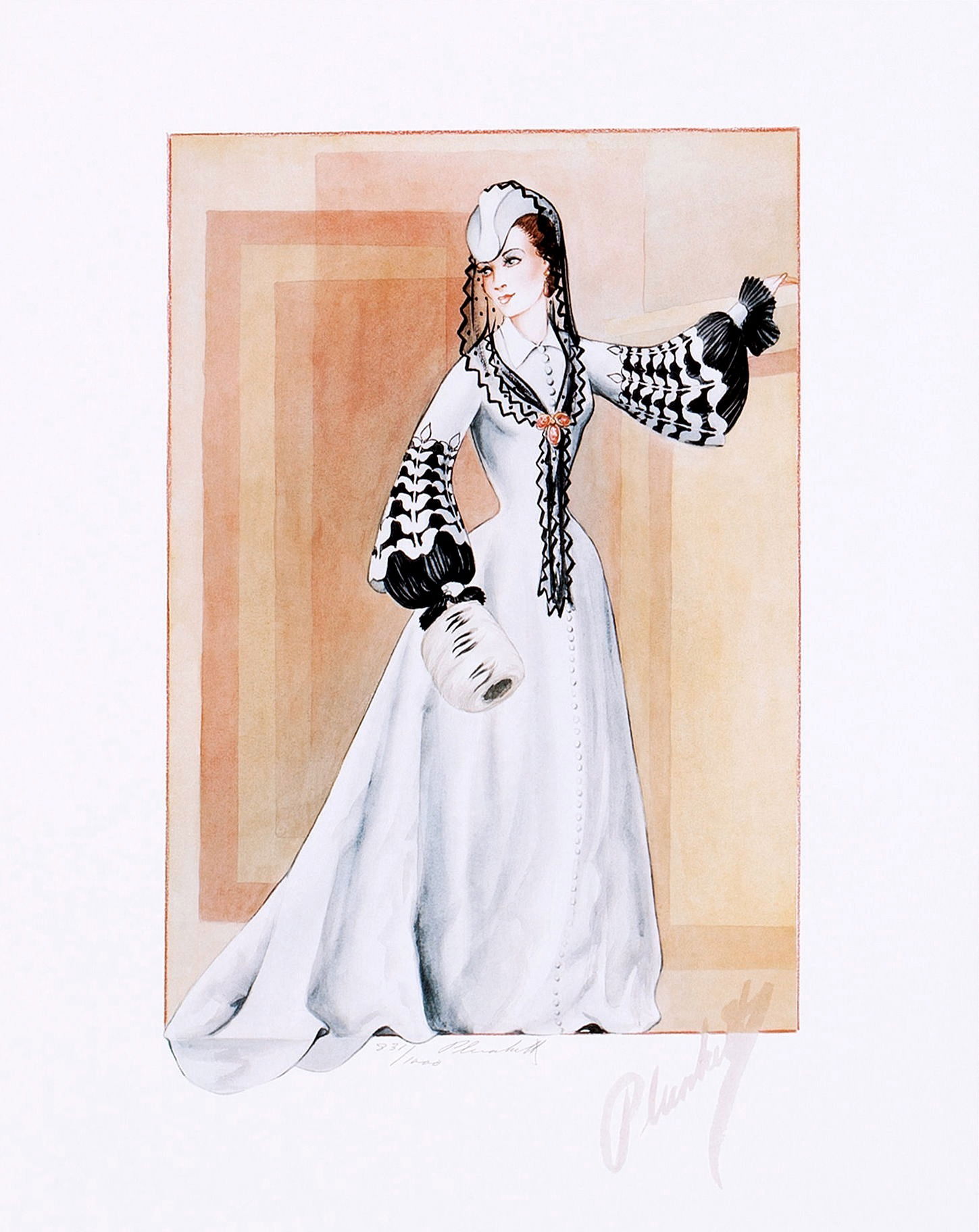
"Courtesy of the site doctormacro.com"
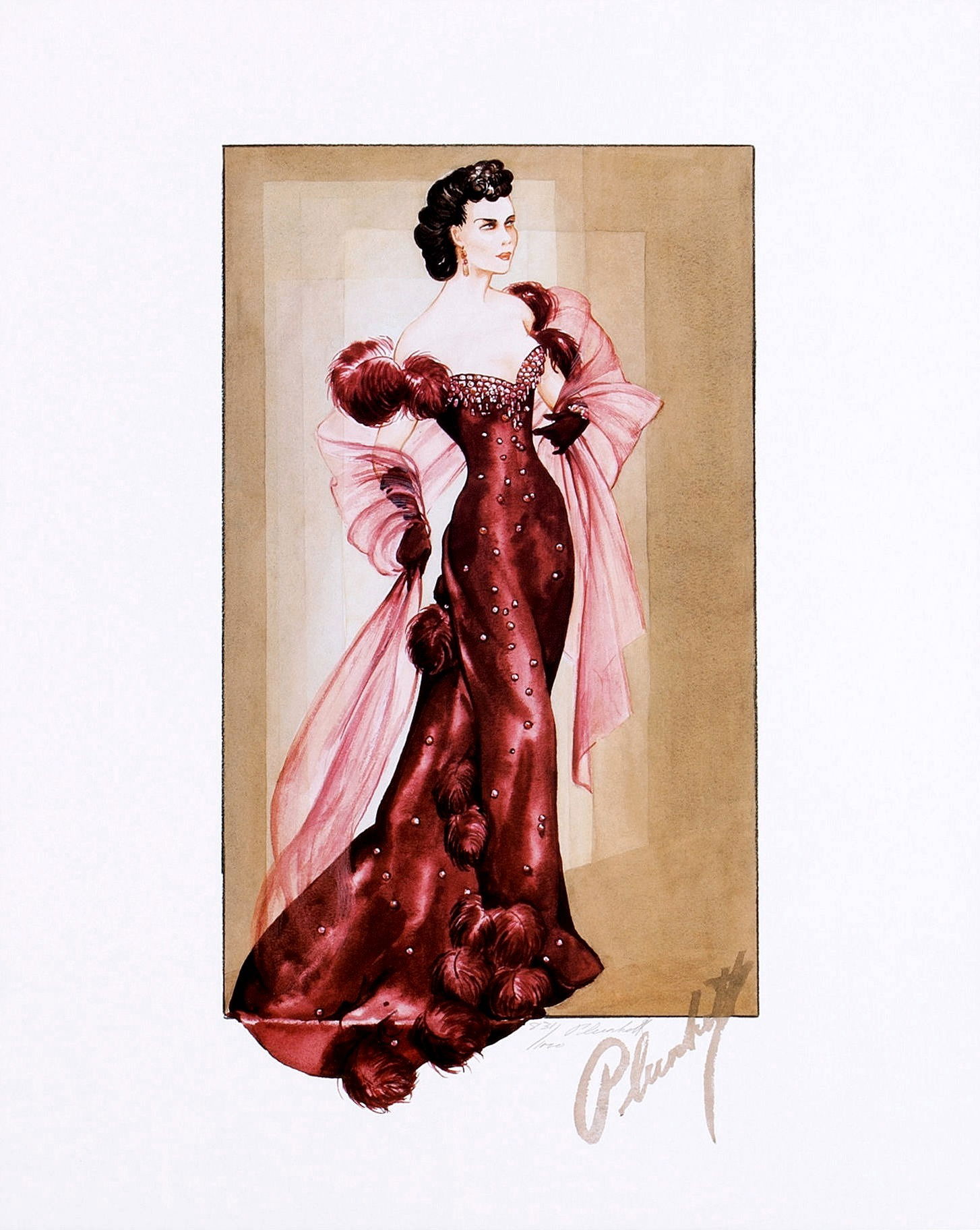
"Courtesy of the site doctormacro.com"
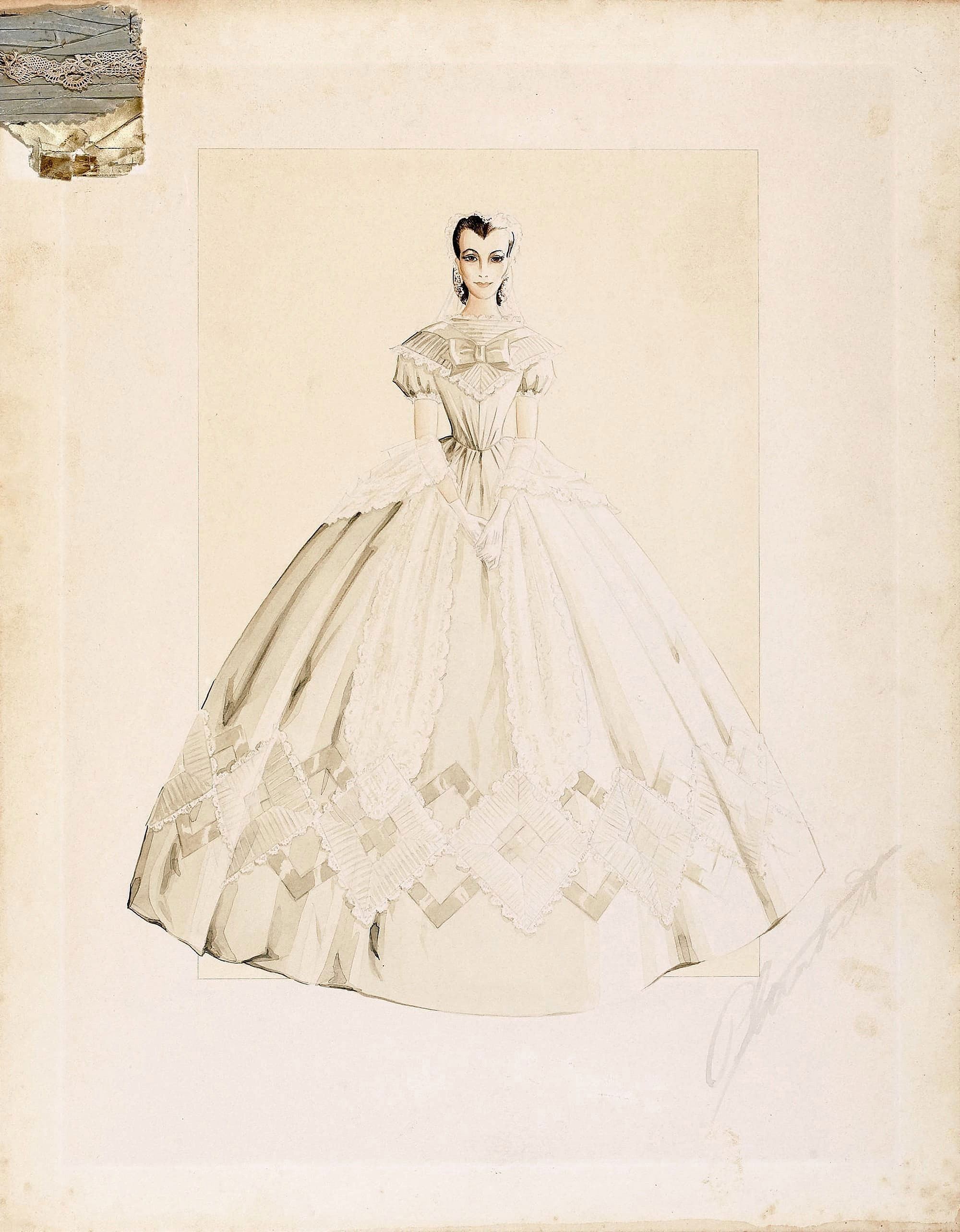
"Courtesy of the site doctormacro.com"

"Courtesy of the site doctormacro.com"
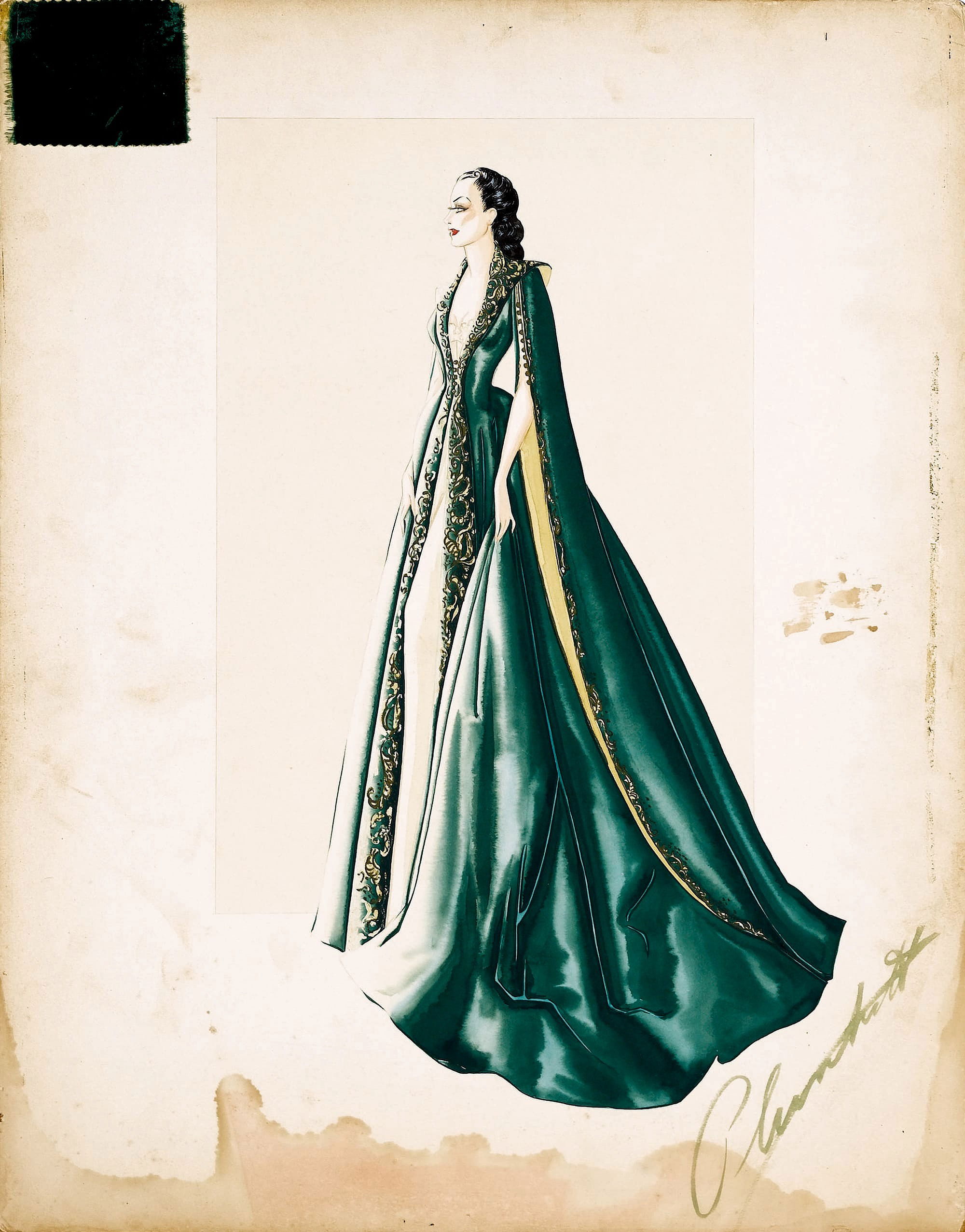
"Courtesy of the site doctormacro.com"
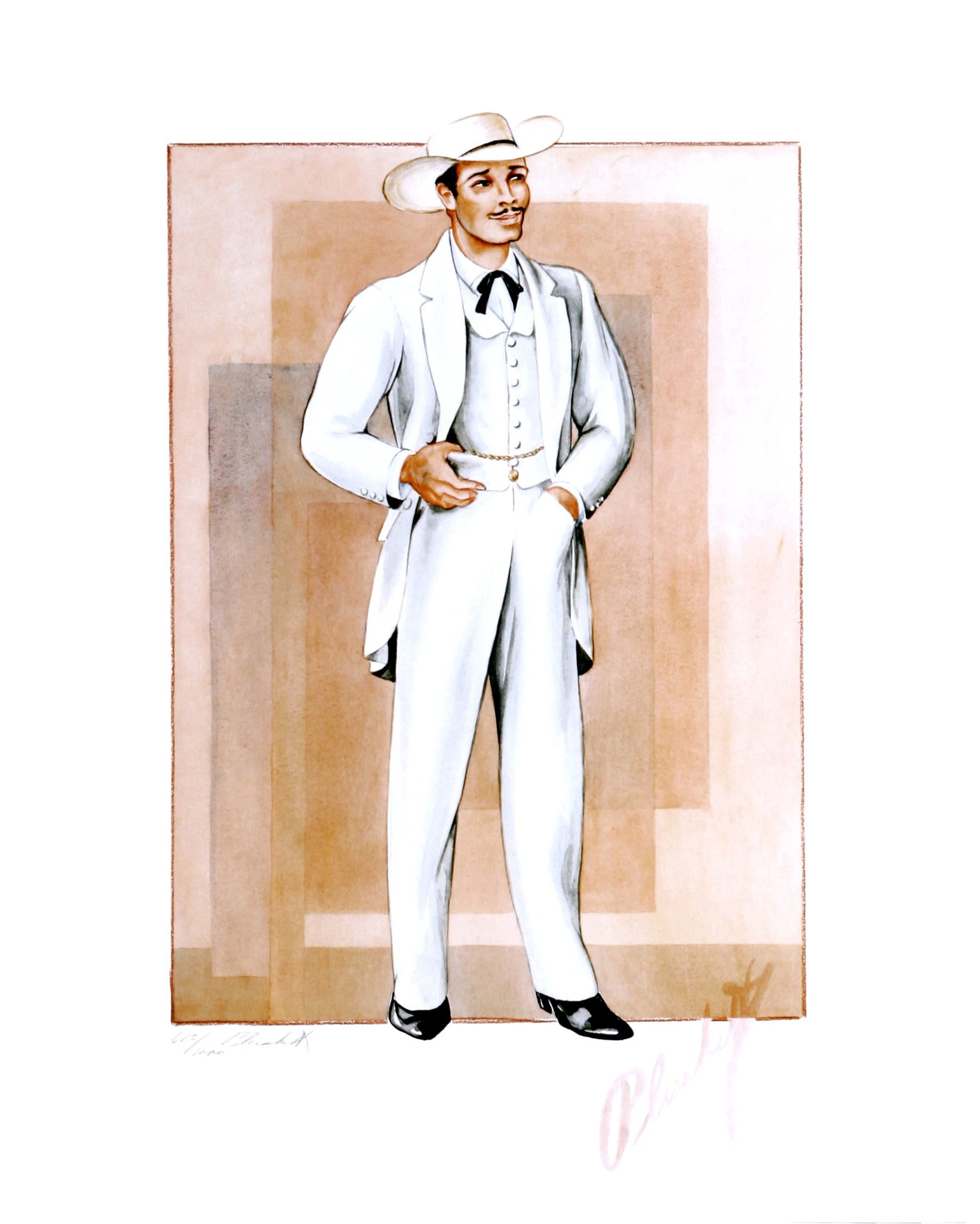
"Courtesy of the site doctormacro.com"
Walter Plunkett's mastery of costume design for the film classic "Gone with the Wind" continues to be celebrated for its extraordinary attention to detail and narrative impact. With a budget of around $98,000 dedicated exclusively to the women's wardrobe, Plunkett created a sartorial legacy that became an integral part of the film's cultural fabric.
The costume designer produced four copies of each dress for Vivien Leigh, ensuring not only visual continuity but also the ability to meet the challenges of film production. In total, 110 costumes were created for the four protagonists, as well as 5,000 garments for the 59 main characters and thousands of outfits for the extras, transforming each scene into a tableau vivent from the American Civil War era.
Each costume has been carefully chosen to reflect the evolution of the characters. For Scarlett O'Hara, Plunkett used fabrics such as organza, tulle and cotton in the first part of the film to emphasize her youth and lightheartedness. As the weave developed, silk and velvet reflected Scarlett's growing social status and inner transformation, going through several marriages.
The colors of the costumes were symbolic: white for innocence, green for hope, and scarlet red for passion and shame. The world-famous "Curtain Dress" was a masterpiece of ingenuity, created with Tara's curtains to represent Scarlett's determination to survive and thrive in the face of adversity.
The black mourning dresses were bold for the time, emphasizing not only the loss but also Scarlett's resilience. The red and white Christmas dress, on the other hand, brought a festive touch to a time of historical tension. And with her marriage to Frank Kennedy and then Rhett Butler, Scarlett's costumes reflected her shift to a life of luxury and complexity.
Although Rhett Butler's costumes were partly entrusted to Clark Gable's personal tailor, Eddie Schmidt, for a better fit, Plunkett's influence on the overall style of the film remains undisputed.
"Gone with the Wind" is not just a chapter in the history of cinematic costume, but a lesson in how design can tell a story just as powerful as written words.
These drawings are not only works of art, but also pieces of history that allow us to appreciate the creative process behind one of the most beloved films of all time. Through Plunkett's concept art, we can see how the costumes played a vital role in bringing the characters to life and transporting the audience to the era of the American Civil War.
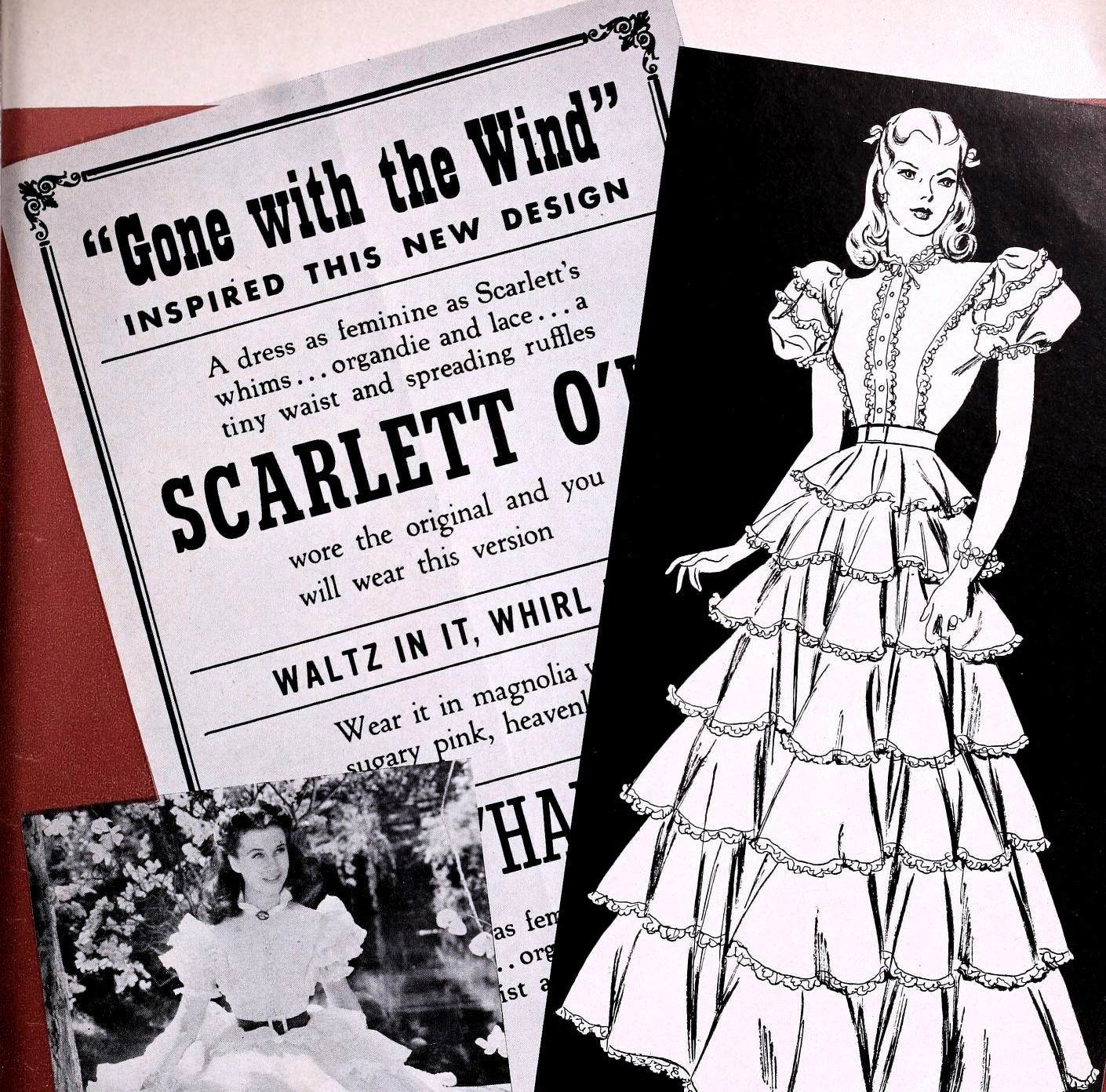
"Courtesy of the Media History Digital Library"
Pag. n.59 del Periodico Glamour of Hollywood (Apr 1940)
The image shows an advertisement inspired by the movie "Gone with the Wind". The advertisement promotes a new women's dress design, described as "as feminine as Scarlett's whims... organza and lace... a thin waist and widespread ruffles". The dress is called "Scarlett O'Hara" and the advertisement suggests that those who wear this dress will feel like the original character from the film. The advertisement invites you to "dance in it, turn in it" and describes the dress as coming in colors such as magnolia, sugar pink and celestial white. Next to the advertisement is a drawing of the dress, showing a dress with ruffles and lace details. In addition, there is a black and white photograph of Vivien Leigh wearing the dress.
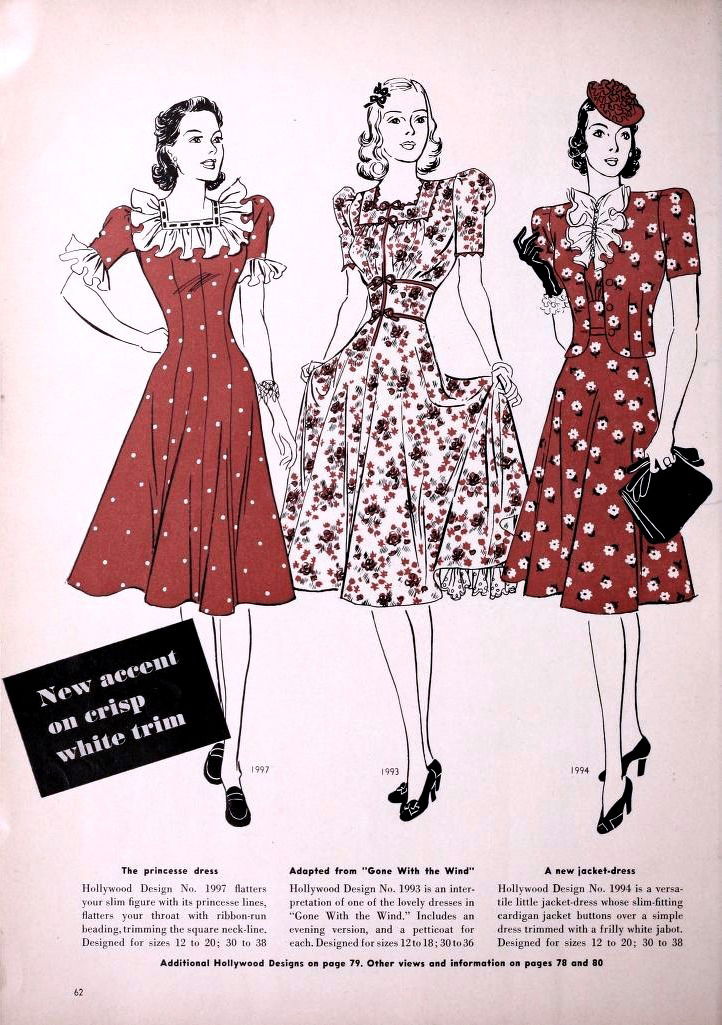
"Courtesy of the Media History Digital Library"
Pag. n.62 del Periodico Glamour of Hollywood (Apr 1940)
The center dress is created for Ready-to-Wear and is adapted from "Gone with the Wind" Hollywood Design No. 1993 is an interpretation of one of the beautiful dresses from "Gone with the Wind". Includes an evening version and a slip for each.
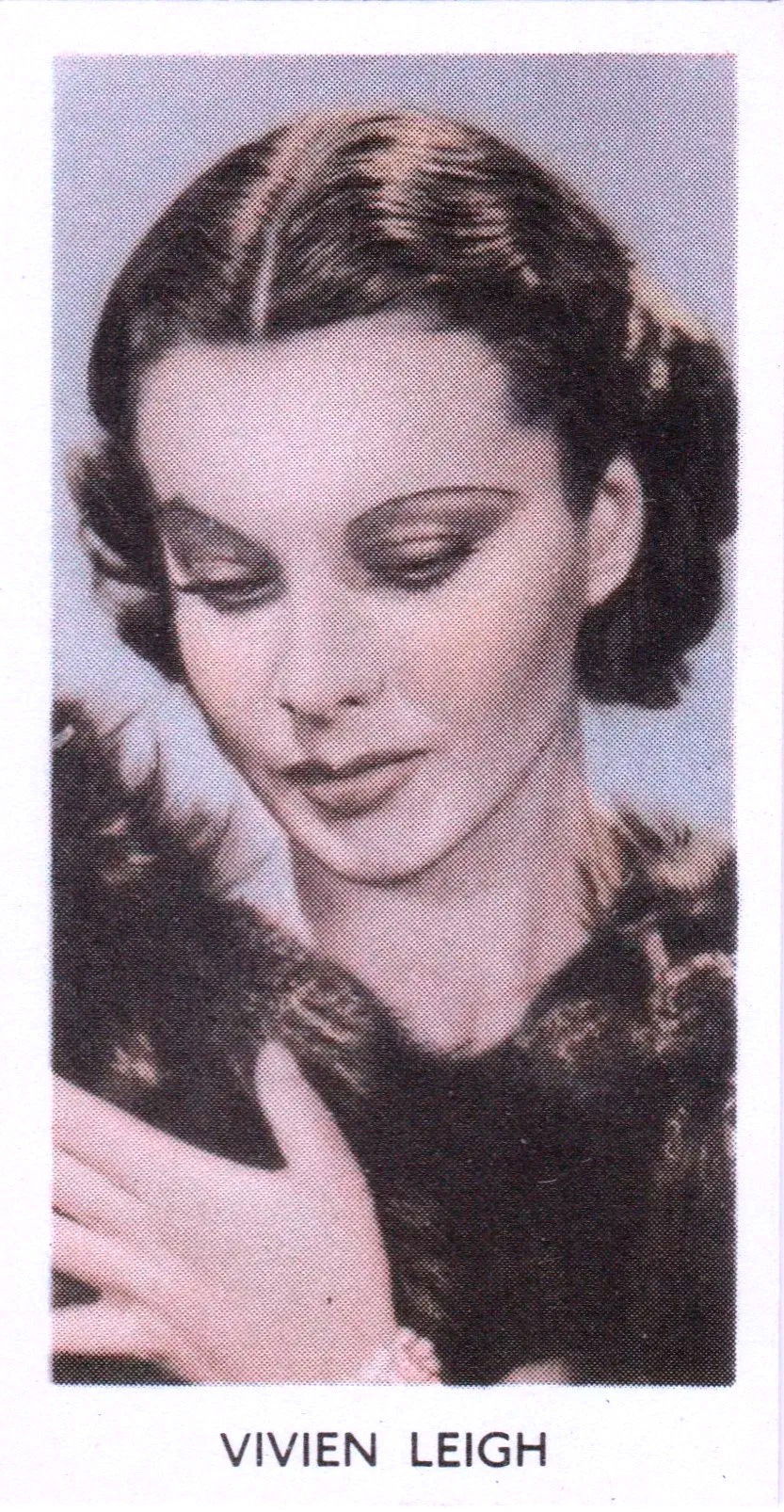
Card n.36 - SCREEN STARS
ABDULLA & Co. Ltd. (1939)
(personal collection)
In the film Vivien Leigh plays the role of Scarlett O'Hara, a young woman from the South of the United States during the Civil War and Reconstruction. Scarlett's character is known for her determination, fighting spirit, and ability to adapt to difficult circumstances. Vivien Leigh won the Academy Award for Best Actress for her performance, which has become one of the most iconic in film history.

Card n.34 della serie FAMOUS FILM STARS
CARRERAS LTD (1949) - "TURF" CIGARETTES
(personal collection)
The cards of the Famous Film Stars series printed in 1949 by Carreras Ltd. for their brand of cigarettes TURF, are considered among the most interesting and original dedicated to movie stars, as they offer an unusual and witty vision of famous people. The cards are also historical evidence of the film culture of the time. Printed directly on the inside of cigarette packs, they had to be cut carefully and then stored. In packs of twenty two cards were printed, while in packs of ten a single card, unlike other brands where the sticker was inserted inside the package.
THE WIZARD OF OZ
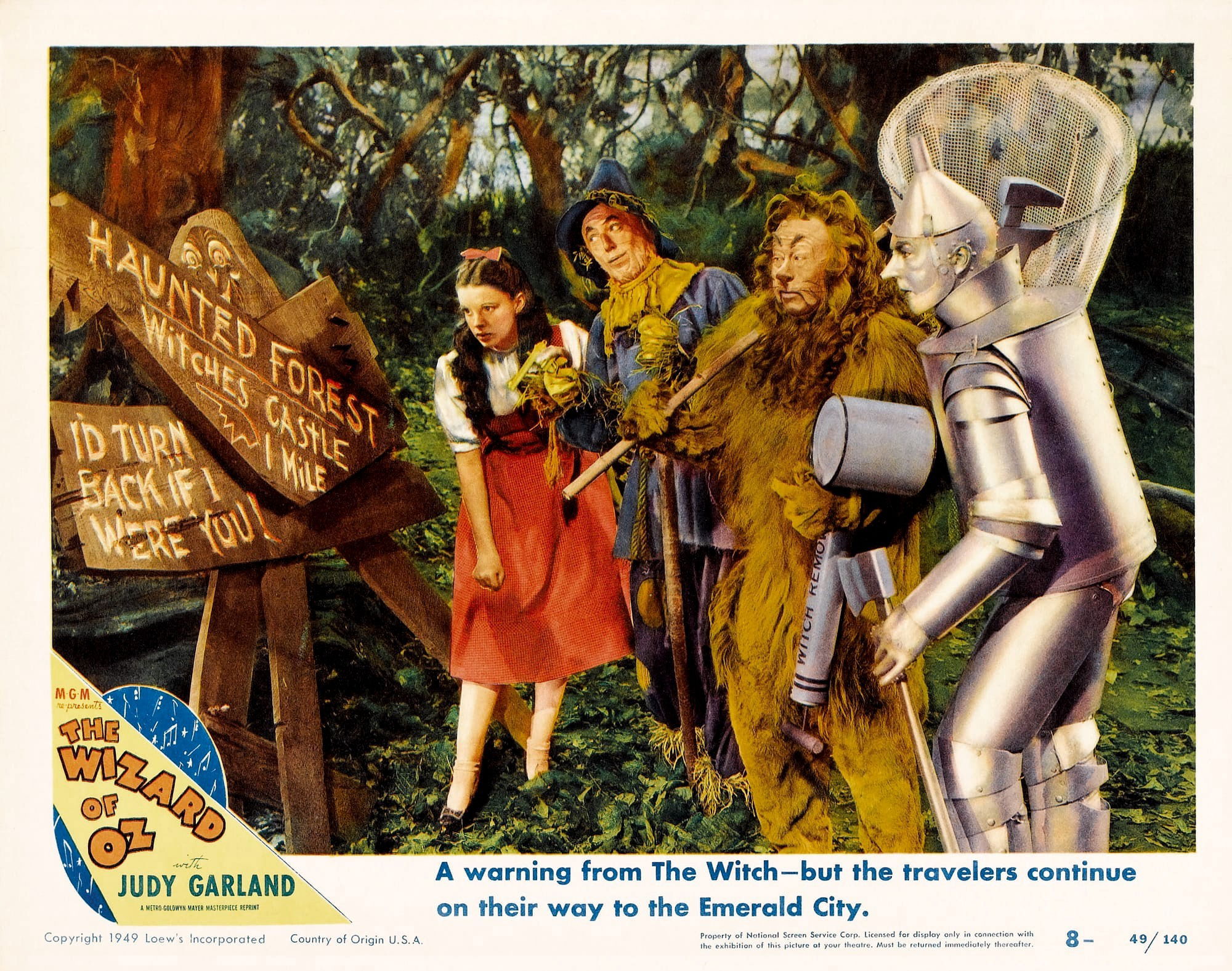
Lobby Card (1939)
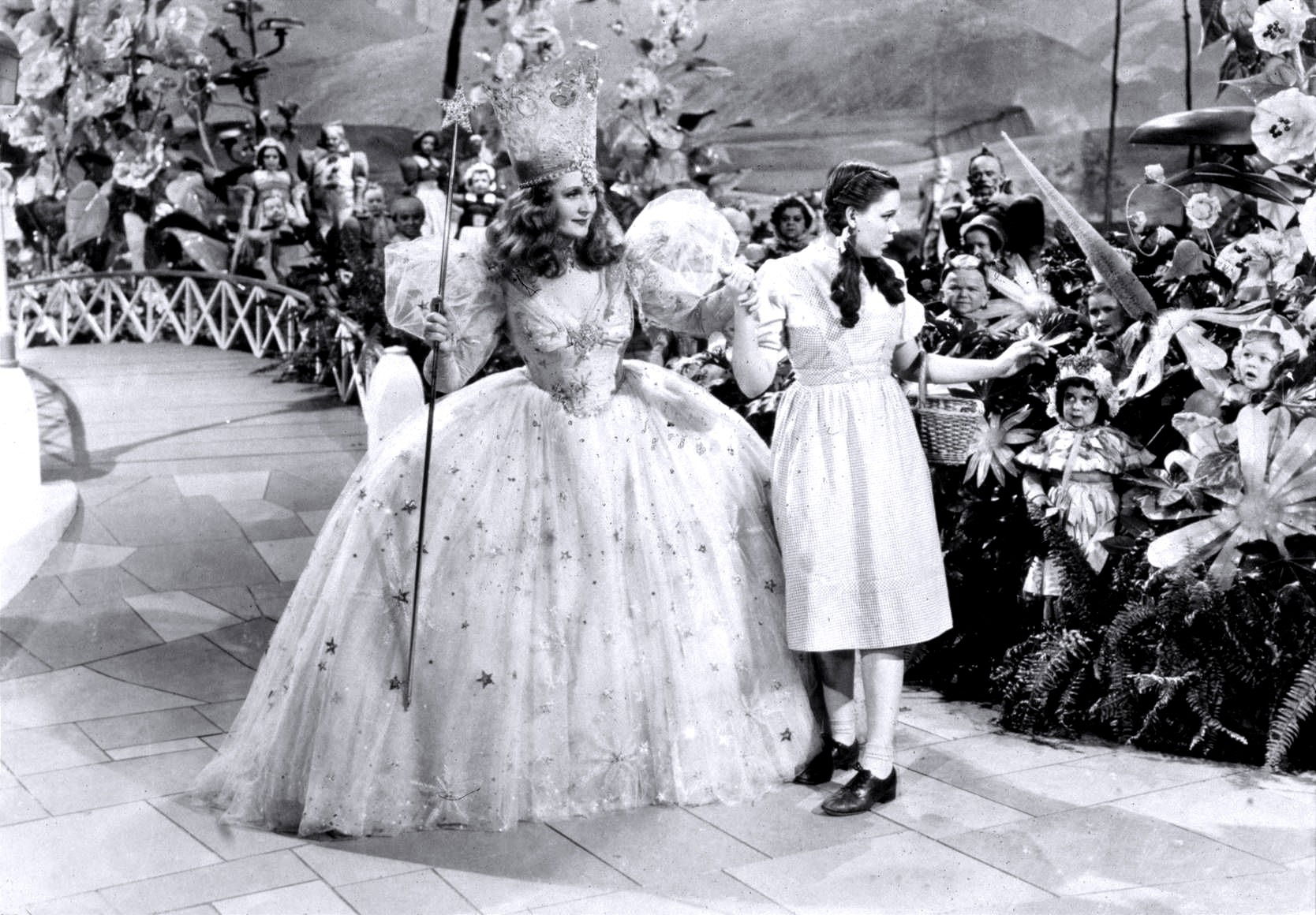
"Courtesy of the site doctormacro.com"
For "The Wizard of Oz," costume designer Adrian Greenburg created memorable images such as Dorothy's plaid dress and the shimmering costume of the Witch of the West, the latter covered in beads and sequins to give a magical effect to the Technicolor light.
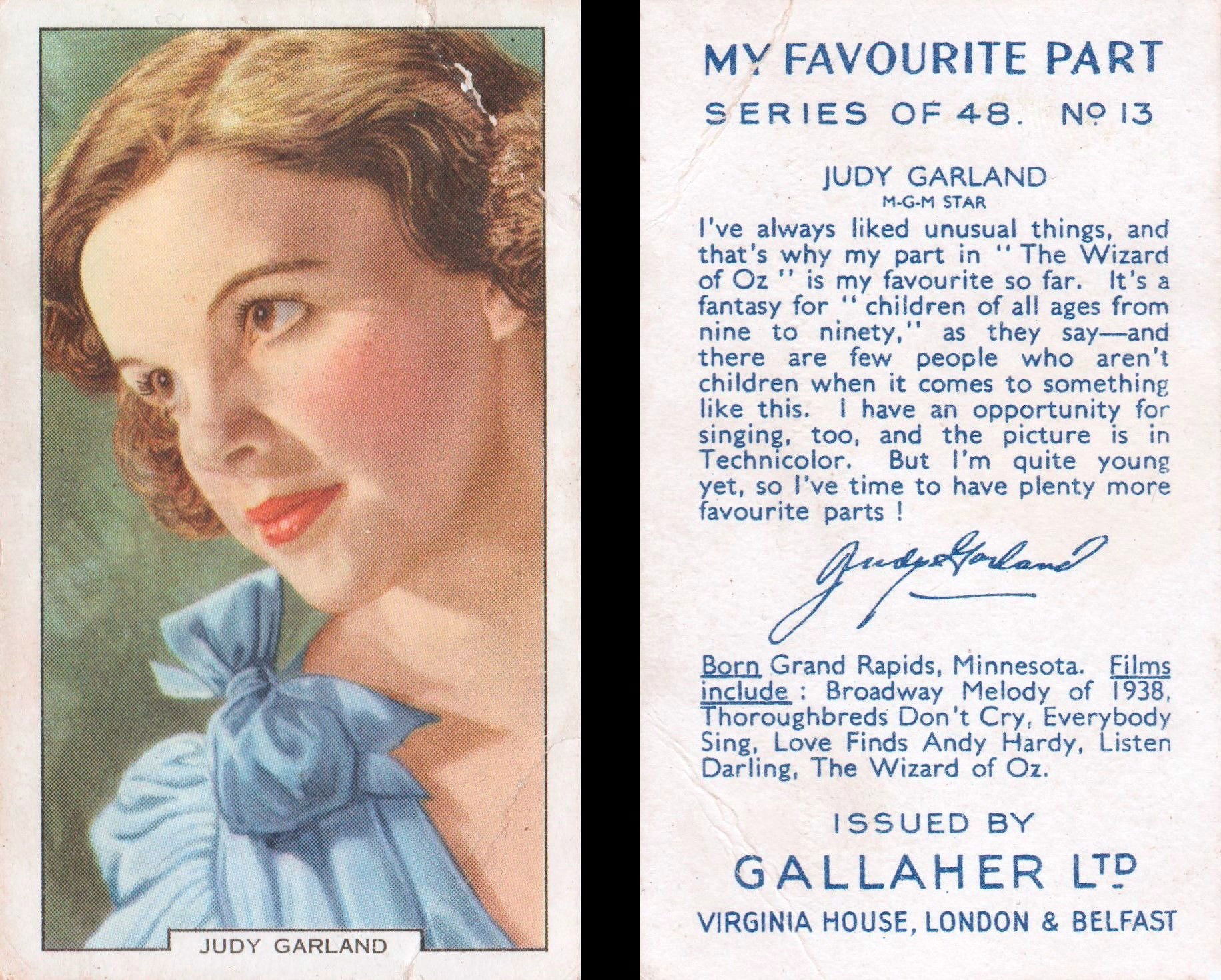
Card n.13 - MY FAVOURITE PART
GALLAHER Ltd. (1939)
(personal collection)
"I've always liked unusual things, and that's why my role in 'The Wizard of Oz' is my favorite so far. It's a fantasy for "kids of all ages, from nine to ninety," as they say, and there are few people who aren't kids when it comes to something like that. I also have the opportunity to sing, and the film is in Technicolor. But I'm still quite young, so I have time to have a lot of other favorite parts!"
Judy Garland
Judy Garland played the role of Dorothy Gale in the 1939 film "The Wizard of Oz," a role that made her one of Hollywood's most beloved actresses. Dorothy is a young girl from Kansas who is transported to the magical world of Oz by a tornado. On his journey to find the Wizard of Oz and return home, he meets unforgettable characters such as the Scarecrow, the Tin Man and the Cowardly Lion. The role of Dorothy was crucial to Judy Garland's career. His rendition of the song "Over the Rainbow" became one of the most iconic performances in film history and won the Academy Award for Best Original Song. Garland, who was only 16 years old during filming, brought a combination of innocence and determination to Dorothy's character, making her a heroine with whom audiences could easily identify. However, the production of the film was not without its difficulties for Garland. Working conditions were harsh, and the actress faced significant pressure. Despite this, his performance was lauded and left a lasting imprint on popular culture. The film itself has become a classic, celebrated for its innovative use of Technicolor, its fantastic storytelling, and its memorable score.
Jack Dawn was the head of MGM's makeup department and played a crucial role in creating the costumes and makeup for "The Wizard of Oz." Dawn worked on some of the film's most iconic characters, including the Scarecrow, the Tin Man, and the Cowardly Lion.
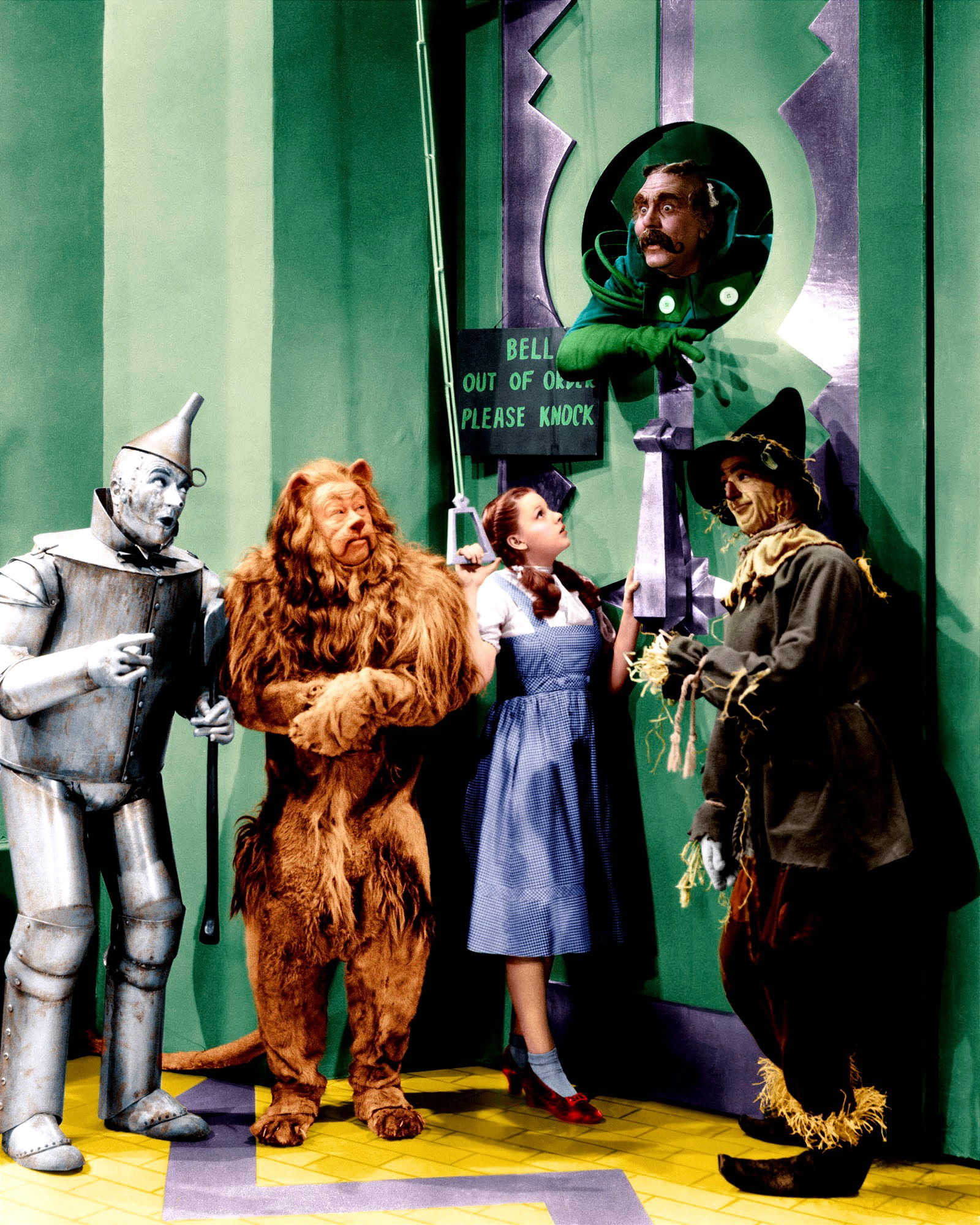
"Courtesy of the site doctormacro.com"
He also created the green makeup for the Wicked Witch of the West, played by Margaret Hamilton, and developed several looks for Frank Morgan, who played five different characters in the film. Dawn is known for introducing the use of pre-fabricated latex prosthetics in film makeup, an innovative technique for the time. This has made it possible to create more realistic and long-lasting special effects, helping to bring the fantastic characters of Oz to life. His work has had a lasting impact on the film makeup industry and has influenced generations of makeup artists.
The red slippers of the Wizard of Oz are one of the most iconic objects in the history of cinema. Worn by Judy Garland as Dorothy in the film, these shoes have captivated generations of viewers and are surrounded by numerous curiosities and legends.

"Courtesy of the site IMBD.com"
In L. Frank Baum's original book, Dorothy's slippers were made of silver. However, for the film, the producers decided to change them to red to make the most of Technicolor, an innovative technology for the time. During the filming of the film, several pairs of red shoes were used. It is estimated that at least five pairs were created, but only four are known to have survived to this day.
One of the pairs of red shoes was stolen from the Judy Garland Museum in Grand Rapids, Minnesota, in 2005. The shoes were recovered by the FBI in 2018, after being hidden for almost 13 years. The red shoes are considered one of the most valuable movie memorabilia. In 2018, a pair of shoes sold at auction for a record price of $32.5 million.
The red shoes have become a symbol of hope and homecoming. Dorothy's famous phrase, "There's no place like home", pronounced while tapping the heels of her shoes, has entered the collective imagination. To create the magical effect of the shining slippers, real ruby crystals and a special lighting technique were used. This helped to give the shoes their characteristic sparkle.
The red shoes of the Wizard of Oz continue to enchant and inspire, representing a piece of cinema history that remains alive in the memory of all of us.
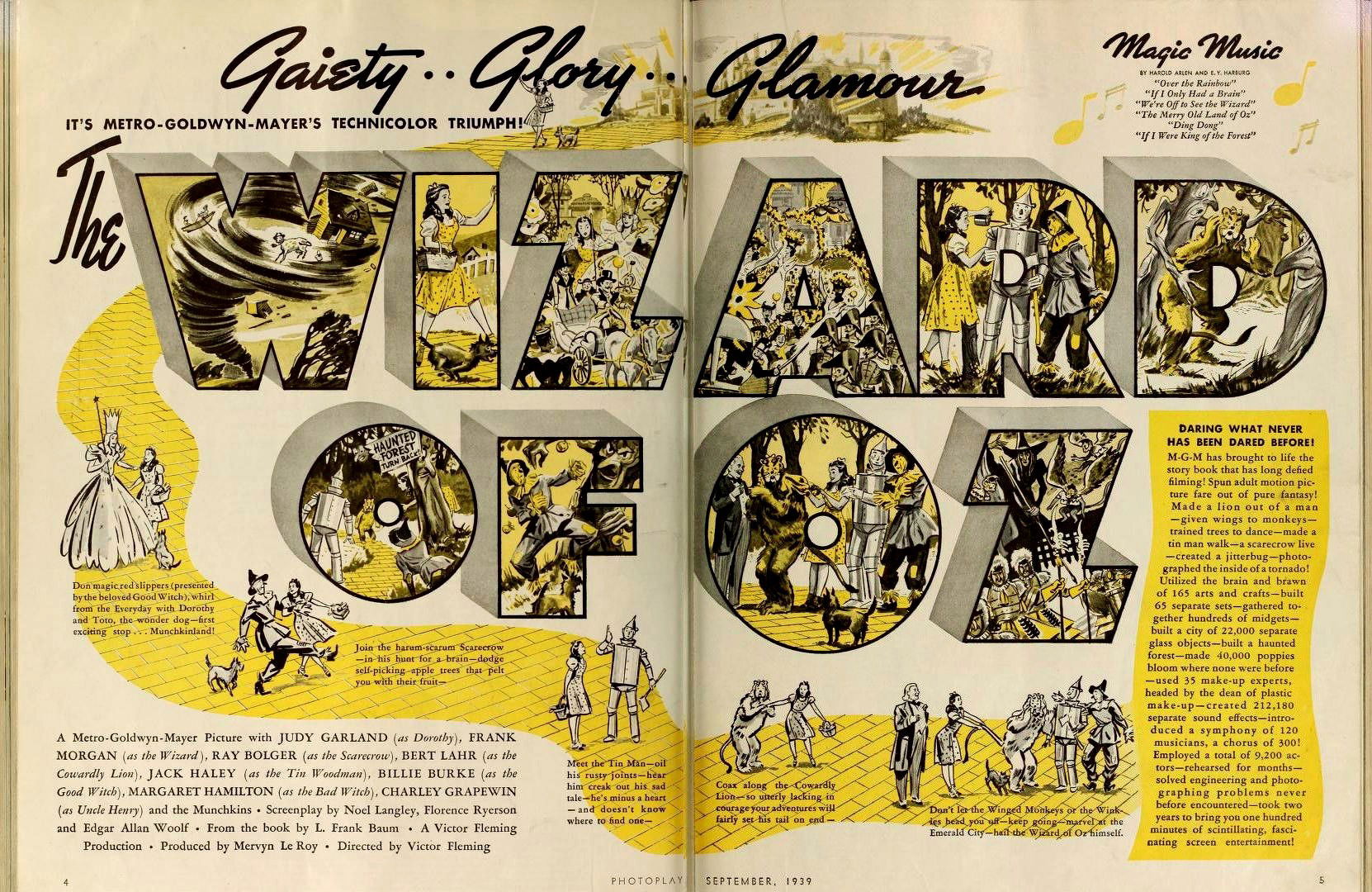
"Courtesy of the Media History Digital Library"
Page 4-5 of the magazine PHOTOPLAY (September 1939)
The page is an advertisement for the movie "The Wizard of Oz" by Metro-Goldwyn-Mayer. The advertisement is colorful and features several illustrations and texts that describe the film and its main characters. The letters "W", "I", "Z", "A", "R", "D", "D", "O", "F", "O", contain iconic images from the film, such as the tornado, Dorothy with Toto, and other characters such as the Scarecrow, the Tin Woodman and the Cowardly Lion. There are also descriptions that talk about the characters' adventures and the challenges they face.
THE WOMEN
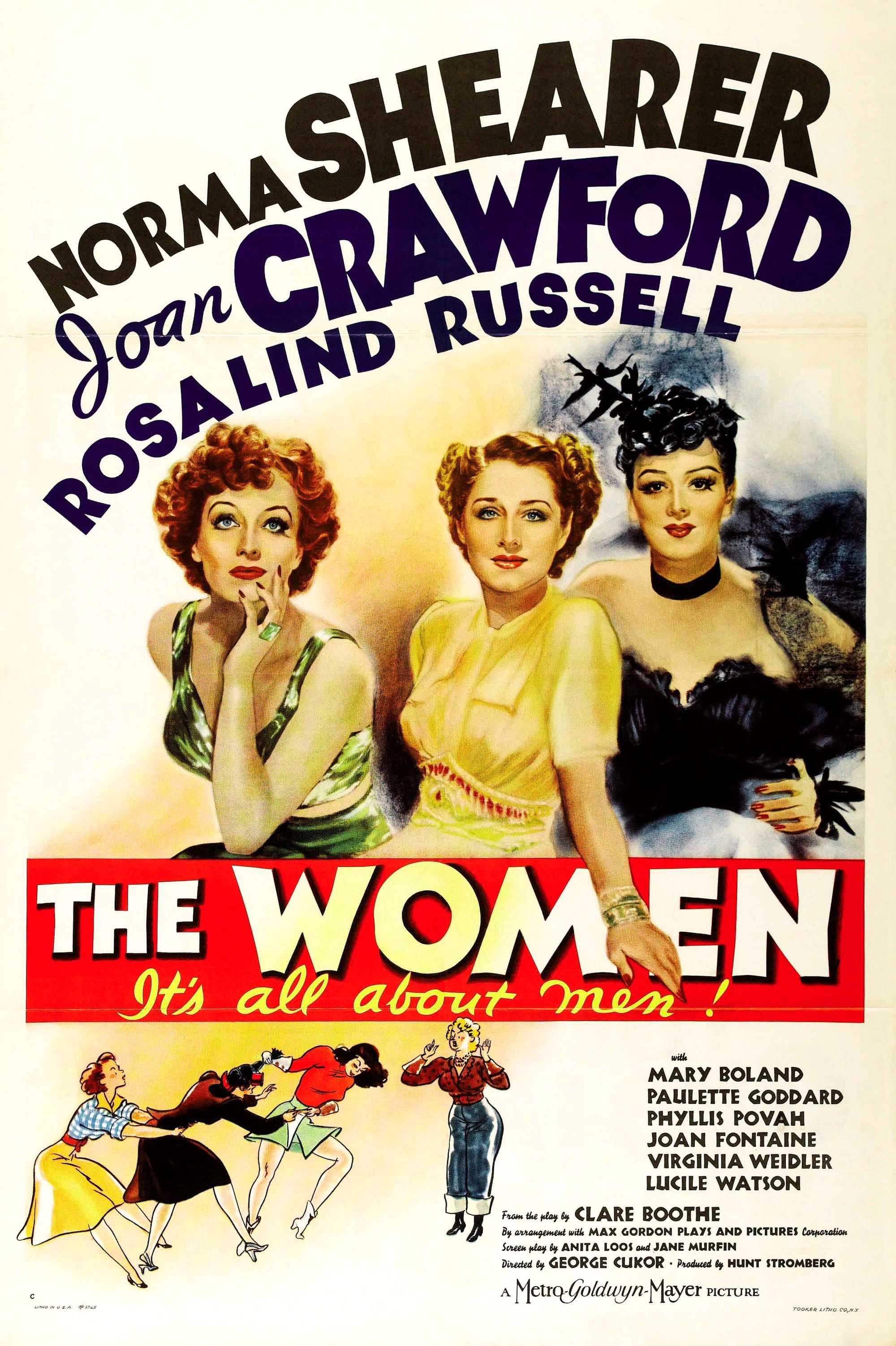
Movie Poster (1939)
The Women" (1939): A Show of Cinema and Female Satire
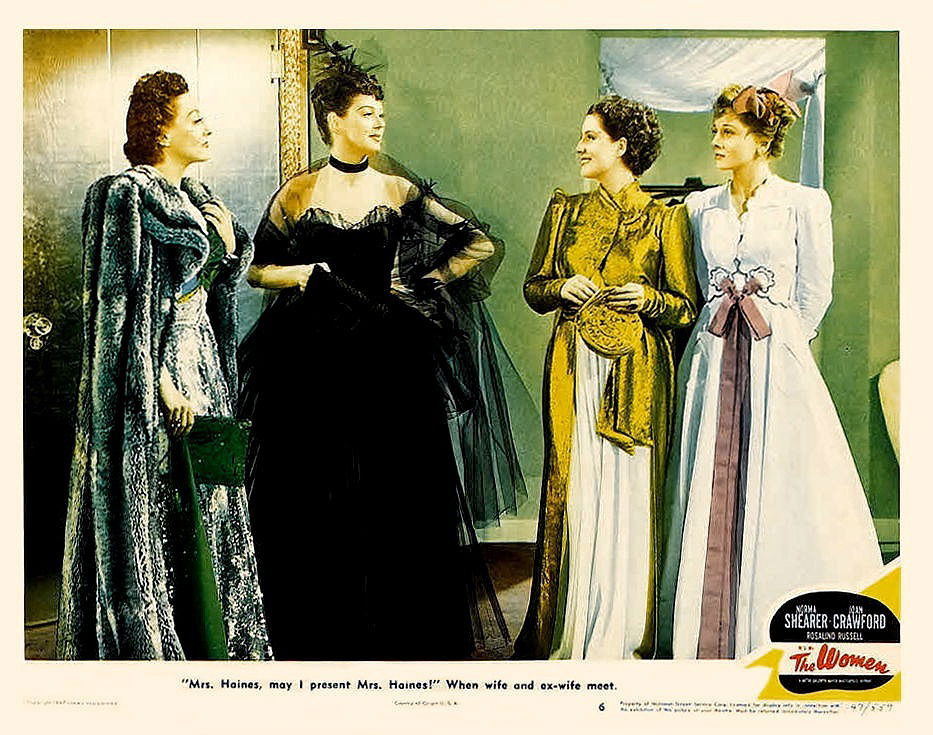
Lobby Card (1939)
Immerse yourself in the glittering and ruthless world of "The Women," the 1939 masterpiece directed by master George Cukor. Based on Clare Boothe's play Luce, this film is a true gem of cinema, known for its all-female cast and sharp satire that tears the veil of New York high society.
The plot follows the story of Mary Haines (played by the divine Norma Shearer), an elite woman who discovers her husband's infidelity with Crystal Allen (the magnetic Joan Crawford), a perfume shop assistant. The emotional journey of Mary and her friends through the complexities of marriage, friendship and betrayal is told with humor and irony that spares no one.
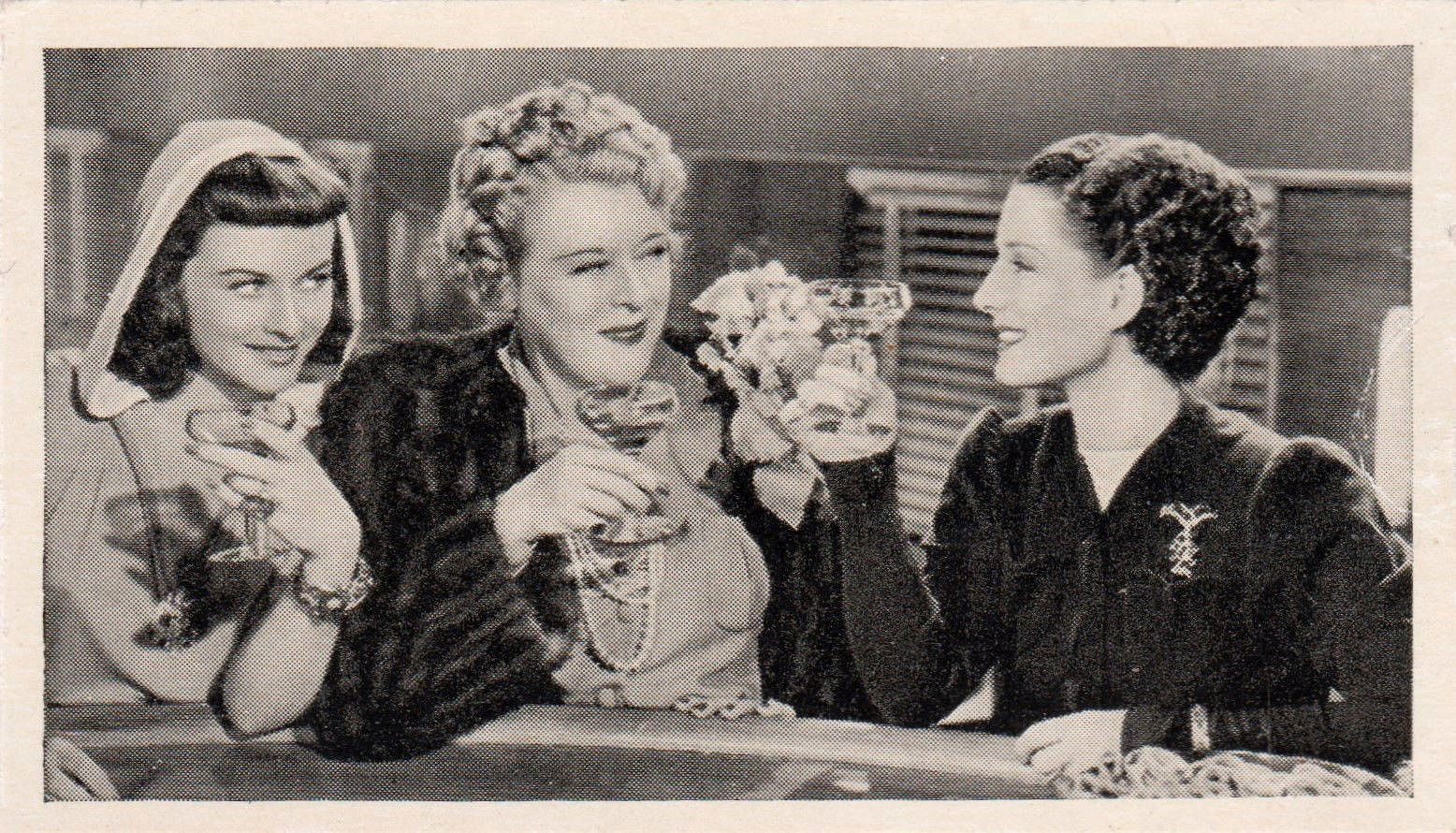
Card n.205 CINEMA CAVALCADE VOLUME II
A. & M. WIX (1940)
(personal collection)
"Miriam (Paulette Goddard), Flora (Mary Boland) and Mary (Norma Shearer) toast their success in the divorce court in Reno"
The scene where they toast the divorce court takes place in Reno, Nevada. Reno was known in the 1930s as one of the few cities where it was possible to get a quick divorce, making it a popular destination for those looking to end their marriage. This detail adds an extra layer of authenticity and historical context to the film.
The cast is an assembly of stars: in addition to Shearer and Crawford, we find Rosalind Russell who lights up the screen with her spirit and Virginia Grey who played the role of Pat one of the friends of Mary Haines, the main character played by Norma Shearer.
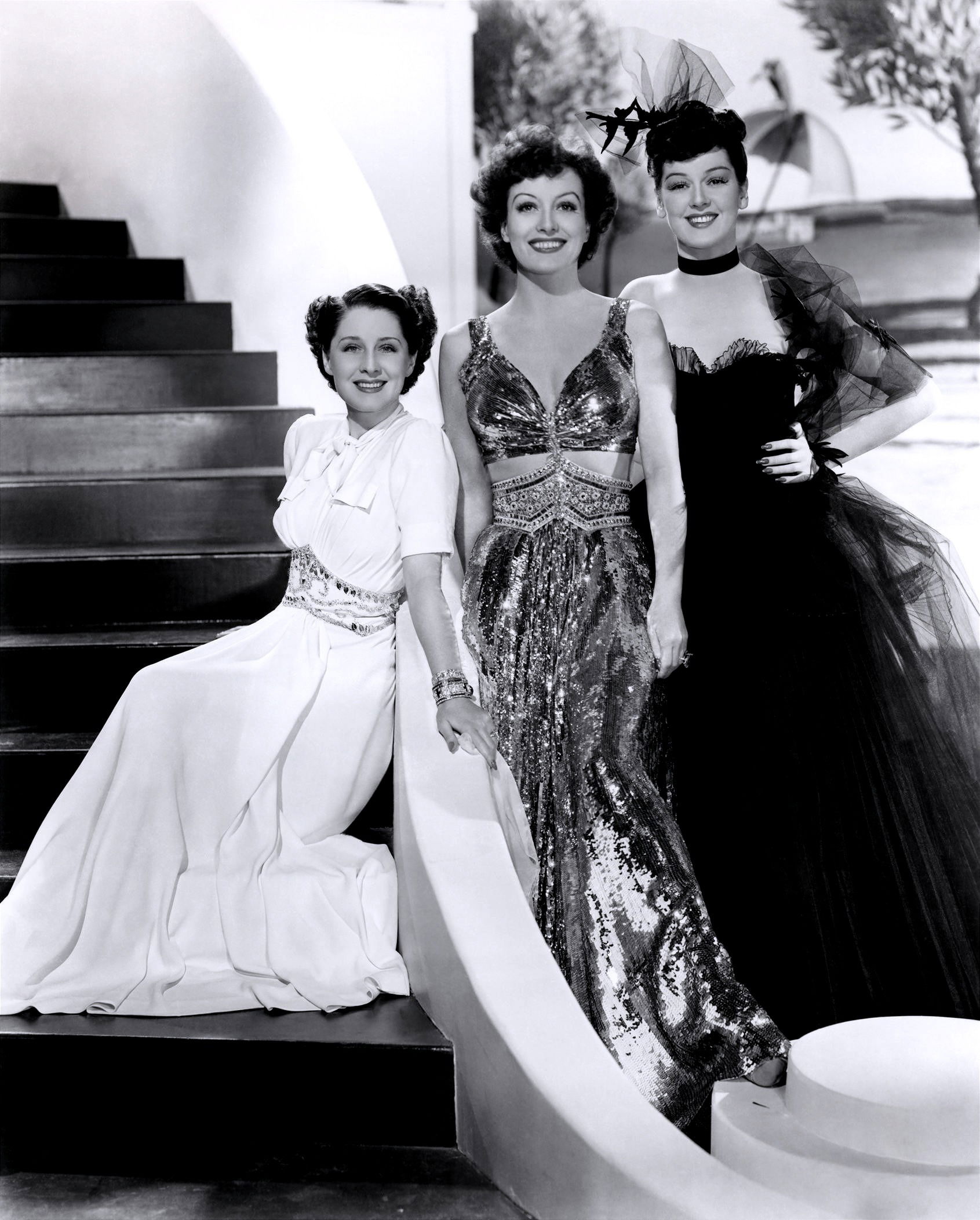
"Courtesy of the site doctormacro.com"

Card - BEAUTIES OF THE CINEMA
ROTHMANS Ltd. (1939)
(personal collection)
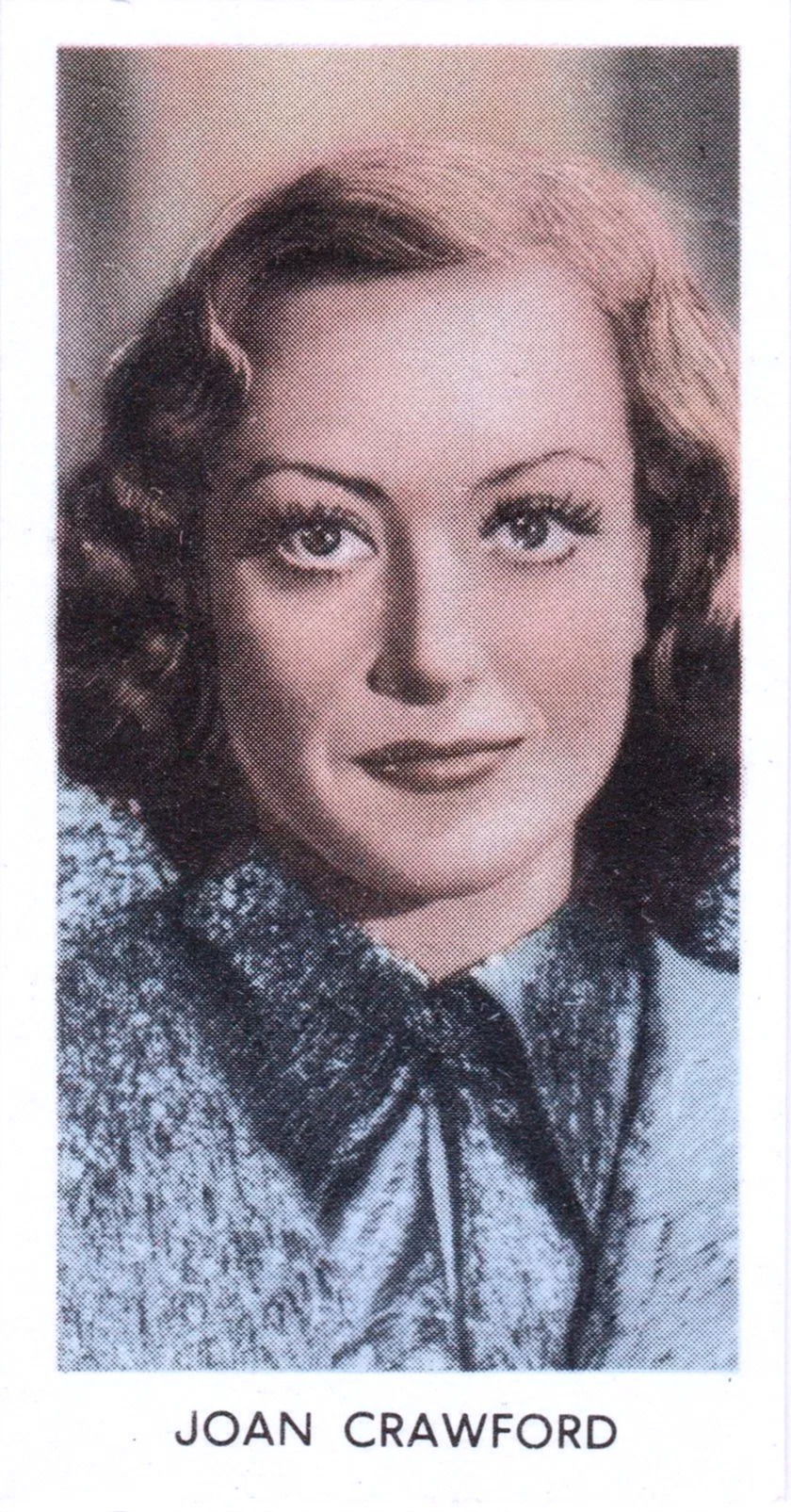
Card n.18 - SCREEN STARS
ABDULLA & Co. Ltd. (1939)
(personal collection)
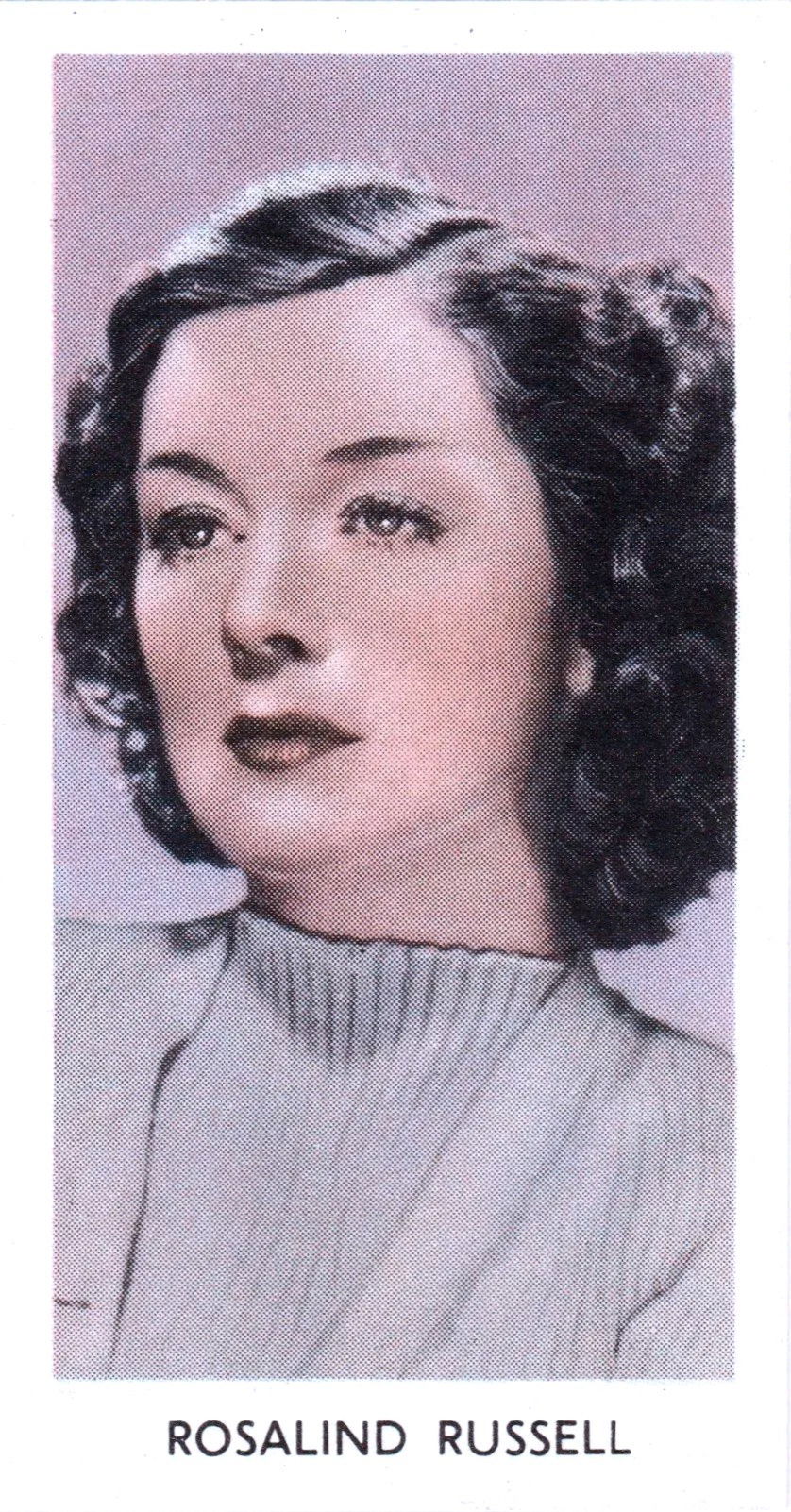
Card n.13 SCREEN STARS
ABDULLA & Co. Ltd. (1939)
(personal collection)
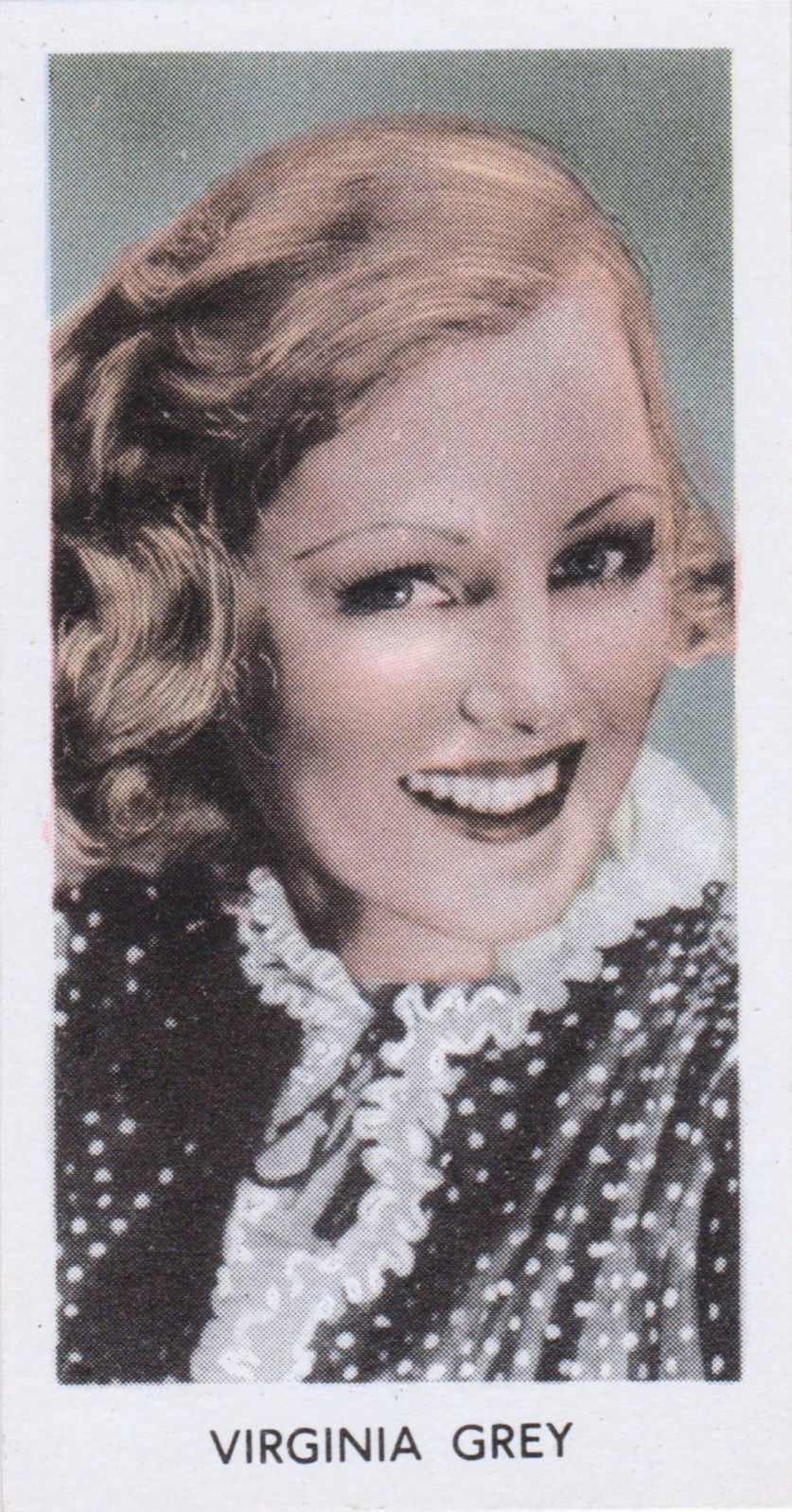
Card n.12 SCREEN STARS
ABDULLA & Co. Ltd. (1939)
(personal collection)
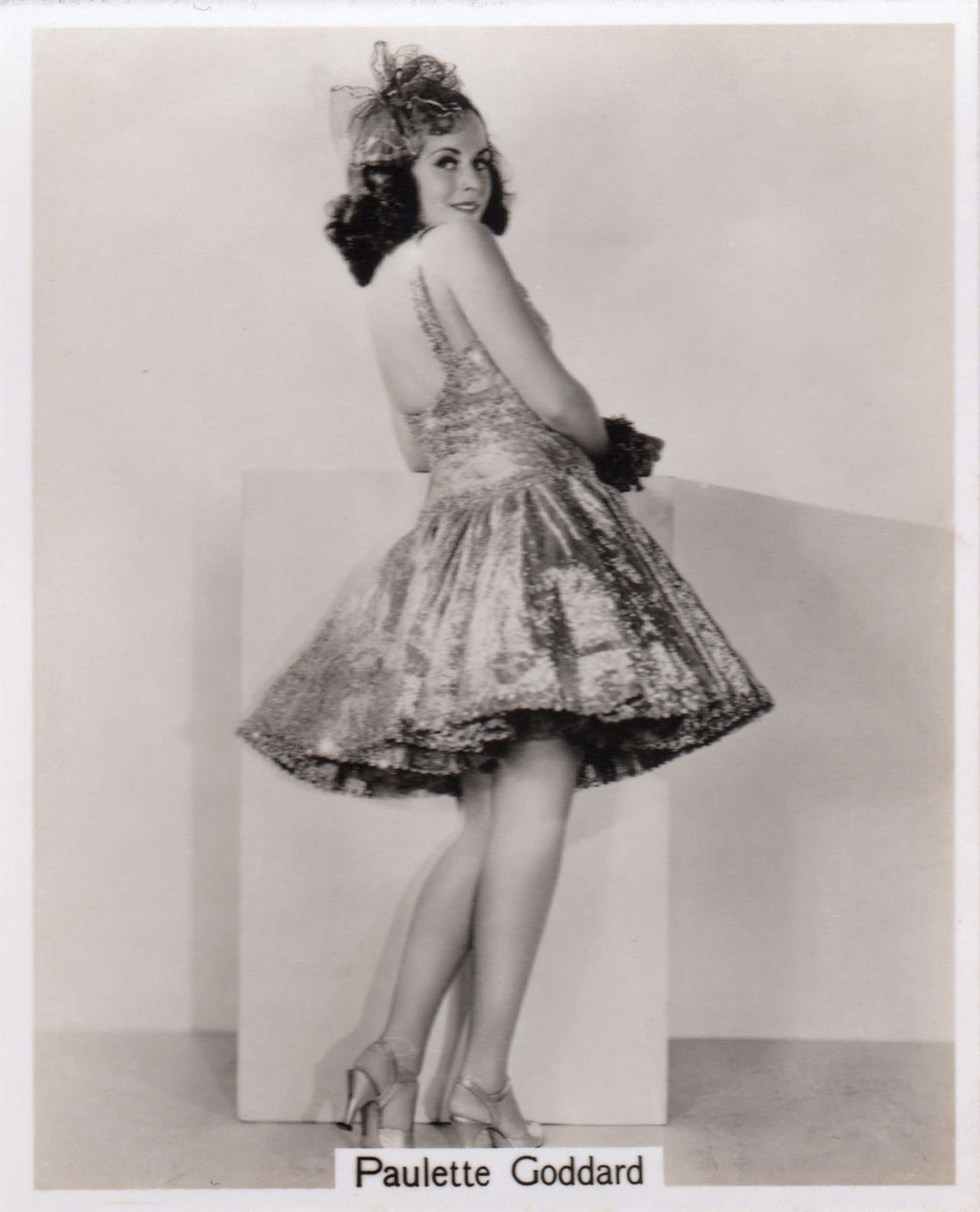
Card n.6 BEAUTIES of TO-DAY
GODFREY PHILLIPS (1939)
(personal collection)
Paulette Goddard plays the role of Miriam Aarons. Miriam is one of the friends of the protagonists and brings a breath of fresh air and humor to the group. The character of Miriam is known for her frankness and independent spirit, characteristics that Paulette Goddard manages to convey with great skill. Paulette wears costumes that reflect her independent spirit and outspokenness. Adrian, the film's celebrated costume designer, created clothes that perfectly express Miriam's lively and bold personality.
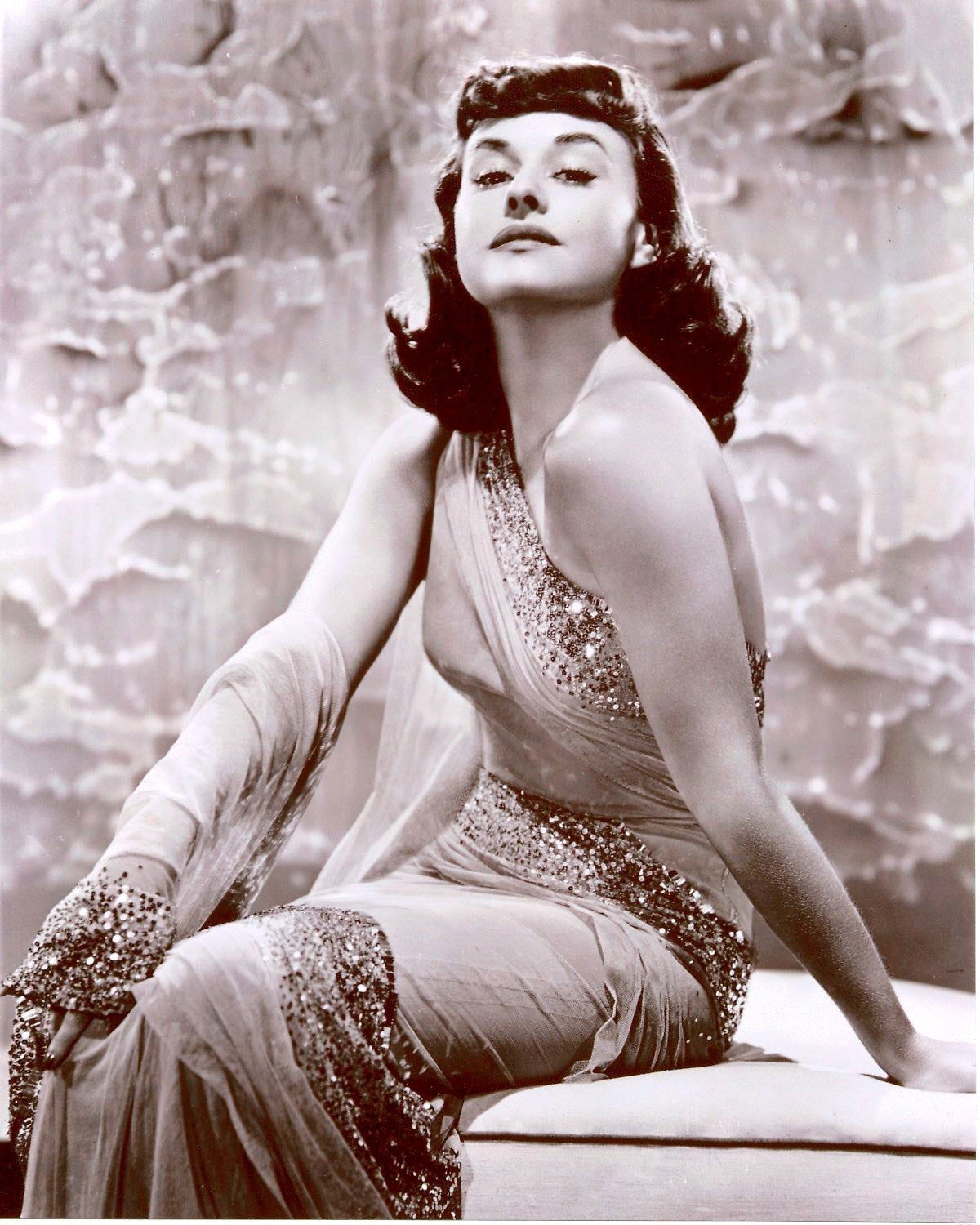
"Courtesy of the site IMBD.com"
The performances of these actresses not only bring the film to success, but also define the characters with a depth and humanity that continue to resonate with audiences.
"The Women" doesn't just entertain; It explores profound themes such as the role of women, power, and marriage in a society dominated by social conventions. The satire is razor-sharp, highlighting the power dynamics and expectations that women in high society must navigate.
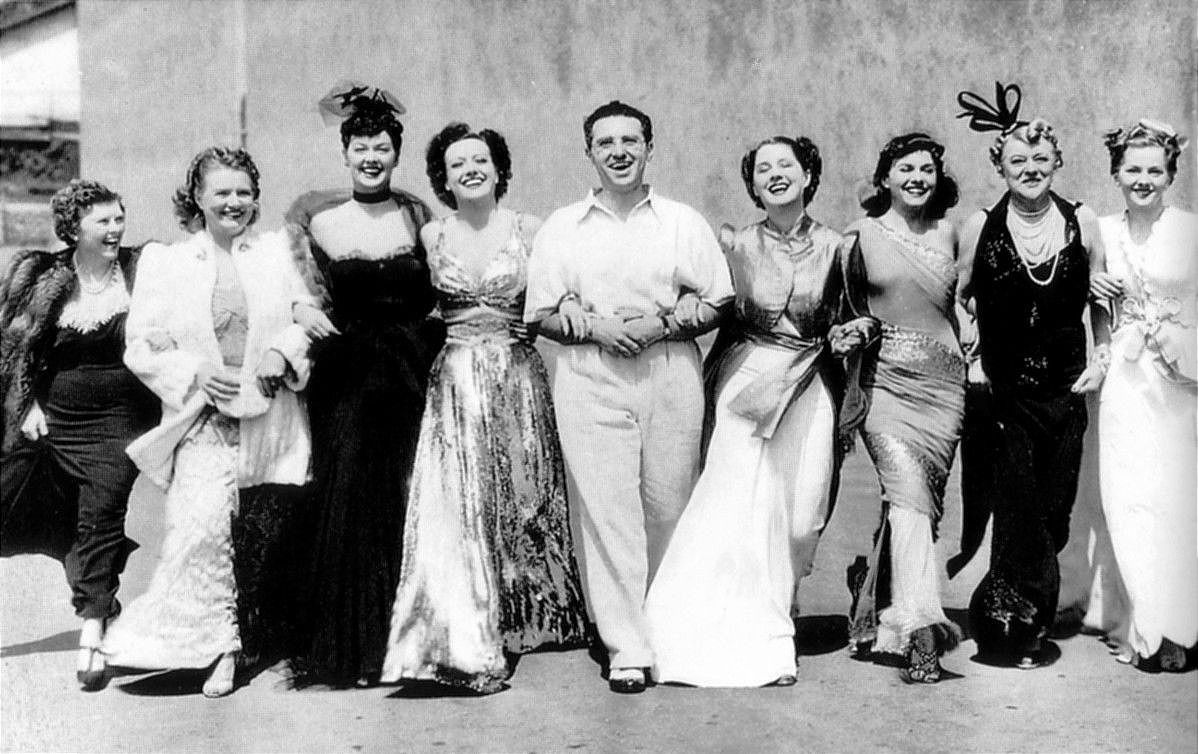
"Courtesy of the site doctormacro.com"
George Cukor's direction is a visual ballet, allowing the actresses to shine in an environment that is both aesthetically rich and emotionally complex.
And then, there are Adrian's costumes, true works of art that not only embellish the protagonists but also tell their stories. Mary's clothes reflect her status, while Crystal's scream seduction and ambition. Every detail, from the fabric to the line, contributes to a vivid picture of social class and femininity.
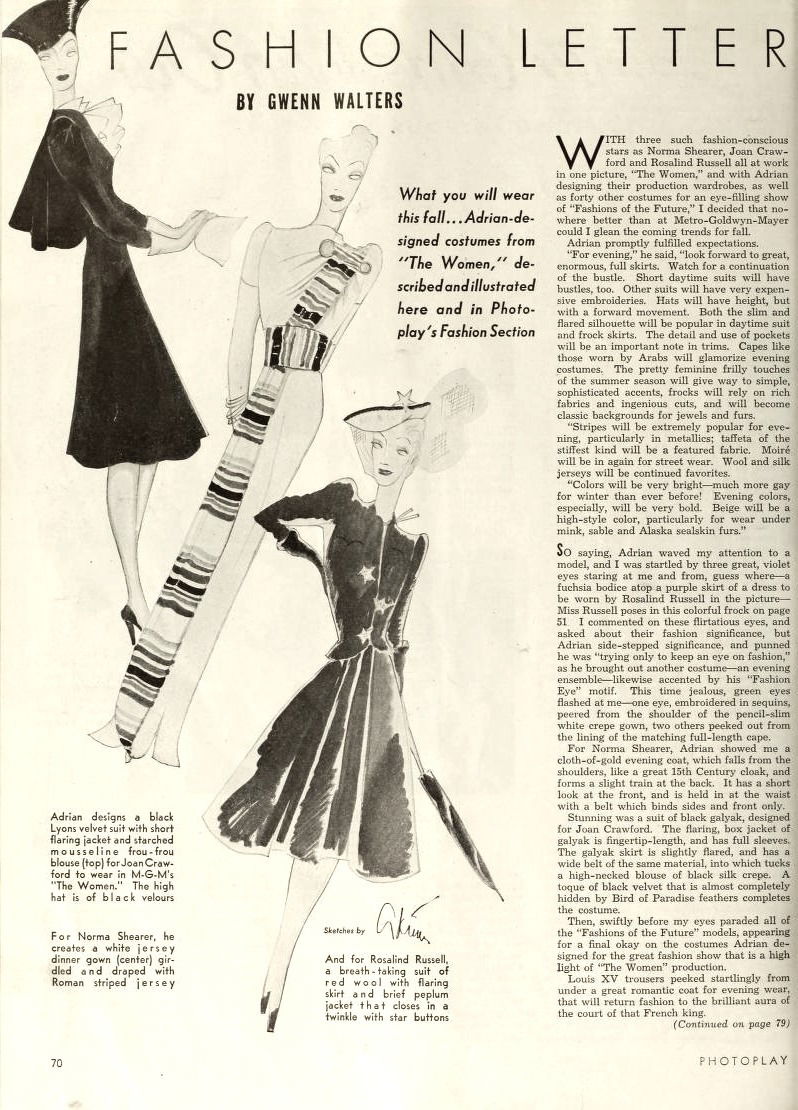
"Courtesy of the Media History Digital Library"
Pag. 70 of the magazine PHOTOPLAY (September 1939)
The page of the fashion magazine "Fashion Letter" by Gwenn Walters presents three different models of women's clothes created by Adrian for the film "The Women". Outfits include:
- A black velvet suit with a flared cropped jacket and a starched mousseline frou-frou blouse, designed for Joan Crawford.
- A white jersey dinner dress with a jersey Roman stripe drapery, designed for Norma Shearer.
- A red wool suit with a flared skirt and a short jacket with star buttons, designed for Rosalind Russell.
With three such fashion-conscious stars as Norma Shearer, Joan Crawford and Rosalind Russell all at work in one film, "The Women", and with Adrian designing their production wardrobes, as well as forty other costumes for a "Fashions of the Future" show, I decided there was no better place than Metro-Goldwyn-Mayer to catch the trends coming for the fall.
Adrian promptly met expectations.
"For the evening," she said, "expect big, huge, wide skirts. Watch for continuous use of the torso. Short day suits will also have corsets. Other suits will have very expensive embroidery. The hats will have height, but with a forward movement. Both the single and flared silhouettes will be popular in the skirts of day suits and dresses. Detail and the use of color will be as important as ever this fall. Capes like those worn by Arabs will make evening costumes glamorous. The beautiful pastel colors that we wore in the summer season will give way to more sophisticated accents, such as royal blue, deep wine and jade green. The clothes will be enhanced by classic backgrounds for jewelry and furs."
Adrian said he was working on a gold brocade evening suit with a bust. For the day, a small riding outfit in a distinctive fabric. Moiré silk in light autumn colors for wool and silk jerseys will be another favorite.
"The colors will be very bright, much more cheerful for the day than we are used to. The evening will be very beautiful. Beige will be a high-fashion color, particularly for elegant undergarments and accessories."
So saying, Adrian drew my attention to a modestly dressed mannequin, with a frock coat of tan and brown, guess where - this bodice over a full purple skirt? It was supposed to be worn by Rosalind Russell in the movie - Miss Russell poses in this colorful dress on page 51.
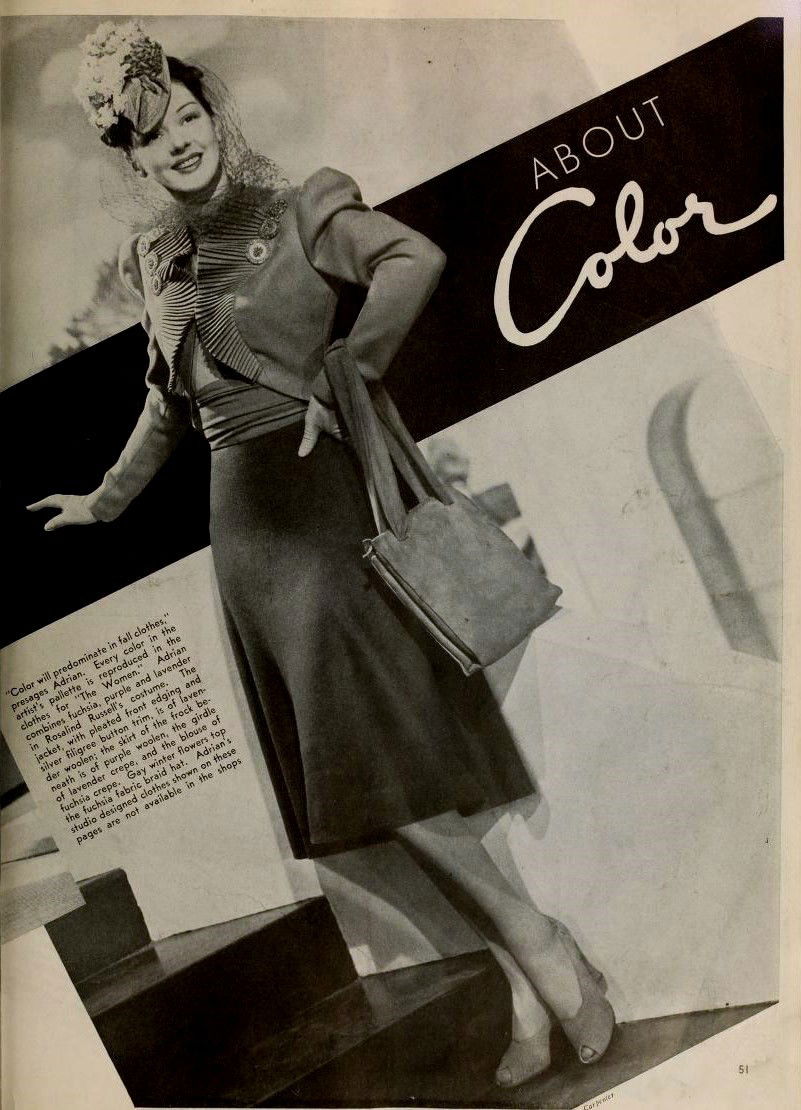
"Courtesy of the Media History Digital Library"
"Color will predominate in fall clothes," Adrian predicts. Every color in the artist's palette is reproduced in the outfits for "The Women". Adrian combines fuchsia, purple and lavender in Rosalind Russell's costume. The jacket, with pleated front edge and silver filigree buttons, is made of lavender wool; the lavender crêpe belt and the fuchsia crêpe blouse. Cheerful winter flowers surmount the braided hat in fuchsia fabric.
Pag. 51 of the magazine PHOTOPLAY (September 1939)
I commented on these flirtatious eyes and asked about their significance in fashion, but Adrian avoided the meaning and smiled saying he was "just trying to keep an eye on fashion", as he pulled out another costume – an evening ensemble also accentuated by his 'Fashion Eye' motif. This time jealous green eyes looked at me from the embroidered bodice and peeked over the shoulder of the white pencil crepe dress, two more eyes peeked out from the lining of the matching white evening cape.
For Norma Shearer, Adrian showed me an evening cloak made of gold fabric, which falls from the shoulders like a large 18th-century cloak and forms a light train at the back. It has a hood to look forward to and is held at the waist with a belt that ties its soft pleats.
A black galyak suit, designed for Joan Crawford, was stunning. The flared box jacket fell freely to the length of the fingers and was edged with fur. The galyak skirt is slightly flared and has a wide belt at the waist. The outfit is completed by a white satin turtleneck blouse, with a small touch of black velvet almost completely hidden by the feathers of Bird of Paradise, completing the costume.
Then, quickly before my eyes, all the models from "Fashions of the Future" paraded, appearing for a final okay on the costumes that Adrian designed for the big fashion show that is a highlight of "The Women".
Louis XV trousers surprisingly popped out from under a large romantic coat for evening dresses. It will bring fashion back to the brilliant days of that French king's court.
(Continued on page 79)
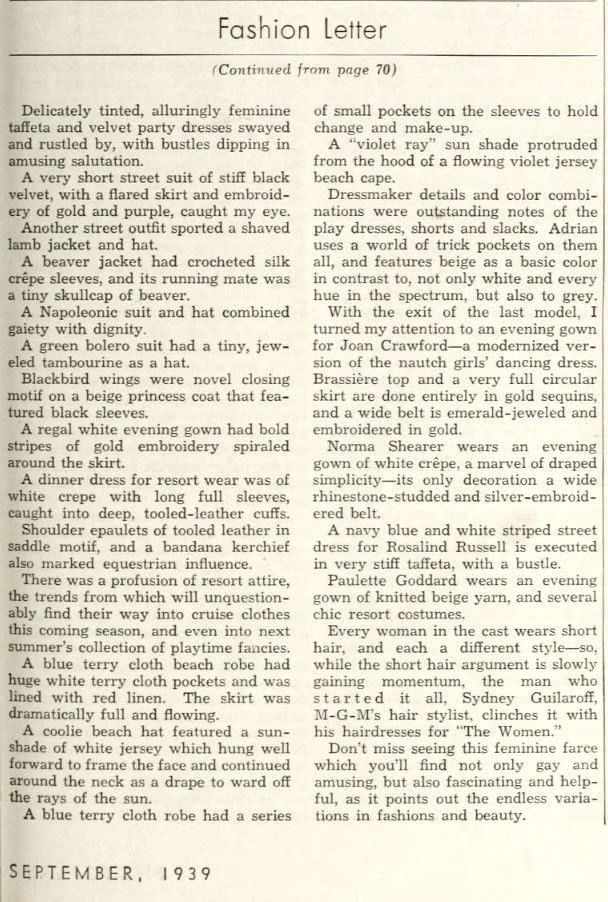
"Courtesy of the Media History Digital Library"
Pag. 79 of the magazine PHOTOPLAY (September 1939)
Fashion Letter
Delicately coloured, seductively feminine taffeta and velvet party dresses swayed and rustled, with busts tilting in a funny greeting.
A very short street suit in stiff black velvet, with a flared skirt and gold and purple embroidery, caught my eye.
Another street outfit sported a jacket and a shaved lambskin hat.
A beaver jacket had crocheted silk crepe sleeves, and its companion was a small beaver cap.
A Napoleonic suit and a hat combined joy with dignity.
A green suit with bolero had a small jeweled tambourine as a hat.
Blackbird wings were a new closure motif on a beige princess coat that featured black sleeves.
A regal white evening dress had bold stripes of gold embroidery spiraling around the skirt.
A dinner dress for the resort was white crepe with long wide sleeves, captured in deep cuffs of worked leather.
Saddle leather shoulder pads and a bandana handkerchief also marked the equestrian influence.
There was a profusion of resort wear, the trends of which will undoubtedly find their way into this season's cruise dresses and even next summer's collection of leisure patterns.
A blue terry beach robe had huge white terry pockets and was lined with red linen. The skirt was dramatically wide and flowing.
A coolie beach hat featured a white jersey visor that hung well forward to frame the face and continued around the neck like a drape to protect from the sun's rays.
A blue terrycloth bathrobe had a series of small pockets on the sleeves to hold coins and makeup.
A "violet ray" visor protruded from the hood of a flowing purple jersey beach cape.
The sartorial details and color combinations were outstanding notes of the game suits, shorts and pants. Adrian uses a world of ingenious pockets on all of them and presents beige as the base color in contrast not only to white and every shade of the spectrum, but also to gray.
With the release of the latest model, I turned my attention to an evening dress for Joan Crawford, a modernized version of the natch girls' ball gown. The top of the bra and a very wide circular skirt are entirely made of gold sequins, and a wide belt is jeweled with emeralds and embroidered in gold.
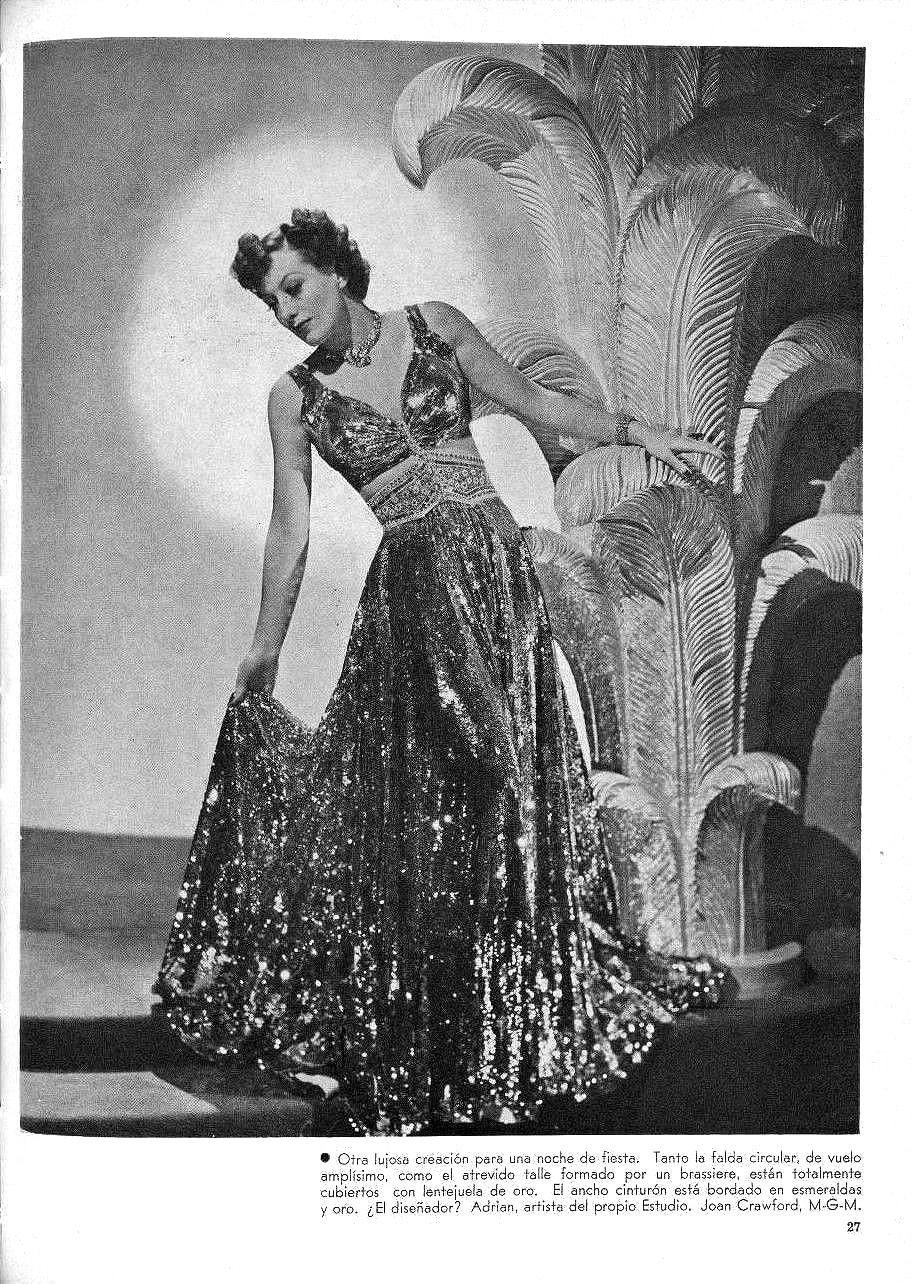
"Courtesy of the Media History Digital Library"
Pag. n.27 of the Periodical CINELANDIA (October 1939)"
Another luxurious creation for a night of partying. Both the circular skirt, with a wide flight, and the bold bodice formed by a bra, are completely covered with gold sequins. The wide belt is embroidered with emeralds and gold. The designer? Adrian, artist of the same Studio. Joan Crawford, M-G-M."
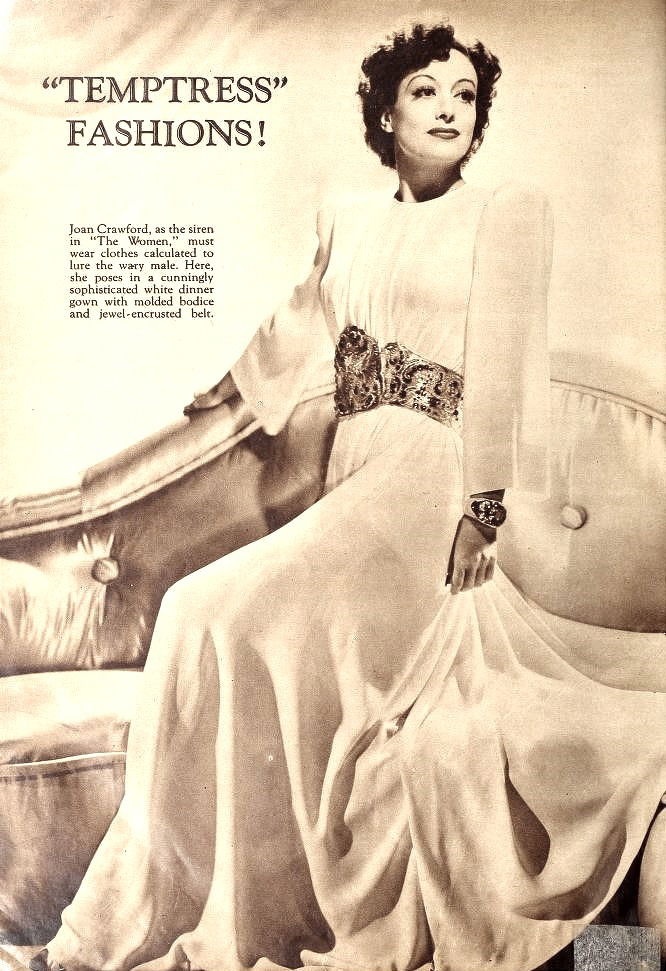
"Courtesy of the Media History Digital Library"
Excerpt from the magazine SCREENLAND (October 1939)
"Joan Crawford, in the role of the mermaid in 'The Women,' has to wear clothes designed to attract the wary man. Here, she poses in a cunning and sophisticated white evening gown with a patterned bodice and jewel-studded belt."
Norma Shearer wears a white crepe evening dress, a marvel of draped simplicity, her only decoration being a rhinestone-studded belt embroidered in silver.
A navy blue and white striped street dress for Rosalind Russell is made of very rigid taffeta, with a bust.
Paulette Goddard wears an evening dress in knitted beige yarn and several elegant resort costumes.
Each woman in the cast wears her hair short, and each in a different style, so while the topic of short hair is slowly gaining momentum, the man who started it all, Sydney Guilaroff, hair stylist at M-G-M, solidifies it with her hairstyles for "The Women."
Don't miss seeing this feminine face that you will find not only cheerful and funny, but also charming and useful, as it highlights the endless variations in fashion and beauty.

"Courtesy of the site IMBD.com"
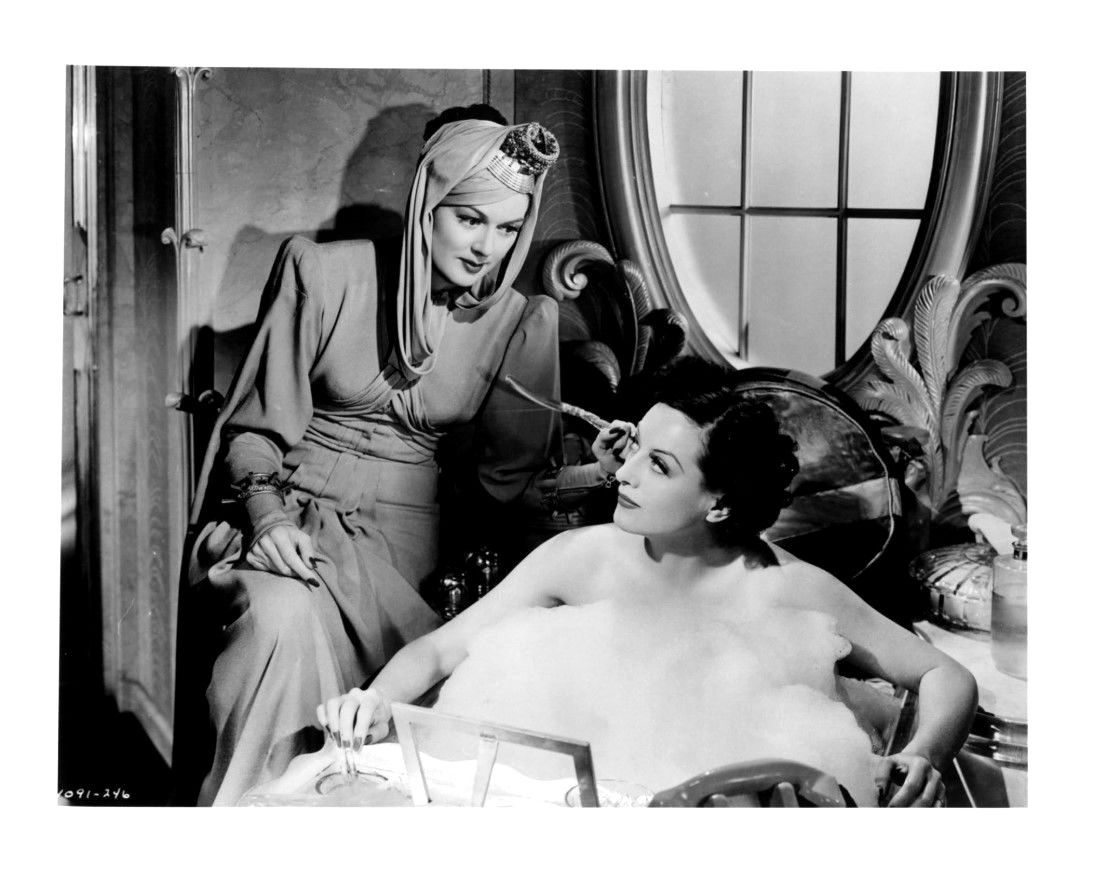
"Courtesy of the site IMBD.com"
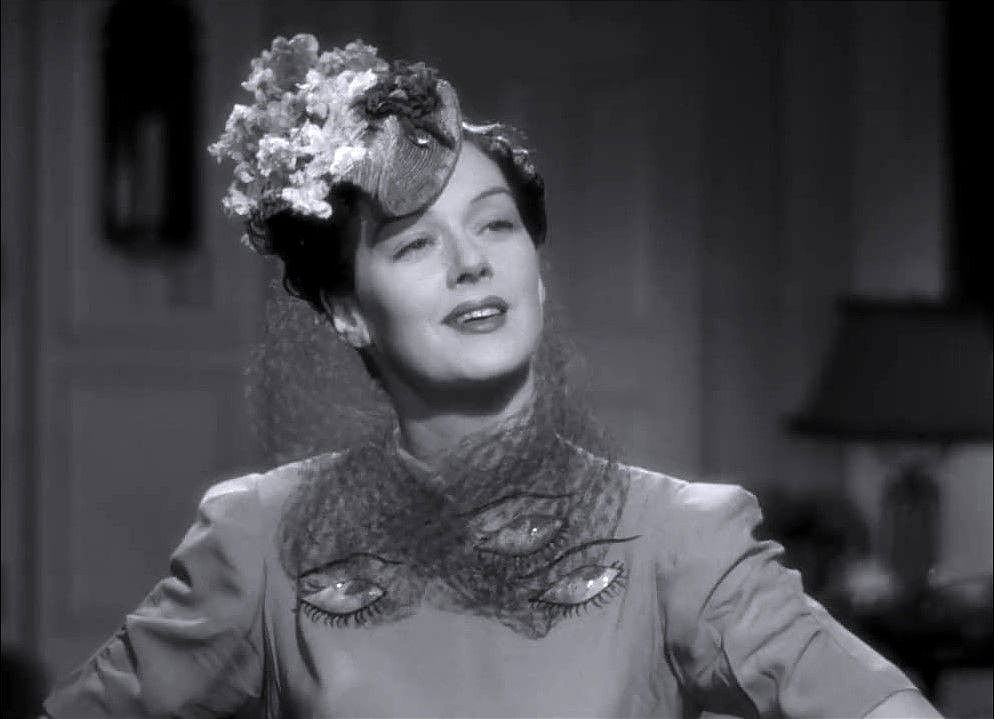
"Courtesy of the site IMBD.com"
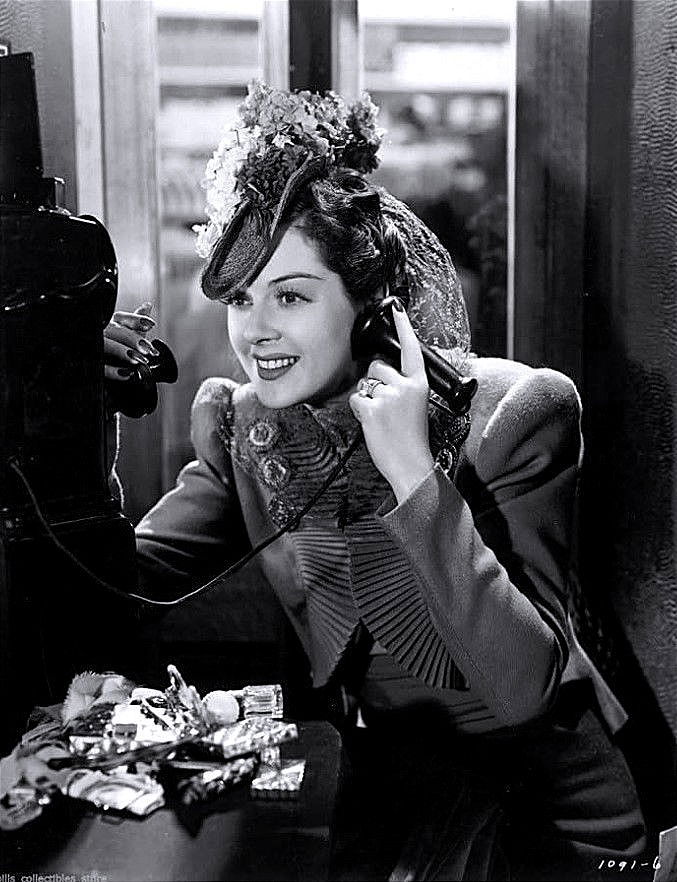
"Courtesy of the site IMBD.com"
In its debut, "The Women" enchanted critics and audiences alike, leaving an indelible imprint on the representation of women in cinema. Today, it is still studied and admired for its cultural and historical importance.
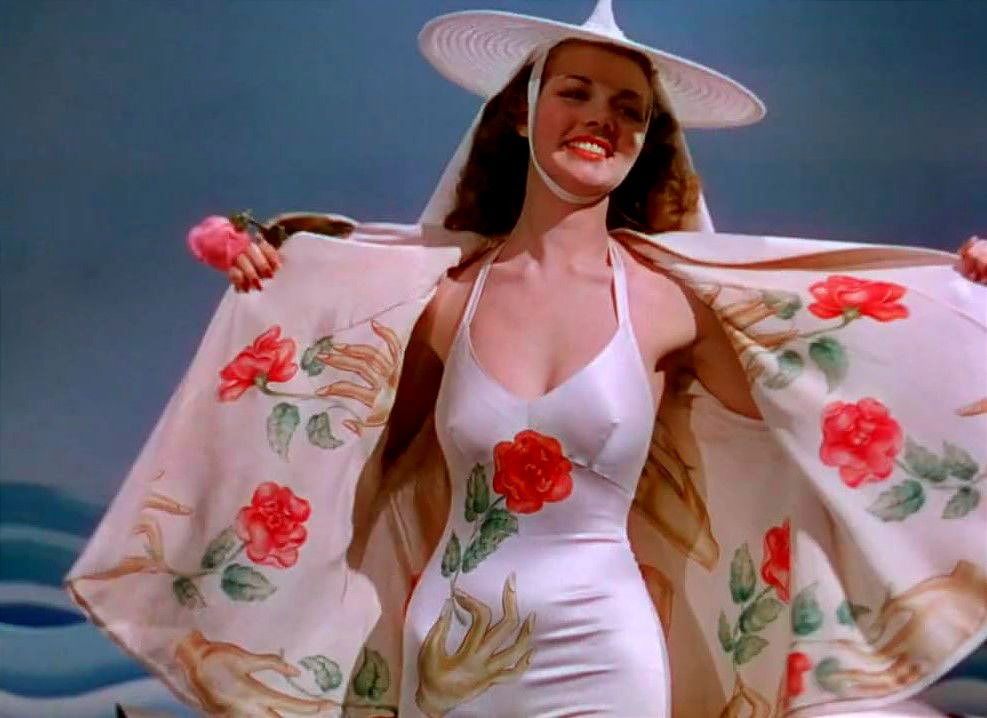
"Courtesy of the site IMBD.com"
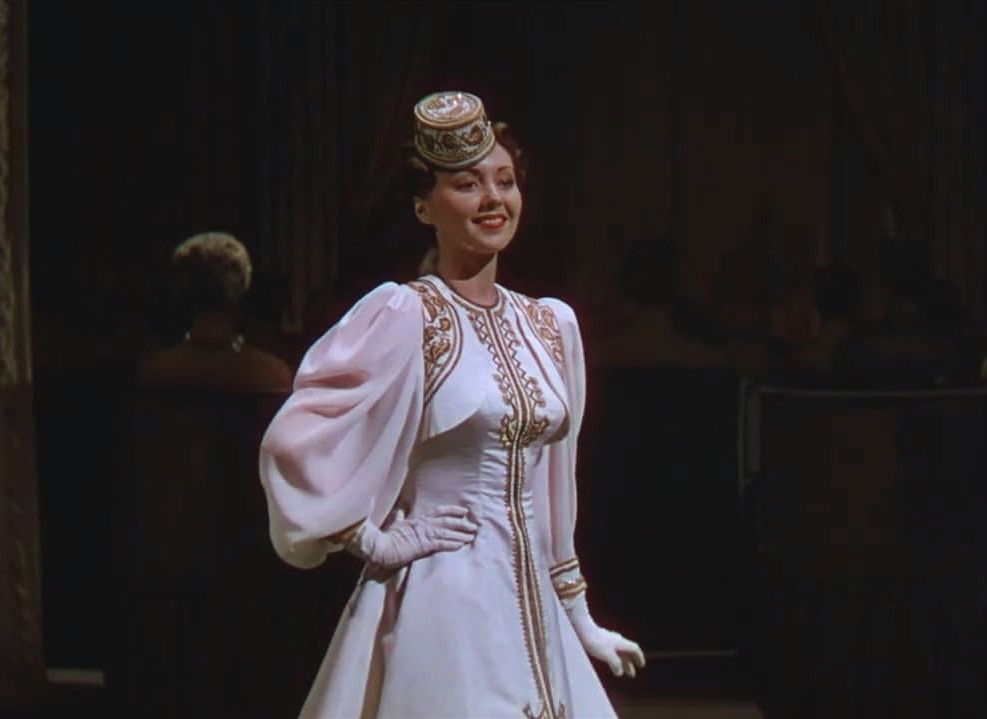
"Courtesy of the site IMBD.com"
Also, although the film was in black and white, Adrian's fame led to a request to include a Technicolor fashion show. This allowed the beauty and richness of Adrian's costumes to be further enhanced, creating an unforgettable visual experience and making "The Women" a masterpiece not only for its storytelling, but also for its visual aesthetic.
"The Women" of 1939 is not just a film; It is a fascinating and critical journey through the lives of women who define and challenge social norms. With an all-star cast, superb direction, dreamy costumes and heart-pounding themes, it remains a masterpiece of cinema not to be missed.
In the years of the Second World War, despite the difficulties, customs continued to be a key element. Adrian's "Ziegfeld Girl" saw glitzy dresses and sequins, albeit with a creative use of materials due to restrictions.
ZIEGFELD GIRL
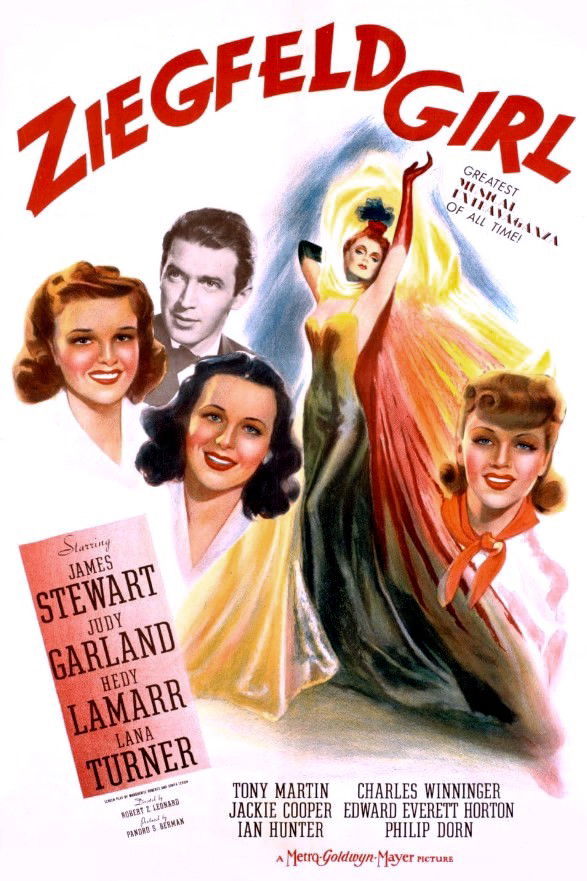
Movie Poster (1941)
"Ziegfeld Girl" of 1941, directed by Robert Z. Leonard and produced by MGM, is not only a dramatic musical but a real journey into the golden age of American entertainment. This film takes us into the glittering world of the "Ziegfeld Girls", the famous dancers of legendary Broadway impresario, Florenz Ziegfeld.
The Protagonist
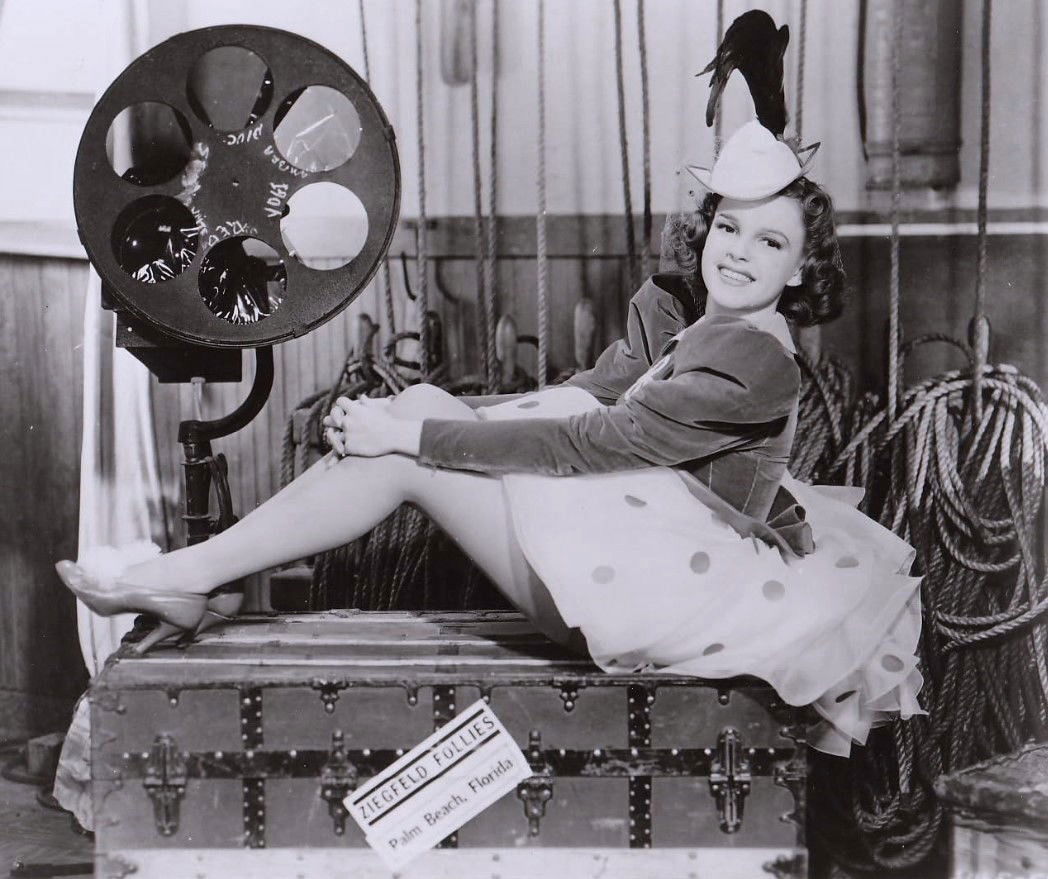
"Courtesy of the site IMBD.com"
Susan Gallagher (Judy Garland) - A talented young singer trying to find her place between career and family, embodying the American dream of success and balance. Judy Garland, already famous for "The Wizard of Oz", here shows a more mature and vulnerable side.
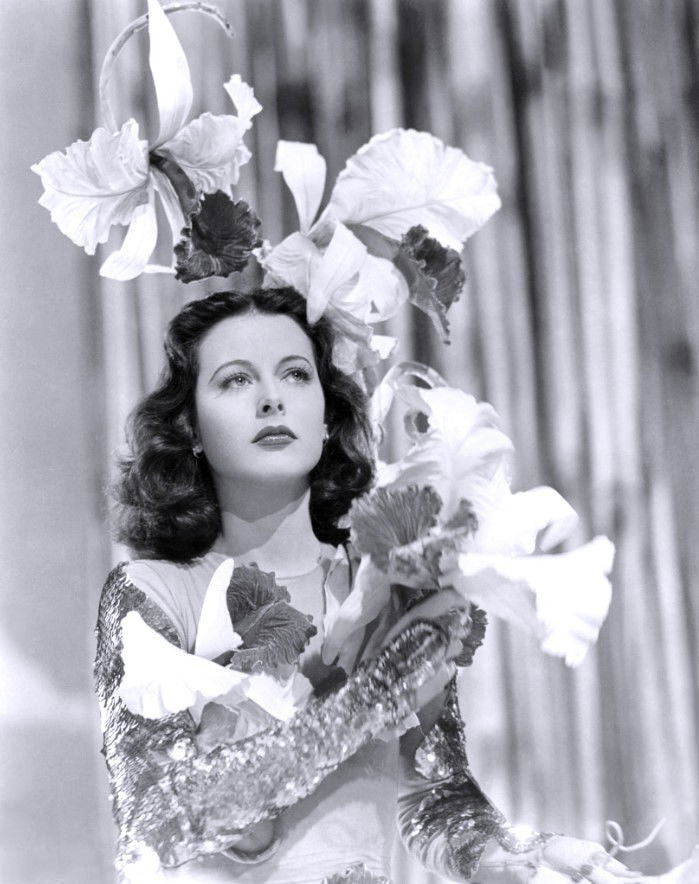
"Courtesy of the site IMBD.com"
Sandra Kolter (Hedy Lamarr) - A classy violinist who is confronted with the difficulties of marrying an unemployed musician, bringing the struggle between love and ambition to the screen. Lamarr, known for her beauty and intelligence, adds depth to the role.

"Courtesy of the site IMBD.com"
Sheila Regan (Lana Turner) - A model who emerges from poverty and street life, eager to transform her destiny through the stage. Lana Turner, here in one of her first leading roles, shines with a performance that helped cement her fame in Hollywood.
The Cast and the Stars
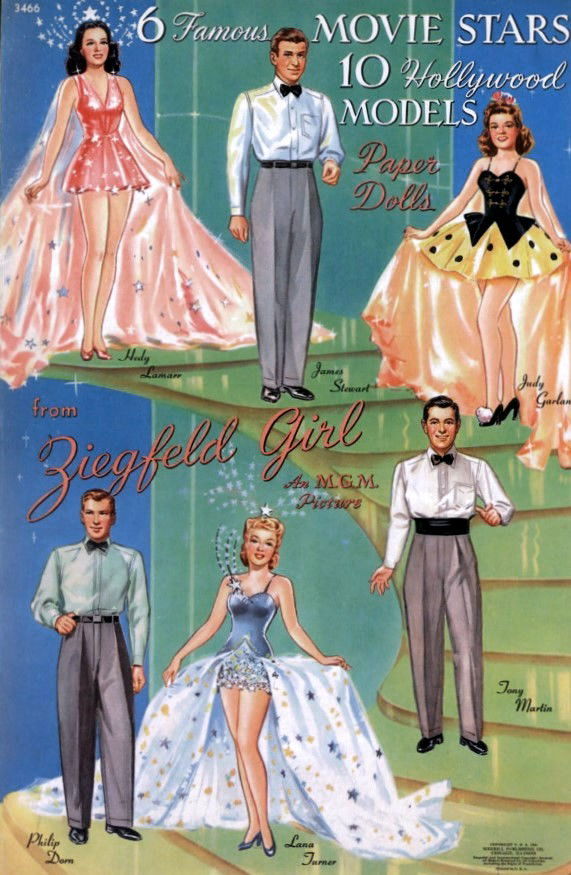
Movie poster (1939)
The film boasts an amazing cast that includes James Stewart, who plays Gilbert Young, Sheila's love interest, and Tony Martin as Frank Merton, Susan's partner. The chemistry between the actors and their performances are integral to the film's success.
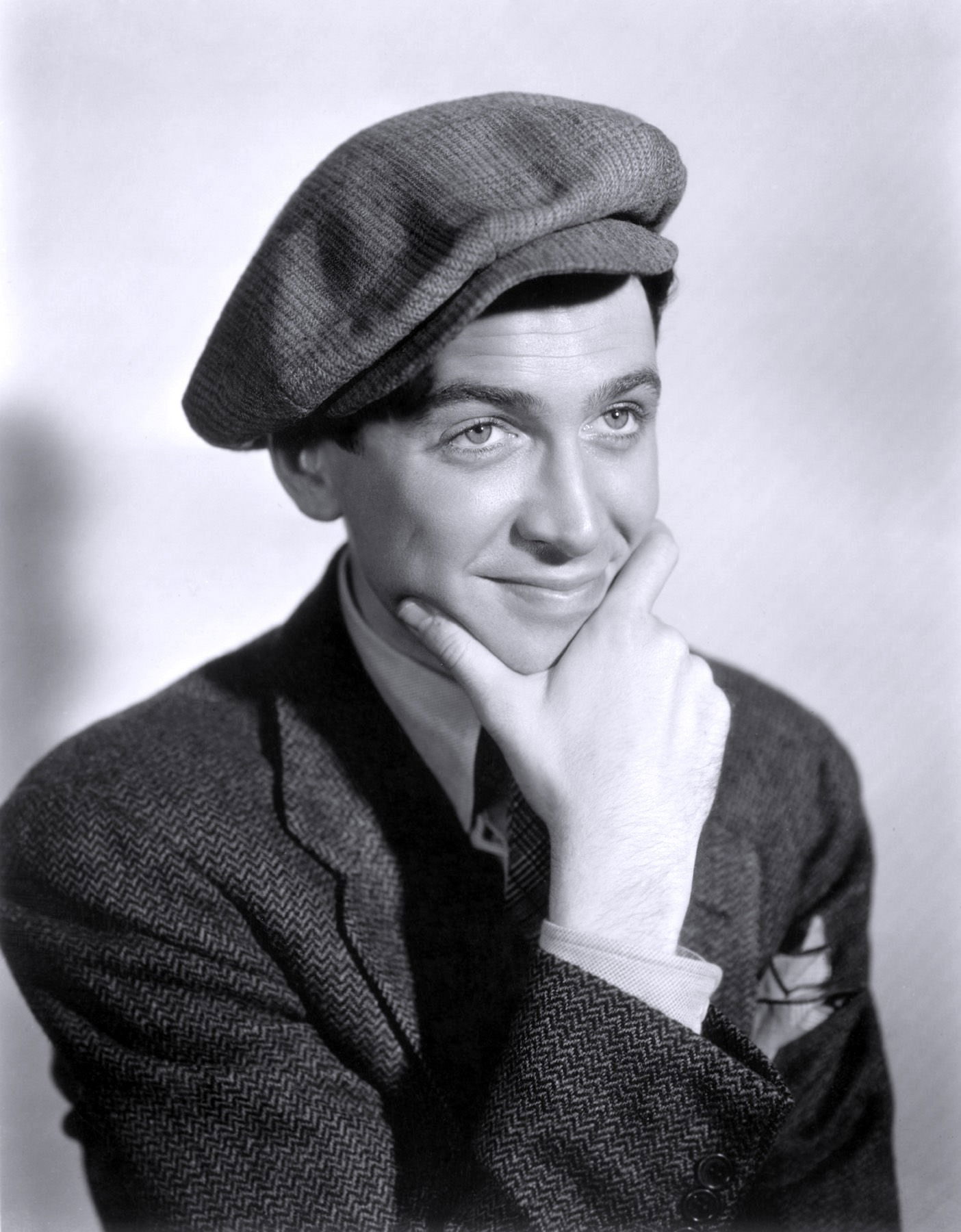
"Courtesy of the site doctormacro.com"
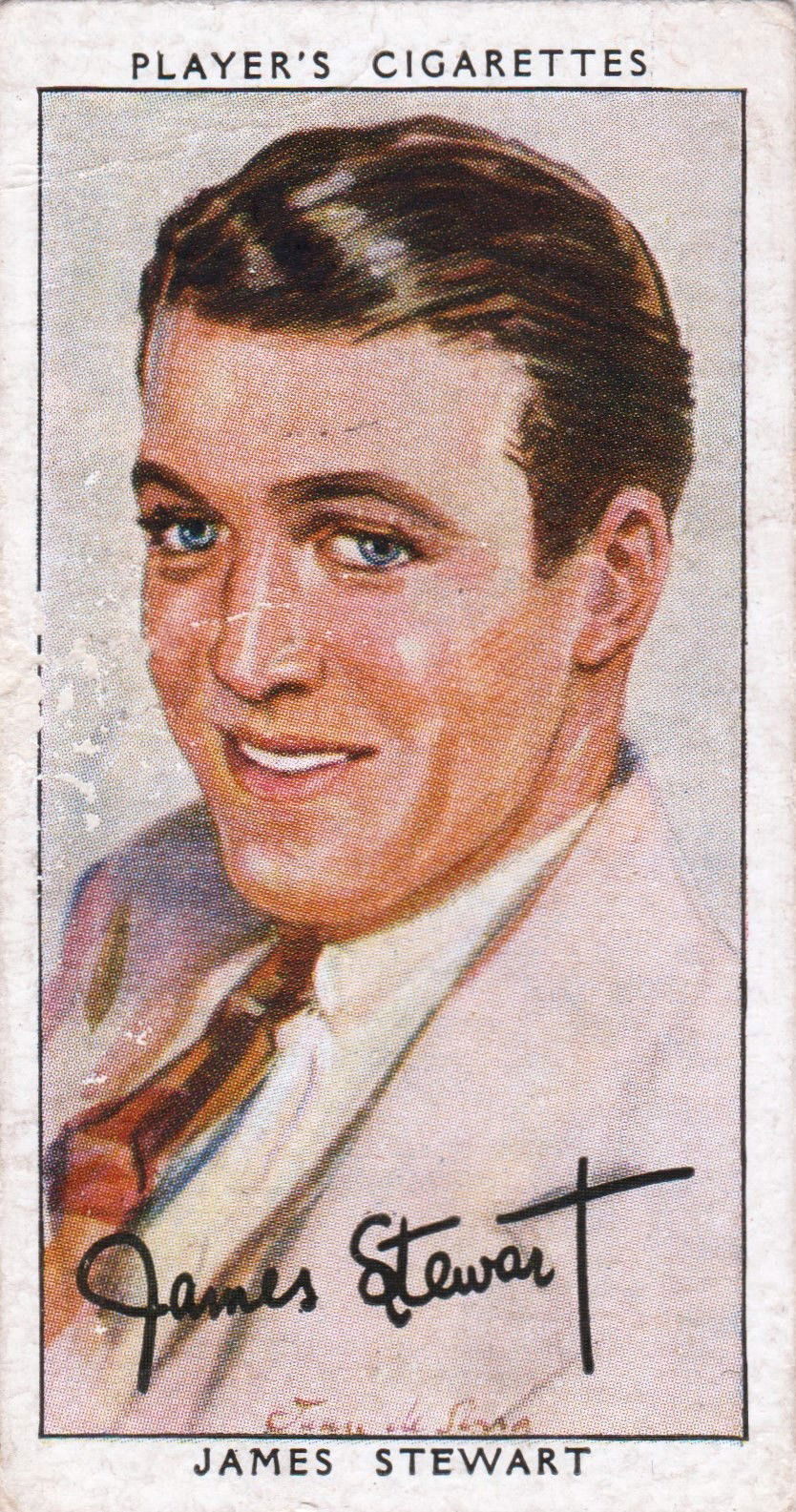
Card n.45 FILM STARS THIRD SERIES
JOHN PLAYER & SONS (1938)
(personal collection)
Costumes and Shows
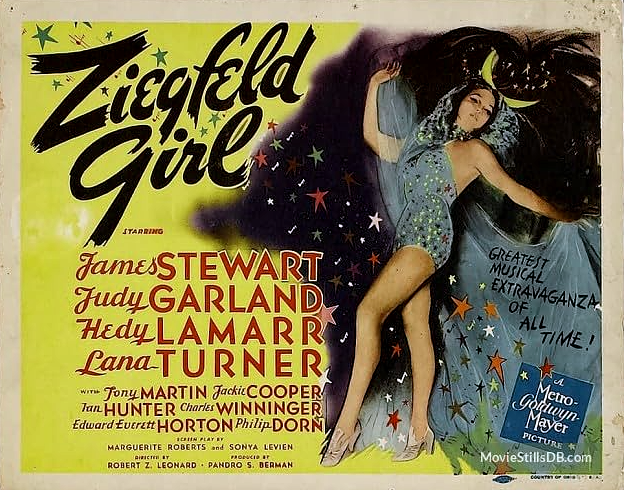
Lobby Card (1941)
The Ziegfeld Girls were the dancers and showgirls who appeared in the famous Broadway theater revues created by Florenz Ziegfeld Jr., known as the Ziegfeld Follies. These shows, which began in 1907, were known for their grandeur, lavish costumes, and elaborate choreography. The Ziegfeld Girls were selected for their beauty, grace and talent, and often became style and beauty icons of the time. Some of the most famous Ziegfeld Girls included actresses and singers such as Fanny Brice, Billie Burke, and Marilyn Miller. The Ziegfeld girls were not only dancers, but also singers, comedians and actresses who helped create unforgettable shows.
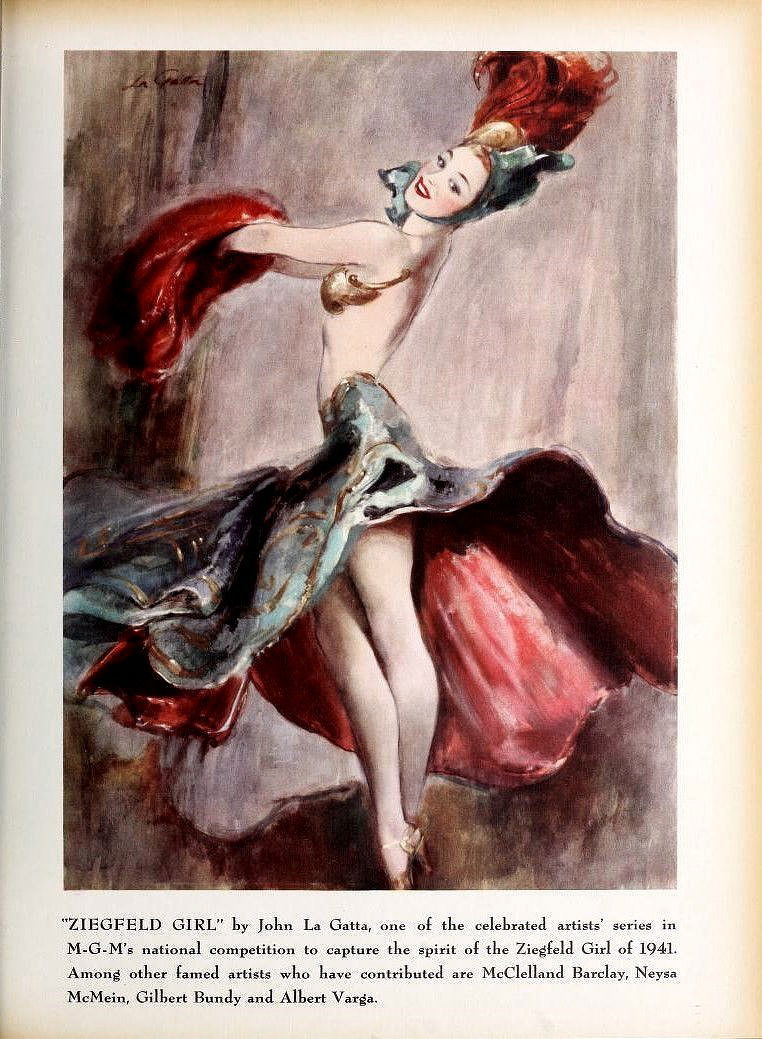
"Courtesy of the Media History Digital Library"
Pag. n.5 The Film Daily (Marzo 1941)

"Courtesy of the Media History Digital Library"
Pag.15 Motion Picture Herald (Marzo 1941)
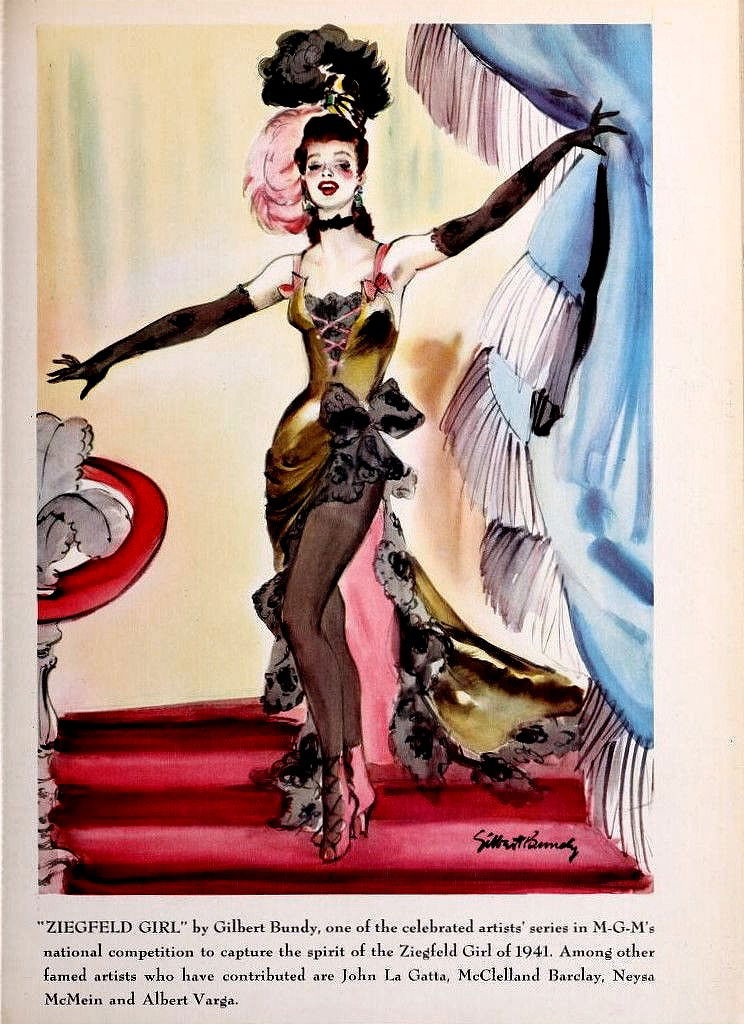
"Courtesy of the Media History Digital Library"
Pag.38 Motion Picture Herald (Marzo 1941)
The costumes of "Ziegfeld Girl" deserve a special mention. Created by Adrian, one of Hollywood's most famous costume designers, the costumes echo the grandeur and opulence of Ziegfeld's productions:
Evening Dresses: With feather, beading, and silk details, these dresses capture the elegance and glitz of the 1920s and 1930s, often with silhouettes that accentuate the feminine figure. Stage costumes: The dancers wear dresses that change color with the lights, with elaborate structures that seem to defy gravity, thanks to the choreography of Busby Berkeley. Huge hats, feather fans, and sparkling jewelry complete the look, making each scene a living painting.

"Courtesy of the Media History Digital Library"
Cover of HOLLYWOOD magazine (May 1941)

"Courtesy of the Media History Digital Library"
Page 21 of the magazine HOLLYWOOD (May 1941)
"Entrancing Eyeful"
"You'll see the stars when you see the Ziegfeld Girl from Metro-Goldwyn-Mayer! Not only are the costumes studded with stars, but also the cast. Among them are Hedy Lamarr (above), Judy Garland (left) and Lana Turner (right), with male interest provided by James Stewart and Tony Martin. Hedy and Lana are shown in their costumes designed by Adrian for the spectacular number 'You Stepped Out of a Dream'. Their sheer white dresses are studded with rhinestone stars, sequins and sequins. Judy is in costume for the number 'Minnie From Trinidad'. It introduces the 'Calypso Jive', a new Cuban dance."
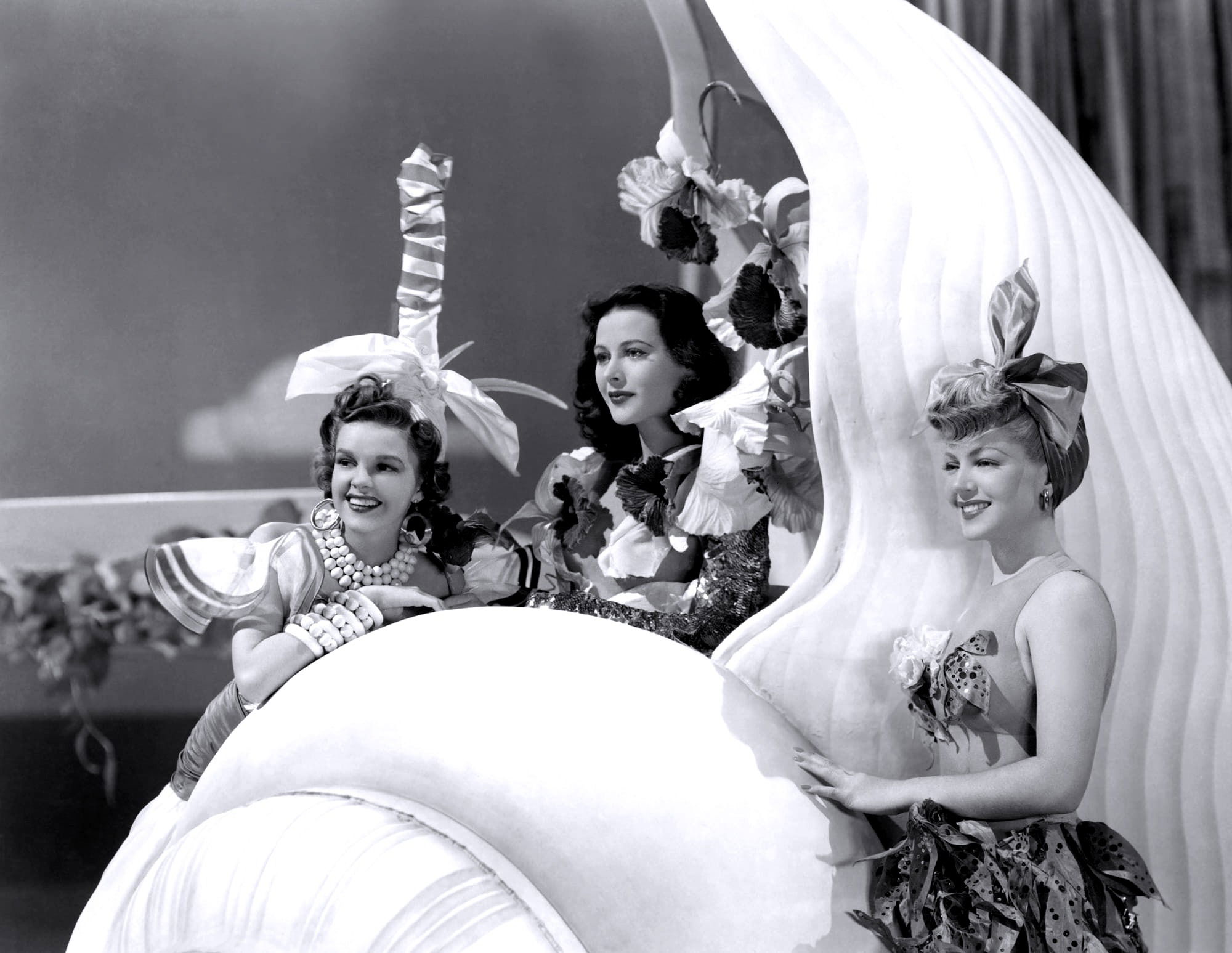
"Courtesy of the site doctormacro.com"
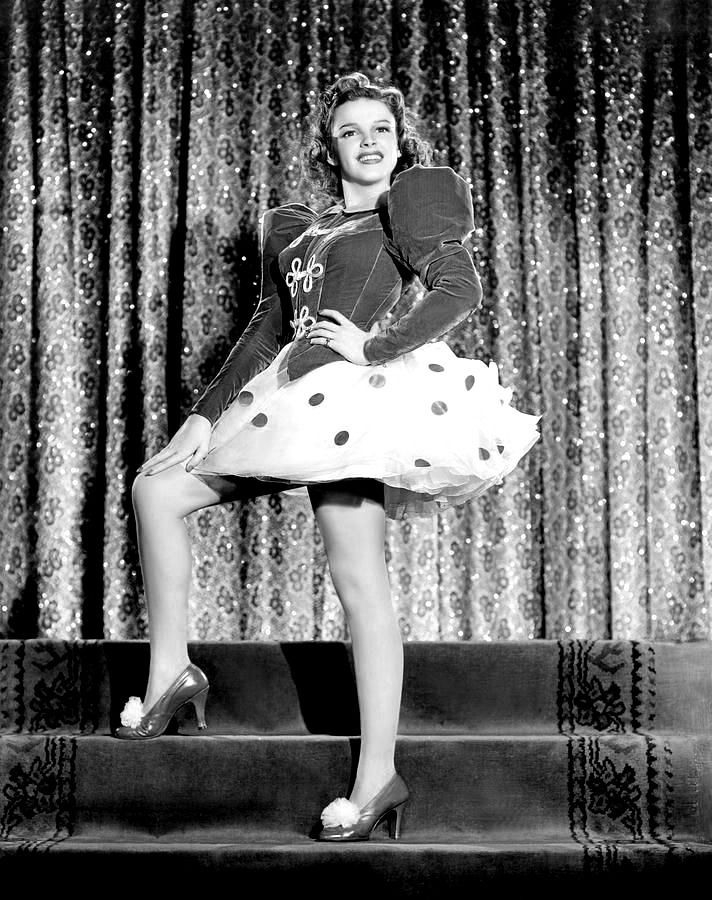
Scene from the Movie
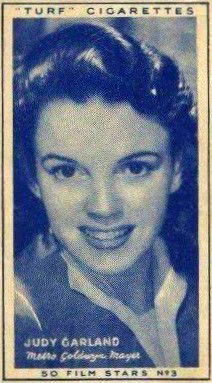
Card n.3 FILM STARS
CARRERAS LTD (1947) "TURF" CIGARETTES
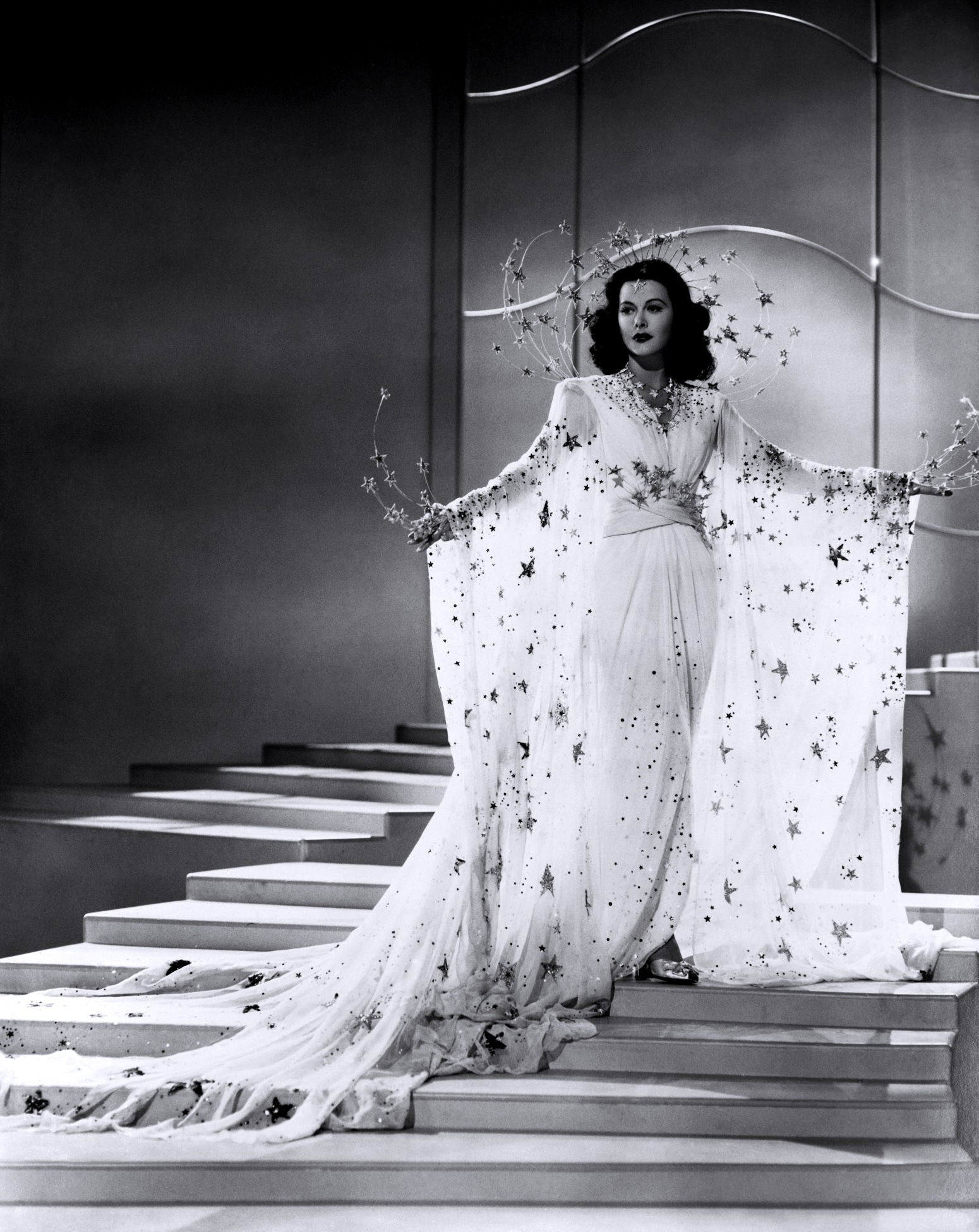
"Courtesy of the site doctormacro.com"
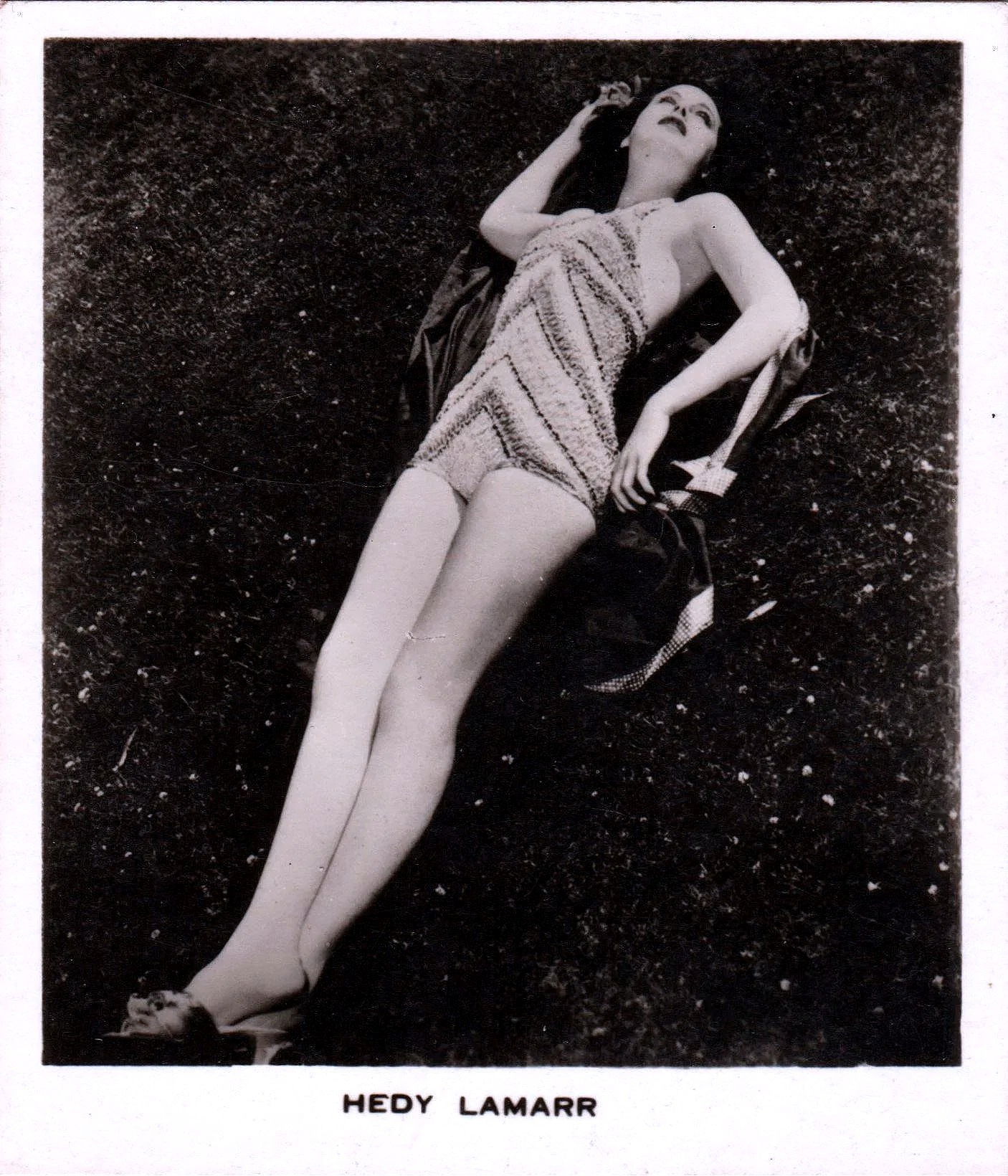
Card n.17 della - Film & Stage Beauties (L)
LTD RACING (1939)
(personal collection)
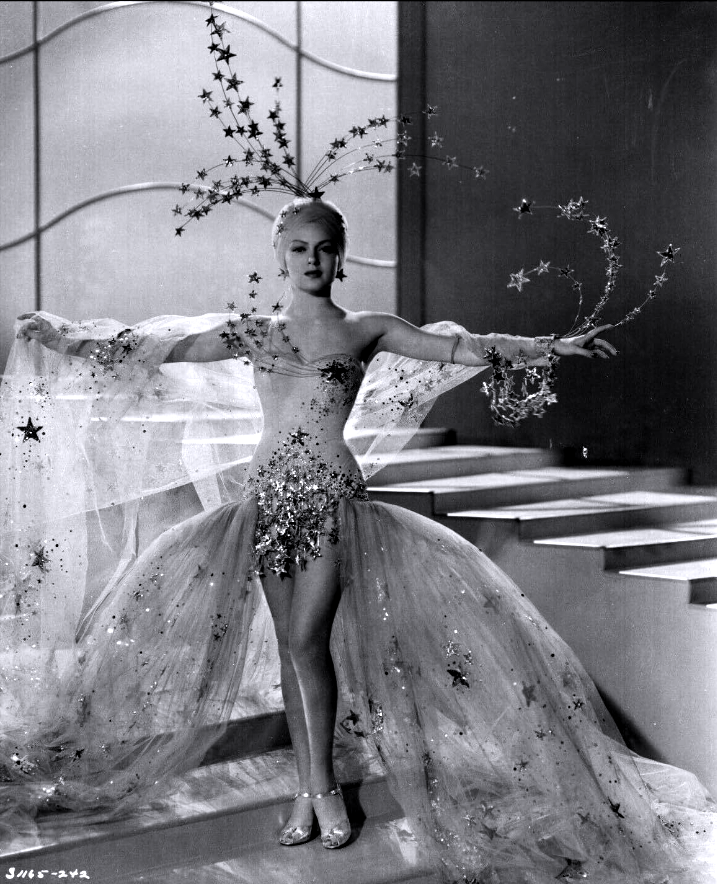
"Courtesy of the site IMBD.com"
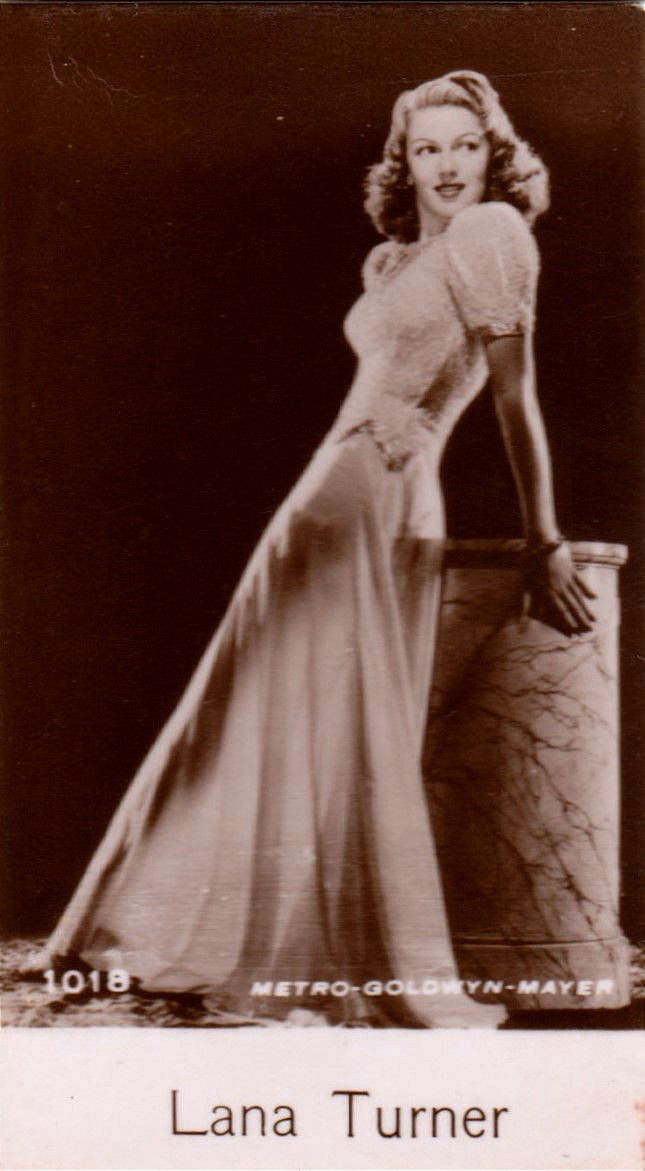
Card n.1018 - FILM STARS
De Beukelaer (1930)
(personal collection)
Here is an example of Trade Cards, De Beukelaer collectible cards were issued in the 30s by the De Beukelaer bakery in Belgium and England. These black and white cards were inserted into the cookie packets. The series included 100 small cards, each measuring 2.7 cm x 4.9 cm.
Busby Berkeley has turned every musical number into a work of visual art. His choreographies, with geometric formations and synchronized movements, not only entertain but still amaze today.
"Ziegfeld Girl" was a box office blockbuster and received rave reviews for its musical sequences and performances by the actors. It is considered a classic of the musical genre, not only for its aesthetic beauty but also for its tale of aspirations, struggles and personal triumphs.
Here are some of the ZIEGFELD GIRLS
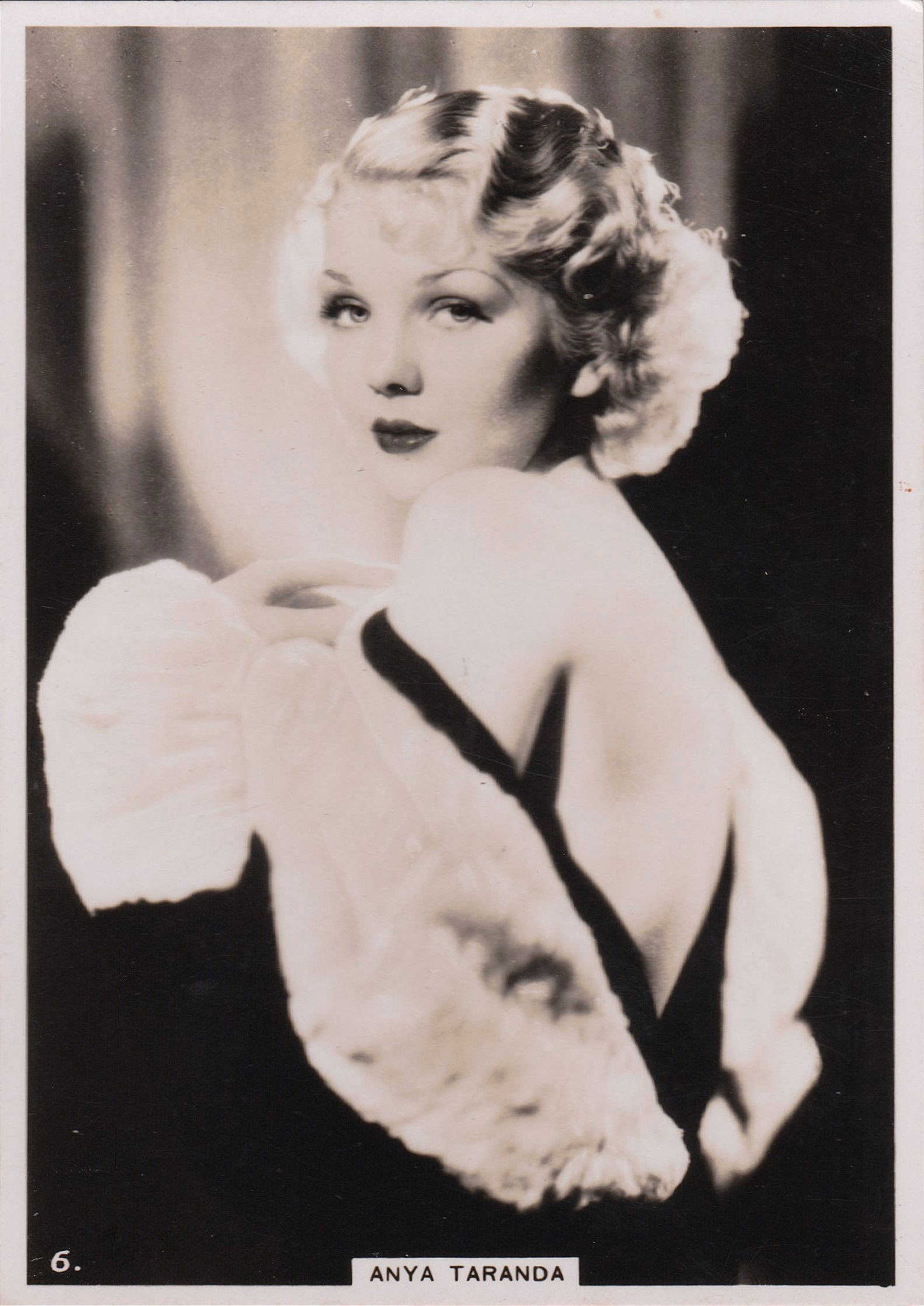
Card n.6 - MODERN BEAUTIES THIRD SERIES
BRITISH AMERICAN TOBACCO (B.A.T.) (1938)
(personal collection)

Card n.29 - MODERN BEAUTIES THIRD SERIES
BRITISH AMERICAN TOBACCO (B.A.T.) (1938)
(personal collection)
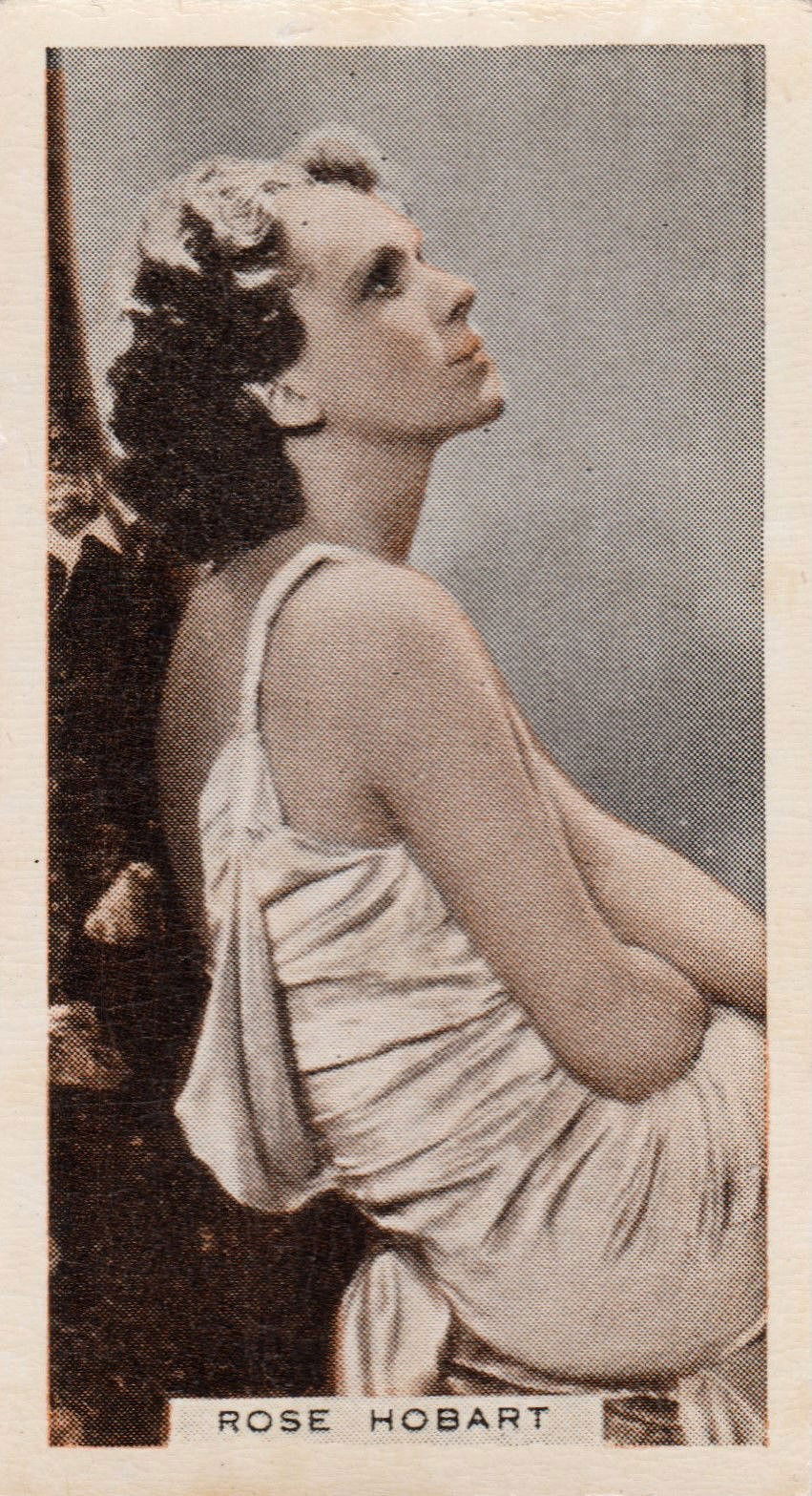
Card n. 27 STAGE and CINEMA BEAUTIES
GODFREY PHILLIPS Ltd. (1933)
(personal collection)
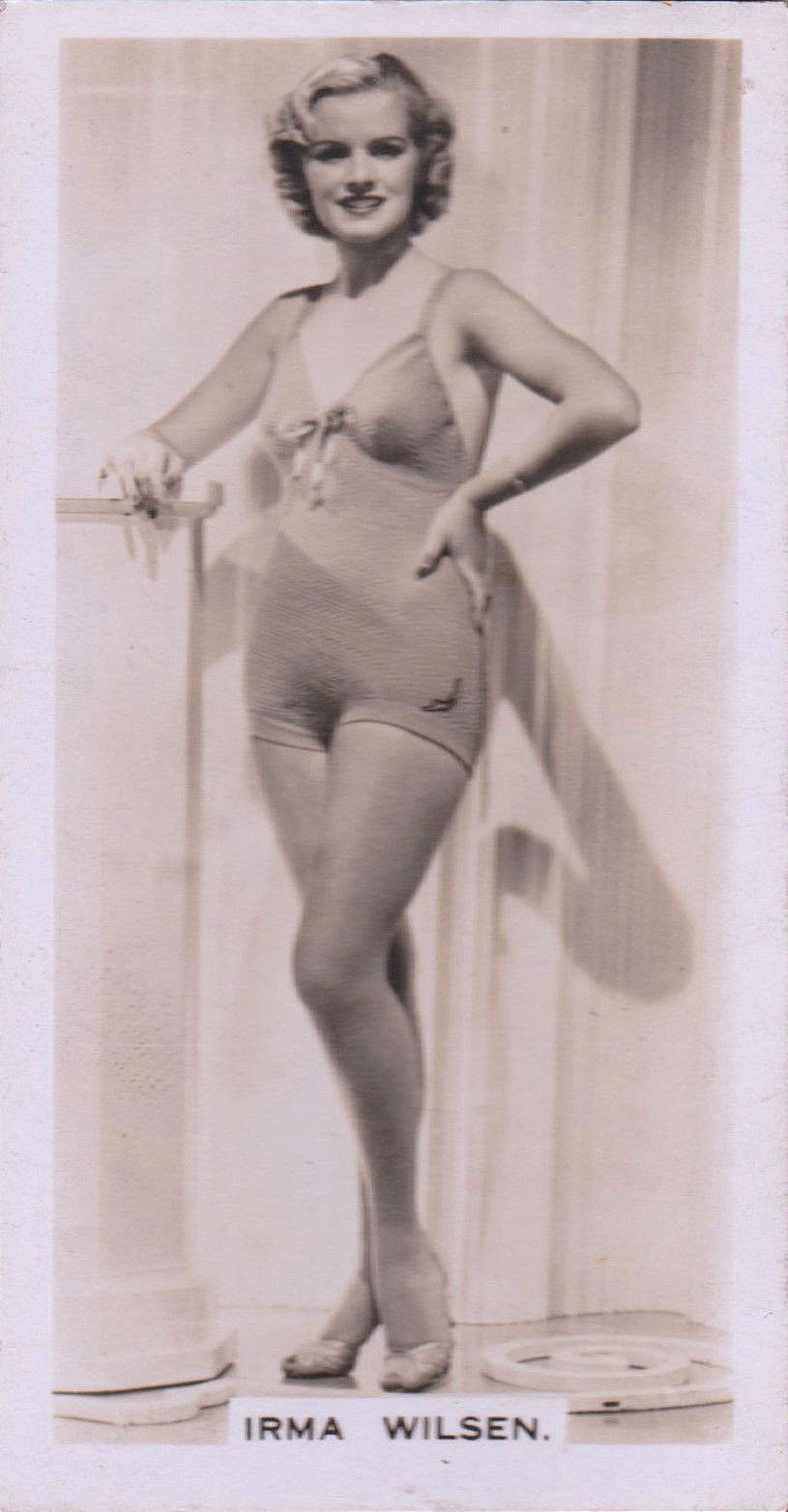
Card n.31 GLAMOUR GIRLS OF STAGE AND FILMS
CARRERAS Ltd. (1939)
(personal collection)
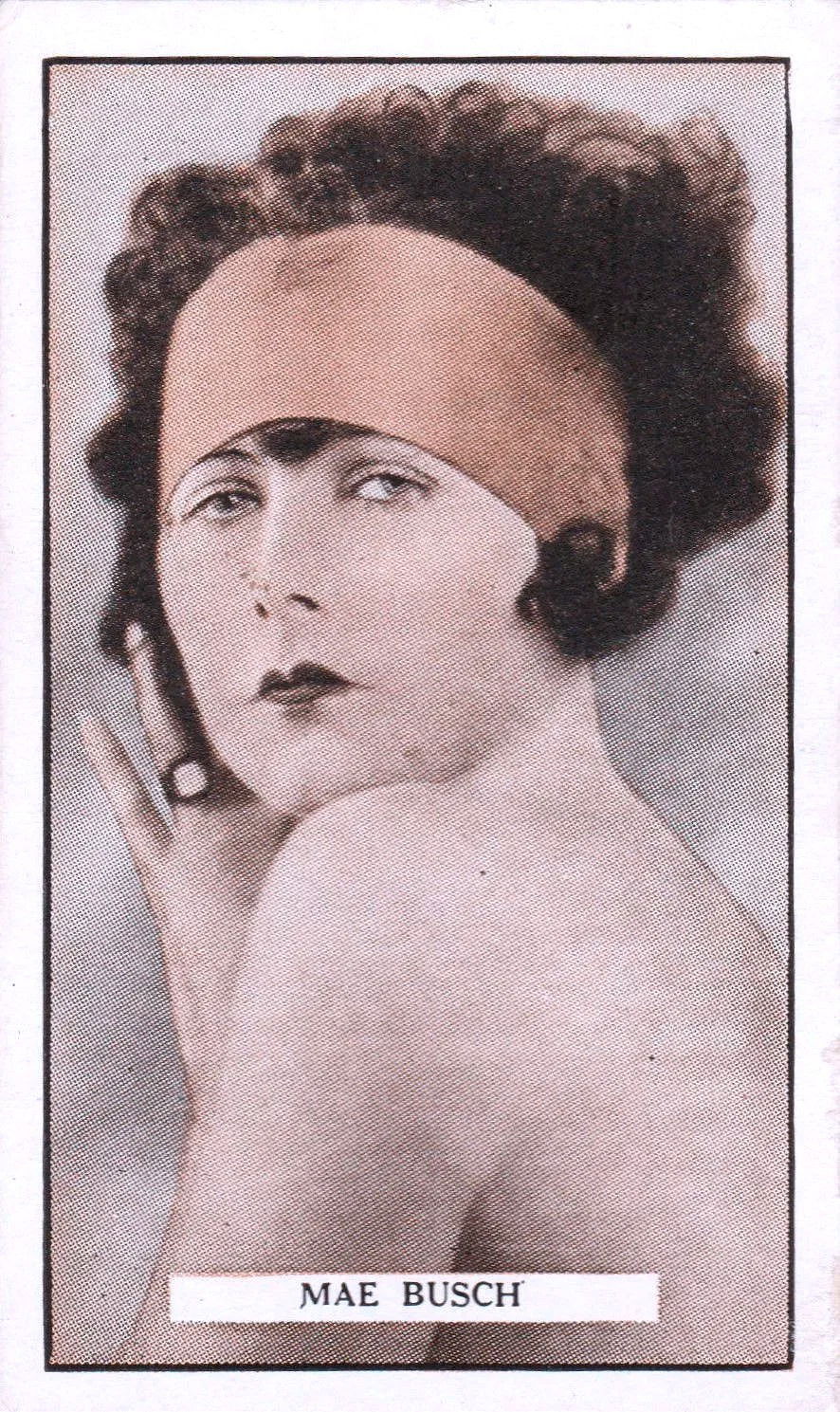
Card n.13 CINEMA STARS
GALLAHER Ltd. (1926)
(personal collection)
"Ziegfeld Girl" is not just a movie, it's a real party, a tribute to the magic of performance and the timeless seduction of showbiz, all wrapped in costumes that don't just tell a story, but sing, dance and wink at you from the film.
LADY IN THE DARK

Movie Poster
"Lady in the Dark" of 1944, directed by Mitchell Leisen, is not just a film; is a sweeping psychological exploration based on Moss Hart's Broadway musical, with music by Kurt Weill and lyrics by Ira Gershwin.
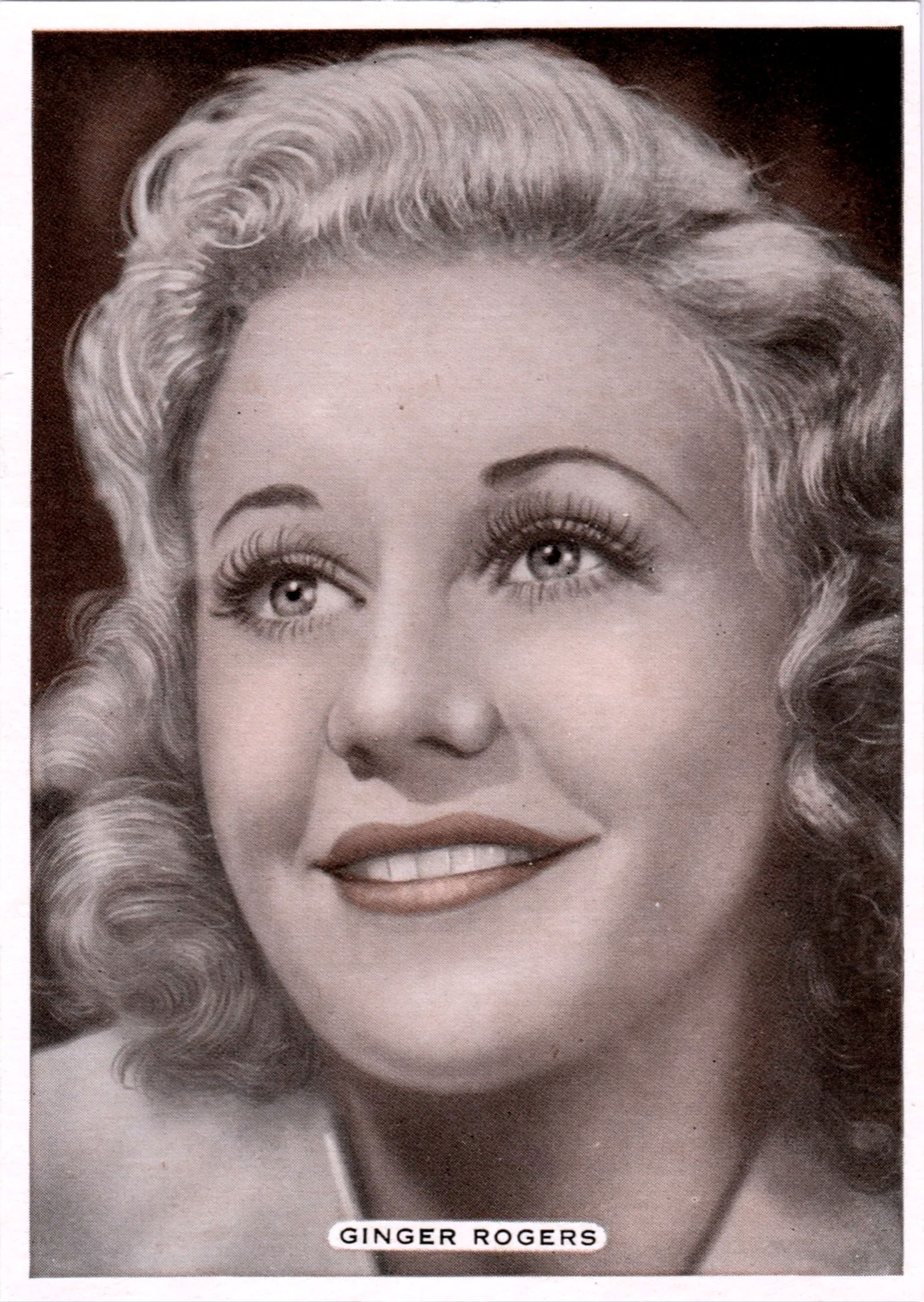
Card n.20 FILM STAGE & RADIO STARS
ARDATH TOBACCO CO LTD (1935)
(personal collection)
At center stage, Ginger Rogers plays Liza Elliott, a woman struggling with her inner conflicts. Liza is the editor of a successful fashion magazine, but she is tormented by dreams and visions that reflect her insecurities and fears. Throughout the film, Liza tries to find a balance between her career and her personal life, while dealing with her repressed emotions.
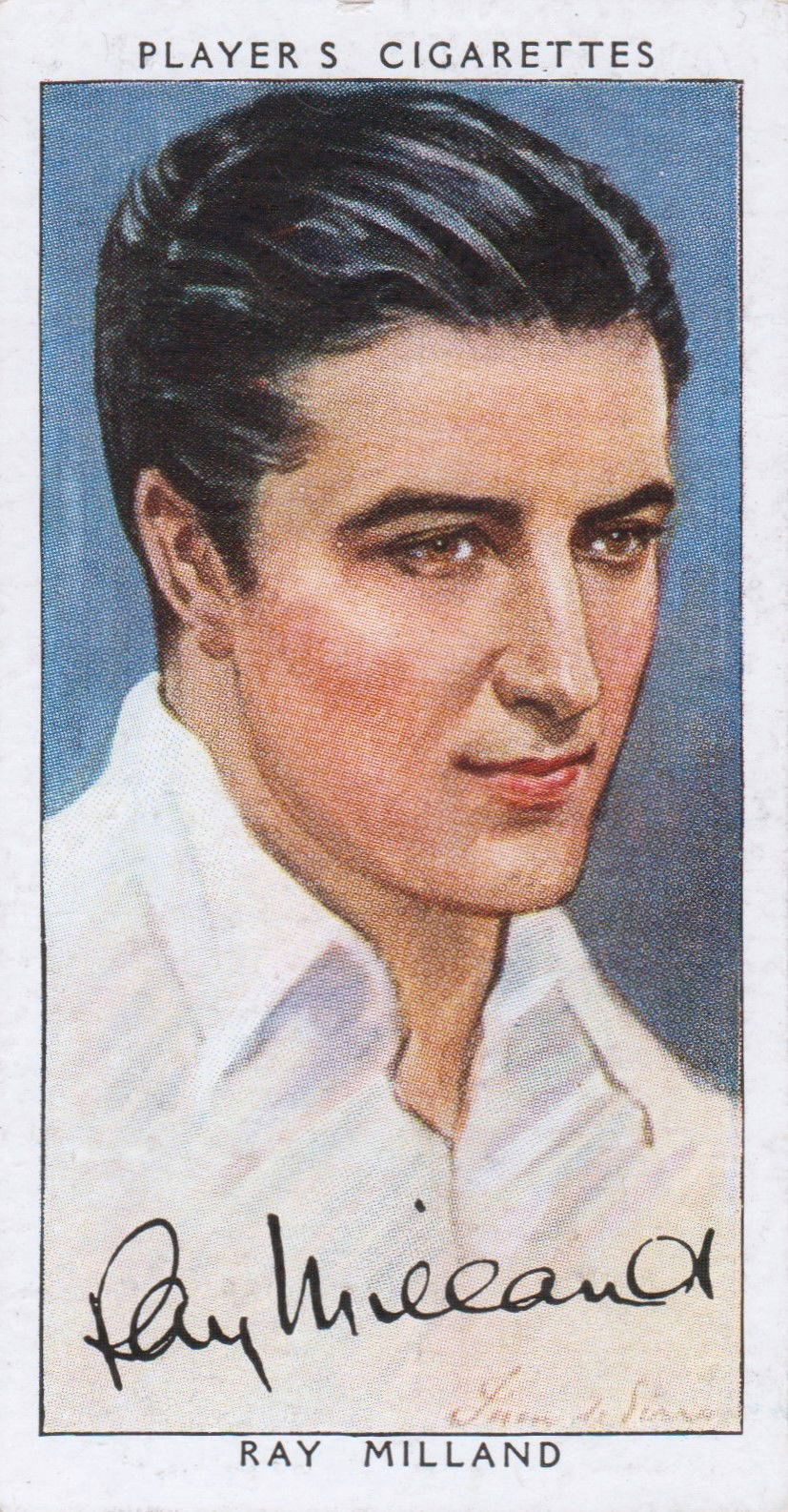
Card n.30 FILM STARS THIRD SERIES
JOHN PLAYER & SONS (1938)
(personal collection)
Next to her, Charley Johnson, played by Ray Milland, is a colleague who tries to help her overcome her inner conflicts. Milland's performance was particularly praised by critics for its ability to convey empathy and support to the character of Liza. His performance was described as "sensitive and convincing", helping to make the film even more engaging.
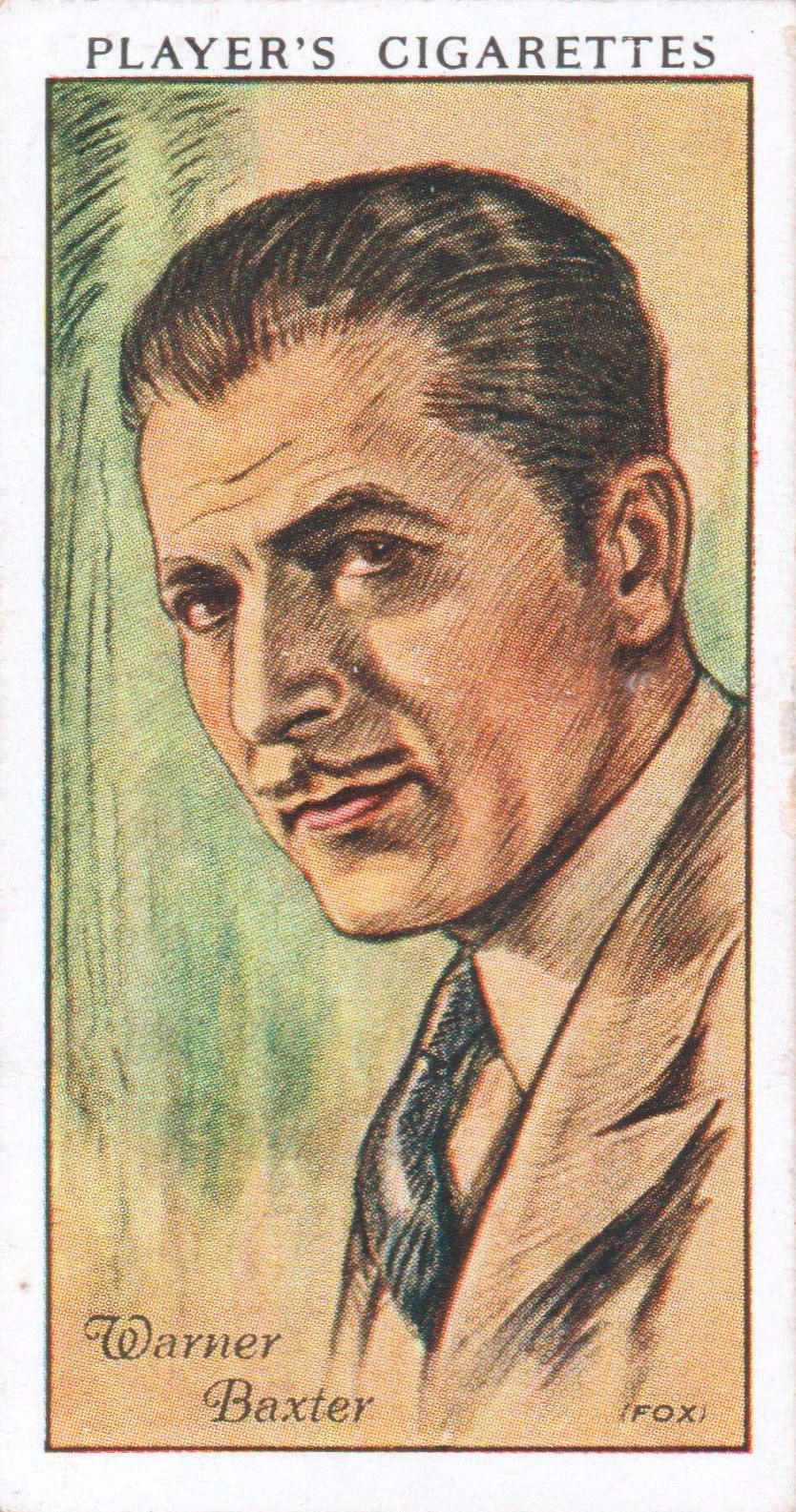
Card n.4 FILM STARS
JOHN PLAYER & SONS (1934)
(personal collection)
Kendall Nesbitt, played by Warner Baxter, is Liza's boyfriend, involved in a complicated relationship with her. Baxter's performance was praised for its depth and complexity. Critics praised her ability to portray a character who, despite her imperfections, tries to support Liza in her moments of difficulty. Baxter managed to convey the emotional nuances of his character, making Kendall and Liza's relationship believable and touching.
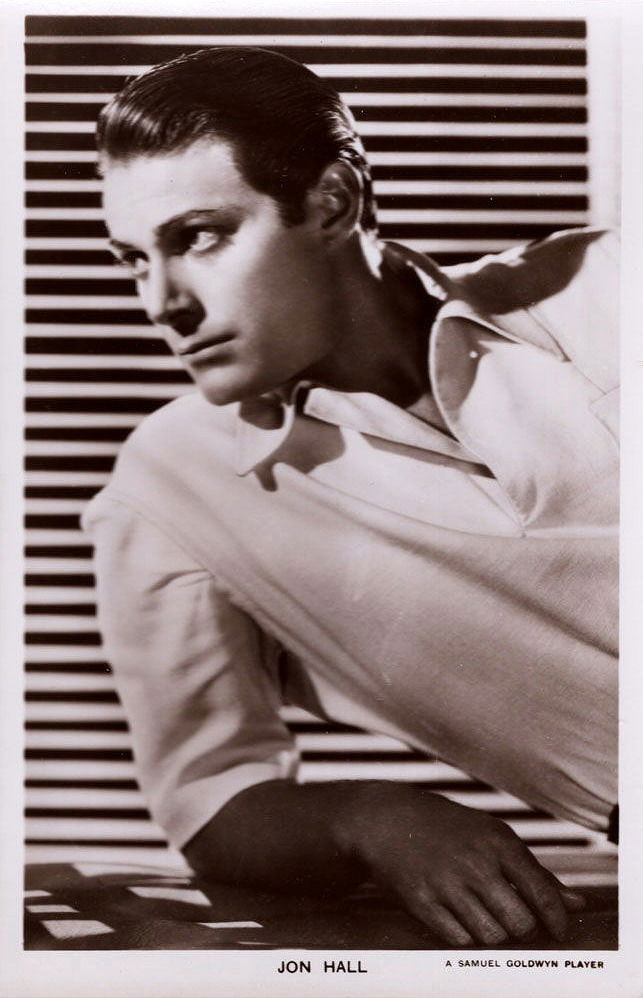
British postcard in the Picturegoer Series, London, no. 1244
Randy Curtis, played by Jon Hall, is a movie star who enters Liza's life during a photo shoot for the magazine. Hall's performance was praised for its charm and charisma. Critics praised his ability to bring lightness and a touch of romance to the film. Hall was able to play a character who, despite being a celebrity, shows a human and understanding side, adding further depth to the plot.
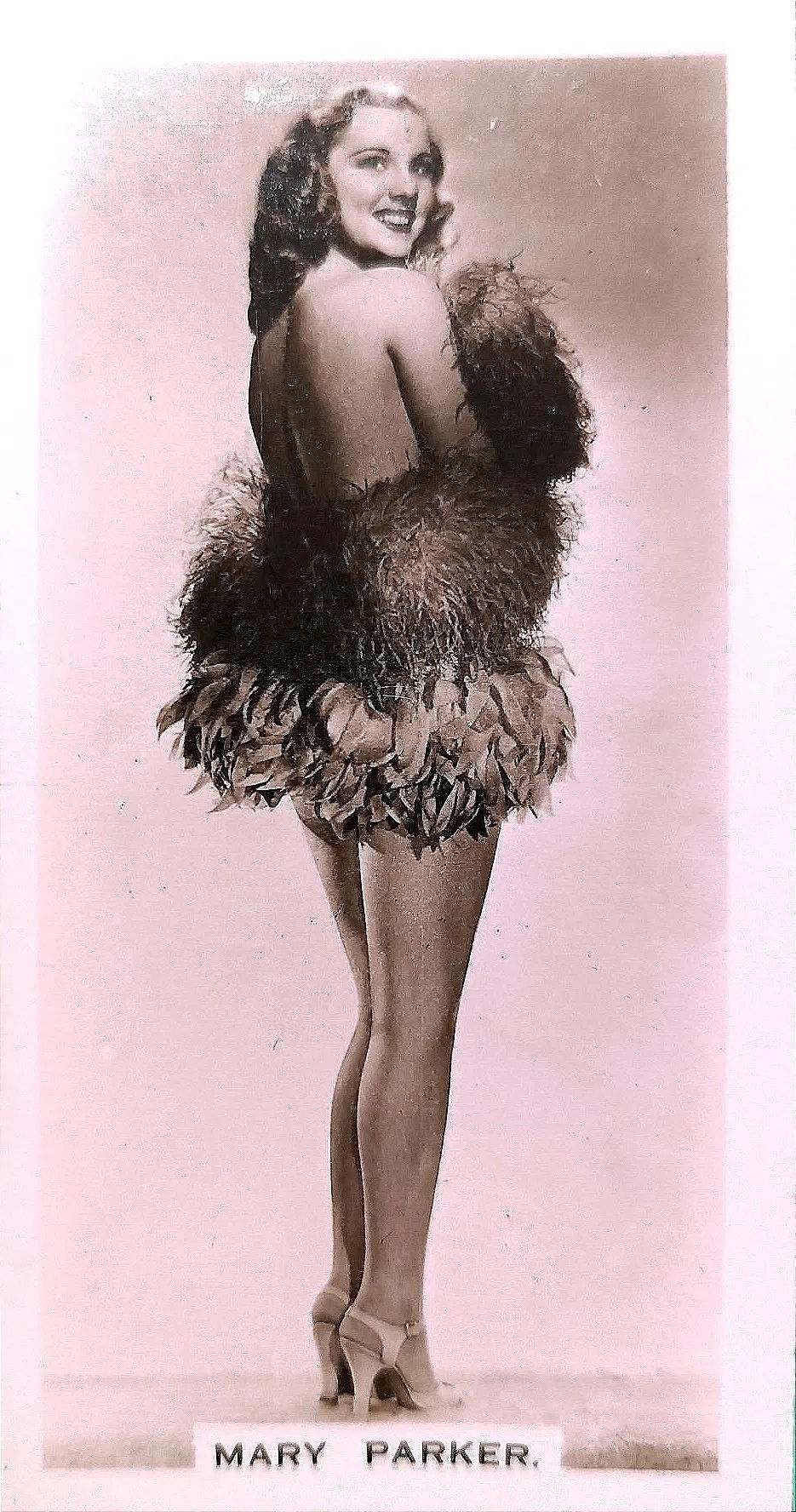
Card n.16 della GLAMOUR GIRLS of STAGE AND FILMS
LTD RACING (1939)
(personal collection)
In the film Lady in the Dark, Mari Parker plays the role of Miss Parker. Although he is not one of the main characters, his contribution to the film is significant. Miss Parker is one of the assistants of Liza Elliott, played by Ginger Rogers, and works at the fashion magazine Allure. The character of Miss Parker helps create the working environment in which much of the film's plot takes place. But what makes this film particularly fascinating isn't just the gripping plot or the spine-tingling performances; are her extraordinary costumes, real narrative tools that reflect Liza's tormented emotions.
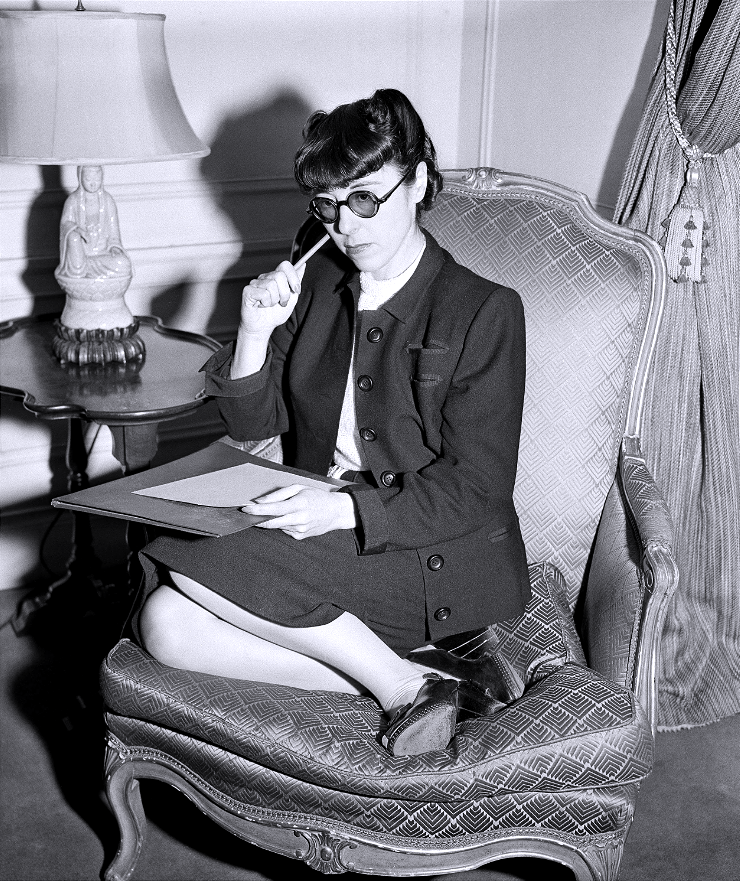
"Courtesy of the site IMBD.com"
Edith Head
A total of three hundred and fifty dresses are worn in the film, masterfully designed by Edith Head and Barbara Karinska, also known as Mme Karinska, tell a story of their own. Every dress that Ginger Rogers wears is a window into the world of Liza's dreams, fears and ambitions. In the dreamlike and fascinating world of the 1944 film "Lady in the Dark", Liza Elliott's dreams are a kaleidoscope of desires, fears and ambitions, each told with an elegance that only classic cinema can offer.
Sogno Glamour
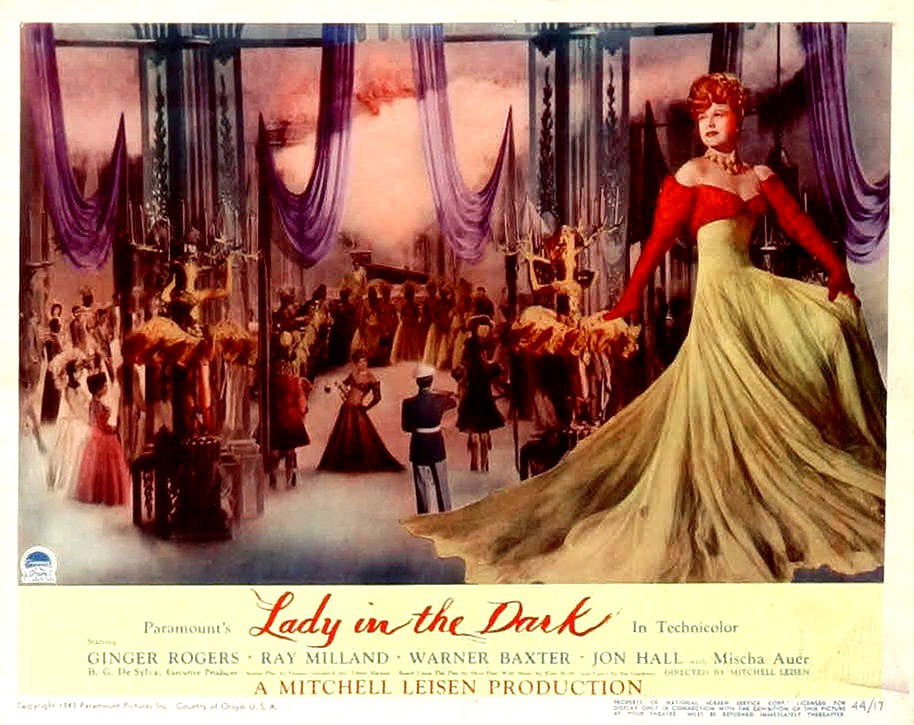
Lobby Card (1944)
Imagine Liza Elliott, the protagonist, falling asleep in a grey, monotonous world, only to wake up in a glittering dream. Here, Liza is the quintessential glamour, dressed in a dress that seems to capture the light of a thousand stars. It is studded with sequins and crystals that dance with its every movement, transforming it into a vision of pure beauty. Her figure moves gracefully on an invisible stage, where every eye is focused on her. This dream is not just a desire to be admired; it is a silent cry against the insecurities that haunt her, a yearning for approval that tries to fill the void of self-esteem. Let's take this dress, a sparkling masterpiece, studded with sequins and crystals, which embodies Liza's desire to be seen and admired. With a wide skirt that floats in a ballet of light and a bodice that embraces Ginger's silhouette, this costume not only captures the eye but also the soul of the viewer, highlighting the contrast between reality and dream.
Dream of Marriage
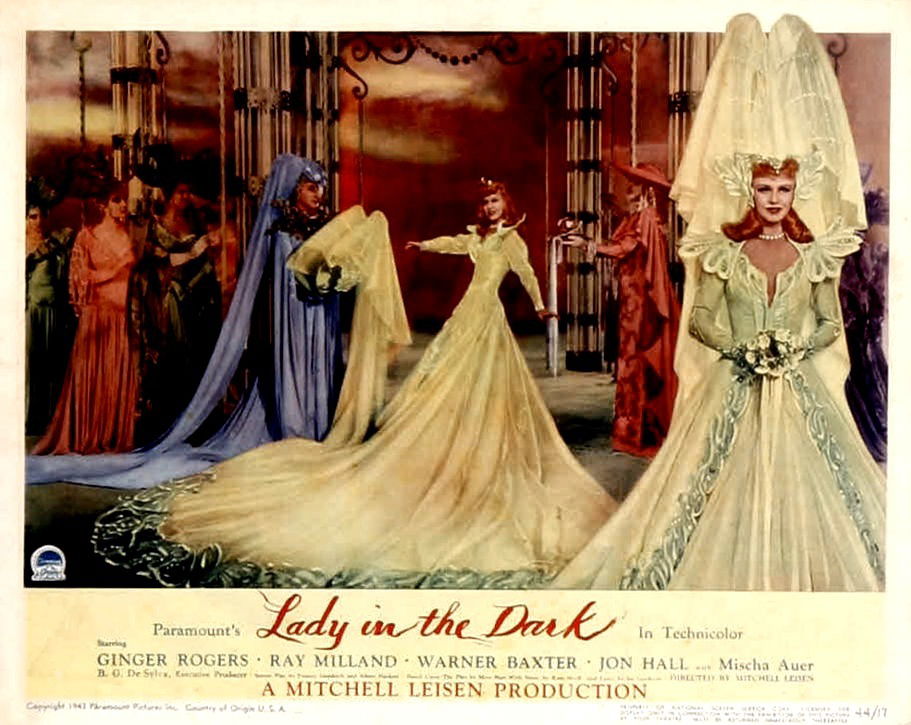
Lobby Card (1944)
The next dream transports Liza to a totally different environment. Now she wears a wedding dress, a masterpiece of lace and silk, but the context is far from idyllic.
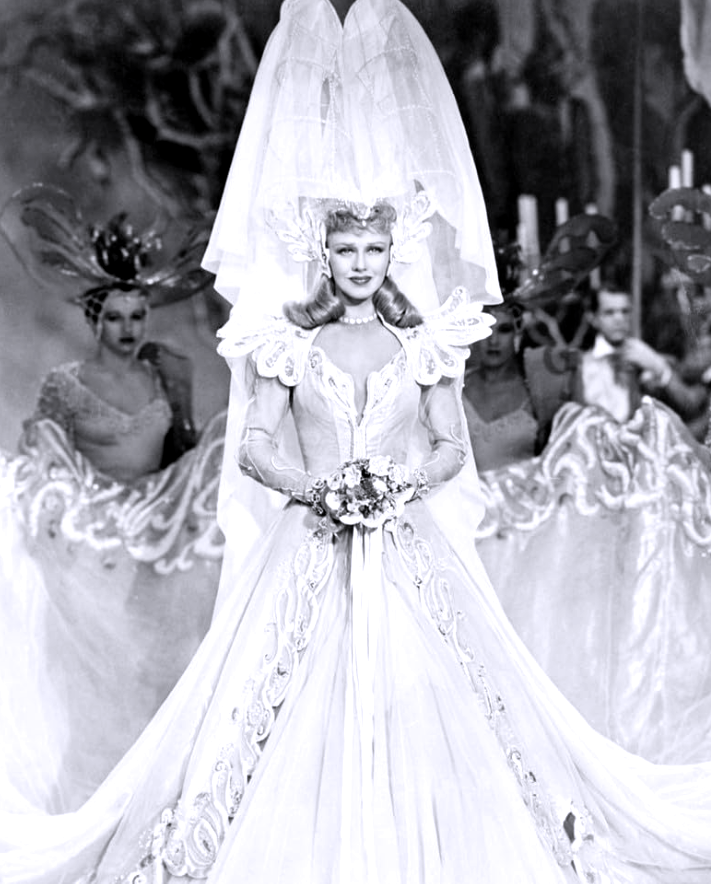
"Courtesy of the site IMBD.com"
The ceremony is a chaos, where every step towards the altar is a step towards uncertainty. The faces around her are blurred, the words spoken are blurred, and the atmosphere is charged with anxiety.
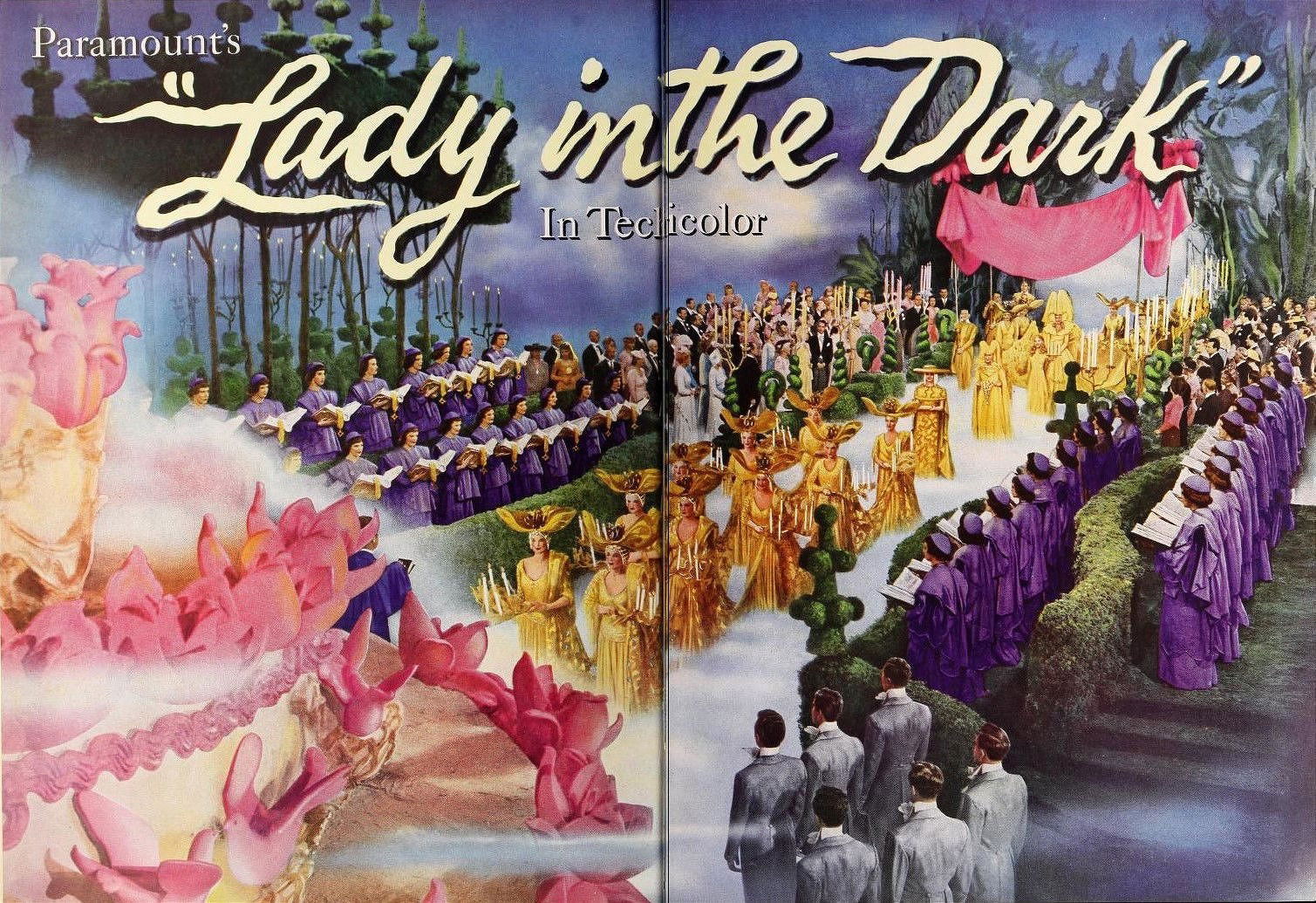
"Courtesy of the Media History Digital Library"
Page 20-21 of the magazine MOTION PICTURE HERALD (February 1944)
This dream reflects not only her fears about commitment, but also a deep reflection on relationships and what it really means to bond with someone. It is a labyrinth of conflicting emotions, where the desire for love meets the fear of abandonment.
Circus Dream
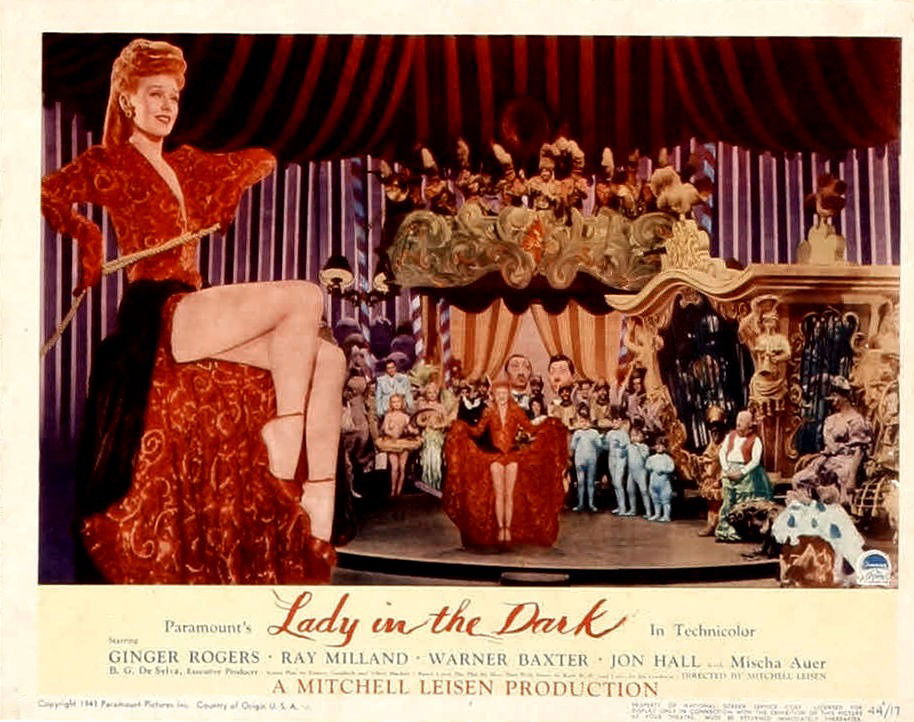
Lobby Card (1944)
Finally, Liza enters a world where reality mixes with the surreal. She is under the large tent of a circus, not as a spectator, but as the queen of the show. Her dress is an explosion of colors, with feathers, beads and fabrics that seem to come from another world.
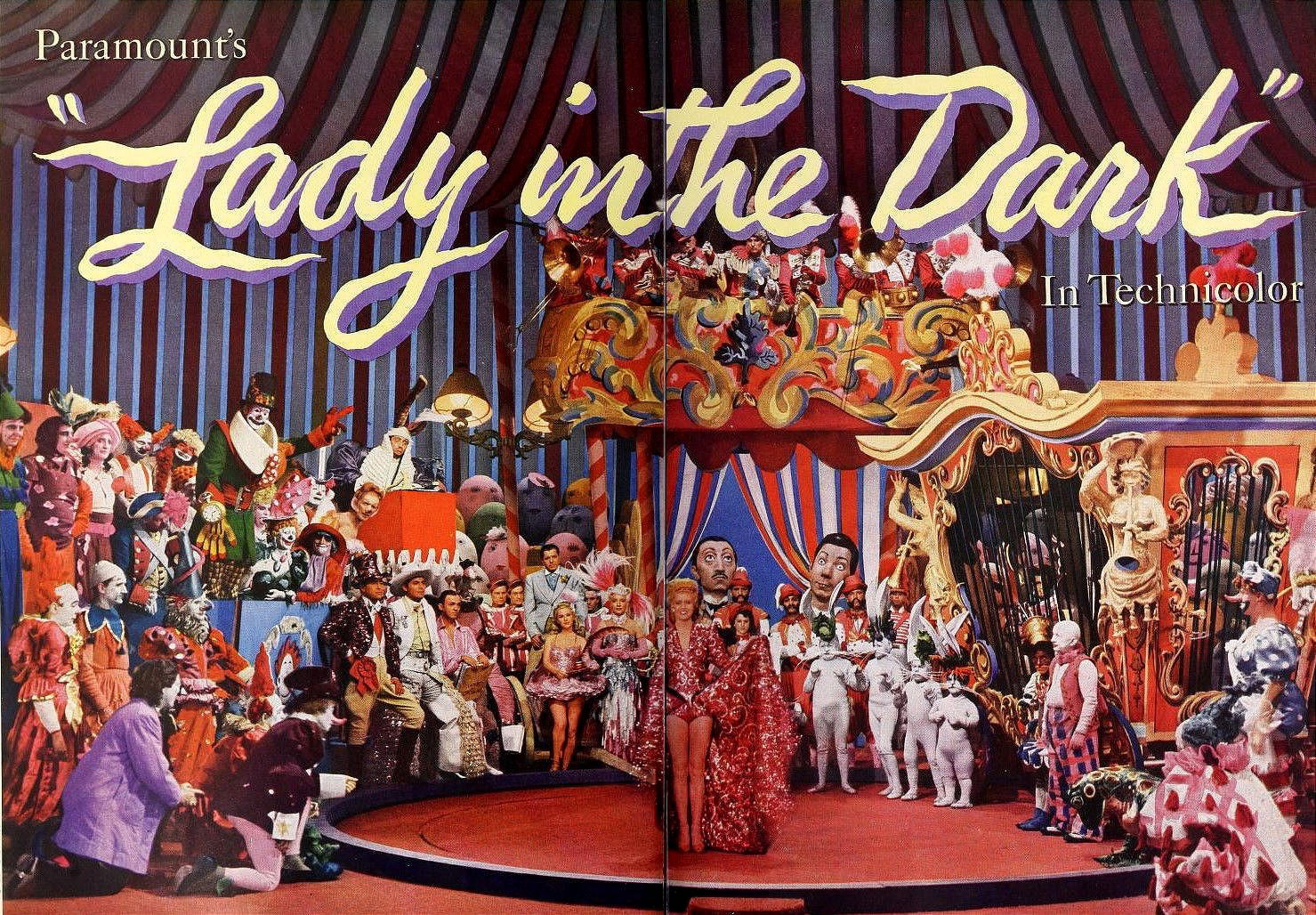
"Courtesy of the Media History Digital Library"
Pages 20-21 of the magazine MOTION PICTURE HERALD (March 1944)
Here, the chaos is not only visual but also internal; Every acrobat, every animal, every circus act represents an aspect of his life, his struggle between career and personal desires. It is a world where control and disorder coexist, where Liza tries to balance her existence with the same skill with which an acrobat walks on a tightrope.
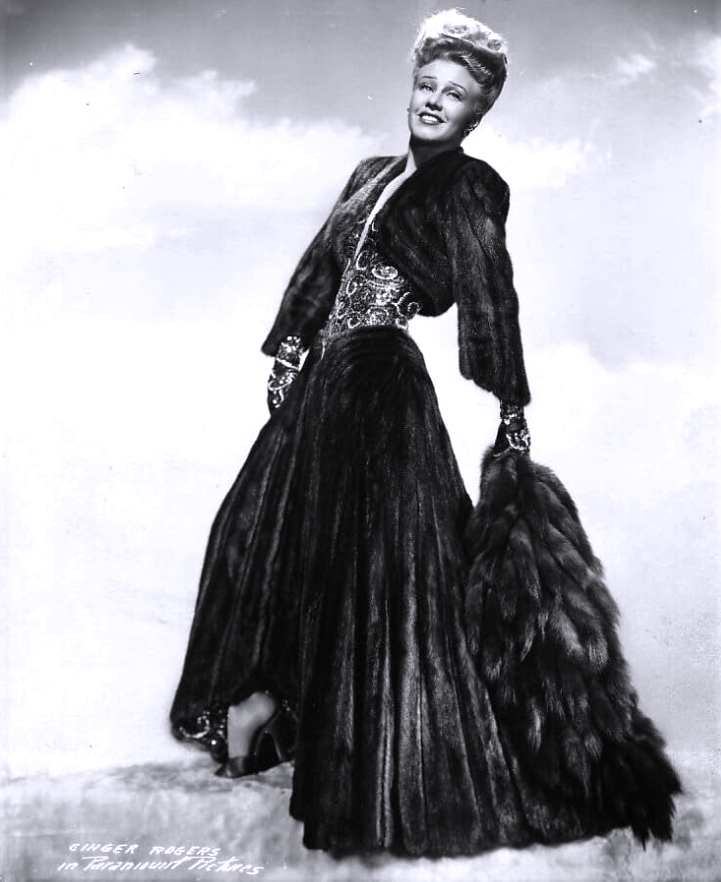
"Courtesy of the site IMBD.com"
In "The Circus Dream", Liza becomes a circus queen in an exotic and vibrant mink fur dress with a sequined bodice and skirt and red jewels. This costume evokes a dreamlike and surreal atmosphere, a mirror of the chaos and confusion that Liza experiences as she tries to balance her professional world with her most intimate desires.

"Courtesy of the site doctormacro.com"
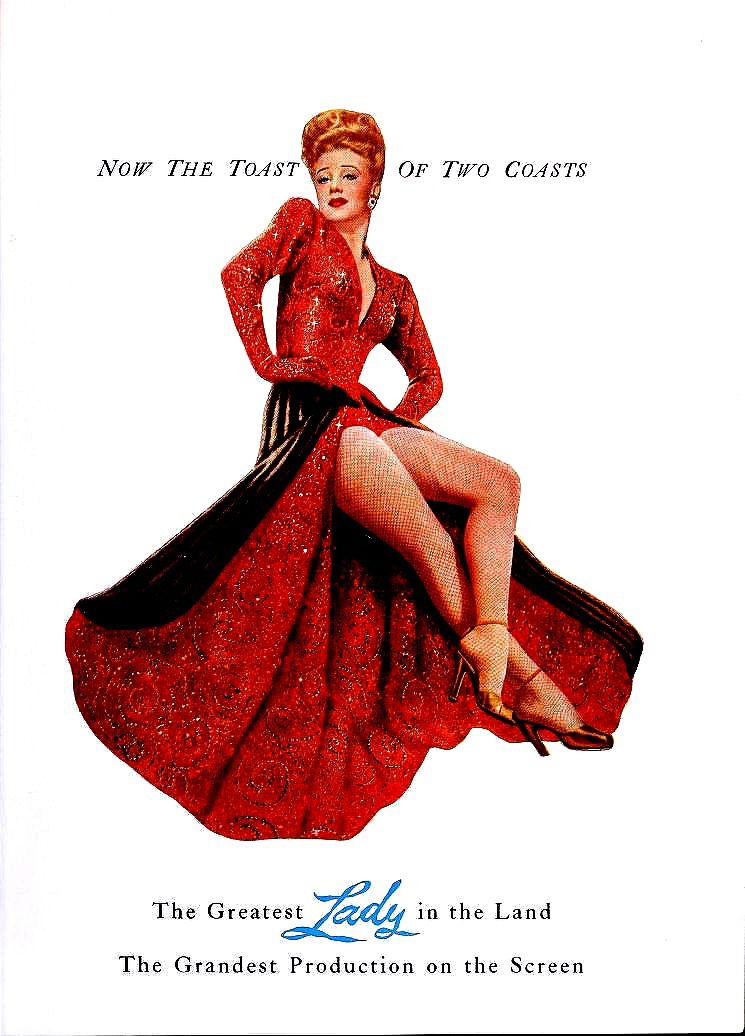
"Courtesy of the Media History Digital Library"
Page 19 of the magazine MOTION PICTURE HERALD (March 1944)
Reviews of the movie "Lady in the Dark" by film critics:
- "A sumptuous and satisfying show... as refined as anything Hollywood has ever made. The color photography is better than anything I've ever seen, and the backgrounds and costumes are out of this world. A fantastic and engaging film." —Howard Barnes, N.Y. Herald Tribune
- "Never in this writer's memory has the screen shown such a display of glitz and brilliance as with 'Lady In The Dark'. The dream scenes are made with fantastic elegance, and the purely material demonstrations are out of this world in brilliance and richness. I'm the ultimate in chi-chi decorative." —Bosley Crowther, N.Y. Times
- "Gorgeous is just one of the words for 'Lady In The Dark'. His Technicolors are dazzling and beautifully blended. Her costumes are simply out of this world, and her overall effect is one of extravagant luxury. It all adds up to top-notch entertainment. One of Hollywood's most spectacular hits. You'll love it enormously." —Rose Pelswick, N.Y. Journal American
- "Ginger Rogers' polite legs step on a mink skirt that gives you an idea of the originality, sumptuousness and timeless opulence of 'Lady In The Dark'. The whole production is dazzling." —Jane Corby, Brooklyn Eagle
- "'Lady In The Dark' is such a visual filler of color, costume and set design that it's hard to forget them long enough to remember that the plot is pretty amazing too. From almost every point of view it is a rare, rich and rewarding film. An exciting love story. A pleasure." —Archer Winsten, N.Y. Post
- "As pure splendor it is really the best. It's in iridescent Technicolor, moving gracefully from the real to its lush, melodious dream world, and giving Ginger Rogers the opportunity to stretch those incomparable legs of his. The production and Ginger are both super-dupers." —John T. McManus, P.M.
- "Wildly splendid musical numbers. An imaginative and witty festival for the eyes. It was a real feast for anyone who went to see 'Lady In The Dark' yesterday. There will be hats thrown into the air by the crowds coming out of Paramount for a few weeks to come." —Alton Cook, N.Y. World Telegram
- "Sumptuous and splendid color film. Extraordinarily beautiful." —Kate Cameron, N.Y. Daily News
- "An extraordinarily sumptuous and lush extravaganza. Probably the biggest thing to come off the production line in many months." —Leo Mishkin, Morning Telegraph
The jewels for the film were also created by Edith Head, with a strong contribution and design concept by director Mitchell Leisen, who has a career as a costume designer behind him.

"Courtesy of the site IMBD.com"
Edith Head has transformed the costumes into silent but powerful narrators. In "Lady in the Dark", her touch is evident in every detail, transforming fabrics and silhouettes into tangible emotions. The film is not simply a cinematic narrative, it is a journey into the human soul through fashion, where Head's costumes become protagonists as much as the actors.
"Lady in the Dark" is not just to be seen; is to be experienced. It is a brilliant testimony to how cinema can blend art, fashion and psychology to create a work that remains etched over time.
1946-1948: After the war, cinema saw a return to grandeur and greater attention to detail in costumes. "Gilda" made the black evening dress worn by Rita Hayworth immortal, a symbol of glamour and sensuality with its heart-shaped cut and long black glove.
GUILD
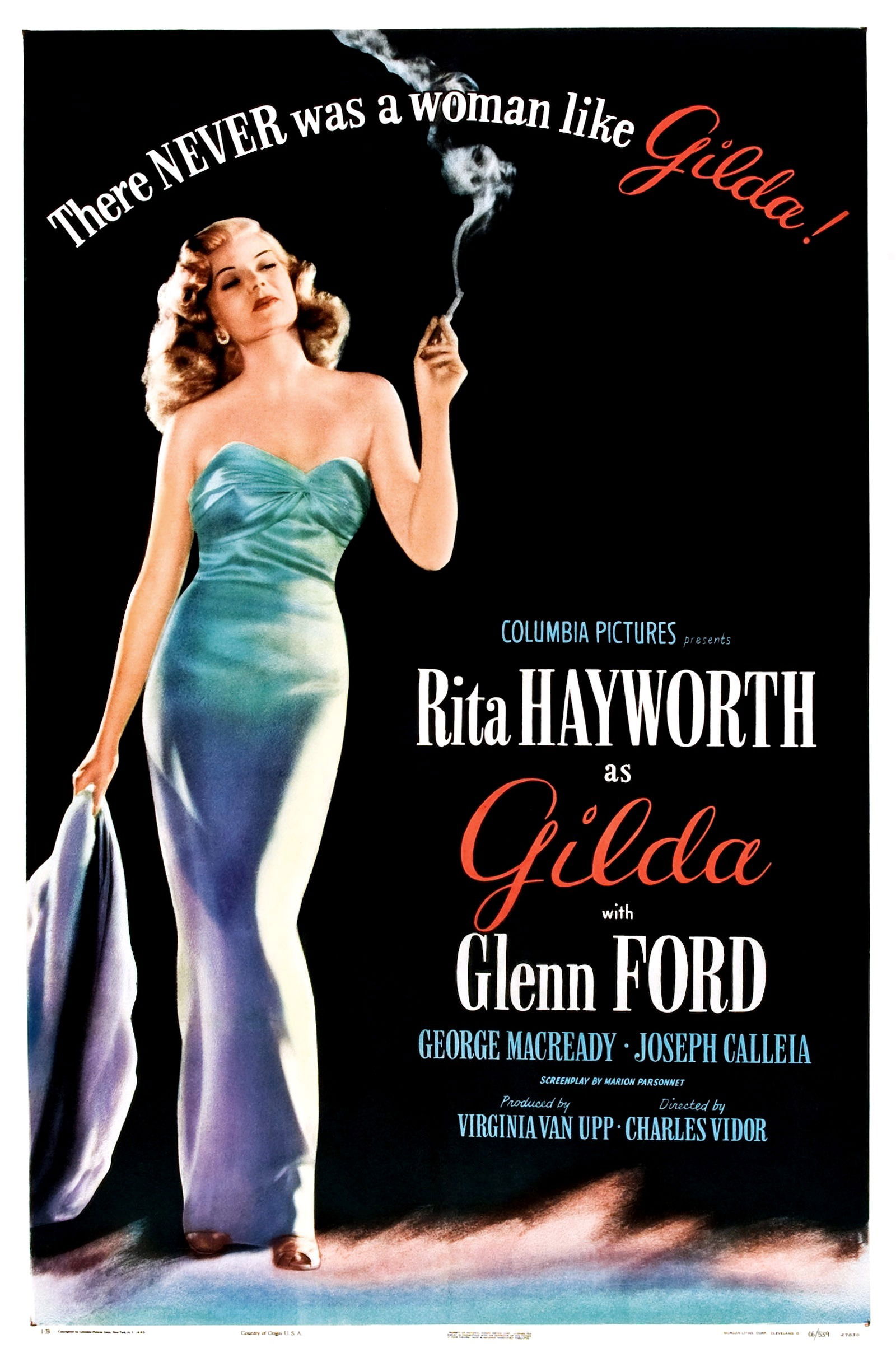
Movie Poster
Rita Hayworth, one of Hollywood's most glamorous icons, was born Margarita Carmen Cansino on October 17, 1918, in Brooklyn, New York. Her original surname, Cansino, reflected her Hispanic roots, being the daughter of Spanish dancer Eduardo Cansino and American dancer Volga Hayworth. Early in her career, Rita used the stage name Rita Cansino, but soon realized that a change in image was necessary to land bigger roles in Hollywood.
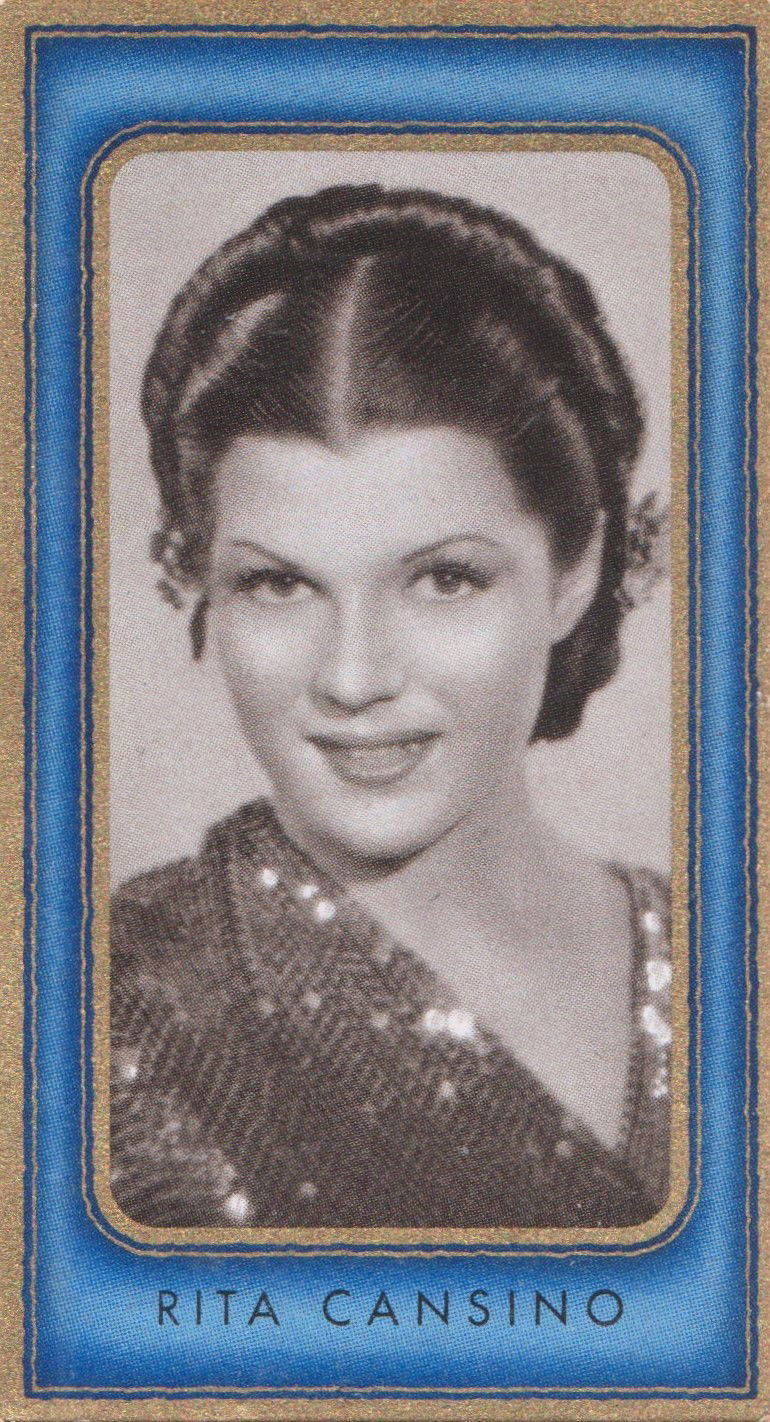
Card n.128 BUNDLE OF FILM PICTURES (1936)
(personal collection)
The change of name and image was suggested by her first husband, Edward Judson, and film studio executives. To fit the beauty standards of the time and to get more meaningful roles, Rita underwent several physical transformations, including electrolysis to raise her hairline and dye her hair red. It was around this time that she adopted the stage name "Rita Hayworth", using her mother's surname, Volga Hayworth, to create a more anglicized image acceptable to the American public. The change of name and image was successful, and Rita Hayworth became one of Hollywood's brightest stars.
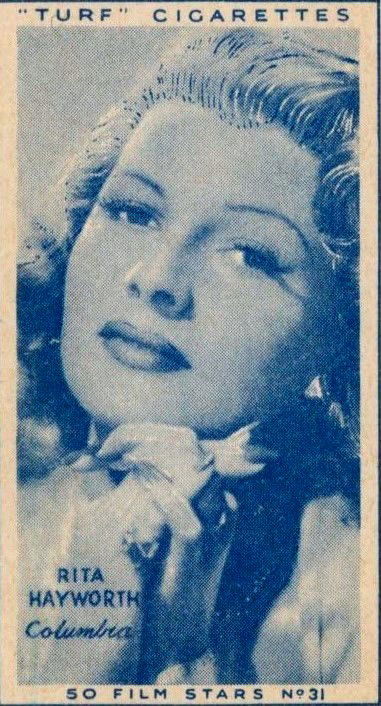
Card n.31 FILM STARS
CARRERAS Ltd. (1947) "TURF" CIGARETTES
Her first big hit under the new name was in the 1939 film "Only Angels Have Wings", but it was with 1941's "The Strawberry Blonde" and "You'll Never Get Rich" in the same year that Rita Hayworth became a true film icon. Her timeless beauty and irresistible charm made her one of the most loved and admired actresses of the time. Rita Hayworth is perhaps best known for her role in the movie "Gilda."
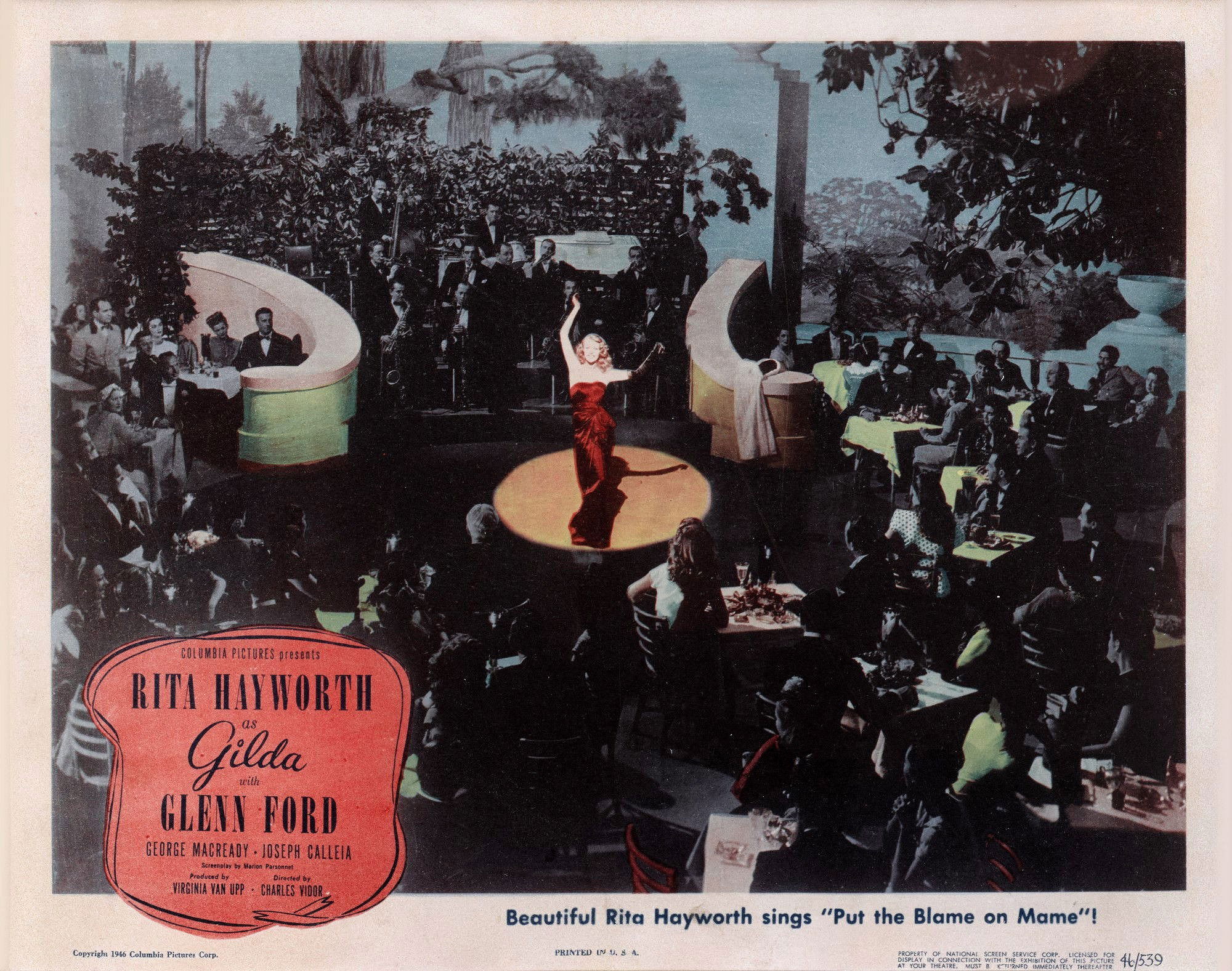
Lobby Card (1946)
"Gilda" is a 1946 film that profoundly marked the history of cinema, not only for its compelling plot and memorable performances, but also for the iconic black evening dress worn by Rita Hayworth. This dress, with its bold heart cut and long black gloves, has become a symbol of glamour and sensuality, embodying the elegance and charm of the golden age of Hollywood.
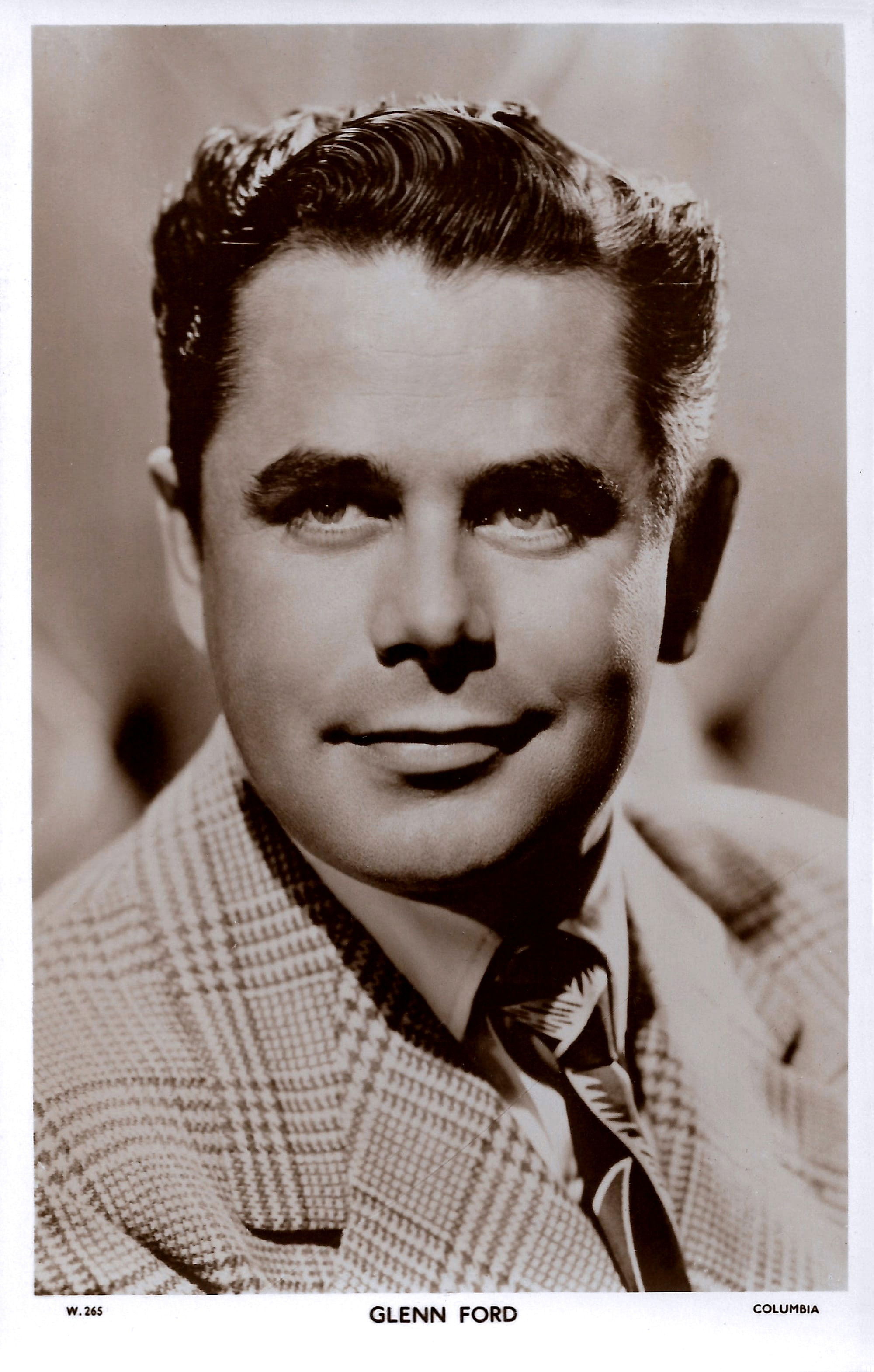
British postcard in the Picturegoer Series, London, no. 265
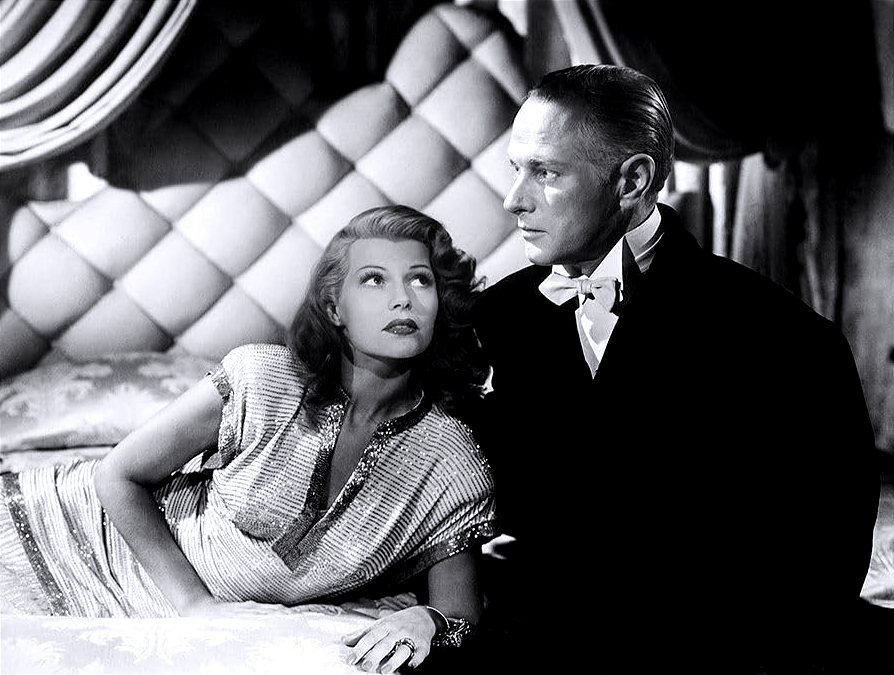
"Courtesy of the site IMBD.com"
Rita Hayworth and George Macready in Gilda (1946)
Rita Hayworth plays Gilda, a charming and mysterious woman who finds herself at the center of a love triangle with her former lover Johnny Farrell, played by Glenn Ford, and her new husband, wealthy casino owner, Ballin Mundson, played by George Macready. The plot unfolds through a crescendo of tension and passion, with Gilda navigating between intrigues and betrayals.
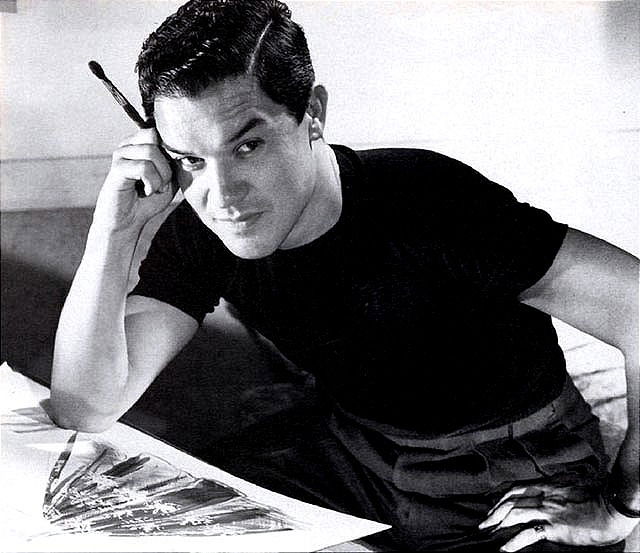
Jean Louis Berthault
Gilda's black dress was created by the talented costume designer Jean Louis, known for his innovative work in cinema. Originally from France, he moved to Hollywood where he worked for Columbia Pictures, becoming famous for his ability to mix elegance and provocation. He collaborated with Rita Hayworth for nine films, including "Gilda", where her design defined not only a fashion but also a cultural icon. Her mastery of creating garments that exalted the female figure while maintaining an air of mystery and sophistication was fundamental to the visual success of "Gilda".
The scene in which Gilda sings "Put the Blame on Mame" wearing this dress is one of the most famous in cinema, helping to consolidate Hayworth's image as one of Hollywood's most fascinating divas.
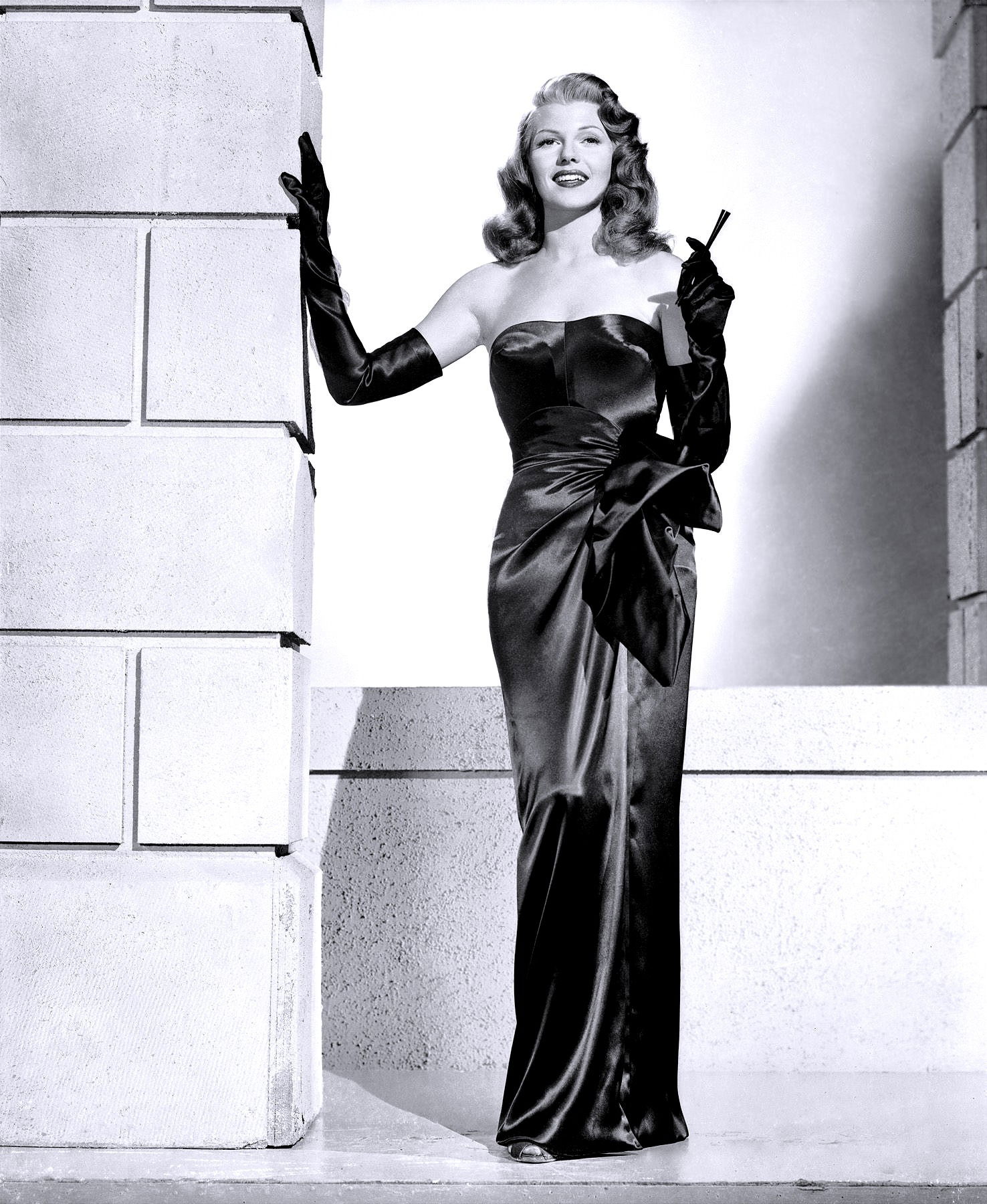
"Courtesy of the site doctormacro.com"
This evening dress is not simply a fashion item; it is a narrative tool that reflects the complexity of the character of Gilda - a strong and independent woman, but also tormented and vulnerable. The contrast between the black of the dress and Hayworth's light skin creates a powerful visual effect, which captures the viewer's attention and emphasizes the sensuality of the character.
Jean Louis received numerous awards for his work, including the Academy Award for Best Costume Design for the film "The Solid Gold Cadillac" in 1956, and influenced generations of costume designers with his innovative approach. His work on "Gilda" has been described as "a masterpiece of design" and "a symbol of timeless elegance". Critics praised "Gilda" for its ability to mix a seductive storyline with a stunning visual component. Rita Hayworth's performance received similar praise, with her portrayal of Gilda being called "magnetic" and "unforgettable."
In addition, "Gilda" has had a lasting impact on popular culture, influencing not only fashion but also the image of women in cinema. The dress has inspired numerous replicas and tributes in later films and haute couture collections.
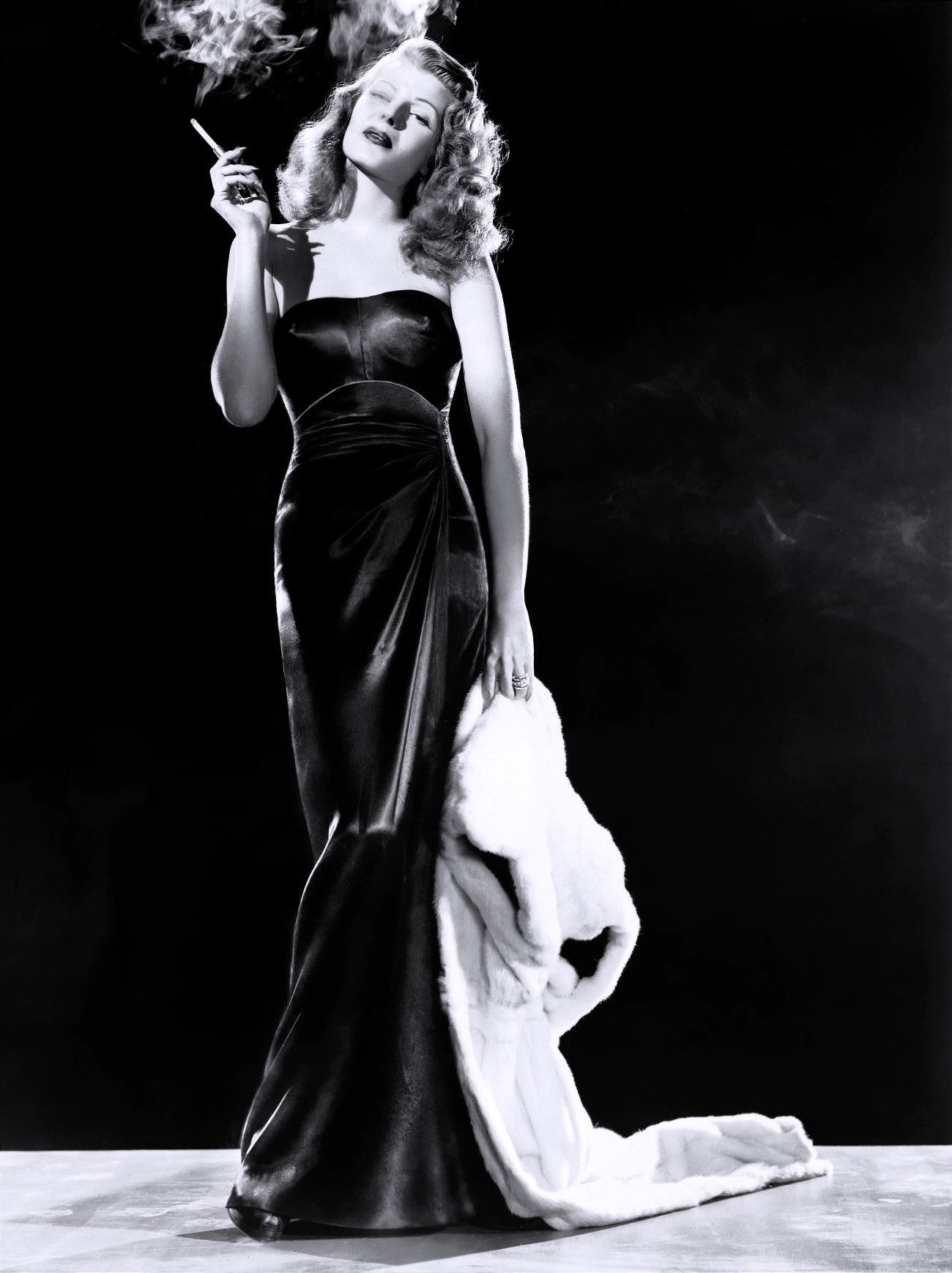
"Courtesy of the site doctormacro.com"
"Gilda" has made Rita Hayworth's black evening dress, created by Jean Louis, an immortal symbol of glamour and sensuality. With its heart-shaped cut and long black gloves, this dress continues to inspire generations of designers and fashion enthusiasts, remaining one of the most memorable moments in film history and a benchmark for beauty and style.
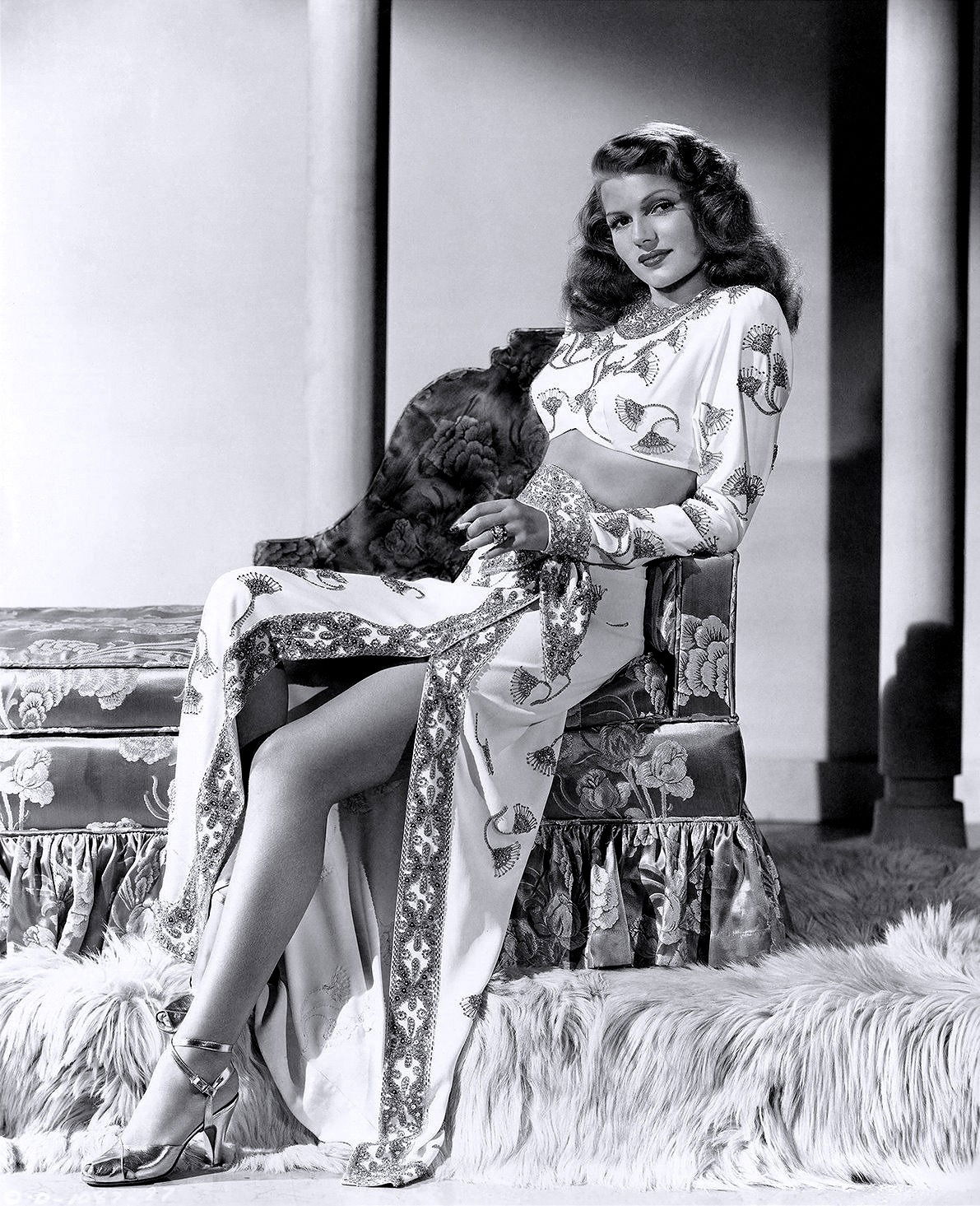
"Courtesy of the site doctormacro.com"
Another of the most charming and memorable outfits from the movie Gilda is this white and gold embroidered two-piece costume that uncovers the navel, consisting of a wrap skirt and an open back top with dolman sleeves. The design is complemented by gold-embroidered peep toe pumps, adding a touch of elegance and sophistication.
This dress is worn by Rita Hayworth in the scene where she performs the song "Amado Mio" in a New York nightclub. The combination of white and gold, along with the embroidered details, creates a stunning visual effect that captures the viewer's attention. The cut of the top, which leaves the back and navel uncovered, adds an element of sensuality and boldness, while the wrap skirt gives a touch of sophistication.
The costume perfectly reflects the personality of Gilda, a strong and independent woman, but also vulnerable and complex. The choice of colors and materials, together with the innovative design, makes this dress a symbol of glamour and timeless style.
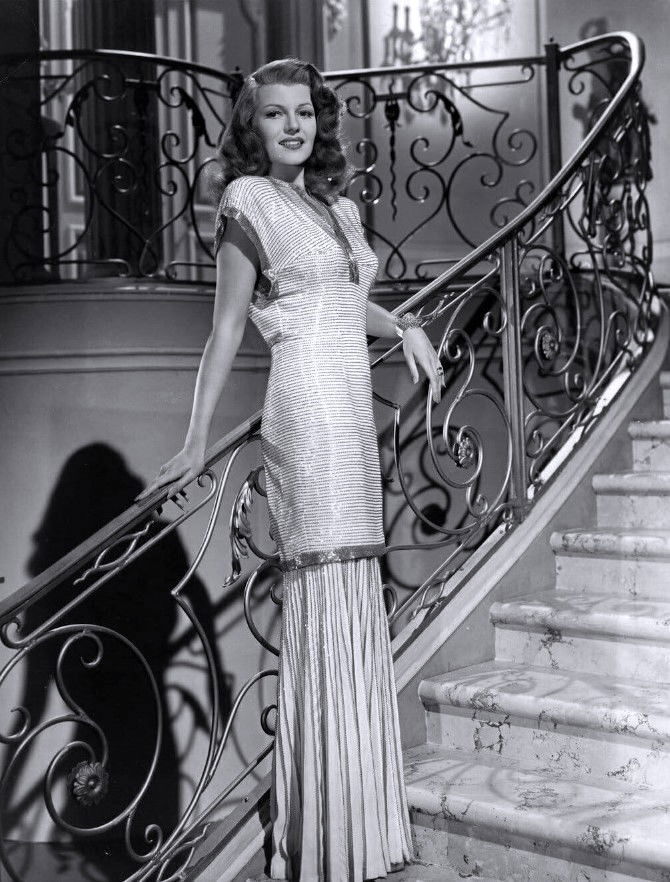
"Courtesy of the site doctormacro.com"
This long and elegant evening dress features gold trim that adds a touch of luxury and sophistication. The structured shoulders give a strong and imposing look, while the important pleating below the knee creates a dynamic and sophisticated visual effect.
The design of the dress is designed to enhance the figure of Rita Hayworth, highlighting her curves and natural elegance. The luxurious and shimmering look of Gilda's wardrobe emphasizes her role as a goddess, making the character even more charming and magnetic. The scene where she wears this dress is set in a luxurious and classic setting, with a curved staircase and an ornate railing that help to create an atmosphere of opulence.
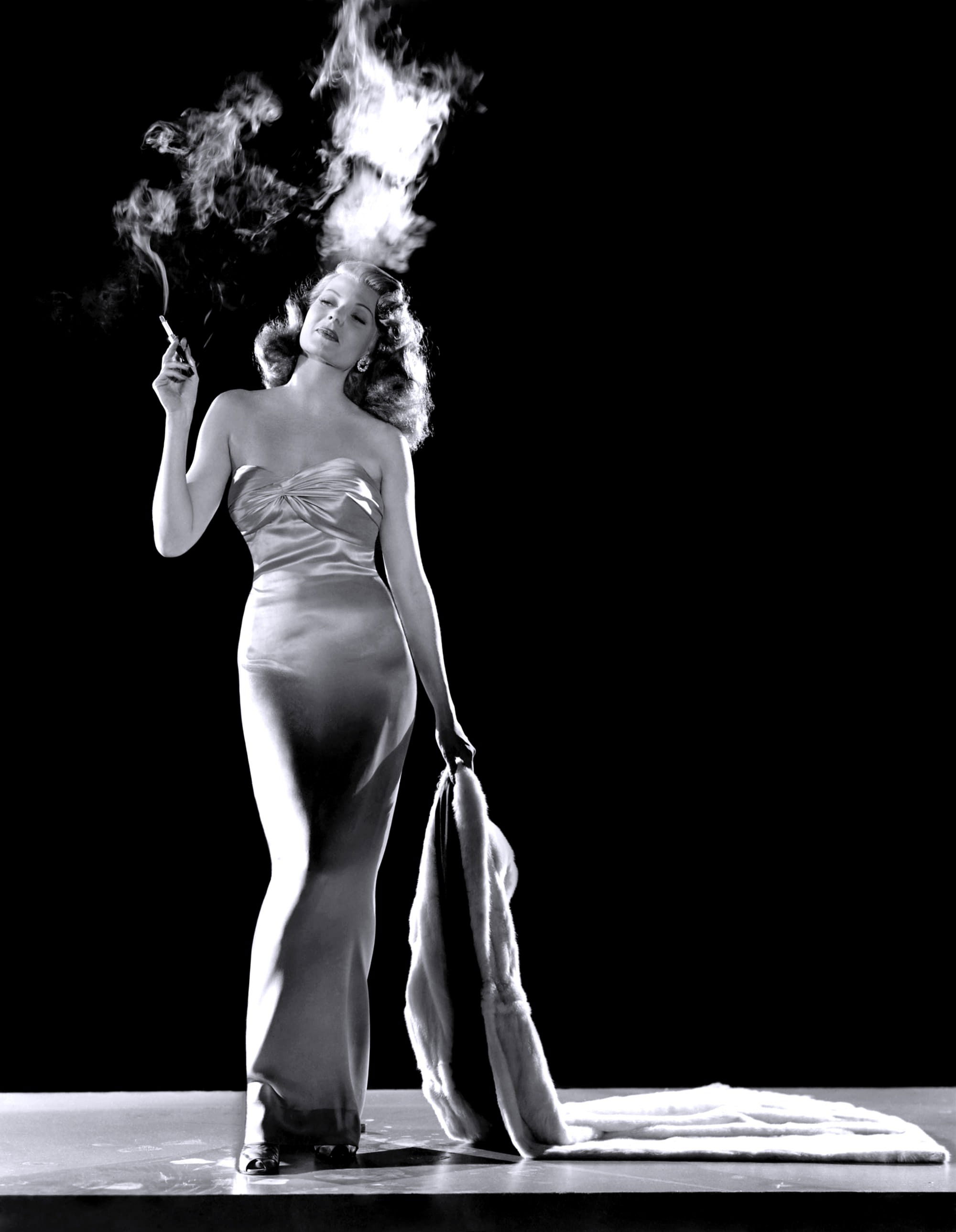
The strapless golden dress worn by Rita Hayworth in the film Gilda is a true masterpiece of elegance and sensuality. This dress skims the body flawlessly is tied in a bow at the back, adding a touch of sophistication and femininity. The choice of the golden color is not accidental: the shimmering fabric captures the light beautifully, highlighting the actress' every movement and giving an aura of elegance.
A distinctive detail of this dress is the fur that, in this photo, is dragged to the ground, creating a dramatic and regal effect. The fur not only adds an element of glamour, but also emphasizes Gilda's role as a true movie goddess. Every step of Rita Hayworth in this dress is an explosion of elegance and charm, making every scene in which she appears unforgettable.
Gilda is not just a film, but a cultural icon that continues to inspire generations of viewers and fashion enthusiasts. The combination of a gripping storyline, stunning performances, and stunning costumes made this film a timeless classic, celebrated and admired to this day.
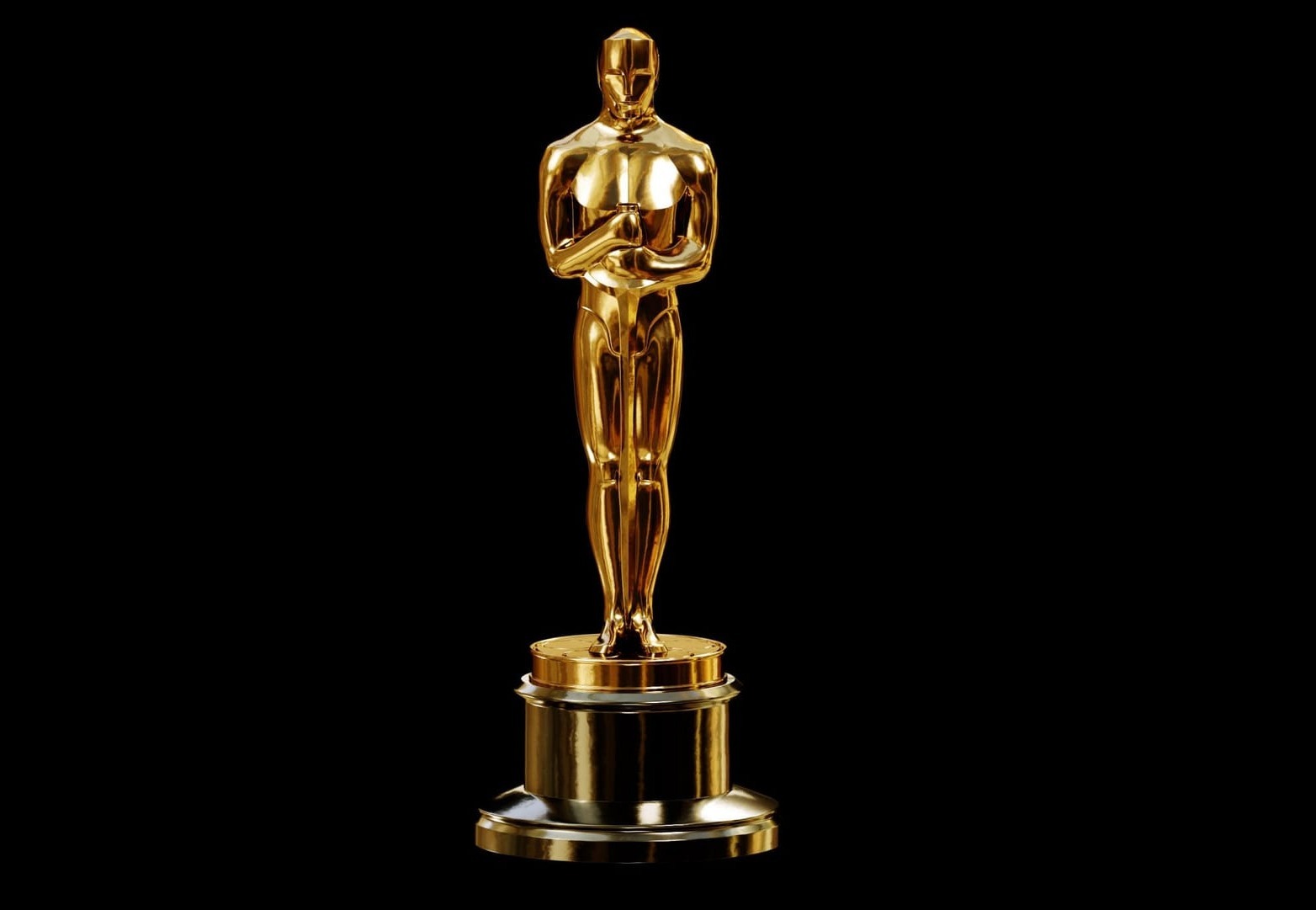
1948: With the introduction of the Oscar for Best Costume Design, the work of costume designers has received formal recognition. These awards marked a turning point, highlighting how every detail of a costume could contribute to the narrative and atmosphere of a film. Cigarette cards, now increasingly rare due to research on the harms of smoking, were replaced by trade cards related to food products, which continued to document the evolution of cinematic style over the years.
This period therefore not only changed the way costumes were perceived and created but also set new standards of excellence and creativity in the field of cinematic costume, as the world of collecting adapted to new forms of memorabilia.

Elizabeth Taylor consegna l'Oscar a Roger K. Furse
In 1948, the Academy Award for Best Costume Design was awarded for the first time, and the awards were divided into two categories: black and white film and color film.
For the black and white films, the winner was "Hamlet" by Laurence Olivier, with costumes designed by Roger K. Furse. This film adaptation of Shakespeare's play is known for its fidelity to the historical setting and costumes that helped to create an authentic and immersive atmosphere.
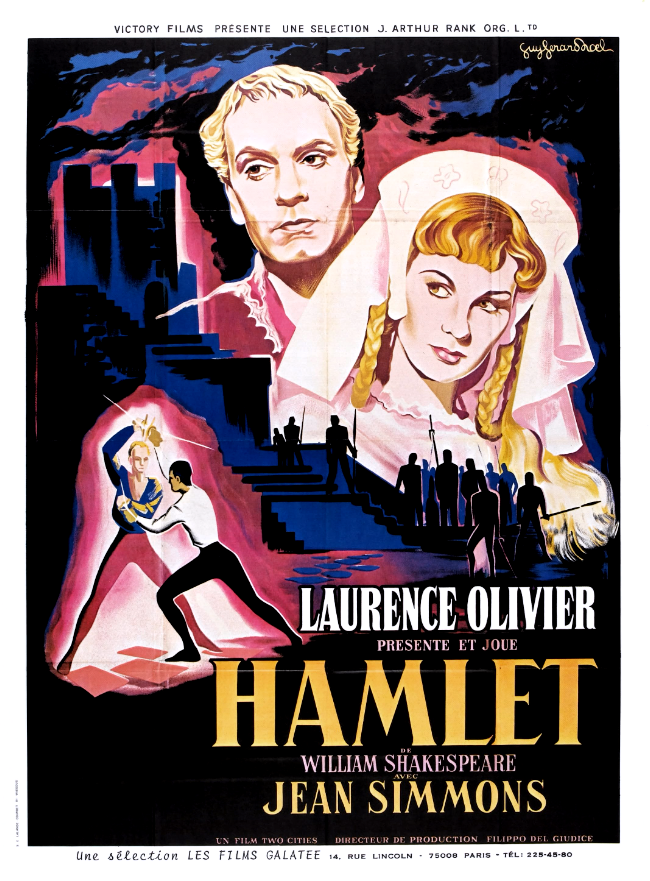
French Movie Poster (1948)
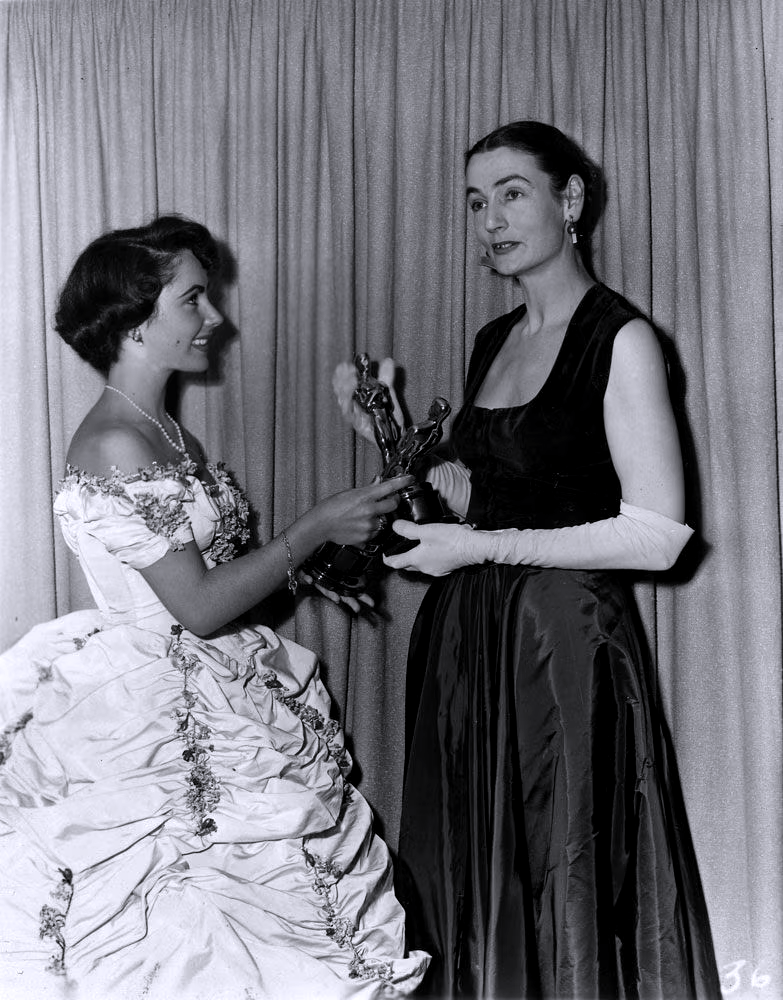
Elizabeth Taylor consegna l'Oscar a Dorothy Jeakins
For color films, the prize was awarded to "Joan of Arc", with costumes designed by Dorothy Jeakins and Barbara Karinska. This epic film, which tells the story of the celebrated French heroine, has been lauded for its detailed and historically accurate costumes, which played a crucial role in transporting viewers to the fifteenth century.
These two films not only won the first Oscars for Best Costume Design, but also set new standards of excellence and creativity in the field of cinematic costume.
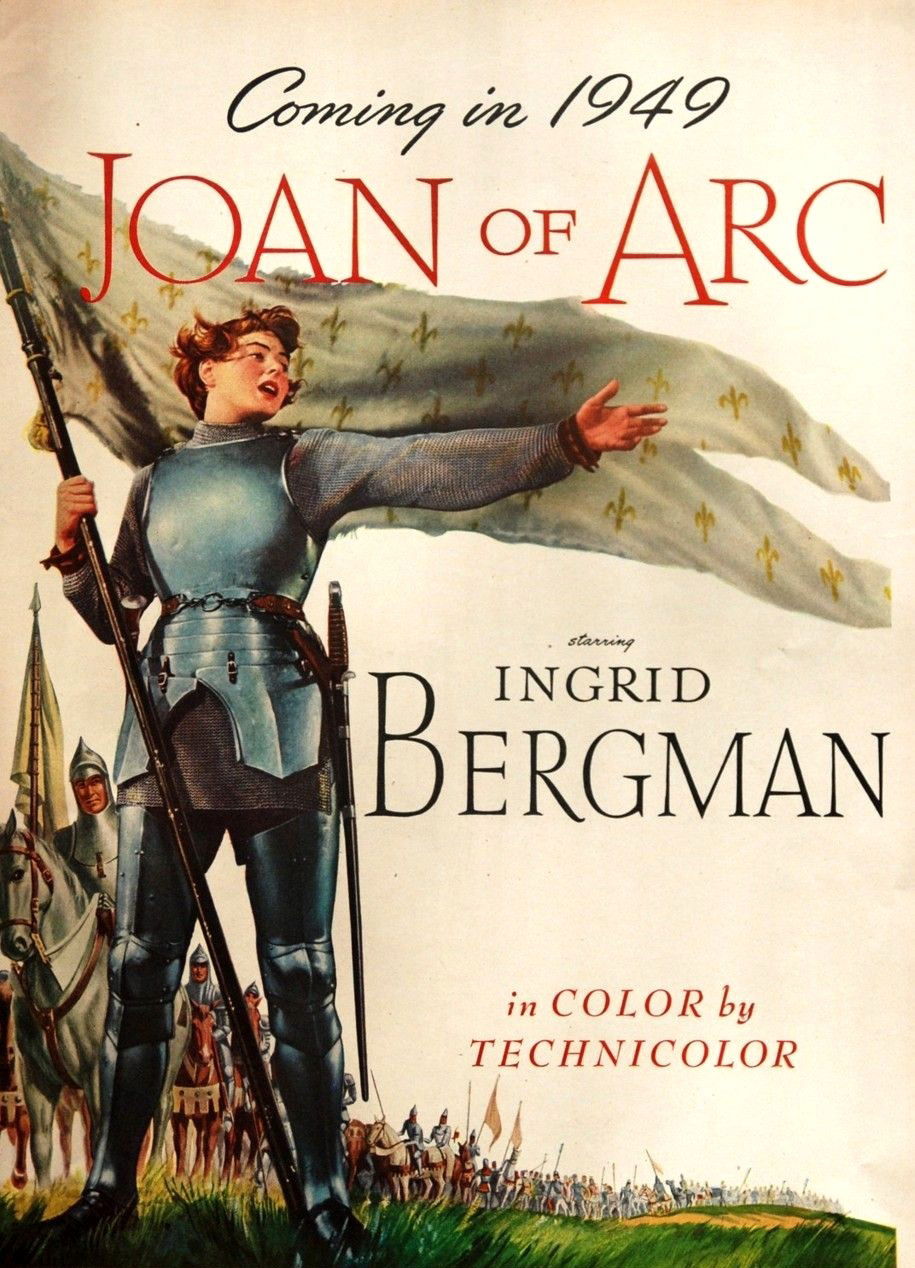
Movie Poster (1948)